May 5, 2024

Coqodaq is the Fancy Fried Chicken You Never…
Celebrating buddha’s birthday in korea, the top k-news from around the world, 31 best korean dramas on netflix, q&a with salle yoo, the first chief legal….
Join Our Newsletter

- Korean Childbirth Traditions
- HWANGAP 60TH BIRTHDAY
- LEARN THE KOREAN LANGUAGE
- KOREAN ZODIAC
- Korean Weddings
- TRAVEL GUIDE
- RESTAURANTS
- FOOD STORIES
- K-DRAMA & MOVIE
- South Korea Travel Guide
Where to Go, What to See & How to Stay on Budget
By Patricia Liu and Joel Marinan
There has never been a better time to visit South Korea. Clean, modern, sophisticated, and ultra safe, Korea is a destination that you will want to come back to again and again. With the rise of Korean culture and entertainment throughout the world, the country is experiencing a renaissance of sorts, especially for foreigners who wish to experience all that Korea has to offer.
Korea has always been a fascinating country to visit and deserves a place on everyone’s travel bucket list. Known for its stunning blend of tradition and modernity, Korea features futuristic technology, bustling markets, and a thriving pop culture scene. There are no guns or drugs allowed in Korea, and visitors can expect a high level of safety and cleanliness while exploring the country. Also of note is that Korea is a no tipping culture, so savoring the delicious cuisine is extra affordable, as are the cab rides to restaurants and other destinations.
Speaking of affordability, the exchange rate between the Korean won and the US Dollar has been very favorable for Westerners, which is another perk of traveling to Korea right now.
Our South Korea Travel Guide shows you where to go, what to see, and when to travel. Start your journey with itinerary ideas and pre-travel tips, the best day trips, and lots more essential Korean travel advice. Let’s go!
Here are some of our most popular articles that will help you make the most of your trip to South Korea.

A Local’s Guide to Gyeongju
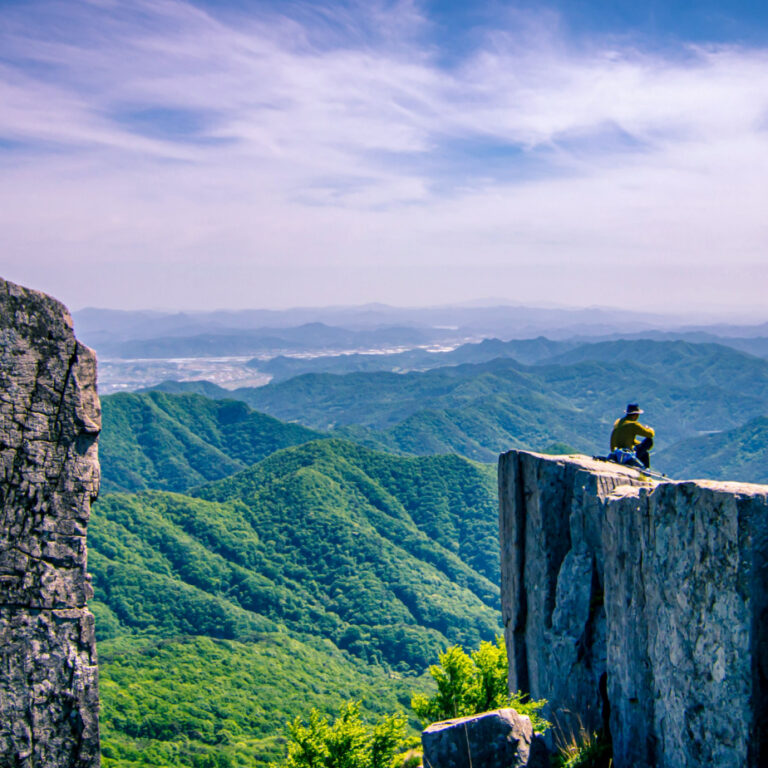
What To Do in Korea in May: The Family Month
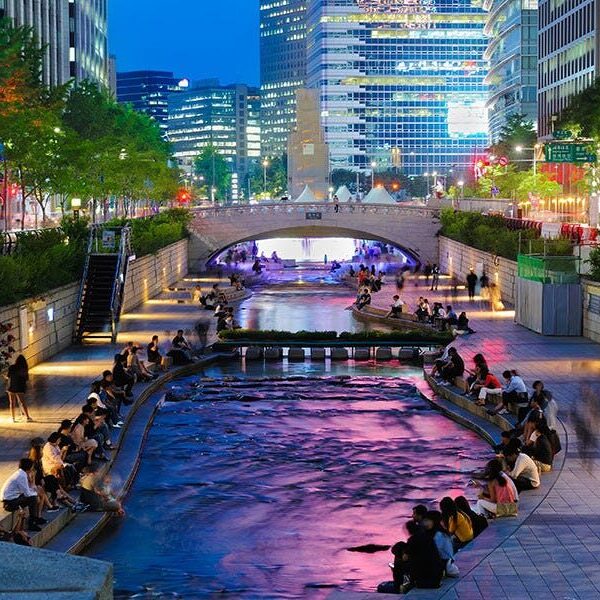
19 Did-You-Knows About Korea
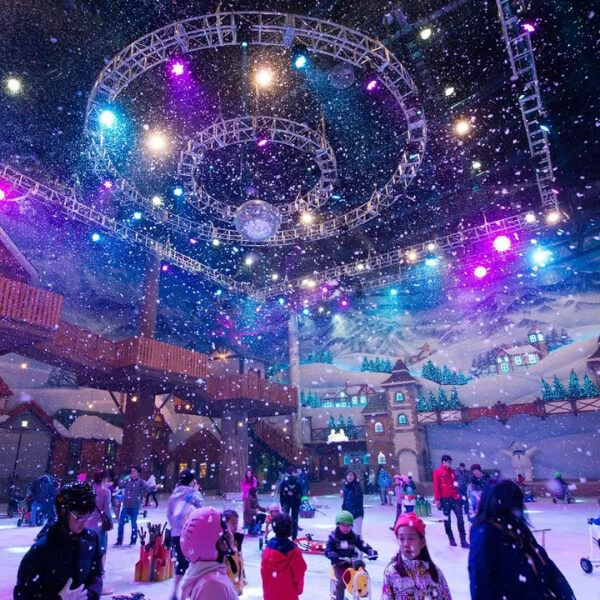
10 Ways to Spend a Magical Christmas in Korea
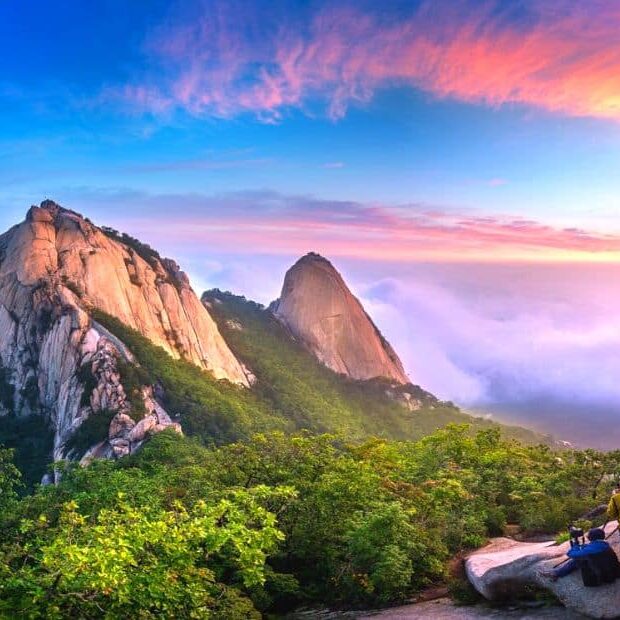
Hiking in Seoul, the Top 5 Mountains You Must Try

Jeju Island: Top 10 Places You Must See
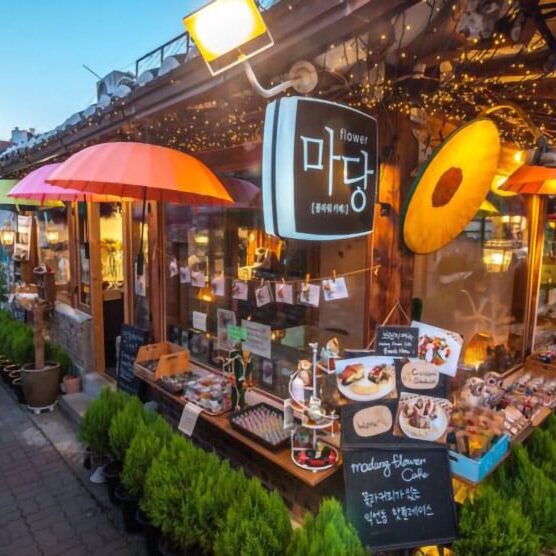
19 Best Things to Do in Seoul Right Now- An Insider’s Guide
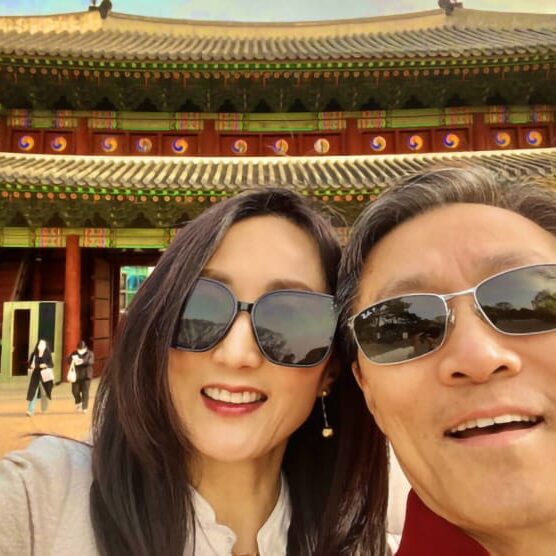
23 Reasons Seoul Will Be Your New Favorite City
Latest travel updates.
- Vaccination is NOT a requirement for entry into Korea.
- There is no requirement on the passport’s remainder validity for entry. You may travel to Korea as long as your passport remains valid throughout your stay in Korea.
- From April 1st, 2023, travelers from the USA, Canada, and 21 other countries no longer need to apply for the K-ETA to travel to Korea. This will run at least until 31st December, 2024 and is designed to make it easier to travel to Korea.

Planning Your Trip To Korea
Check the Korean Embassy for any possible travel restrictions.
- If you’re not sure where to stay, check out our guide to the best hotels in Seoul . You can find our recommendations for the best luxury, mid-range, and budget hotels in Seoul, as well as long-term apartments that you’ll love.
- For the best flight deals to South Korea, Best of Korea recommends Skyscanner and Expedia . You can find the cheapest prices and most convenient flights and buy the one that suits you best.
- For the best hotel prices in Seoul, Best of Korea recommends Klook 0r Agoda – they cover most hotels in Seoul and the rest of Korea and offer great prices without hidden fees.
- Before you travel to Korea, it’s a good idea to order an eSim card, regular sim card or portable WiFi router to collect at the airport so you’re connected as soon as you arrive. You can change a small bit of money before you travel, but you can also use the airport ATM to get some Korean won.
- There are large differences in exchange rates so you will need to do some comparing before you exchange a large sum of money. You can exchange USD to KRW easily at banks or money exchange shops in all major tourist areas like central Seoul (Myeongdong and Namdaemun are good places but the Coex Center also offers money exchange. You can also negotiate the exchange rate with the vendor if you think it is too high.
- You can withdraw cash from bank ATMs. Alternatively, use a pre-paid travel card like the one offered by Wise , which allows ATM withdrawals and payments and works perfectly in Korea.
- Don’t forget to bring a travel adapter for your electronics and leave plenty of extra space in your suitcase for the many Korean souvenirs and goodies you’ll buy on your tri
Do US Citizens Need A Tourist Visa?
No, travelers from the USA don’t need a tourist visa to enter South Korea. You can visit for up to 90 days visa-free.
Current COVID-19 Rules In Korea
Most COVID-19 rules in Korea have been dropped and now there are only 2 main rules to be aware of. First, face masks are mandatory when visiting medical facilities (hospitals). There is no longer a 7-day mandatory quarantine for people in South Korea. If you’re infected with COVID, the Korean government recommends a 5 day self-quarantine, but it’s not enforced. Travelers to Korea should follow the current restrictions or may be liable for fines or deportation.
Korean Tourism Support Hotline
If you have any concerns or problems when traveling in Korea, you can call 1330 . This is a dedicated tourism support hotline where trained specialists provide tourist assistance and is available in Korean, English, Japanese, Chinese, Russian, Vietnamese, Thai, and Malay.
US Government Travel Advisory For Korea
The U.S. Department of State currently has a level 1 travel advisory (Exercise Normal Precautions) for the Republic of Korea (ROK). Find out more about current travel advisories for South Korea on the Department of State website.

6 Best Destinations In Korea
South Korea is truly a country of contrasts. From the bustling, modern city of Seoul , with cutting-edge designer buildings, VR labs, and AI robots, to peaceful UNESCO World Heritage cities like Jeonju and Gyeongju , there are many unique places to explore.
There’s nothing worse than coming back from vacation and hearing about incredible places you missed that you wished you’d seen, such as a beautiful Buddhist temple by the beach (Haedong Yonggungsa Temple) or a leafy island getaway where deer and rabbits roam freely (Nami Island).
Here are 6 of the best destinations in Korea that you absolutely must visit, as well as some of the sights you’ll want to check out while you’re there. We’ll be bringing you lots more detailed destination guides in the future, so be sure to visit again soon.
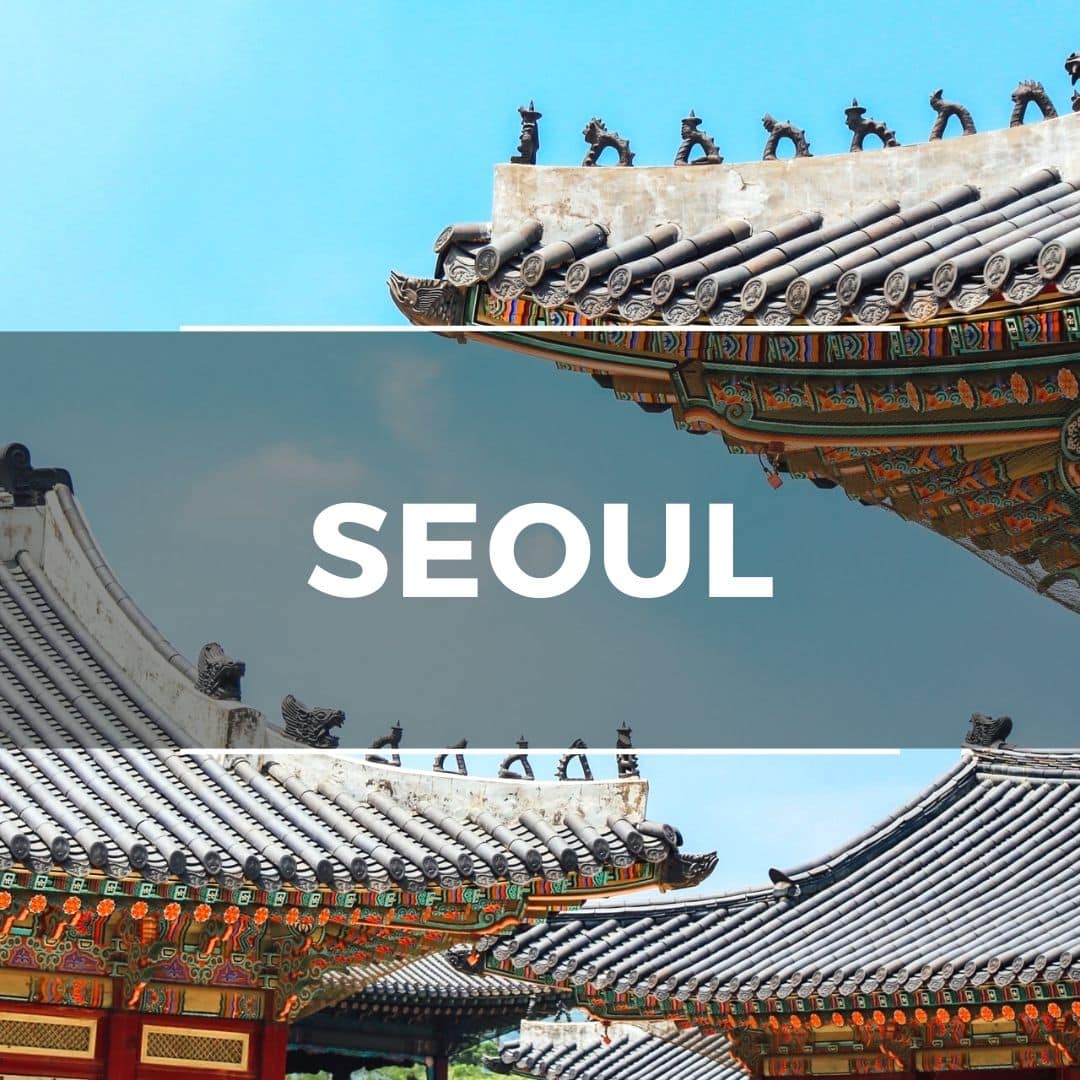
Korea’s Busy Capital
Seoul is Korea’s largest city, capital, and first, stop for most travelers to Korea. There are many beautiful places in Seoul , including landmarks, relics from ancient kingdoms, towering skyscrapers, Buddhist temples, Michelin-starred restaurants, and some of the best street food you’ll find in the world. If you see only one city in Korea, you should definitely visit Seoul.
You’ll never be bored in Seoul. Whether you’re traveling as a family, as a couple, or by yourself, there’s so much to do. Be sure to plan lots of time to check out Korea’s capital.
This Full Day Tour of Seoul will show you some of the hottest spots in the city, while this Customized Private Tour of Seoul will allow you to choose where to go.
Here are 10 of the best Seoul attractions:
- Gyeongbokgung Palace
- Bukchon Hanok Village
- Starfield COEX Mall
- Bukhansan National Park
- Myeongdong Street Markets
- Lotte World Tower
- Secret Garden (Changdeokgung Palace)
- Dongdaemun Design Plaza
- N Seoul Tower
- Yeouido Hangang Park

Korea’s Second City
Busan, Korea’s second city, is a thriving port city far away from Seoul both physically and culturally. This popular summer destination features some of Korea’s most popular beaches and bars. Explore Busan and you’ll find sprawling markets, fresh seafood, film festivals, the world’s largest shopping mall, coastal temples, and lots more.
Busan is a city with some very photogenic sights. See the sunrise on the beach, hike around leafy coastal streets on the side of cliffs, and marvel at the wide range of (living!) seafood in the markets.
This Full Day Tour of Busan will show you the best beaches, markets, and local sights, while this Customized Private Tour of Busan will allow you to choose where to go.
Here are 10 of the best Busan attractions:
- Haeundae Beach
- Gwangbokdong Food Street
- Haedong Yonggungsa Temple
- Huinnyeoul Culture Village
- Gamcheon Culture Village
- Oryukdo Sky Walk
- Lotte World Busan
- Jagalchi Fish Market
- BIFF Square & Centum City Mall
- Taejongdae Resort Park
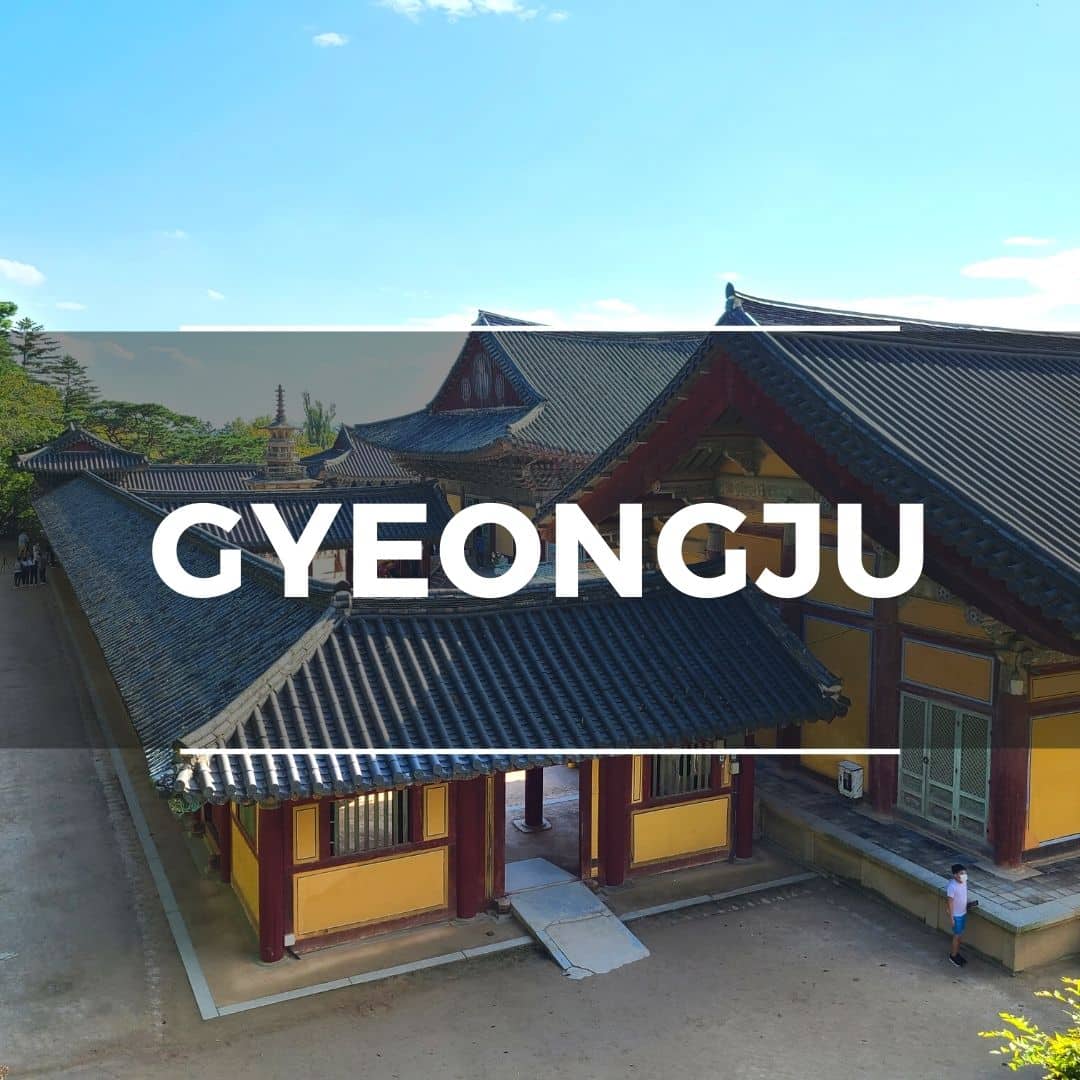
UNESCO City
Gyeongju is the former capital of the Silla Kingdom, part of the Three Kingdoms part of Korean history. These days, Gyeongju is an open air museum housing Korea’s finest history and monument. This UNESCO World Heritage City is a must-see for those who want to learn more about Korea’s deep cultural past.
Gyeongju is packed with temples, palaces, historical sights, and monuments. But it’s not just the history that draws the crowds, the city is an area of natural beauty, lined with cherry blossoms and shadowed by misty mountains.
This Full Day Tour of Gyeongju from Busan will take you around Korea’s open-air museum city, showing the top UNESCO sites along the way, while this Customized Private Tour of Gyeongju will allow you to choose where to go.
Here are 10 of the best Gyeongju attractions:
- Gyeongju Historic Area
- Bomun Lake Tourist Complex
- Bulguksa Temple & Seokguram Shrine
- Donggung Palace & Wolji Pond
- Yangdong Folk Village
- Cheomseongdae Astronomical Observatory
- Gyeongju National Museum
- Gyochon Traditional Hanok Village
- Woljeonggyo Bridge
- Gyeongju National Park
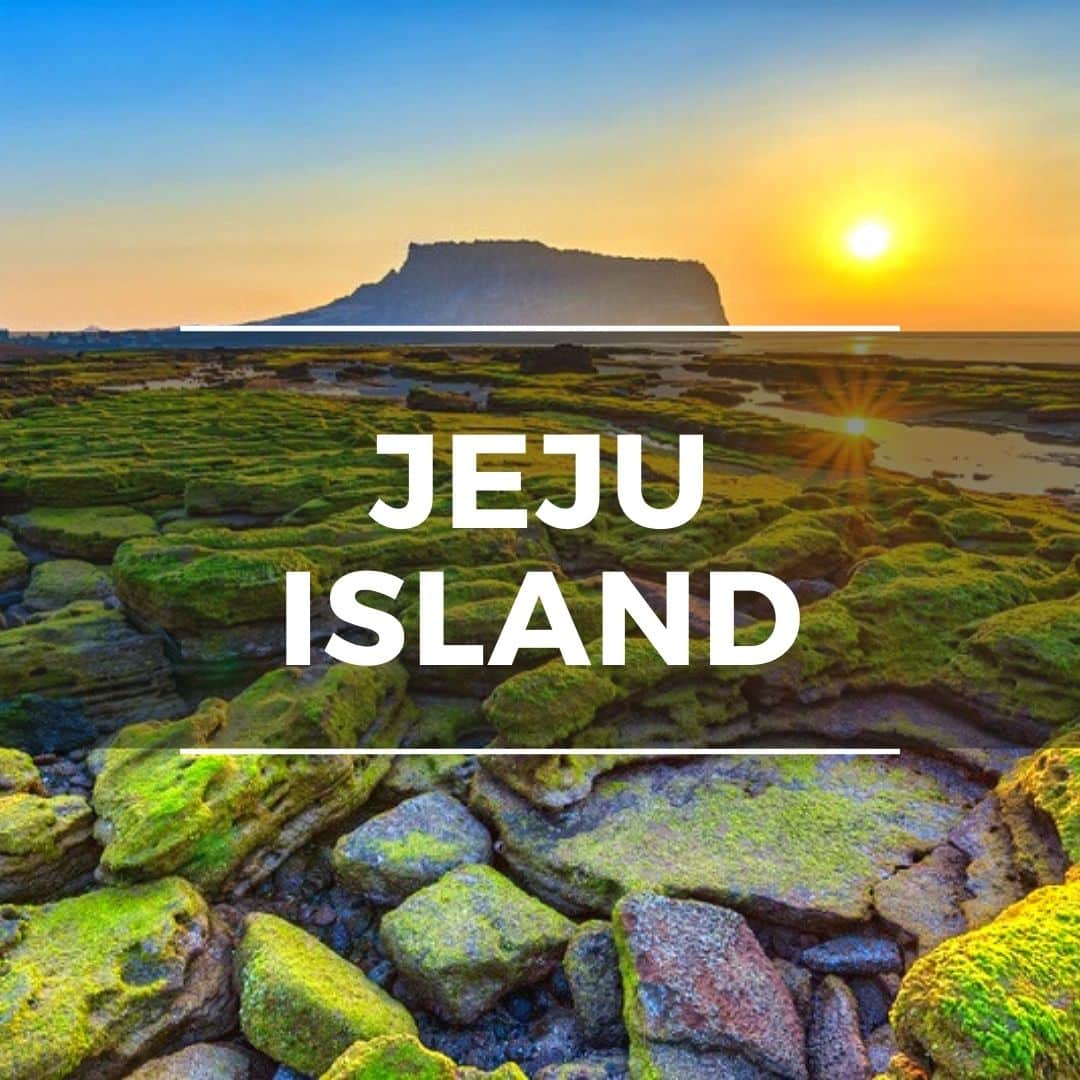
Natural Wonder
Jeju Island is Korea’s semi-tropical island that’s a popular vacation destination for locals and tourists alike. This area of outstanding natural beauty offers up rugged coastal walks, sandy beaches, green hills, and a volcano to hike up for those who enjoy a challenge. Culture and cafe lovers will also find Jeju Island a charm.
From snorkelling under the sea, to hiking above the clouds, sampling Jeju’s black pork BBQ, and drinking local green tea, there’s so many exciting activities, sights, tastes, and experiences waiting for you on Jeju Island.
This Full Day Tour of Jeju Island will show you some of the most incredible UNESCO World Heritage sites on Jeju’s East Coast, while this Customized Private Tour of Jeju Island will allow you to choose where to go.
Here are 10 of the best Jeju Island attractions:
- Seongsan Ilchulbong Sunrise Peak
- Jusangjeolli Hexagonal Lava Cliff
- Hallasan Mountain (Volcano)
- Hamdeok Beach
- Jeju Folk Village
- Hyeopjae & Geumneung Beach Areas
- Cheonjeyeon & Jeongbang Waterfalls
- Udo Traditional Island
- Yakcheonnsa Coastal Buddhist Temple
- O’Sulloc Green Tea Fields
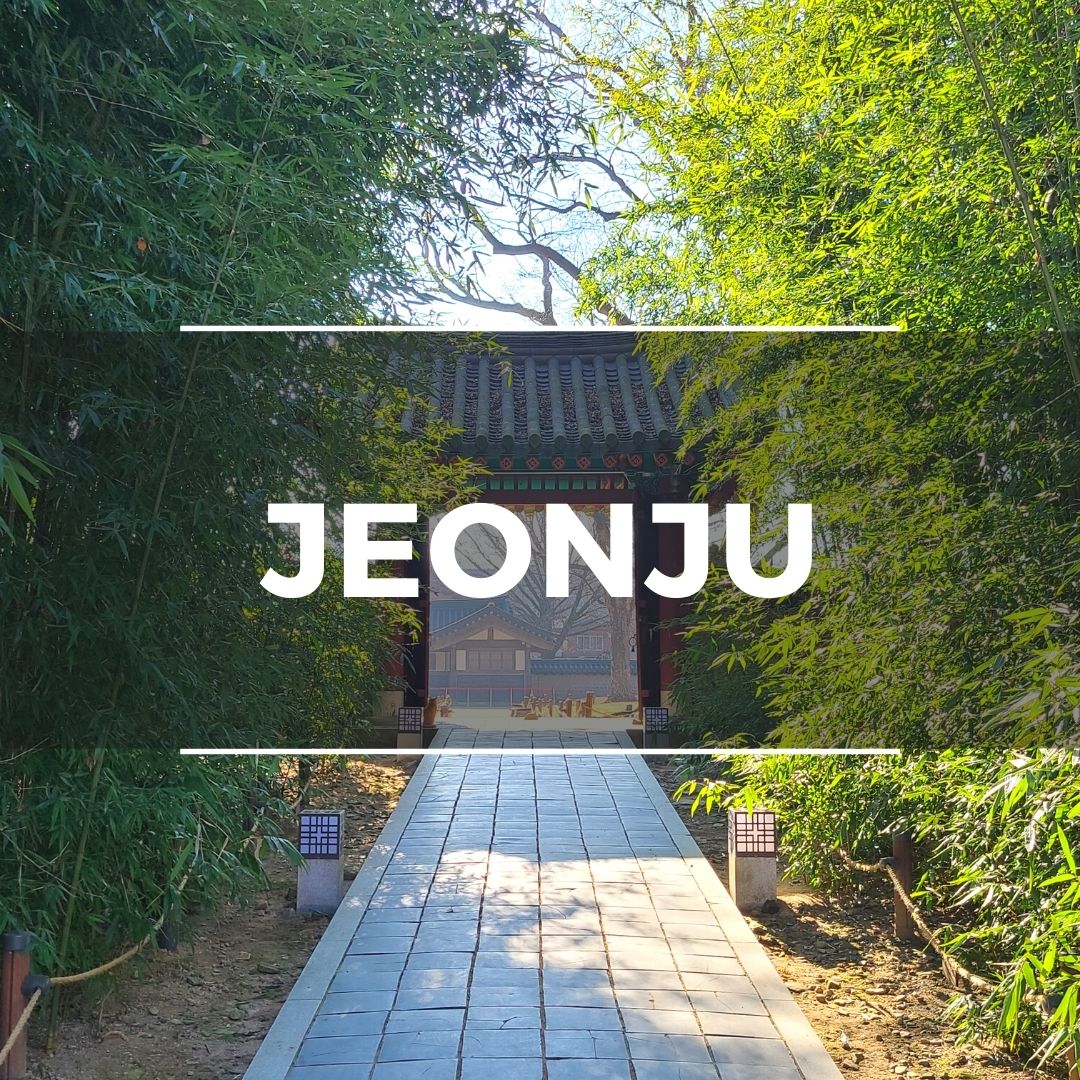
Traditional Korea
Jeonju is famous for its historical and cultural sights, including the sprawling Jeonju Hanok Village, packed with more than 700 traditional hanok houses. Jeonju’s many impressive sights are close to each other and perfect for a day trip from Seoul or Busan. You can even stay overnight in one of the traditional houses.
Jeonju is a tourist hotspot so there are plenty of things to keep travelers entertained and places to experience traditional Korean food and drinks. Be sure to check out the Jeonju bibimbap, one of Korea’s national dishes. Rent hanbok (traditional clothes), take lots of pictures, and see the sights.
This Full Day Tour of Jeonju will show you around the beautiful hanok houses and traditional Korean restaurants, while this 2-Day Tour of Jeonju includes an overnight stay in a hanok and lots of delicious Korean meals.
Here are 10 of the best Jeonju attractions:
- Jeonju Hanok Village
- Gyeonggijeon Shrine & Portrait Museum
- Jeongdon Catholic Church
- Jeonju Hyanggyo Confucian School
- Nambu Traditional Market
- Jaman Mural Village
- Omokdae Viewpoint
- Deokjin Park
- Hanbyeokdang Pavilion
- Taiji-ro & Hyangoyo-gil Shopping Streets
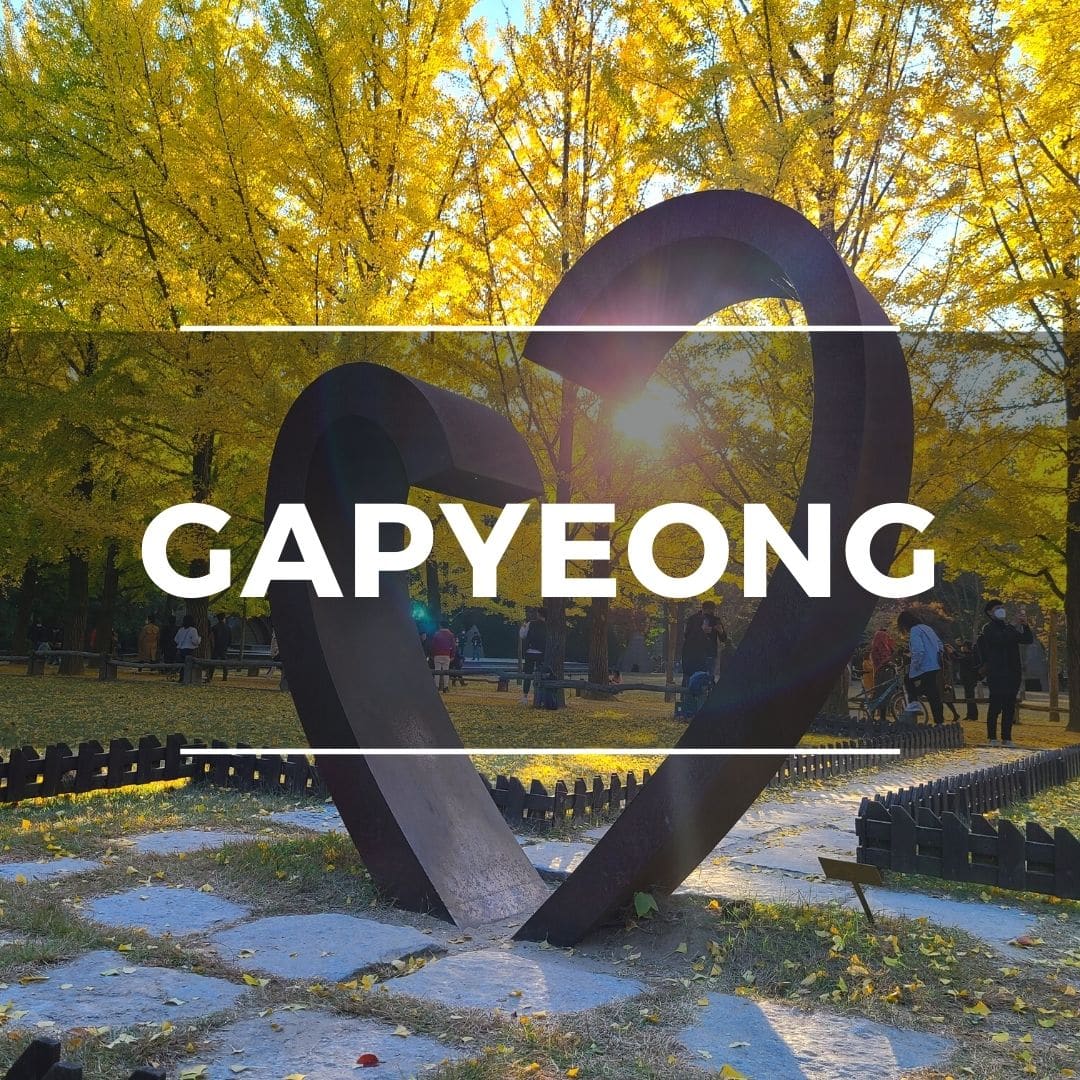
Rural Attractions
Gapyeong County is an area just outside of Seoul that’s home to several interesting attractions celebrating Korean and foreign culture. The lush green hills and blue rivers of Gapyeong make it a great place to immerse in Korean nature.
You’ll find some of the hottest day trip locations here. Explore Gapyeong County on a day trip from Seoul. You can see romantic tree-lined streets and cafes on Nami Island, explore one of Korea’s most beautiful gardens, take a trip to Petite France, and enjoy cycling through the hills on an abandoned railway track.
This Full Day Tour of Gapyeong will show you around Nami Island, Garden of Morning Calm, and the Rail Bike Park.
Here are 10 of the best Gapyeong attractions:
- Nami Island
- Garden of Morning Calm
- Petite France
- Ganchon Rail Bike Park
- Edelweiss Swiss Village
- Cheongpyeong Lake
- Jarasum Island
- Kalbongsan Recreational Forest
- Gapyeong Sledding Hills
- Nami Island Zip Line

There are loads of locations to visit in Korea that make for a perfect day trip from Seoul. Hop on a coach, train, or tour bus in the morning and explore one or more of these unique destinations.
Here are 10 of the best day trips from Seoul to discover on your next journey to Korea:
- DMZ (North Korean Border)
- Suwon Hwaseong Fortress
- Everland Theme Park
- Jeonju Historic City
- Seoraksan National Park
- Korean Folk Village
- Alpaca World
- Gwangmyeong Cave
Most travelers to Korea arrive at Incheon Airport and then travel into Seoul (it’s only 40 minutes away) to begin their journey. Seoul is certainly an incredible place to start traveling, but it definitely shouldn’t be your only destination. Korea has a lot to offer, including a lot of seasonal activities and events that you should take into consideration.
Spring and fall are the best seasons to visit Korea and during these times the traditional cities like Gyeongju and Jeonju look amazing. They’re covered with cherry blossoms or fall foliage and this creates some postcard-like scenes. Gapyeong area is packed full of natural sights to enjoy, so definitely check out these areas.
If you’re visiting during summer, head towards the coastal areas, including the north-east coastal towns of Gangneung & Sokcho, or the south-east coastal areas of Busan and the nearby islands, such as Geoje, Tongyeong, and Yeosu. You’ll find lots of winter activities to enjoy in these areas.
Winter is cold and dry and, ironically, a great time to visit Jeju Island. This semi-tropical island is warmer than the mainland, but still gets snow on the mighty Hallasan Mountain. You can sit on a sunny beach one day and then hike knee-deep in snow the next. Jeju is also famous for its citrus, with thousands of tangerine trees dropping their juicy fruits in early winter.

Where To Stay In Seoul
South Korea is truly a country of contrasts. From the bustling, modern city of Seoul , with cutting-edge designer buildings, VR labs, and AI robots, to peaceful UNESCO World Heritage cities like Jeonju and Gyeongju , there are many unique places to explore. If you’ve decided on Seoul, here are some of the best hotels that are well located and highly reviewed.
Choosing the best destinations to visit in Korea can be a challenge, especially if you don’t know what there is to see. You might not have heard of some of these destinations, which is not surprising. Korea is a country of undiscovered wonders that are waiting to be found.
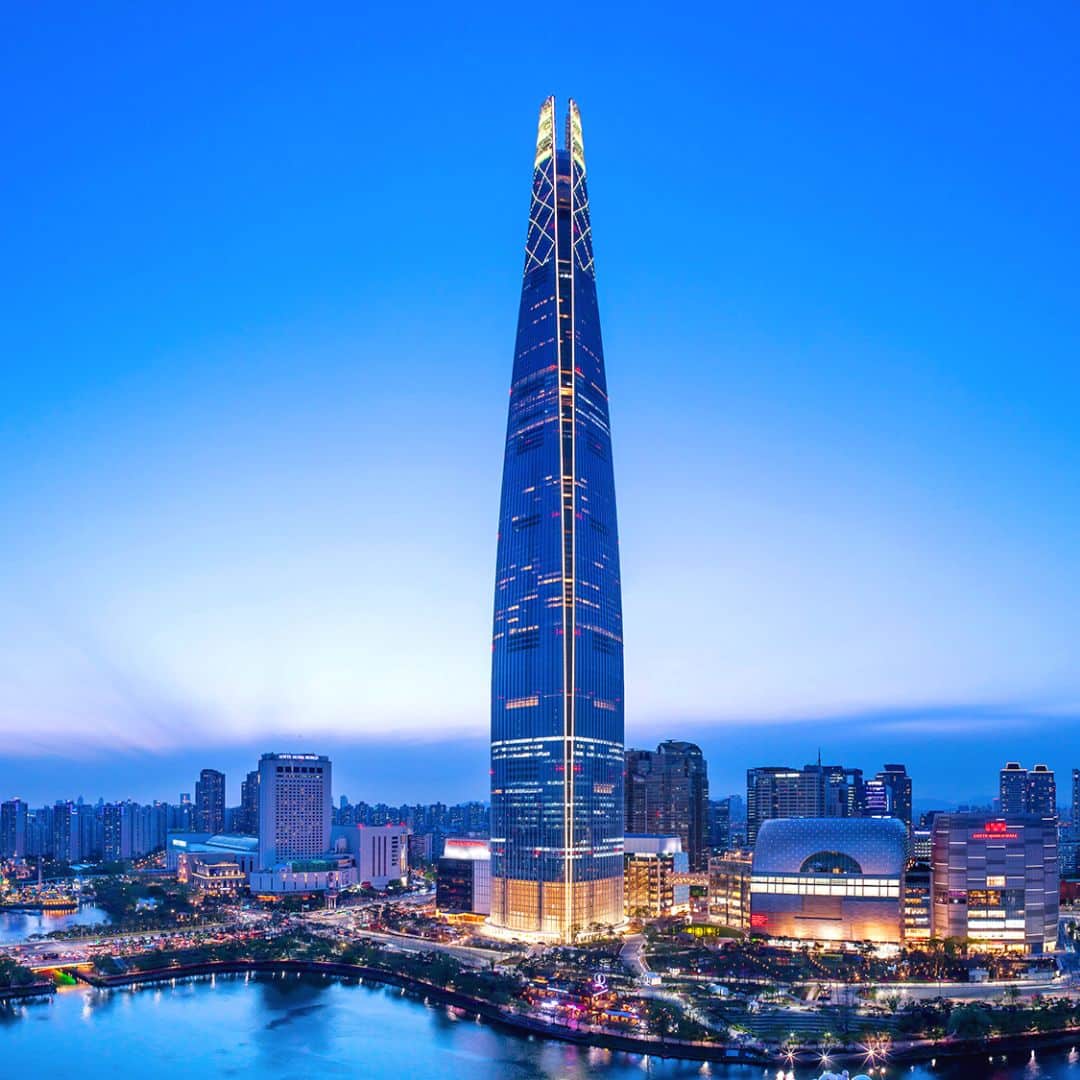
If you want the best Seoul has to offer, these luxury hotels are for you. Located in Seoul’s glitziest neighborhoods, these hotels are within walking distance of Michelin-starred restaurants, chic boutiques, galleries, museums, and the finest shopping experiences available.
Expect nothing but the best in terms of service and style at these luxury hotels. Silky soft sheets, immaculate rooms with the finest fixtures and fittings, and true 5-star service from the hotel staff. These hotels have sports, dining, and entertainment facilities to make you comfortable during your stay.
Airport transfers are available with these hotels, making your journey into and out of Seoul a breeze. Located in popular upmarket districts in Seoul, these neighborhoods have lots of local charm for you to discover, as well as allow easy access to other parts of the city with excellent transport options nearby.
Not only are these beautiful, comfortable hotels inside, but they are also located in some of the most iconic buildings or districts and provide amazing views over some of Seoul’s most interesting districts. The view from the first hotel is worth the cost alone.
Recommended Luxury Hotels In Seoul
Here are 3 of the best luxury hotels in Seoul that we recommend for an unforgettable stay in Korea’s capital:
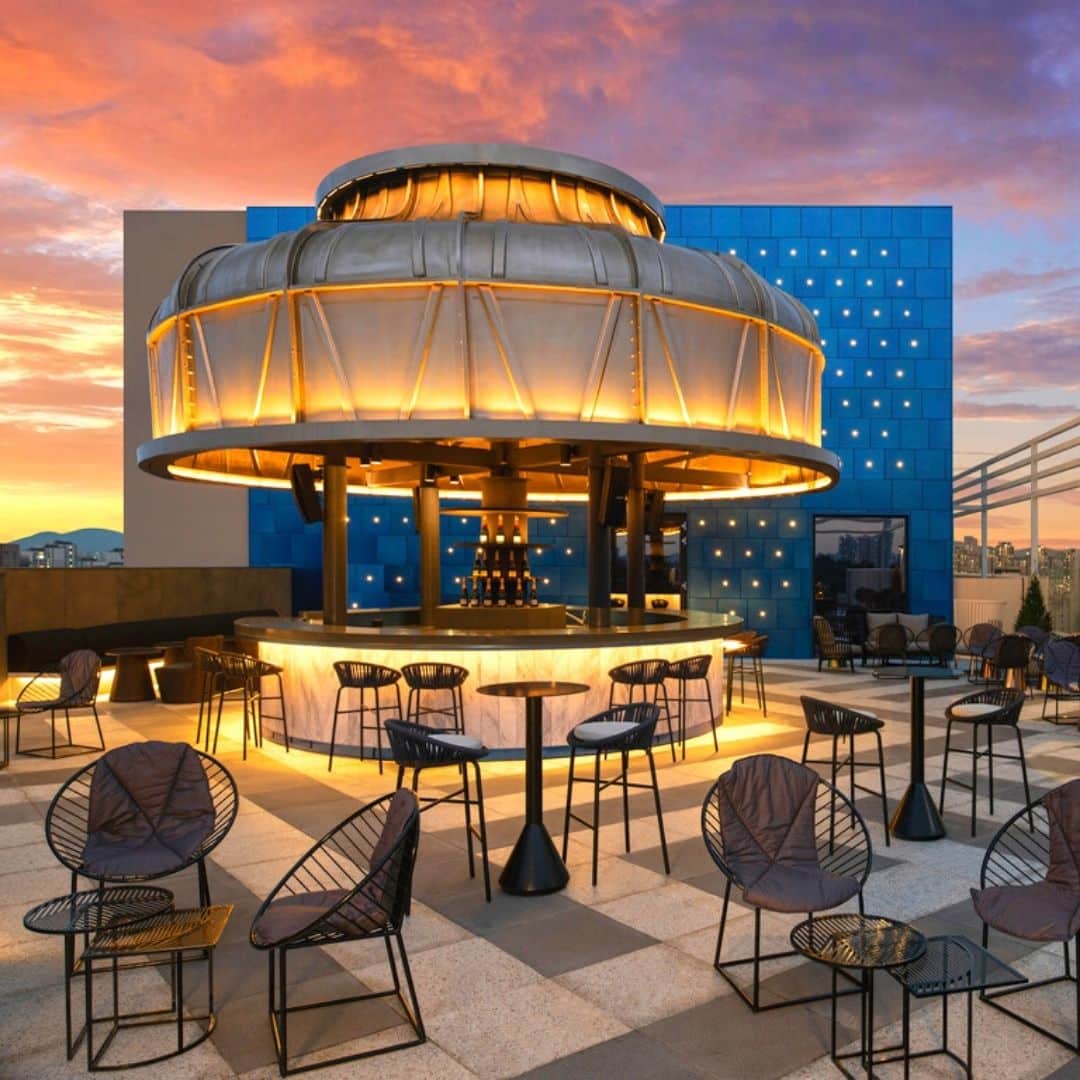
Families. couples and other travelers that want to experience the best of Seoul without breaking the bank can sleep easy with these mid-range hotel recommendations in some of Seoul’s trendy, vibrant districts, including Hongdae, Gangnam, and Myeongdong.
Encounter stylish accommodation in Seoul’s Hongdae districts, which is full of street culture and artistic scenes from the district’s eponymous Hongik University – one of Korea’s leading art centers.
Fashion lovers and shoppers will find lots to love in downtown Gangnam, with its wide streets and glassy storefronts bracketing narrow side streets and hidden delicacies.
Myeongdong is famous for its budget and mid-range accommodation options, including several hotels by the famous Lotte chain – one of Korea’s best mid-range brands.
Whichever mid-range hotel you choose in Seoul, you can be sure you’ll have fantastic city views, convenient subway access, and lots of unique cultural sights, sounds, and tastes to experience.
Recommended Mid-Range Hotels In Seoul
Here are 3 of the best mid-range hotels in Seoul that we recommend for an comfortable stay in Korea’s capital:
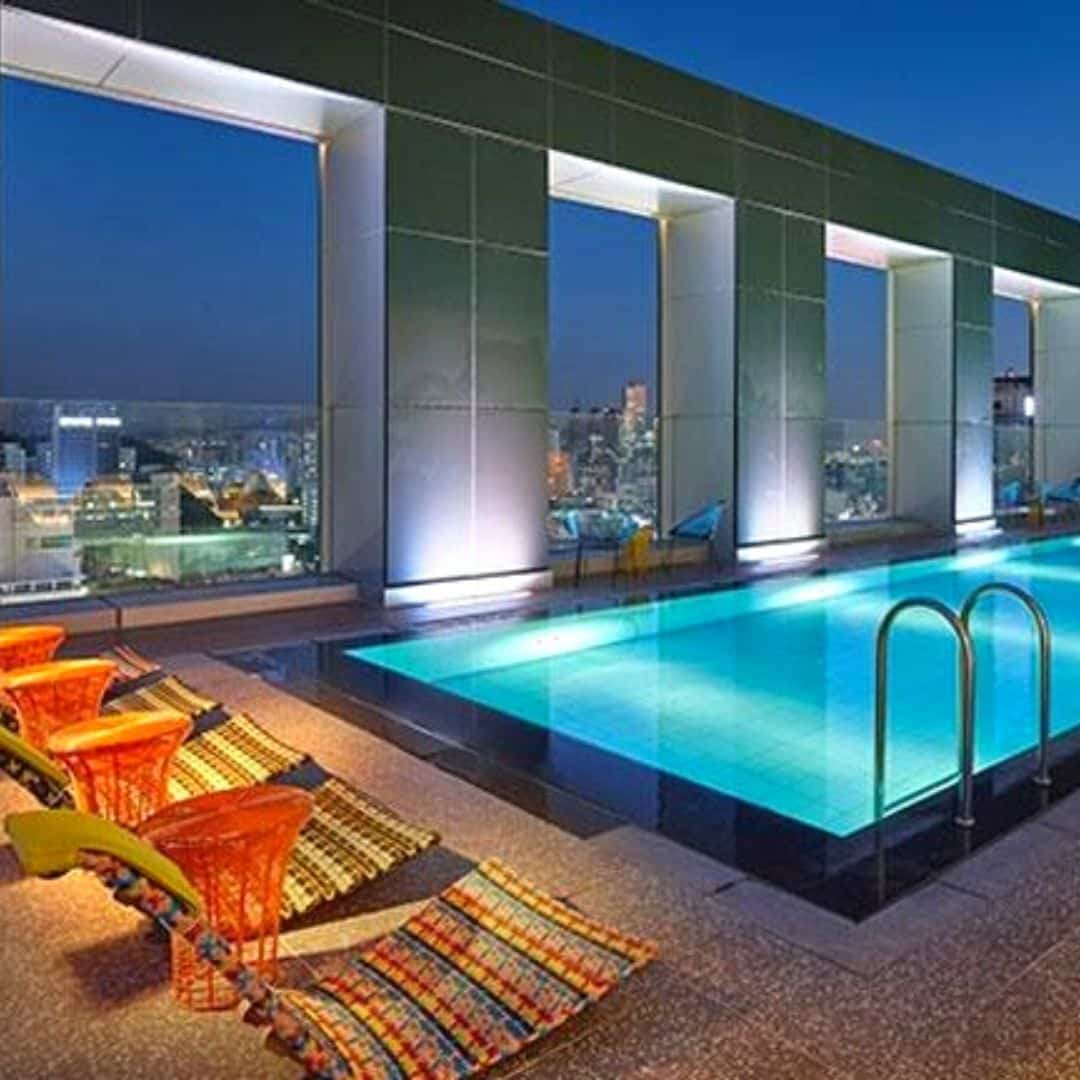
Seoul has a wealth of budget accommodation options that will help make your money go further. These hotels are all around $100 or less but offer the comfort and convenience that you’d expect to find in a mid-range hotel. One even has a beautiful rooftop pool.
Although these hotels are cheaper, don’t lower your expectations. You’ll always find great service in Korea. Save on sleeping to spend more on shopping, souvenirs, sights, and all the other fun things there are to do in Seoul.
These budget hotels in Seoul are also in great locations for shopping, enjoying local culture, and seeing the real side of Seoul and Korea. Hongdae offers bargain hunters the chance to get boutique fashion at market prices, Gangnam has plenty of cafes and cheap eats tucked away off the main avenues, and Myeongdong is a budget traveler’s paradise full of $1 street food and bargain souvenirs.
You won’t be disappointed with a night at any of these hotels. If you want to make your budget go further so you can spend more on some of the incredible day trips Seoul has to offer, definitely book a night at one of these hotels.
Recommended Budget Hotels In Seoul
Here are 3 of the best budget hotels in Seoul that we recommend for an affordable stay in Korea’s capital:

Korean Travel Tips
Korea is a unique country with a written language that looks nothing like English, fascinating etiquette rules , and an always busy lifestyle. Travelers may be lost trying to do even the simplest things.
These travel tips include the best options for staying connected, how to use public transportation easily and cheaply, great discount cards that will save you money as you travel, where to exchange money, and how to learn some basic Korean phrases for when you travel.
These essential Korean travel tips have been crafted by experienced travelers who love to save time and money. Only the best quality services and products are recommended here.
Here are our Korea travel essentials that’ll help you get around more easily, save you money, and let you get the most out of your trip.
Plan ahead now and you’ll have fewer troubles on your travels, giving you more time to enjoy your time in Korea.
If you’re traveling to Korea, you’re almost certainly going to want to get access to the internet to help you navigate, translate Korean, or even book tickets to attractions. Korea has one of the world’s best mobile internet and the prices are very reasonable. 5G mobile internet services are available across the country and Korea was one of the first to get the super-fast service. You won’t have problems connecting with a sim card or WiFi router when you travel.
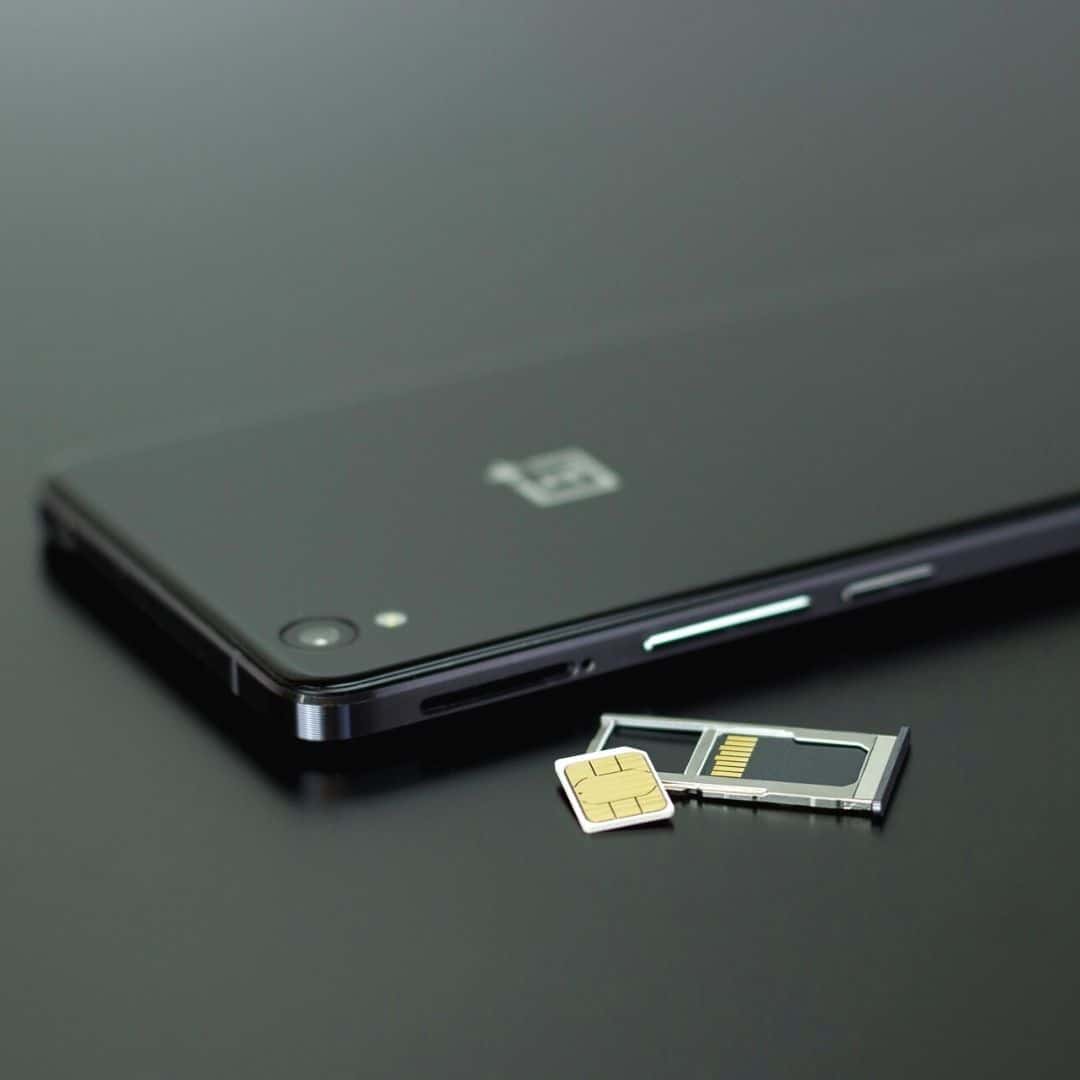
Sim Cards & Data Plans
A Korean sim card is a great way to get access to all your usual cellphone services when you travel to Korea. Sim cards come with data-only packages, or data and phone services combined.
Buying a Korean sim card will give you access to a Korean phone number, which is useful when using Korean apps. If you want to order food online in Korea, you need to have a Korean phone number to complete the order.
Korean Sim Card Costs
Prices start at W5,900 ($5) for a 1-day sim. You can also get 10-day sim cards (W34,700/$28) and 30-day sim cards (64,400/$52). These all come with unlimited data, domestic calls, and texts.
You can purchase a Korean Sim Card From Klook and collect it at the airport. This is a very convenient option as you can use it immediately to help navigate and check in back home.

Portable WiFi Routers
A Korean portable WiFi router will give you access to mobile internet throughout Korea by connecting to WiFi hotspots run by the major phone companies in Korea and comes with great coverage.
The major benefits of a portable WiFi router include a lower cost than a Korean sim card and also the ability to connect up to 3 devices to 1 router. That means that families and groups will be able to share the service.
Korean Portable WiFi Router Costs
The cost of a Korean portable pocket WiFi router is W3,200 ($2.60) per day. You can rent the WiFi router for as many days as you require and pay in advance and pay any excess days when you return it.
You can also purchase a Korean Portable WiFi Router From Klook and collect it at the airport. You can book online before you travel so that it’s guaranteed to be waiting for you.
Should I Get A Sim Card Or WiFi Router In Korea?
Both a sim card and WiFi router are great options for travelers to Korea and will almost guarantee a great reception for mobile internet. The choice between whether you should get a sim card or WiFi router in Korea really comes down to the costs involved and if you need a Korean phone number.
WiFi routers are cheaper and allow you to connect 3 devices, so they’re perfect for families. However, a sim card gives you a Korean phone number, which means you can call people and also register for Korean apps which require a phone number.
Check out our detailed article about the Best Sim Card & Portable WiFi options for traveling to Korea.
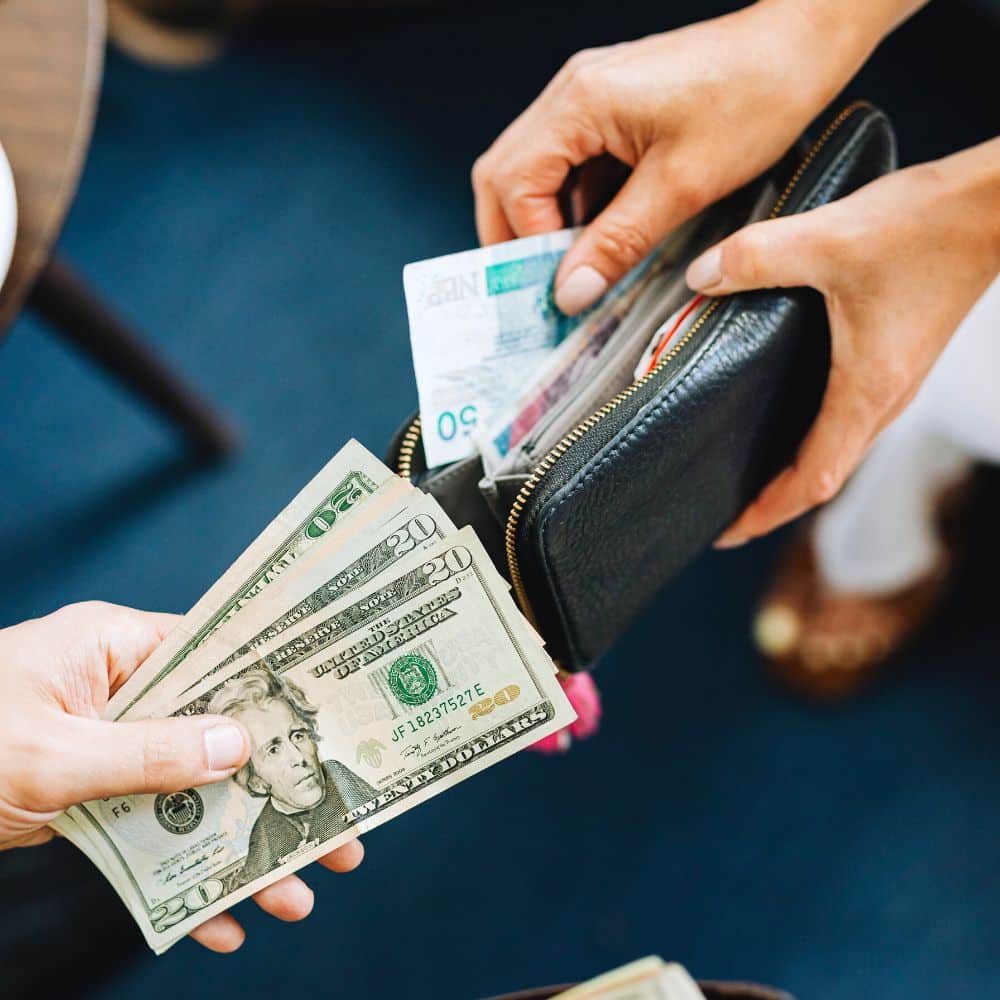
Korea is a safe, modern country and one that has pushed hard for the mass adoption of cards. Almost every location that deals with money is required to accept card payments. This is great news for travelers to Korea as you can use a card to pay for meals out, entrance tickets, trains, and lots more.
Cash is still needed for some things, such as topping up transportation cards like the T-Money Card (more on that soon) and for paying for small things like street food. Please note, as Korea doesn’t have a tipping culture, you don’t need cash for leaving a tip. In fact, if you try to leave a cash tip, it’ll be returned to you in most places.
Read on to find the best tips to avoid getting ripped off when exchanging money and how to pay the lowest fees when you use a card to pay in Korea. Be a smart traveler and save more money for shopping and souvenirs.
Korean Money Exchange Options
Once you arrive in Korea, there are several options for exchanging money. First, you can exchange money at a money changer in tourist areas such as Myeongdong. These money changers used to have the best rates in Seoul.
However, a better option these days is to use the currency exchange machines from WOW Exchange. These machines are located all over Seoul’s most popular tourist spots, stations, and hotels. They allow you to exchange foreign cash directly to Korean won, with better rates than at the airport. You can also use these machines to claim a tax refund for your shopping before heading to the airport. Both options require a passport.
Should I Change Money At The Airport?
Exchanging money at the airport is easy and convenient as you can instantly get cash to use for shopping, transportation, and general use. However, the exchange rate at the airport is usually much worse than you’ll find in other places in Korea, as mentioned previously. If you need cash as soon as you land, withdraw a small amount ($50) and then exchange the rest in Seoul.

Travel Money Cards For Korea
While cash is useful and familiar when traveling, a much better option is to use a travel money card (also known as a currency card). Travel money cards, such as the Wise Travel Money Card, allow you to pay for travel expenses without the need to carry cash or convert money.
A travel money card offers the convenience of using a credit card without high fees that a regular bank could charge. It also allows you to withdraw cash from an ATM without a fee (up to a limit), so you can avoid carrying any cash on the flight or using a money exchange. The exchange rate is the mid-market rate, meaning it’s better than you’ll find even at the money exchanges listed before.
Can I Use My Bank Card In Korea?
Credit cards are widely accepted in Korea. Visa and Mastercard users shouldn’t face a problem, but other cards aren’t as widely accepted. Debit cards and cash withdrawals might not work depending on the bank. Your bank may charge a fee when using it overseas, or give a bad exchange rate. Check with your bank before traveling.
The best option for travel money in Korea is to have a mixture of cash and cards, with a backup credit card just in case. Taking some USD with you is always a good option as you can find plenty of places to exchange it to Korean won and probably at a better rate than you’ll get in the US. If you want to withdraw money in Korea, look for the global ATMs in tourist areas.
Taking a travel money card will be safer, cheaper, and more convenient than relying on your own bank or credit card, too. These cards offer competitive rates and are widely accepted around the world so you can use them to visit other countries, too. If you use a travel money card and it gets lost or stolen, you can freeze the card instantly with the app and not have to worry about losing the balance on the card.
When you visit Korea, you’ll notice that most people pay for goods with a card or payment app, even for small purchases like a bottle of water. Unfortunately, the payment apps that are common in the US, such as Apple Pay or Google Pay, aren’t available in Korea. Korean apps, such as Kakao Pay, require a Korean bank account, and therefore aren’t an option for travelers.
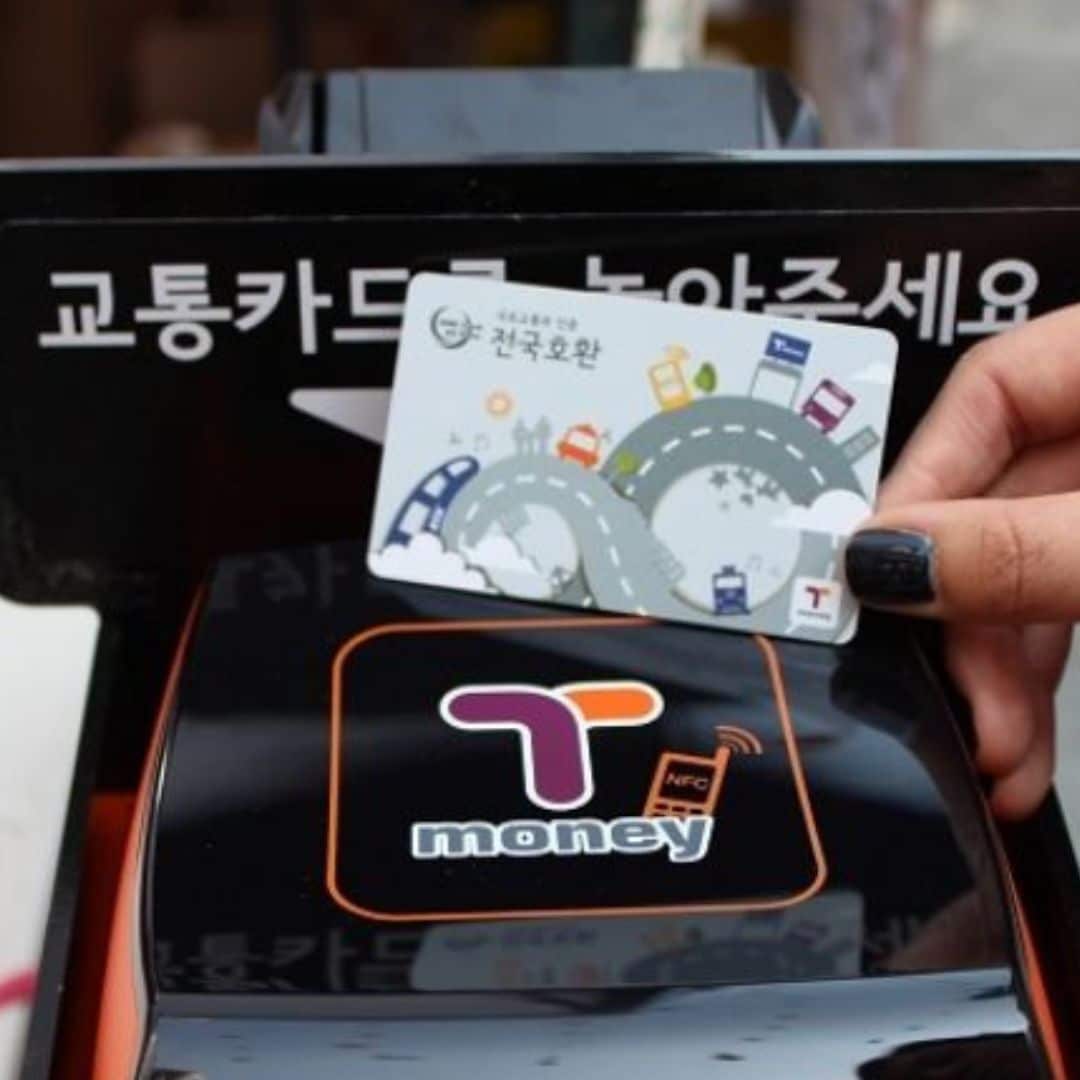
T-Money For Public Transport
The T-Money Card is an essential purchase for every traveler to Korea. The T-Money Card is a transportation card that allows contactless travel on Korea’s buses and subways. Simply buy a T-Money Card, top-up the card, then use it to travel.
Not only is this transportation card really convenient, it also saves you money. You’ll receive a discount on every bus or subway journey when you pay with the T-Money Card. These discounted fares are available in all cities across Korea, not just Seoul.
This isn’t the only use of the T-Money Card. You can also use to buy a coffee from Starbucks, get lunch in McDonald’s, shop for Korean cosmetics, and even to watch a baseball game. It’s a very useful card that can be used anywhere you see the T-Money Card.
You can get the T-Money Card in Korea from subway stations and at certain transport centers, including Seoul Station and Incheon Airport. The card costs 2,500 KRW. You can buy the card with a credit card, but to top-up the card, you need to use cash. If you buy a Discover Seoul Pass, this card includes the T-Money functions.
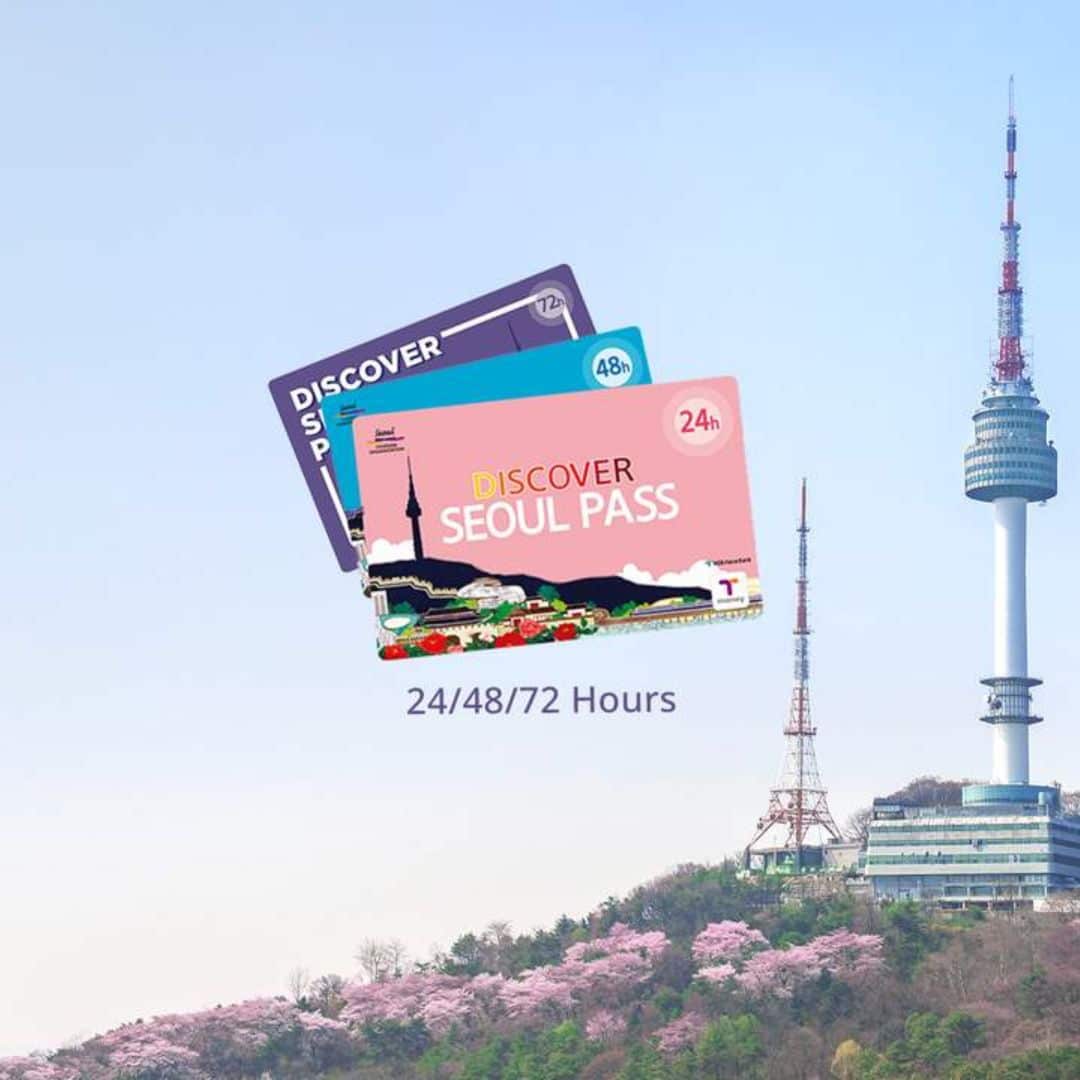
Save With The Discover Seoul Pass
Travelers to Seoul have a lot of options for incredible attractions to enjoy and experience. However, tourists, especially families, can find that the cost of these attractions quickly add up, especially when you are visiting many locations in a short time.
A great way to save money when you travel in Seoul is to buy a Discover Seoul Pass – a special card that offers you big savings on some of Seoul’s top attractions, as well as other benefits.
If you plan to visit Seoul’s Royal Palaces, N Seoul Tower, Lotte World Adventure Theme Park, the COEX Aquarium, Alive Museum, Seoul Zoo, or other premium attractions, you can gain free entry when you purchase a Discover Seoul Pass.
Not only that, you can also get a free river cruise, free hanbok rental, free ride on the Airport Express from Incheon Airport to Seoul, free City Tour Bus Ride, free T-Money Card and lots more.
The Discover Seoul Pass is valid for 24 | 48 | 72 hours and is valid from the moment you first use it until that many hours later.

Things To See & Do In Korea
If you want to build your own itinerary for South Korea, then this section of the South Korea Travel Guide will provide the building blocks you need to craft the perfect trip.
South Korea is a country packed with famous landmarks and sights, unique culture – modern & historical, family-fun activities, outdoor adventures, cozy cafe districts, and natural wonders. There’s more to do in Korea than you could imagine and it’s impossible to explore it all in one trip. Try to plan your itinerary by cities and locations. For example, plan your day in Seoul stay by district.
Here are some of the best things to see and do in South Korea, broken down into different themes so you can find things that interest you the most. The location of each of these attractions is included, too, so you can create a city by city itinerary, seeing the best South Korea has to offer.
These attractions are available all year round so whenever you go to Korea, you can enjoy them. There are plenty of things to see and do in Korea that only happen during certain seasons. Check out the Season Guide in this South Korea Travel Guide for more information about Korean festivals and seasonal events.
Here are 10 of the best Korean landmarks:
- Lotte World Tower (Seoul)
- Bukchon Hanok Village (Seoul)
- Nami Island (Gapyeong)
- Banwol ‘Purple Island’ (West Coast)
- N Seoul Tower (Seoul)
- Dongdaemun Design Plaza (Seoul)
- Seoraksan National Park (Gangwon Province)
- Hwaseong Fortress (Suwon)
- Cheonggyecheon Stream (Seoul)
- Gamcheon Cultural Village (Busan)
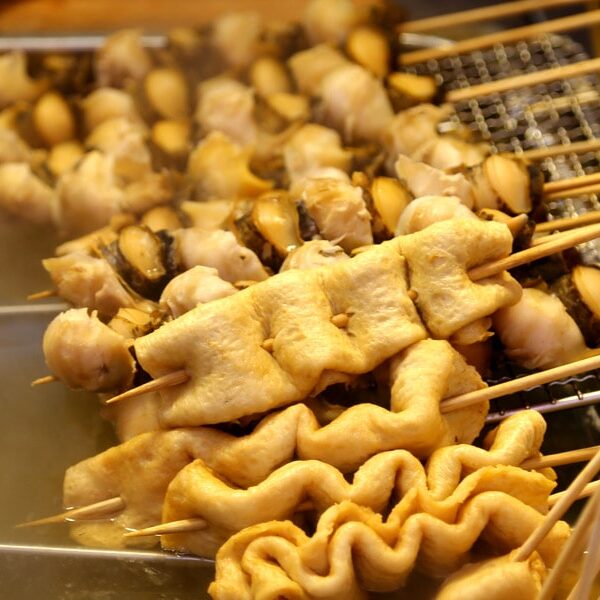
Why travel to a diverse country such as Korea and not embrace the local culture? Here are 10 of the best unique Korean experiences you can only enjoy fully in Korea. Be brave, try something new and create lasting memories of your Korean adventure.
Here are 10 of the best uniquely Korean experiences:
- Wear Traditional Korean Hanbok (Royal Palaces)
- Sing In A Korean Noraebang (Everywhere)
- Sleep In A Korean Hanok House (Hanok Villages)
- Visit The Kimchi Museum (Seoul)
- Eat Street Food (Traditional Markets)
- Experience A Korean Temple Stay (National Parks)
- Drink Makgeolli – Korean Rice Wine (Everywhere)
- Visit The World’s Most Dangerous Border – The DMZ
- Relax In A Korean Sauna (Everywhere)
- Visit A Korean Green Tea Field (Boseong, Jeju)

Here are 10 of the best Korean historic sights:
- Gyeongbokgung Palace (Seoul)
- The Secret Garden (Seoul)
- Bulguksa Temple (Gyeongju)
- Jeonju Hanok Village (Jeonju)
- Seoul Fortress Walls (Seoul)
- Haedong Yonggungsa Temple (Busan)
- Andong Hahoe Folk Village (Andong)
- Gyeongju Historic Area (Gyeongju)
- Baekje Historic Area (Gongju, Buyeo)
- Jangsaengpo Whale Museum (Ulsan)

Here are 10 of the best modern K-Culture spots:
- K-Pop Headquarters (Seoul)
- HYBE Insight (Seoul)
- COEX Artium (Seoul)
- K-Style Hub (Seoul)
- Hongdae Shopping Street (Seoul)
- Hallyu K-Star Road (Seoul)
- Asia Culture Center (Gwangju)
- Busan International Film Festival Square (Busan)
- MBC World Theme Park (Seoul)
As you’ll see, there’s just so much to see and do in Korea. You could spend a whole week in Seoul and not run out of exciting activities to do and sights to explore. Our advice is to try to avoid planning to do too many things in one day and adding in plenty of free time.
There’ll be many random things that catch your eye, such as a curious side street, or your nose, like the delicious smells from a food stall. Make sure you’ve got flexibility in your schedule to investigate these surprises and to take a rest if you need to – walking and traveling for days on end can get tiring.
Korea comes alive at night and markets and city streets are often best explored after the sun goes down. Drab concrete buildings come alive with neon signs, lanterns, and electric lights and are quite a sight to be seen. Visit popular tourist attractions such as the royal palaces and hanok villages during the morning as they’ll be less crowded.
If you plan to visit the Secret Garden in Changdeokgung Palace (you really should!), tickets are available on the day and sell out fast. Getting to these places early can guarantee you get tickets, see the sights unobstructed, and have time in the evening to soak up the night life and culture.
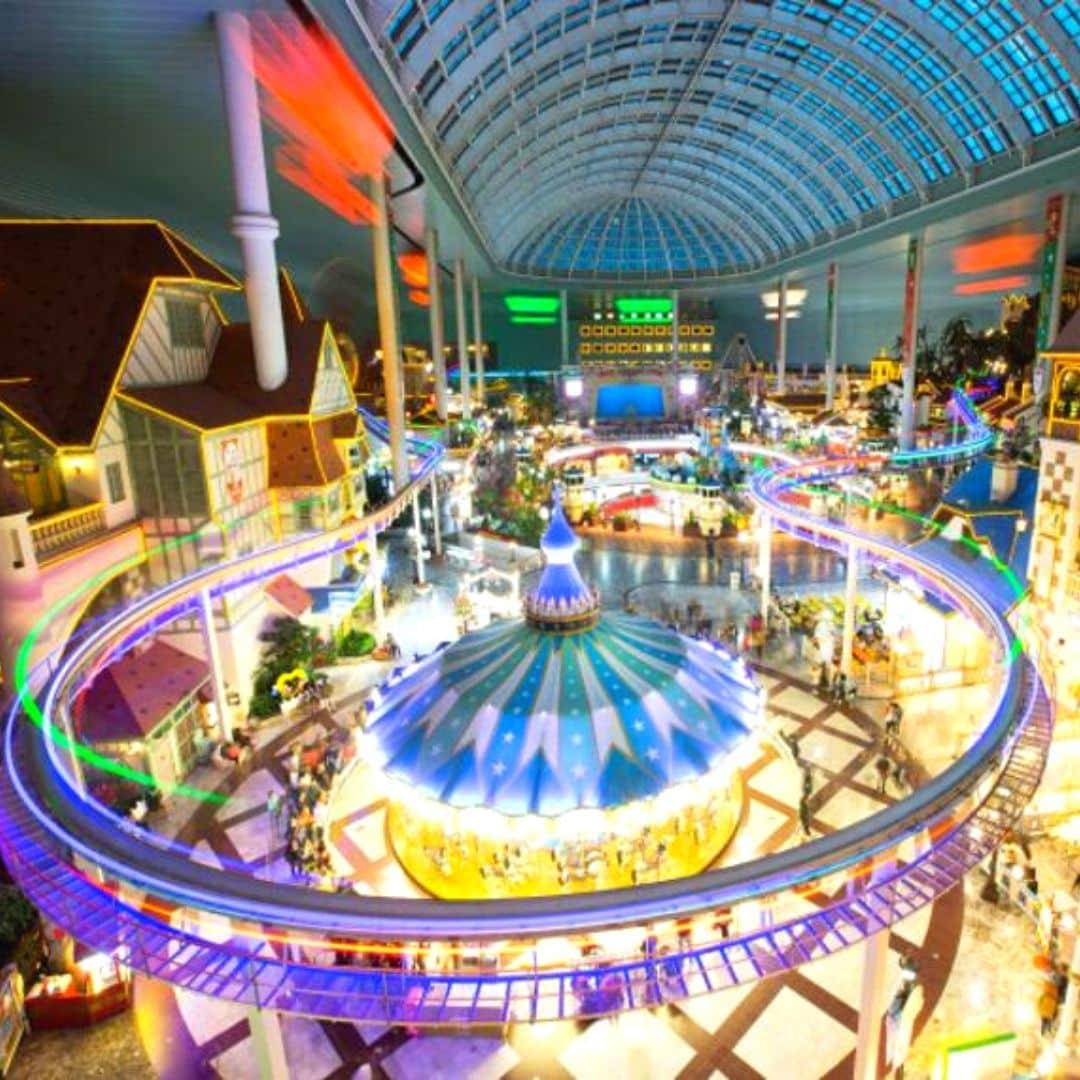
Here are the 10 best family-friendly activities in Korea:
- Nami Island & Garden of Morning Calm (Gapyeong)
- Seoul Grand Park & Zoo (Seoul)
- Lotte World Adventure (Seoul, Busan)
- Alive Museum & Dynamic Maze (Seoul)
- Seoul Children’s Grand Park (Seoul)
- Seoul Children’s Museum (Seoul)
- Everland & Caribbean Bay Theme Parks (Near Seoul)
- Sea Life Busan Aquarium
- Jeju Dinosaur Island (Jeju)
- Alpaca World (Gangwon Province)
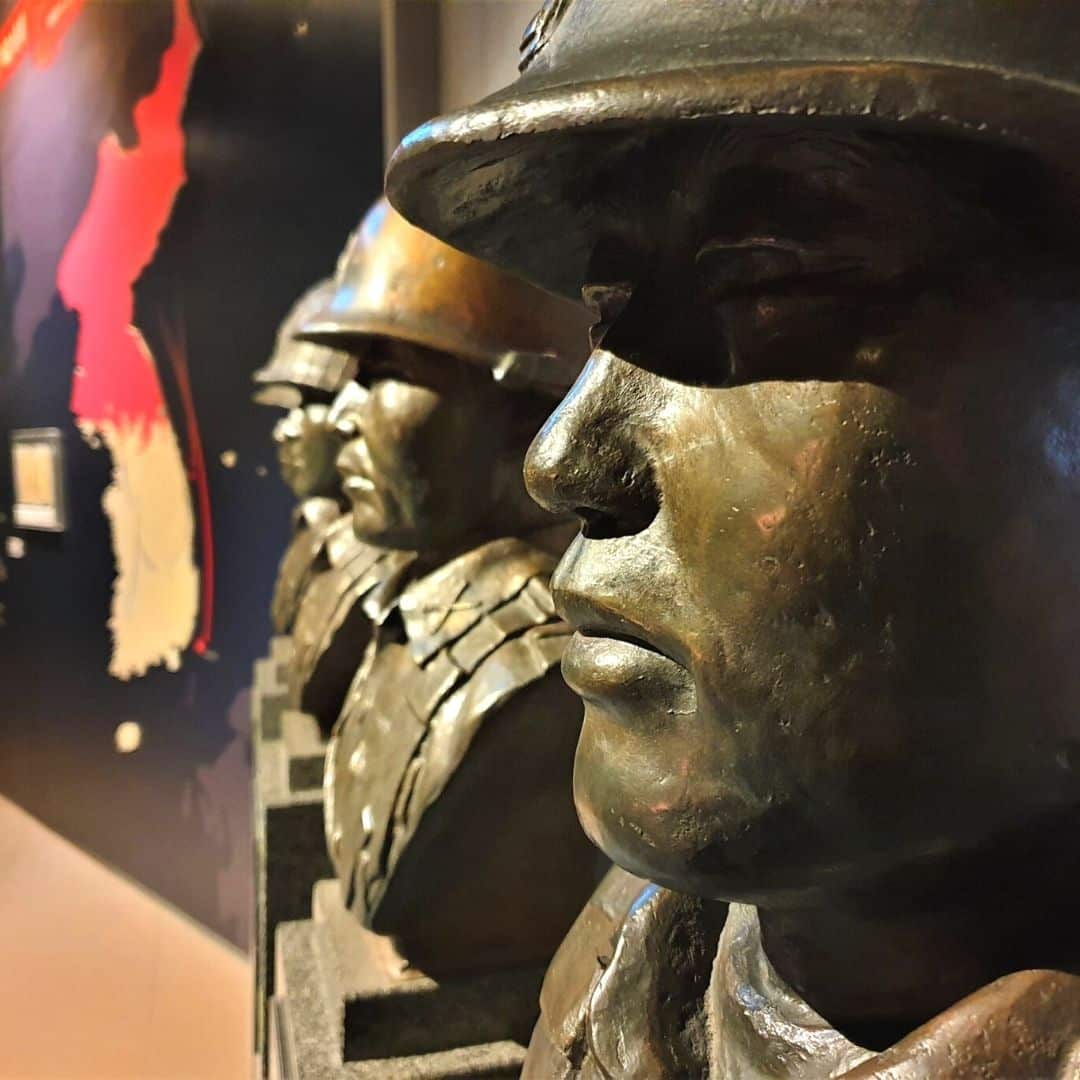
Here are the 10 best museums & galleries in Korea:
- National Museum of Korea (Seoul)
- Seoul Museum of Art (Seoul)
- Gyeongju National Museum (Gyeongju)
- War Memorial of Korea (Seoul)
- National Folk Museum of Korea (Seoul)
- National Maritime Museum (Busan)
- Seodaemun Prison History Museum (Seoul)
- Seoul Museum of History (Seoul)
- Museum Kimchikan (Seoul)
- Daegu Art Museum (Daegu)

Here are the 10 best cafe areas in Korea:
- Ikseondong Hanok Village (Seoul)
- Gyeongui Line Hongdae (Seoul)
- Samcheondong Cafe Street (Seoul)
- Jeonpo Cafe Street (Busan)
- Hwangnidan-Gil (Gyeongju)
- Gangneung Coffee Street (Gangneung)
- Sinsa-Dong / Garosugil Road (Seoul)
- Jukjeon Cafe Street (Seoul)
- Hwaseong Haenggung Area (Suwon)
- Kim Kwang Seok Gil Street (Daegu)

Here are 10 of the best Korean markets and shopping areas:
- Gwangjang Market (Seoul)
- Myeongdong Market Area (Seoul)
- Jagalchi Fish Market (Busan)
- Centum City Mall (Busan)
- IFC Mall (Seoul)
- Starfield COEX Mall (Seoul)
- Nambu Market (Jeonju)
- Seomyeong Underground Shopping Center (Busan)
- Seogwipo Maeil Olle Market (Jeju)

Here are 10 of the best natural sights in Korea:
- Hallasan Mountain (Jeju)
- Jirisan National Park (Jeollanam Provice)
- Seoraksan National Park (Gyeonggi Province)
- Seongsan Ilchulbong Sunrise Peak (Jeju)
- Damyang Juknokwon Bamboo Forest (Damyang)
- Boseong Green Tea Plantation (Boseong)
- Haeundae Beach (Busan)
- Udo Island (Jeju)
- Hwaamdonggul Cave (Gangwon Province)

Travel Itinerary For Korea
When planning a travel itinerary for South Korea, it’s best to think about what kind of experience you want when you travel to South Korea and build your itinerary from that. What kind of traveler are you and what do you want to take away from your Korea trip? Are you planning a trip for yourself, for your family, or as a romantic escape?
Do you want to learn about traditional Korean culture and history? Are you visiting to immerse yourself in modern Korean culture and maybe meet your idols? Are you planning to get out into Korea’s mountains to hike and join a Buddhist Temple Stay? Or are you going to eat, drink, shop, and make the most of Korea’s discounted goods? Or all of the above?
This section of this South Korea Travel Guide will offer some of the best one-week and two-week itineraries for South Korea. These itineraries are rough guides, created to help you begin planning your trip. Feel free to pick and choose the parts from them that you like to create your own travel itinerary for South Korea. We’ll be adding more great itineraries soon, be sure to check back for the latest ideas.
Classic 1 Week Itinerary For Korea: Seoul, Busan, Gyeongju
This is one of the most popular of the 1-week itineraries for South Korea and will take you to the most famous and interesting places that are top of most travelers’ South Korea bucket lists. Starting in Seoul, Korea’s capital, you’ll explore the best sights in this city before taking a day trip out to the lovely Gapyeong County to get a breath of fresh Korean countryside air.
From day 4, zip across the whole of Korea on the high-speed KTX train and explore Korea’s second city, Busan. See coastal temples, fish markets, wide beaches, and more in Busan before taking a day trip to Korea’s historic UNESCO World Heritage City, Gyeongju. On the last day, it’s time to return to Seoul to pack your bags full of the best souvenirs and snacks and say farewell in the highest part of the city.

Afternoon : Dressed in your hanbok, enjoy more traditional Seoul with a walk around the narrow streets of the Bukchon Hanok Village. Visit traditional Korean teahouses, galleries, markets, and more.
Evening : Check out the stalls and shops of artsy Insadong, contemplate Jeogyesa Temple, and take an evening stroll along the Cheonggyecheon Stream before dining in Myeongdong or the Jonggak Avenue of Youth. This Full Day Tour of Seoul will show you some of the hottest spots in the city, while this Customized Private Tour of Seoul will allow you to choose where to go.
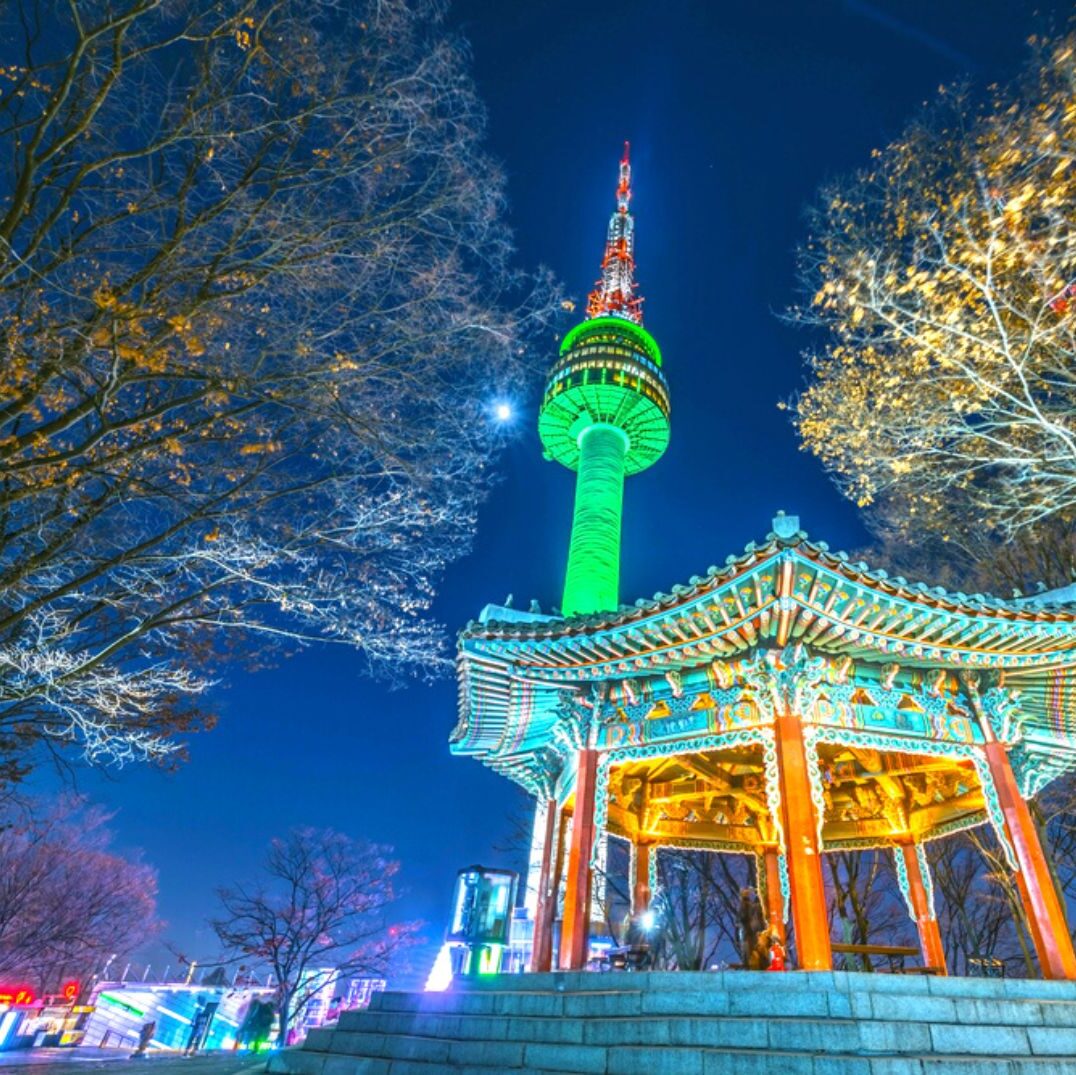
Afternoon : Head back to central Seoul and witness the bustling sights and delicious smells of Seoul’s traditional Gwangjang and Dongdaemun Markets. Try delectable Korean street foods here.
Evening : Take the Namsam Cable Car to the top of Namsan Mountain and watch the sunset from N Seoul Tower. See some of Seoul’s fortress walls before heading back down to go late-night shopping at Myeongdong Market.
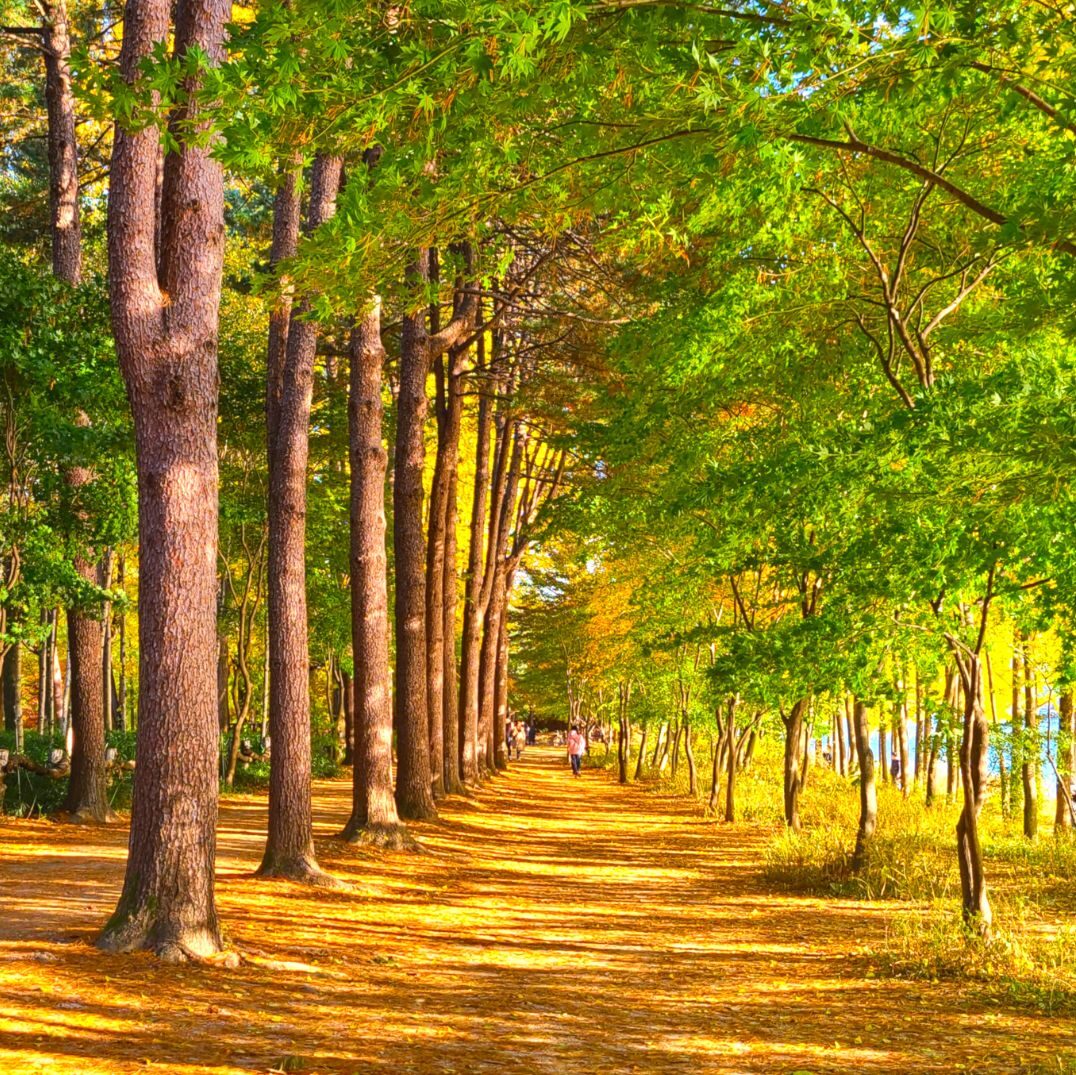
Afternoon : Zip line or sail over to Nami Island for impressive nature, bike rides, leafy walks, and cozy cafes. See popular scenes from K-dramas and even some wild animals, like deer and rabbits.
Evening : Pedal your way along an abandoned railway at the Gangchon Rail Bike Park before heading back to Seoul for fine dining in Gangnam’s Apgujeong Rodeo district.
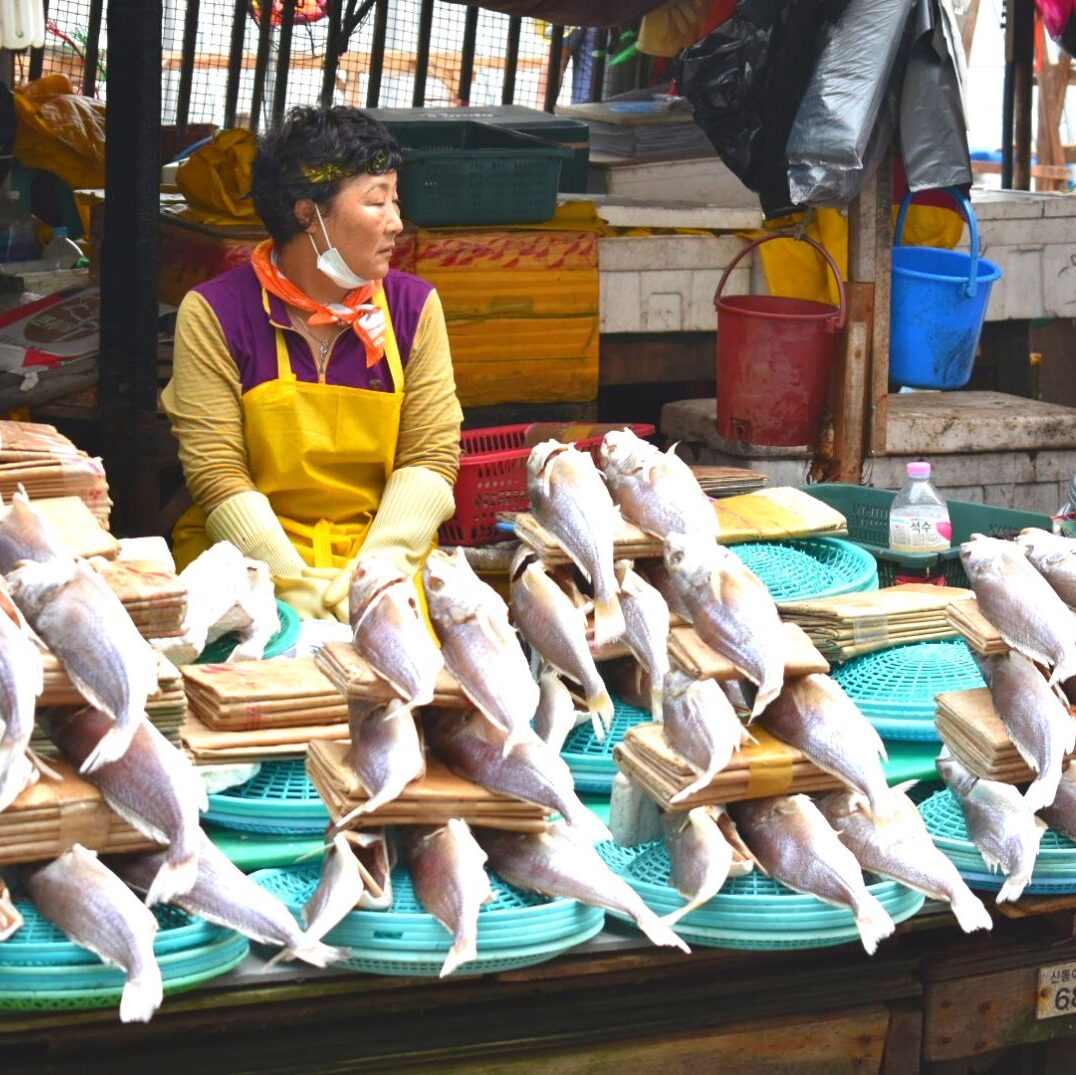
Afternoon : Head to the Nampo-dong near Busan Station and visit Jagalchi Market for a fresh seafood lunch. Then explore cosy Bosu-dong Book Alley or take a taxi to the Huinnyeoul Culture Village.
Evening : Take the subway up to Haeundae Beach for Busan’s best night-scenes. Grab dinner overlooking the beach, or at one of the market stalls. If you’re feeling brave, visit BUSAN X the SKY to see breathtaking views over the coast and city.

Afternoon : Head to the Gyeongju Gyochon Traditional Village for a traditional meal and to see the stunning Woljeonggyo Bridge. Gyeongju National Museum is nearby, too.
Evening : See the tranquil night views of Wolji Pond where palace buildings reflect perfectly in still waters. Stop at Hwangnidan-gil area for dinner and drinks before returning to Busan.
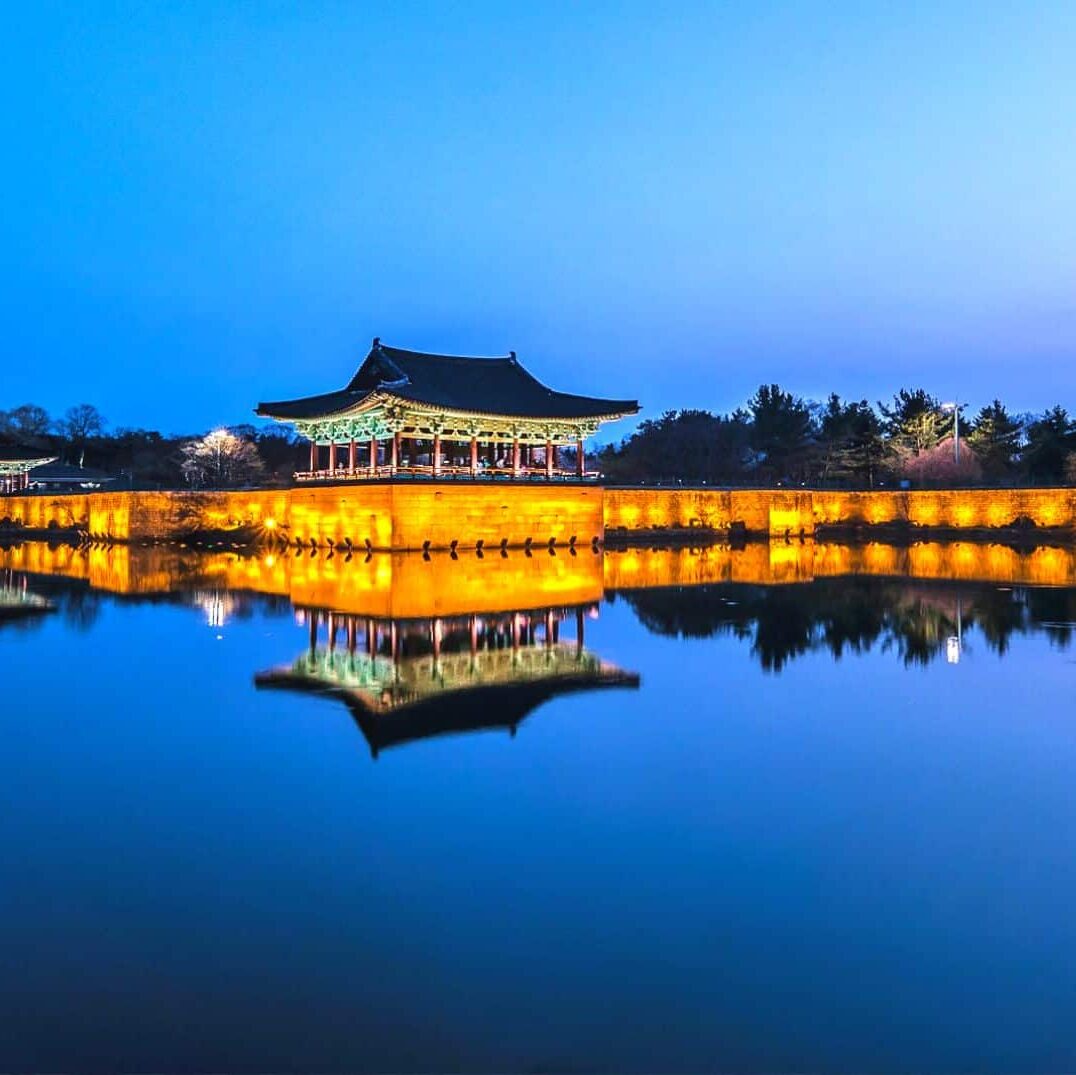
Afternoon : Explore the artistic shopping streets of Hongdae for last minute souvenirs and gifts for yourself. Take a break in one of the unique animal or artsy cafes.
Evening : Either take a night cruise along the Han River from Yeouido Hangang Park or dine in style at the Lotte World Tower in Jamsil, the world’s 6th tallest building. Both offer great night views of Seoul and unforgettable memories to take home.

Korean Seasons Guide
The best time to visit South Korea is during the warm spring or fall seasons. The weather is mild and clear, there’s a range of festivals and seasonal activities to enjoy, and you can travel to Korea comfortably.
The best months to visit are April, May, September, and October. These months are all during the Korean school semester, so there won’t be as many local travelers around during the weekdays. However, expect the weekends to be busy as people leave the cities to travel within Korea.
Large public holidays, including Chuseok (mid-autumn festival) in September / October) and Buddha’s Birthday (May), provides travelers with the opportunity to experience Korean culture and celebrations. These holidays change each year based on the lunar calendar.
Korean Weather & Climate
South Korea is a country that experiences four very distinct seasons, with temperatures ranging from 100 Fahrenheit in the summer to below 0 Fahrenheit in the winter. Each of South Korea’s seasons brings opportunities to see unique natural views and enjoy the different climates in Korea.
Spring has some of the gentlest weather, with light rain and a quick jump in temperature to the 60s and 70s by late March. Summer begins with the rainy season in late June and becomes extremely humid and hot throughout July and August before cooling again in September.
Fall has the best weather in Korea, with many warm, sunny days. Cold winter weather appears very quickly in mid-November and the first snow usually appears by late November. Winter is dry and sunny with the lowest chance of rainfall but is also very cold. Snow isn’t constant, but can fall for several weeks on and off during winter.
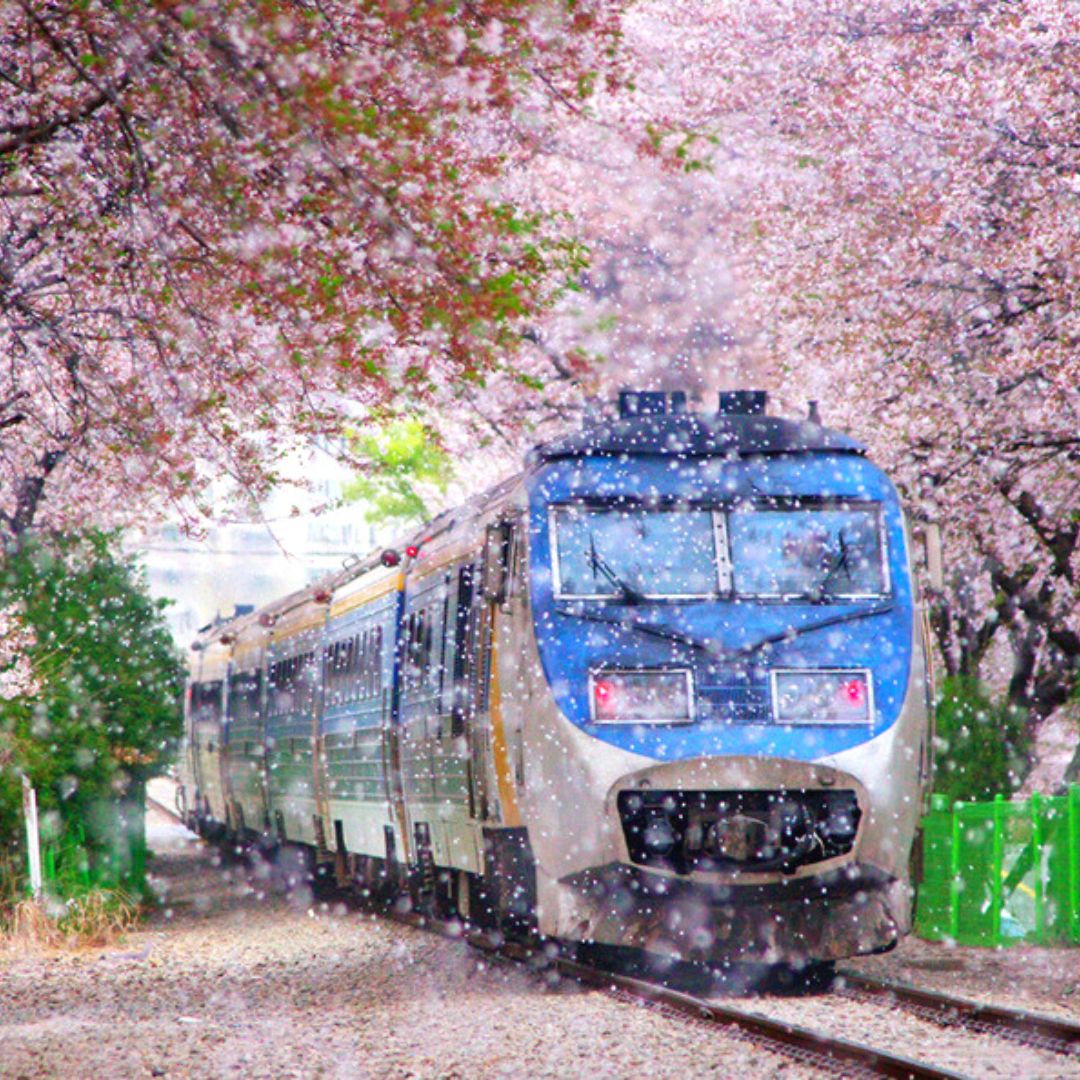
Visiting in spring offers the chance to see beautiful cherry blossoms stretch across the country, as well as many other spring flowers that brighten up Korea after a cold winter.
Spring starts in late March with the awakening of the cherry blossoms and ends in early June with the start of the rainy season. South Korea is a country with a close connection to nature, which can be witnessed in the many spring festivals and celebrations that happen throughout the year.
Some of the best spring festivals include the Jinhae Cherry Blossom Festival, Damyang Bamboo Forest Festival, Yeon Deung Hoe Lotus Lantern Festival, Jindo Sea Parting Festival, and Boseong Green Tea Plantation Festival.

The weather in summer is perfect for getting outside and relaxing on one of Korea’s many beaches. Some of the best activities include spending a weekend camping or glamping by the beach, hiking in shaded valleys in the national parks, and water sports such as surfing, kayaking, and scuba diving.
Unfortunately, the heat may put off some travelers, and high humidity makes it uncomfortable to move around too much. Fortunately, Korea is a modern country with lots of air-conditioning and ways to deal with the hot weather, including delicious summer dishes.
Cool down with a bowl of Korean bingsu (shaved ice dessert) or a cool latte in one of the many cozy Korean cafes in popular beach destinations.

Travelers to Korea in the fall are treated to spectacular fall foliage creeping far and wide. You can see it falling on palace grounds, sprawled on mountains in national parks, and along city streets.
The start of the fall foliage season in Korea coincides with the end of the hot and humid summer, with clear skies and cool weather, making it the perfect time to travel in Korea. Like spring, the fall season in Korea is one of the festivals and celebrations.
The Chuseok holidays in late September / early October are the biggest public holidays of the year, with cultural events held in popular tourist destinations. There’s also a range of cultural festivals, such as the Andong Mask Festival, Baekje Culture Festival, Jinju Namdang Yudeung Lantern Festival, Jeonju Bibimbap Festival, and the Seoul Kimchi Festival.

Winter, like summer, has more extreme weather than spring and fall, with temperatures often in the 20s and 30s and below. This season, however, is also one of the best for travelers who want to see clear, blue skies and experience good weather.
Winter is the driest season and it very rarely rains. If you don’t mind the cold weather, it’s perfect for traveling around South Korea. One of the biggest draws during winter is the chance to see snowy Korean landscapes, from snow-bedecked royal palaces to frosty peaks atop Korea’s many mountains.
Winter sports are popular in Korea, with ski and snowboard resorts aplenty. Winter also offers the chance for family fun with winter attractions including sledding, winter illuminations, and Christmas parades.

Cost To Travel To Korea
The cost to travel in South Korea largely depends on your personal style of travel. You can travel on a low budget in Korea, for under $50 per day, or you could also travel for 10 times that amount if you wished to.
Food costs range from a few dollars for a bowl of jajang (black soybean) noodles to hundreds for premium hanwoo (Korean beef) steak. The same applies to accommodation, with budget hostels costing $10 per night and premium 5 stars hotels costing hundreds.
Most travelers to Korea will already know what they want to prioritize their spending on. Some travel to Korea to eat, others to shop, and many more to experience the unique culture and history that Korea has to offer.
The costs in this section of our South Korea Travel Guide are based on the latest costs in Korea from this year. Examples of different costs have been covered to give you an idea of what to expect when you try to budget.
Please note, these prices are based on traveling in Seoul during non-peak times. Prices may be higher in peak times, which include cherry blossom season (Apr) and fall foliage season (Oct). Popular tourist cities, such as Gyeongju and Jeonju, may also have higher prices on weekends.
How Much Does It Cost To Travel In South Korea?
Travelers may find they want to spend more on hotels and less on eating out, or vice-versa, so don’t feel like you have to only follow the costs for one section. This is only a guideline to help you plan based on your own personal preferences.
To make it easier to figure out your expected costs to travel in Korea, this South Korea Travel Guide has broken down the costs into 3 different categories. These categories loosely fit 3 different types of travelers, as described below:
- Accommodation: $200+ per night, per room (double)
Korea has a wide range of luxurious hotel options, including rooms in the Lotte World Tower, historic hanok houses, and glamping for those who want to escape to the countryside.
- Food & Drink: $100+ per day, per person
It’s easy to spend a lot on food and drink in Korea as there are so many delectable restaurants. Fresh seafood, Korean steak, or the finest foreign foods are all available.
- Transportation: $20+ per day, per person
Taxis and transportation are relatively cheap in Korea. A taxi journey across Seoul can cost less than $20 for 30 minutes and even the 1st class options on Korea’s high-speed trains are under $100 for the longest journey (Seoul to Busan).
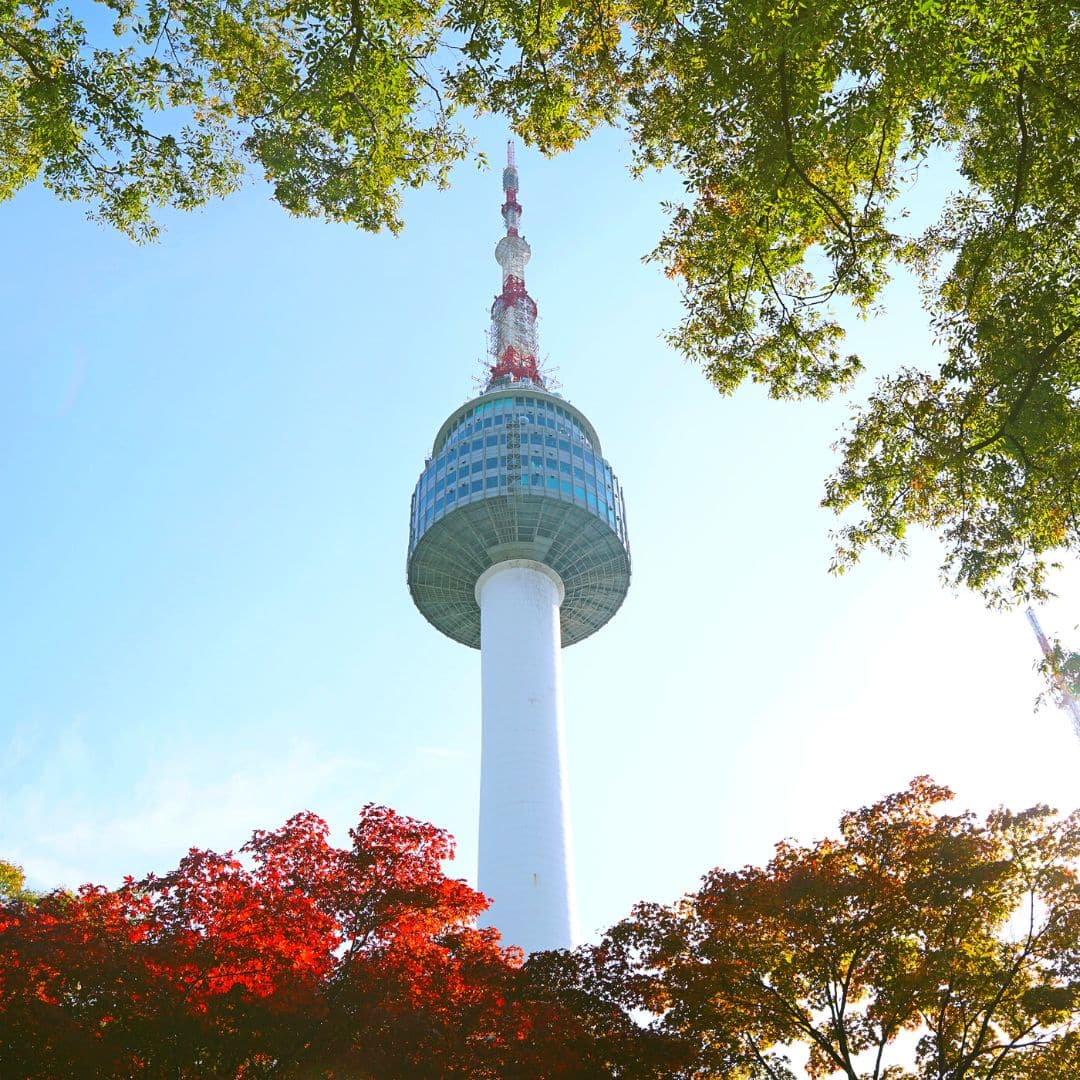
- Accommodation: $100 ~ $200 per night, per room (double)
You can book 4-star hotels in Seoul for very reasonable prices and enjoy both comfort and lower prices than you’d find at home. Korea has a wide range of comfortable mid-priced hotels.
- Food & Drink: $50+ per day, per person
With all-you-can-eat Korean restaurants that serve unlimited Korean BBQ and other dishes for under $20 or $30 per person, it’s easy to enjoy the best food Korea has to offer without breaking the bank.
- Transportation: up to $15 per day, per person
Use the subway and buses to get around the big cities and trains to travel further around Korea without breaking the bank. You can even splash out on a taxi and pay only a few dollars per person when traveling as a group for a few dollars extra.
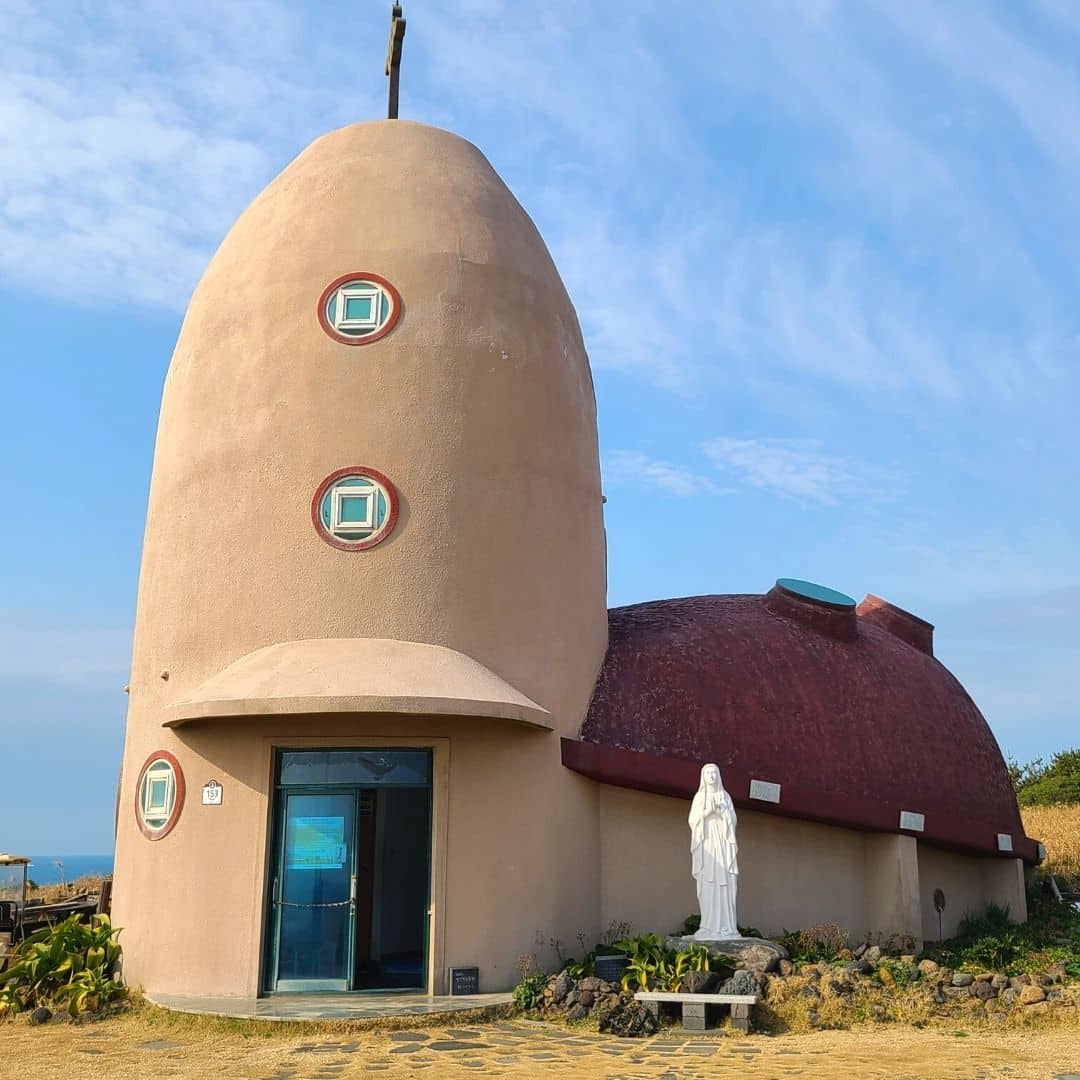
- Accommodation: up to $100 per night, per room (double)
Hostels and guesthouses can be found for under $50 per night and are perfect for somewhere to rest and recharge. If that’s all you need, save money here and spend it elsewhere.
- Food & Drink: $20 – $30 per day, per person
If you budget well and stick to street food, free hotel breakfasts, and convenience store foods, you can eat well and still have enough to splurge on good food for dinner.
- Transportation: up to $10 per day, per person
Walking and buses are cheap and convenient ways to travel around Korea’s biggest cities. Traveling from city to city is also cheap, with intercity buses costing less than $10 for 1-2 hour journeys.

Further Costs To Travel In South Korea
Besides these everyday costs to travel in South Korea, there are other costs that you’ll need to cover from time to time. These costs include internet & phone access, day trips, activities, souvenirs, travel insurance, and flights. These costs will be broken down into low and high-end costs that you can expect to pay in Korea.

Museums and galleries offer unique (and authentic) Korean souvenirs such as pottery, painting, tea & soju sets, and more. If you want something a bit more special, head to the underground markets near Gwangjang Market in Seoul and get your own handmade hanbok, which you can get posted back home to save luggage space.
- Small Souvenirs: $5+
- Korean Cosmetics: $5+
- Korean Artworks: $10+
- Korean Tea (box of): $10 to $20
- Korean Soju Set: $10 to $20
- Korean Handcrafts: $10+
- Tailored Hanbok: $200+
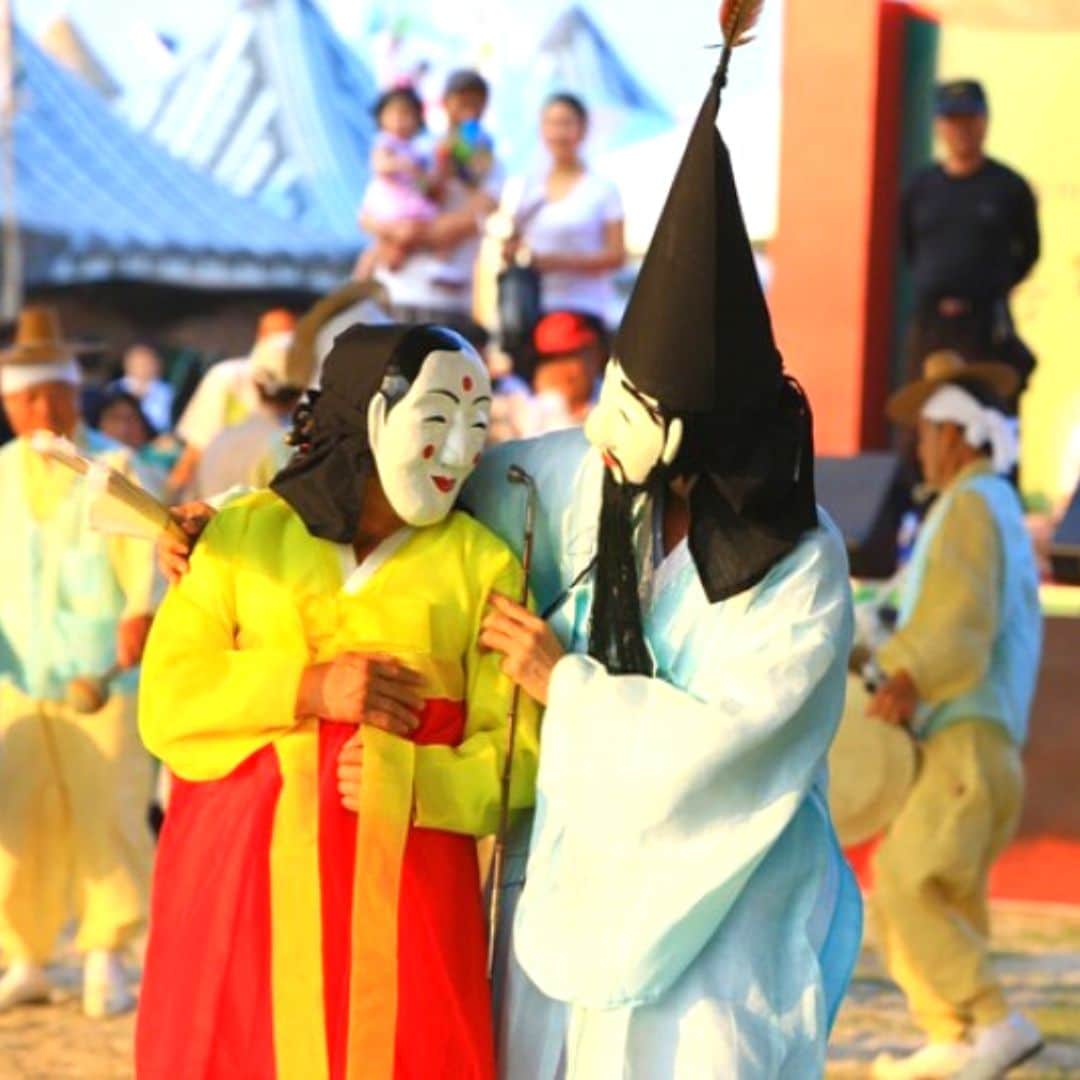
The day trip prices quoted below are the prices you can expect to pay with a reputable tour company like Klook or Trazy . Hiring a private guide will be a lot more expensive and might come to $200+ per day.
Please note: The prices quoted below are estimates and may change depending on the season or tour services.
- DMZ Tour – $50 to $120
- Nami Island Area – $40 to $70
- Everland Theme Park – $30 to $50
- Jeonju Hanok Village – $50 to $70
- Korean Folk Village – $50 to $60
- Seoraksan Mountain – $70 to $150
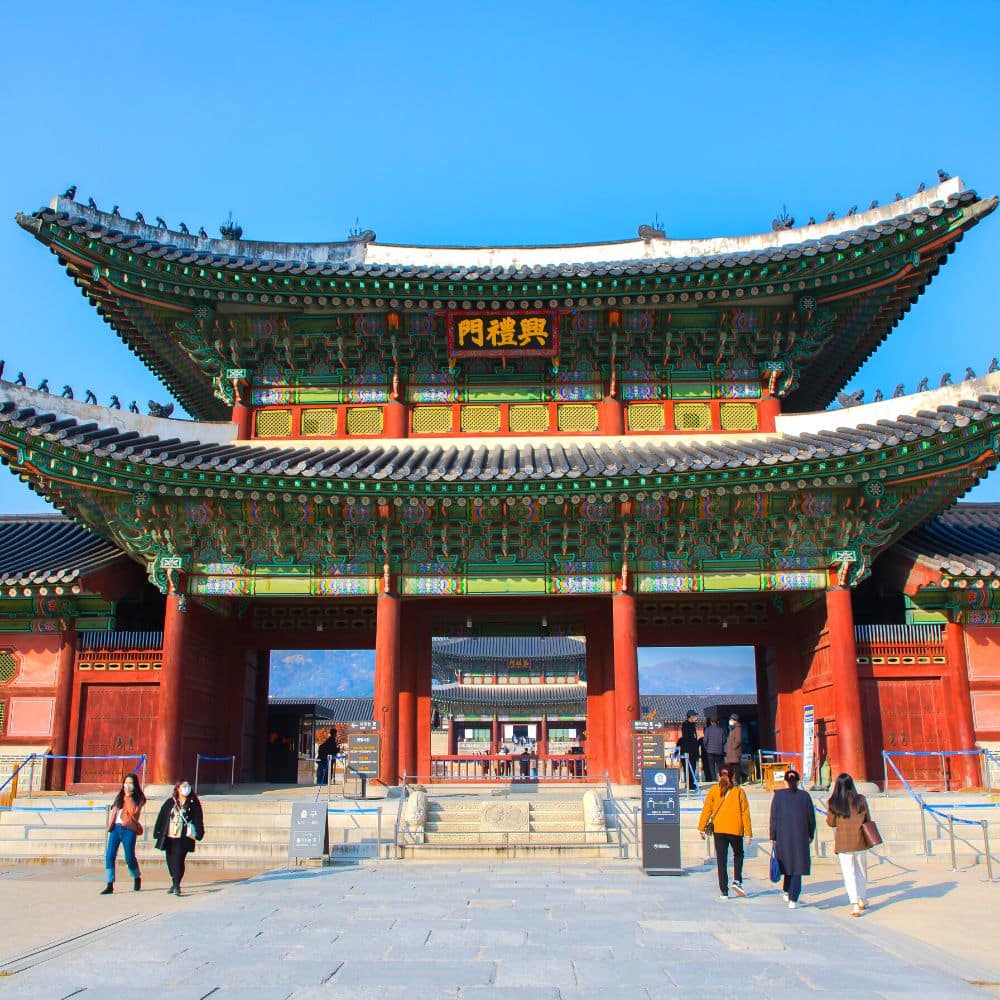
As mentioned earlier in this South Korea Travel Guide, buying a Discover Seoul Pass is a great way to save money on Seoul’s premium attractions.
- Royal Palaces – $3
- N Seoul Tower – $10
- Hanbok Rental – $10+
- Seoul City Tour Bus – $10
- Han River Cruise – $15 to $30
- Seoul Sky Observatory – $30 to $50
- Aquariums – $20 to $30
- Seoul Zoo & Seoul Grand Park $10
- Amusement Parks – $30 to $40
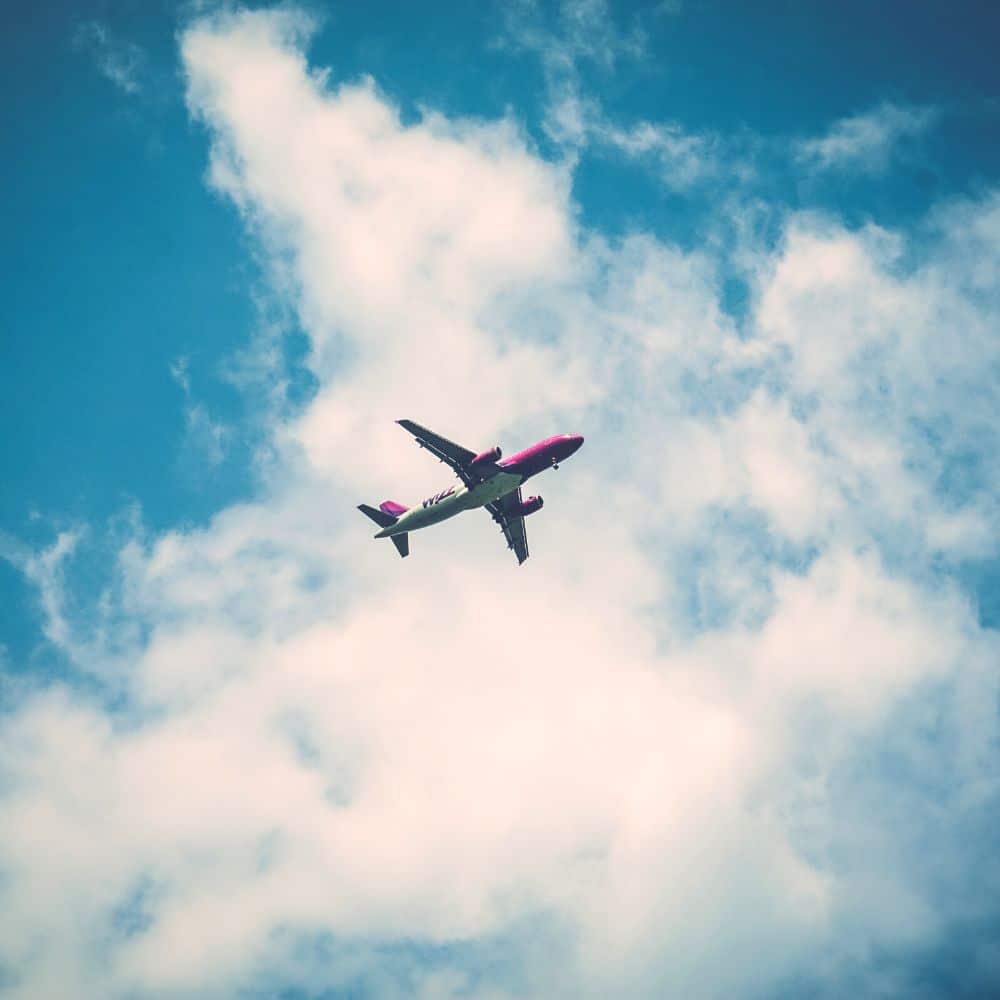
The cost to fly to Korea is more than twice the normal price right now. Fortunately, Korea ended the restrictions on the number of flights into the country from June 2022 and flight costs and availability should be improved in the near future.
Best of Korea recommends Skyscanner and Expedia for the best flight deals to Korea.

Why Travel To South Korea?
In recent years, travelers from around the world have been increasingly drawn to South Korea. The country is a must-see destination in Asia, with more than 17 million travelers in 2019. After reading this South Korea Travel Guide, you’ll understand what draws so many people to the Land of The Morning Calm, as Korea is also known.
There are myriad reasons why people visit Korea. Many come to experience life in a unique country, packed with historical and cultural sights that you won’t find elsewhere in the world. In the afternoon you can walk through a royal palace dressed in hanbok (traditional Korean clothes), sip green tea in a hanok (traditional Korean house), and pass Buddhist monks walking peacefully through an ancient temple.
Modern South Korean culture is conquering the world, with chart-topping acts that include BTS and Black Pink, Oscar-winning movies like Parasite, and phenomenally successful TV shows like Squid Game. This brings in legions of fans flocking to shooting locations and film sets to relive their favorite K-Culture moments. Some lucky travelers even get to catch sight of their favorite K-Stars walking around Gangnam, a hotspot for Korea’s most famous citizens.
Not only is Korea a beautiful country, it’s a country that will make you beautiful, with some of the world’s best fashion and beauty shops. Korea is famous for its K-Beauty products and is a beauty and fashion shoppers paradise. From the street fashions of Hongdae, to the luxurious fashion malls of Gangnam, and the wall-to-wall malls with discount clothes in Dongdaemun, you’re guaranteed to find something you can’t resist at a great price. If you prefer a cultural shopping experience, there are traditional markets all over Korea, where you can experience street food, buy novel gifts, and see how locals live and socialize.
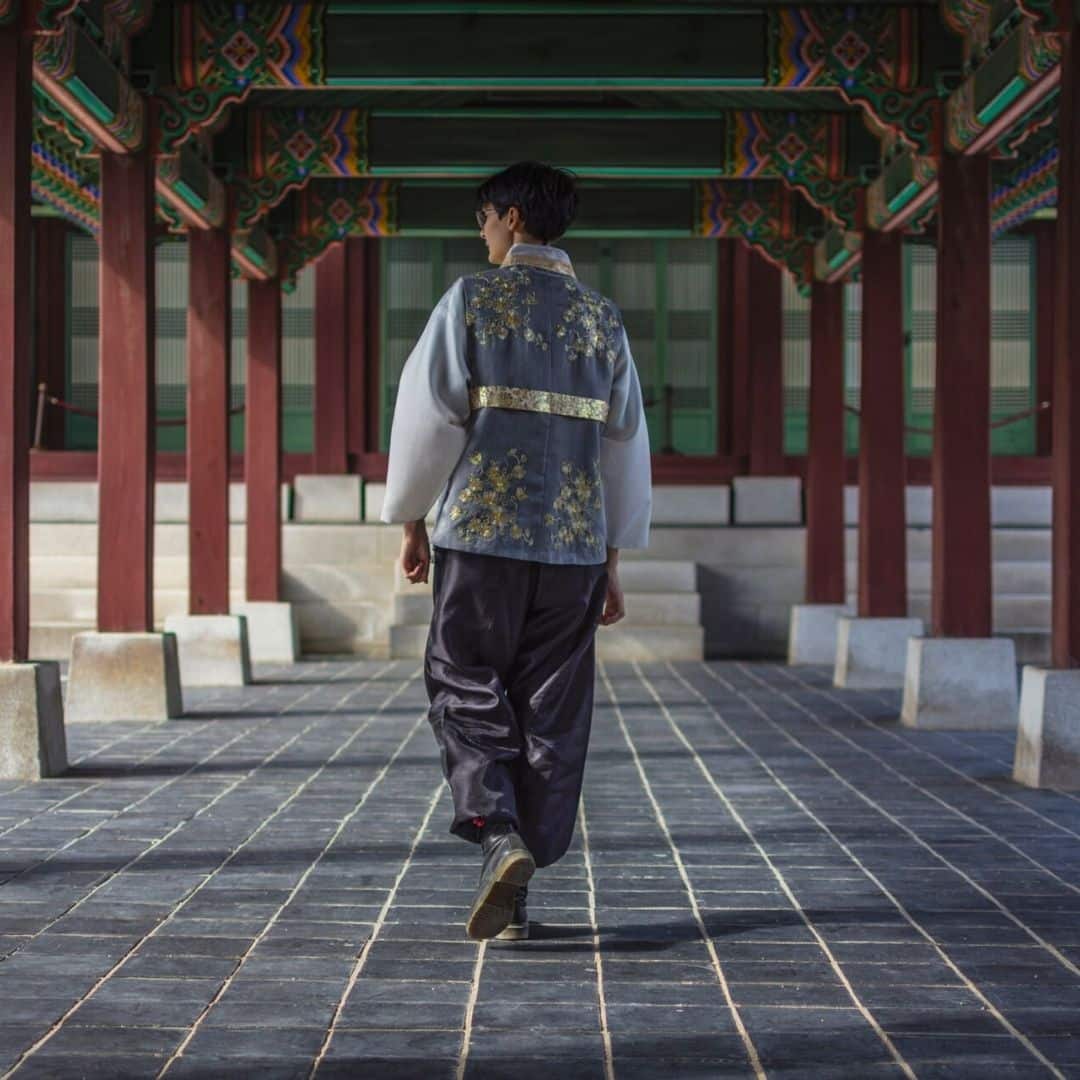
There’s so much more to South Korea than what you’ll find in the cities, however. South Korea, a country that’s 70% mountainous with coasts on three sides, offers so much to nature and adventure lovers. Hiking, South Korea’s national pastime, is a popular way to see more of the Korean countryside, looking down over rice fields, forested valleys, and pockets of urbanization. Skydiving, parasailing, scuba diving, water sports, cycling, rock climbing, white water rafting, and lots more are on offer and very reasonably priced. South Korea is a great place to enjoy the great outdoors.
The real jewel in South Korea’s natural crown, however, has to be Jeju Island – one of the New 7 Wonders of the Natural World. Explore lava caves, hike to the peak of the central dormant volcano (Hallasan Mountain), trek around the rugged coast, relax on a sandy beach in a modern cafe, and even try your hand at horse riding.
Whatever your reason to travel to South Korea, you’re sure to find more and more reasons to return again and again. Let this South Korea Travel Guide whet your appetite for your first trip, inspire you to plan a follow-up trip, and guide you to the best things to see and do in South Korea.

South Korea Travel Guide FAQs
Not sure about the South Korea travel restrictions and want to know more about visas, vaccinations, and what the rules are? This next section covers some of the most frequently asked questions about traveling to Korea now. If you have more questions that aren’t covered below, feel free to write to us on the Best of Korea Facebook page.
Do I need a visa to travel to South Korea?
US citizens and tourists from 111 other countries, including Canada and Mexico, don’t need a visa to travel to South Korea. The US government and South Korea have a visa-free travel arrangement and tourists can stay for up to 90 days.
What happens when I arrive in South Korea?
From September 2022 onwards it is no longer necessary to provide any vaccination status or take any PCR or RAT tests. A mandatory health check will be required, but this is only a simple form you can fill in on arrival.
What happens if I get a positive PCR result?
If you test positive for COVID-19 while in Korea, you will need to quarantine for 7 days at government facilities. Travelers who break the quarantine rules are subject to deportation or fines.
Can I travel to Korea if I'm unvaccinated?
Yes, you can still travel to South Korea if you’re unvaccinated. South Korea no longer restricts travel based on vaccination status (as of October 2022).
However, if a traveler (vaccinated or unvaccinated) tests positive for COVID-19 in Korea, they will have to self-quarantine until negative.
South Korea is a dynamic and culturally rich country that deserves a place on everyone’s travel bucket list. Known for its stunning blend of tradition and modernity, Korea features futuristic technology, bustling markets, and a thriving pop culture scene. Perhaps most importantly, visitors can expect a high level of safety and cleanliness while exploring the country and savoring its delicious cuisine.
This South Korea Travel Guide shows you where to go, what to see, and when to travel. Start your journey with itinerary ideas and pre-travel tips, the best day trips, and lots more essential Korean travel advice. Let’s go!
LATEST KOREA TRAVEL UPDATES
How to travel to korea, best destinations in korea, where to stay in seoul, korean travel tips, things to see & do, travel itineraries for korea, korean season guide, cost to travel to korea, further costs to korea, why travel to korea now, south korea travel faqs.
6/1/23 From June 1st, 2023, there is no longer any mandatory quarantine for COVID-infected people in Korea – both locals and travellers. The Korean government now recommends that infected people showing symptoms should self-isolate (voluntarily) for 5 days.
4/1/23 From April 1st, 2023, travelers from the USA and 21 other countries no longer need to apply for the K-ETA to travel to Korea. This will run until 31st December, 2024 and is designed to make it easier to travel to Korea.
3/20/23 From March 20th, 2023, the indoor mask mandate has been removed for public transport, including buses, trains, subway, taxis, and flights. The only remaining mask mandate is for medical facilities, including hospitals, care homes, and pharmacies.
How To Travel To Korea
Current Travel Restrictions For South Korea 2023
If you’re suspected of infection when you arrive (high temperature, feverish signs), you may be asked to take a PCR test. PCR tests are now free for travelers suspected of being COVID-19 positive within the first 3 days of arrival. This South Korea Travel Guide is regularly updated with the latest Korean travel restrictions.
Requirements To Travel To Korea
Here’s a simple 2-step guide about how to travel to Korea right now. Most restrictions have been lifted so travel to Korea is easier than ever. This applies to travelers from the US, Canada, and many other countries . As mentioned, it doesn’t matter whether you’re vaccinated or not.
Check the Korean Embassy if you’re not sure in either situation.
- When you travel to Korea, you will be asked to complete a self-check health questionnaire to show you’re not sick. You can do this when you arrive or complete it before you depart on the Q-Code website .
- You don’t need to do any testing before you fly, but it is a good idea to take a self-test to make sure you’re safe. If you’re infected in Korea, it’s necessary to do 7 days self-quarantine. You don’t need to bring copies of your vaccination records but printing a copy of the K-ETA is recommended.
No, travelers from the USA don’t need a tourist visa to enter South Korea. You can visit for up to 90 days visa-free. However, you must apply for the K-ETA before traveling and upload your travel plans and hotel details.
Here are 6 of the best destinations in Korea that you absolutely must visit, as well as some of the sights you’ll want to check out while you’re there. We’ll be bringing you lots more detailed destination guides in the future, so be sure to visit again soon

This Full Day Tour of Seoul will show you some of the hottest spots in the city, while this Customized Private Tour of Seoul will allow you to choose where to go.

Korea is a unique country with a written language that looks nothing like English, interesting Korean Cultural And Etiquette Rules , and an always busy lifestyle. Travelers may be lost trying to do even the simplest things.
If you’re traveling to Korea, you’re almost certainly going to want to get access to the internet to help you navigate, translate Korean, or even book tickets to attractions. Korea has one of the world’s best mobile internet and the prices are very reasonable. 5G mobile internet services are available across the country and Korea was one of the first to get the super-fast service. You won’t have problems connecting with a sim card or WiFi router when you travel
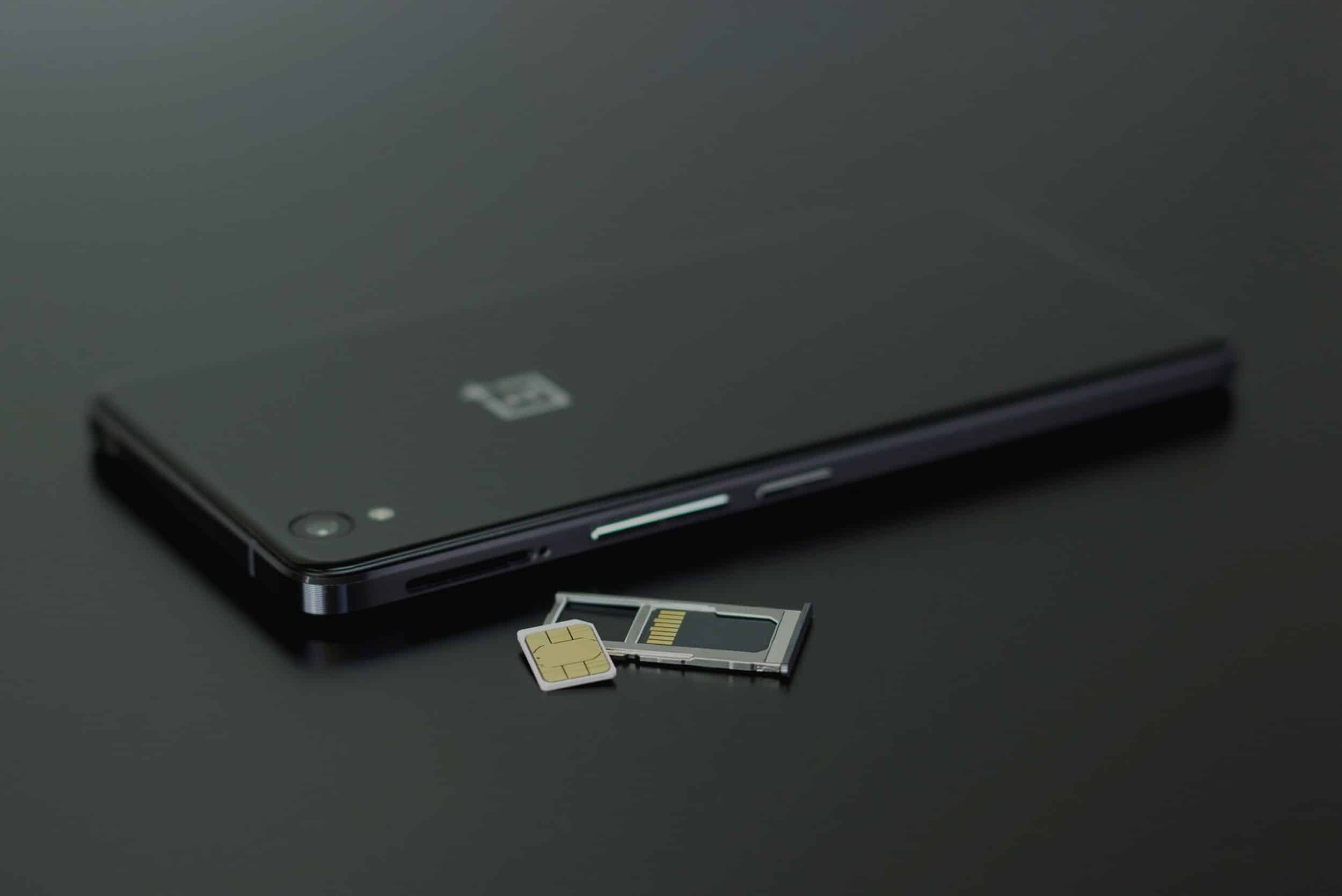
Traveling to any country involves potential scams, bad exchange rates, mistakes, and confusion when it comes to dealing with foreign currency. Fortunately, travelers to Korea have a wide range of options for travel money both before and while they travel.

South Korea is a country packed with famous landmarks and sights, unique culture – modern & historical, family-fun activities, outdoor adventures, cozy cafe districts, and natural wonders. There’s more to do in Korea than you could imagine and it’s impossible to explore it all in one trip. Try to plan your itinerary by cities and locations. For example, plan your day in Seoul and stay by the district.
Here are some of the best things to see and do in South Korea, broken down into different themes so you can find things that interest you the most. The location of each of these attractions is included, too, so you can create a city-by-city itinerary, seeing the best South Korea has to offer.
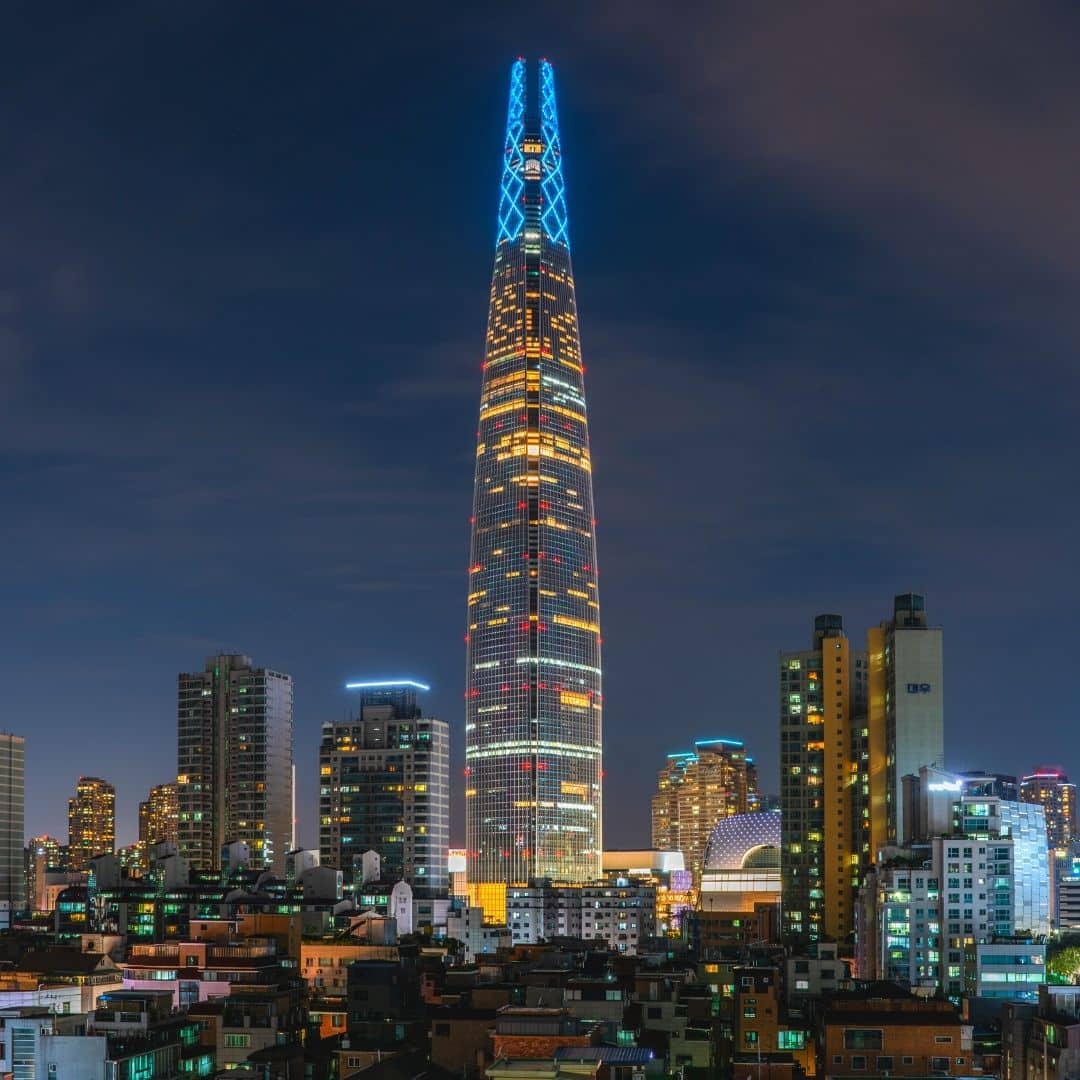
Any South Korea Travel Guide would be incomplete without thee top landmarks & famous areas in Korea. These unmissable Korean attractions offer some of the best sights in Korea, showing you Korean history, culture, design, and sense of humor.
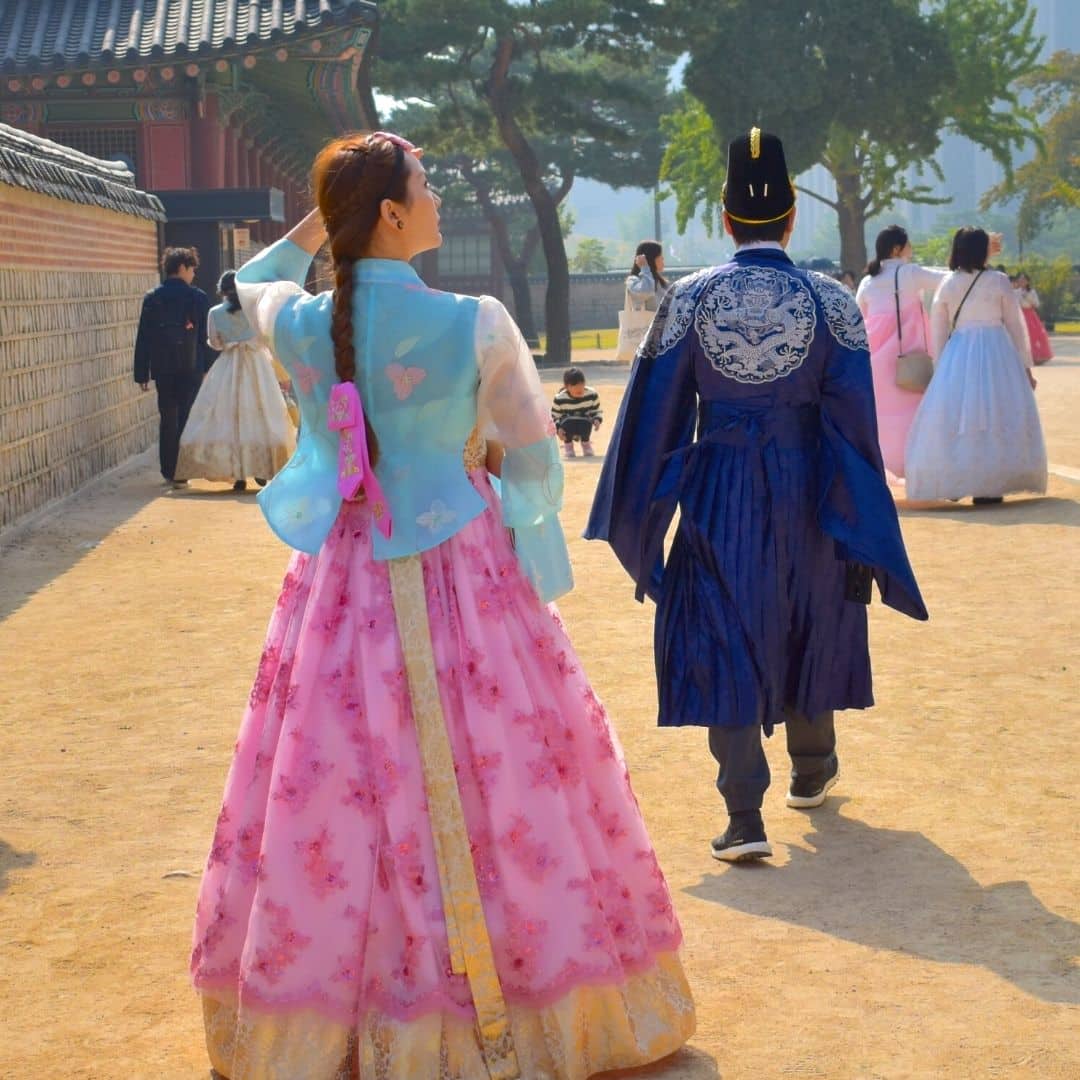
Learning about Korea’s past is not only enjoyable, it’ll also open your eyes to how modern Korean culture has evolved. Witness the majesty of grand palaces and the humble Buddhist temples and gain an insight into life in Korea with these fascination historical sights.

Are you a fan of Korean culture? Then check out these 10 modern K-Culture locations in Korea. Whether you’re ARMY or an arthouse cinema fan, you’ll love these sights. K-Drama fans, check out these K-Drama Filming Spots in Seoul .

If you’re traveling to Korea with your family, you don’t need to worry about the kids getting bored. There are plenty of family-fun attractions in Korea to keep them amused and to show them what Korea’s really like.

Culture lovers will find no shortage of places to learn about Korean, Asian, and world history & culture. Korea has a rich history and displays this through a range of museums. Learn about traditional life, Korean wars, the democracy struggles, and even kimchi .

Once a land of teahouses, Korea has now fully embraced coffee culture. Korea’s late-night culture makes cafes a great place to gather and chat. The rise of social media has also led to hundreds of insta-worthy cafes with photogenic decor, unusual coffee designs, and delicious desserts.

Many people travel to Korea just to shop, thanks to the low prices, haggling in the markets, and good quality items. From traditional markets to high-end designer goods, there’s somewhere to shop for everyone. Be sure to try authentic Korean street foods in the markets, too.

Korea is a country surrounded by sea on 3 sides and 70% mountainous, giving it a wealth of natural beauty. Besides Korean cherry blossoms , flowers, and fall foliage, there are sculpted gardens, shimmering ponds, riverside parks, and a volcano to see.

Morning : Explore Seoul’s historic royal palaces starting with Gyeongbokgung or Changdeokgung Palace in central Seoul. You get free entry if you’re wearing a Korean hanbok, so be sure to pick one up from the rental shops outside.
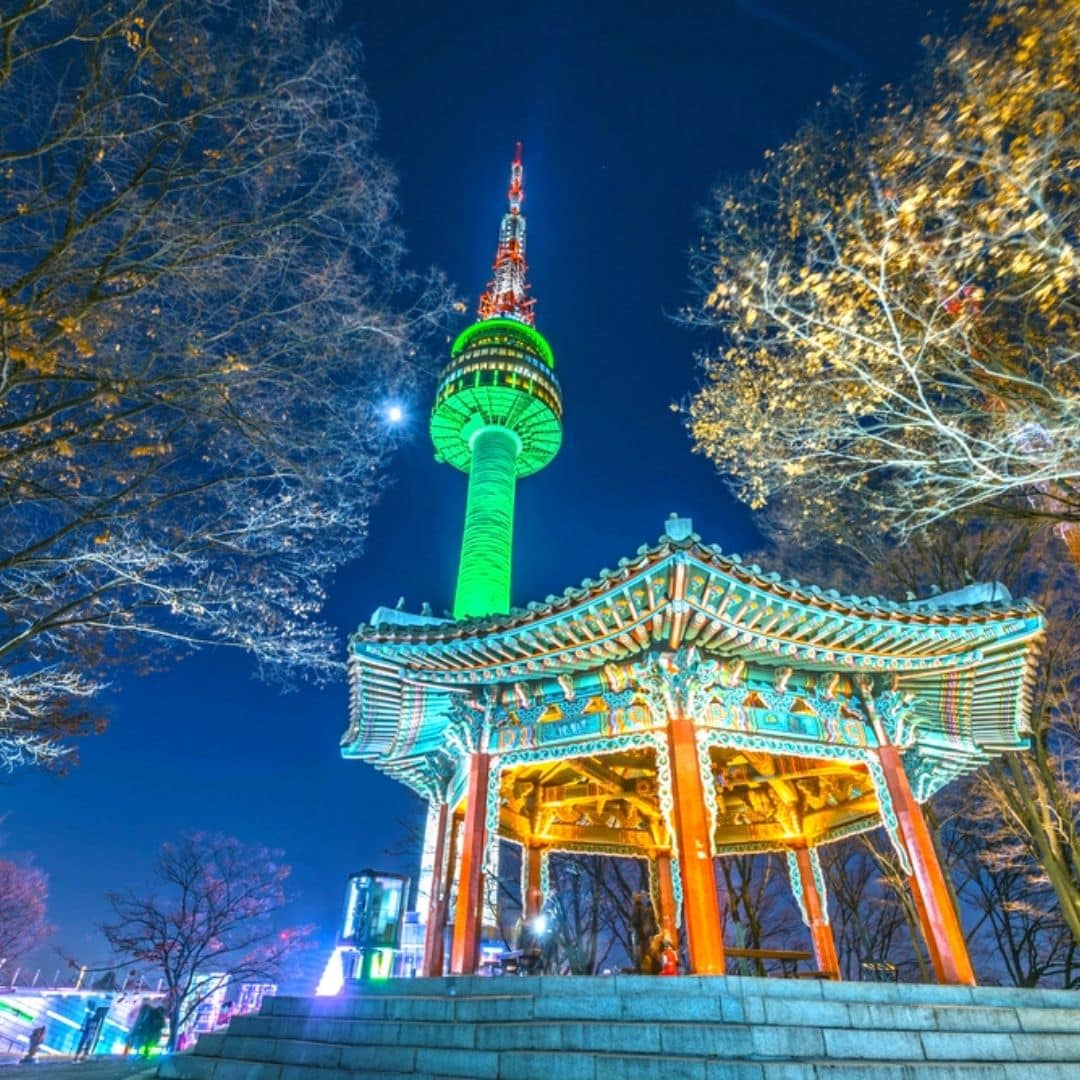
Morning : Learn about Korea’s history at the National Museum or War Memorial in Yeongsan. These fascinating museums have interactive exhibits and feature 1000’s of years of Korean history.

Morning : Take a day trip from Seoul to explore Gapyeong County. See the wonders of the Garden of Morning Calm and its idyllic nature. This is one of the most beautiful gardens in Korea.

Morning : Grab an early breakfast at Seoul Station and ride the high-speed KTX train directly to Seoul. It takes less than 4 hours and rides past rice fields, mountains, and the Korean countryside.

Morning : Take a day trip to the UNESCO World Heritage City of Gyeongju and roam the Gyeongju Historic Area. See Daereungwon Tomb Complex and Cheomseongdae Observatory.

Morning : Pack your bags and ride the KTX back to Seoul. Head to Hongdae for street food snacks or Michelin-starred delights in famous restaurants.

March to May

June To August

September to November

December to February
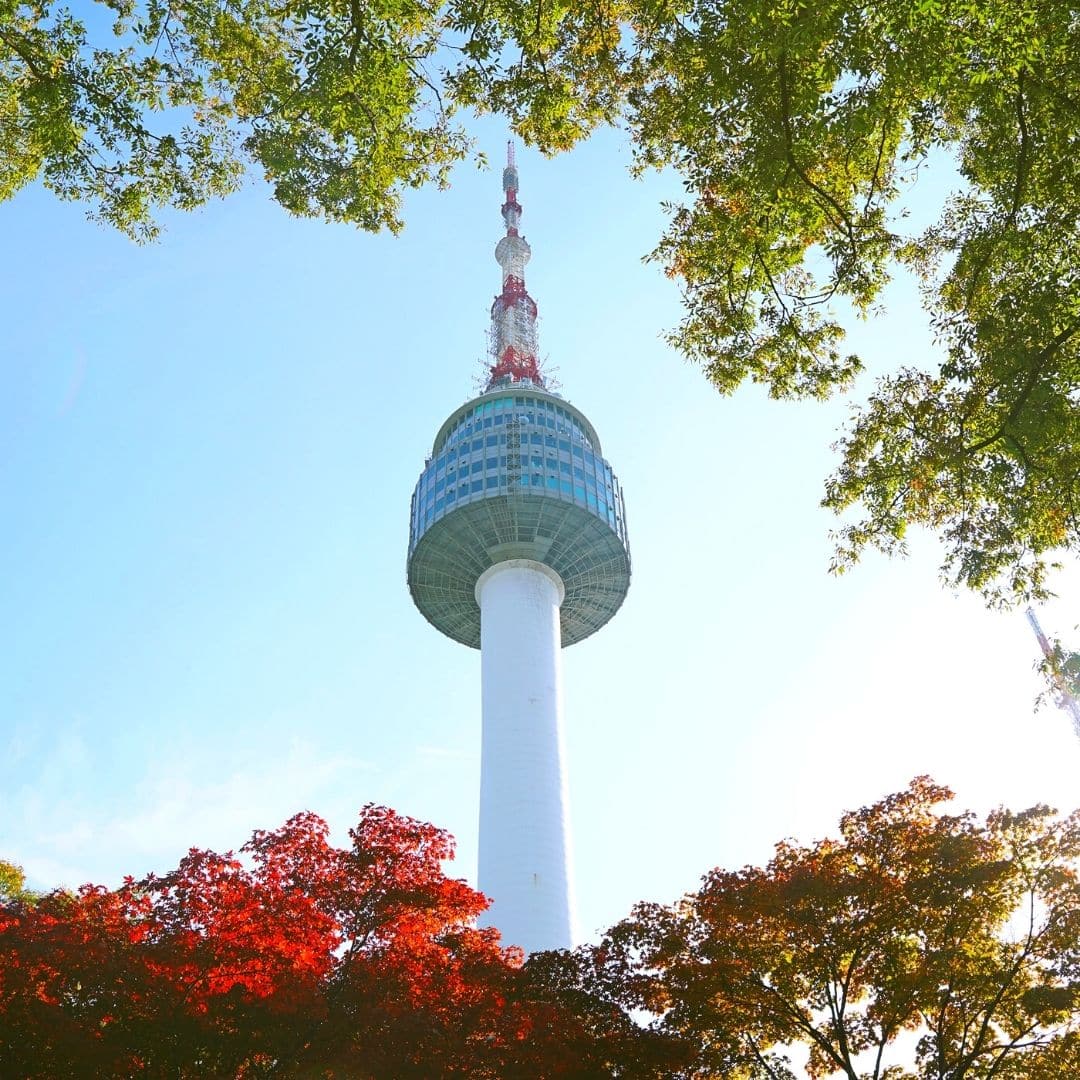
Korean Souvenir Costs
The best places to buy souvenirs in Korea are in the traditional markets and tourist areas. Insadong in Seoul has a lot of art and souvenir shops, as do the market streets around Bukchon Hanok Village. Hongdae offers lots of bargain snacks and souvenirs to take home.

Day Trip Costs From Seoul
A day trip from Seoul is a must to see a different side of Korea from what you’ll experience in the capital. Taking a day trip is a great chance to experience Korea’s countryside, nature, and hard-to-reach cultural attractions.

Korean Activity Costs
Seoul and other Korean cities have so much to offer to tourists. From historical palaces to exciting theme parks and attractions, it’s easy to have fun, explore, and discover more about Korea’s history.

Flight Costs To Korea
Flight costs depend on which airports you’re traveling from. A flight from Los Angeles to Incheon Airport (Korea’s main airport) costs around $1370 right now. Flight costs vary depending on the season and time of day.
Welcome to Best of Korea!
Please Sign Up for Updates
We hate spam. You can unsubscribe anytime.
South Korea Tours & Vacations

South Korea has emerged from history as a dynamic destination full of spirit and surprises.
Enchanting travelers with temples full of mystique, markets brimming with divine handicrafts, and some of the most beloved cuisine in the world - isn't it about time you surrendered to South Korea's charms?
Our South Korea trips
Let's create an exclusive trip for your group.
South Korea tour reviews
Filter by rating
South Korea Real Food Adventure
South Korea Highlights
Articles of South Korea
Dive into tradition with South Korea’s fearless haenyeo community
Should you travel solely based on food experiences?
6 ways you can go beyond Asia’s hotspots in 2023
A local explains why South Korean food is the best in the world
Japan or South Korea? How to choose your next holiday destination
Want to visit Lonely Planet’s 2018 Best in Travel spots? Here’s how.
5 of our favourite foods from around the world
Photoblog: Kimchi and colour in South Korea
South Korea at a glance
Capital city.
Seoul (9.9 million)
51.385 million
(GMT+09:00) Seoul
CALLING CODE
Electricity.
Type C (European 2-pin) Type E (French 2-pin, female earth) Type F (German 2-pin, side clip earth)
Learn more about South Korea
Geograhy and environment.
South Korea is located at the south end of the Korean Peninsula, between the Sea of Japan and the Yellow Sea. Separated from Japan by the Korean Strait and demarcated from the state of North Korea by Korean Demilitarized Zone (DMZ), South Korea's terrain is a mix of flat lowlands and forested mountains. The coasts of South Korea are rocky and jagged, with thousands of islands (mostly inhabitable) scattered off the coastline.
Culture and customs
South Korea draws some traditions and customs from other neighboring countries in Asia, with a culture that stems from Confucianism. This system of philosophical and ethical teachings was introduced to South Korea in the 4 th century through Chinese scholars and was quickly embraced by the wider population until it officially became the state ideology in the early 1900s.
Confucianism emphasizes respect for aging, elders and ancestors, an intrinsic hierarchy that runs through work and social life, and upholds traditional family roles so you’ll often see families living together in one house.
During your travels around South Korea, you’ll also see plenty of traditions such as the act of bowing when greeting people, women wearing traditional dress (hanbok) and the practice of taekwondo (Korean martial arts). As well as ancient beliefs, new generations of South Koreans are embracing a modernized culture, one full of K-pop, Korean cosmetics and popular foods like kimchi and tteokbokki.
History and government
South Korea’s had an often turbulent history dating back to around 8000 BC when it was known as just Korea, but the country’s most impactful conflict began in the 1500s with the attempted Japanese invasion. Korea went on to become a Japanese colony in 1910 following its annexation of the Korean Empire, which ended in 1945 at the conclusion of World War II.
The country was then divided into two parts, the northern part which was protected by the Soviet Union and the southern part which was protected largely by the United States. Both the northern and southern parts of Korea officially became North and South Korea in 1948 when the two regions failed to agree on forming one, united government.
In 1950, North Korea set in motion the Korean War which was intended to unify the two countries under communism. But after much destruction to infrastructure and loss of human life, a cease-fire was called in 1953 with both countries signing the 1953 Korean Armistice Agreement. The two countries have since agreed to work towards a final settlement (The Peace Treaty on the Korean Peninsula) to formally and officially end the Korean War.
South Korea now enjoys a fully prosperous economy with a capital economic standing similar to that of countries such as the United States, Japan, and various countries in Western Europe.
You can’t go to South Korea for shopping and not stop in Seoul – the country’s premier destination for all things fashion, electronics, street food and skincare. In this shopper’s paradise of a city, you’ll find traditional Korean items perfect for souvenirs to tech gadgets not yet available on Australia’s shores.
Some notable districts/destinations where you can shop ‘til you drop include:
- Myeongdong (shopping district)
- Dongdaemun Market (shopping center)
- Cheongdam-dong (luxury boutique area)
- Pyeonghwa (wholesale market)
Top 5 culinary delicacies of South Korea
1. bibimbap.
As one of Korea's standout dishes, bibimbap is a tasty concoction of meat, vegetables, egg, and rice. Soy sauce, chili paste, garlic, and sesame oil all add flavor to this amazingly colorful dish found everywhere in Korea.
Kimchi is hailed as a nutritional powerhouse - packing a healthy punch of nutrients, vitamins, and beneficial bacteria that makes it one of the world's healthiest superfoods. But most people don't eat these fermented vegetables for health reasons - it's the uniquely, tasty flavor and versatility that makes kimchi so popular in Korean cooking.
These delicious, savory pancakes are a standard of Korean cuisine. With hundreds of different varieties, jeon can be served with red meat, chicken, seafood, vegetables, tofu, and even edible flowers.
Similar to sushi, these highly popular rice-based morsels feature fish, beef, or crab, wrapped in seaweed with pickled or fresh vegetables. Available all over Korea, they are the perfect snack on the run or quick, cheap lunch to enjoy between sightseeing.
Arriving in Korea by the way of Mongolia, mandu are essentially boiled, steamed, or pan-fried dumplings. A cheap, street food favorite, mandu can be filled with everything from pheasant to tofu, cucumber, beef, and beyond. Try out these foods on our 8 day South Korea Real Food Adventure.
Top places to visit in South Korea
Whether you want to take a street food tour of the renowned Gwangjang markets, go shopping among the vibrant streets and check out some high-tech gadgetry or admire this city's soaring skyscrapers from Naksan at nighttime, Seoul can't be missed.
Explore the bustling city of Seoul on our 8 day South Korea Family Holiday.
Visit the fascinating Haedong Temple, explore the colorful Gamcheong Culture Village and take in the all 'round beauty of the second largest city in South Korea.
Travel to Busan on our 9 day South Korea Highlights tour.
Experience Jeonju like a local as you wander the Hanok Heritage Village in search of souvenirs, tasty treats, traditional houses and craft shops.
Admire the culture (and food) in Jeonju on our 9 day Essential South Korea tour.
4. Jeju Island
Wander South Korea's first ever UNESCO World Heritage listed site, Jeju Seongsan Sunrise Mountain/Castle, on the beautiul Jeju Island. And with volcanic landscapes and coastal rock formations, this laidback slice of heaven is well worth a visit.
Marvel at the beauty on Jeju Island on our 9 day Premium South Korea tour.
Further reading
Similar destinations.
Thinking about a trip to South Korea but still browsing other destinations? Check out tours to neighboring locations:
South Korea travel FAQs
Do i need a covid-19 vaccine to join an intrepid trip.
Trips from 1 January 2023 onwards
From 1 January 2023, Intrepid will no longer require travelers to provide proof of vaccination against COVID-19 (excluding all Polar trips and select adventure cruises).
However, we continue to strongly recommend that all Intrepid travelers and leaders get vaccinated to protect themselves and others.
Specific proof of testing or vaccination may still be required by your destination or airline. Please ensure you check travel and entry requirements carefully.
When is the best time to visit South Korea?
Autumn and spring are considered the optimal times to holiday in South Korea, as the extreme temperatures that are present during summer and winter can make travel uncomfortable at times. During autumn and spring expect moderate temperatures, a mild climate and less rain and humidity than at other times.
Do I need a visa to travel to South Korea?
SOUTH KOREA Australia: No - not required Belgium: No - not required Canada: No - not required Germany: No - not required Ireland: No - not required Netherlands: No - not required New Zealand: No - not required South Africa: No - not required Switzerland: No - not required United Kingdom: No - not required USA: No - not required
Your passport should be valid for a minimum period of 6 months from the date of entry into South Korea. . Most travelers do not need visas for Korea for stays of up to 30 days. You must also have an onward or return ticket.
If you are a male of Korean origin whose name appears on the Korean family register, you may be liable for military service even if you are traveling on your foreign passport.
The page is for general information only and may be subject to change. It is your responsibility to obtain relevant visa and travel information required for entry, departure and travel to each country or region you visit on your trip. You should confirm these with the relevant embassies and/or consulates.
Last updated: 20/11/2023
Is tipping customary in South Korea?
Tipping in some establishments (particularly more traditional ones) is considered impolite, and is sometimes indicated with a 'no tipping' sign! Western-style, tourist-orientated places, however, usually welcome and receive tips. Use your discretion.
What is the internet access like in South Korea?
With one of the most developed internet infrastructures in the world, accessing the internet is easy in South Korea. Wi-Fi hot spots and cyber cafes are easily found in the cities, although when traveling in remote areas please be aware that internet access may be harder to find.
Can I use my cell phone while in South Korea?
Travelers should be able to use their cell phones in South Korea's cities and urban areas, as coverage is good. As in other countries, rural and mountainous areas may have less mobile phone receptivity. Ensure global roaming is activated with your service provider before leaving home.
What are the toilets like in South Korea?
South Korea has a combination of squat toilets and western-style flushable toilets. It's a good idea to carry your own toilet paper and hand sanitizer or soap while on holiday, as these are rarely provided in public toilets.
What will it cost for a…?
South Korea's unit of currency is the South Korean Won. Here's what you can expect to pay for a:
- Can of soft drink = 1,000-3,000 WON
- Street food meal = 1,000-8,000 WON
- Basic restaurant meal = 10,000-15,000 WON
- Sit-down dinner at a nice restaurant = 13,000-39,000 WON
Can I drink the water in South Korea?
Tap water is considered safe to drink in many parts of South Korea unless otherwise marked. Ask your leader for guidance if you are unsure whether to drink tap water in the area you are traveling in.
Are credit cards accepted widely in South Korea?
Credit cards are usually accepted by hotels and large retailers. Smaller shops and restaurants may not accept credit cards, so always carry enough money to cover purchases, as paying with a credit card may not always be an option in South Korea.
What is ATM access like in South Korea?
ATMs are plentiful in large cities and urban centers, although not all ATMs accept foreign cards. Look for Global or Citibank ATMs, which usually accept cards from other countries.
What public holidays are celebrated in South Korea?
1 Jan: New Year's Day 27 Jan: Seollal 28 Jan: Seollal 29 Jan: Seollal 1 Mar: Movement / Independence Movement Day 3 May: Buddha's Birthday 5 May: Children's Day 6 Jun: Memorial Day 15 Aug: Liberation Day 3 Oct: Chuseok / Korean Thanksgiving 3 Oct: National Foundation Day (Gaecheonjeol) 4 Oct: Chuseok / Korean Thanksgiving 5 Oct: Chuseok / Korean Thanksgiving 9 Oct: Hangeul Day 25 Dec: Christmas Day
*Please note, South Korea public holidays may vary.
Do I need to purchase travel insurance before traveling?
Absolutely. All passengers traveling with Intrepid are required to purchase travel insurance before the start of their trip. Your travel insurance details will be recorded by your leader on the first day of the trip. Due to the varying nature, availability and cost of health care around the world, travel insurance is very much an essential and necessary part of every journey.
For more information on insurance, please go to: Travel Insurance
How do I stay safe and healthy while traveling?
From Australia?
Go to: Smart Traveller
From Canada?
Go to: Canada Travel Information
From the UK?
Go to: UK Foreign Travel Advice
From New Zealand?
Go to: Safe Travel
From the US?
Go to: US Department of State
The World Health Organisation also provides useful health information.
Does my trip support The Intrepid Foundation?
Yes, all Intrepid trips support the Intrepid Foundation. Trips to this country directly support our global Intrepid Foundation partners, Eden Reforestation Projects and World Bicycle Relief. Intrepid will double the impact by dollar-matching all post-trip donations made to The Intrepid Foundation.
Eden Reforestation Projects
Eden Reforestation Projects are helping to mitigate climate change by restoring forests worldwide; they also hire locally and create job opportunities within vulnerable communities. Donations from our trips support restoration across planting sites in 10 countries around the globe. Find out more or make a donation World Bicycle Relief
World Bicycle Relief provides people in low-income communities with bicycles to mobilize school kids, health workers, and farmers in far-out areas – giving them access to vital education, healthcare, and income. Donations help provide Buffalo Bicycles – specifically designed to withstand the rugged terrain and harsh environment of rural regions – to those who need them most. Find out more or make a donation
In My Korea
Complete South Korea Travel Guide 2024: Korean Travel Tips
Planning a trip to Korea but not sure where to start? First-time traveller who isn’t sure if Korea is the right country for your next trip? Worried about travelling to Korea and facing problems with the Korean language, culture, money, Internet, transportation, hotels, food, or etiquette? Then this complete South Korea travel guide is packed full of tips that you’ll certainly need.
You’ll find all the best Korean travel tips and advice in this article. Whether you’re a first-time traveller to Korea, or you’ve visited before, this South Korea travel guide will show what to see, when to travel, and which places to visit, as well as help you avoid any difficult situations or surprising culture shocks.
This guide is designed to walk you through everything you need to know to prepare for your trip to Korea. You can use it to plan your itinerary, to pre-book travel essentials, to learn about what festivals and seasonal events are on, and to find more reasons to want to travel to Korea right now.
Table of Contents
Affiliate Disclaimer : This site contains affiliate links and I may earn commission for purchases made after clicking these links.
What’s In This South Korea Travel Guide
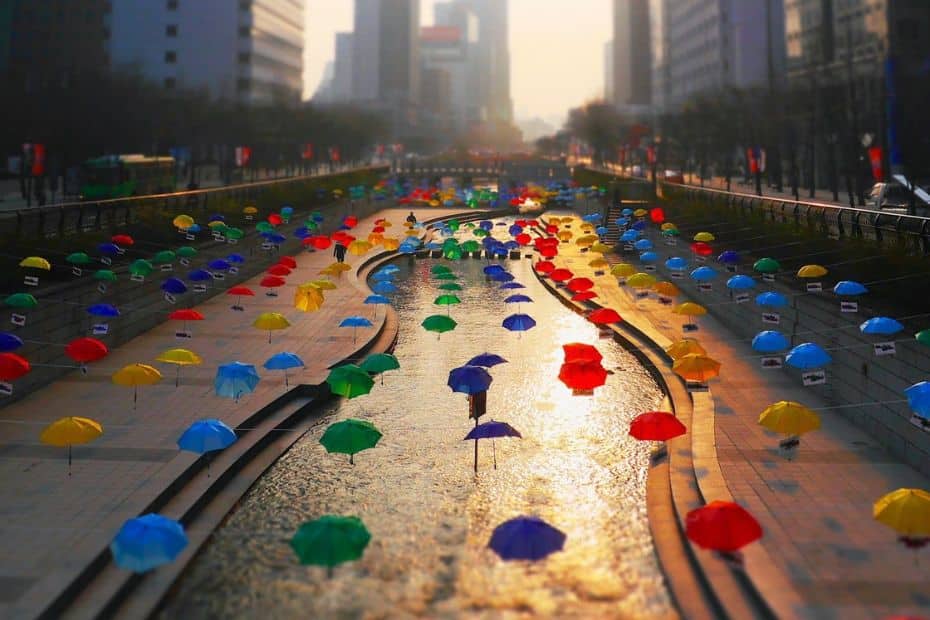
This South Korea travel guide covers all the essential information you need to plan a trip to Korea. This is useful for first-time travellers to Korea who might not be aware of uniquely Korean cultural and travel issues. Even if you’ve visited Korea before, I’m sure you can learn a lot from this travel guide.
This article contains lots of insights and knowledge about travelling to Korea and is quite long. I’ve added links in each section to articles that provide more information about each topic. Therefore, I suggest viewing this South Korea travel guide on a desktop computer as it will be easier to read.
What Are You Looking For?
To help make it easier for you to find what you’re looking for, I’ve broken this article into the following sections. Click the quick links below to jump straight there or keep reading through all parts.
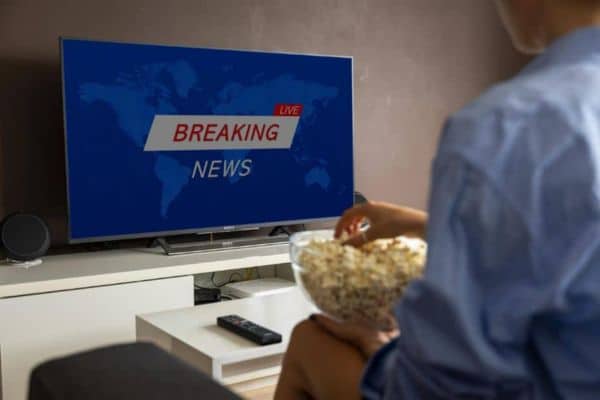
Latest Travel News
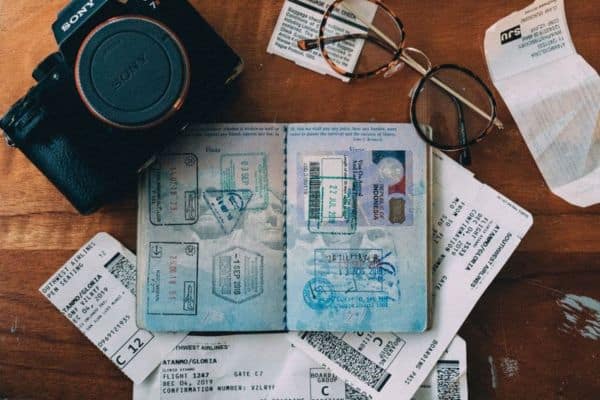
Entry Requirements
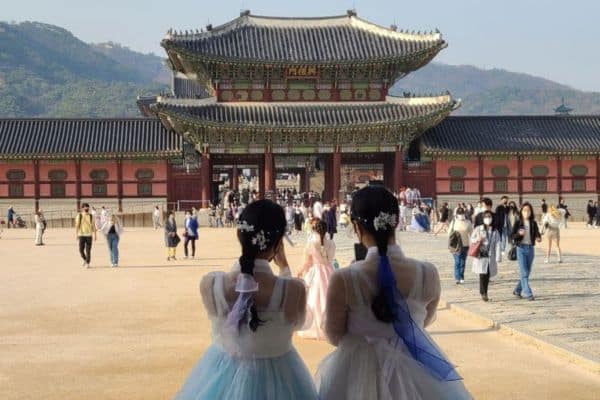
Why Visit Korea
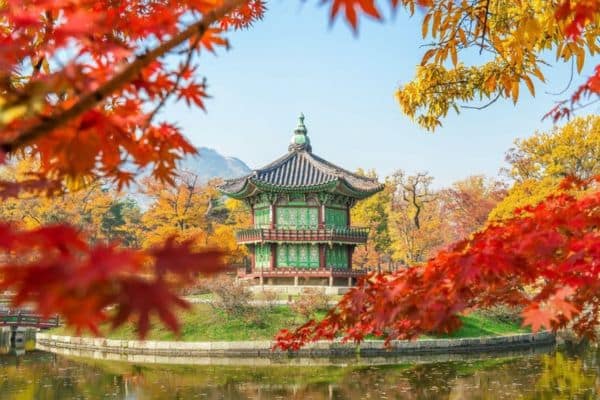
When To Visit
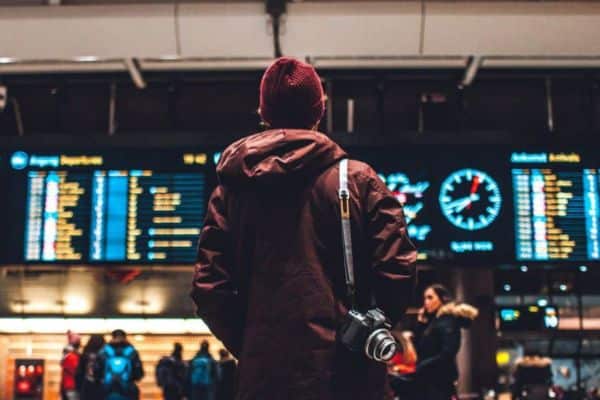
Flights To Korea
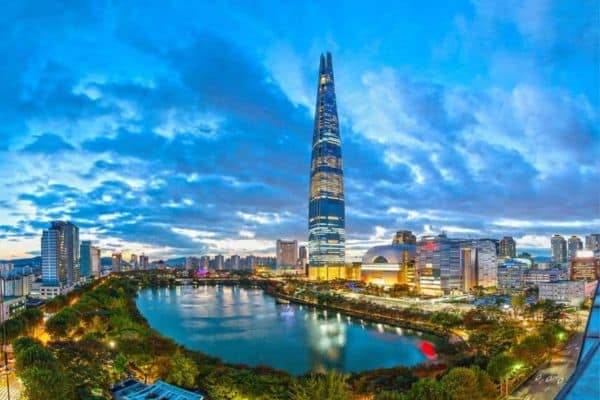
Where To Stay

Korea Travel Costs
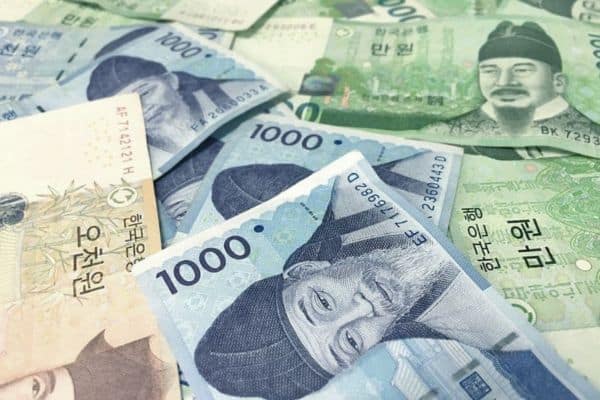
Travel Money
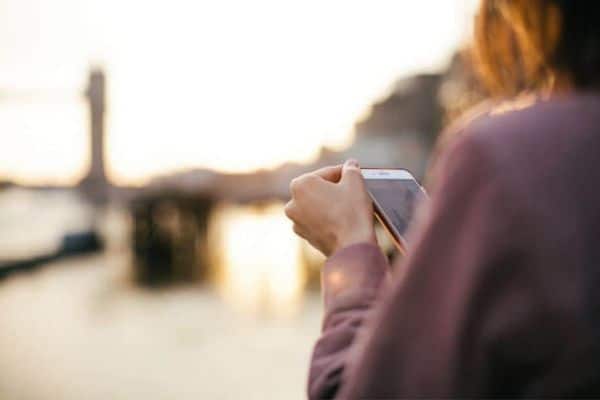
Phones & Internet
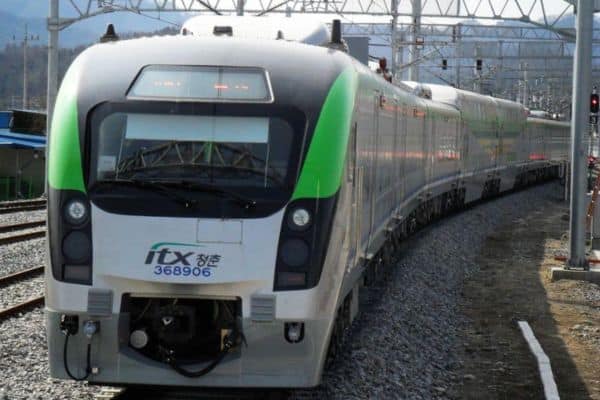
Public Transport
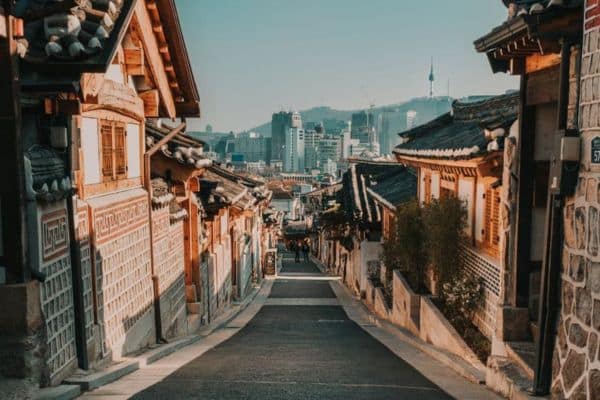
Where To Visit
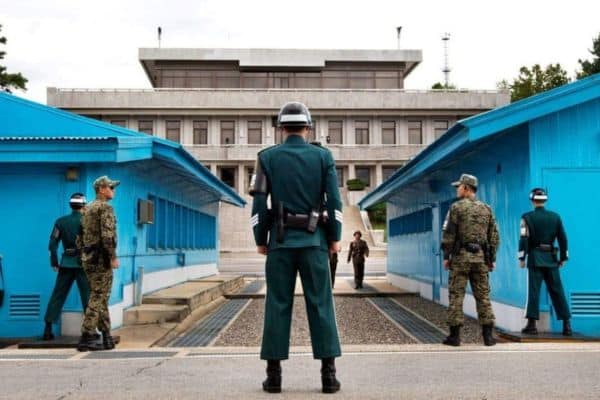
Seoul Day Tours
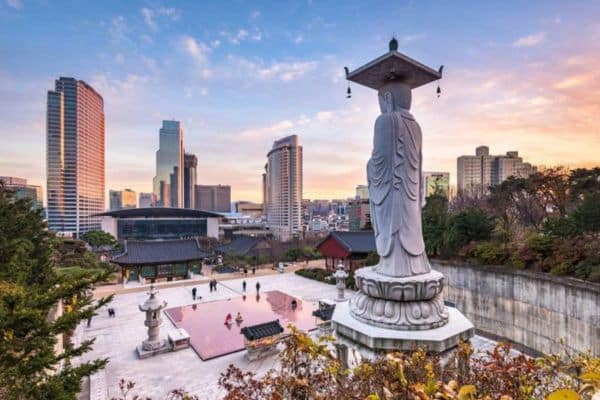
Sightseeing Spots
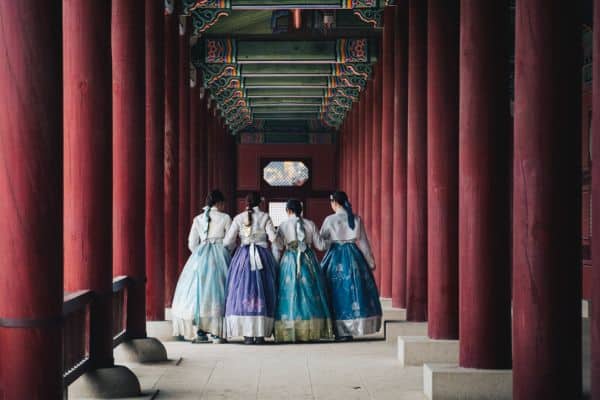
Korean Activities
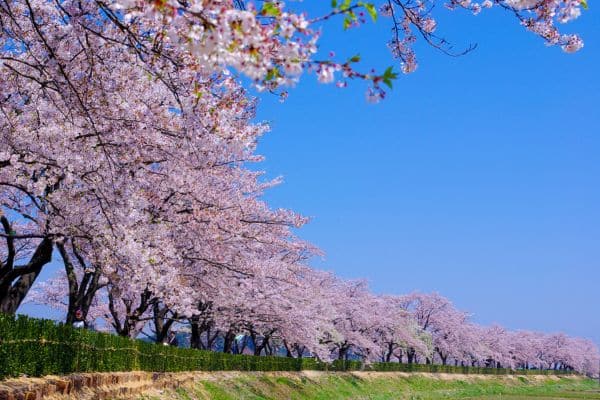
Korean Festivals
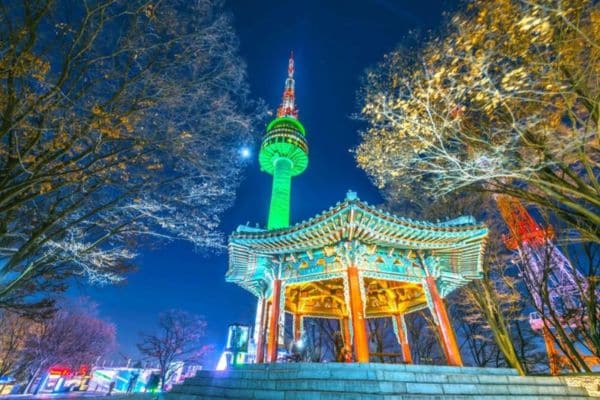
1-Week Itinerary
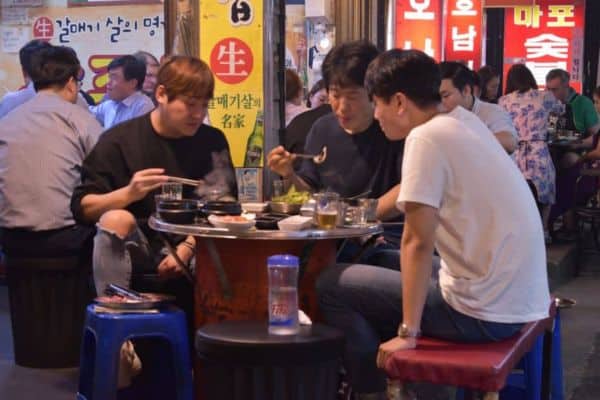
Culture Issues
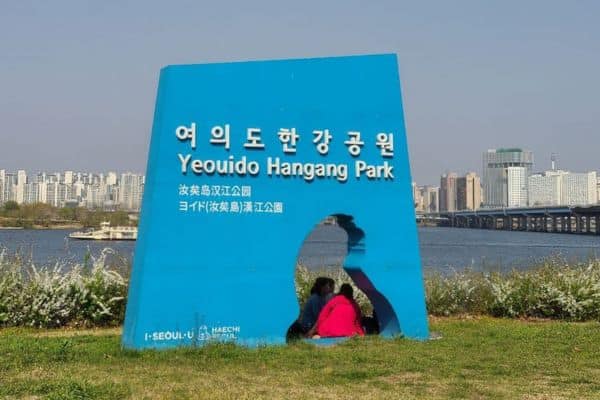
Language Issues
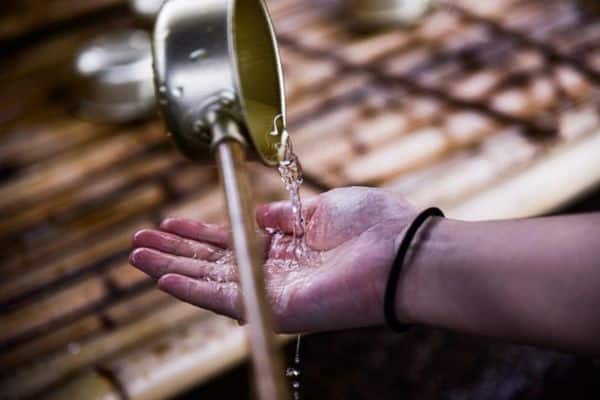
Health & Safety
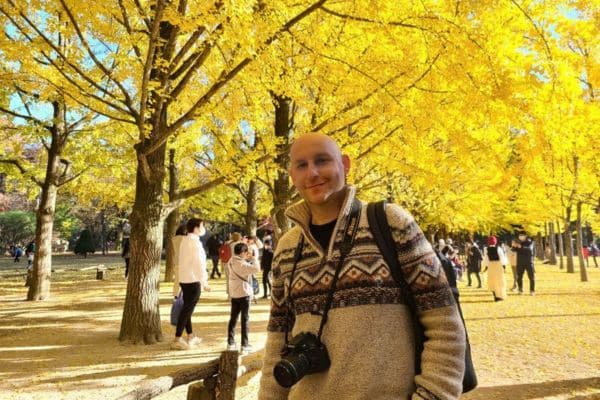
Korean Travel Tips
Korean Travel News And Travel Restrictions 2024
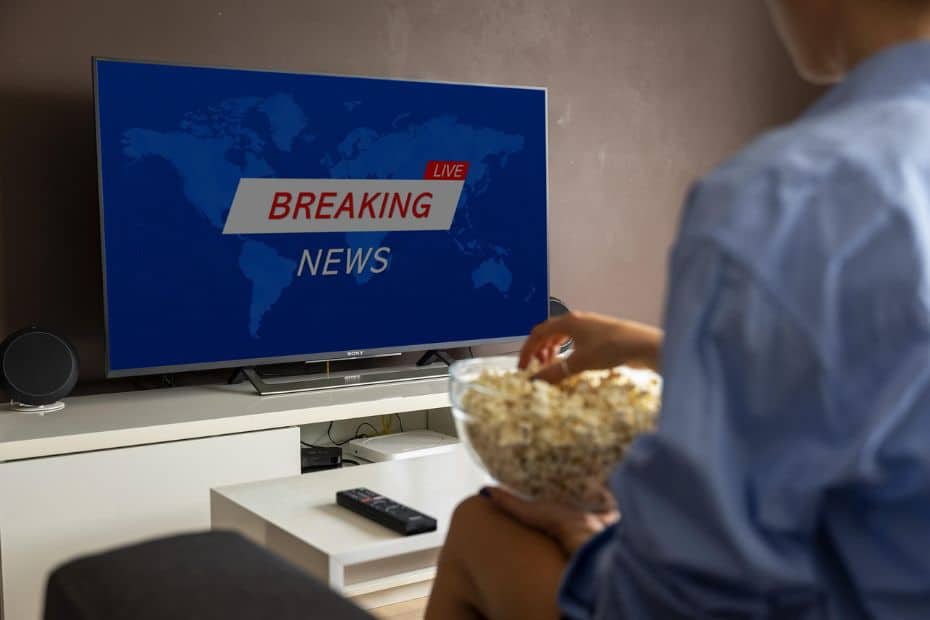
This section of the South Korea travel guide will show you the latest travel news and restriction updates, including any temporary or permanent changes to the entry process, visa changes, and other things that might affect travel to Korea. COVID-related updates will also be posted here.
Latest Korean Travel News In 2024
This section will detail any interesting or important travel news that could affect travellers to Korea, such as price increases in public transport, travel changes, new services, or closures.
The Korean government is aiming to boost tourism to Korea by doubling the amount travellers can claim back in tax when shopping in Korea. From 2024, travellers will be able to claim up to 5,000,000 KRW on eligible purchases with a limit of 1,000,000 KRW tax back per transaction. Source : Korea Herald
From August 2023, the price to travel on buses in Seoul is set to rise. Bus fares will rise to 1,500 KRW per journey. From October 7th, 2023, Seoul’s subway fares will rise to 1,400 KRW per journey. Other cities in Korea will enact similar rises throughout 2023 to cover higher costs of public transportation. Source : Korea Herald
From July 15th, 2023, the requirement to register your health condition through the Q-Code portal will be scrapped. Source : Korea Times
From July 3rd, 2023, children aged 17 years and younger, as well as adults aged 65 and older, will no longer need to apply for a K-ETA to travel to Korea. Furthermore, the validity period has been increased from 2 years to 3 years to make travelling to Korea easier. Source: K-ETA website .
From June 2023, Korea will end almost all pandemic-related restrictions for tourists and locals. Masks will no longer be necessary except in hospitals and infected people no longer face mandatory self-isolation (although the government still recommends 5 days self-isolation). Q-Code requirements haven’t been mentioned, however. Source : Korea Herald .
From April 2023 until December 2024, travellers from 22 countries won’t have to complete a K-ETA when visiting Korea, saving time and money for citizens of those countries. People from other countries still need a K-ETA. Source : K-ETA
The 22 countries temporarily excluded from the K-ETA requirement are Australia, Austria, Belgium, Canada, Denmark, Finland, France, Germany, Hong Kong, Italy, Japan, Macao, Netherlands, New Zealand, Norway, Poland, Singapore, Spain, Sweden, Taiwan, UK, US (including Guam).
From April 2023, all foreigners under 19 years old (18 and under) can now enter major royal palaces and tombs, including Seoul’s Gyeongbokgung Palace, for free. Previously, all foreigners were made to pay a fee to enter. Source : Korea Herald
From March 2023, a quarter of all buses in Seoul will refuse cash payments and allow only card payments using transportation cards, such as the T-Money card. Seoul’s night buses won’t be included for now, and 262 of Seoul’s 370 bus routes will still accept cash. Expect further increases in cash-free buses in the future. Source : Korea Herald
From February 2023, the base fare for a taxi journey in Korea has increased by 1,000 won to a minimum of 4,800 won. The distance that the base fare applies has also been shortened from 2km to 1.6km, which will make fares more expensive. Source : Korea Times
What Are the Current COVID Restrictions In Korea In 2024?
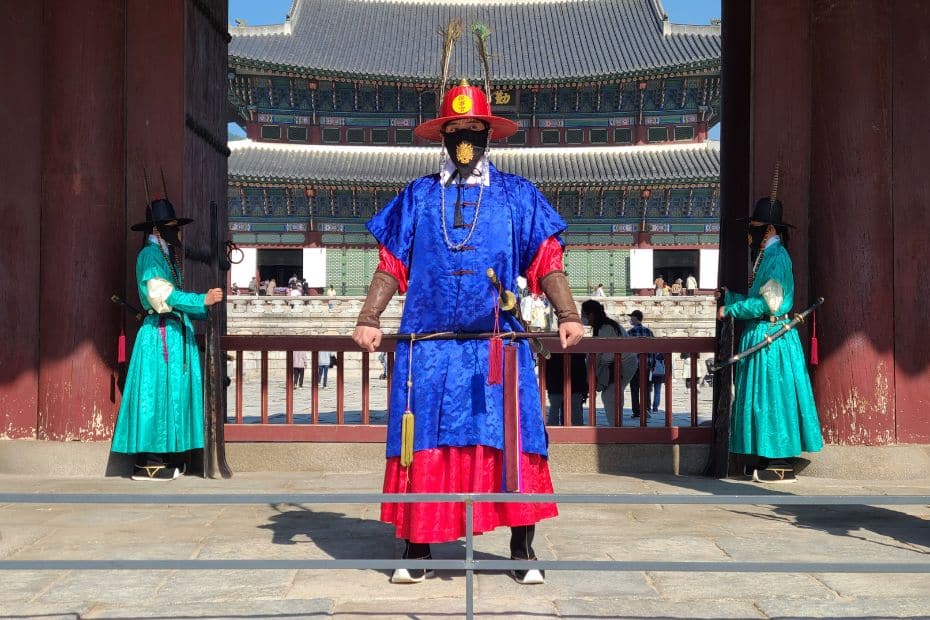
Korea has been removing COVID-related restrictions in the country throughout 2022 and 2023. It is no longer necessary to show a QR code to enter a building and restrictions involving masks and health checks have mostly gone. The latest COVID-related rules for Korea are as follows .
Masks : From Monday, March 20th, Korea has removed the mandatory mask rule for public transport, one of the final places that masks were required for the general public. The only places that require a face mask (from June 1st) are in medical facilities (hospitals). Masks are not mandatory elsewhere, including in schools, shops, restaurants or anywhere outside. Source : Korea Herald
Self-Quarantine : From June 1st, Korea will no longer impose a mandatory self-isolation period on infected people. The government instead ‘recommends’ a period of self-isolation for 5 days to reduce the chance of transmission to other people. Source : Korea Herald
For further details about the latest COVID requirements for entering or travelling in Korea, check out the second section of this South Korea travel guide, which has a list of all the updated entry requirements, including visas, tests, and other considerations.
Planning to visit Korea? These travel essentials will help you plan your trip, get the best deals, and save you time and money before and during your Korean adventure.
Visas & K-ETA: Some travellers to Korea need a Tourist Visa , but most can travel with a Korean Electronic Travel Authorisation (K-ETA). Currently 22 Countries don’t need either one.
How To Stay Connected : Pre-order a Korean Sim Card or a WiFi Router to collect on-arrival at Incheon Airport (desks open 24-hours). Alternatively, download a Korean eSIM for you travels.
Where To Stay : For Seoul, I recommend Myeongdong (convenient), Hongdae (cool culture) or Gangnam (shopping). For Busan, Haeundae (Beach) or Seomyeon (Downtown).
Incheon Airport To Seoul : Take the Airport Express (AREX) to Seoul Station or a Limo Bus across Seoul. Book an Incheon Airport Private Transfer and relax to or from the airport.
Korean Tour Operators : Tour companies that have a big presence in Korea include Klook , Trazy , Viator , and Get Your Guide . These sites offer discounted entry tickets for top attractions
Seoul City Passes : Visit Seoul’s top attractions for free with a Discover Seoul Pass or Go City Seoul Pass . These passes are great for families and couples visiting Seoul – you can save lots.
How To Get Around : For public transport, grab a T-Money Card . Save money on Korea’s high speed trains with a Korea Rail Pass . To see more of Korea, there are many Rental Car Options .
Travel Money : Use money exchanges near Myeongdong and Hongdae subway stations for the best exchange rates. Order a Wise Card or WOWPASS to pay by card across Korea.
Flights To Korea : I use flight comparison sites such as Expedia and Skyscanner to find the best flights to Korea from any country. Air Asia is a good option for budget flights from Asia.
How To Learn Korean : The language course from 90 Day Korean or Korean Class 101 both have well-structured lessons and lots of useful resources to help you learn Korean.
Current Requirements To Travel To Korea In 2024
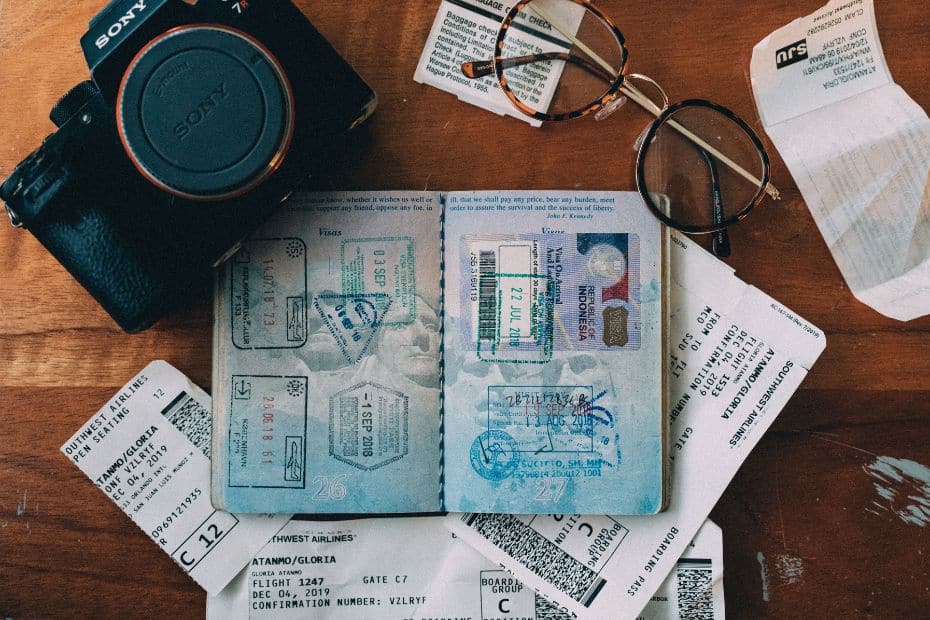
This part of the South Korea travel guide is for tourists . If you plan to travel for business, employment, or other reasons, check your nearest Korean embassy for the latest travel requirements.
Most of the restrictions and requirements for travelling to Korea have now been scrapped. You can see what entry and travel rules are in place for Korea in the table below:
The following section provides more information and exceptions about these requirements:
COVID-positive travellers should avoid travelling to Korea : To avoid infecting others on the way to Korea, as well as in Korea, the Korean government recommends that you shouldn’t travel to Korea if you exhibit COVID-symptoms or have tested positive. Self-quarantine is mandatory in Korea.
There are no PCR or other testing requirements : It is not necessary to take a PCR or other test before travelling to Korea. However, you will be asked to take a test if you show symptoms of COVID or similar illnesses when travelling to or arriving in Korea.
There is no quarantine on arrival : Travellers to Korea no longer need to quarantine when entering Korea. From June 1st, there is only a ‘recommended’ 5 day self-isolation period for infected travellers, but this is not enforced.
Complete the self-health check before or on arrival : From July 15th, 2023, travellers to Korea no longer need to complete a Q-Code self-health check or declare their health status on arrival.
Apply for a K-ETA or tourist visa before travelling : You need to apply for either a K-ETA or tourist visa for South Korea before flying to the country. Entry will be prohibited without the correct one. From April 1st, 2023 until December 31st, 2024, 22 countries are excluded from the K-ETA.
If you’re not sure which of these you need to apply for, more information is provided in the next section of this South Korea travel guide about the K-ETA and tourist visa for Korea.
K-ETA (Korean Electronic Travel Authorisation)
The K-ETA (Korean Electronic Travel Authorisation) is an online travel authorisation that visa-free foreign visitors aged 18 to 65 must obtain before entering the Korea for tourism, visiting relatives, participating in events or meetings, and for business purposes other than profitable activities.
Tourists from 112 eligible countries need to apply for a K-ETA before travelling to Korea and won’t be allowed to board a flight to Korea without it. The approval process isn’t difficult, but requires accommodation details, travel dates, and personal details such as passport number, etc.
From April 1st, 2023 until December 31st, 2024, the Korean government has decided to suspend the K-ETA requirement for travellers from the following 22 countries:
Australia, Austria, Belgium, Canada, Denmark, Finland, France, Germany, Hong Kong, Italy, Japan, Macao, Netherlands, New Zealand, Norway, Poland, Singapore, Spain, Sweden, Taiwan, UK, US (including Guam).
The aim is to reduce the burden of travellers coming to Korea and to encourage more people to visit Korea during the ‘Visit Korea Year’, which runs during 2023 and 2024.
Source : K-ETA website news .
From July 3rd, 2023, the Korean government will no longer ask for travellers who are 17 years and younger, or 65 years and older, to apply for a K-ETA when visiting Korea. These are ages based on the time you travel to Korea, not the age when you apply to travel.
Furthermore, the validity period of the K-ETA is now 3 years, not 2 years. The Korean government has decided to extend the validity period to make it easier for people to travel to Korea.
The K-ETA is based on your nationality , not the country you’re travelling from. That means, if you require a tourist visa from your home country (e.g. the Philippines), but are travelling from a country that requires a K-ETA (e.g. the USA), you can’t use the K-ETA to travel to Korea.
Tourists should apply as far in advance as possible at the official K-ETA website. If you would like to know more about the K-ETA, check out my article explaining what is the K-ETA . The K-ETA costs 10,000 KRW (about $9.00 USD). If you are charged more than this, you’re on the wrong site.
Official K-ETA website
Not sure if you need a K-ETA? Check out this infographic to find out.
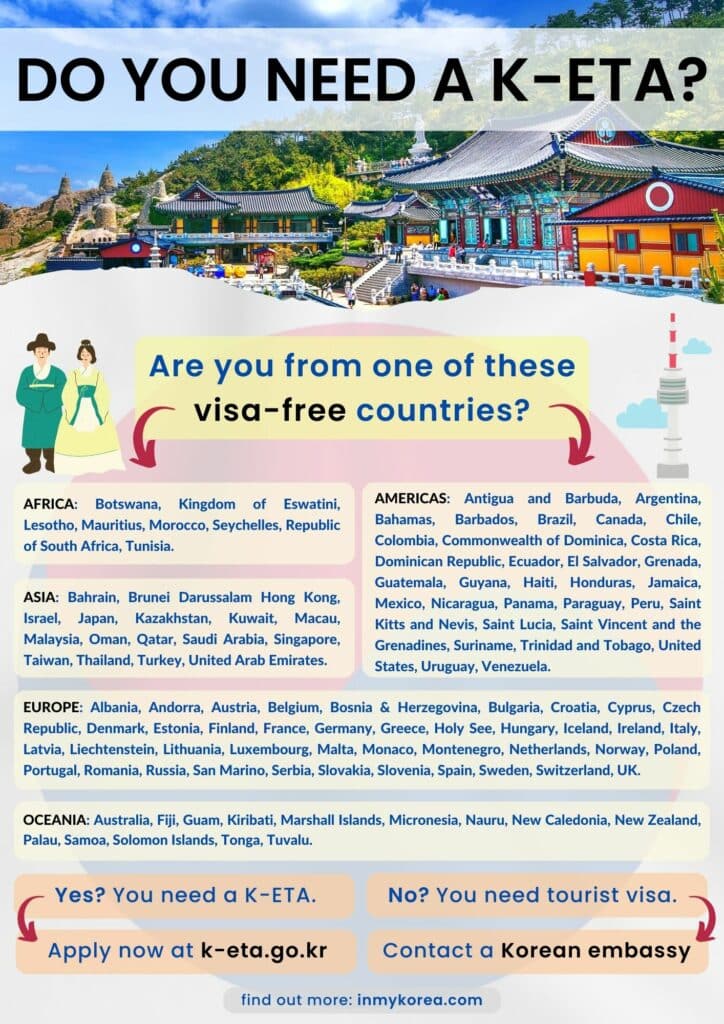
Will The K-ETA End In The Future?
The K-ETA will continue for the indefinite future. It is not a pandemic-related travel restriction but a permanent feature that just happened to start in 2021. The Korean government have stated that the K-ETA will be ongoing and other countries and areas, such as the EU, are planning similar ETAs.
Update : In July 2023, the Korean government stopped requiring children 17 years and younger and adults 65 years and older to apply for a K-ETA. The validity period was also increased to 3 years.
Update : In April 2023, the Korean government suspended the K-ETA for travellers from 22 countries (listed previously). This is in an effort to reduce the burden on travellers visiting Korea during the ‘Visit Korea Years’ of 2023 and 2024. This lasts until December 2024, but could possibly go on longer.
Tourist Visas For South Korea
Tourists that aren’t from one of the 112 countries that require a K-ETA to travel to Korea will need to apply for a tourist visa. This includes nationals from countries such India, Indonesia, Pakistan, and the Philippines. Tourist visas are based on nationality (passport), not country of residence.
The process to apply for a tourist visa differs depending on the country and may be as simple as submitting an application at the Korean embassy in the country you live in. For other countries, it may be necessary to submit extra information like bank statements and a full itinerary.
If you need a tourist visa for South Korea, contact your nearest Korean embassy as soon as you can to start the process. Tourist visas may be rejected, delayed, or take longer than expected. For some countries, such as the Philippines, it is necessary to apply through a specialist visa agency.
Transit Tour Visas For South Korea

Visa-free entry for foreign transit passengers at Incheon Airport will resume from May 2023 after being suspended for 3 years during the pandemic. There are two types of visa-free transit entry methods for travellers to Korea, they differ in length, requirements, and eligibility.
The first type of visa-free entry for transit passengers is open to all travellers to Korea and allows entry for 3 days, as long as they take a transit tour from Incheon Airport. The second type of visa-free entry for transit passengers is available for 30 days, but only from travellers from 36 select countries.
Visa-Free Entry For Transit Passengers (3 Days)
From May 15, 2023, travellers from any country can travel from Incheon Airport to the Seoul Metropolitan area for up to 3 days, as long as they book at least 1 transit tour from Incheon Airport. If Korea is not their final destination, they’re free to explore more of Seoul after the tour.
There are a wide range of transit tours available from Incheon Airport, including cultural, historic, food, shopping, and entertainment tours. See the sights of Seoul’s most popular places in a few hours, or stay for longer and see more. You can find out more about transit tours from the Visit Korea website .
Requirements : To be eligible for a transit tour visa, travellers must:
- Have an onward flight to their home country or a 3rd country after Korea.
- Participate in a transit tour program by a designated travel agency.
- Stay within the Seoul Metropolitan area only.
- Have more than 2 hours between connecting flights.
Eligible countries : Visa-free entry with a transit tour is open to passengers of all countries, as long as they meet the above requirements.
Tip : If you have a transit tour in Korea, I recommend staying in Hongdae , as there is a direct train from Incheon Airport to Hongdae called the All-Stop Airport Line. Hongdae is also a really fun place where you can see lots of culture, try Korean dishes, and pack your suitcase with Korean souvenirs.
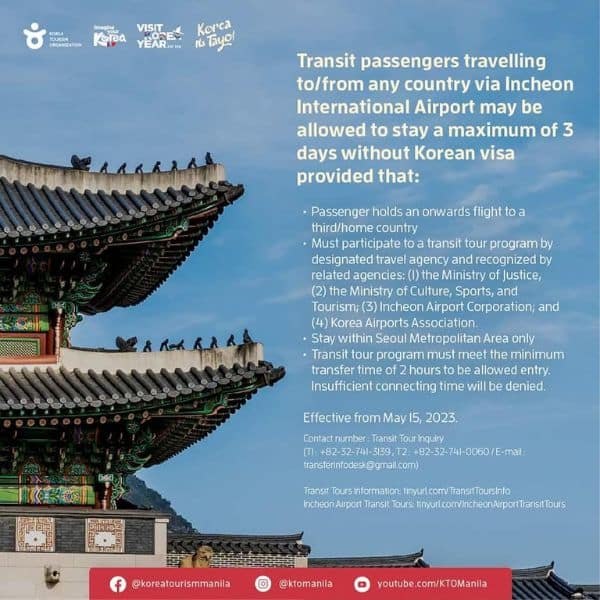
Visa-Free Entry For Transit Passengers (30 Days)
This will allow travellers from 36 countries to enter and stay in Korea for up to 30 days without a Korean visa. Travellers must be travelling to or from one of these 36 countries to be eligible to stay in Korea without a visa. This includes passengers who are not citizens of those countries.
Requirements : To be eligible for a visa-free entry as a transit passenger, travellers must:
- Hold an onward flight to any of the 36 countries mentioned below.
- Have no illegal stay records of any kind, nor have been denied entry to Korea.
- Not have exceeded a maximum of 3 days stay in any other transit airport.
Eligible countries : Travellers from the USA, Canada, Australia, New Zealand, and 32 EU countries (see picture below) can stay for up to 30 days, as long as the above-mentioned requirements are met.
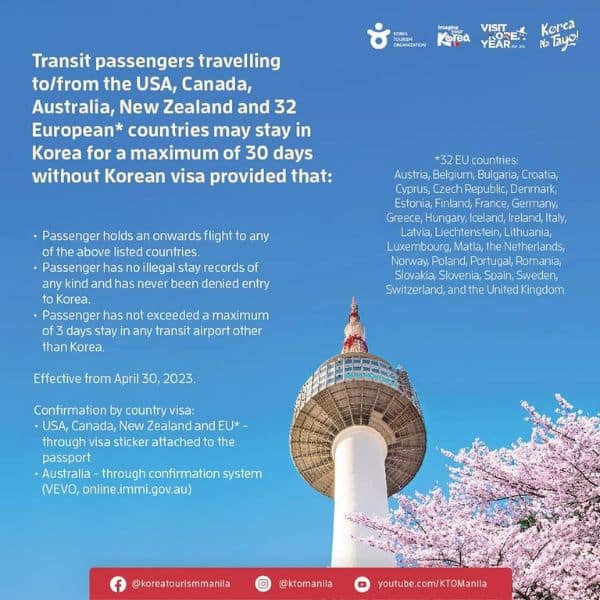
Why You Should Travel To Korea In 2024
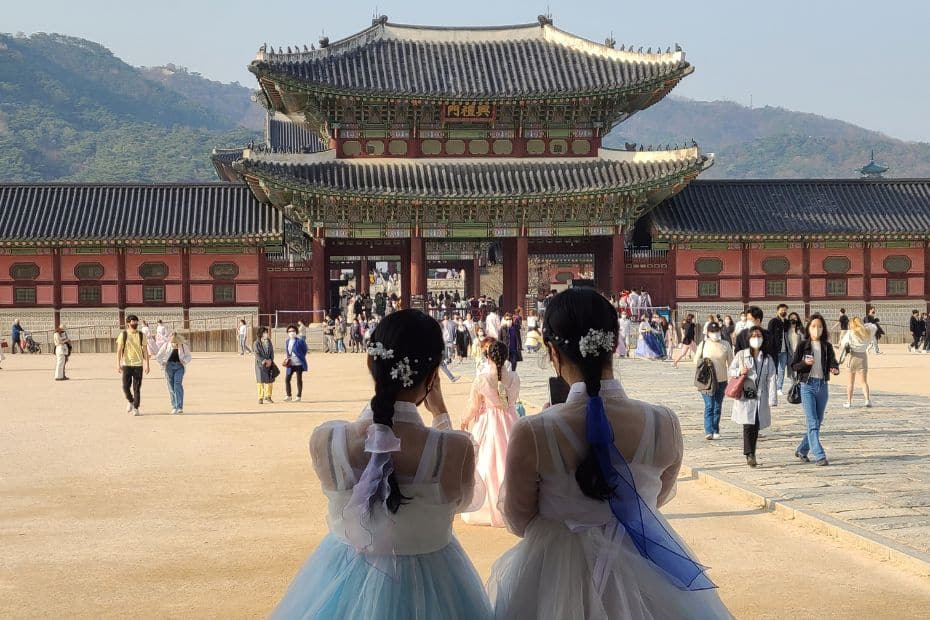
There’s not enough space in this South Korea travel guide to write down all of the reasons why you should travel to South Korea. Korea is an under-appreciated gem that has so much to discover and experience that’s completely different from what you’ll find in other countries.
Much the way that Japan has a very distinct culture and history, Korea has lots of unique, appealing places to see, people to meet, history to learn about, and natural sights to appreciate. Many people only see a small slice of Korean culture and beauty through modern media, but there’s a lot more.
Here are some of the reasons you should travel to Korea:
- Delicious foods and tasty seasonal dishes.
- Four distinct seasons that offer a variety of views.
- Fascinating history to learn about and explore.
- Stunning mountains and beaches for outdoor lovers.
- Unique and unusual festivals throughout the year.
- Friendly locals and a safe country to travel around.
- Modern, high-tech cities that are clean and efficient.
- Welcoming Buddhist temples and temple stays.
- Cheaper than most other developed countries.
- A shopper’s paradise with many markets and malls .
- Korea really wants you to come and visit.
Korea wants you to visit so much that they declared 2023-2024 the Visit Korea Year . This two-year period, confusingly referred to as a single year, is set to feature loads of events and activities to draw tourists to Korea, and includes promotions for discounted flights, accommodation, and food.
Some of the events you can expect to see during the Visit Korea Year(s) include K-Pop concerts, e-sports competitions, food festivals, and cultural celebrations. There’ll be K-Cultural stars involved, too, including your favourite K-Pop and K-Drama stars. Get ready to travel to Korea soon!
Want to know what you can do in Korea that you can’t do in other countries? Check out these amazing unique Korean experiences that should definitely be on your Korean bucket list.
The Best Time To Visit Korea
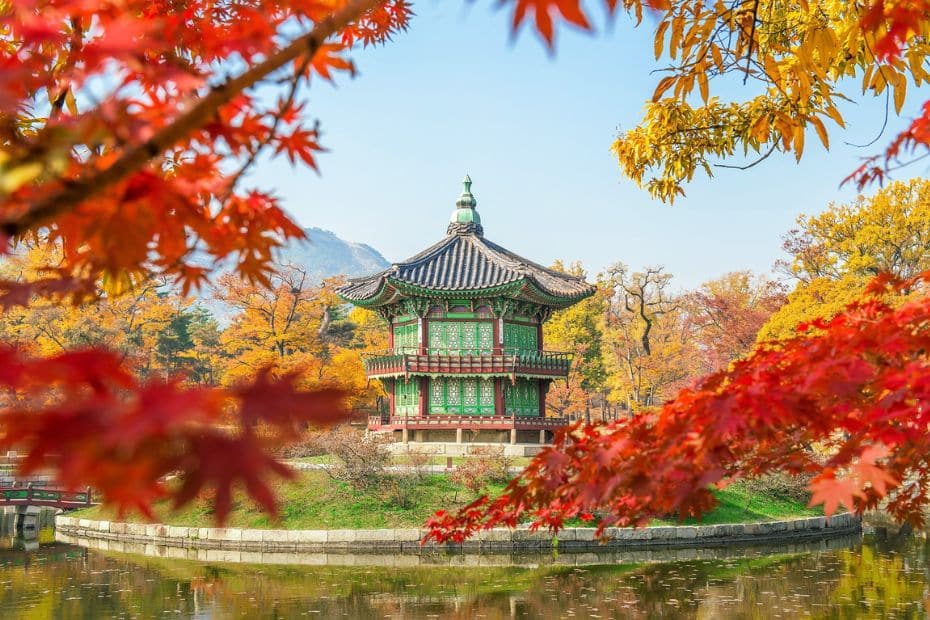
The best time to visit Korea is in spring (late-March to May) or autumn (mid-September until mid-November). These seasons have the most comfortable weather, ranging from 10 to 30 degrees Celsius, an average amount of rain, and also have the most festivals and events.
My favourite months to travel in Korea are April and October . Early-April is when cherry blossoms come out and the weather warms up enough to stop wearing a jacket. October in Korea is a beautiful month when autumn foliage sweeps across the country and the weather is warm and calm.
When you travel to Korea, the season you travel in can have a big impact on what you can see, eat, and do. This section of the South Korea travel guide is one of the most important and if you want to travel to Korea in the future, I recommend learning about Korea’s seasons before making plans.
What Can You See In Korea Each Season?
Although spring and autumn are undoubtedly the best time to visit Korea, there are plenty of reasons to visit in other seasons, too. Visitors to Korea who are restricted to travelling during certain times, such as during school or work holidays, needn’t be put off by travelling in summer or winter.
Here’s a summary of what you can see and do in each season in Korea:
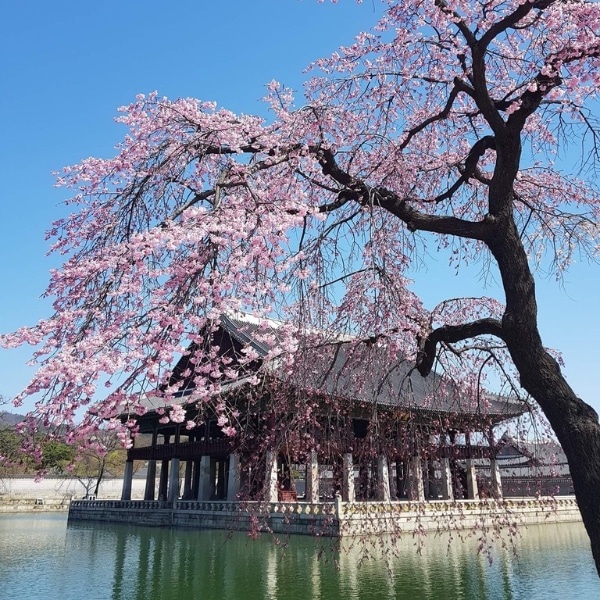
Spring: Cherry Blossoms, Blooming Nature, Culture Festivals
Spring is an amazing season to travel in Korea as you can see colourful plum blossoms (Mar), cherry blossoms (Mar-Apr), and many other bright sights. The warm weather allows people go out more to enjoy cultural activities and spring festivals , such as the Lotus Lantern Festival and Jindo Sea-Parting Festival, and also trekking, hiking, and cycling. Spring is one of the most popular times to travel in Korea for locals, so expect places to be busy, especially around cherry blossom season.
Check out my cherry blossom guide for the best places to see cherry blossoms in Korea.

Summer: Beaches, Korean Desserts, Water Sports, Camping
Summer is a difficult season for travellers due to the high humidity and heat. June and July are rainy season in Korea and it may rain for days on end, causing people to change travel plans to indoor activities. In late July and August it gets very hot, which is good for going to the beach and enjoying water sports or water parks, which Korea has many of. Evening activities like hiking, drinking in rooftop bars, and visiting night markets are great ways to get out in summer when it’s not as hot.
Check out my guide to Korean summer activities for the best places to have fun during summer and rainy day activities in Busan in case the weather isn’t so good.
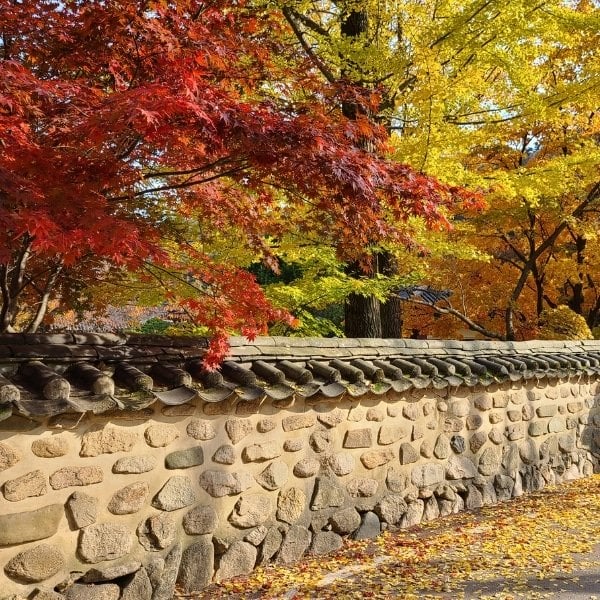
Autumn: Foliage, Festivals, Fresh Foods, Harvest Festivals
Autumn is another incredibly popular time to travel in Korea, especially in October when the autumn foliage is at its best. The foliage really brings everything to life, adding shades of colour to plain palace walls, mountains, and parks. The calm weather is warm with clear skies, making it perfect for going into nature to see the fresh fruits and other harvest goods, as well as join in harvest and cultural festivals. Enjoy local Korean dishes, fresh from the farm to your table.
Check out my guide to autumn foliage in Korea for the best places to see the leaves.
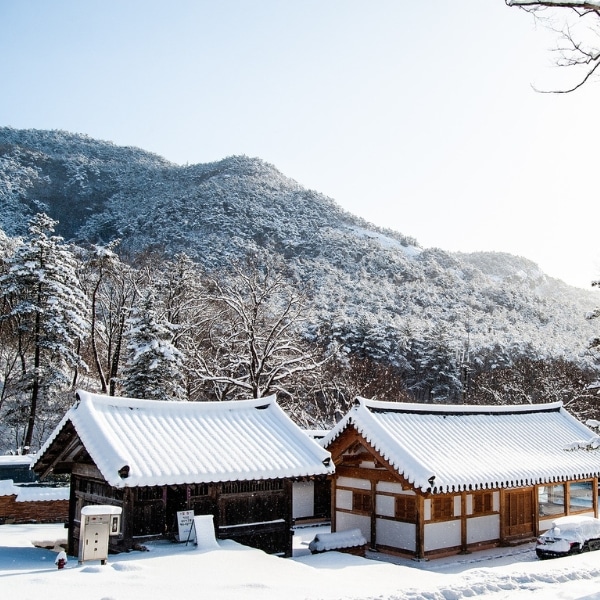
Winter: Snow, Winter Sports, Ice Fishing, Light Festivals
Winter in Korea is often neglected due to the cold weather, but is actually a very nice time to travel with delicious winter foods to try. It’s the driest time of year with blue skies making everything bright and beautiful. When it snows, sights look even more incredible. Jeju Island is a great place to visit during winter as it has fresh citrus and colourful camellia flowers to see. You can enjoy winter sports, festivals and activities, such as ice fishing, ice skating, sledding, and more.
Check out my guide to Korean winter activities for the best places to have fun during winter.
What Is The Weather Like In Korea?
The weather in Korea follows a similar pattern each year, spread over five distinct seasons. As well as spring, summer, autumn, and winter, Korea also has a rainy season, which starts around mid-June and finishes mid-July. It doesn’t constantly rain during rainy season, but may do for several days.
There’s always something to do in Korea, no matter what the season. Even rainy season in Korea is fine for travelling, as long as you plan lots of indoor activities and can be flexible with your schedule. Don’t let the weather in Korea put you off visiting, you’ll find plenty to do in each season.
Here’s a summary of the weather in Korea each season:
The graph below shows you the average temperature each month in Seoul. This is an average temperature, so some days will be much hotter and others much colder. I’ve experienced summer temperatures of over 35 degrees and winter nights of -20, so be prepared for both.
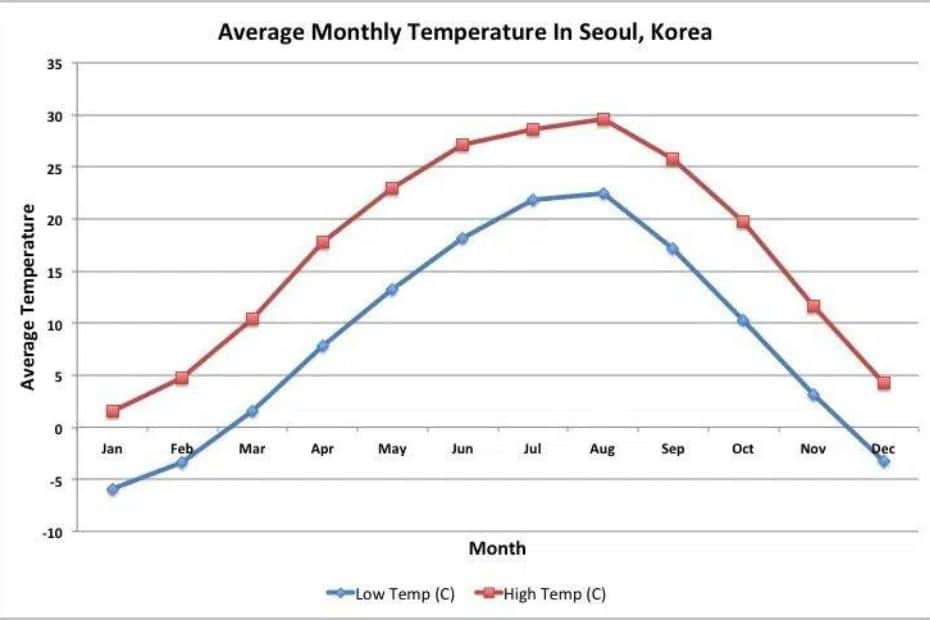
The table below shows the average rainfall for each month in Korea, based on records from climate-data.org . The summer months have the most, while winter in Korea is very dry. The rainfall in the winter months can turn to snow when it’s cold enough, too.
There will be more information about the sights, festivals, and events you can enjoy in Korea in later parts of this South Korea travel guide. Check them out for travel ideas for your trip to Korea.
How To Book Flights To Korea
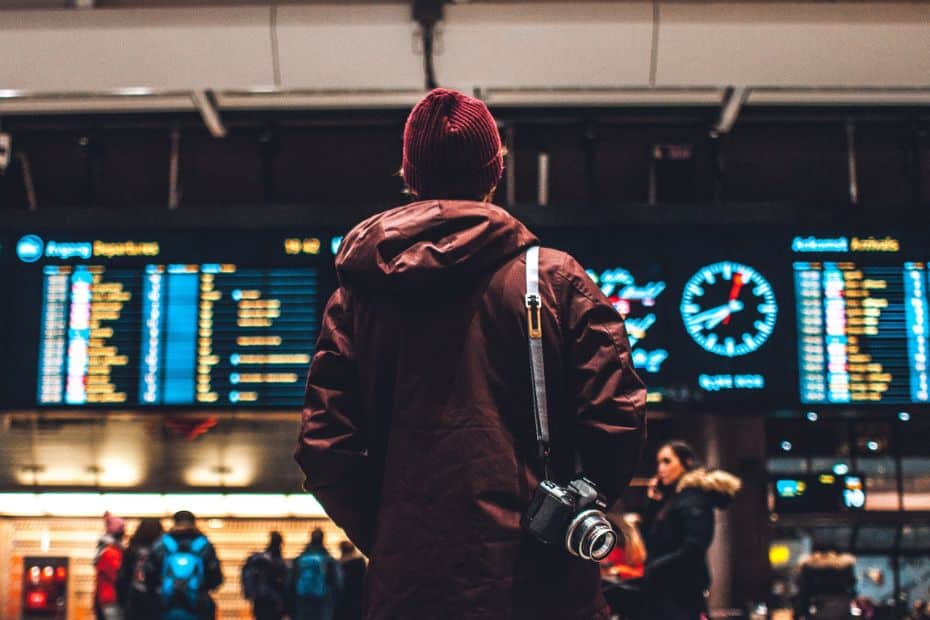
Flying to Korea in 2024 is getting easier with more airlines offering direct or connecting flights to Korea and budget airlines adding more routes to Korea from other parts of Asia and as far away as the USA. There aren’t as many routes as there were in 2019, but they are returning month by month.
Booking a flight to Korea is one of the first things most people do and finding the right flight can really affect your travels. Choosing the right flight not only affects how much money you need to spend, but also when you’ll arrive, how you’ll get to your hotel, and where you’ll arrive in Korea.
Check out my guide to booking flights to Korea to discover the best ways to book a flight to Korea, including the best time to book (21 to 127 days before travel), where to get cheap flights, the various airlines that offer flights to Korea, and lots more.
Arriving At Incheon Airport
Most flights to Korea arrive at Incheon Airport, which is near Seoul. It takes about an hour to get to the centre of Seoul from Incheon Airport and there are various transportation options including a high-speed train, subway, limo buses, taxis, and private transfers.
The best option for transferring from Incheon Airport to your hotel is usually a limo bus as these run to popular areas of Seoul, such as Myeongdong, Hongdae, Gangnam, and Insadong. There’s also a direct train to Seoul Station and a subway that goes to Seoul Station via Hongdae.
Arriving during the daytime gives you the best options for getting from Incheon Airport into Seoul, while nighttime flights will leave you fewer options. There are a few night buses that run, but late arrivals will either need to stay at the airport or book a private transfer or taxi instead. More details about taking a taxi from Incheon Airport can be found in my guide to taxis in Korea .
If you want to book a private transfer direct to your hotel from Incheon Airport, contact Jerry Heng , a freelance driver. I want to recommend Jerry as he has years of experience organising airport pick-ups and drop-offs, as well as personalised tours around Korea. He’s also a friendly guy.
Recommended Flight Comparison Sites
I suggest checking at least one flight comparison website before booking any flights. You can alter the arrival and departure times, flight duration, choose direct or indirect flights, and sort by price to find the perfect flight for you. Skyscanner is my preferred comparison site, but they’re all useful.
Take time to change the dates and flight times to find the most suitable flights for you. Cheaper flights often have inconvenient arrival times, so you should decide whether it’s worth the hassle to save a bit of money. Sometimes spending more for the right flight is worth it, especially when time is limited.
I try to go for a balance of convenience and savings and avoid flights that arrive late at night or leave too early in the morning. These flights require you to book an extra night at the airport or make you lose time when you could be travelling and doing more interesting things.
Here are 4 of the best flight comparison sites for booking flights to Korea:

Skyscanner is one of the most popular flight aggregators and offers flights, hotels, and other travel bookings for all major destinations. Skyscanner shows airline environmental ratings and which flights are practical or difficult.

Expedia is a large US travel company that offers tours, flights, hotels, and other services around the world. You can book hotel and flights together, to save you time and effort when travelling. A good place to start your flight search.
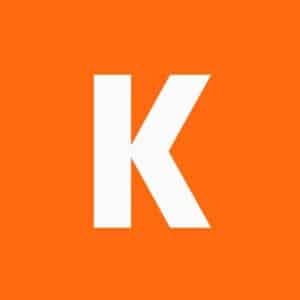
Kayak is great for people looking for cheap flights to Korea. You can see price trends for your flight to Korea to see when the best prices are available. There are also lots of budget travel options on the site that can save you more.

WayAway is a flight comparison site for the modern generation, with Instagram tips & travel advice as well as a good selection of cheap flights. You can get cashback on bookings with their premium service.
Where To Stay In Seoul
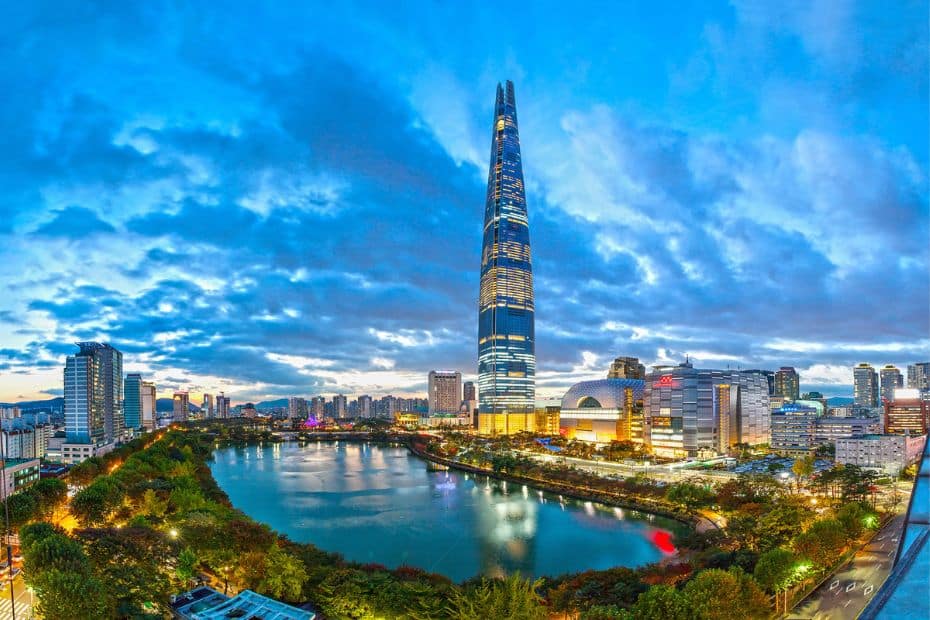
Incheon Airport is the main arrival destination for most travellers visiting Korea, with more than 71 million travellers passing through the airport in 2019, making it the world’s 14th busiest airport . It’s close to Seoul and has lots of transportation options to get into Korea’s capital.
Seoul is the first place people visit, not only because it’s close to Incheon Airport, but because it’s undeniably the heart and soul of Korea. The greater Seoul area includes about 50% of Korea’s population (25 million people) and is by far the biggest, most vibrant, and fun city in Korea.
To travel to Korea you need either a K-ETA or tourist visa . One of the requirements to apply for these is the address of the first place you’ll be staying in Korea. Therefore, you should book at least your first hotel in Korea so you can begin those applications. Seoul is an ideal first place to stay.
Best Neighbourhoods To Stay In Seoul
Deciding where to stay in Seoul can be difficult because there are so many unique neighbourhoods, each offering something interesting for travellers to experience. Knowing which has the best sights, entertainment, culture, shopping, transport, markets, restaurants, cafes, etc., is useful.
Seoul’s neighbourhoods typically contain a mixture of several of these elements and will appeal to different types of travellers. Below is a very rough guide for which neighbourhood each type of traveller might enjoy. Of course, there are plenty of other things to do in each area.
As you can see from the list above, both Hongdae and Myeongdong have a lot to offer and I would definitely recommend either of these neighbourhoods for first time travellers to Seoul. Even people who have travelled to Korea before will find lots of reasons to stay there. They’re where I usually stay.
I have detailed guides to hotels in the two best districts for staying in Seoul – Hongdae and Myeongdong. My guide to hotels in Hongdae includes a range of hotels for all types of travellers, while my guide to hotels in Myeongdong highlights Myeongdong’s best budget to mid-range hotels.
Each neighbourhood feels unique and offers something to discover, from traditional markets and eateries, modern Insta-worthy cafe districts, peaceful parks and lakes, world-class skyscrapers, and many fun activities. Wherever you choose to stay, you’re sure to find something you enjoy.
I’ve included the 8 best neighbourhoods in Seoul in this South Korea travel guide, along with a small summary about what you can expect in each area. These are the most popular areas for tourists to stay in, but certainly not the only places to stay. There are also links to hotels in these areas.
Here are the 8 best neighbourhoods in Seoul:
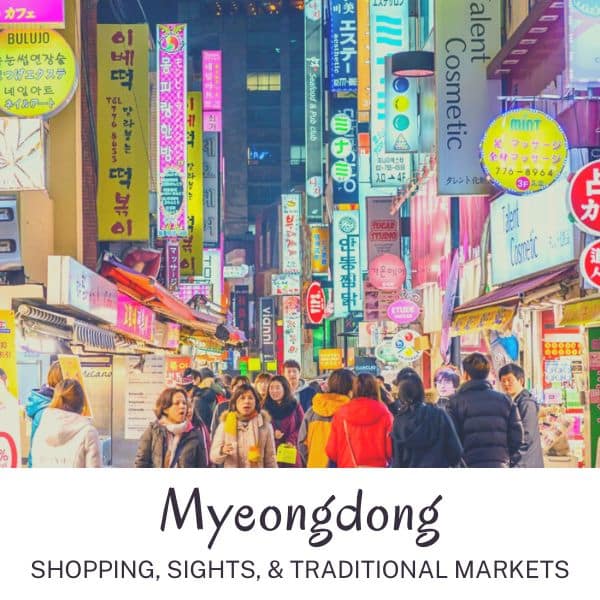
Myeongdong is arguably one of the best places to stay in Seoul for any traveller. It has the best range of budget and mid-range hotels in Seoul and is conveniently located for sights, activities, and public transport. It’s close to popular tourist sites, such as the N Seoul Tower and royal palaces. There are traditional markets and Myeongdong’s famous street food alley to check out. As Myeongdong is popular with tourists, you’ll find more people that can speak English and places to exchange money.
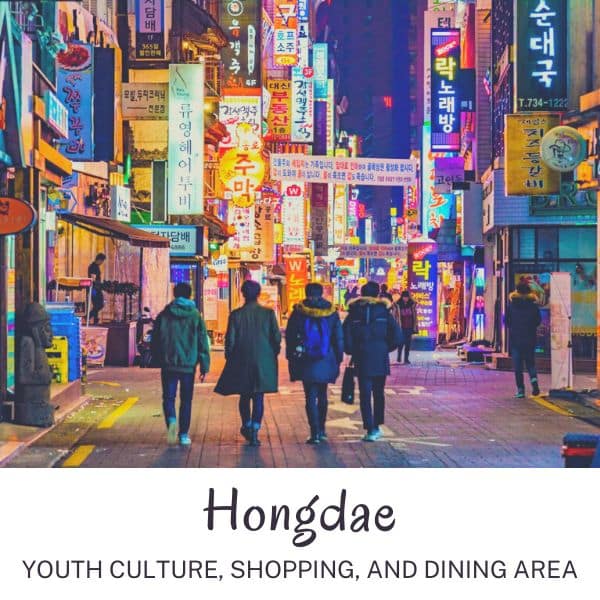
Hongdae is one of the coolest neighbourhoods in Seoul and a must-see for any traveller to the city. This area has emerged as a creative hotbed for the latest Korean fashion, art, food, and culture, thanks to innovations from students of nearby universities. Youth culture is on display in Hongdae’s main and side streets, with boutique shops, trendy bars and cafes, inventive restaurants, street art, and live performances. If you want to see a vibrant, colourful side of Seoul, then Hongdae is the place for you.
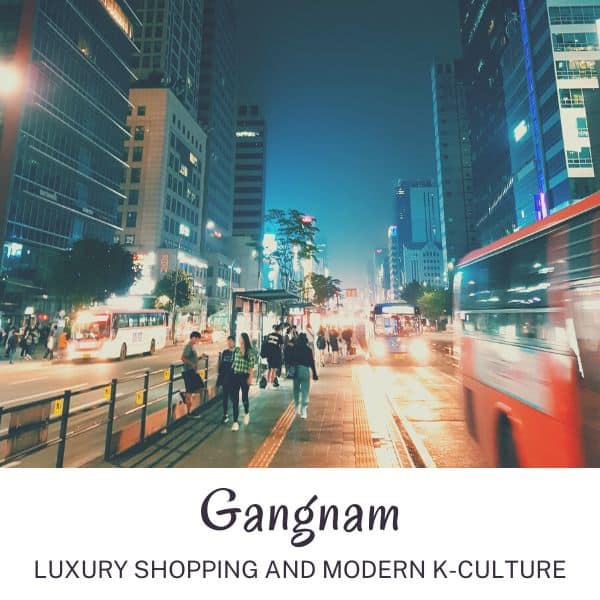
Gangnam is an upscale area of Seoul that’s home to some of Korea’s biggest stars. This area was where K-Pop was invented, as can be seen by the golden Gangnam Style statue outside COEX Mall. Gangnam is a lot more than that, and is a powerful business area with Seoul’s best shopping and dining experiences, as well as some of the city’s finest cafes and bars. Gangnam has a host of upmarket hotels that provide outstanding luxury, but also has a selection of budget and mid-range hotels making it accessible for all travellers.
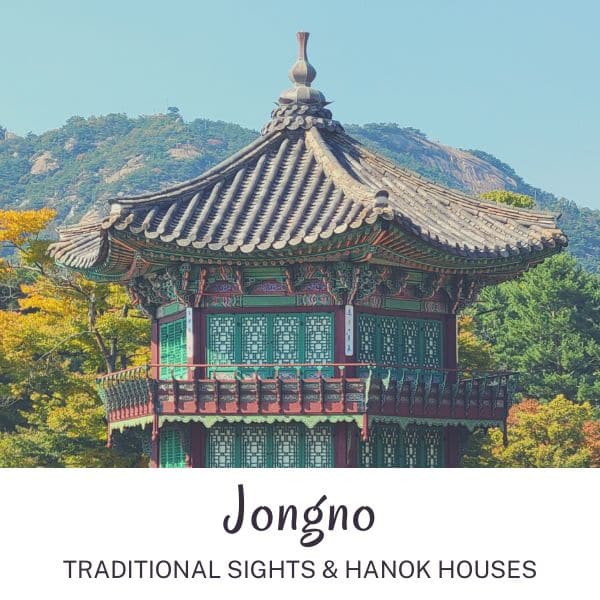
Jongno is the area north of Myeongdong that includes Insadong, Bukchon Hanok Village, Ikseongdong Hanok Village, Jogyesa Temple, 4 of Seoul’s royal palaces, the presidential Blue House, and lots more. This area is packed full of interesting sights and traditional restaurants and tea houses to explore. You can find a good range of hotels in Insadong, Seoul’s artistic area that is home to artists and tourist-friendly attractions. There are also guesthouses and apartments to rent in the residential areas of Jongno that offer a more homely stay.
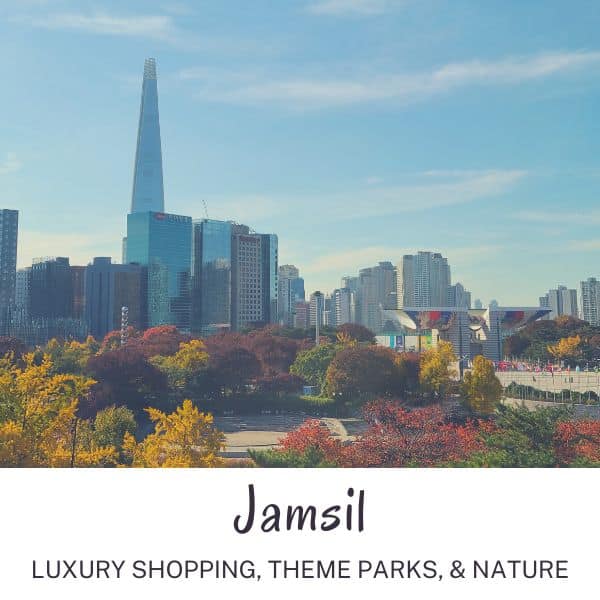
Jamsil is an upmarket residential neigbourhood close to Gangnam that’s home to one of Korea’s largest companies, Lotte. You’ll find the Lotte World Tower, Lotte World Theme Park, and Lotte Aquarium in this area, as well as the beautiful Seokchon Lake and leafy Olympic Park. Jamsil is a great base for people visiting for cherry blossoms in spring as the Seokchon Lake Cherry Blossom Festival is one of Seoul’s best. There are lots of trendy cafes and bars near the lake and it’s a relaxed part of the city to stay in.
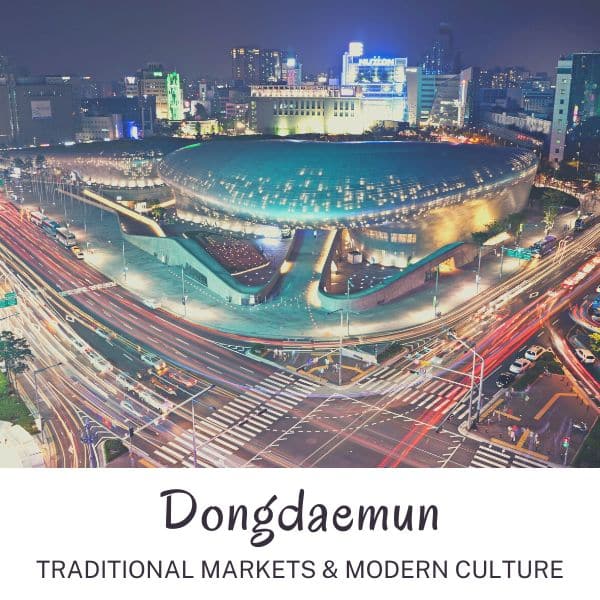
Dongdaemun is known for both its traditional markets, where you can buy a range of goods, as well as the futuristic Dongdaemun Design Plaza (DDP). The area is an unusual mix of traditional Seoul, with Gwangjang Market offering some of Seoul’s best Korean street food, and modern culture, displayed by the night markets and art installations at the DDP. There are lots of cheap eats and bargain markets and malls in this area, making it a great place to stay if you plan to do a lot of bargain shopping in Seoul.
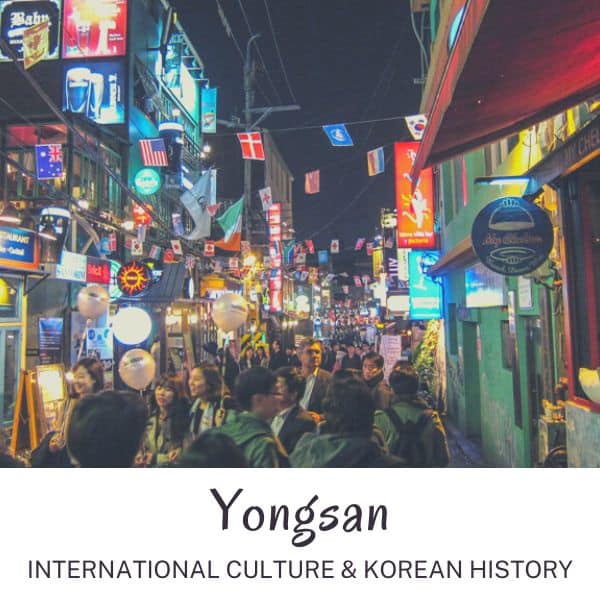
Yongsan is the area encompassing the N Seoul Tower, the popular international area of Itaewon, the trendy hilltop area of Haebangchon (HBC), Seoul Station, the National Museum of Seoul, and many riverside parks. Yongsan has a busy train station with towering skyscrapers and hotels around it catering to business and luxury travellers, as well as shoppers. This quiet business and residential area has good transport links and fewer crowds than other parts of Seoul, as well as interesting cultural attractions.
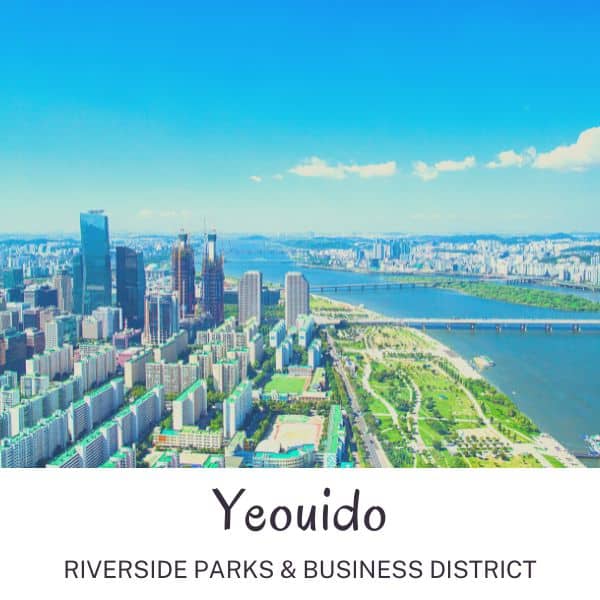
Yeouido is a large island that rests in the Han River, overlooking Hongdae and Yongsan. It has some of the best parks in Seoul and is a popular place for locals to walk along the river on weekends and at night. These parks are home to Seoul’s biggest cherry blossom festivals, as well as summer night markets, fireworks performances, live music, and people enjoying life outside of work. Yeouido is the upmarket financial centre of Seoul, making it an ideal base for business, luxury, and family travellers.
Seoul’s neighbourhoods are informal designations, not necessarily the official district name. For example, Hongdae is a neighbourhood in the Mapo-gu district and Myeongdong a neighbourhood in the Jung-gu district. Whereas Jongno is both the neighbourhood and district name (Jongno-gu).
You might see some areas referred to differently. However, the terms I’ve used in this section are the names most commonly used to describe these areas by tourists and expats. Koreans will certainly know which area of Seoul you’re talking about when you use these names.
Learn more : If you want to know more about Seoul’s best districts and figure out where the best place to stay for your trip to Korea, then check out my detailed guide about where to stay in Seoul . It’s packed with useful info about each neighbourhood, hotel recommendations for different budgets, and tips about booking accommodation in Seoul. Also learn more about the Han River Boat Service launching in 2024 to connect Yeoudio, Jamsil and other riverside destinations.
Hotel Recommendations For Seoul

There are hundreds (maybe thousands) of hotels in Seoul to choose from ranging from multi-person dorm rooms to the height of luxury looking down over Seoul from a 5-star hotel room in the Lotte World Tower . Whatever your budget or requirements, there’ll be somewhere to stay in Seoul for you.
To save you time searching for the best places to stay in Seoul, I’ve created a list of the 9 best luxury, mid-range, and budget hotels in Seoul, as well as 6 long-stay serviced apartments. This list has been created based on customer reviews, location, facilities, amenities, reputation, and quality.
I live outside of Seoul, so often book hotels when I’m visiting Seoul for the weekend . I’ve stayed at quite a few of these, so can personally recommend them based on my own experience. I’ve had both good and bad hotel experiences in Seoul and only want to recommend the best to you.
Recommended Luxury Hotels
Seoul has some incredible luxury hotels to enjoy, each with a true 5-star service, excellent amenities, and delectable restaurants. Many of Seoul’s best luxury hotels are located in Gangnam, Seoul’s wealthiest district, where you can find top restaurants and designer brand shopping.
Recommended Mid-Range Hotels
If you want to experience a luxurious stay in Seoul without breaking the bank, then these mid-range hotels will be perfect for you. These unique, 4-star hotels are reasonably priced and provide stylish, comfortable rooms that you’ll sleep easily in after a busy day exploring Seoul.
Recommended Budget Hotels
Seoul has a wide range of excellent budget hotels with prices that might surprise you for a large city. These are some of my favourite places to stay in Seoul when I visit for the weekend and are popular with travellers due to their convenient location, facilities, and comfortable beds.
Recommended Serviced Apartments
If you plan to stay in Seoul for a month or more, these serviced apartments will provide you all the comforts of home with the benefits of staying at a hotel. These excellent serviced apartments come with cleaning services, health facilities, cooking facilities, and are value for money.
Cost To Travel In South Korea In 2024
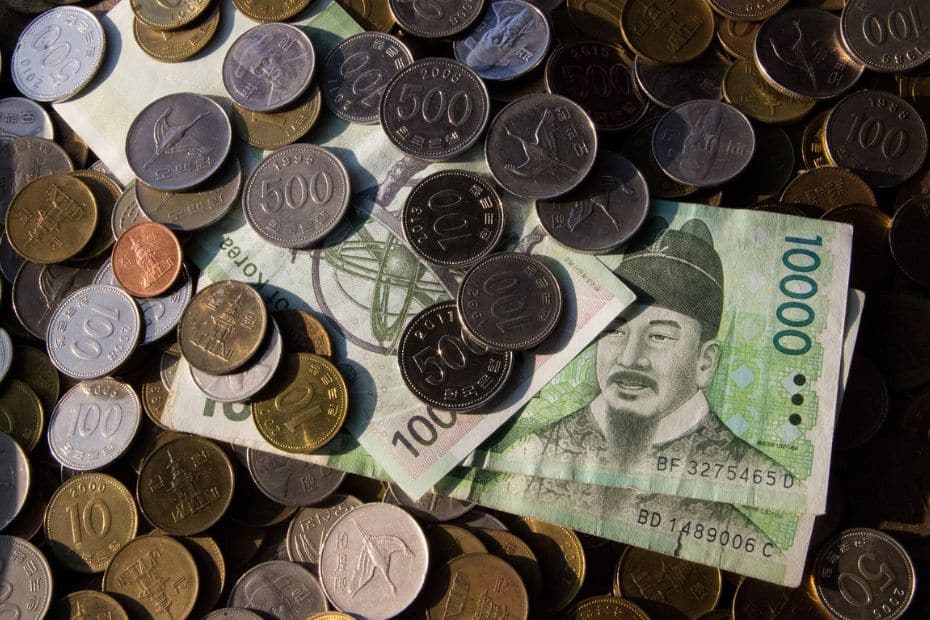
This part of the South Korea travel guide will help you understand some of your expected costs to travel to Korea. The costs to travel to Korea include flights, accommodation, food, drinks, transportation, activities, sim cards, visas, souvenirs, travel insurance, and lots more.
The costs you will pay when you travel vary massively depending on what type of traveller you are and what style of travel you can afford. If you want 5-star luxury and fine-dining, your budget will be very different from someone eating ramyeon from 7-11 and staying in a budget guesthouse.
Therefore, I will try to provide expected costs for 3 different types of traveller – budget , mid-range , and luxury . These aren’t exact figures, but should give you a rough idea of how much you’ll spend.
Daily Costs To Travel In Korea
There are costs that you will pay each day when travelling in Korea that can be averaged out to give you a daily cost. Knowing these figures will help you plan your budget for Korea and to see where you can afford to spend more for the one-off costs to travel, which will be covered next.
The daily costs are accommodation, food & drinks, transportation, attractions & tours, and miscellaneous expenses that can pop up unexpectedly. These miscellaneous costs might include getting a street food snack, an unexpected entrance fee, or a few extra drinks in the evening.
Transportation will be covered later in this South Korea travel guide and there are some useful tips to reduce your transportation costs. You will also be able to see some of the best attractions, tours, and activities in Korea and you’ll be able to work out how much you’ll spend on those.
Here are the daily costs per person to travel in Korea:
Please note : These are costs per day, per person . Couples and families sharing a room will have lower costs as double rooms aren’t much more expensive than single rooms. Some days will be cheaper, some much more expensive, especially if you take day trips or visit premium attractions.
There are also one-off costs not included in these daily costs. These can be pre-travel costs, such as flights and a K-ETA or tourist visa (already covered), travel insurance, vaccinations, and such like. Pre-travel costs are different for each traveller and depend on your country of residence.
Other one-off costs during travel in Korea may include day tours, souvenirs, shopping, celebrations, medical costs, and expenses that you don’t normally pay each day. Again, these vary for each traveller and are difficult to calculate as people’s budgets are so different.
Is Korea A Cheap Country To Travel In?
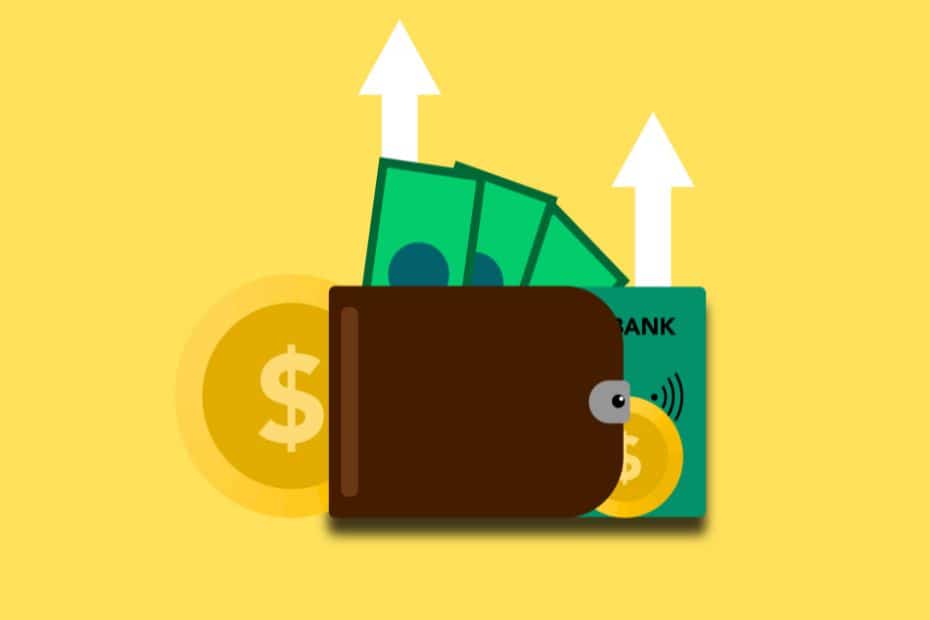
Korea is relatively cheap country to visit, but certainly isn’t always a budget destination. The cost to travel to Korea has risen over the last few years and might be more expensive than you think, even if you’ve previously visited Korea. Flying to Korea is certainly more expensive now.
Food costs rose by 7.5% in 2022 alone and these costs have been passed on to restaurants, which now charge higher prices for meals. Transportation costs rose by about 20% in 2023 for buses and subways, although these are still relatively cheap compared to some countries.
Despite these price increases, travelling in Korea is still cheaper than travelling in most other high-income industrialised countries such as Japan, the USA, and Western Europe. If you’re from countries such as the Philippines, Thailand, Indonesia, or Malaysia, Korea may seem expensive.
City Passes That Save You Money In Seoul
There are a number of city passes that can save you money when visiting Seoul by offering free or discounted entry to some of the best attractions in the city for a single price. The original city pass for Seoul is the Discover Seoul Pass, but now there is also the Go City Pass and Klook Pass Seoul.
Here’s a summary of each of these Seoul city passes:
Discover Seoul Pass : Available in 24 | 48 | 72 hour periods, allows entry to top attractions in Seoul such as Lotte World Adventure, N Seoul Tower, COEX Aquarium, Alive Museum, Zoolung Zoolung, Sealala Sauna, Gyeongbokgung Palace, and more. Prices start at 50,000 KRW .
Go City Seoul Pass : Available as 1 – 5 day passes or a flexible pass for up to 7 attractions. Covers a wider amount of attractions than the DSP, including a DMZ Tour, Nanta Cookin’ Musical, Seoul Land, Seoul Pub Crawl, Seoul Ghost Tour, and more. Prices start at 68,000 KRW .
Klook Pass Seoul : Available for use 2 – 5 attractions, including Everland or Lotte World Adventure theme parks. The Klook Pass Seoul allows free entry to selected attractions within a 30 day period. Attractions include the N Seoul Tower and Lotte World Aquarium. Prices start at 44,000 KRW .
If you’d like to know more about these passes, be sure to check out my article about the Klook Pass Seoul , as well as my suggested Discover Seoul Pass itineraries . I’ll have a review article of the Go City Seoul Pass soon, too.
How To Save Money In Korea
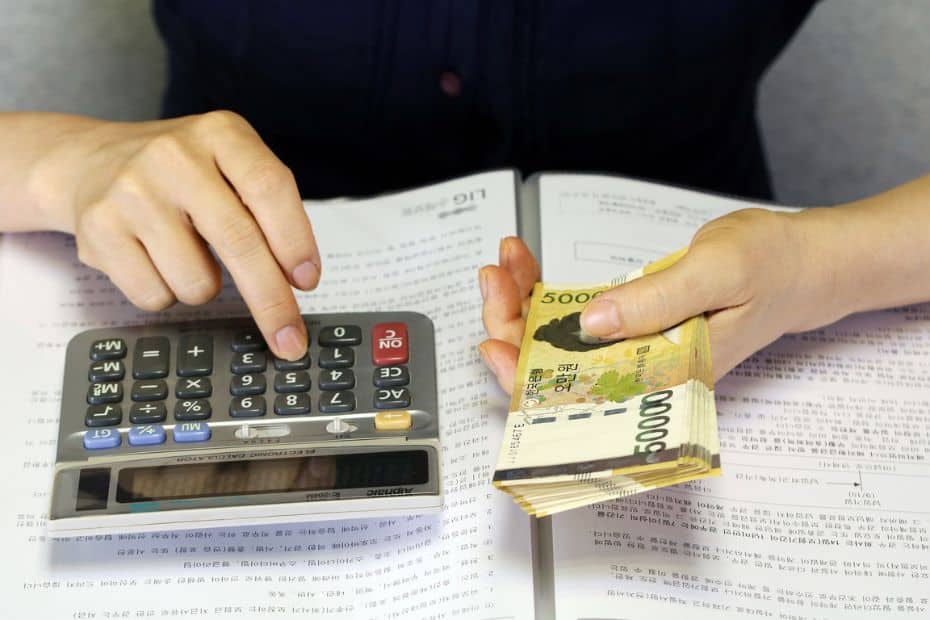
There are always ways to save money and spend less in Korea. Budget options exist for travellers and you can travel in Korea for less than 150,000 KRW per day, even as little as 50,000 KRW per day. Here are some of the ways you can save money in Korea and travel more for less:
Eat like a local : Visit the traditional markets, food stalls, and traditional Korean restaurants. These are much cheaper than eating foreign foods in Korea. University areas are usually cheap, too.
Spend less on coffee : Coffee in Korea can be expensive, but it doesn’t have to be. A latte could cost you 5,000 KRW in a chain store, but there are cheap hole-in-the-wall cafes where it’s half that.
Shop in the markets : From designer goods (possibly fake) to souvenirs, the markets of Seoul and other cities usually have the best prices. Don’t be afraid to haggle.
Use public transport : Korea has a fantastic public transport network both in cities and between cities. Don’t waste money on taxis and private transfers when you can use a bus or subway.
Book everything online : You can find discounted entry and tour tickets online that are much cheaper than the regular price. Use Klook , Get Your Guide , and Viator for the best prices.
Stay in guesthouses and hostels : You can find rooms for as little as 10,000 KRW per night in shared dorms and 20,000 KRW in guesthouses. Book ahead to find the best prices.
Take advantage of free things : There are lots of places you can visit for free in Seoul and free services, such as walking tours in Seoul, 30-minute hanbok rentals, and even free entry to the palaces.
Get your tax back : Korea makes it really easy to recover tax you’ve paid when shopping. Stores in Seoul will process tax returns for you or you can claim a refund at the airport when you leave.
You will see tips and links in this South Korea travel guide that are designed to help you save money when you visit Korea. Booking tours, attractions, and sim cards in advance can save you a lot of money, as can using a T-Money card and Wise travel card. Keep reading for more money-saving tips.
Travel Money And Money Exchanges In Korea
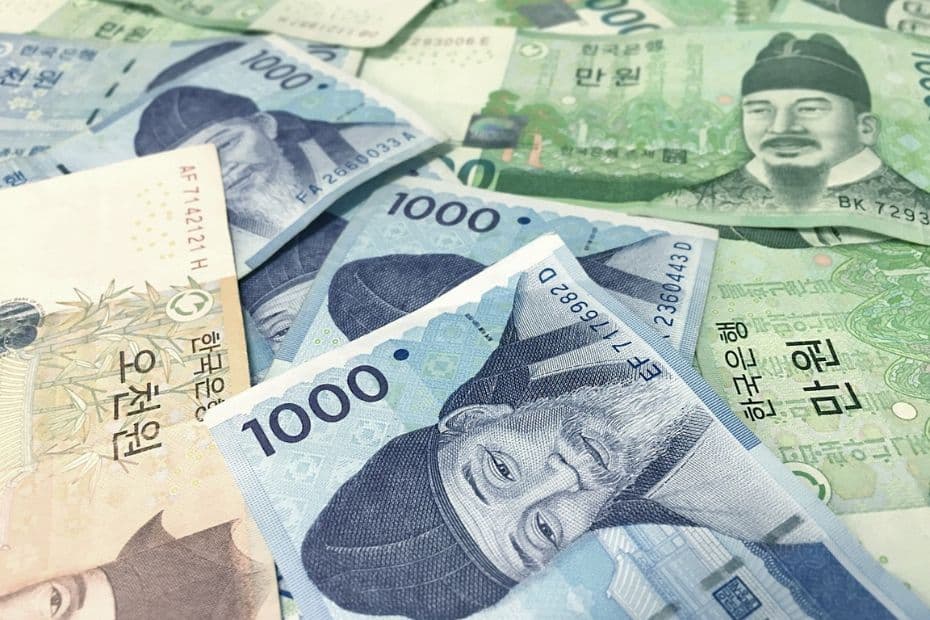
If you follow the tips in this section of this South Korea travel guide, you can certainly save yourself a lot of money and avoid unnecessary fees when spending in Korea. Learn where and how to exchange money, how to avoid ATM and card fees, and how to get tax back before you leave.
Because this section covers a lot of the common questions people ask about travel money in Korea, it will be broken down into a question and answer format. This should make it easier for you to find the information you’re looking for and discover answers you didn’t know you were looking for.
Can You Use A Foreign Card In Korea?
Almost all foreign credit cards with Visa or Mastercard will be accepted in Korea and it is possible to use these cards to pay across the country. American Express is also accepted in popular tourist areas, but not as widely as Visa or Mastercard and may have problems outside of big cities.
Foreign debit cards should work if they use Visa or Mastercard, but there may be restrictions in place with your bank when using them abroad. It is recommended that you call your bank to check before travelling. For both credit and debit cards, check your bank for any fees you’ll pay overseas.
Can You Withdraw Cash From An ATM In Korea?

You can withdraw cash from ATMs in Korea using a debit card, but not all ATMs will accept international cards. Look for a sign saying ‘Global ATM’ or ‘Foreign Currency ATM’ to withdraw cash in Korea with a debit card. You can also withdraw cash using a credit card, but it’s more expensive.
Whether you use a debit or credit card, an ATM is likely to charge a fee to withdraw money using a foreign card. Your bank or credit card company may also charge a fee or give a bad exchange rate. These costs can add up a lot if you withdraw regularly, so try to make fewer withdrawals.
Learn more : Should you use cash or card when you visit Korea? This article about the how to pay in Korea has lots of useful information about payment methods in Korea, including alternatives to the usual mix of cash and a credit card.
How Can You Save Money When Paying By Card In Korea?
Instead of using a foreign debit or credit card in Korea, which might have expensive fees or not work in places, here are two better options. The first is the WOWPASS travel card , which offers tourist-friendly card services in Korea. The other is to apply for a travel card that can be used globally.
Both the WOWPASS and the two other travel cards offer the ability to pay by card in Korea and to withdraw cash in Korean won. They also offer better exchange rates than you’ll find in airport or local money exchanges in Korea. They each have some unique features, which will be illustrated below.
Pay Like A Local With WOWPASS
The WOWPASS is a new way to pay in Korea that combines the essential functions of a T-Money transportation card with the benefits of a local debit card. This is a prepaid card you can top up at more than 90 locations in KRW or your own currency. Just look for the bright orange WOW machines.
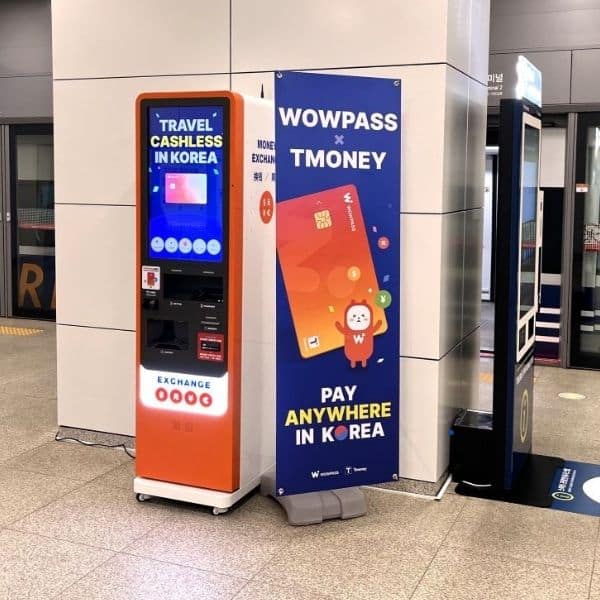
The T-Money function in the WOWPASS means it’s more useful than other travel cards as you don’t need to carry two separate cards when you travel. Please note, you still need to charge the T-Money balance of WOWPASS with cash, just like a regular T-Money card.
The WOWPASS travel card allows you to add up to 1,000,000 KRW to your card and can be used to pay for almost anything in Korea without any fees. The card is issued by a Korean company, so you can use it to withdraw cash at any WOWPASS machine located in Seoul & other cities in Korea.
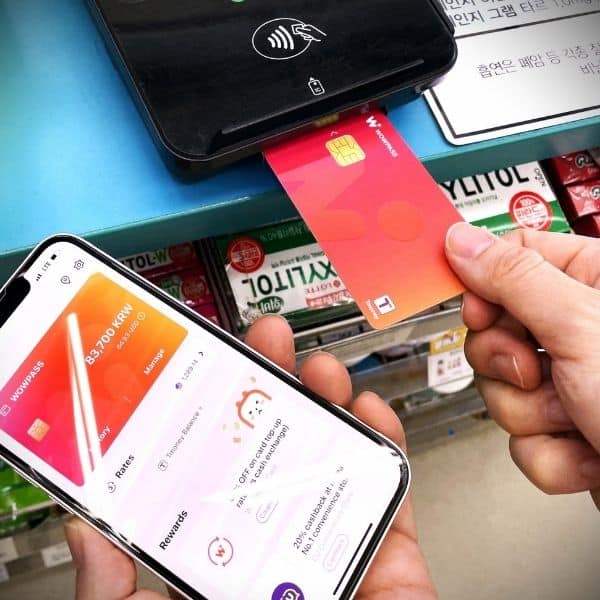
Thanks to the user-friendly WOWPASS app, users can freeze or replace their card, check their spending, add funds, and check exchange rates. Because the WOWPASS isn’t tied to your home bank account, it also reduces the damage by card fraud, in case the worst was to happen.
As well as a regular WOWPASS, you can also reserve the All-In-One Airport Package , which includes the WOWPASS, 10,000 KRW T-Money balance, and a discounted Korean sim card. This is really useful for those who want to get connected and travelling as soon as they arrive in Korea. Get the WOWPASS app for Android or Apple .
Tip : Use the invitation code INMYKOR1 to get cashback on WOWPASS top-ups in foreign currency.
Overseas Travel Cards You Can Use In Korea
Overseas travel cards are another option for spending in Korea and I use them myself to spend money from my UK bank account in Korea, as well as when travelling in other countries. They’re really simple to use and are much cheaper than paying with my foreign card or exchanging money.
Two of the leading travel card companies are Wise and Revolut . I use both of these to pay for things in Korea and have written an article about how to use the Wise card in Korea . You can use them to pay for hotels, food, drinks, transportation, taxis, attractions, and lots more. They’re really useful.
Here’s a summary of the main features of these travel cards:

The Wise travel card allows you to easily transfer and convert money from your home bank account into dozens of other currencies and use this money to pay when you’re travelling. You only need to transfer as much as you plan to spend and can easily transfer back anything you haven’t. The exchange rate will be better than your bank or a money exchange offers, too.
A versatile, easy to use app breaks down what you’ve spent by category so you can track your travel spending. You can withdraw cash from ATMs, pay by QR code, use it for Google Pay, and pay by contactless. Even if you lose your card, you can still spend money. It’s also really safe as you can freeze your card, set spending limits, and limit how much money you transfer.
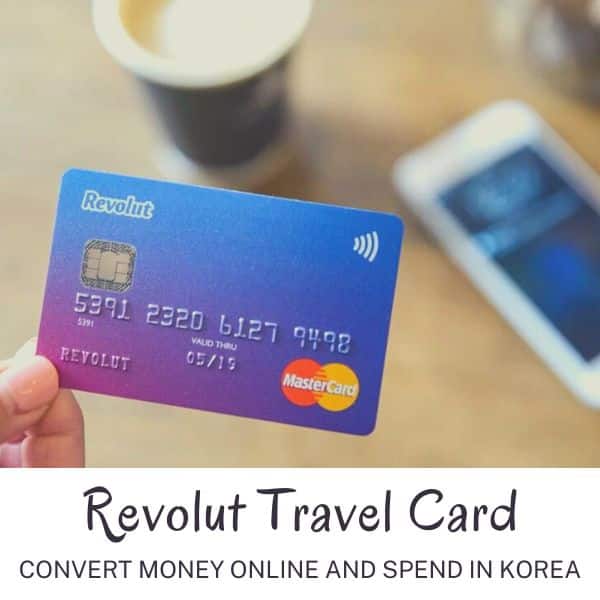
The Revolut travel card can be used in Korea to pay for a wide range of goods and services without expensive fees for spending your home currency overseas. Unlike the Wise travel card, which lets you transfer money into different currencies and then spend in a local currency, such as Korean won, the Revolut travel card lets you pay fee-free with your home currency.
The Revolut travel card comes with an easy to use app that can be used to manage your money both at home and when travelling in Korea. You can check your spending with categories and reports and set budgets for your spending. The Revolut travel card also offers cashback in the US, stock and crypto investments, and the same security features as the Wise travel card.
Can You Use Apple Pay In Korea?
Apple Pay wasn’t previously available in Korea due to a lack of approval by Korea’s financial regulator. However, in February 2023, Apple Pay received approval to begin operating in Korea through the Hyundai Card Co., allowing payments with Apple devices from March 2023 onwards.
The Apple Pay payment system has been available in Korea since March 21st , 2023 and allows Apple Pay members to pay for goods and services at NFC-enabled payment terminals. However, on the launch date of Apple Pay, there were only 70,000 NFC-enabled payment terminals in Korea.
The lack of NFC-enabled payment terminals will be a big issue for Apple Pay users in Korea as there are around 2,900,000 shops in Korea and most won’t accept Apple Pay. Franchises like Starbucks can’t accept Apple Pay and it can’t be used to pay for public transport. You’ll need a T-Money card.
Samsung Pay, which uses MST technology, not NFC, currently dominates the Korean market. NFC-enabled terminals should grow, especially in tourist areas and city-centres from 2023 onwards. This will be good news for Google Pay, which also uses NFC technology and also isn’t in use in Korea yet.
Should You Exchange Money Before Travelling To Korea?
It is not necessary to exchange money into Korean won before travelling to Korea, but it can certainly be useful to have a small amount of money. Exchange rates for Korean won outside Korea may not be as good as within Korea and changing large amounts of cash before you travel isn’t essential.
It might be hard to get Korean won from your local bank or money exchange as it’s not one of the most commonly exchanged currencies. Therefore, you might find exchange rates less favourable and extra fees applied to exchange money. Using travel cards like Wise or Revolut is a better option.
Should You Change Money At Incheon Airport?
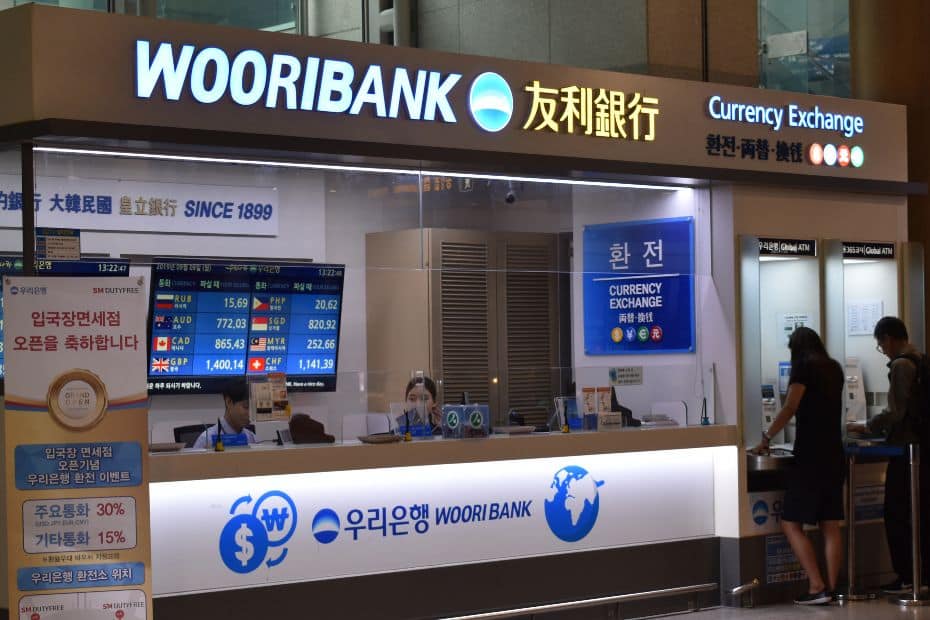
I’ve travelled around the world and always avoid exchanging money at the airport if I can help it. Airports often have the worst rates for money exchange as they know people need to get local cash, there aren’t many other options, and you need at least a bit of money to travel to your hotel.
Incheon Airport is an exception to this rule and I’ve compared travel exchange rates at several times when flying into and out of the airport. The foreign currency exchange rates at Incheon Airport aren’t that bad and are just slightly higher than what you’d find in Seoul. Not the best, but not bad.
There are also Global ATMs at Incheon Airport, so you can withdraw cash here. If you have a Wise or Revolut travel card, you can withdraw up to $200 fee-free from an ATM in Korea. However, Korean banks will charge a withdrawal fee (about 3,000 KRW), which applies to any foreign card used.
Where Can You Exchange Money In Seoul?
Seoul is the first destination for most travellers to Korea and if you want to save money on exchange rate fees, I recommend exchanging money in the capital. There are two main options for exchanging money easily and quickly in Seoul – WOW money exchange machines and money exchanges.
Here’s a summary about the two main ways to exchange money in Seoul:
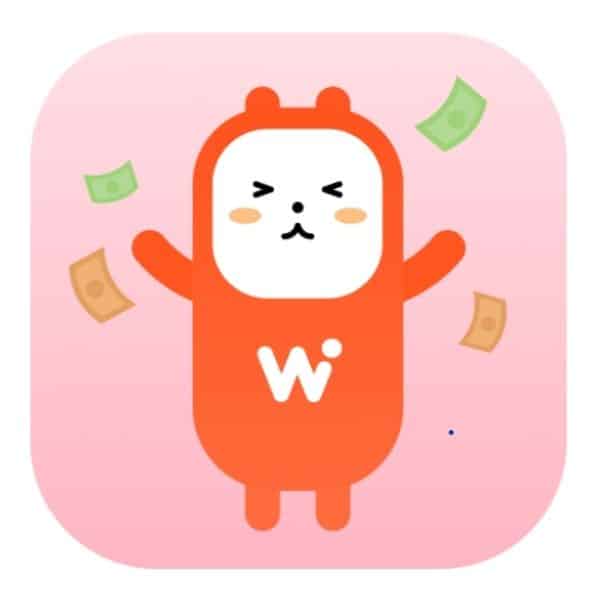
The cheapest and most convenient option for exchanging money in Seoul is through a WOW money exchange machine. This automated machine gives the best exchange rates and can quickly and easily exchange foreign cash for Korean won. It doesn’t accept card payments, only cash. All you need to do is scan your passport and deposit your cash and it will convert it into Korean won immediately. There are dozens of these machines in Seoul, as well as in other cities like Busan and Daejeon.
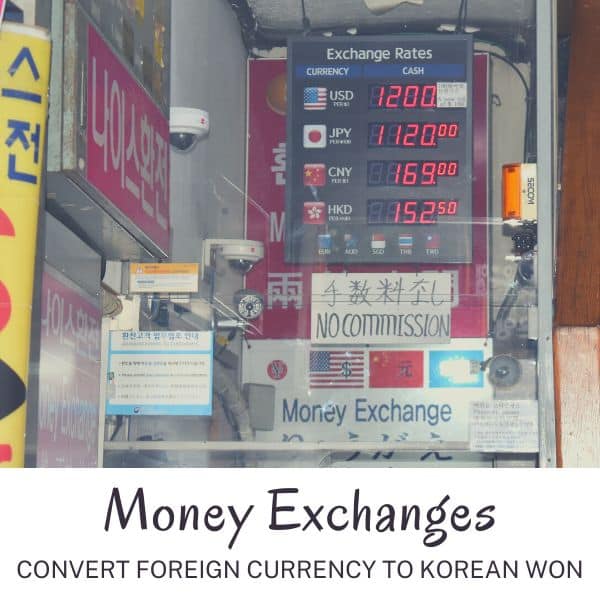
The traditional way to exchange foreign currency in Seoul was through a money exchange. You can find these in Myeongdong, where many tourists stay and visit in Seoul. There are also money exchanges inside banks and in other tourist hotspots. These used to be the best place to exchange money, until the WOW money exchanges were introduced and travel cards like Wise and Revolut made it easier to use a card. If you want to use a money exchange in Seoul, Myeongdong is the best place to do it.
Can You Get Tax Back When Shopping In Korea?
Travellers to Korea can claim tax back on eligible purchases during their trip. This can be done immediately after you purchase an item (if the shop offers the service) or at Incheon Airport or other airports in Korea before you depart.
Instant tax refunds are available at certain locations in Seoul and other big cities. These are usually department stores and large chain stores. You are able to claim tax refunds for goods up to a total value of 2,500,000 KRW (incl. tax). There is a tax refund limit of 500,000 KRW per transaction.
2024 Tax Refund Changes : From 2024, the tax refund limits will be doubled, so you will be able to claim up to 5,000,000 KRW of tax back and claim up to 1,000,000 KRW back per transaction. Source: Korea Herald .
To claim a tax refund you need:
- To show your passport
- To be a tourist in Korea
- To spend between 30,000 to 300,000 KRW in one place
- To be leaving Korea within 3 months
Tax isn’t refundable on all purchases, so be sure to check when shopping. Tax refunds can also be claimed at the airport as long as you have the receipt and the goods you’ve purchased.
Mobile Phones And Internet In Korea
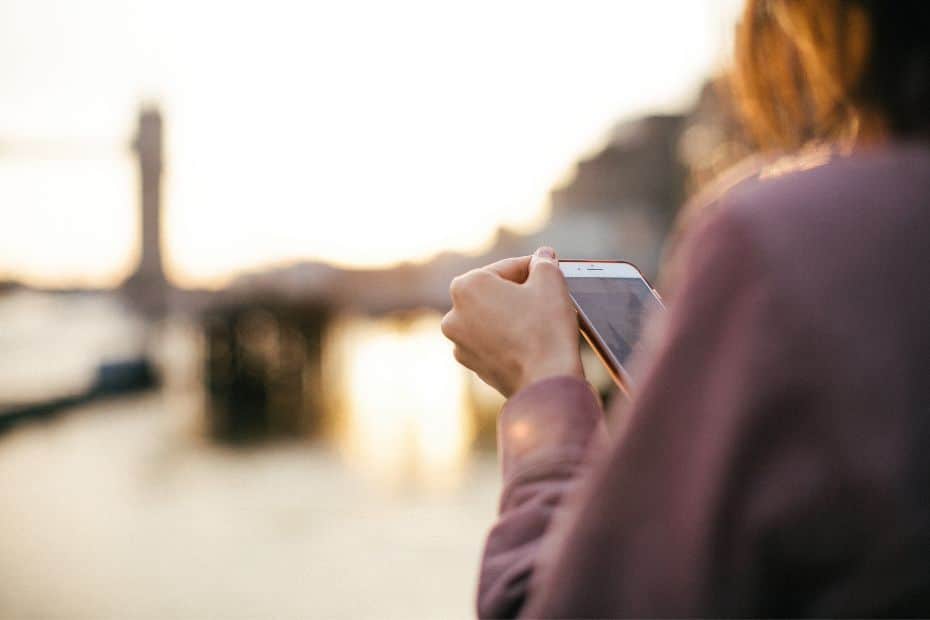
Staying connected to the Internet when visiting Korea is becoming more and more essential these days. Keeping your mobile phone, tablet, or computer connected to the web is useful not only to stay in touch with people back home, but also to help you save money and travel Korea more easily.
There are several options to stay connected in Korea when you travel. The main options for travellers are tourist SIM cards, either physical or eSIMs, portable WiFi routers, and relying on free WiFi provided in public places and hotels. All of these are good options, but there are other considerations, too.
This South Korea travel guide will cover the main differences between Korean SIM cards and portable WiFi routers and which will be most suitable for you. There are also details about why you might want a Korean phone number and which apps to use to help you travel in Korea.
Don’t forget, if you bring your phone or other mobile devices to Korea, you’ll need a travel adapter .
Should You Get A Korean SIM Card Or WiFi Router?
Both a Korean SIM card or portable WiFi router will provide access to Korea’s high-speed mobile networks and keep you connected to the Internet. They provide a secure internet connection, but do so in a different way and with different available features. Find out about the best Korean SIM card for tourists in this SK SIM card review .
Here are the main features of Korean SIM cards and WiFi routers:
Costs : SIM cards and WiFi routers are similarly priced when using them for a two week period, but they are charged in different ways. SIM cards are fixed-price and can be bought for set time periods, whereas WiFi routers are charged daily. WiFi routers are cheaper in the short-term.
Ease of use : If you purchase or pre-order a SIM card or portable WiFi router at Incheon Airport, which I highly recommend, the staff will install or setup everything for you. Once they’re activated, it’s very simple to use either one. Cancelling and returning them at the airport is also easy for both.
Here are the reasons you should get a Korean SIM card or portable WiFi router in Korea:
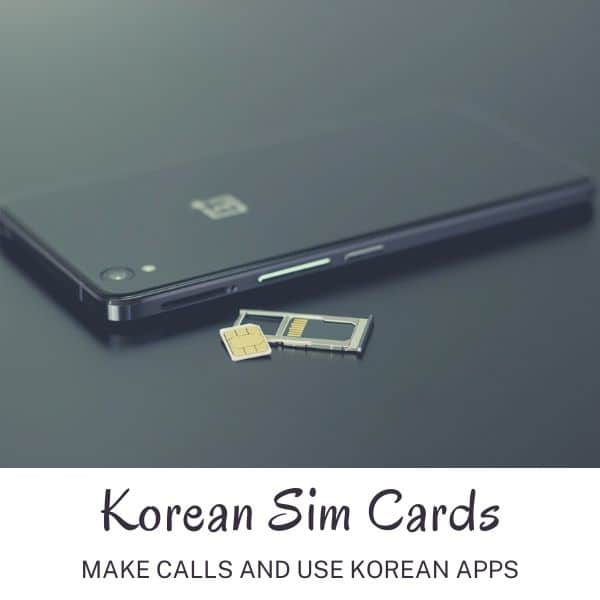
You should get a Korean SIM card when visiting Korea to get a Korean phone number. The benefits of having a Korean phone number are mainly to make calls and use Korean apps. SIM cards are also useful if you want a secure connection everywhere you go and plan to make calls or send texts. When you have a SIM card, you can tether your network connection to connect other devices you own. Korean phone coverage is amazing and you’ll get service everywhere. SIM cards don’t require you to carry any extra devices and are cheaper over the long-run than WiFi routers.

You should get a portable WiFi router if you’re travelling in a group or as a family as you can connect multiple devices to one router. This is much cheaper than getting separate SIM cards for all travellers, but also requires people stay close together. WiFi routers are charged per day and if you need additional days, they’ll be automatically added and charged when you return the router. This means you’ll never have to worry about your service suddenly ending. The main downside to using a WiFi router is the lack of Korean phone number, but that might not be an issue if you don’t need one.
Where Can You Get Korean SIM Cards Or WiFi Routers?

You can get a Korean SIM card or portable WiFi router in several ways. The easiest way, and one that I definitely recommend, is to purchase online through a tour company such as Klook , Viator , or Get Your Guide , and get a SIM card at Incheon Airport or other entry point into Korea when you arrive..
The main reason I recommend this method is that you can guarantee you will get a SIM card or router and it will be waiting for you when you arrive. The collection desks at Incheon Airport are open 24-hours a day and they will help you install everything you need to get started immediately.
You can also get SIM cards and WiFi routers when you arrive at the airport and you should find similar rates. However, you won’t be guaranteed a device and you will need to pay in person. When you book online, you can pay in your home currency and avoid those issues.
I don’t recommend getting a SIM card or WiFi router in Seoul or other cities. It is possible, but you may run into language issues and find less tourist-friendly options. Phone shops outside the airport usually cater to Koreans, not tourists. Airport rentals are the easiest options for visitors to Korea.
What’s The Benefit Of A Korean Phone Number For Tourists?
There are two main benefits of having a Korean phone number for tourists. The first benefit is the ability to call people when you’re in Korea. This can be useful for making reservations, keeping in touch with people, and in case of emergencies.
The second benefit of having a Korean phone number is the ability to use Korean apps . It isn’t mandatory to have a Korean phone number to use Korean apps, but most won’t let you use their services unless you sign up with a phone number. Using Korean apps makes travelling easier.
A phone number is like a form of identity in Korea, which is why you need your passport to register a SIM card. Once you have a phone number, many more services are available, including food delivery, ordering taxis, making reservations (such as for the Busan Sky Capsule ), and online messaging.
What Apps Do I Need For Travelling In Korea?
If you have a Korean phone number, you can use Korean apps. Even without a Korean number, you can still download these apps and use some of their services. Full features typically require a phone number though. There are other, non-Korean apps that will help you when travelling, too.
Here are the most useful apps to use when travelling in Korea:
Papago : This is the essential translation tool for visiting Korea. Papago’s translation services are the best and you can use the app to take pictures and translate Korean signs, menus, and other pictures.
Naver Maps : To find your way around Korea, use Naver Maps or Kakao Maps. Their systems are much more accurate in Korea than Google Maps. Use them to plan travel routes and transport times.
Kakao Taxi : Uber and Grab don’t really exist in Korea, so if you plan to take a taxi, you’ll need to use Kakao Taxi. Simple to use and takes the hassle out of trying to use Korean to give directions.
Kakao Talk : This is Korea’s most popular messaging app and is useful for keeping in touch with Korean friends, contacting businesses in Korea, and even calling abroad.
Seoul Subway : Use this app to travel around Seoul’s underground more easily. Plan your route, see when the next train is due to arrive, check connections, and see how late the trains run.
Korail Talk : This app allows you to book trains on Korea’s high-speed train network and regular train routes. This app has an English setting, so you can check train times and prices easily.
Coupang Eats : This is a food-delivery app that allows you to order almost anything edible and get it sent directly to you. You can even order convenience store goods. Useful for rainy days.
Mango Plate : Find restaurants in Korea with this app and discover the best places to go out and eat. You can also see restaurant details and get directions in Naver Maps and Kakao Maps.
WOWPASS : To use the WOWPASS to pay like a local in Korea and for T-Money functions, you’ll need the WOWPASS app. This will let you check your balances and spending and control your card.
Wise & Revolut : As mentioned in this South Korea travel guide, using a travel card to pay for items in Korea will save you money when you travel. If you use Wise or Revolut, make sure you have the app.
Klook : This company provides some of the best tours in Korea and if you make bookings through their website, you can easily manage them with the Klook app.
Intercity Bus by T-Money : This app is great for booking buses between cities in Korea. There is an English version that allows you to book tickets, check times, and see available seats.
These apps should be available on both Android and Apple. Some of these apps might default to Korean, but you should be able to change them to English in the side menu.
Is There Free WiFi In Korea?
Travellers in Korea have the option to not get a sim card or portable WiFi but still stay connected. This is thanks to the excellent Free Wifi in Korea that is provided in public transport, government buildings, restaurants, cafes, and many other places. This is mostly in the cities, however.
Hotels also provide free WiFi in most cities in Korea. If you plan to rely on free WiFi, I recommend using the hotel’s WiFi to plan routes, check opening times, and research places you want to visit. Take screenshots of these details so you can see them later, even if you don’t have Internet access.
The only warning I would give about relying on free WiFi when travelling in Korea is the increased use of mobile-dependent apps and passes in Korea. Physical tickets and passes are being phased out in favour of digital versions, which often need an active Internet connection to use.
I’ve noticed in recent years that services that impact travellers have moved to digital versions. This includes the T-Money card, Discover Seoul Pass, train and coach tickets, attraction tickets and event tickets. I believe that having a reliable net connection will be a must for most travellers soon.
Using Public Transport In Korea In 2024
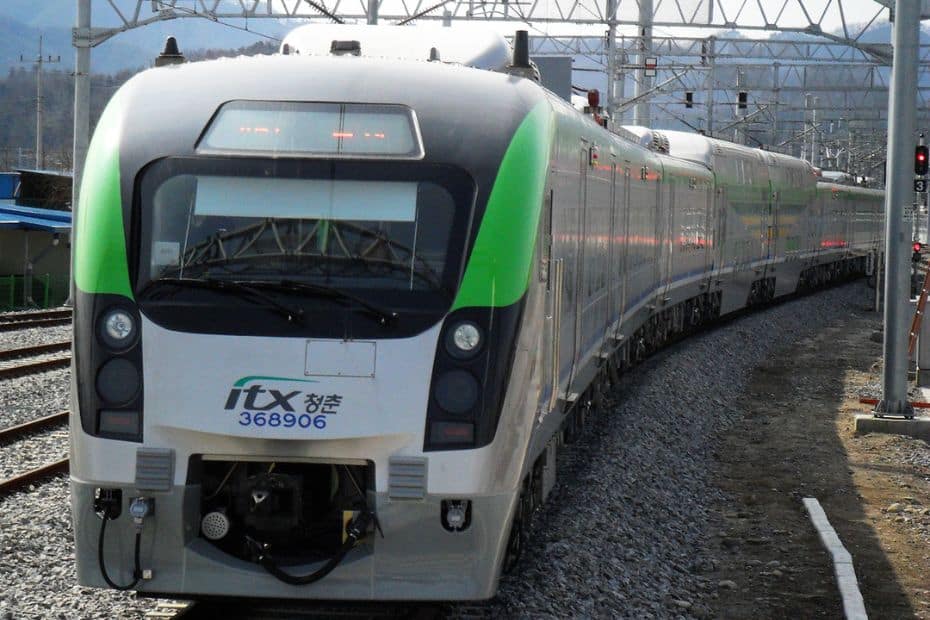
This section of the South Korea travel guide looks at Korea’s public transport system and how to navigate it as a traveller. Korea has arguably one of the best public transport systems in the world. It’s cheap, well-connected, frequent, and runs on time. Other countries could learn a lot from Korea.
The great news for tourists is that Korea’s public transport is very foreigner friendly and information is provided in English in almost all places, as well as Chinese and Japanese in popular areas such as Seoul and Busan. Travelling by public transport in Korea is cheap, easy, and convenient.
How Much Does Public Transport Cost In Korea?
The cost of public transportation in Korea is fixed, no matter what day you purchase tickets on. If you buy one month in advance, or last minute, you will pay the same price for the journey. Journeys within a city are a single price and not dependent on how far you travel, unless you leave the city limits.
All journeys are single fares and you can’t buy return tickets. You will need to buy two singles when you want to travel somewhere and back again. The cost of a single fare depends on how you pay for the ticket – by cash or with a transportation card.
Here are the costs for public transport in Korea by payment method, type and user:
Please note : The cost of subway rides is set to rise to 1,400 / 1,500 KRW in October 2023. These prices will be adjusted when this occurs.
How Do You Pay For Public Transport In Korea?
The cost of public transport in Korea depends on whether you pay with a transportation card, such as T-Money, a Korea Tour Card , or Cashbee, or in cash. This applies to both subways and buses. If you use a transportation card, you should add credit to it, then touch it to the card reader at the subway or bus to pay.
To use cash to buy a subway ticket, you will need to buy a ticket at the station. For buses, you should pay the correct fare to the driver when boarding the bus. However, since 2022, buses across Korea have started to end the use of cash and some will insist on payment by transportation card only.
In the future, bus payments are expected to become simpler with fares deducted via bluetooth-enabled phones that have the relevant app downloaded. This system has already been in place in Gyeonggi Province since March 2022 and is likely to spread to more bus routes in the future.
I highly recommend getting a T-Money card when you travel to Korea. You can use it to pay for public transportation (at a discounted rate), and it will work almost everywhere in Korea. It can also be used to buy goods from shops, cafes, and restaurants. It’s really convenient and a must-have for Korea.
Using T-Money To Pay For Public Transport In Korea
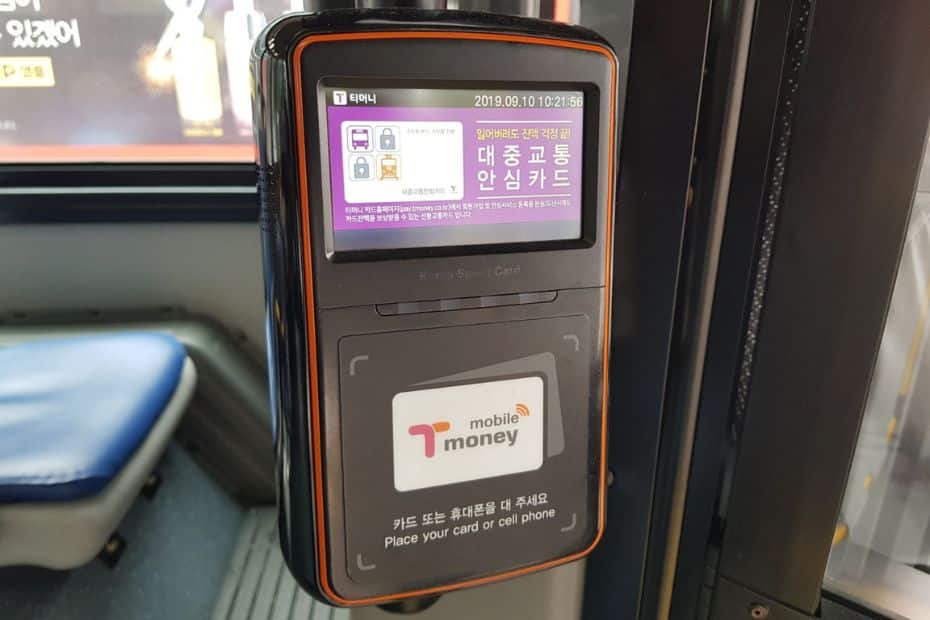
A T-Money card is the essential transportation card for using public transport in Korea. You can purchase one at Incheon Airport, subway and train stations, and convenience stores across Korea. The card can be used in many places. It never expires, so you can use it on different trips, too.
Here is how to use a T-Money card in Korea:
- Purchase a T-Money card (2,500 KRW)
- Add money to the card (cash top-up only)
- Enter the bus or subway station
- Tap the T-Money card against the card reader (see pic above)
- Tap the T-Money card again when you get off (for transfer discount)
- Recharge when necessary
I recommend adding about 10,000 KRW for each day you plan to travel in Korea. That means about 70,000 KRW for a week. You can add more money later if necessary. You can top up at convenience stores and transport stations. There is also an app version of T-Money, but the card version is better.
How Do You Use Trains In Korea?

The train network in Korea is divided into high-speed trains (KTX) and regular trains (ITX and Mugunghwa). The KTX network connects major cities in Korea and is convenient for travelling around Korea quickly and cheaply. The carriages are comfortable and come with modern facilities.
Unlike other forms of public transport in Korea, transportation cards like T-Money aren’t accepted for trains. You will need to buy a train ticket to travel and all tickets are single tickets. The price to buy a ticket doesn’t change and you can refund a ticket up to the last minute for only a small fee.
You can book tickets within 30 days of travel through the official Korail website or app, or at a train station in Korea. Unfortunately, buying a train ticket online in Korea can be difficult as Korean payment systems often reject cards issued outside of Korea. Buying in person is recommended.
How To Book Korean Rail Tickets Outside Of Korea
If you want to book Korean train tickets outside of Korea, you can do it online with Trip.com , which is Korail’s exclusive overseas distributor. The price is slightly higher (about 5%) than the price you’ll pay in Korea, but it will allow you to book tickets online and secure your seat in advance.
If you plan to travel on the main KTX route between Seoul and Busan, I highly recommend booking tickets in advance. There are three types of tickets available – first class, regular, and standing. The journey takes 2:34 and you don’t want to be standing for all that time. Book ahead for comfort.
Is The Korea Rail Pass Worth The Price?
The Korea Rail Pass is a good option for tourists who plan to travel long distances by train in Korea, such as between Seoul and Busan or Seoul and Jeonju. The pass has two main options – flexible and consecutive. These mean you can use it any time (flexible) or within consecutive days.
The flexible pass is more expensive, but offers more freedom to travel around Korea over a longer period. You can use the pass to only cover big journeys and won’t feel pressured to use it again until you’re ready. The extra cost is more than worth the inconvenience of having to rush travel plans.
Will you save money with the Korea Rail Pass? That depends on your travel plans, how often you’ll be travelling by train, and how many people are travelling. If there are 2 people or more, purchase the group saver pass and save 10,000 KRW each on the pass. Group tours make it better value.
The Korea Rail Pass does not allow you to ride on the subway for free, which would make it better value. It can also be complicated to reserve tickets online using the pass and buying tickets in the regular way is more convenient. Overall, the pass isn’t essential, but might save you money.
How Do You Use Taxis In Korea?
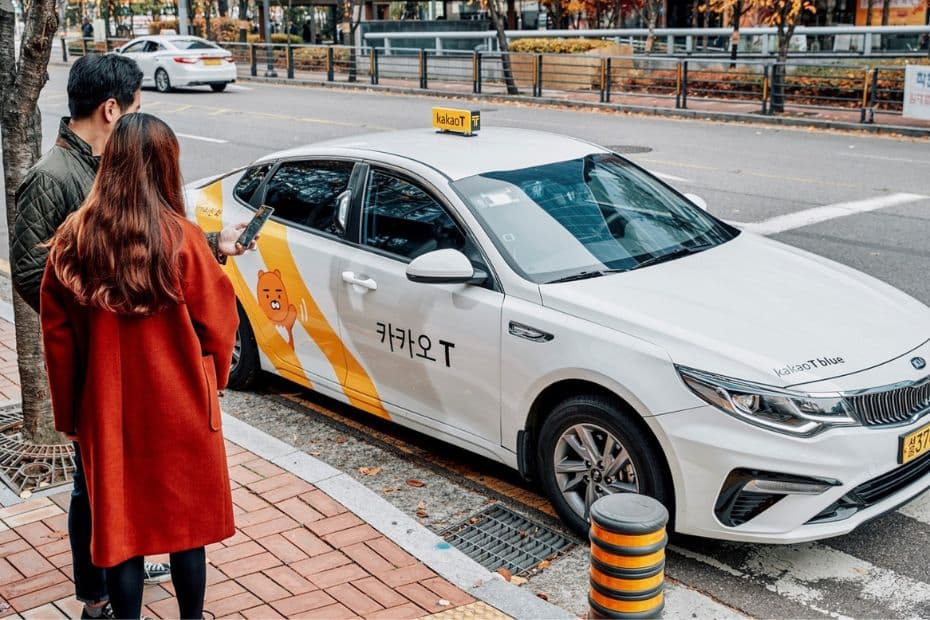
Taxis in Korea can be hailed from the street or called directly to you using apps such as Kakao Taxi . Companies like Uber and Grab don’t have a large presence in Korea and operate the same way as Kakao Taxi, by helping you find an official taxi driver. Private taxi services aren’t common.
The big issue facing the Korean taxi industry in 2024 is the lack of taxi drivers. This can make it hard to get a taxi, even when using an app like Kakao Taxi. Late night taxis are particularly difficult to find. Read this guide about how to use Kakao Taxi to help you learn how to call a taxi in Korea.
Taxi prices in Korea are reasonable, especially compared to countries like Japan and the UK. Although base taxi fares rose in 2023 to 4,800 KRW, the price is still low and relatively affordable to travel by taxi if you need to. It’s a good option if there are no direct public transport routes.
Taking a taxi to and from Incheon Airport is a convenient option if you have a lot of bags or you are travelling in a group. For solo travellers or couples, I would recommend using public transport or a limo bus, as it’s significantly cheaper and won’t take much longer than a taxi.
How Do You Use Intercity Buses In Korea?
Intercity buses in Korea operate in a similar way to trains. You can only book tickets within 30 days of travel and can only buy single tickets. Book tickets online through websites such as T-Money Bus or Bustago , through app versions of these sites, or at the bus terminal you will depart from.
You can’t walk onto intercity buses without a ticket, nor can you use transportation cards like T-Money to pay on entry. You will need to pay for and receive your ticket (physical or digital) before you can enter the bus. Ticket machines usually (but not always) have English options for buying tickets.
There are no return bus tickets in Korea and you can only buy tickets from your point of departure, unless you book online or via an app. If you’re travelling from Seoul to Gangneung, for example, you will need to buy a ticket in Seoul and then a ticket in Gangneung. You can’t buy both in Seoul.
How Can You Hire A Car In Korea?
Renting a car is a great way to see parts of Korea that aren’t covered by the train network and gives you the freedom to explore at your leisure. If you plan to travel to Jeju Island, which doesn’t have any trains, hiring a car will be a lot more convenient and is almost a must if you plan to travel inland.
Car rental in Korea isn’t that expensive and you can rent a modern car for as little as 75,000 KRW per day. I recommend booking car rentals through Klook , they will deal with the Korean car rental companies and reserve a car for you. This is easier than trying to do it in Korean.
To hire a car in Korea, you will need:
- Driver’s license (must have had it for at least 1 or 2 years)
- International Driving Permit (in some cases)
- Credit card (in the name of the main driver)
- Valid photo ID (passport)
- Printed voucher for rental (if booked online)
Here’s some more information about the International Driving Permit and rules you should follow when driving in Korea, such as the legal requirement to wear seatbelts, booster seats for under 6s, and not using your phone while driving. Be sure to read up on local rules before driving in Korea.
Best Places To Visit In Korea In 2024
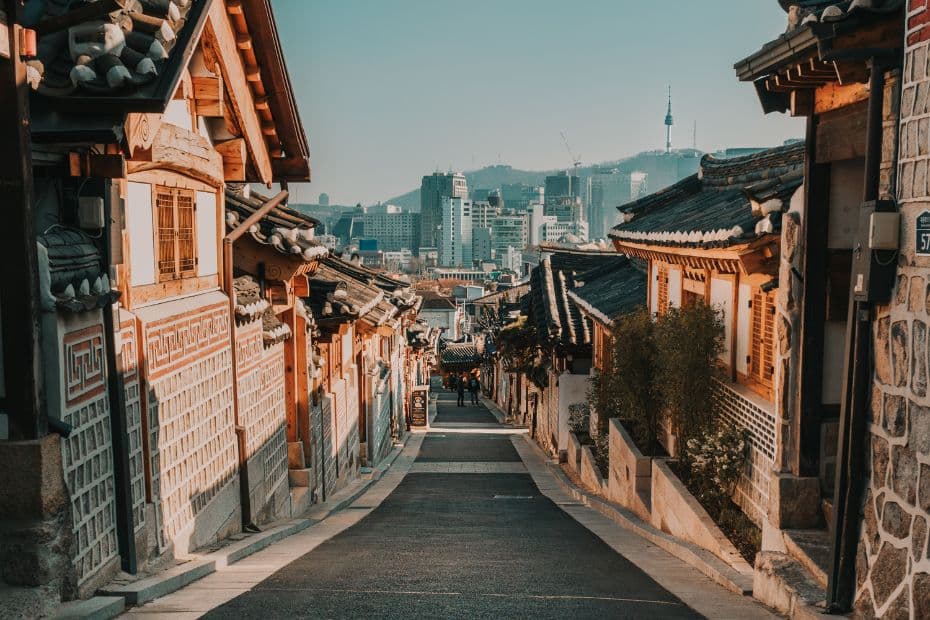
The next few sections of this South Korea travel guide will help you figure out what you want to do and see on your travels. This first section will give you a brief introduction to the best places to visit in Korea, including the major cities, tourist hotspots, and unique areas that you’re sure to love.
Here are the best places to visit in Korea:

Seoul: Korea’s Capital
Seoul is Korea’s vibrant, bustling capital and truly a must-see for any first-time visitor to Korea. There is so much to see and do in Seoul that you could easily spend a week or more exploring the city and not get bored. You will find yourself falling in love with the city for different reasons. Maybe it’s the friendly people, the deliciously cheap street eats, the way things just work, the hidden murals on old buildings down side streets, the feeling of safety even in a big city, or the historic sights creeping out from modern buildings. Seoul includes everything Korea has to offer, plus a lot more you won’t find elsewhere.
What To See In Seoul
Here are 10 great places to visit in Seoul:
- Gyeongbokgung Palace
- Bukchon Hanok Village
- Myeongdong Street Markets
- Lotte World Tower & Seokchon Lake
- Dongdaemun Design Plaza & Markets
- Yeouido Han River Park & Cruise
- Secret Garden (Changdeokgung Palace)
- N Seoul Tower & Namsan Mountain
- COEX Mall & Bongeunsa Temple
- Bukhansan National Park

Busan: Big Coastal City
While Seoul is a showcase of all things Korean, Busan is unashamedly its own city and a celebration of coastal life and local culture. Busan is famous for fresh seafood, traditional markets, great beaches, big festivals, movies, temples, and places to explore the coast. Beaches are popular places to visit in Busan, along with cliff-side walkways with views over the ocean. Central Busan is a lively spot with lots of entertainment and markets to enjoy, including a famous fish market where you can choose your own lunch and then eat it. Busan is spread out and deserves several days to explore it properly.
What To See In Busan
Here are 10 great places to visit in Busan:
- Haeundae Beach & Beach Train
- Jagalchi Fish Market
- Gamcheon Culture Village
- Haedong Yonggungsa Temple
- Songdo Beach & Cable Car
- Huinnyeoul Culture Village
- BIFF Square & Centum City Mall
- Oryukdo Skywalk & Coastal Paths
- Lotte World Busan
- Busan X The Sky Observatory

Jeju Island: Natural Wonder
Jeju Island is a gorgeous island created from a volcano rising out of the ocean 2 million years ago. Today it’s one of the New 7 Natural Wonders of Nature and deservedly so. The lush island is packed with pine trees, tangerines, rolling hills and fields, cacti, and jet black volcanic rock tumbled all around. You can relax on a beach, go horse riding, explore ancient lava tubes, scuba dive, climb to the volcano’s peak, chill in a beach-side cafe, explore traditional markets, learn about local culture, and lots more. The island has two main cities, but the attractions are spread out along the coast.
What to See On Jeju Island
Here are 10 great places to visit on Jeju Island:
- Hallasan Mountain (Volcano)
- Seongsan Ilchulbong Sunrise Peak
- Hyeopjae & Hamdeok Beaches
- Seogwipo Maeil Olle Market
- Jeju Folk Village
- Yakcheonsa Coastal Buddhist Temple
- Jungmun Beach & Jusangjeolli Cliff
- O’Sulloc Green Tea Museum
- Cheonjiyeon & Jeongbang Waterfalls
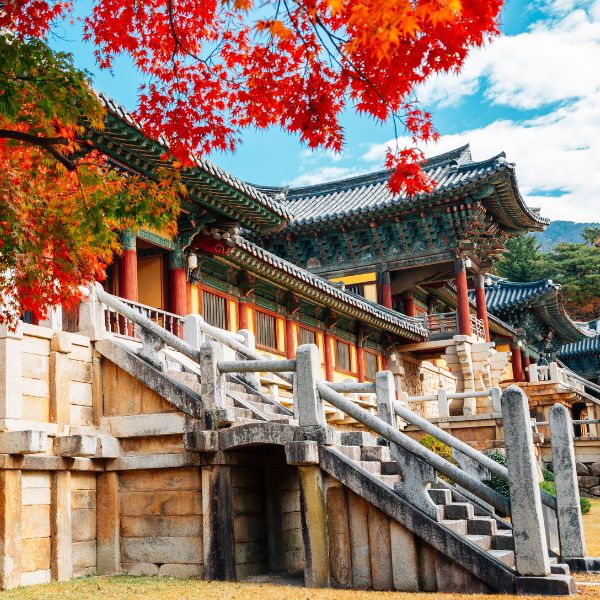
Gyeongju: Historic Capital
Gyeongju , the former capital of the Shilla Kingdom in ancient Korea, is a true treasure trove of UNESCO World Heritage sites, as well as local culture, history, and natural beauty. Described as an outdoor museum, you can see many of the big attractions in the Gyeongju Historic Area, including the 1,400 year Cheomseongdae Observatory . There’s so much to see in Gyeongju outside this area though, including the impressive Bulguksa Temple, one of the best Buddhist temples in Korea. There’s also the Bomun Lake Tourist District, a dreamy sight during cherry blossom season.
What To See In Gyeongju
Here are 10 great places to visit in Gyeongju:
- Bulguksa Temple & Seokguram Shrine
- Cheomseongdae Observatory
- Donggung Palace & Wolji Pond
- Yangdong Folk Village
- Hwangnidangil Hanok Street
- Daereungwon Tomb Complex
- Bomun Lake Tourist Complex
- Woljeonggyo Bridge
- Gyeongju National Museum
- Gyochon Traditional Hanok Village
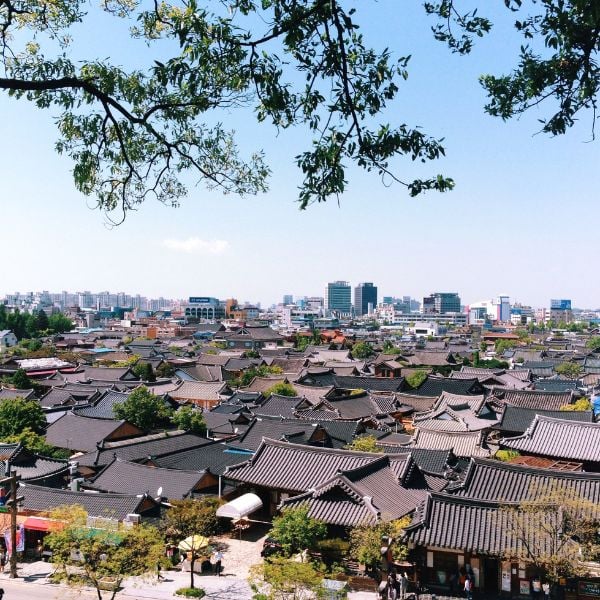
Jeonju: Traditional Views & Food
Jeonju is the perfect destination for a day trip from Seoul and has most of its main attractions in one area of the city. What can you see in Jeonju? The main attraction is the gigantic Jeonju Hanok Village , featuring more than 700 traditional hanok houses. You can dress up in Korean hanbok, dine on Jeonju’s famous bibimbap in an old restaurant, and see how life in Korea used to be. There are plenty of other sights nearby, including a traditional market, pretty river, and the rather unusual Jaman Mural Village.
What To See In Jeonju
Here are 5 great places to visit in Jeonju:
- Jeonju Hanok Village
- Jeongdong Catholic Church
- Gyeonggijeon Shrine
- Nambu Traditional Market
- Jaman Mural Village
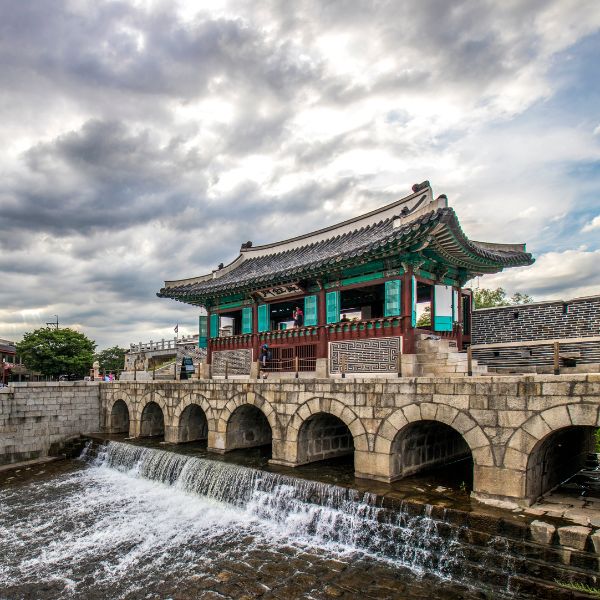
Suwon: Fortress City
Suwon is another city close to Seoul that you can visit in a day and see many interesting and unique sights. The main draw of Suwon is the Hwaseong Fortress and the fortress walls, which are still intact and run for 6km around the city. Inside this fortress you’ll find lots of museums, historic buildings, parks, and activities, such as archery. There are often cultural festivals in this area, too. Surprisingly, Suwon is the best place to get KFC (Korean Fried Chicken). There’s a whole street dedicated to making it.
What to See In Suwon
Here are 5 great places to visit in Suwon:
- Hwaseong Fortress & Fortress Walls
- Hwaseong Haenggung & Haengridan Gil
- Fried Chicken Street
- Korean Folk Village
- Gwanggyo Lake Park
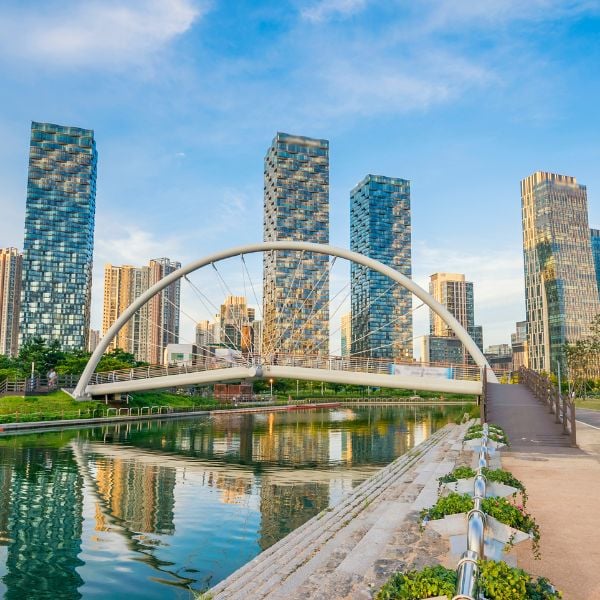
Incheon: Modern City With Islands
Incheon is one of Korea’s largest cities, but is sadly ignored as it’s right next to Seoul and most people think it’s just there for the airport. That’s not true at all and there’s plenty to see and do in Incheon. Described as a futuristic city, Incheon is at the front of Korea’s push to become an ultra-modern country and nowhere shows that more than Songdo Central Park . The traditional side of Incheon is also worth exploring, including the Chinatown, which is home to Korea’s most popular student food – jajangmyeon . If you want to explore a lesser-seen side of Korea, check out the islands near Incheon to see ancient fortresses, temples, and charming sights.
What to See In Incheon
Here are 5 great places to visit in Incheon:
- Songdo Central Park
- Incheon Chinatown
- Wolmido Island
- Incheon Grand Park
- Ganghwa Jeondeungsa Temple
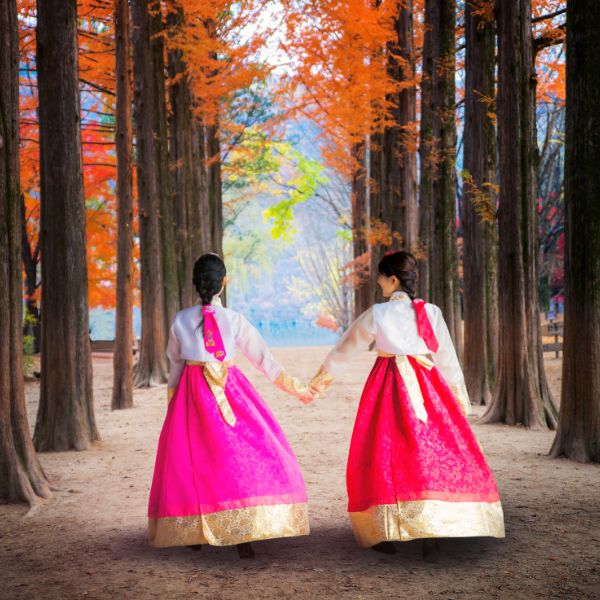
Gapyeong County: Tourists Treats
Gapyeong County is a rural part of Korea just outside Seoul that is one of the most popular day trip destinations for visitors and locals alike. Inside Gapyeong County is the lovely Garden of Morning Calm , a beautiful sculpted garden that showcases traditional Korean buildings set amongst thousands of different plants and trees. There’s also Nami Island , an ever-popular attraction that has long tree-lined streets to explore, woodland animals, bike paths, and even a zip line to the island. You can also visit Petite France, a recreation of a French village, Gapyeong Rail Bike Park, and Cheongpyeong Lake, and many other attractions in Gapyeong.
What To See In Gapyeong
Here are 5 great places to visit in Gapyeong:
- Nami Island
- Garden of Morning Calm
- Petite France
- Gapyeong Rail Bike Park
- Cheongpyeong Lake
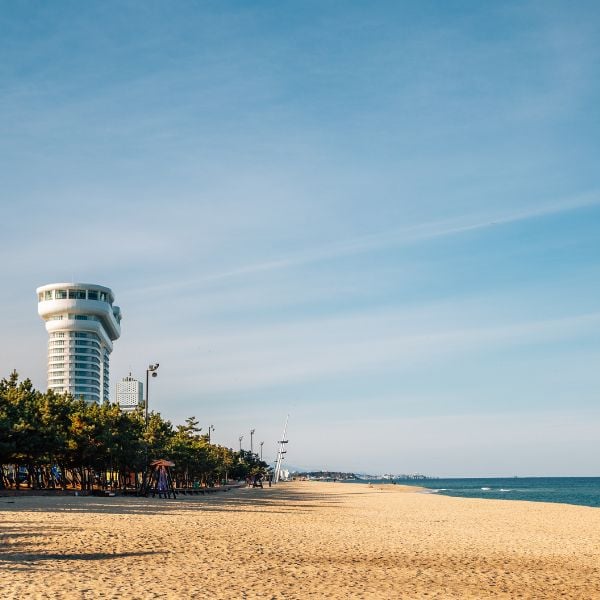
North-East Coast: Amazing Beaches
The north-east coastal region of Korea, spreading between Sokcho and Gangneung , features some of Korea’s most popular summer seaside resorts and beaches. The wide, sandy beaches are perfect for water sports, working on your tan, and sitting at night listening to local musicians perform BTS covers and their own tunes. Sokcho deserves at least two days to explore, more if you plan to visit nearby Seoraksan National Park , one of Korea’s best places to see autumn foliage. Gangneung is where to see cherry blossoms in spring, sit and relax at a seaside cafe at Gangneung Coffee Street , and enjoy beach life.
What To See On The North-East
Here are 5 great places in north-east Korea:
- Sokcho Beach
- Gangneung Beach
- Seoraksan National Park
- Yangyang Surfyy Beach
- Gangneung Coffee Street
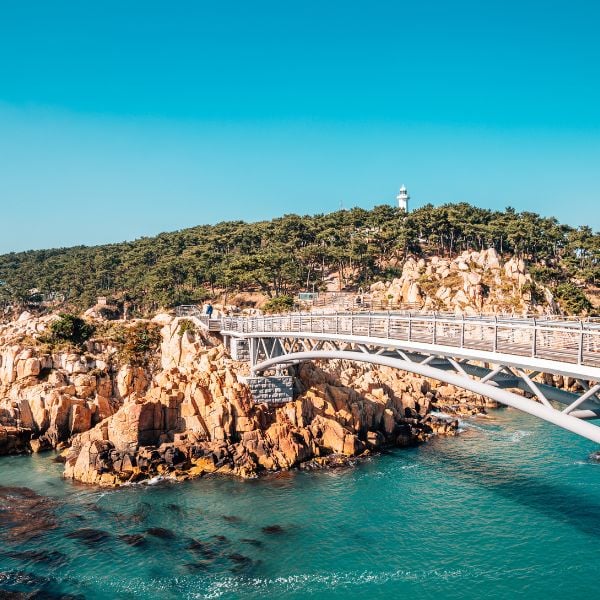
East Coast: Harbour Cities
Ulsan and Pohang are two industrial cities that don’t get enough attention, but are ideal for a weekend visit once you’ve explored other top sights. These coastal cities both have good beaches, coastal walks, and green spots, including a pretty bamboo forest in Ulsan. In Pohang, you can see the dizzying Space Walk , which looks out over the city and ocean. There’s also a former Japanese district with old buildings, and the famous Homigot Sunrise Square where you can watch the first sunrise of the year. Ulsan is famous for whaling and visitors should check out the charming Jangsaengpo Whale Museum and Daewangam Park.
What To See On The East Coast
Here are 5 great places on Korea’s East Coast:
- Yeongildae Beach & Space Walk
- Ilsan Beach & Daewangam Park
- Jangsaengpo Whale Museum
- Homigot Sunrise Square
- Taehwagang National Garden
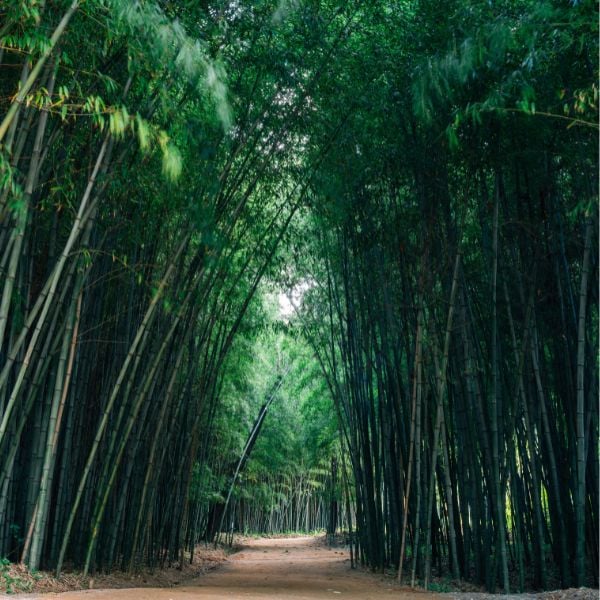
South-West: Iconic Rural Destinations
South-west Korea is a long way from most travellers’ typical route, but this area is worth visiting if you have time. Gwangju , one of Korea’s largest cities, is hidden away down here and surrounded by natural beauty, including the Juknokwon Bamboo Forest , Boseong Green Tea Fields, and Suncheon Bay Nature Reserve. If you plan to hire a car , these spots will show you a completely different side to Korea. Gwangju, too, which is a fun city and the birthplace of Korean democracy. Hidden in the far corner of Korea is Mokpo, a lovely coastal city that has a new cable car carrying you over the ocean.
What to See In The South-West
Here are 5 great places in south-west Korea:
- Damyang Juknokwon Bamboo Forest
- Boseong Green Tea Fields
- Gwangju Culture Park & Penguin Village
- Suncheon Bay Nature Reserve
- Mokpo Marine Cable Car
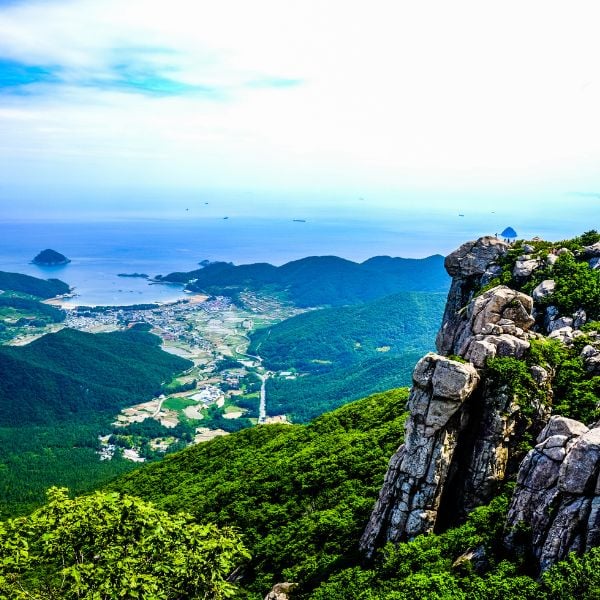
South Coast Islands: Summer Getaways
Best explored during the hot summer months and early autumn, the south coast islands in Korea, which span from Busan to Mokpo, are where Koreans spend their summer holidays. The most popular destinations here are Geoje, Tongyeong, Yeosu, Namhae, and Goheung and each offers winding coastal paths, beaches, natural beauty, and fun summer activities. The best way to see these islands is with a rented car or by bike, riding around the coast visiting a few different beaches and attractions. Don’t expect too many cultural sights, instead you’ll find luges, gardens, water sports, and lots of fun.
What to See On The South Coast
Here are 5 great places on Korea’s South Coast:
- Dolsan Park & Cable Car
- Namhae Geumsan Boriam Hermitage
- Hallyeohaesang National Park
- Oedo-Botania Botanical Garden
- Skyline Luge Tongyeong
As you can see, there are many great places to visit in Korea. Korea is truly a country of undiscovered wonders that people aren’t aware of. Seoul is an incredible place to visit, but there’s so much more to see. That’s why I try to include lesser-known places in this South Korea travel guide.
The list above covers a lot of the most popular or tour-worthy destinations in Korea, but there are still more places I could recommend, such as Andong (home to the mask dance festival), Gunsan (port town with a retro vibe), Daegu (big city with historic sights), Daejeon , and many more.
Besides cities and towns in Korea, there are also 18 national parks to explore, thousands of mountains, Buddhist temples, beaches, bike routes, campsites, and so much more. I’ll include a few of each of these in the next few sections of this South Korea travel guide.
Best Day Tours From Seoul In 2024

Taking a day tour while you’re staying in Seoul is a great way to see more of Korea’s top attractions without the hassle of moving hotels to somewhere new. The 10 day tours from Seoul below can all be done in a day or less and can even be combined with other activities in the same day.
I don’t want to include every day tour available in this South Korea travel guide as there isn’t enough room to talk about them all. If you want to find more day tours, I recommend looking at the options available through tour providers such as Klook , Viator , and Get Your Guide .
Please note : There are many day tours from Seoul and they come with various prices. I recommend avoiding the very cheapest as these will often waste your time by taking you to some overpriced gift shop area and pressuring you to buy souvenirs or rushing you through too many attractions.
Here are 10 great day tours from Seoul:
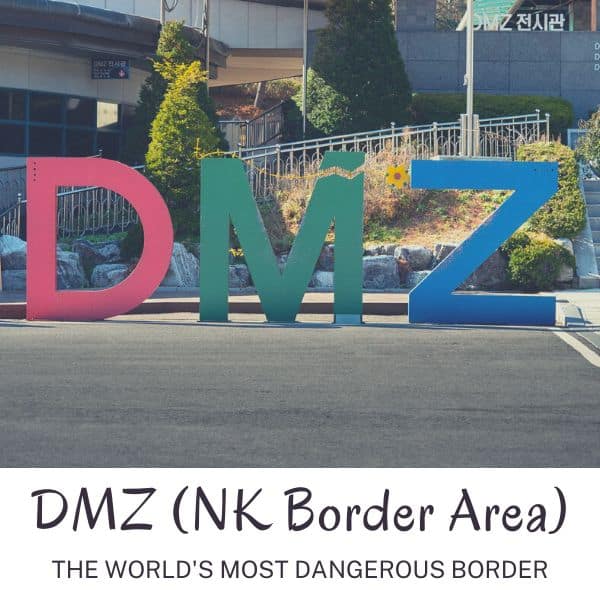
Why Visit The DMZ
The DMZ, the demilitarised zone between North & South Korea is a truly unique place to visit when you’re in Korea. There are several different locations to see in this area, each reflecting the bitter struggle between the two Korea’s in the ongoing Korean War. Some of the highlights are the 3rd Tunnel, Dora Observatory, Dorasan Station, Gamaksan Suspension Bridge, and the Imjingak Park. There’s also the Panmunjom Truce Village where you can walk into North Korea, but this is currently closed. Tours are required to travel to certain parts of the DMZ.
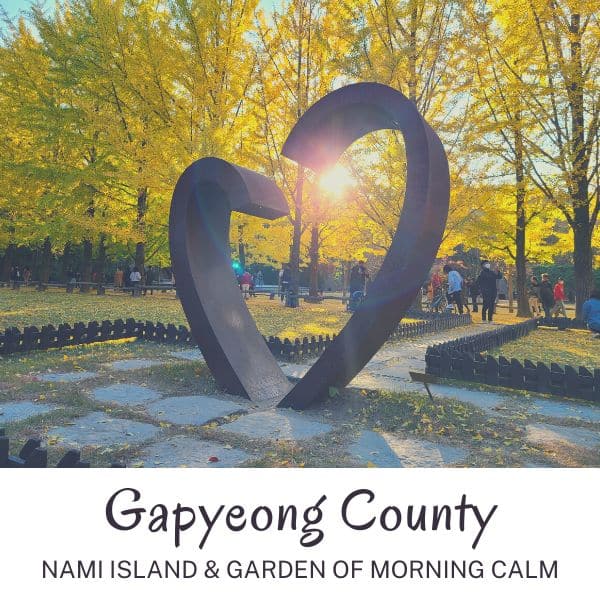
Why Visit Gapyeong County
Gapyeong County is home to Nami Island, the Garden of Morning Calm, Petite France, Gapyeong Rail Bike Park, and several other fun attractions. Nami Island and the Garden of Morning Calm are the most popular and can both be visited in a day. You can witness beautiful scenes at these destinations, especially during cherry blossom season (April) and autumn foliage season (October). Tours from Seoul to Gapyeong County are convenient and can take you to multiple places in one day without the hassle of buses and finding your own way.
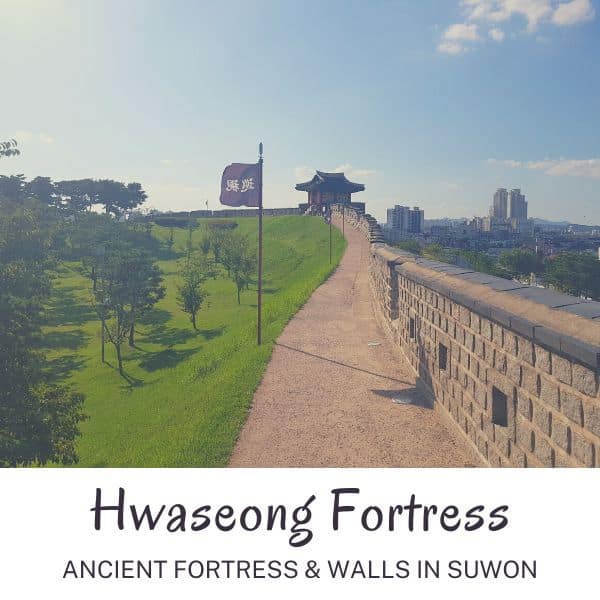
Why Visit Hwaseong Fortress
Hwaseong Fortress and its fortress walls offer a unique chance to see what life was like in Korea 200 years ago. Not only can you walk the full length of the walls around the city, you can also try archery and other traditional activities in the fortress grounds. There are many museums, fortress buildings, and exhibitions showing how people lived in this period. You can also enjoy the beautiful ponds and streams that run through the palace with traditional Korean restaurants and cafes looking out over these areas.
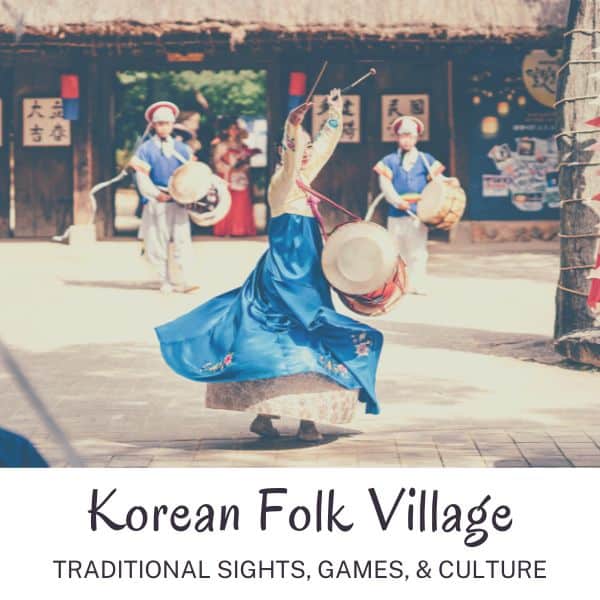
Why Visit Korean Folk Village
Discover traditional Korean life at the Korean Folk Village in Yongin during a day trip from Seoul. Walk through dozens of recreated farm buildings, government offices, academies, shops, smiths, schools, and other traditional buildings from Korea’s past to get a feel for how people lived at this time. Actors dressed in traditional Joseon-era costumes bring the scenes to life. You can try fun activities, such as mask carving, horse riding, and archery. Witness exciting festivals and cultural performances, too.

Why Visit Jeonju Hanok Village
A day trip to the Jeonju Hanok Village in Jeonju is a great way to experience various traditional Korean cultural activities in a beautiful setting. This sprawling hanok village has over 700 traditional buildings for you to explore, dine in, or even stay in. Make sure you rent hanbok in Jeonju so you look like Korean royalty and make memorable photos during your trip. Whilst you’re in Jeonju Hanok Village, you can try local delights such as Jeonju bibimbap and PNB chocopies. Also check out the traditional Nambu Market and Jeongdong Catholic Church.

Why Visit Alpaca World
When you travel to Korea, you may not think about seeing alpacas, which are from an entirely different continent. But Korea’s love of all things cute means that these furry friends have become very popular in Korea and have their own theme park a few hours from Seoul. There are dozens of cuddly alpacas to see, feed, and play with at Alpaca World , as well as hundreds of other cute critters such as ponies, rabbits, deer, goats, fennec foxes, and more. There are 17 separate areas to explore in Alpaca World and it’ll provide hours of fun for the whole family.
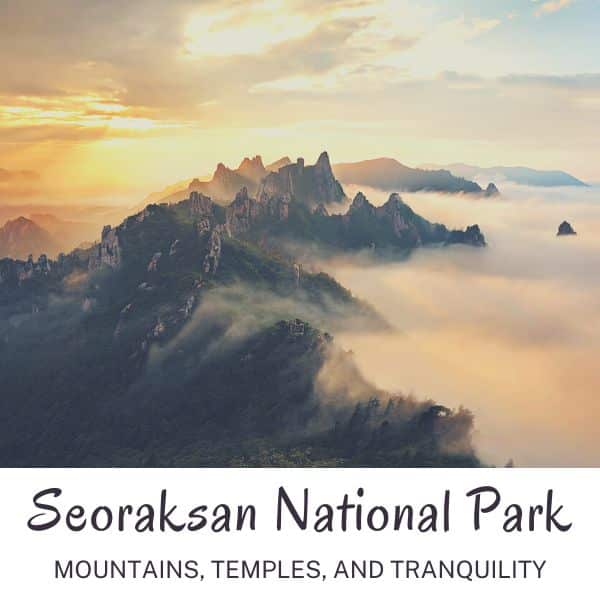
Why Visit Seoraksan
Seoraksan National Park on Korea’s east coast is a great day trip from Seoul for those who want to see mountain peaks, leafy valleys, stony rivers, and a gigantic Buddha. Even if you’re not a keen hiker, you can explore lots of the park’s valley pathways easily, or reach the top thanks to the convenient cable car. See the sights from the observatory and check out the small temple in the clouds. Make sure you try haemul pajeon (seafood pancake) and makgeolli (rice wine). It’s the traditional meal Koreans enjoy after hiking.
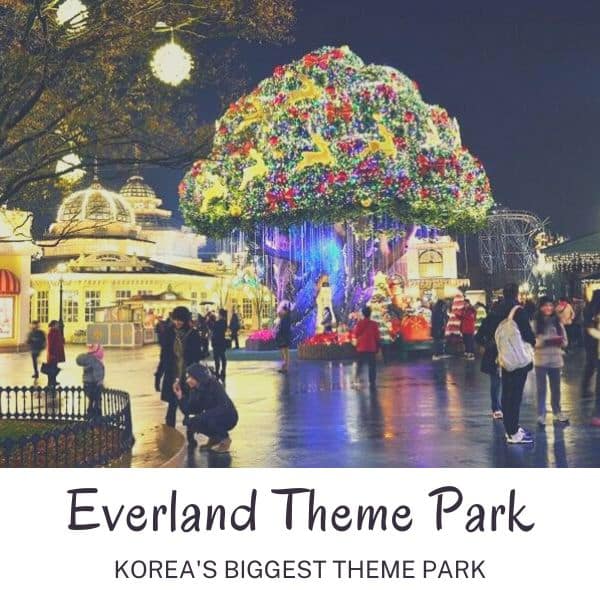
Why Visit Everland
Everland is Korea’s biggest theme park and is packed with attractions for everyone to enjoy. Thrill seekers will love the rollercoasters, such as T Express (the world’s 4th steepest rollercoaster) and many more exciting rides. Check out the Zootopia section to see wild animals and wild rides, or the Plantopia section for floral beauty, romantic walkways, and seasonal delights. There are plenty of attractions, cultural performances, entertainments, and seasonal events to keep you amused all day long.
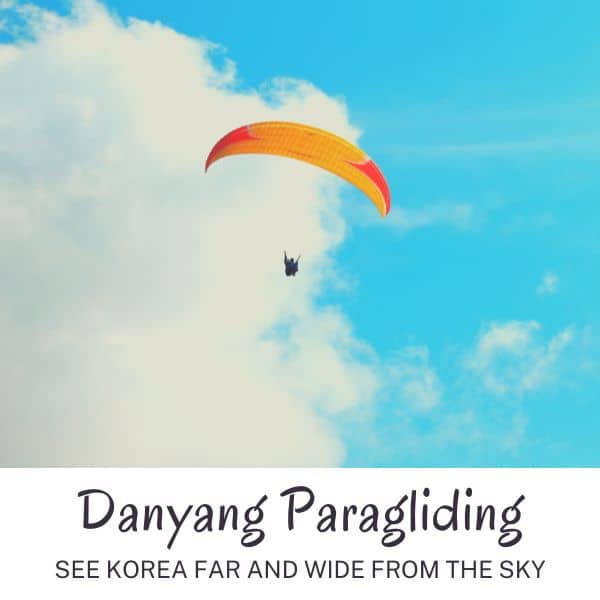
Why Visit Danyang
A great way to see Korea’s countryside is with a day trip to Danyang to enjoy the rush of sailing over valleys and beside mountains while tandem paragliding. Feel the wind in your face and the sensation of riding the air currents as you pass over the many delightful views of Danyang. You can enjoy other activities in this area, such as the Mancheonha Skywalk , a clifftop lookout with incredible views, riding an alpine coaster, and zooming along a zip line. The perfect day tour from Seoul for thrill seekers.
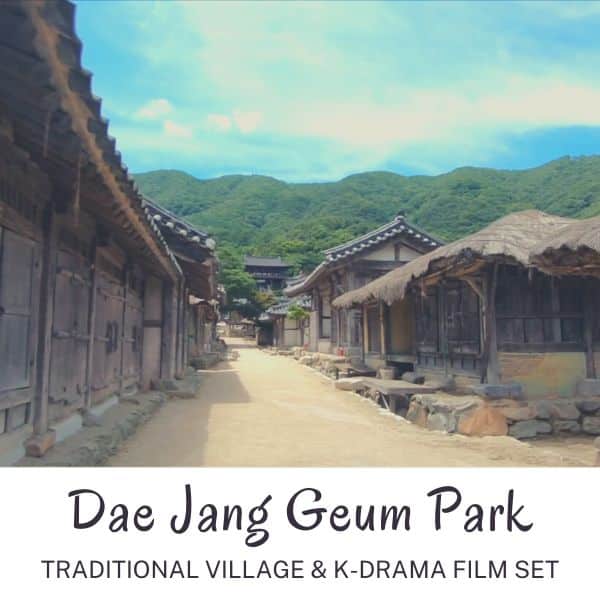
Why Visit Dae Jang Geum Park
Fans of Korean period dramas and movies will love a day trip to Dae Jang Geum Park in Yongin. This is the largest historical drama filming set in Korea and was used to film MBC productions such as ‘Wind in the Palace’ and ‘The Great Queen Seondeok’, as well as K-Pop videos including Daechwita by Suga from BTS. If you’re lucky, you may see filming going on here. But even if you don’t, it’s a fun place for those who want to learn more about Korea’s history and take some cool pictures in a real movie set.
I’ve linked to tours provided by reliable tour companies in Korea. If you would rather book a tour through a local guide, contact Jerry Heng or Andrew Chung Hanbyul . They’re freelance guides with years of experience offering tours in Korea and both offer amazing service.
These places are accessible by public transport, but may take much longer than a tour would do, wasting your precious time. Check out my guide for getting to Nami Island to help you navigate Gapyeong County. For other destinations, I would recommend a tour – it’s more practical.
Best Sights To See In Korea In 2024
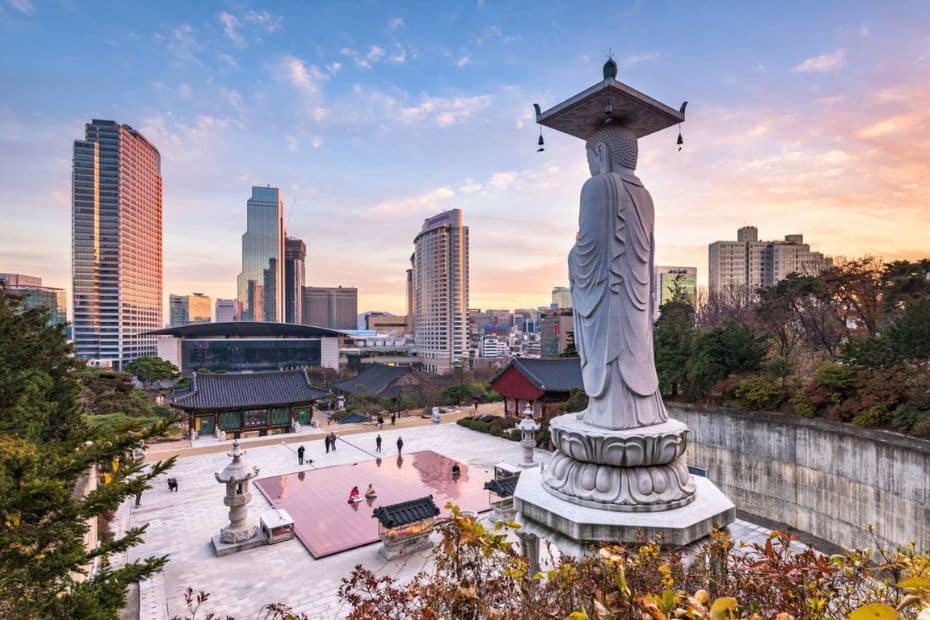
South Korea truly has something for everyone. There’s so much I want to include in this South Korea travel guide, which is why this section is full of different sights to see and explore. However, to keep things short and simple, I’ll just list them, not give full details about each one.
Whether you’re travelling to Korea to learn about Korean culture or history, to see Korea’s impressive landmarks, to enjoy family fun attractions, to hop from cafe to cafe, to immerse yourself in nature, or simply to eat and shop, then you’ll definitely find something for you in this section.
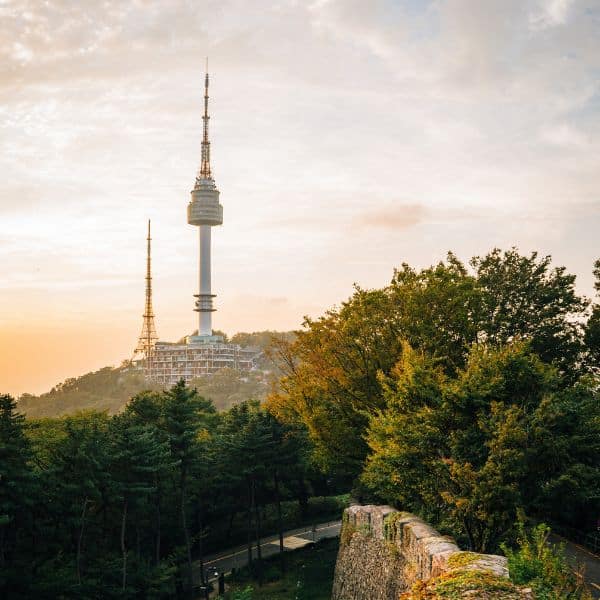
Famous Landmarks In Korea
Landmarks and iconic buildings are often top of a traveller’s bucket list for Korea as they provide great photo opportunities, showcase the best of the country, and offer fantastic views. Seoul has many top landmarks, but you can see plenty of other sights outside of the capital, too.
Here are 10 famous landmarks in Korea:
- Lotte World Tower (Seoul)
- N Seoul Tower (Seoul)
- Dongdaemun Design Plaza (Seoul)
- Cheonggyecheon Stream (Seoul)
- DMZ Area (near Seoul)
- Nami Island (Gapyeong County)
- Gamcheon Culture Village (Busan)
- Seongsan Ilchulbong (Jeju)
- Homigot Sunrise Square (Pohang)
- Banwol Purple Island (West Coast)
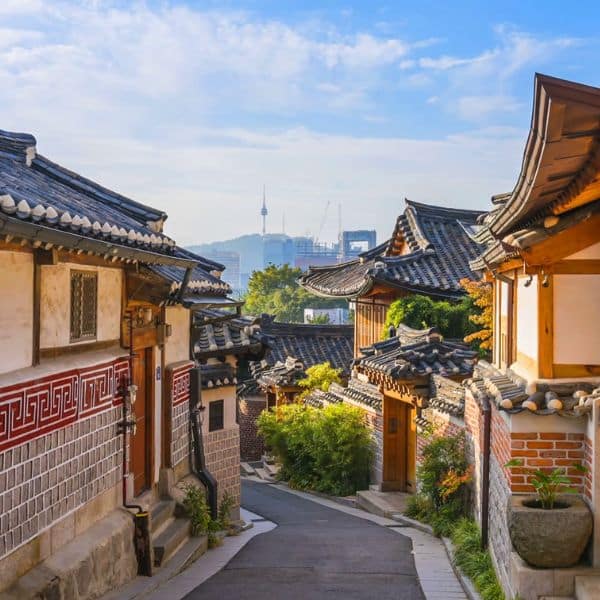
Historic Sights In Korea
Discover life in the Joseon period and before in Korea’s many captivating historic sights, including royal palaces, Buddhist temples, fortresses, and hanok villages. There are so many amazing historic sights to see in Korea, with each city having something to see.
Here are 10 historic sights in Korea:
- Bukchon Hanok Village (Seoul)
- Gyeongbokgung Palace (Seoul)
- The Secret Garden (Seoul)
- Seoul Fortress Walls (Seoul)
- Hwaseong Fortress (Suwon)
- Bulguksa Temple (Gyeongju)
- Gyeongju Historic Area (Gyeongju)
- Jeonju Hanok Village (Jeonju)
- Haedong Yonggungsa Temple (Busan)
- Andong Hahoe Village (Andong)
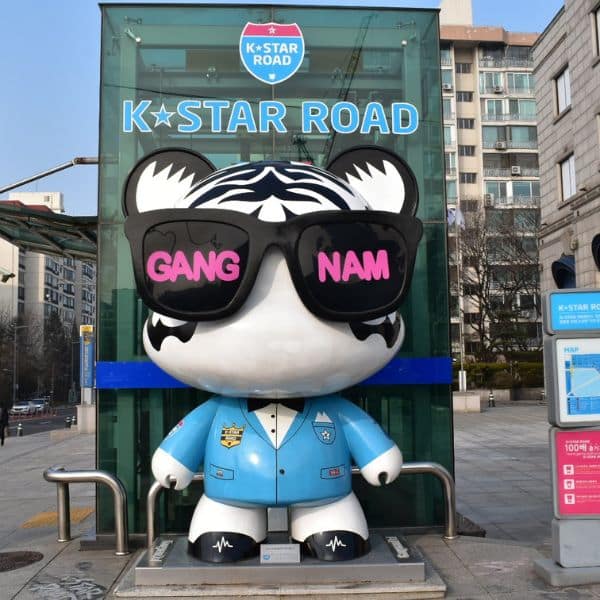
Korean Modern Cultural Sights
Fans of BTS, K-Dramas, Korean movies, and modern Korean culture in general have a lot to see and do in Korea. As well as famous filming locations across the country, these modern cultural sights will entertain, inform, and provide great destinations to visit.
Here are 10 modern cultural sights in Korea:
- Hallyu K Star Road (Seoul)
- K-Style Hub (Seoul)
- Hongik Uni. Station Area (Seoul)
- COEX Artium (Seoul)
- Asia Culture Centre (Gwangju)
- BIFF Square (Busan)
- Dae Jang Geum Park (Yongin)
- Sunshine Studio (Nonsan)
- Kim Gwang-Seok Street (Daegu)
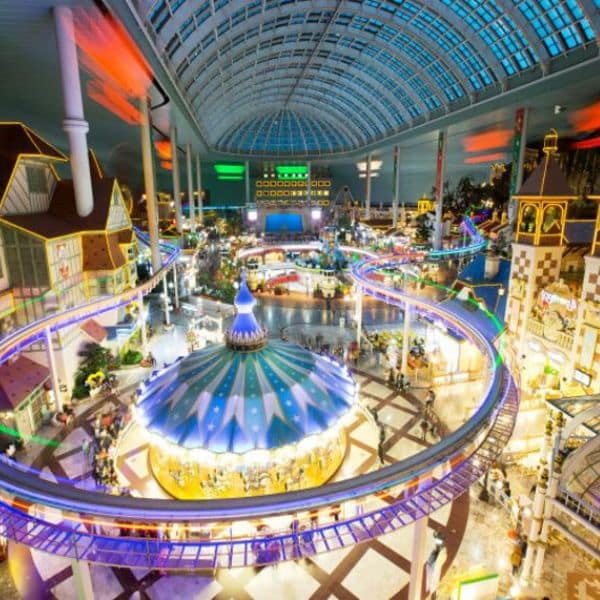
Family Fun Attractions In Korea
Families travelling to Korea have plenty of things to see and do and ways to enjoy spending time together. There’s no Disneyworld or Universal Studios in Korea, but there are plenty of great alternatives, as well as places for children to explore, learn, and discover.
Here are 10 family fun attractions in Korea:
- Lotte World Adventure (Seoul)
- Everland Theme Park (Yongin)
- Seoul Grand Park & Zoo (Seoul)
- Alive Museum & Dynamic Maze (Seoul)
- Seoul Children’s Museum (Seoul)
- Zoolung Zoolung (Seoul)
- Sea Life Busan Aquarium (Busan)
- Jeju Dinosaur Island (Jeju Island)
- Alpaca World (Gangwon Province)
- Skyline Luge & Lotte World (Busan)

Korean Museums & Galleries
Travellers to Korea who want to learn about Korea’s history, culture, and art will love Korea’s impressive museums and galleries. These are great places to visit when the weather is bad and you might be surprised at how much there is to learn about Korea’s past.
Here are 10 museums & galleries in Korea:
- National Museum of Korea (Seoul)
- War Memorial of Korea (Seoul)
- Seoul Museum of Art (Seoul)
- Seoul Museum of History (Seoul)
- Seodaemun Prison Museum (Seoul)
- Museum Kimchikan (Seoul)
- National Folk Museum of Korea (Seoul)
- Gyeongju National Museum (Gyeongju)
- National Maritime Museum (Busan)
- Daegu Art Museum (Daegu)
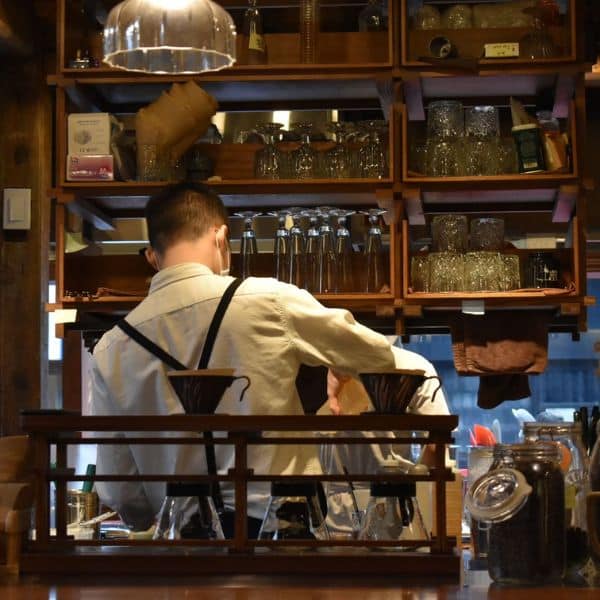
Cafe Areas In Korea
When you need a break from travelling in Korea, visit one of these cosy cafe areas and take time to relax and recharge. Although Korea was traditionally a tea drinking country, cafes are now everywhere and you’ll find photogenic cafes everywhere these days.
Here are 10 cafe areas to visit in Korea:
- Ikseondong Hanok Village (Seoul)
- Gyeongui Line Parks (Seoul)
- Samcheondong Cafe Street (Seoul)
- Sinsa-dong / Garosugil Road (Seoul)
- Jukjeon Cafe Street (Seoul)
- Jeonpo Cafe Street (Busan)
- Haeridangil (Busan)
- Hwangnidangil (Gyeongju)
- Hwaseong Haenggung Area (Suwon)
- Gangneung Coffee Street (Gangneung)
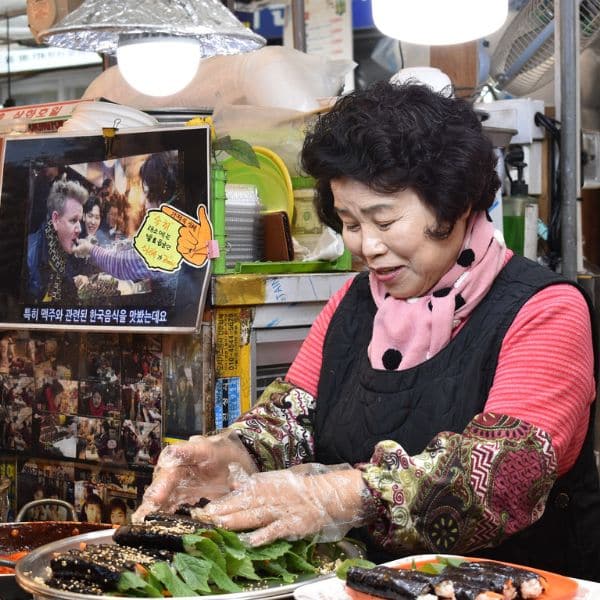
Korean Markets & Malls
If you want the best selection of street food, souvenirs, and bargain shopping options, be sure to visit Korea’s many traditional markets. It’s a cultural experience itself. Korea also has some of the world’s largest malls with a wide variety of Korean and international goods.
Here are 10 markets & malls in Korea:
- Gwangjang Market (Seoul)
- Dongaemun Market (Seoul)
- Hongdae Shopping Street (Seoul)
- Starfield COEX Mall (Seoul)
- Jagalchi Fish Market (Busan)
- Seomyeon Underground Mall (Busan)
- Centum City Mall (Busan)
- Seogwipo Maeil Olle Market (Jeju)
- Nambu Market (Jeonju)
- Paju Premium Outlets (Paju)

Korean Natural Wonders
Korea is a country covered in mountains, waterfalls, valleys, rice terraces, and beautiful natural sights. Make time to visit some of these natural wonders when you visit Korea and you’ll be amazed at the incredible views you can find. The national parks are truly breathtaking.
Here are 10 natural wonders to see in Korea:
- Hallasan Mountain (Jeju)
- Jirisan National Park (Southern Korea)
- Seoraksan National Park (Gyeonggi)
- Garden of Morning Calm (Gapyeong)
- Juknokwon Bamboo Forest (Damyang)
- Boseong Green Tea Fields (Boseong)
- Udo Island (Jeju Island)
- Seongsan Ilchulbong Sunrise Peak (Jeju)
- Hyeopjae Beach (Jeju)
- Suncheon Bay National Park (Suncheon)
These 100 ideas are just the tip of the iceberg for what you can enjoy when travelling to Korea. There’s so much more to discover and I recommend you add some time to your travel plans to explore without a plan. Sometimes the best travel memories come from unexpected discoveries.
Best Activities To Try In Korea In 2024
Often the most memorable moments when travelling come from the experiences we have, not just the places we visit. Visiting a palace is interesting, but visiting a palace while dressed in traditional Korean hanbok , pretending you’re Joseon-era royalty with your friends or family is much more fun.
This section of the South Korea travel guide offers 10 fun activities you can try when you visit Korea. These will give you a good introduction to Korean culture, food, history, and nature. If you want more ideas, check out my list of 50 unique Korean experiences you can only do in Korea.
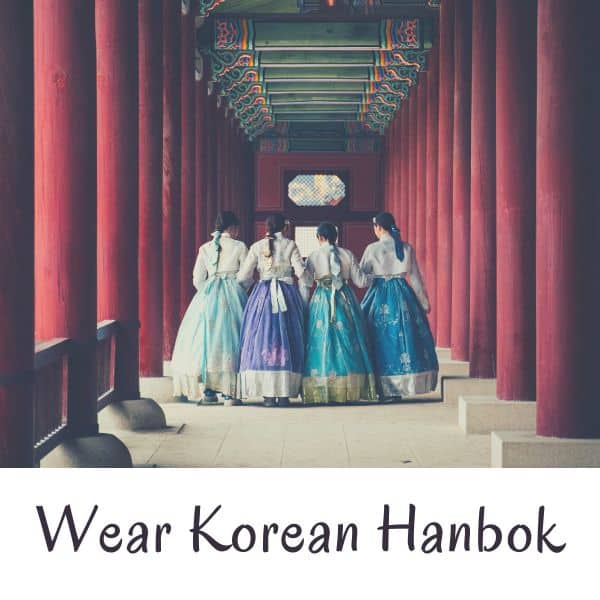
One of the top experiences to try in Korea has to be wearing Korean hanbok. It is available for all members of the family (even pets) and you can rent hanbok near most palaces or hanok villages. The hanbok easily fit over your regular clothes and come in a variety of colourful or traditional designs. You can get hair styling, accessories, and even have a hanbok photoshoot . Rentals can be as short as one hour or up to a full day.
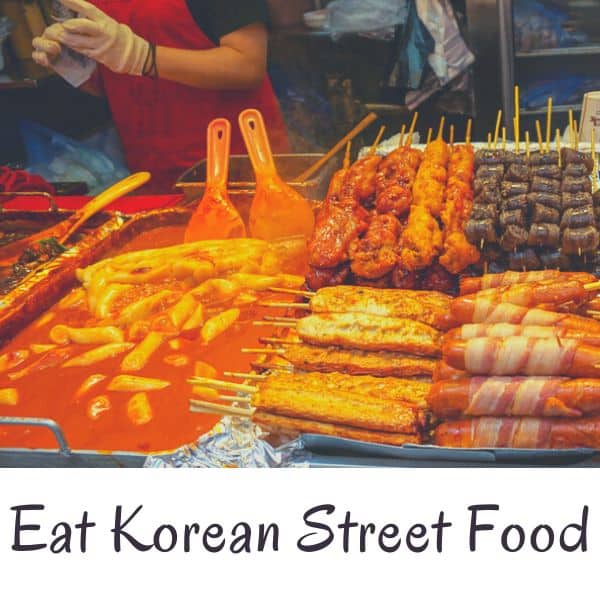
Travellers to Korea can’t say they’ve truly tried Korean cuisine until they’ve eaten Korean street food from a market stall or street vendor. There are many types of Korean street food to sample in Korea, such as savoury snacks like tteokbokki and eomuk , to sweet treats like hotteok and bungeo-ppang . Korean street food is cheap and delicious. It’s usually not that healthy, but always leaves you feeling great. Give it a try.
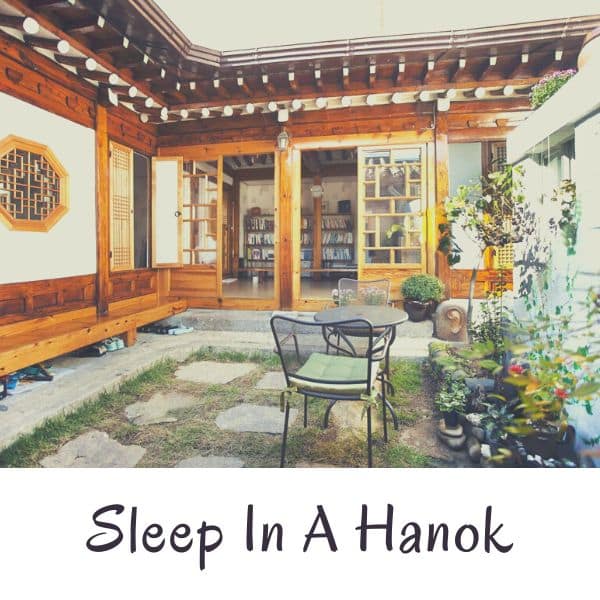
Experience life as a Korean would have in the Joseon-era with a night in a traditional hanok house. A hanok stay is very different from sleeping in a hotel and allows you to try a night on a futon (with underground heating keeping you warm in winter). Slide the doors aside in the morning and walk out onto the wooden decking to enjoy traditional Korean tea at a low table and the sight of the ornately decorated garden. Don’t forget to take your shoes off before you enter.
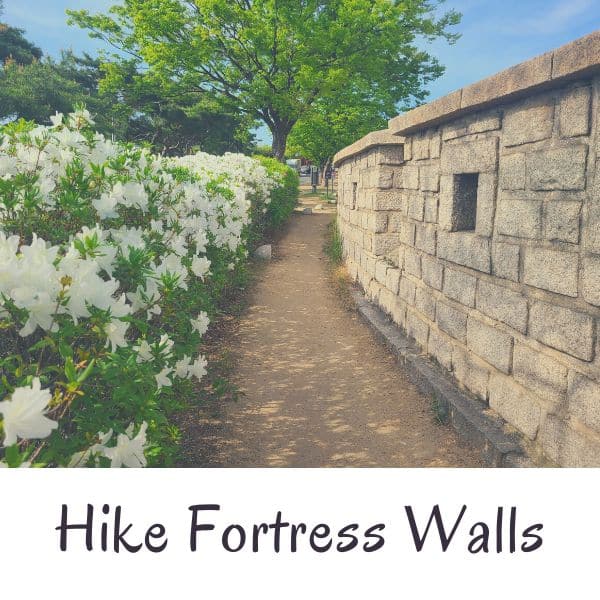
Seoul and other cities in Korea still have fortress walls you can walk or hike along that will offer incredible views of cities and mountains. As you walk along the fortress walls, you begin to imagine what life would have been like as a soldier keeping the city safe from invaders. Nowadays, you can enjoy exercise and sightseeing at the same time. Seoul’s fortress walls are a good place to start, but you can find fortress walls in many other places.
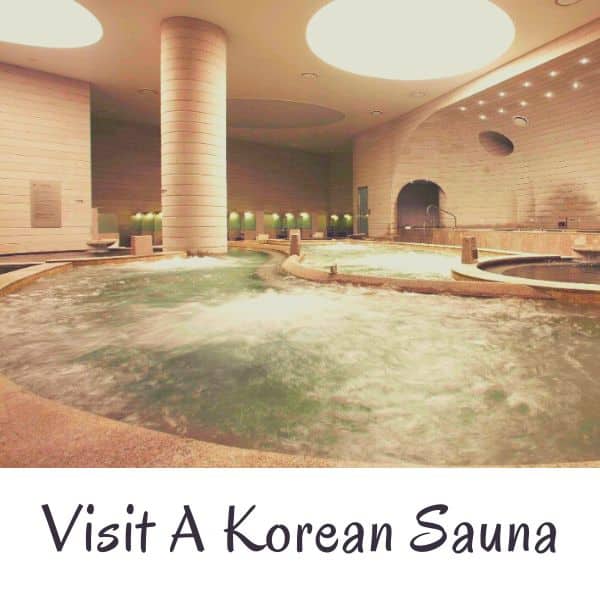
Visiting a Korean sauna might be a bit shocking for first-time travellers to Korea, but it’s a great way to relax and is especially good in winter. When you enter a Korean sauna, you should take off all your clothes, have a shower, and then enter one of the hot baths. Being naked in front of others can be scary for some, but you soon overcome that fear. Korean saunas sometimes have a communal resting area called a jjimjjilbang . These areas require pyjamas and offer snacks, drinks, and places to rest.
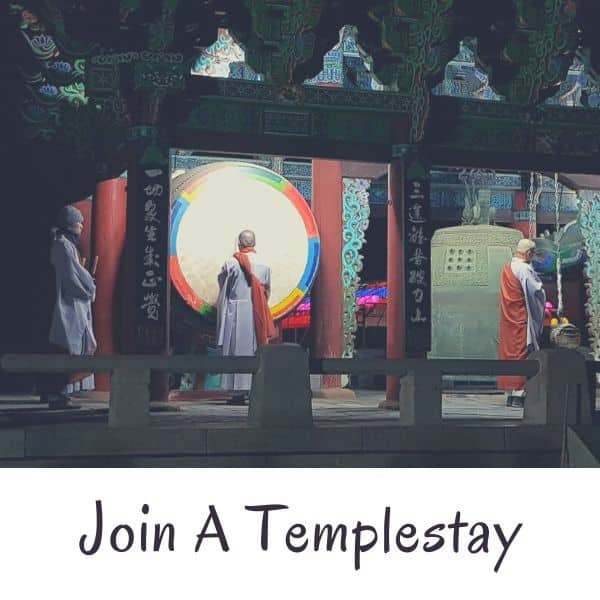
The Cultural Corps of Korean Buddhism have set up a templestay program at dozens of temples across Korea where you spend a day or two at the temple and join in various activities. This is truly a unique experience that you should try in Korea as you get to see customs performed by the monks that aren’t normally shown to the public. You also get to stay overnight at the temple and experience a hanok stay at the same time. Guests can also eat healthy vegan temple food, learn a lot, and chat with the monks.
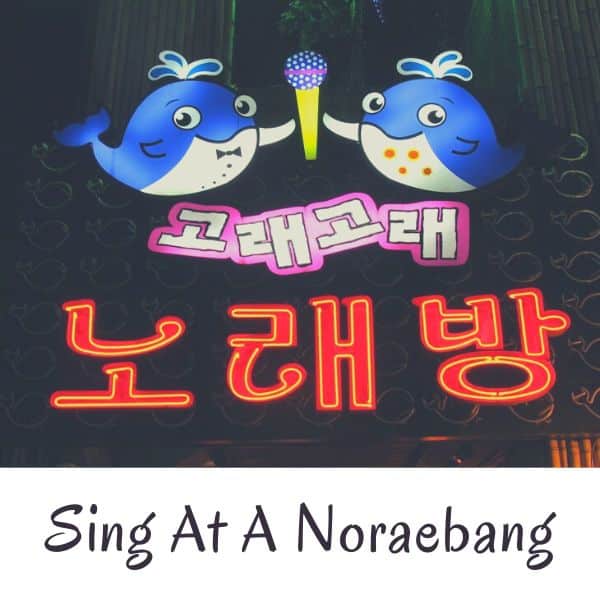
A noraebang is the Korean version of a karaoke room, but is more popular in Korea and is commonly visited by locals and tourists alike. This is a great place to visit in the evening after a big Korean bbq meal and a few drinks. Everyone can relax and belt out their favourite Korean or international tunes together (or alone), shake some tambourines in support, or just watch and enjoy the atmosphere with some drinks. You can find these in every town and city in Korea and they provide a cheap night of fun and drinks.
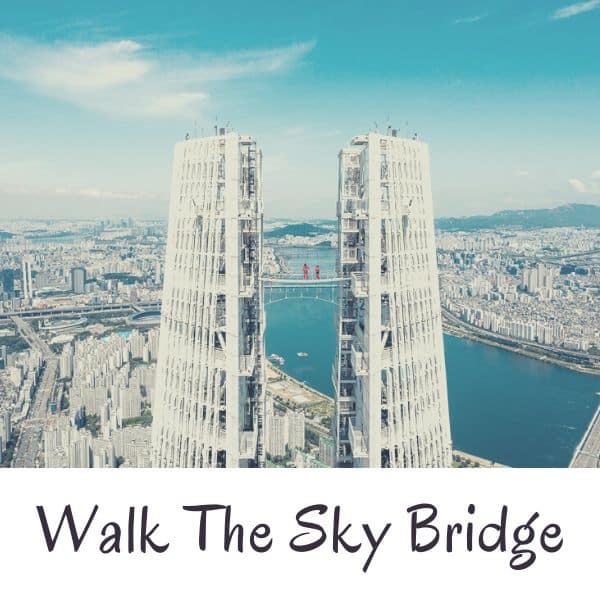
Open since 2020, the Sky Bridge at Lotte World Tower offers unbeatable views of Seoul and a nerve-racking trip above the city. Walk between the two towers at the top of the Lotte World Tower and peer down the 541 metre drop to the city streets below. It’s actually very safe and you’re strapped into a harness as you walk from one side to the other, but this definitely isn’t for the faint-hearted. If you’re not sure you can handle the height, check out the Seoul Sky Observatory on the 117th floor instead.
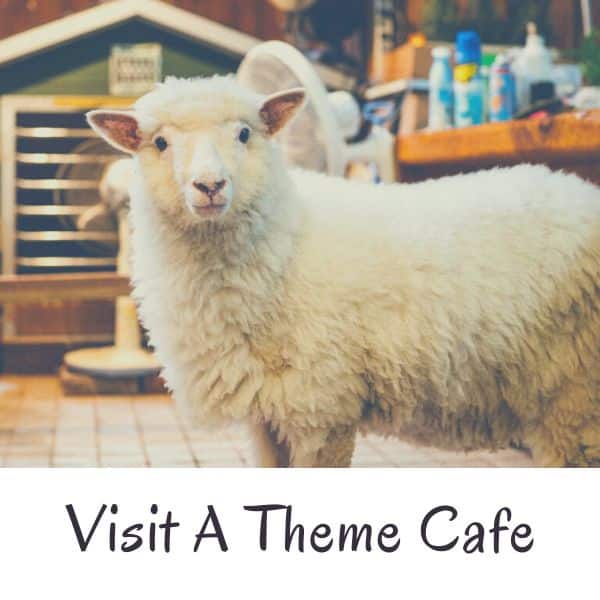
Koreans love to drink coffee and also love cute, unusual things, which is probably why theme cafes have become so popular in Korea. Besides the many cat cafes, there are theme cafes where you can stroke sheep, pet dogs, and see other animals. There’s more to Korea’s theme cafes than just drinking coffee with animals, you can also try drinking from a toilet at the Poop Cafe , paint pictures, build lego, go camping, practice being a wizard, and more. Hongdae in Seoul is the best place to find theme cafes.

Although cafes are replacing Korean tea houses, Korea still grows and drinks lots of tea, especially green tea. You can visit these tea fields in areas such as Boseong and on Jeju Island, both of which have visitor centres and attractions to teach you about the wonderful world of Korean tea. The Daehan Dawon Tea Plantation in Boseong has lush green fields all year round and has been used as a filming location for several Korean shows. The O’sulloc Tea Museum on Jeju Island also has lovely views.
I recommend trying at least a few of these unique activities, they’ll really make your trip to Korea more memorable and offer insights into Korean culture and life. My advice is to be brave when visiting Korea and try new things, even if they seem a bit unusual at first. The same applies to Korean foods.
Best Korean Festivals To Join In 2024
There are dozens of festivals held in Korea each year celebrating the seasons, local products, traditions, culture, and often just for the sake of having fun. Visiting a festival in Korea will offer you a glimpse of how locals celebrate life, culture, and nature and let you join in the fun.
Whenever you visit Korea, there’ll be festivals going on. However, the biggest festivals occur in spring or autumn. As mentioned previously in this South Korea travel guide, these are the best seasons to visit Korea as the weather is pleasant and people are celebrating the end of summer or winter.
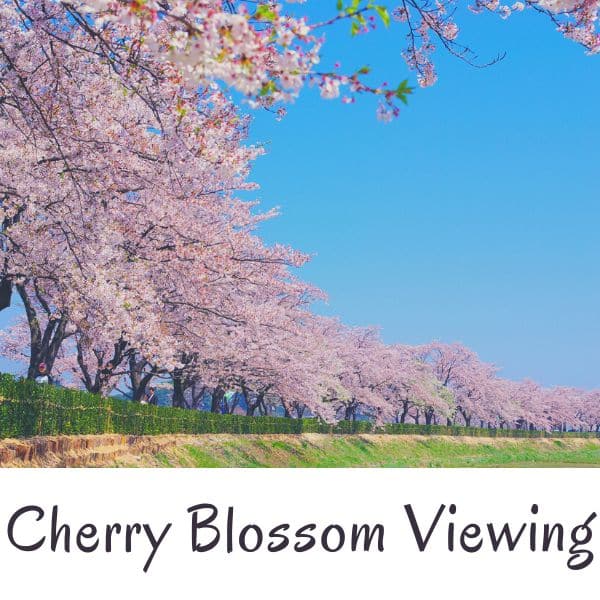
Cherry Blossom Festivals
The cherry blossom festivals in Korea occur in late March and early April and are some of the biggest festivals in Korea. People flock to forests, lakes, and rivers to see the pretty blossoms. The Jinhae Cherry Blossom Festival has over 2 million visitors each year, and even more people visit Seokchon Lake and Yeouido Hangang Park in Seoul. There are many festivals and tours to see cherry blossoms in Korea so you should be able to find a quiet place to enjoy the view.
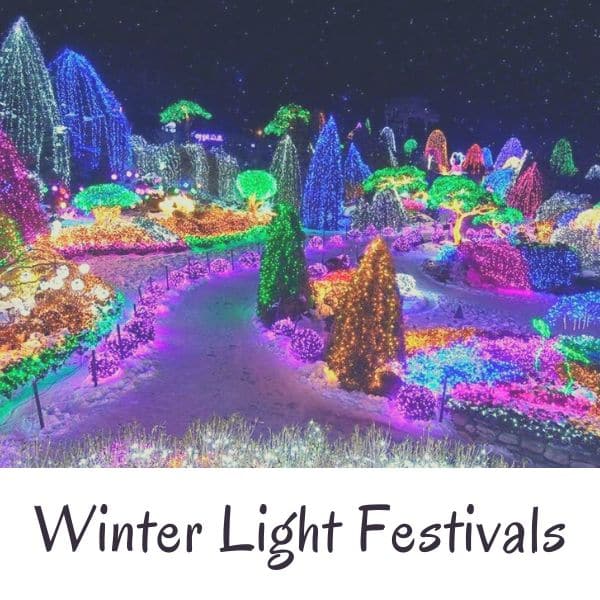
Winter Light Festivals
During the cold, dark days of winter, attractions such as Nami Island, the Garden of Morning Calm, and Herb Island transform into sparkling winter wonderlands with millions of bright lights illuminating them. There are also winter illumination festivals in Korean cities, such as the Haeundae Lighting Festival in Busan, Cheonggyecheon Stream Winter Lights in Seoul, and the Busan Christmas Tree Cultural Festival. When it snows in Korea, these festivals look even more magical.
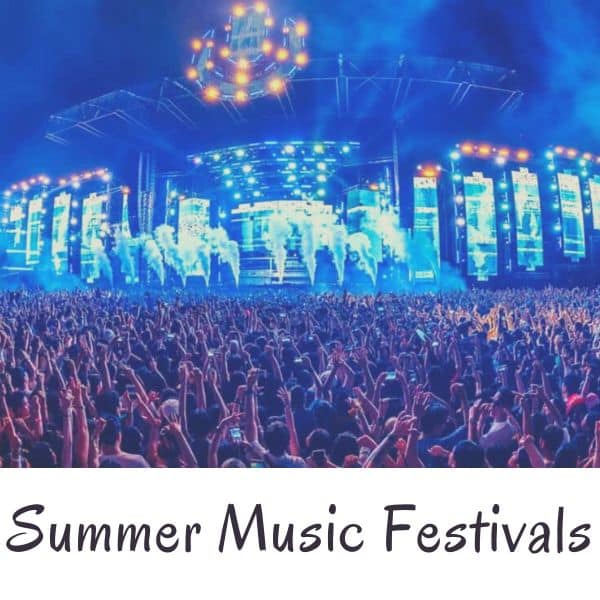
Summer Music Festivals
Summer in Korea is hot, but that doesn’t stop people enjoying day-long music festivals across the country. From chilled jazz festivals like the Seoul Jazz Festival , to action-packed concerts like Psy’s Summer Swag , there are music festivals to suit everyone. This is a popular summer activity in Korea , so be sure to book in advance for ticketed events. If you can’t get tickets, just go to a popular beach in the evening and you’ll usually find musicians performing.
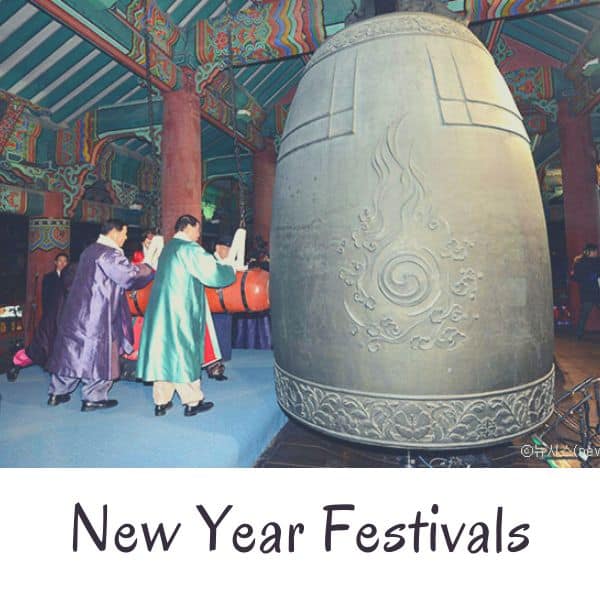
New Year Festivals
There are various festivals in Korea to celebrate the solar new year. New Year’s Eve festivals involve a bell-ringing ceremony where a giant bell is rung at midnight to welcome in the new year. Fireworks festivals are common events in cities across Korea, starting at midnight, too. Koreans celebrate the start of the new year by visiting the East Coast to see the first sunrise of the year at places like Homigot Sunrise Square or Seongsan Ilchulbong on Jeju Island.
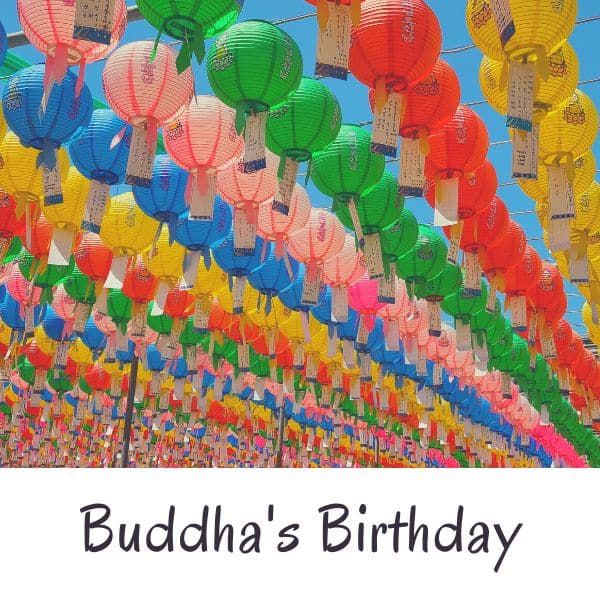
Buddha’s Birthday Festivals
Buddha’s Birthday is like Christmas for the Buddhist world, but celebrated very differently. It also falls on changing dates each year as it follows the lunar calendar, just like Korean New Year. Korean Buddhist temples across Korea will celebrate by putting up colourful lanterns and decorations for at least a month before the actual date. The biggest festival celebrating Buddha’s Birthday is the Yeon Deung Hoe Lantern Festival , which features thousands of lanterns and a lantern parade through central Seoul.
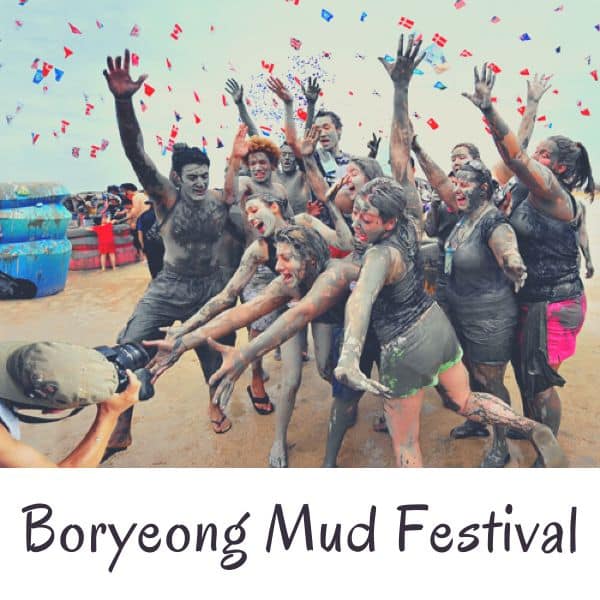
Boryeong Mud Festival
The Boryeong Mud Festival is one of Korea’s largest festivals and attracts visitors from around the world. Running for 2 weeks during rainy season, this is the best way to see a Korean festival even when the weather is bad. There’s a lot to see and do at this festival, including getting dirty in the mud with mud sports, mud wrestling, mud tug-of-war, and other mud-filled events. Boryeong is famous for the high-quality mud found in nearby waters and, by joining this festival, you’re getting a free mud facial.
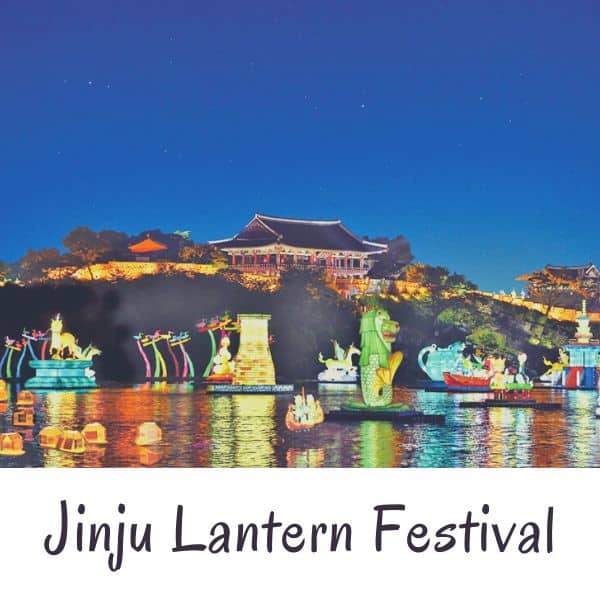
Jinju Lantern Festival
The visually stunning Jinju Lantern Festival is held in October each year in Jinju City and runs for several weeks. During the day, watch cultural performances and enjoy exploring the central fortress grounds of Jinju. Once it gets dark, see the city transform as thousands of lanterns, some as big as trees, come to life. There are so many weird and wonderful lanterns to discover at this festival. You can also set your own lanterns to float down the river with your wish inside.

Andong Mask Dance Festival
The Andong Mask Dance Festival in Andong, home of the Andong Hahoe Village, is a great opportunity to witness traditional Korean dance and music performances. Not only can you see traditional Korean performances during this 4 day festival, there are also international performers displaying their own culture’s dancing. Get hands-on with traditional Korean culture at this festival. Explore Andong and learn about its contributions to Korea’s cultural development.
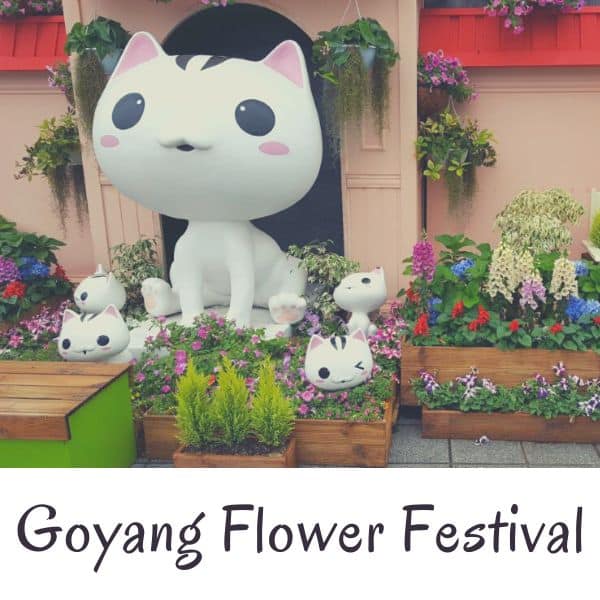
Goyang Flower Festival
The Goyang International Flower Festival runs twice per year, once in spring and once in autumn. It’s a beautiful celebration of floral beauty mixed with Korean cuteness and creativity. At this flower festival you can stroll through a maze of different displays, with each section focusing on certain flowers and plants. There are indoor displays with vividly coloured roses, nature-based outdoor photo zones, and the lovely Ilsan Lake Park in the background.
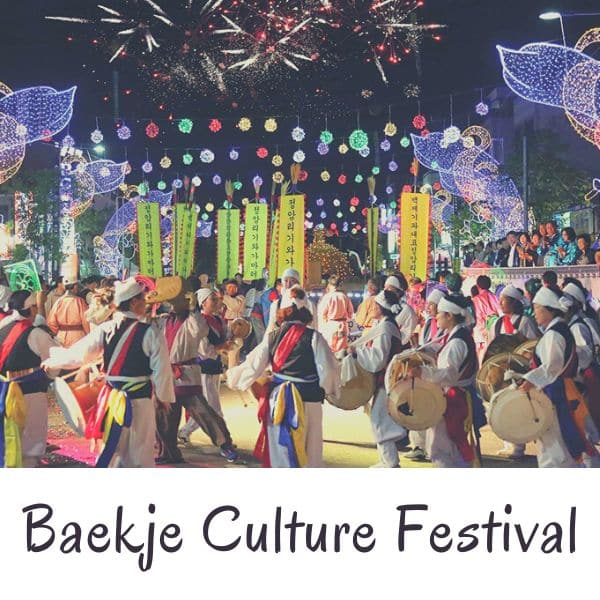
Baekje Culture Festival
The Baekje Culture Festival probably isn’t one that first-time travellers to Korea would know about. Held in Gongju and Buyeo, the two former capitals of the ancient Baekje Kingdom, this 10-day long festival held around Chuseok (Korean mid-autumn harvest festival), is packed with unique events and sights and is set in historic locations in each city. There’s local food to try, musical & cultural performances, fun photo zones, lantern displays, and much more.
Knowing when you plan to visit Korea will help you research what festivals are on and what the weather will be like. There are certainly a lot more than just the ones mentioned above, including some others mentioned previously in the seasons part of this South Korea travel guide.
I recommend using a tour company to see out of the way festivals like the Jinju Lantern Festival and the Jinhae Cherry Blossom Festival. These are often far from typical tourist destinations and can take hours to get to by public transport. Tours are worth the cost to save you time and avoid hassle.
Recommended Itinerary For Korea In 2024
In this section of this South Korea travel guide is my recommended first-timer itinerary for South Korea. This introduces you to two of Korea’s biggest cities, as well as a couple of day trips to highly rated destinations in Korea. There’s a mix of history, culture, nature, sights, and experiences.
This itinerary starts in Seoul as that’s where most people arrive to Korea after flying into Incheon Airport. If you arrive in Busan, you can change the route to start and end there instead. For travellers to Korea with only 2 or 3 days, I recommend using the first few days of this itinerary instead.
The itinerary lasts for one week, which isn’t enough time to see all of Korea, but enough time to get a feel for the country. If you have more time, use this itinerary and add in or replace extra destinations as you like. Jeju Island is certainly worth visiting if you have an extra 2 or 3 days.
Classic Sights Of Korea Itinerary
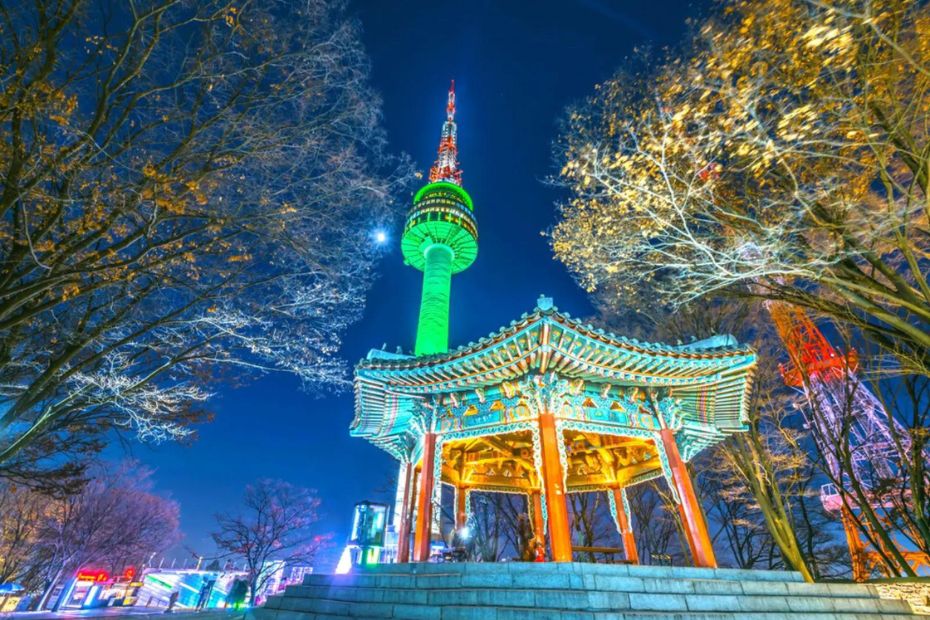
This itinerary covers a few must-see sights in Korea, including the two largest cities, the history city of Gyeongju, and some popular day trip destinations from Seoul.
Day 1 : Arrive in Seoul and explore Gyeongbokgung Palace, Bukchon Hanok Village, Insadong Art Street, Jogyesa Temple, and Cheonggyecheon Stream. Get dinner at the Jonggak Avenue of Youth for authentic Korean food that’s better than the touristy places in Myeongdong.
Day 2 : Learn about Korean history at the War Memorial of Korea or National Museum of Korea, explore Seoul’s traditional Gwangjang market in Dongdaemun, take the cable car to the N Seoul Tower for sunset & night views, then head down to Itaewon or Myeongdong for dinner & drinks.
Day 3 : Take a day trip to Gapyeong and visit Nami Island, the Garden of Morning Calm, and the Gapyeong Rail Bike Park. Return to Seoul for dinner and rooftop drinks in Myeongdong and then walk along the fortress walls from Dongdaemun Station if the weather is good.
Day 4 : Take the KTX to Busan, drop your bags, and take the subway to Nampo-dong for Jagalchi Fish Market, Bosu-dong Book Alley, and traditional sights. Take a taxi to Huinnyeoul Culture Village. End the day in Haeundae for evening dinner & drinks and a walk along the beach at night.
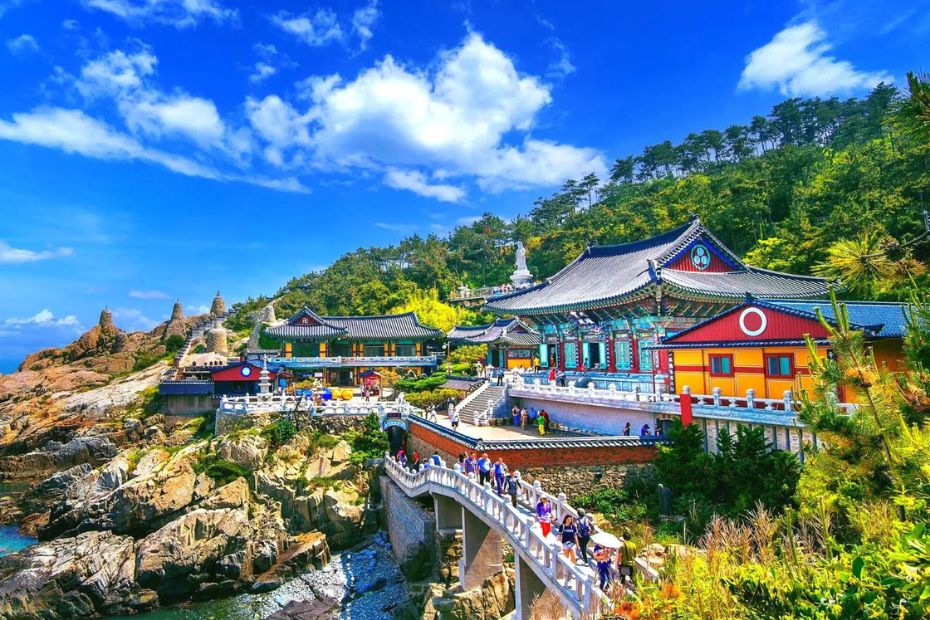
Day 5 : Take the bus to Haedong Yonggungsa Temple, then a taxi to Songjeong Beach. Relax in a beachside cafe, then take the Haeundae Beach Train to Cheongsapo, change to the Sky Capsule, and end up in Haeundae. Take a bus to Gamcheon Culture Village and get dinner at Songdo Beach.
Day 6 : Take a day trip from Busan to the UNESCO World Heritage City of Gyeongju. Visit the Gyeongju Historic Area, then Gyeongju Gyochon Traditional Village for traditional food and sights of Woljeonggyo Bridge. See tranquil night views of Wolji Pond before getting dinner at Hwangnidangil.
Day 7 : Head back to Seoul on the KTX for a final day of shopping and sightseeing in Hongdae. Walk along the Gyeongui Line Forest Park or Book Street or visit a theme cafe. Take the subway directly to Incheon Airport from Hongdae or spend a night here and check out the lively night scene.
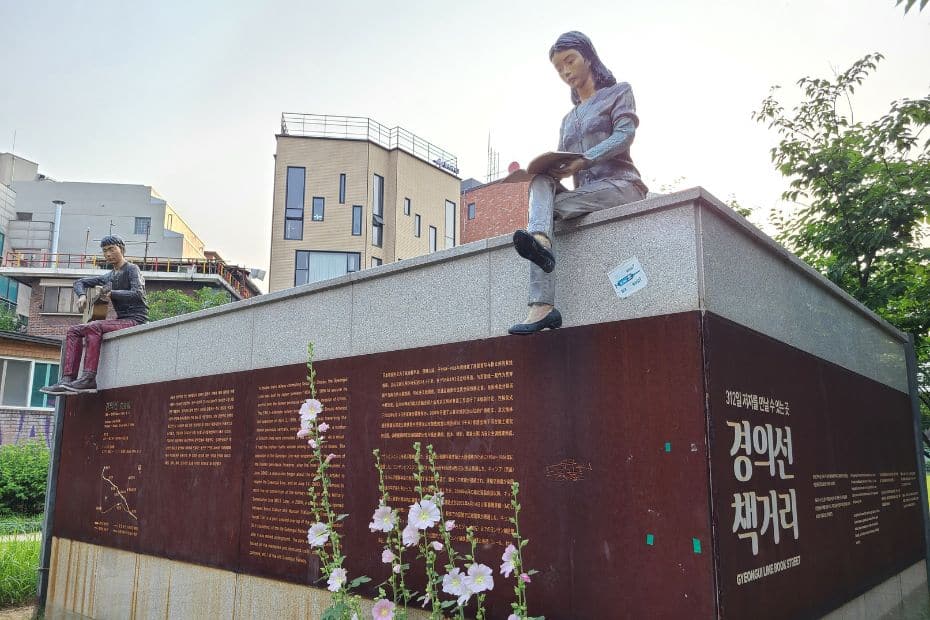
Please note : I recommend trying not to cram too much into your itinerary. You may want to see as much as possible, but people often end up rushing past sights and not appreciating them. Plan for less and see more if you have time. It gives you a chance to be spontaneous.
To plan a realistic itinerary for South Korea, it is important to factor in transportation, meal breaks, and rest times. Use Naver Maps to plan your route and work out travel times. A short journey on the map might take much longer if there’s no direct route. Also consider breaks if you plan to walk a lot.
Cultural Issues When Visiting Korea
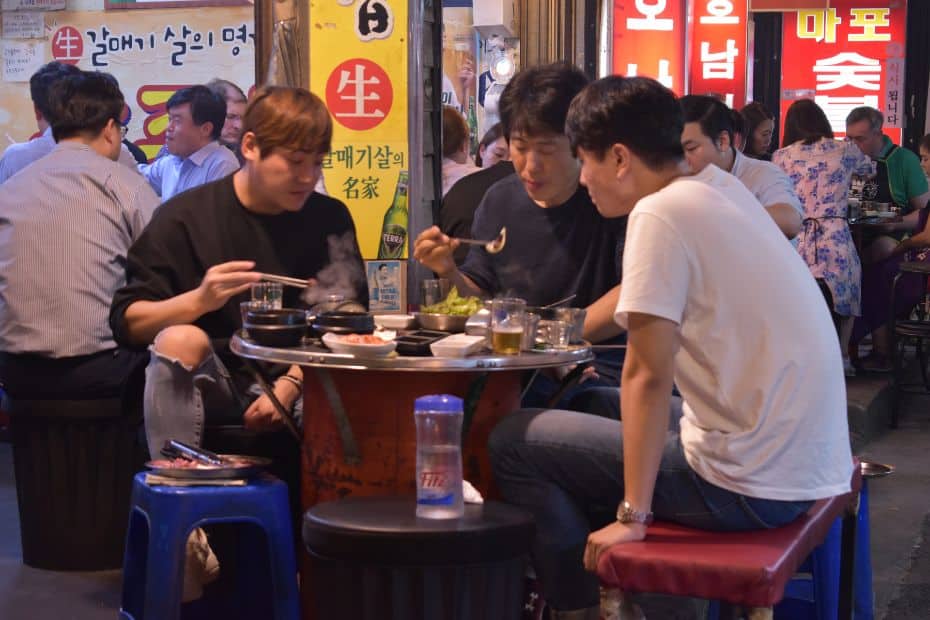
The next few sections of this South Korea travel guide will provide answers to some of the most common questions first-time travellers to Korea have in regards to cultural, language, and safety issues. Korea is a culturally unique country with customs and traditions you might not be aware of.
Korea is a society that places a strong emphasis on social image, respect for others, and social harmony. This means Koreans will often try to avoid conflict, especially in public. To show respect for Korean culture and to avoid being rude, try to respect social harmony and always avoid conflict.
If you follow these tips, you’ll find it easier to avoid accidentally upsetting someone in Korea. There’s far too much to cover in this South Korea travel guide, so if you’d like to know more, check out my detailed guide to Korean etiquette and culture , it’s packed with tips and insights to understand Korea.
What is considered rude in Korea? It is considered rude to point with one finger or with chopsticks, give and receive with one hand, cross your legs when sitting, and to walk inside with your shoes on. Things considered rude in other countries such as swearing and spitting are also rude in Korea.
What is considered unlucky in Korea? It is considered unlucky to write someone’s name in red ink and to stand chopsticks upright in rice. Both are used in rituals for deceased people. The number 4 is also unlucky as the word is the same as the word for ‘death’.
Do you need to tip in Korea? It’s not necessary to tip in Korea and most restaurants and cafes won’t expect or allow you to tip. There is no service charge added to bills in Korea, with the exception of some upmarket restaurants, bars, and hotels in touristy areas of Seoul. Tipping guides is okay.
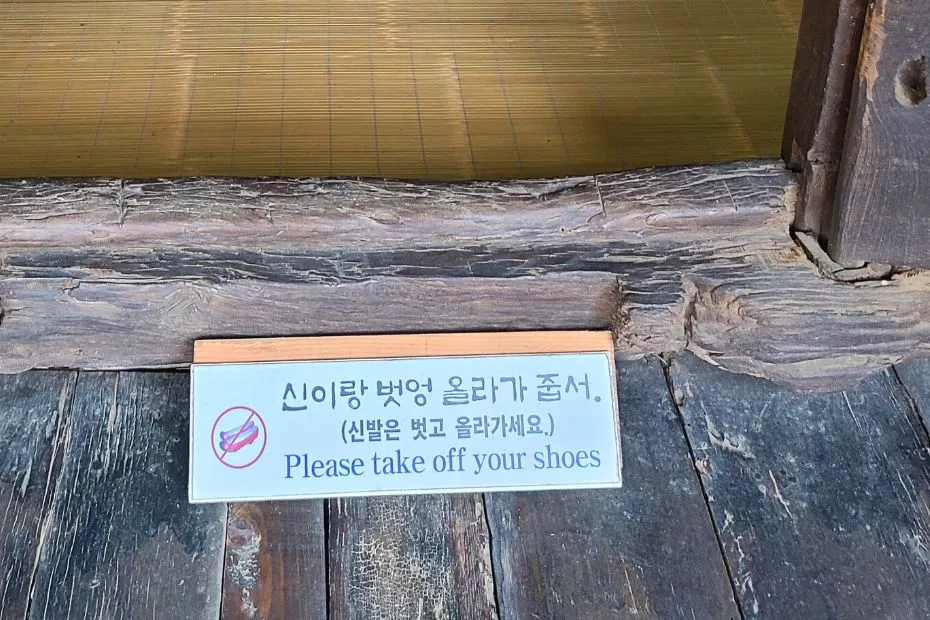
Do you need to take off shoes when going inside? If you enter someone’s house in Korea, you should take off your shoes. This rule also applies to temples, traditional restaurants, and other places in traditional buildings. Most cafes, shops, and restaurants won’t ask you to take off your shoes.
When should you use two hands in Korea? You should use two hands when giving and receiving things in Korea, such as money, a gift, a business card, or food. When you shake hands, use both hands, not just one. The same applies to pouring drinks, both pouring and holding a glass.
Do I have to act like a Korean in Korea? You don’t have to follow Korean customs and traditions when you visit Korea. You are a guest in the country and Koreans won’t expect you to know every rule. However, showing cultural awareness in Korea will help you make friends and impress locals.
The best tip for being culturally sensitive in Korea is to first consider all the things that you’d consider rude in your own country – spitting, swearing, shouting, physical violence, etc. Show the same acts of kindness you’d show at home – help others, give up your seat for those in need, be polite, etc.
Furthermore, remember that social harmony is really important in Korea and try not to cause a scene. Keep your voice down in public, don’t talk or act aggressively, be polite, and don’t force things when people are reluctant. Koreans may feel obliged to do things, even when they don’t want to.
Language Issues When Travelling Korea
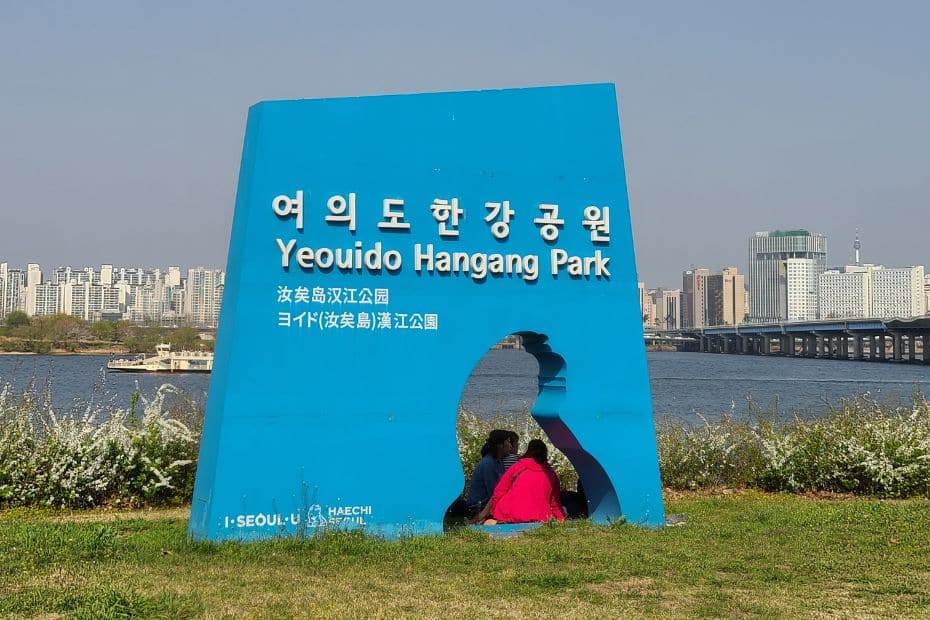
Language issues can be a big concern for first-time travellers to Korea as Korean is a very different language from English and has a unique alphabet. Korean is also one of the most difficult languages to learn for English speakers, ranked alongside Japanese, Chinese, and Arabic.
However, as a tourist to Korea, you don’t need to worry about mastering the language. English is used for signs and announcements in most places that you’ll need it, such as on public transport, at the airport, at attractions & tourist sites, on menus, and most other places. It’s common across Korea.
If there is a sign or notice that isn’t in Korean, I recommend using the Papago app to take translate it. Use the image translation function in the app to scan the sign and Papago will translate it into English for you. It’s really convenient and the way I translate things I can’t read in Korean.
Do Korean People Speak English?
Speaking in English to Korean people is different from being able to read and translate signs. English is taught from elementary school until the end of high school. That doesn’t mean everyone will remember it, but there’s a good chance some people will know English, especially younger Koreans.
It is best to ask if someone speaks English before trying to have a conversation. You can do this in Korean by asking “영어 할 수 있어요?” (Yong-oh hal su iss-o-yo?) or just ask it in English. Tour guides and people in the tourism industry will probably be able to speak English, but it’s not guaranteed.
Shyness is an issue in Korea and locals may be reluctant to speak English at first for fear of making a mistake. As an English teacher in Korea, I know that Korean students are usually quite competent in English, but lack confidence to use it. Be patient and encouraging when talking in English.
Although some Koreans may be too shy to use English, other people may be enthusiastic about speaking English to you and want to practice it. I’ve been asked random questions in English by strangers in the street in Korea who want to practice English and find out about my life.
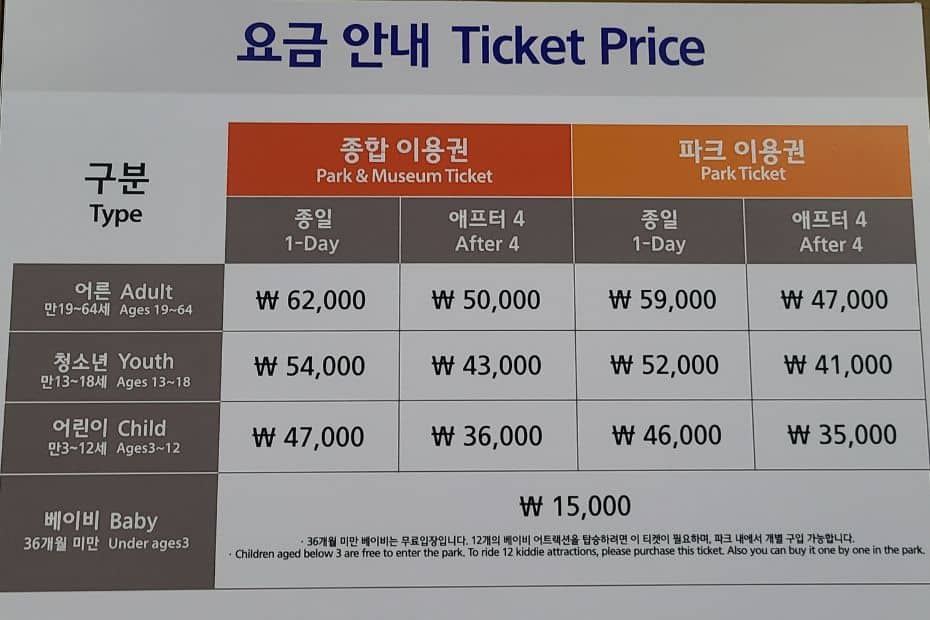
Should You Learn Korean Before Visiting Korea?
If you do want to learn some Korean before you travel, I recommend you start by learning the Korean alphabet , or at least learning some basic Korean travel phrases . Knowing how to introduce yourself, discuss prices, ask for directions, and ask for help will make your trip to Korea a lot easier.
You can learn Korean online through courses such as 90 Day Korean and Korean Class 101 , or with self-study textbooks like the excellent Talk To Me In Korean series. There are lots of resources on YouTube, too. I particularly like Learn Korean with GO! Korean Billy as he explains things clearly.
Another way to prepare to move to Korea is to read some Korean novels in English . Although these books won’t teach you any Korean, they’ll offer up valuable insights into Korean culture, both traditional and hidden under the surface. Literature is a good way to gain an understanding of a culture.
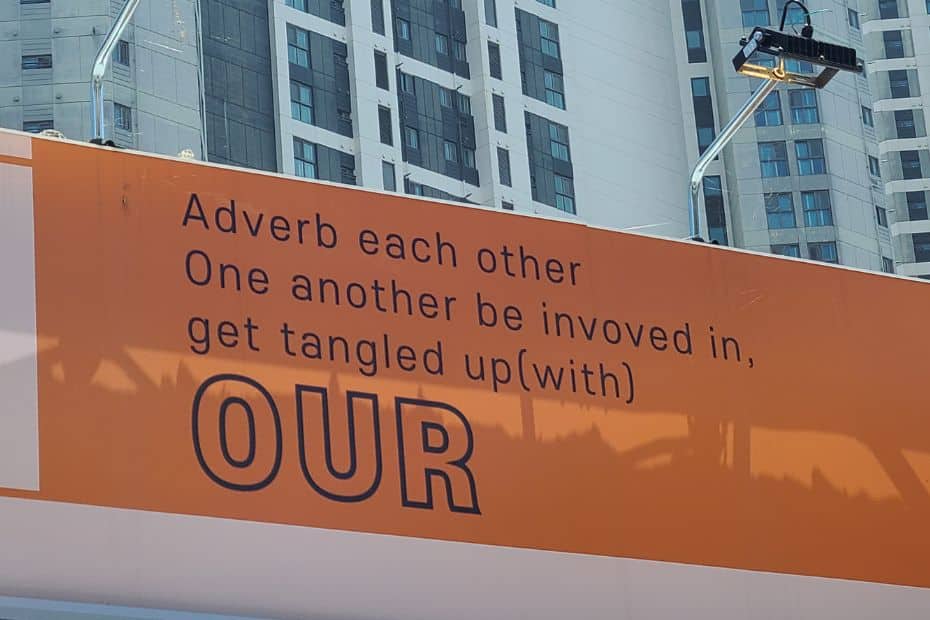
A warning about Konglish : Although Korea uses English in many useful ways, there’s also a lot of Konglish. The sign above is a good example of random English words being used to look cool, but ending up being confusing. There’s a lot of this in Korea and it’s mostly harmless, so don’t worry.
Health And Safety Issues In Korea

First-time travellers to Korea may be worried about health and hygiene issues, such as if certain foods are available and if they’re safe to eat. Other issues include vaccinations, personal safety, and how easy it is to contact emergency services. These issues are addressed below.
Is Korean Street Food Safe To Eat?
Korean street food is generally safe to eat and won’t give you any health issues unless you have an intolerance to the food. Korean street food can be spicy or contain a lot of salt, be aware of your own personal tolerances and dietary requirements before trying it.
Also be careful when ordering food with meat or seafood and check that it is cooked thoroughly. Korean street food that has been left out for a long time is more likely to cause food poisoning problems, so ask for freshly cooked food if you’re concerned.
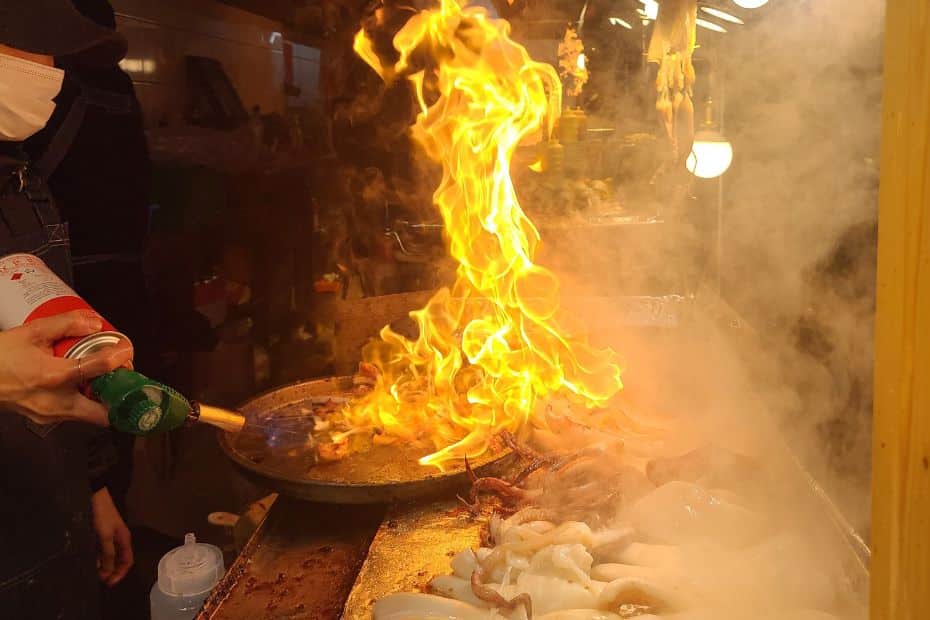
Is It Easy To Find Vegan-Friendly Food In Korea?
There are many vegan-friendly Korean dishes , such as gimbap , japchae , pajeon , bibimbap , ramyeon , and tteokbokki . However, some restaurants may use non vegan-friendly ingredients when preparing these foods, so be careful. Kimchi isn’t vegan-friendly due to its seafood ingredients & sauces.
Vegetarianism and veganism aren’t common in Korea with fewer people following these diets than in countries such as the USA or UK. Vegetarians in Korea account for 3% of the population, while vegans in Korea are only 0.2% of the population as of 2022. The UK is 10% and 2% respectively.
However, the number of vegan-friendly restaurants and bakeries is increasing each year in Korea, especially in areas such as Hongdae and Itaewon. Korean Buddhist temple food is vegan-friendly and a good option for vegans who want to enjoy vegan food while learning about local Korean culture.
If you’re concerned about accidentally ordering non vegan-friendly food, or want to know how to tell someone about food allergies or requirements, check out my guide to Korean phrases for ordering food . This has a whole section about special requests when ordering food in Korean.
Is It Safe To Drink Tap Water In Korea?
Korean tap water is potable and safe to drink. Korea ranks 23rd for water hygiene, which is above the USA, Canada, and Australia. However, many Koreans don’t drink tap water , preferring to use water purifiers and bottled water instead, claiming that tap water smells strange or water pipes are bad.
Personally, I don’t like drinking tap water in Korea as it tastes a bit stale, but it’s perfectly fine to drink and doesn’t cause any problems. Bottled water is very cheap in Korea and costs 600 KRW for a 500ml bottle from a convenience store. Buying water from a supermarket is a cheaper option though.
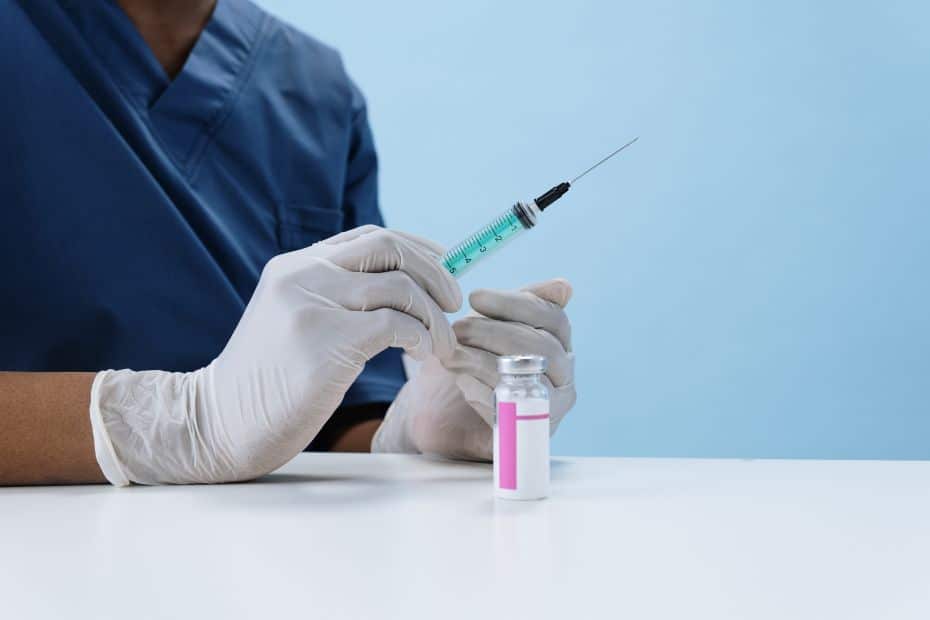
Do You Need Any Vaccinations To Travel To South Korea?
There are no mandatory vaccinations required to travel to Korea , but it is suggested you should have at least routine vaccinations such as tetanus, MMR, and polio. Hepatitis A & B, typhoid, and Japanese encephalitis vaccinations are also recommended.
Is Korea Friendly To Tourists?
Korea is generally friendly and welcoming to tourists. The Korean government spends a lot of money and effort to promote Korean tourism to the world and there are many incentives to bring people to the country. Korean people are also mostly polite and welcoming, especially in the tourism sector.
Is Korea A Dangerous Country To Travel In?
South Korea is a safe country to travel in and the crime rate in Korea is low, comparable to Norway or the Netherlands. Public crimes, such as theft and assault, are rare. Pickpocketing and purse snatching aren’t common and unattended goods are generally left alone or reported to the police.
How safe is Korea? I regularly see people leave their phone or handbag on a cafe table to reserve it before going up to order a drink. People even leave their laptops open while they pop out for lunch or go to the toilet. Stealing disturbs social harmony and is one of the reasons it’s rare in Korea.
Physical violence is also rare, but still occurs in Korea, as it does in all countries. This is most often found in areas with lots of bars and when people are drunk. However, visiting bars in Korea is a lot safer than I’ve experienced in other countries and trouble is not common, even in busy places.
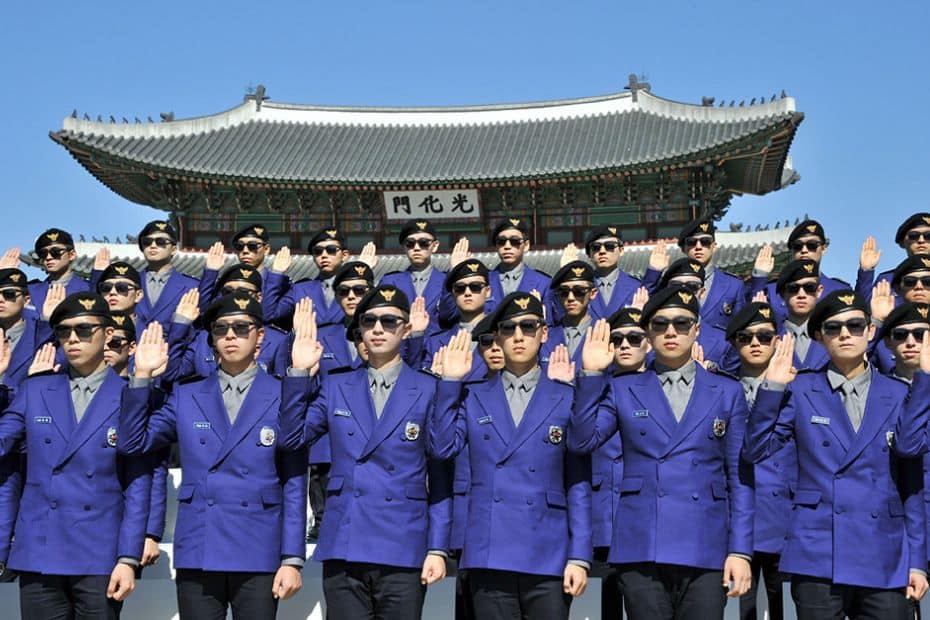
How Do You Contact Tourist Information Services In Korea?
Call 1330 in Korea to contact the Travel Helpline . The Korean Travel Helpline provides the following services free of charge to tourists in Korea.
- Tourist Information : Find out about attractions, opening hours, prices, and other information.
- Tourist Interpretation : Access travel information in several languages.
- Tourist Complaints : Report rip-offs and problems you encounter when travelling in Korea.
- Tourist Police : Report minor crimes in English and other languanges.
There are tourist police patrolling the streets of Seoul, dressed in purple uniforms as shown in the picture above. In popular tourist locations like Myeongdong and Bukchon Hanok Village, you’ll also find friendly tourist information staff dressed in red shirts with matching red cowboy hats.
What Should You Do If You Have An Emergency In Korea?
If you need to report a fire or medical emergency in Korea, you should call 119 from any phone. To contact the police in Korea, call 112. You will need to select an option to report an emergency in English or another language. It may take some time to be redirected to an English speaker.
- 119 – Medical Emergency & Fire Rescue
- 112 – Police
When you use medical services in Korea, you have to pay the cost of treatment, but there is no fee for the ambulance ride as this is covered by the Korean government. Travel insurance should cover the cost of medical bills, so if you’re worried about a large medical bill, insurance is recommended.
Fortunately, the cost of treatment in Korea is quite reasonable and Korea has advanced medical facilities, which is why it’s a popular medical tourism destination . Many people travel to Korea for minor and major surgery, including laser eye surgery, cosmetic surgery, and internal medicine.
Is Air Pollution A Problem In Korea?
Air pollution is an issue in Korea, especially in spring & summer. Winds blow yellow dust from Central Asia, field burning spreads fumes across Asia, and fossil-fuel burning contributes to higher levels of air pollution. Some days there’ll be very low visibility and health risks for people with lung problems.
My Personal Travel Tips For Korea
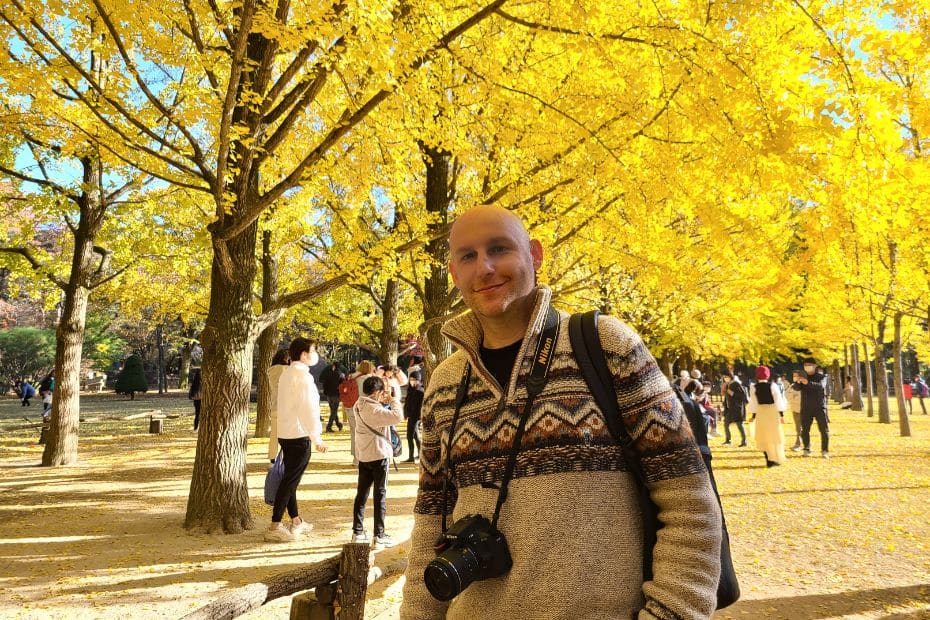
This South Korea travel guide is a collection of information I’ve researched and learned since moving to Korea in 2015 and blogging about Korean travel since 2019. I hope the provided information and insights are useful and assist you plan your dream first-time, or even tenth-time, trip to Korea.
This section includes my personal tips that didn’t really fit anywhere else and reflections built from travelling all over Korea in all seasons. These are tips I would offer to first-time travellers to Korea and people who might have some worries about visiting the Land of Morning Calm. I hope they help.
The Real Korea Isn’t What You See On TV
Korea is a developed country that went from being a 3rd world country in the mid 20th Century to a high-tech country in a short time. Despite the many high-rises and modern K-Pop stars, there are still shadows of the former Korea seen in both run-down slums and people with ‘traditional’ values.
The image created by selective K-Culture can distort people’s reality when dreaming of a trip to Korea in the same way Korean people can suffer from Paris Syndrome when visiting France. There are many wonderful things about Korea, but don’t travel thinking that everything is as shown on TV.
Be Prepared For Culture Shock
One of the best things about travelling is seeing a country and people that act and behave differently to how you do in your own country. This is known as culture shock and can be both a blessing and a challenge for first-time travellers to Korea. Things you might be used to can be different in Korea.
Some examples of culture shock in Korea include the way age determines hierarchy in Korea and how older people can be rather pushy, especially on the subway. Younger people also typically don’t question the decisions of older people in Korea as it is considered rude and disrespectful.
Less extreme cultural differences that might confuse some first-time visitors to Korea include having to shout to call someone to take your order in a Korean restaurant or not giving a tip. Koreans might similarly look at you strangely if you do something culturally different, such as walking while drinking.
Don’t Overpack When You Travel To Korea
First-time travellers to Korea may be worried about visiting a country like Korea without taking everything they need from home, even the kitchen sink. My advice is to pack as light as possible and leave yourself some space in your suitcase. There are two reasons for this.
- You can buy most things you need in Korea . This includes sun cream, heat packs, clothes, shoes, cosmetics, travel accessories, etc. They’re also probably cheaper in Korea, too.
- You will want to take home lots of things . From weird Korean snacks to beautiful hand-crafted pottery and woodwork, there are so many things to buy in Korea.
(1) The only exception is if you might have a problem finding correct-fitting items. Korean shoes and clothes are slightly smaller than what you’d find in Western countries and the sizes are also differently labelled. I’m a medium in the UK but a large (sometimes XL!) in Korea. Be careful when shopping.
(2) It’s hard to fit everything you buy in Korea into an already full suitcase. Fortunately, you can buy extra suitcases at low prices. Check out Namdaemun Market for cheap luggage options, as well as shops like the one pictured below (this is in Busan) in places like Hongdae and Dongdaemun.
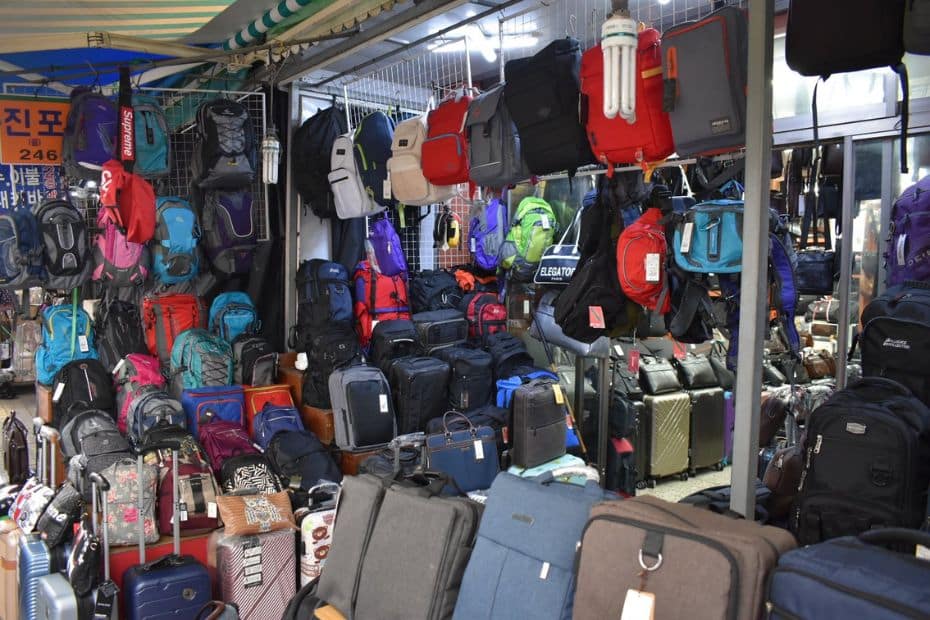
Electricity In South Korea
Be careful with electric items when travelling to Korea. Korea uses type C and F plugs , which are used in Europe, Russia, and other parts of Asia. The standard voltage is 220V with 60Hz frequency. Anything designed for a standard voltage between 220V and 240V should be fine in Korea.
Laptops, mobile phones, and other portable devices will be fine when you travel in Korea as long as you use a travel adapter with a USB or socket connection. Hairdryers, shavers, curlers, and similar devices might have problems charging in Korea and run out of power very soon. My shaver did.
Go With The Flow And Go Quickly
Korea is a very busy country and you might hear people mutter ‘빨리빨리’ ( ppalli ppalli ) if you walk slowly, especially in the subway. Koreans work long hours and are eager to get home or go out for dinner. Don’t take it personally if people push past you and don’t feel like you have to rush.
Know Where To Throw Away Rubbish
It can be difficult to find a bin to throw away rubbish in Korea, even in urban areas. The best place to dispose of rubbish in Korea is at a convenience store. You can find recycling and trash bins in these shops. If you go hiking or explore the countryside, expect to carry your rubbish home with you.
South Korea Travel Guide FAQs
Finally, here’s a few FAQs about this South Korea travel guide, in case the above information didn’t cover enough for you.
What is the best month to visit South Korea?
The best months to visit South Korea are April and October. April is warm and you can see cherry blossoms in Seoul at the start of the month. October is warm with clear skies. During October you can see autumn foliage across Korea.
How much money is enough for South Korea?
The amount of money you need to travel in South Korea depends on your travel style and desired level of comfort. A rough budget for South Korea is 50-100,000 KRW per day for budget travellers, 100-200,000 KRW per day for mid-range travellers, and 200,000+ KRW per day for luxury travellers.
Is South Korea friendly to tourists?
South Korea is a welcoming country and friendly to tourists. There are many services to welcome tourists to South Korea, including free transit tours from Incheon Airport, cultural performances in tourist destinations, low entry fees to traditional attractions like Gyeongbokgung Palace, and tourist information and signs in multiple languages.
What do I need to know before travelling to South Korea?
It’s important to know about the weather before travelling to South Korea as this can impact your day to day travel and affect what clothes you’ll need. You should also research what festivals are on before you travel, what seasonal events are happening, such as cherry blossom viewing, and also how to use public transport and get connected to the net.
What is the cheapest month to visit South Korea?
January and February are two of the cheapest months to visit South Korea and are considered low season as the weather is cold. Hotel prices and flights to Korea will be lower in these months. Winter is a good time to travel to Korea to see snow and enjoy winter sports and festivals, however, some attractions will be closed during this time of year.
Do I need a South Korea travel guide?
It is good to check a South Korea travel guide to research your trip, especially for first-time travellers to Korea. Korea has a unique culture, language, and customs that might be confusing for new travellers. A South Korea travel guide will help you prepare for these factors and give you ideas to create your perfect trip to Korea.
Can you drink tap water in Korea?
Korean tap water is potable and safe to drink. You can drink water from hotels and apartments in Korea. Restaurants and cafes will provide you with free drinking water, which usually comes from a water cooler. Bottled water is available from convenience stores and is reasonably priced.
Is South Korea safe for first-time travellers?
South Korea is a safe country for first-time travellers to visit. Personal crimes, such as theft, mugging, and physical violence are rare in Korea and it is safe to walk the streets of Seoul, even at night. First-time travellers can prepare for a trip to South Korea by being aware of potential scams, such as taxi drivers over charging them or being ripped off in the traditional markets.
What are the best apps for travelling in South Korea?
The best apps for travelling to South Korea are Papago, Kakao Taxi, Naver Maps, and Seoul Subway. These apps will allow you to translate between Korean and English, hail taxis, and navigate as you travel. All of these apps have English language options and are free to use.
Support In My Korea Thanks for reading. If you want to help me to create more great content in the future, why not buy me a coffee? A strong coffee helps me write more and is a simple way to show gratitude for this free content.

Liked This? Pin It For Others
If you enjoyed reading this article, then please share this with your friends on Pinterest.
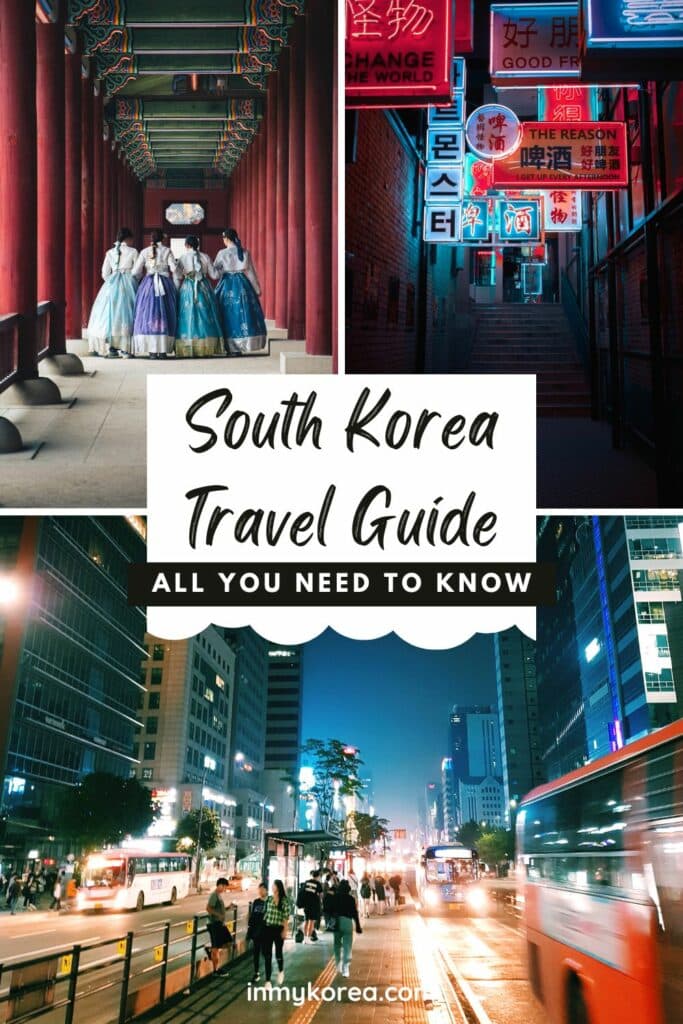
Related Articles
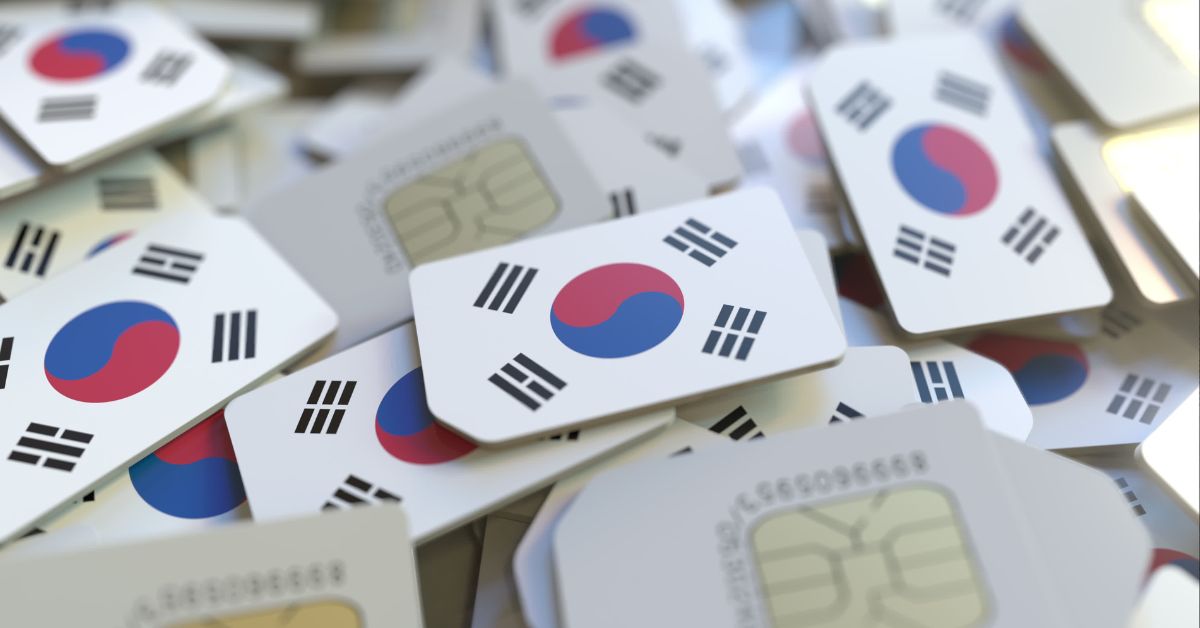
Korean SIM Cards And Tourist ESIMs At Incheon Airport 2024


50 Unique Korean Experiences In Korea You’ll Definitely Love
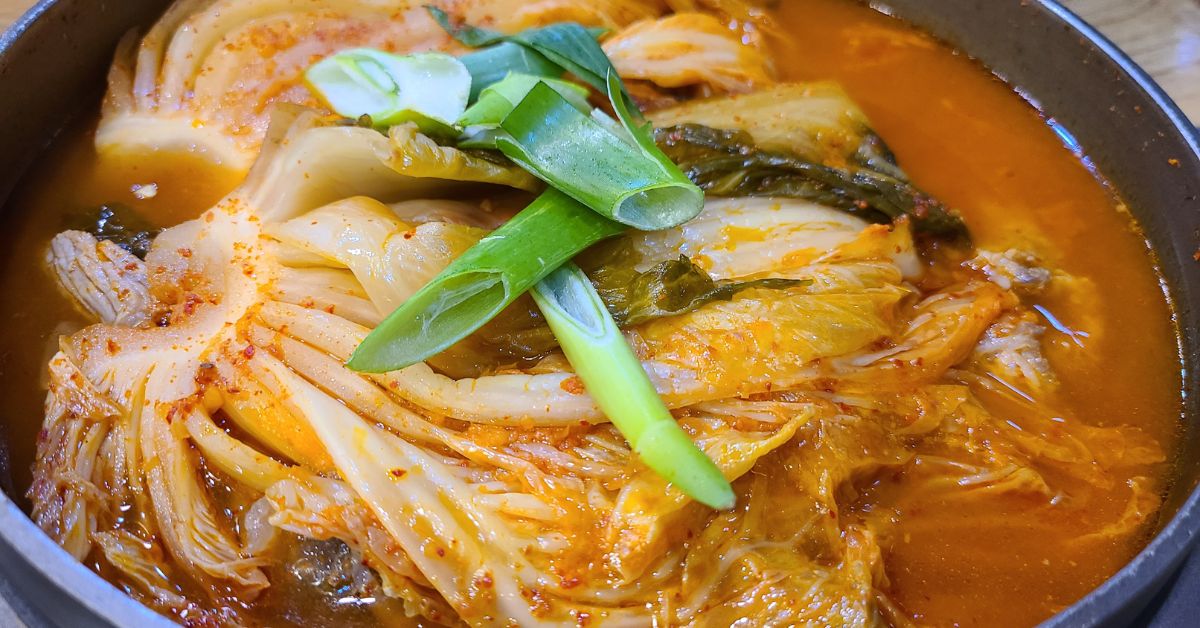
These 30 Traditional Korean Dishes Will Make You So Hungry!
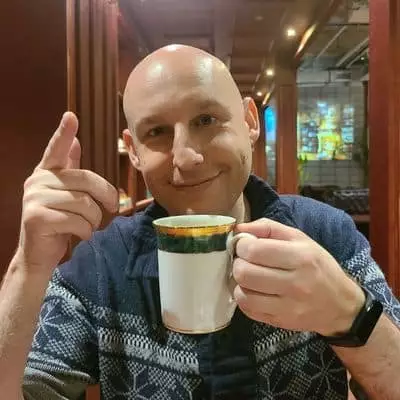
Hi! My name is Joel, I'm the author of In My Korea and writer of this article. I've lived, worked and travelled in Korea since 2015 and want to share my insights, stories and tips to help you have the best experience during your trip to Korea.
I love learning more about Korean culture, hiking the many mountains, and visiting all the coolest places in Korea, both modern and traditional. If you want to know more about my story, check out the ' about me ' section to learn why I love living in Korea.
4 thoughts on “Complete South Korea Travel Guide 2024: Korean Travel Tips”
This South Korea travel guide is a comprehensive resource for anyone planning a trip to Korea. It covers everything from entry requirements and travel tips to accommodation options and places to visit. Whether you’re a first-time traveler or have been to Korea before, this guide has something for everyone. The inclusion of the latest travel news and COVID-related updates adds to its relevance and usefulness. I appreciate the detailed breakdown of sections and the inclusion of quick links for easy navigation. Overall, this guide is a valuable tool for anyone looking to explore the wonders of South Korea.
Moderator – Nice Article! In My Korea
Thank for the great info! Could you please recommend any tours agency for a few day trips around Korea? I found a few , but they are pretty pricey!
Hi, thanks for reading. Klook and Viator have a good selection of tours in Korea with some of the best prices on the market. I’m not sure which tours you’re looking for, but they usually do day trips for less than $100 per day that cover popular tourist sights.
Leave a comment Cancel reply
Save my name, email, and website in this browser for the next time I comment.
Travel Guide South Korea
Book your individual trip , stress-free with local travel experts
- roughguides.com
- South Korea
- Travel guide
- Local Experts
- Travel Advice
- Accommodation
Plan your tailor-made trip with a local expert
Book securely with money-back guarantee
Travel stress-free with local assistance and 24/7 support
The Korean peninsula is a tantalizingly unexplored slice of East Asia – a pine-clad land of mountains, misty archipelagos and rice paddies of emerald green, studded with urban pockets of incomparable joie de vivre . While its troubled history has made Korea’s very existence nothing short of miraculous, amazingly its traditions and customs have largely survived intact – and for visitors, this highly distinctive culture is an absolute joy to dive into.
Where to go in South Korea
Country titles, the creation of hangeul, japanese occupation, the taegeukki, winter sonata, tailor-made travel itineraries for south korea, created by local experts.

14 days / from 3800 USD
Culture & Island life
Experience the highlights of Korea with a private guide by your side. Fascinating Seoul with a day trip to the DMZ, followed by days in Gyeongju and Busan. Afterwards, leave the mainland and fly to Jeju Island. Enjoy the crystal blue waters and island culture.

11 days / from 2400 USD
Highlights of Korea
From the skyscrapers of Seoul to traditional villages - this itinerary packs culture, history and cuisine in one compact itinerary. Enjoy a two-night temple stay as well as in-depth guided excursions in Seoul, Gyeongju, Yeosu, and Jeonju.

7 days / from 1950 USD
Temples and Nature in Korea
Start your Korean adventure in Busan. Continue to Yeosu and Suncheon, discovering temples and landscapes on the way. In Suncheon, you will stay at a Korean Buddhist temple. Proceed to the Bamboo Forest of Jeonju before heading to Seoul.
Having gone their separate ways in 1953 after the catastrophic Korean War – essentially a civil war, but one largely brought about by external forces, which left millions dead and flattened almost the whole peninsula – the two Koreas are now separated by the spiky twin frontiers of the Demilitarized Zone. North Korea has armed itself to the teeth since 1953, stagnated in its pursuit of a local brand of Communism and become one of the least accessible countries in the world. Unbelievably, many foreigners seem to expect something similar of South Korea , which shows just how well kept a secret this fascinating place really is: beyond the glittering city of Seoul, gimchi , dog meat and taekwondo , little is known about the country in the outside world (and in actual fact, one of those four has largely gone the way of the dodo anyway).
After the war, the South gradually embraced democracy and has since gone on to become a powerful and dynamic economy. Its cities , bursting with places to visit, are a pulsating feast of eye-searing neon, feverish activity and round-the-clock business. Here you can shop till you drop at markets that never close, feast on eye-wateringly spicy food, get giddy on a bottle or two of soju , then sweat out the day’s exertions at a night-time sauna. However, set foot outside the urban centres and your mere presence will cause quite a stir – in the remote rural areas life continues much as it did before the “Economic Miracle” of the 1970s, and pockets of islands exist where no foreigner has ever set foot.
And for all its newfound prosperity, the South remains a land steeped in tradition . Before being abruptly choked off by the Japanese occupation in 1910, an unbroken line of more than one hundred kings existed for almost two thousand years – their grassy burial mounds have yielded thousands of golden relics – and even the capital, Seoul, has a number of palaces dating back to the fourteenth century. The wooden hanok housing of decades gone by may have largely given way to rows of apartment blocks, but these traditional dwellings can still be found in places, and you’ll never be more than a walk away from an immaculately painted Buddhist temple . Meanwhile, Confucian-style formal ceremonies continue to play an important part in local life, and some mountains still even host shamanistic rituals.
As for the Korean people themselves, they are a real delight: fiercely proud, and with a character almost as spicy as their food, they’re markedly eager to please foreigners who come to live or holiday in their country. Within hours of arriving, you may well find yourself with new friends in tow, racing up a mountainside, lunching over a delicious barbequed galbi , throwing back makkeolli until dawn, or singing the night away at a noraebang . Few travellers leave without tales of the kindness of Korean strangers, and all of them wonder why the country isn’t a more popular stop on the international travel circuit.
Korea is still something of an unknown territory, and more than half of all its visitors get no further than Seoul. One of the largest and most technically advanced cities in the world, the capital regularly confounds expectations by proving itself steeped in history. Here, fourteenth-century palaces, imperial gardens, teeming markets and secluded tearooms continue to exude charm among a maze of skyscrapers and shopping malls. From Seoul, anywhere in the country is reachable within a day, but the best day-trip by far is to the DMZ, the strip of land that separates the two Koreas from coast to coast.

Gyeonggi, the province that surrounds Seoul, is a largely unappealing area dissected by the roads and railways that snake their way into the capital, but two of its cities certainly deserve a visit: Suwon, home to a wonderful UNESCO-listed fortress dating from the late eighteenth century; and cosmopolitan Incheon, where you can eat some of the best food in the country before making your way to the islands of the West Sea. By contrast, the neighbouring province of Gangwon is unspoilt and stuffed full of attractions – in addition to a number of national parks, of which craggy Seoraksan is the most visited, you can head to the unspoilt beaches and colossal caves that surround the small city of Samcheok, or peek inside a genuine American warship and North Korean submarine north of the sleepy fishing village of Jeongdongjin.
Stretching down from Gangwon to the South Sea lie the markedly traditional Gyeongsang provinces, home to some of the peninsula’s most popular attractions. Foremost among these is gorgeous Gyeongju; capital of the Silla dynasty for almost a thousand years, and extremely laid-back by Korean standards, it’s spotted with the grassy burial tombs of the many kings and queens who ruled here. There’s enough in the surrounding area to fill at least a week of sightseeing – most notable are Namsan, a small mountain area peppered with trails, tombs and some intriguing Buddhas, and the sumptuously decorated Bulguksa temple, another sight on the UNESCO World Heritage list. Although less picturesque as a town, Andong is almost as relaxed as Gyeongju, and a superb base from which to access Dosan Seowon, a remote Confucian academy, and the charmingly dusty village of Hahoe, a functioning showcase of traditional Korean life. The region’s rustic charm is actually best appreciated offshore on the windswept island of Ulleungdo, an extinct volcanic cone that rises precipitously from the East Sea, and where tiny fishing settlements cling barnacle-like to its coast. Thrills with a more urban flavour can be had in Busan, Korea’s second city, which has an atmosphere markedly different from Seoul; as well as the most raucous nightlife outside the capital, it has the best fish market in the country, and a number of excellent beaches on its fringes.
Even more characterful are the Jeolla provinces, which make up the southwest of the peninsula. Left to stagnate by the government while Korea’s economy kicked into gear, they have long played the role of the renegade, though this energy is now being rechannelled. Violent political protests took place in regional capital Gwangju as recently as 1980, though the city has reinvented itself to become one of the artiest and most business-savvy in the land. Jeonju has a similar feel, plus a delightful district of traditional hanok housing, and is justly famed for its wonderful, flavoursome cuisine. Earthy Mokpo is the hub for ferry trips to a mind-boggling number of West Sea islands, dotted with fishing communities where life has changed little in decades, while inland there are a number of excellent national parks.
The Chungcheong provinces at the centre of the country are bypassed by many travellers, but this is a shame, as they contain some fine sights. The old Baekje capitals of Gongju and Buyeo provide glimpses of a dynasty long dead, Daecheon beach hosts a rumbustious annual mud festival that may well be Korea’s most enjoyable event, and there are temples galore – the gigantic golden Buddha at Beopjusa is surrounded by 1000m-high peaks, while the meandering trails and vivid colour schemes at Guinsa make it the most visually stimulating temple in the land.
Lying within a ferry ride of the mainland’s southern shore is the island of Jeju, a popular honeymoon destination for Koreans. While it’s undoubtedly a touristy place, it has its remote stretches and anyone who has climbed the volcanic cone of Hallasan, walked through the lava tubes of Manjanggul or watched the sun go down from Yakcheonsa temple will tell you the trip is more than worthwhile.
And finally, of course, there’s North Korea. A visit to one of the world’s most feared and most fascinating countries will instantly earn you kudos – even experienced travellers routinely put the DPRK at the top of their “most interesting” list. Visits don’t come cheap and can only be made as part of a guided tour, but the country’s inaccessibility brings an epic quality to its few officially sanctioned sights.
Discover more places in South Korea

- Gyeongsang Travel Guide
- Jeolla Travel Guide
- Seoul Travel Guide
The Korean peninsula is split into the Republic of Korea (South Korea) and the Democratic People’s Republic of Korea (North Korea). The former is referred to throughout the site as “Korea”; this is how locals refer to their nation when talking to outsiders, though in Korean they use the term “ Hanguk ”. North Korea has, where necessary, been referred to as such, or as “the DPRK”; North Koreans’ own word for both country and peninsula is “ Choson ”.
One thing that will strike you on a trip around Korea is hangeul , the peninsula’s distinctive, almost Tetris-like alphabet. Amazingly, this was a royal creation, having been the brainchild of King Sejong in the 1440s. Most of this creative king’s subjects were unable to read the Chinese script used across the land at the time, so he devised a system that would be easier for ordinary people to learn. Sejong was forced to do much of his work in secret, as the plan did not go down well with the yangban – Confucian scholars who were even more powerful than the royalty at the time. As the only truly educated members of society, the yangban argued fiercely against the change in an effort to maintain their monopoly over knowledge.
Hangeul experienced periodic bursts of popularity, but was almost erased entirely by the Japanese during their occupation of the peninsula (1910–45). However, it’s now the official writing system in both North and South Korea, as well as a small autonomous Korean pocket in the Chinese province of Jilin; it’s also used in Bau-Bau, a small town in Indonesia.
The alphabet, while it appears complex, is surprisingly easy to learn , and demonstrating that you can read even a handful of simple words will generate gasps of admiration across Korea. Just a few hours of hard study should suffice.
• The Korean peninsula is split in two by the 4km-wide Demilitarized Zone (DMZ), sharing borders with China and – for about 20km, south of Vladivostok – Russia. These frontiers form a northern boundary with North Korea – the “Democratic People’s Republic of Korea” – whose population of around 24 million live in an area half the size of the United Kingdom. South Korea , also known as the “Republic of Korea”, is slightly smaller and has a population of 51 million, making it the world’s 26th most populous country.
• Ethnic Koreans dominate the peninsula's population, making North and South Korea two of the most ethnically homogeneous societies on earth. Before splitting, both were traditionally Buddhist nations – though deeply steeped in Confucianism and shamanistic ritual. Since then the North has followed Juche, a local brand of Communism, while in the South Christianity has become the most popular religion.
• Before the Japanese occupation in 1910, the Silla, Goryeo and Joseon dynasties were ruled over by an unbroken run of 116 monarchs , dating back to 57 BC.
• The economies of South and North Korea were almost equal in size until the mid-1970s. The “Economic Miracle” that followed in the South has propelled it to the cusp of the world’s top ten economies, while the North languishes just above 100th place.
On even a short trip around the country you’re more than likely to stumble across a special event of some sort. Many are religious in nature, with Buddhist celebrations supplemented by Confucian and even animist events. Most festivals are concentrated around spring and autumn, but there are many spread throughout the year. If you’re heading to one, don’t be shy – the locals love to see foreigners joining in with traditional Korean events, and those who dare to get stuck in may finish the day with a whole troupe of new friends.
Though there are some crackers on the calendar, it must be said that a fair number of Korean festivals are brazenly commercial, making no bones about being held to “promote the salted seafood industry”, for example. Other festivals can be rather odd, including those dedicated to agricultural utensils, clean peppers and the “Joy of Rolled Laver” – you’ll easily be able to spot the duds. The most interesting events are highlighted below, though bear in mind that celebrations for two of the big national festivals – Seollal , the Lunar New Year, and a Korean version of Thanksgiving named Chuseok – are family affairs that generally take place behind closed doors.
Cherry blossom festivals Usually early April. Heralding the arrival of spring, soft blossom wafts through the air across the country, a cue for all good Koreans to lay down blankets at parks or riverbanks, barbeque some meat and throw back the soju .
Jeonju International Film Festival w www.jiff.or.kr . Last week of April. Smaller and more underground than the biggie in Busan, JIFF focuses on the arty, independent side of the movie industry.
Buddha’s Birthday Late May. A public holiday during which temples across the land are adorned with colourful paper lanterns; there’s an even more vibrant night parade in Seoul.
International Mime Festival w www.mimefestival.com . May. Held in the Gangwonese capital of Chuncheon, this foreigner-friendly event is a showcase of soundless talent.
Dano Usually June. A shamanist festival held on the fifth day of the fifth lunar month, featuring circus acts, ssireum wrestling, mask dramas and a whole lot more. The city of Gangneung is host to the biggest displays.
July–August
Boryeong Mud Festival w www.mudfestival.or.kr . Late July. This annual expat favourite pulls mud-happy hordes to Daecheon Beach for all kinds of muck-related fun.
International Puppet Festival Aug. Puppets and their masters come from around the world to flaunt their skills in Chuncheon, a city in Gangwon province.
Firefly Festival Aug. Glow worms are the tiny stars of the show at this modest night-time event, which takes place over a weekend near Muju. One unexpected treat is the chance to don a firefly costume.
September–November
Gwangju Biennale w gb.or.kr. Sept–Nov. A wide-ranging, two-month-long festival of contemporary art, the biennale usually takes place on alternate autumns, though it has also been held in spring.
Andong Mask Dance Festival w www.maskdance.com . Late Sept or early Oct. Legend has it that if a person fails to attend a mask festival in their lifetime, they cannot get into heaven, so if you’re in Korea in the autumn you might as well have a crack at salvation by participating in one of the country’s most popular events – a week of anonymous dancing, performed by the best troupes in the land.
Busan International Film Festival w www.biff.kr . Usually Oct. One of Asia’s biggest such events, BIFF draws in big-shots and hangers-on for a week of cinematic fun (see Busan festivals ).
Baekje Festival w www.baekje.org . Early Oct. This annual event commemorating the Baekje dynasty is held each year in the old Baekje capitals of Gongju and Buyeo.
World Martial Arts Festival Usually Oct. A week-long series of international fisticuff action, held each year in Chungju.
Gimchi Festival Late Oct. In Gwangju. You’ll be able to see, smell and taste dozens of varieties of the spicy stuff, and there’s even a gimchi -making contest for foreigners keen to show off.
Pepero Day Nov 11. A crass marketing ploy, but amusing nonetheless – like Pocky, their Japanese cousins, Pepero are thin sticks of chocolate-coated biscuit, and on the date when it looks as if four of them are standing together, millions of Koreans say “I love you” by giving a box to their sweethearts, friends, parents or pets.
If you’ve done any sightseeing in Korea, you’ll no doubt have come across information boards telling you when, or how often, certain buildings were burnt down or destroyed by the Japanese. The two countries have been at loggerheads for centuries, but the 1910–45 occupation period caused most of the tension that can still be felt today. In this age of empire, Asian territory from Beijing to Borneo suffered systematic rape and torture at the hands of Japanese forces, but only Korea experienced a full-scale assault on its national identity . Koreans were forced to use Japanese names and money, books written in hangeul text were burnt and the Japanese language was taught in schools. These measures were merely the tip of the iceberg, and Japan’s famed attention to detail meant that even the tall trees were chopped down: straight and strong, they were said to symbolize the Korean psyche, and they were replaced with willows which drifted with the wind in a manner more befitting the programme. The most contentious issue remains the use of over 100,000 comfort women , who were forced into slave-like prostitution to sate the sexual needs of Japanese soldiers.
The atomic bombs that brought about the end of the World War II also finished off the occupation of Korea, which slid rapidly into civil war. This post-occupation preoccupation kept both factions too busy to demand compensation or apologies from Japan – they were, in fact, never to arrive. While some countries have bent over backwards to highlight wartime misdeeds, Japan has been notoriously stubborn in this regard – its prime ministers have regularly paid respects at Yasukuni , a shrine to those who died serving the empire, but notably also to at least a dozen Class A war criminals, and school textbooks have increasingly glossed over the atrocities. This has led to repeated and continuing protests; surviving comfort women, having still not been compensated, hold weekly demonstrations outside the Japanese Embassy in Seoul. Korea, for its part, has failed to debate successfully the role of local collaborators during the resistance, or to acknowledge fully in its own schoolbooks and museums the foreign influences that ended both the Japanese occupation and the Korean War.
South Korea’s national flag – the Taegeukki – is one of the most distinctive around, and is heavily imbued with philsophical meaning. The design itself has changed a little since its first unveiling in the 1880s, though its fundamental elements remain the same: a red-and-blue circle surrounded by four black trigams, all set on a white background. The puritanical connotations of the white are obvious, whereas the circle and trigrams offer greater food for thought. The four trigams make up half of the eight used in the I Ching , an ancient Chinese book of divination. Each can represent a number of different concepts: moving clockwise from the top-left of the flag, these may be read as spring, winter, summer and autumn; heaven, moon, earth and sun; father, son, mother and daughter; as well as many more besides.
The circle is split into the “Yin–Yang” shape, its two halves representing opposites such as light and dark, male and female, day and night. Though coincidental, connections with the divided Korean peninsula are easy to find, with two opposing halves forming part of the same whole – the red half is even on top.
Korean drama has recently enjoyed enormous popularity across Asia, with snow-filled Winter Sonata the biggest success to date. The story runs as follows: a boisterous girl named Yujin meets withdrawn Junsang on a bus. Despite being total opposites they fall in love and Yujin lends her gloves to her new man, who promises to give them back on New Year’s Eve. He doesn’t turn up, and Yujin hears that he died in a car accident on the way. Fast forward ten years to Yujin’s engagement ceremony, when she thinks that she sees Junsang – now, for some reason, choosing to wear pink lipstick – through the crowd. She later finds out that it isn’t Junsang but Min-hyung , a successful American architect. Yujin ends up working at the same company, and one further car crash later it transpires that unbeknown to Yujin not only is the man Junsang after all, but that he’s Yujin’s half-brother. As the pair part ways, Yujin hands him the blueprints for a beautiful house she’d designed as a farewell present. Of course, they’re not related after all, and when Yujin returns to Korea from France three years later she finds out that Junsang is in fact the half-brother of her erstwhile fiancé. She then happens across the house that she once handed Junsang in blueprint form, finds him inside – now blind, just to heighten the tragedy – and they fall in love once more.
Junsang got hearts racing all over Asia, and Bae Yong-jun , the actor who played him, is now an international superstar whose face is plastered across all kinds of merchandise – just look at the socks on sale in Seoul’s Myeongdong district. Nowhere was he more successful than in Japan, where he is now revered as Yon-sama , a title roughly equivalent to an English knighthood. Junsang also helped the stereotypically strong-but-sensitive Korean male replace the martial arts hero as Asia’s role model, and Korean men now enjoy considerable demand from females across the continent.
Travel advice for South Korea
From travel safety to visa requirements, discover the best tips for traveling to South Korea
- Eating and drinking in South Korea
- Getting around South Korea: Transportation Tips
- Travel Tips South Korea for planning and on the go
- Culture and Etiquette in South Korea
- How to get to South Korea
- Sports and Outdoor activities in South Korea
- Best time to visit South Korea
The Rough Guides to South Korea and related travel guides
In-depth, easy-to-use travel guides filled with expert advice.

Find even more inspiration here

Planning your own trip? Prepare for your trip
Use Rough Guides' trusted partners for great rates
written by Rough Guides Editors
updated 08.01.2024
Ready to travel and discover South Korea?
Get support from our local experts for stress-free planning & worry-free travels.
- Where to stay
- Travel advice

- Accomodation
- Attractions
- Food & Drink
- K-Entertainment Tours
- Korean Culture
- Shopping Destinations
- Transportation
- Travel Essentials
- Travel Tips
- Travel News in Korea
- Gyeonggi-do
- North Gyeongsang (Gyeongsangbuk-do)
- North Jeolla (Jeollabuk-do)
- South Chungcheong (Chungcheongnam-do)
- South Gyeongsang (Gyeongsangnam-do)
- South Jeolla (Jeollanam-do)

First-Timer’s Ultimate South Korea Travel Guide – Things to Know Before Traveling to South Korea

5,064 total views, 3 views today

Before making your travel plans South Korea, check out this South Korea travel guide that will help you in finalizing your travel itinerary!
South Korea is a country of juxtaposition. You can find serene mountain valleys bumping against pulsing lights and rush of 24-hour cities. Korean tradition collides with ultra-modern fashion and design. To experience the depth and vibrancy of the country, you must see the serene countryside as well as rapidly changing cities.
There is something for everyone in the country, whether you like city-life, mountains, beaches, or anything in between. Planning can become a bit difficult as there is so much to see and do in South Korea.
Traveling to a new country like South Korea can be very exciting. It’s a whole new adventure waiting for you, but the entire planning and going to a different country can be a bit distressing. The culture, the people, and the laws governing the country are probably very different from where you are from. This is why we have compiled a guide for you of what to expect when you visit South Korea for the first time.
Table of Contents
South Korea Travel Guide
Most travelers do not need to get a visa to travel to South Korea. You can check the visa requirements on your country’s State Department website. Citizens from many countries have visa-free entry for a limited period under certain conditions. To check whether you can enter Korea without a visa issuance, please contact a Korean Embassy or consular offices in your country or visit the Ministry of Foreign Affairs to confirm.
There are some changes to visa requirements for Jeju Island in lieu of COVID-19 situation worldwide.
The local language is Korean, and it script is Hangeul. But there is no need to worry! There are lots of signs in and around the city in English as well. A lot of restaurant menus also include translations of main dish ingredients.
You can always learn a little Korean before you travel from apps like Duolingo . The locals are definitely going to appreciate your efforts!
Money Matters
The official currency of South Korea is ‘ Korean Won .’ Most places accept credit cards too. Small stores and mom-n-pop food outlets generally accept cash only.
Getting around in South Korea is very easy. There are domestic airlines, trains, and intercity buses. It’s easy to move around within the country. Even intercity travel is very convenient with all the available public transportation.
We have covered transportation in detail in the guide about understanding Korean culture.

Travel Apps
For first time travelers to South Korea, travel Apps are handy and can be useful as guide. The train and bus maps might look complicated, but you can use maps with English translations. Apps like KAKAO Maps and Naver Maps are especially for use in South Korea and are the preferred travel Apps. For more traveling tips, you can download the VisitKorea App. It can provide you with suggestions regarding food, tourist destinations, and many more.
Read More: 10 Best Apps for South Korea Trip You Must Download
There are quite a number of public toilets wherever we go, and they are generally clean. If you can’t find one right away, you can search in any of the travel map Apps “화장실,” which means toilet in Korean. On the other hand, it is challenging to find dustbins around, so you may have to carry your trash for quite a distance before you find one bin.
Read More: Understanding Korean Culture: Hygiene Culture in South Korea
South Korea has four distinct seasons — Spring, Summer, Fall, and Winter. Each season has something unique to offer visitors to the country, but depending on what you want out of your Korean experience, sometimes are better to travel than others. The best time of year to visit South Korea is generally the spring months of April, May & June, and the autumn months of September, October & November. During these two seasons, days are typically sunny and dry with comfortable average temperatures.
Read More: South Korea Travel Guide – When is The Best Time of Year to Visit South Korea?
Drinking-Water
Tap water in South Korea is drinkable. If you are not comfortable with it, you can purchase bottles of water from convenience stores or vending machines.
Accommodation
No matter what your budget is, you will find amazing places to stay during your trip to Korea. You can stay anywhere, ranging from a youth hostel to a luxurious hotel. For a unique cultural experience, you can also arrange a homestay like hanok stay via the Korea Tourism Organization.

Tour and Travel Services
Some places are only accessible with a tour guide or a tour bus to bring you around. The added benefit is that you can relax on the bus while you are going from one destination to the next.
Internet Connectivity
South Korea is a well-connected country. Wherever you are, you will have access to mobile data and public Wi-Fi. Did you know that you can get free WiFi in most of the buses in Seoul?
Read More: Korean Sim Card Guide for All the Travelers
Most tourists are familiar with Korean barbeque and look forward to having the authentic dish right from the source. You can find it in abundance no matter where you go in Korea! To avoid any goof-ups in restaurants, you can check out our restaurant guide . You can also check out the post on Netflix-fame street food places.

Read More: What to Eat in Seoul – Best Korean Food
Shopping Tips
The prices are pretty much fixed in stores. Most store owners hardly speak in English, even in tourist places. You won’t face such problems in popular shopping areas with big brand stores. Some of the shopping places in Seoul include Myeongdong, Dongdaemun, Common Ground , and many others.
Read More: 10 Exquisite Handmade Gifts You Can Buy in Seoul
Travel During COVID-19
The South Korean government raised the coronavirus disease threat alert level to its highest on February 23, 2020. Many attractions have been temporarily closed, and festivals have been postponed or canceled throughout the country. Travelers are recommended to check the attractions’ official website before visiting.
Korea aggressively maps and tracks infected cases. Self-quarantine is strictly monitored and enforced. The country also prohibits individuals who have been in contact with confirmed cases from exiting Korea during the day 14-day self-quarantine period. Korea provides advanced medical care to confirmed patients. The treatment is free-of-charge for both Koreans and foreign nationals.
The KCDC has urged everyone to participate in an enhanced social distancing campaign for the next 15 days (March 22 – April 5). The KCDC strongly recommended that all non-urgent international travel plans be canceled or postponed. Persons who are unable to avoid traveling for a critical reason are advised to refrain from visiting any enclosed facilities or healthcare facilities.
Starting March 22, the KCDC is conducting COVID-19 diagnostic testing for every inbound traveler entering from Europe. Asymptomatic Korean nationals (with domestic residence) will be directed into self-quarantine at home and get tested at their local public health center within 3 days of arrival. Foreigners will be quarantined at the facility and tested.
Apps to Track COVID-19 in South Korea
You can use a locally developed App like ‘Corona 100m,’ which, as its name implies, alerts users if they breach a 100-meter (328-foot) radius of the latest tracked whereabouts of the coronavirus patient. The person using the app can see how close they are to coronavirus patients. It also allows people to see the date that a coronavirus patient was confirmed to have the disease, along with that patient’s nationality, gender, age, and where the patient visited. It was launched on February 11 and had a million downloads in the first 17 days.
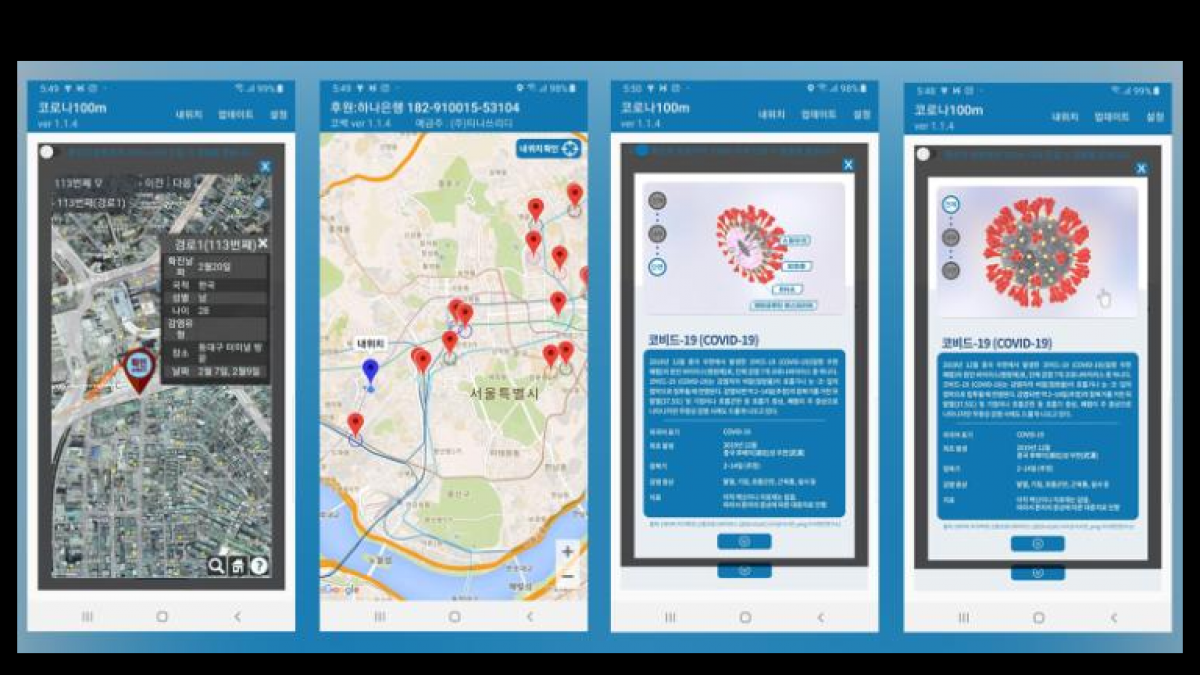
‘Corona Map’ is another such app that tracks the locations of people know to have COVID-19. Like Corona 100m, Corona Map plots the places where people known to have had COVID-19 have been, to make avoiding these areas easier.
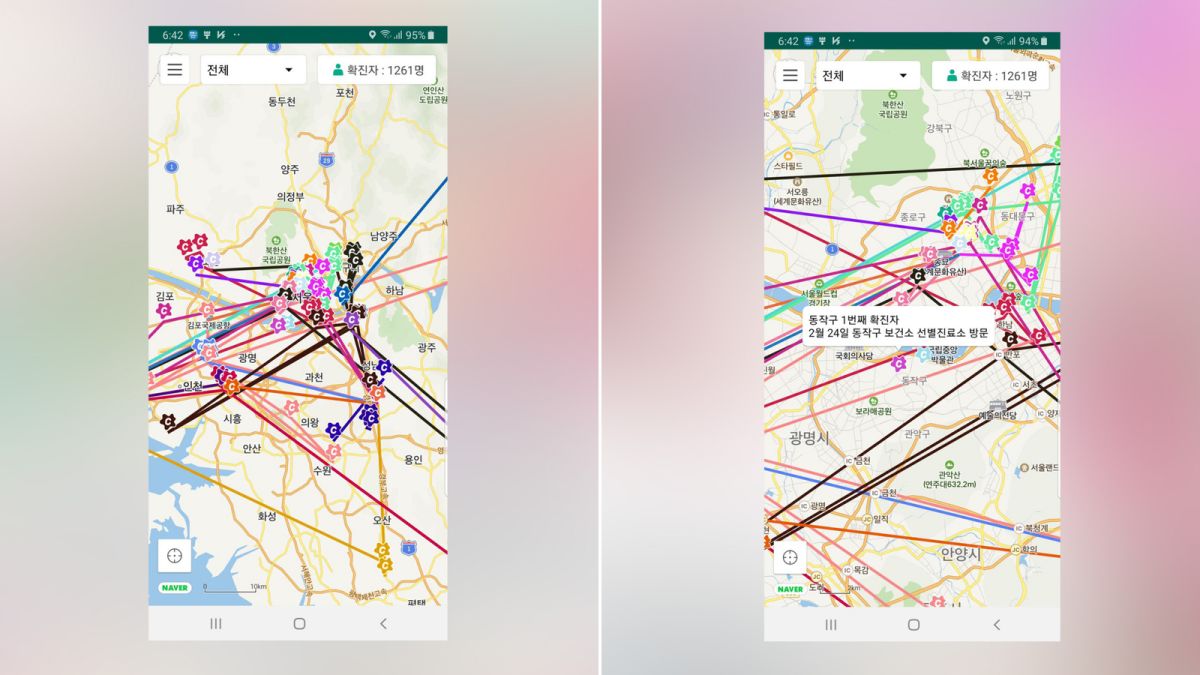
These are some of the essentials that you need to know before making your travel plans to South Korea and this travel guide will be helpful in making your itinerary!
KoreaTravelPost Editor
Hello there! I'm the Features Editor for KoreaTravelPost.
Related Posts
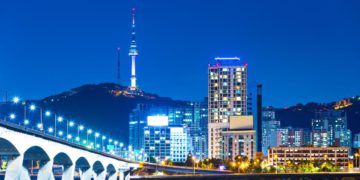
Explore Korea Like a Boss with InterparkTriple TRIPLE Korea
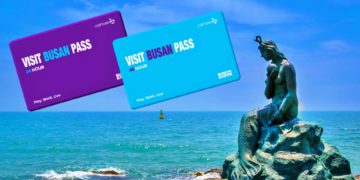
Temporary Suspension of VISIT BUSAN PASS Sales – Important Information for Travelers

Seoul Trip PASS App: Your Ultimate Travel Companion for Hassle-Free ID, Seamless Payments, and Instant Tax Refunds!
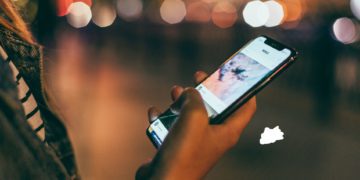
Best Korean to English Translation Apps for Your Korea Trip
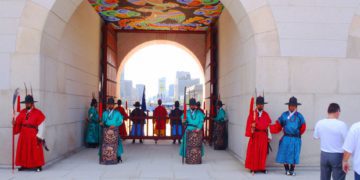
Discover South Korea with the Best: Top 10 Tour Operators
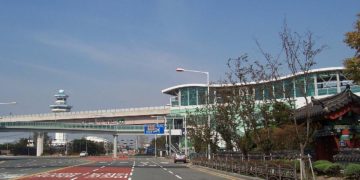
A Complete Guide to Gimhae International Airport

5 Best National Parks in South Korea
Leave a reply cancel reply.
Your email address will not be published. Required fields are marked *
Save my name, email, and website in this browser for the next time I comment.

TESSAN Germany France Travel Power Adapter

Lonely Planet Korea 12

Korean Snack Box Variety Pack

OSULLOC Lovely Tea Gift Box Set
More from our network.

- Medical Tourism
FREE NEWSLETTER
Copyright © 2024 About Us| Terms of Use |Privacy Policy| Cookie Policy| Contact : [email protected]
Login to your account below
Fill the forms bellow to register
Retrieve your password
Please enter your username or email address to reset your password.
- South Korea
South Korea Private Tours & Local Tour Guides
Plan a trip to south korea with local tour guides, and seoul, busan and more..
View all 51 reviews
Popular South Korea Tour Destinations
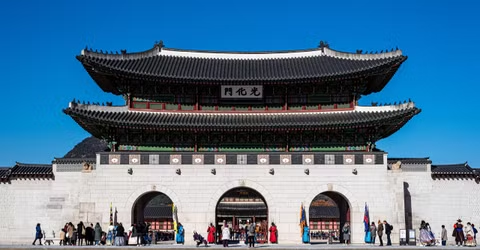
Popular South Korea Tour Guides
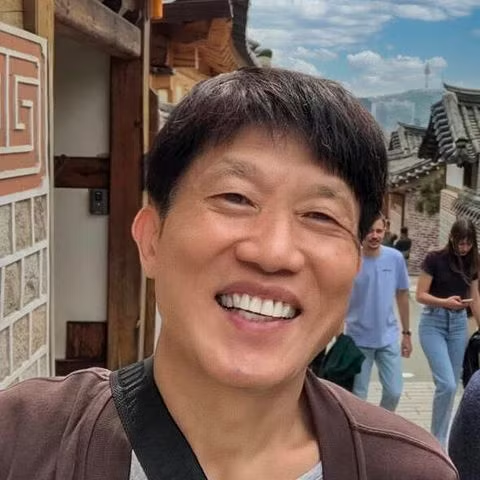
Hello everyone, I am Paul, a tour guide in Seoul. Seoul is a fascinating destination that seamlessly blends the old with the new. I'm excited to show you some of the best things to make your trip fun and excited, through my deep knowledge about culture and history of Korea and exuberant experiences as tour guide. My primary tourist destination is Seoul and metropolitan area, consisting of 5 palaces, Royal Ancestral Shrine, Bukchon Hanok Village, National museum of Korea, War Memorial of Korea and other museums & galleries and contemporary architectures, and Namsan Mt. with N-Seoul Tower, traditional & trendy market places such as Gwangjang market & Hondae street, and also Korean Folk Village & DMZ tour. Center of culture and tour is architecture. Architectural style represents spirit of times. We can see as much as we know about spirit of times. For example, without knowledge about Christianity, the spirit of medieval Europe, we cannot fully appreciate beauty and value of Romanesque and Gothic architecture. Confucianism was the spirit of Joseon Dynasty. Gyeongbokgung represents Confucianism. Confucianism culture of Joseon Dynasty is unique characteristic of Korean culture, compared to Chinese, Japanese and European culture. Hence, my tourist information is based on Confucianism. Thank you for your interest! As your guide, I hope to see you soon in Seoul.

I am Thomas, a licensed tour guide in Seoul, Korea since 2016. I am optimistic, easy-going and open-minded. Before being a tour guide, I had worked at a major company as a personnel manager for almost 30 years. I learned how to get along with people through my job experience. Now, as a tour guide, If you let me know what you are interested in, for example, places to visit, activities to do, and food to eat. I will do my best to make everything you imagine come true. I offer the best services; High Quality and Customized tours, Free transportation service and Free photo service. I also guarantee a comfortable, pleasant, safe and memorable tour. Enjoy the moment at your own pace and time in Korea, I will capture it as a photo. Thank you

Hello Everyone, My name is Hans, I've been living in Seoul Korea over 40 years and working as an officially certified English speaking tour & trekking guide since 2015. I have various experiences in city tours including history, culture, religion, foods and so on, and I met lots of tourists with Private and Group from the world, and understand of what they want to see and do. As a result, I can bring tourist to those major tourist spots and believe you will be satisfied with my tour, and back to home with forgettable memories after the time with me. My tour coverages are Seoul City tour with DMZ, Unesco world heritages, National park trekking, country side cycling tour, and nationwide multiple days tour with my van.
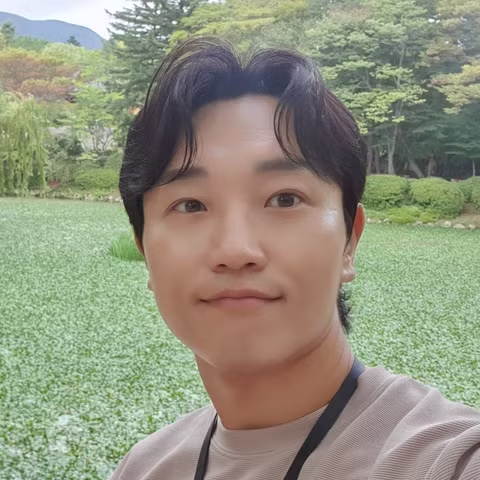
I'm Dylan. It's my pleasure to share a bit about my background with you. I had the privilege of majoring in English Literature at a renowned university in Korea. Following that, I served for two years in the U.S. military base stationed here in Korea. This tenure was indeed an enriching phase of my life where I got the opportunity to deeply understand various cultures and perspectives during my interactions and trainings with my American colleagues. This phase not only allowed me to learn but also nurtured me into a person who holds great respect and understanding towards diverse cultures. In 2018, I was honored to be the driver for the family of Intel's CEO during the PyeongChang Winter Olympics. That wonderful opportunity significantly influenced my decision to become a tour guide. After that enriching experience, I acquired a nationally recognized certification as a tourist interpreter guide. Since then, it's been my pleasure to have conducted over 800 private tours, showcasing the breathtaking beauty of Busan to visitors. I constantly strive to offer the very best service to my clients, rooted in my steadfast philosophy to "facilitate a deep appreciation for the beauty of Busan, creating cherished memories that will last a lifetime." My commitment to this mission remains as strong as ever. I kindly invite you to join me in exploring the hidden beauties of Busan, and to craft special memories together. Would that interest you?
New south korea tour guides.
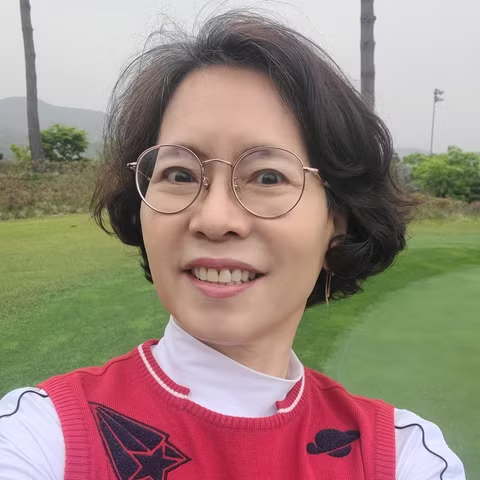
Hello! I am Alice. I live in Incheon, South Korea. It's very close to Seoul. I want to guide my clients through the charming city of Seoul. Especially when introducing the five grand palaces of Seoul, I would like to invite a professional photographer to capture beautiful moments. I can help them dress in hanbok and create stunning life shots. I also want to guide them through Kyeongju, a city that breathes with a long history. I lived in Kyeongju until my teenage years. I want to introduce UNESCO-listed Kyeongju, a city of culture and history. I have traveled to Jeju Island more than several ten times. I also want to introduce Jeju Island. My clients can go anywhere they want in South Korea. There are many well-preserved cultural heritage sites with a long history in Korea, and they can also experience the convenience of fast-developing Seoul. Come and visit Korea. Let's explore Seoul and travel together anywhere. Traveling in Korea will be a memorable and cherished experience. Best regards. Alice.

Hello! I am Ari, a freelance guide based in South Korea with a rich and diverse background in English guiding, interpretation, and medical coordination over the past decade. I'm delighted to welcome you to Korea. Having spent my entire life in Korea, I've been a licensed guide since 2014, accumulating a decade of experience in showcasing the wonders of my homeland. My academic journey led me to major in English Literature, and armed with a TESOL certification, I also ventured into the realm of English teaching. However, it was a transformative trip to Europe that ignited a new dream within me. I found joy in sharing the stories, memories, and unique charm of Korea with people from around the world. Over the years, my role expanded beyond guiding to handling diplomatic protocols for distinguished guests, including ministers, vice ministers, members of parliament, kings, and queens. If you're seeking an authentic tour that unveils the true essence of Korea, I invite you to reach out. I'm eager to promptly respond and create memorable experiences together. Feel free to drop me a message – let's embark on a journey to discover the genuine beauty of Korea!
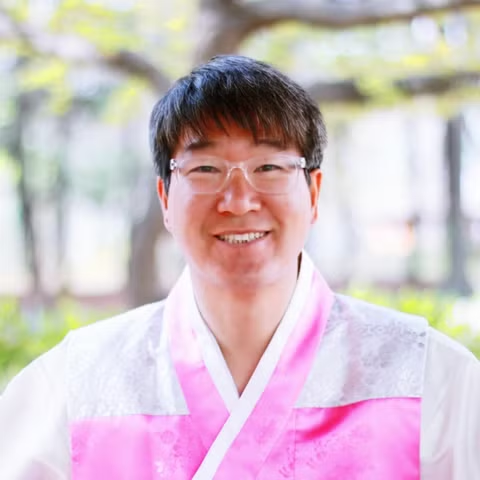
Hi [An Yeong Ha Se Yo?(안녕하세요?)] every body, My name is Kevin H. from Seoul. I myself like travel abroad too. I like to exchange cultures also, because experiencing different cultures can give us great chance to make a progress in many ways. In this regards, I would like to help tourist as professional private guide. My experience taught me the tours had been interesting or so-so according to a guide when I traveled abroad. So I am always doing my best to help tourists and entertain them. I think the person you are looking for, because I am well trained and educated. I am interested in history, agriculture, science, travel and communication and arts. These interests will make our tour more informative and enjoyable. I have 10 years(long ago) + 10 years(recently) experience in private tour. And I have been delivering more than 1000 tour for mainly family. Those are covering culture, DMZ, nature, especially Seoul Highlights for first visitors. As results I have excellent reviews in the tourism industry. Furthermore, I have a long and experience with telecom company as employee. This will make our tour more memorable. I am graduated from Gyonggi University with BA in Tourism Management. So I understand tourism industry very well and provide you a great guiding serice and tour service. My Service is as follows: S: Smile (happy together) S: Speed (timely) S: Sincerity (from the bottom of my heart) Best Regards Kevin Hwang Dream.
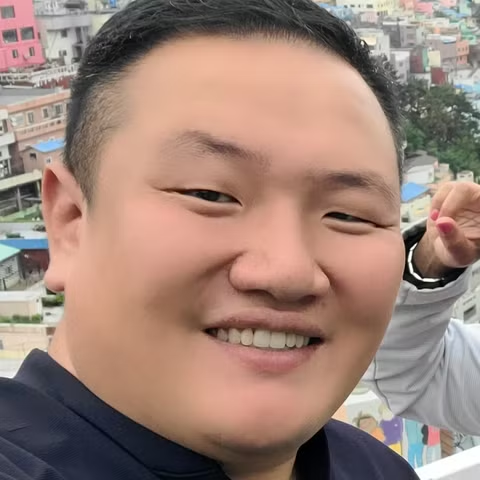
Changwoo Y.
I was born in busan and lived entire my life except 5 years in canada. my first job is licensed realtor. i also have a certificate as a professional tour guide. i am running my own real estate agency and private tour company. , popular south korea private tours.
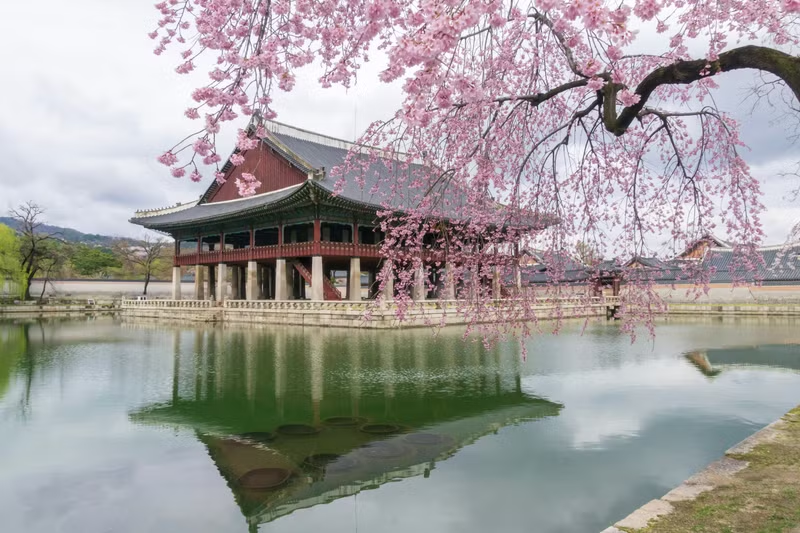
Seoul City Tour + Free photo shooting Service
Seoul has been the capital city of korea since 1392. if you are a traveler who is visiting seoul for the first time, this one-day tour will make you fall in love with the charm of seoul, where the new and old are exquisitely harmonized. you enjoy every moment in seoul, i will capture your moments in photos. [if you request. the itinerary can be changed.] * this itinerary is subject to change at the request of the client..

Seoul Local Life and History
Welcome to seoul. at the forefront of fashion and technology but deeply traditional, seoul brings together palaces, temples, avant-garde design, and mountain trails. on our tour, we will discover a fascinating mix of old and new, traditional culture with contemporary attractions..

Busan Private Tour : Tailored Experiences for Your Group Only!
Experience busan, where post-korean war history meets modern skyscrapers. begin at the tranquil haedong yonggungsa temple by the sea. relish leisure moments in a picturesque hanok cafe, then plunge into the buzz of jagalchi fish market. gaze at breathtaking views from songdo marine cable car and wander the vibrant gamcheon cultural village. shop antiques to delicacies at biff square and gukje market. dive into busan's rich tapestry..

Gyeongbokgung,Bukchon,Gwangjang,N-SeoulTower,Hongdae
Tour to Gyeongbokgung-authentic & biggest palace, attractive traditional village, traditional street food, panoramic view of whole Seoul, young & vibrant street of Hongdae. Tour feature highlight of beautiful, cultural, vibrant places at Gyeongbokgung, Bukchon Hanok Village, Gwangjang market, N-Seoul Tower, Hongdae steet. Guide shares brief cultural history that enables guest to figure out the authentic beauty and value of traditional Korean culture as well as palace architecture.

New South Korea Private Tours
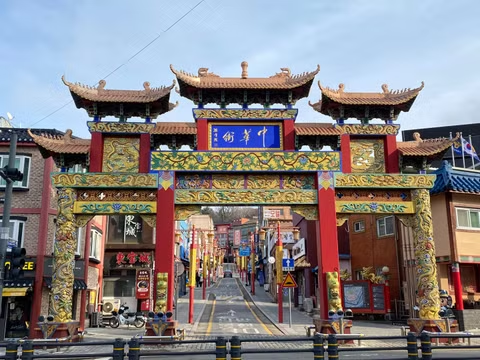
Seoul Layover Private Incheon tour from Airport
Will you go straight to the hotel upon arrival at incheon airport by applying for this product, we will safely take you from incheon airport to your destination hotel. before heading to the hotel, stop by incheon to experience korea's development story. lastly, don't miss songdo triple street, a favorite spot for young people. [if you request. the itinerary can be changed.] * this itinerary is subject to change at the request of the client..

Korean War Museum and Memorial in Central Seoul -- a good alternative to the DMZ
I don't recommend day-trips to the dmz -- the jsa remains off-limits due to north korean policy, and anyway most of what you see is just barbed-wire fences and various monuments; a trip there does not give insight into north korea nor about the 1950-53 war. the long trip driving up there & back is not worth your precious time. there is a very good alternative, which is this gigantic compound in the middle of seoul -- a large museum of the korean war & outdoor display of weaponry from that era..

Buam-dong, Seoul’s Hidden Charming North Park-neighborhood
This is a lovely neighborhood of “gangbuk” seoul behind famous mt. bugak, with a wide variety of offerings, scenic and fascinating, but only a few “insiders” know about its very charming character. we will visit the “sword-washing pavilion”, then a beautiful waterfall with a colorful buddhist temple right next to it we will proceed into a hidden quiet peaceful area with late-joseon-era ruins-relics amidst great trees. then along a high ridge with great views, and some unique cafes & others..

Museum of Korean Contemporary History - 1880s thru 1980s, explained by an American Professor
This is a relatively new and medium-sized museum, opened in 2013 after much controversy about its potential contents. there is little agreement on what happened in the 20th century, and it was very difficult to create this museum. there is not much english on the displays, so you really need an expert familiar with the truths to take you through it and point out the important details, and explain what is distorted in presentation and what has been entirely left out due to sensitivity., popular south korea private cars.
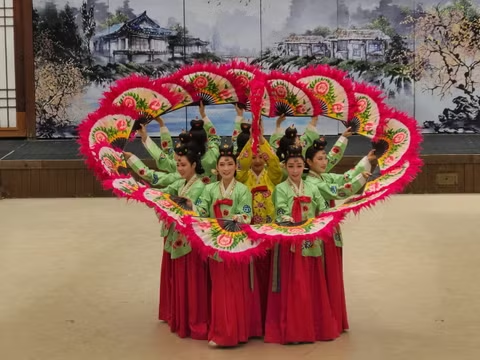
Korean Tradition & Modernity: Korea Folk Village, Hwaseong Fortress & Starfield Library
Firstly, explore korea's cultural richness at the korean folk village immerse yourself in traditional life, ancient customs, vibrant performances, and authentic architecture. a captivating journey awaits secondly, step into history at suwon hwaseong fortress a unesco world heritage site, it's a marvel of korean architecture. majestic walls, gates, and pavilions tell the story of korea's past. lastly, you can explore the recently opened suwon starfield library, a marvel in scale and design..
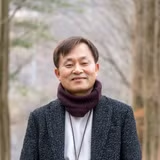
South Korea Tour Reviews

Busan Private Half-Day Tour: Exclusive Experiences for Your Group!
“ Fantastic Highlights Tour ”
Right from the outset Dylan was responsive to our communications and interested in our needs on the day. He put together a perfect itinerary and was really fun to be with all day, providing a fascinating local perspective. We’d highly recommend Dylan to anyone. You won’t be disappointed!!
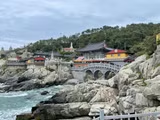
“ An Amazing, Educational Visit through Seoul's History ”
My wife and I had the pleasure of exploring Gyeongbokgung, Bukchon, Gwangjang, N-Seoul Tower, and parts of Insadong with Paul and we had an incredible time! Paul's knowledge of Korean history, specifically the Confucian influence in architecture, government, and, well, all walks of life within both the modern Korean life as well as the Joseon dynasty was amazing context for our traveling. Sure, we could've wandered around Gyeongbokgung palace by ourselves or listened in on some of the wandering tour guides (who Paul was able to correct a few times), but having a private, guided tour around some of Seoul's most beautiful locals was worth the time and money. I'd definitely recommend seeing if Paul can help you enjoy Korea on your next visit!
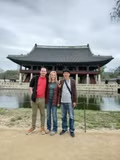
The center of culture and center of tour is architecture. Culture is based on spirit of times. Architectural style represents the spirit of times. We can see as much as we know about the spirit of times. Confucianism was the spirit of Joseon Dynasty. Gyeongbokgung represents Confucianism. Without the knowledge about Confucianism, we are not able to fully appreciate authentic value and beauty of Gyeongbokgung. Gyeongbokgung is not only the essence and highlight of palace architecture of Joseon Dynasty, but alos the most beautiful architecture and place in whole Korea.
Guylaine C.
“ What a great itinerary! ”
Although we thought we could not physically manage the Temple visit, with Dylan’s support, we made it! What an impressive site worth the effort. The village was interesting but we were amazed by the fish market. Dylan was informative about the différent varieties of shells and fish. Dylan is a gentleman and he made sure we enjoyed our tour. Thank you Dylan!
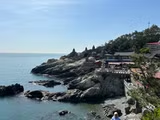
Your bright energy and positive attitude allowed us to conclude the tour wonderfully. Additionally, I thoroughly enjoyed the day as if I were touring with my own parents. Thank you so much for making it a splendid day for me as well. I wish you always stay healthy and happy. Warm regards, Dylan
South Korea Private Tour Guide
From Suncheon Bay Wetland to Andong, South Korea’s rich past and vibrant future comes alive with a local private tour guide. Unlock the South’s beauty today.
Beyond Seoul and Busan lies a side to South Korea that few get to explore. With your private guide and personalized itinerary, you can travel as far as Jinan County where Tapsa temple awaits, or as close as Tongyeong where emerald waters cradle this small sea town. Opening yourself up to intimate experiences and new stories just got easier.
Worried about the language barrier? Perhaps you’re eager to learn from a local? Our dedicated guides offer both conveniences, maximizing your South Korea tour with insights from far reaching destinations such as Ganghwa island, to food suggestions within the bustling Gwangjang Market.
South Korea Frequently Asked Questions
Is it good to hire tour guides in south korea gowithguide find your perfect tour guide at gowithguide. relax and cherish unforgettable tours with loved ones. create personalized tours for a truly memorable trip, how do i get a korean guide gowithguide find your perfect tour guide at gowithguide. relax and cherish unforgettable tours with loved ones. create personalized tours for a truly memorable trip, how much do you tip a guide in korea gowithguide find your perfect tour guide at gowithguide. relax and cherish unforgettable tours with loved ones. create personalized tours for a truly memorable trip, how many days is enough for a south korea tour gowithguide find your perfect tour guide at gowithguide. relax and cherish unforgettable tours with loved ones. create personalized tours for a truly memorable trip, which month is best to visit south korea gowithguide find your perfect tour guide at gowithguide. relax and cherish unforgettable tours with loved ones. create personalized tours for a truly memorable trip, is english spoken in south korea gowithguide find your perfect tour guide at gowithguide. relax and cherish unforgettable tours with loved ones. create personalized tours for a truly memorable trip, latest south korea articles.

Hiring A Guide In Busan: Pros & Cons
Busan, South Korea
If you’d rather get in a wrestling match with a giant Nomura’s jellyfish than try to sort out your Busan itinerary any longer, you’ve encountere...

Hiring A Guide In Seoul: The Pros & Cons
Seoul, South Korea
Whenever I’m traveling, there are two things on my mind. How will I get there, and what will I do once I land? If you’re like me, then your mind’s rac...

Tourism In Busan Statistics 2023: The Ultimate Guide
did you know that busan has the world’s largest department store seriously, shinsegae department store in centum city has a monstrous floor space....
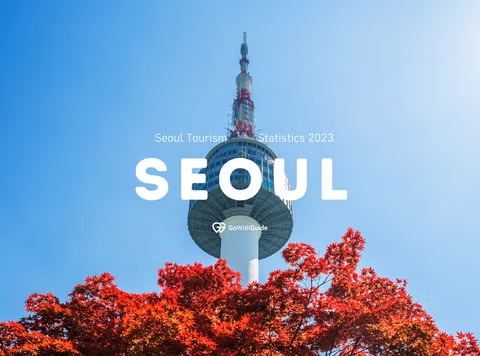
Seoul Tourism Statistics 2023: The Ultimate Guide
Exciting yet exhausting. these two words sum up most travel planning, especially when you're trying to unearth the everlasting beauty of a traditional..., the best tours and activities.
With a real local of your choice
The option to personalize your tour
Just contact your favorite local
Only private tours!
So no group tours with strangers
Related South Korea Tour Guide Pages
- Work With Us
- Blogging Bootcamp

- Van Conversion Academy
- Campervan Shop
- Campervan Rentals
- Plan a Trip
- Itineraries
- Destinations
- Responsible Travel
- Family Travel
- Budget Travel
- Scuba Diving
- Travel Credit Cards
- Digital Nomad
- Teach English Abroad
- Blogging Resources
- Income Reports
- Travel Shop
- Meet Katie & Ben
- About Two Wandering Soles
- Personal Stuff
- Portfolio & Press
South Korea Travel Guide
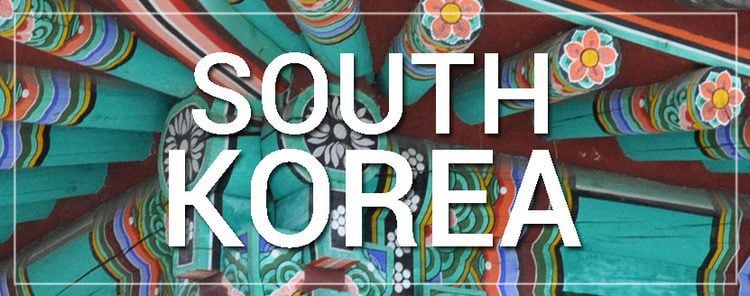
South Korea is known to be a place of wild contradictions and stark contrasts. It’s where you will see ancient temples beside skyscrapers; experience the hustle and bustle of the city life with the serenity of nature nearby, and where both technology and tradition coexist.
While teaching English through the EPIK program, we have traveled many parts of this amazing country. From Seoul to Busan, and numerous hiking treks and festivals, we wanted to experience everything South Korea has to offer.
South Korea Travel Guide Contents
Important Info | Best Time to Visit | Things to Do | What to Eat | Typical Budget
Travel Tips | What to Pack | South Korea Articles | Book Now
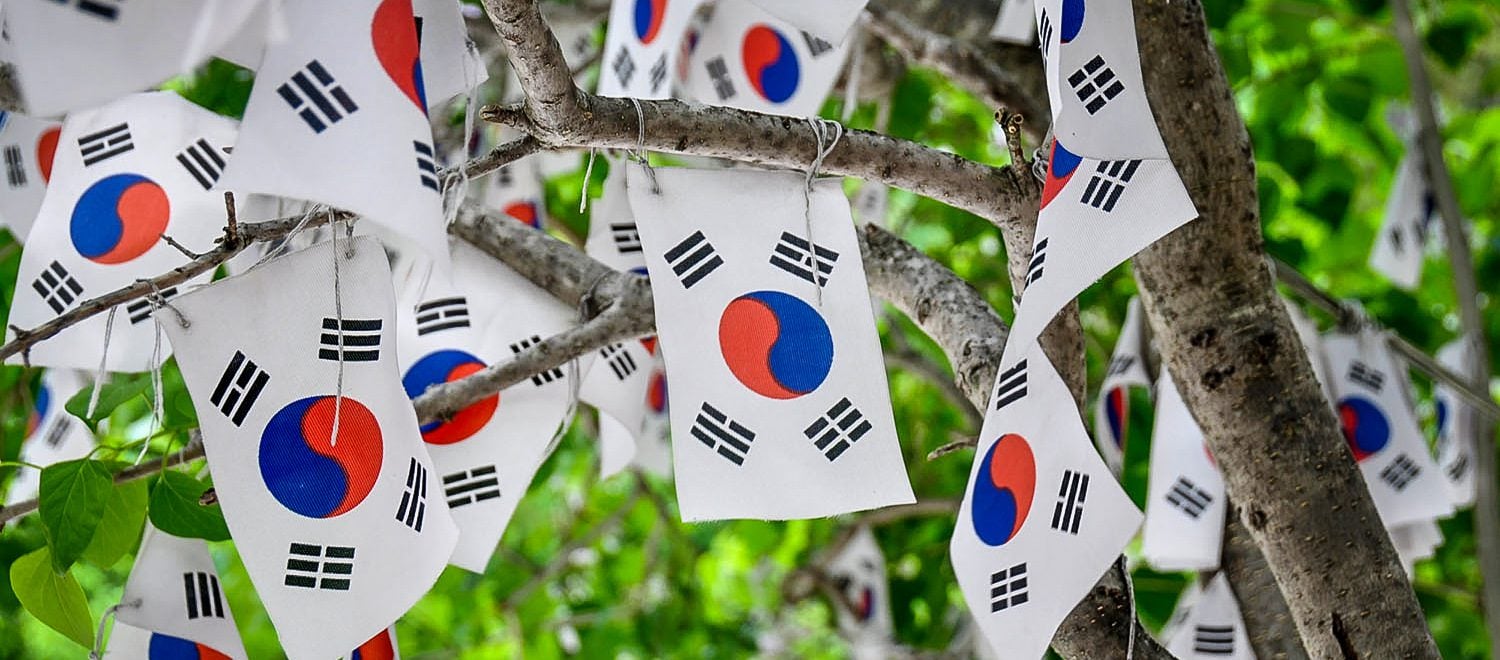
Important Information about South Korea
South Korea at a Glance: South Korea is home to some of the friendliest people on Earth. Here, you will find colorful hanboks and historical places in the middle of Seoul, South Korea’s capital. All around the country, you will also see temples, fortresses and palaces. When it comes to nature, South Korea boasts a lot of hot springs, sandy beaches, mountain peaks and national parks.
Currency in South Korea: won | 2018 Conversion Rate: ₩1000 = $0.88 USD
Tipping in South Korea: Korea has a no-tip culture . Everyone from cab drivers, hotel and restaurant staffs don’t expect any tip.
Language & Helpful Phrases: Korean
Hello = an-nyeong-ha-se-yo
Thank you = gam-sa-ham-ni-da
Beer = maeg-ju
Delicious = mas-issneun
Where’s the bathroom = hwa-jang-siri eodiyeyo
How much? = ige eolmayeyo?
Too expensive = neomu bissan
Don’t want = wonhaji anh-a
Religion and Culture: While a little less than half of South Koreans practice a religion, there are a few throughout the country. The major three are Protestant Christianity, Catholicism and Buddism.
Transportation around South Korea: Transportation in Korea is excellent, probably one of the best in the world. Buses always leave on time, the trains are really cheap and metros are super clean. Most signs in are in English as well as Korean, so it is very easy to travel in Korea.
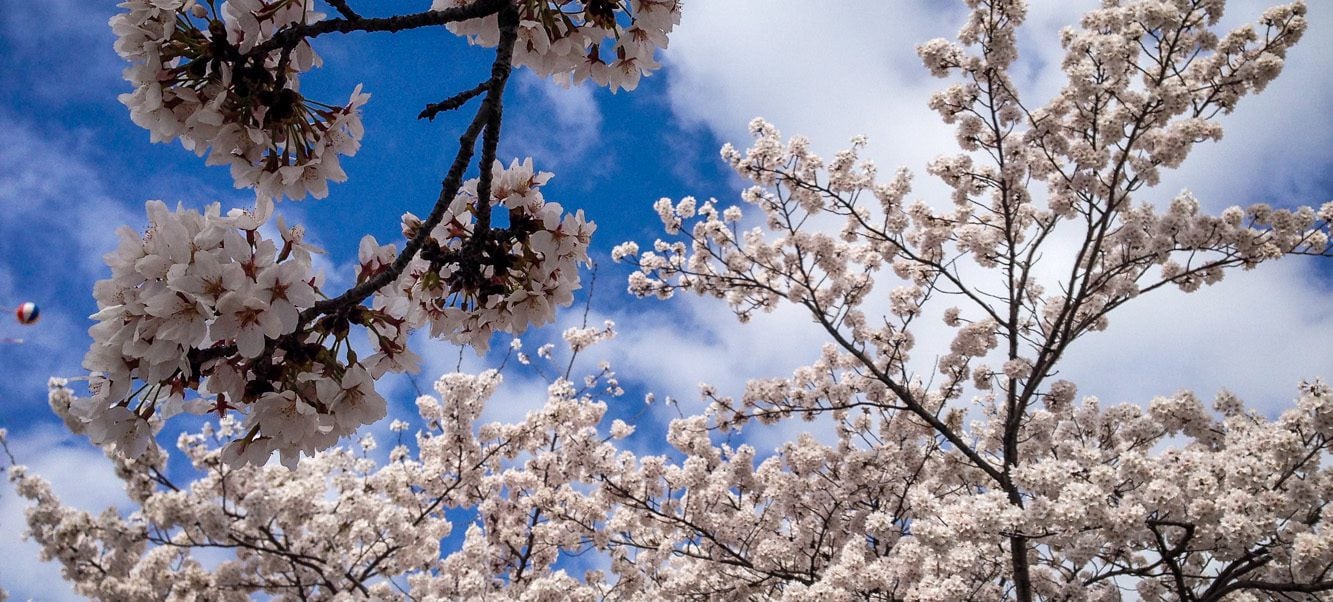
Best Time To Visit South Korea
Climate in south korea.
Korea experiences all four seasons and each one of these bring different experiences. If you want to see the cherry blossom season, plan your trip around the first two weeks in April.
Seasons are similar to most northern hemisphere countries:
Spring: March to May
Summer: June to August
Autumn: September to November
Winter: December to February
Peak season for tourists is in summer. Most, if not all, things in the city get pricier and busier. The month of August is typically summer vacation from school so expect that there will be a lot of people.
Times to avoid traveling in South Korea
By all means, avoid going to South Korea in summer, especially in August. It’s the most expensive and crowed time of the year. Not only that, but the weather tends to be humid.
Major Festivals in South Korea
Andong International Maskdance Festival , late September to early October: During this festival a massive display of mask dancing takes place. People from all over the world come here to showcase different traditional mask dances.
Boryeong Mud Festival, second weekend of July: Experience something unique during this festival by taking a dip in a mud bath, try mud wrestling and mud sliding.
Namwon Chunhyang Festival, April: Basically, this festival is a celebration of one of the most famous Korean folk story characters – Chunhyang from Chunhyangjeon.
Seoul Lantern Festival, First Friday of November: Every year, the theme here changes. As a lantern festival, you can expect to see many lanterns light up the Cheonggyecheon area of Seoul.
Hwacheon Sancheoneo Ice Festival , January: This festival is voted to be one of the best in Korea. Celebrated during winter, activities during this time include catching fish with bare hands, sledding and ice sculpting.
*These festivals follow the Lunar calendar, so the exact dates vary each year
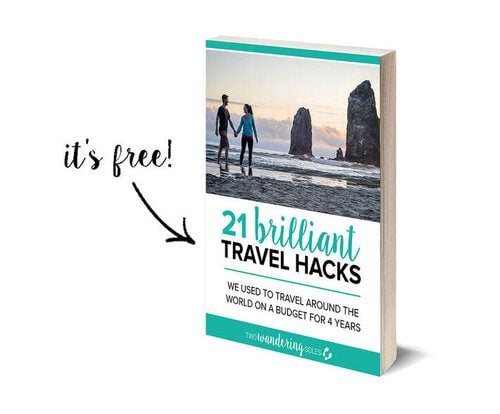
FREE e-Book
We Traveled the World for 4 years on a Budget with these 21 Brilliant Travel Hacks!
[30 pages, money-saving trips, and 100% FREE]
Get your copy NOW!
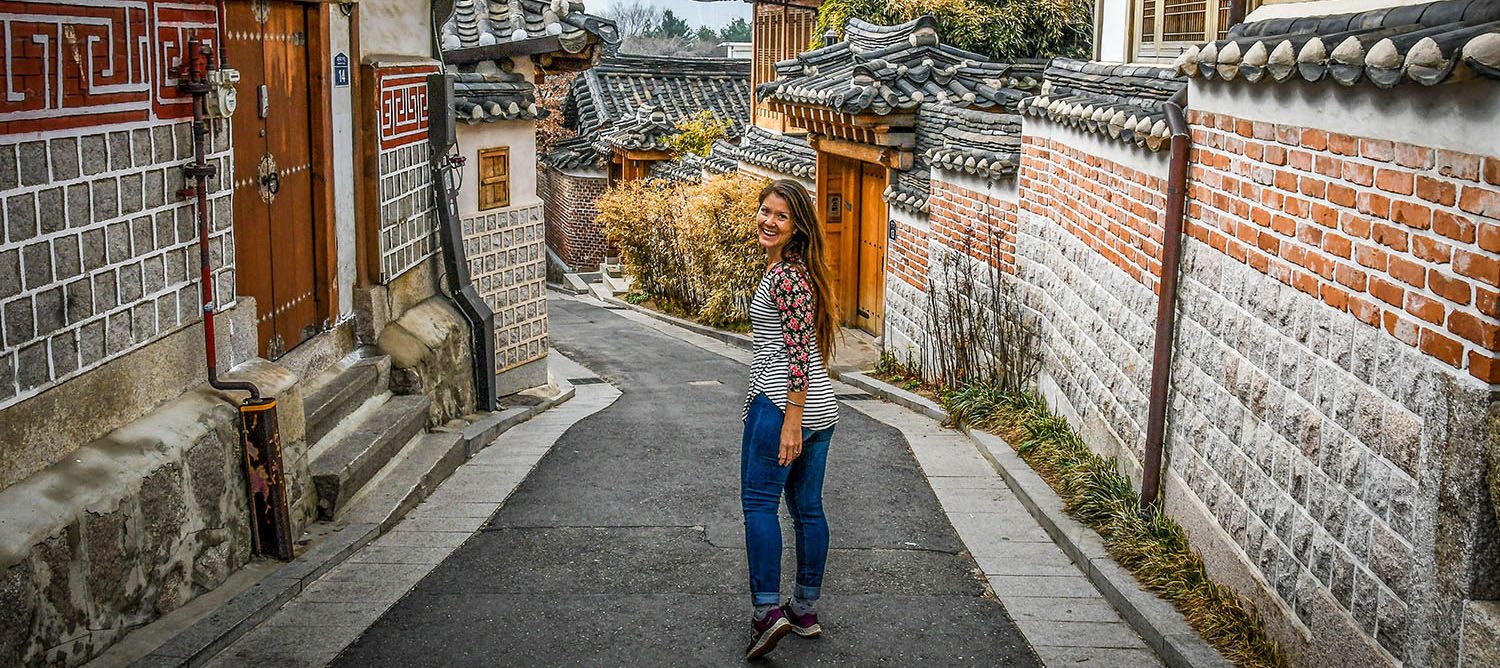
Top Things to Do in South Korea
Get naked at a jjimjilbang.
A jjimjibang is one of the spa retreats that you should try when going to South Korea. Here, you can relax at different temperature hot tubs or try an exfoliating body scrub. You won’t regret it when you see how smooth your skin will become. Read about our jjimjilbang experience in Busan .
Sing in a Noraebang
One of the best ways to feel Korean is to get a group of friends together (and some beers) and sing your hearts out in a Noraebang, a Korean karaoke room). You’ll have a wide variety of songs to choose from, mostly 90’s favorites, and take turns belting out the lyrics along with your friends.
See the Cherry Blossoms in Bloom
Just like Japan, Korea has its fair share of cherry blossoms, and it’s typically less expensive to see them compared to Japan. Annually, for two weeks in April, South Korea becomes a tourist spot for its cherry blossoms.
Explore Jeju Island
Most famous for its blue turquoise waters and mountain views, Jeju Island is one of the most popular places in South Korea. Here, you can experience swimming in a naturally formed swimming pool, hiking to a volcanic crater and chase waterfalls. Read about our experience in Jeju for a weekend .
Eat Live Octopus
If you love taking a bite of exotic food, you shouldn’t miss the chance to try eating a live octopus.
Insider Tip: You can head to any fish market in South Korea and ask for some ssanakji. They will give you a live octopus and give you details to a nearby restaurant where it will be prepared and served to you with some side dishes. We have more details in our Top Things to Do in Korea article.
Are you thinking about teaching English in Korea? Check out our guide to Teaching English Abroad and how to get your TEFL Certification.
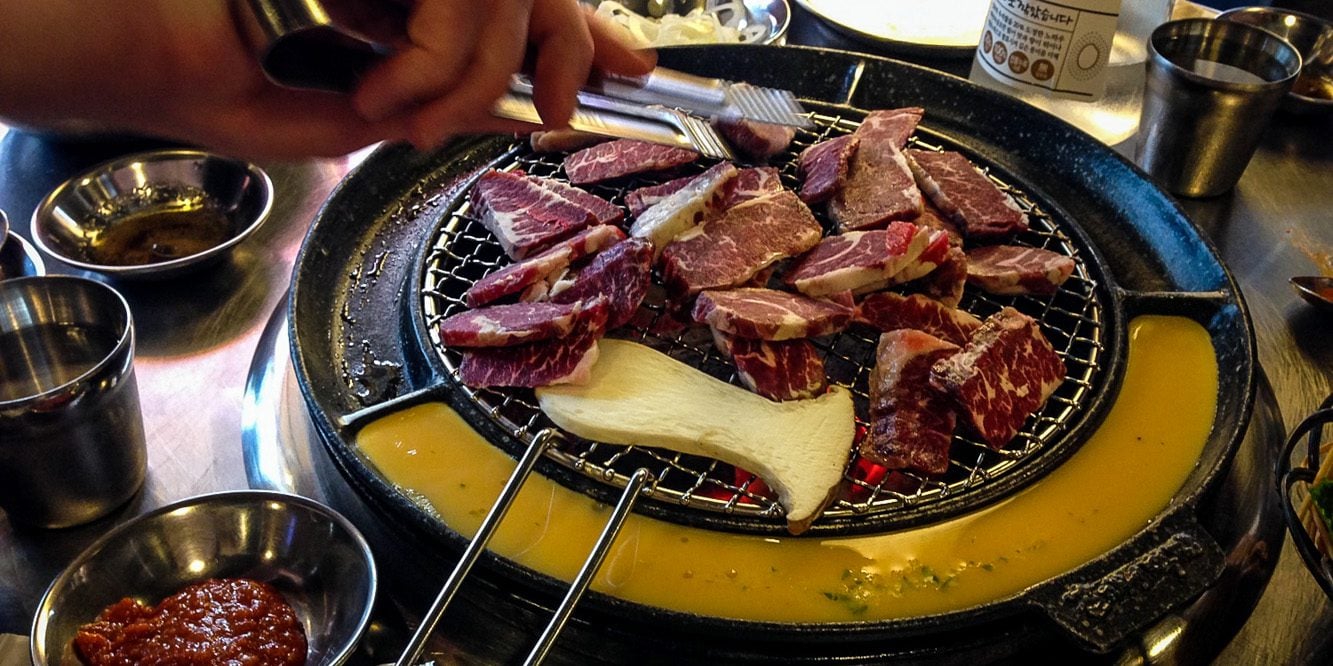
Best Food to Eat in South Korea
All around Asia, South Korea has one of the best cuisines. Often, the first things that come to mind when you think of Korean food is Korean BBQ and Kimchi. These are a must try, but trust us, there is so much more!
When it comes to Korean cuisine, the typically meals are a combination of rice, vegetables and meat. So without further ado, here are some of our favorites:
Samgyeopsal (Korean BBQ): To eat samgyeopsal, you are the grill master and you’ll doing the cooking from the grill on the table. You can either order pork or beef and many side dishes will also be served here.
Jjim dak: Created in the historic city of Andong, jjim dak is a mix of flat noodles, potatoes, delicious sauce, chunks of chicken and some peppers. You can also add some cheese for that heavenly taste.
Kimchi: Kimchi is probably the only food in Korea that you’ll see everywhere you go. It’s the staple food served with every meal all year round.
Bulgogi: For all you meat lovers out there, you’re definitely going to love bulgogi. This is a pile of marinated beef and mixed vegetables that you grill at your table.
Bibimbap: When roughly translated, bibimbap means ‘mixed rice’. It is typically a mixture of greens, mushrooms, radishes, carrots, bean sprouts, gochujang sauce, and of course, rice.
Kimbap: Kimbap are Korea’s rolls of goodies. It can be considered as the sushi of Korea and comes in several varieties like bulgolgi and shrimp. Great for a meal on the go or picnics.
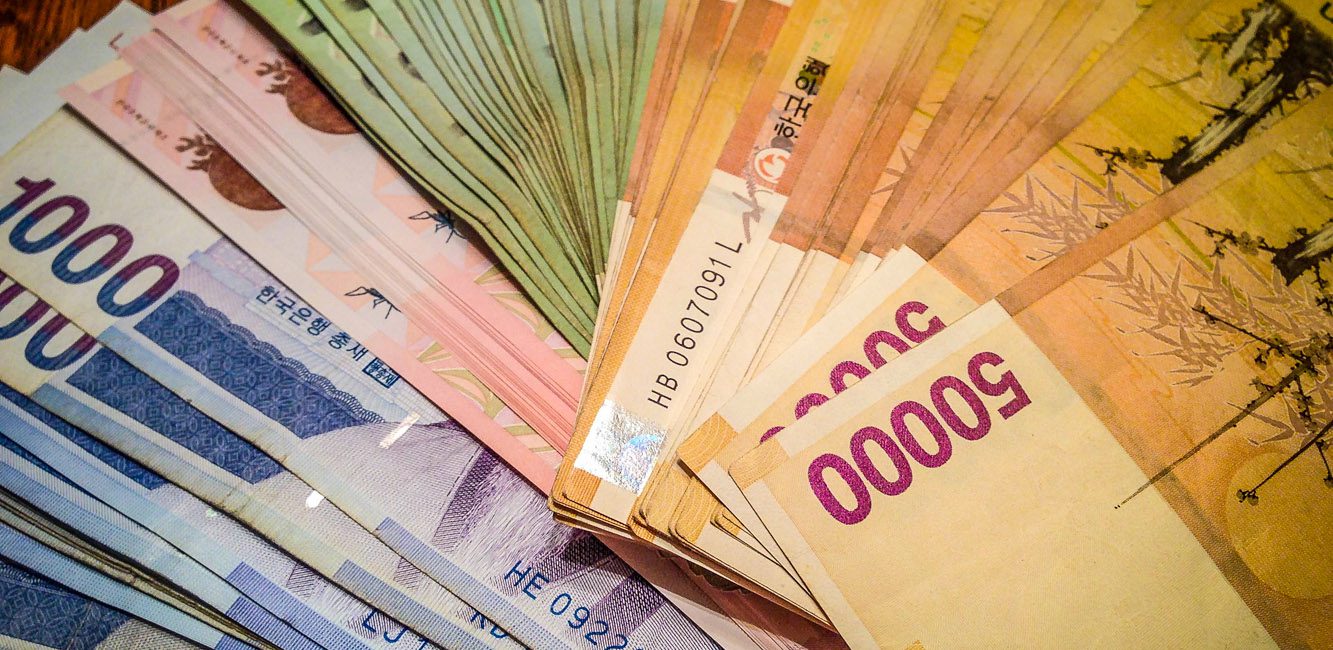
Typical Budget for South Korea
The cost of living in South Korea is relatively low, but it is increasing. Travelers can find many options to suit their travel budgets.
Good to know: For transportation, you can save some money when you get yourself T-Money to pay for your fares on the bus, taxi and subway.
How Much to Budget in South Korea Per Day
Budget traveler: If you are on a tight budget, watch your spending closely, $30 – $40 could be a sufficient budget.
Mid-range traveler: If you want to have a few splurges and stay in nicer accommodation, plan to budget $50 – $100 per day.

Dorm bed = $18-$30
Jjimjilbang = $6-$13
Budget room = $40
Mid-range = $60
Luxury hotel = $170+
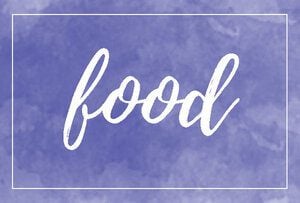
Street food = $1-$5
Restaurant = $5-$17
Local beer = $3-$9
Soju = $1-2

Train = $6-$7
Subway = $1-$2
Taxi = $3-$4

DMZ Tour = $50-80
Jjimjilbang (Scrub and Massage) = $20-$70
Everland = $50
Lotte World = $45
Nami Island = $7
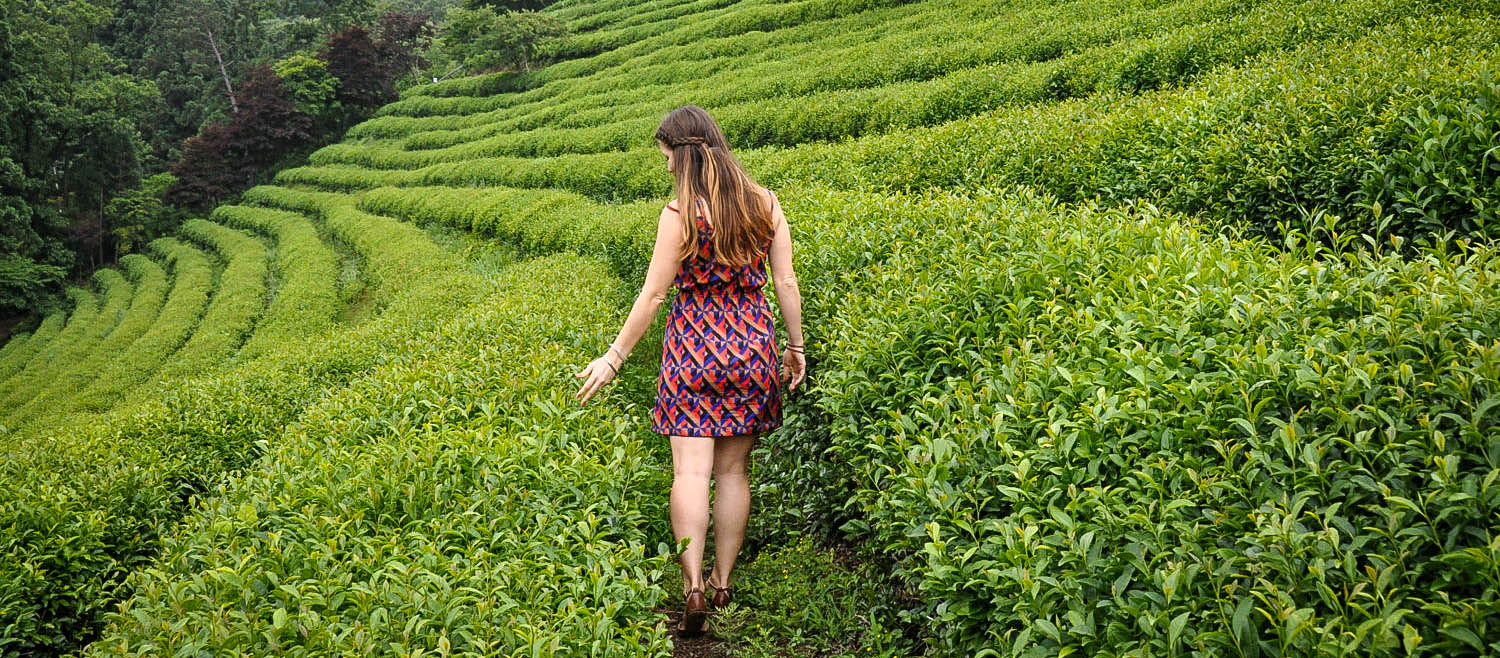
Responsible Travel Tips in South Korea
We are passionate about sharing tips anyone can use to travel more responsibly . Here are some easy ways you can travel better in South Korea.
1. Leave no trace
Only leave your footprints. Nothing else. Bring all your waste and dispose them properly. There are tons of trash bins in the bigger cities in Korea. However, in smaller towns street cleaners come by frequently to collect trash piles. If you have rubbish and you can’t find a trash can, please place it in a trash pile. (I know, not ideal, but it is part of their culture.)
2. Be aware
Check the restaurants and shops before buying or eating there. Only choose ones that don’t promote exploitation or cruelty of endangered species.
Before you leave your accommodation, check that appliances and lights that are not in use should be unplugged. Please turn off your A/C as well.
4. Hang hotel towels
That’s right. Do you even need them replaced every day? Help conserve water by hanging your towels to reuse them during your shorter stays.
5. Do your research
While this is a travel guide, you can tweak it to your liking. Also, read about the country’s culture, religion, language and rules before your trip.
Related Article : Eco-Friendly Travel Gear Packing List
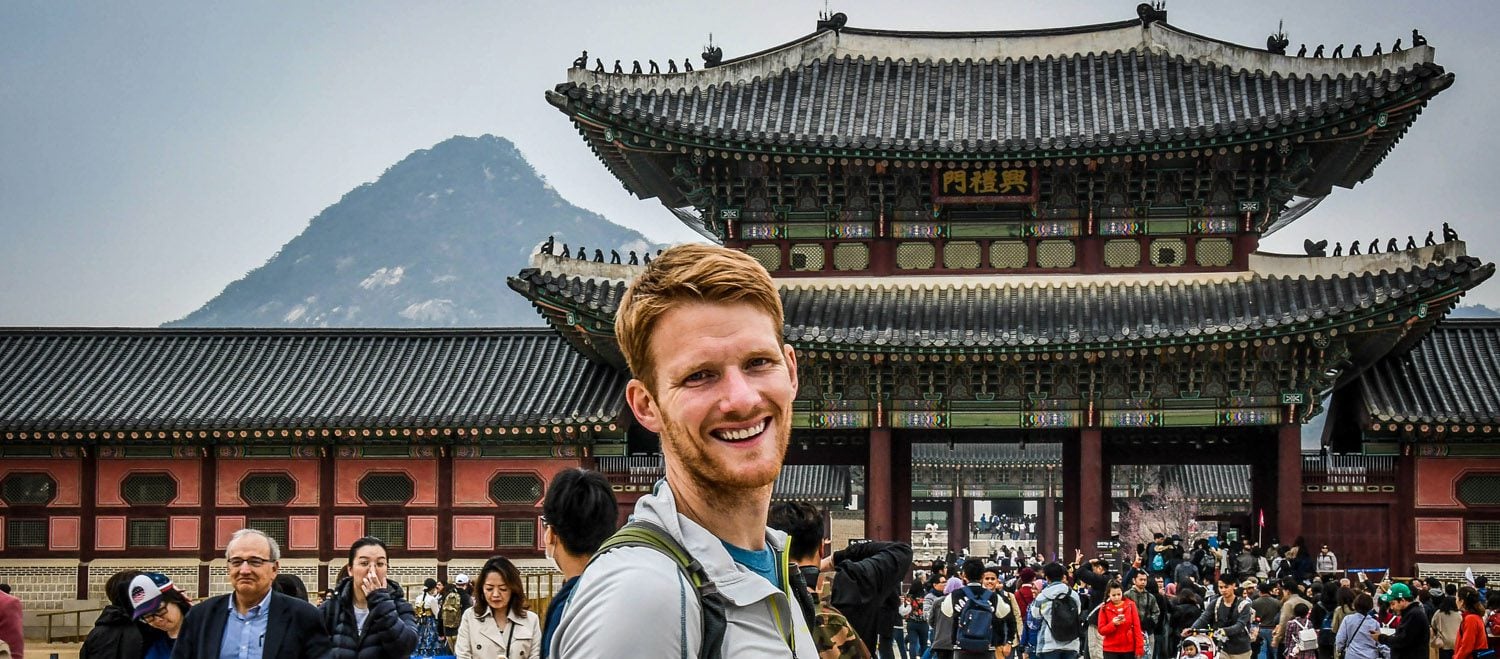
What to Pack for South Korea
You might feel a bit overwhelmed about which stuff to bring when planning your perfect trip. Don’t worry, we got you covered. And if you’re moving to South Korea to teach English, we have exactly what we brought (and what we wished we left at home) in our Moving to Korea Packing List .
Here are some South Korea-specific items we’d recommend packing:
bug repellant (solids are the way to go)
plug adapter
reef safe sunscreen
insulated water bottle (we love our Hydro Flasks )
reusable straw & reusable bag ( say no to single-use plastic! )
fleece jacket (for fall or spring)/hardshell jacket (for winter)
rain jacket (it can rain during any season, so you’ll want to be prepared!)
Skyroam Pocket WiFi (10% off Coupon Code: TWOWANDERINGSOLES)
Chaco sandals (we’d recommend these instead of hiking boots as they are less bulky and are good for walking through water)
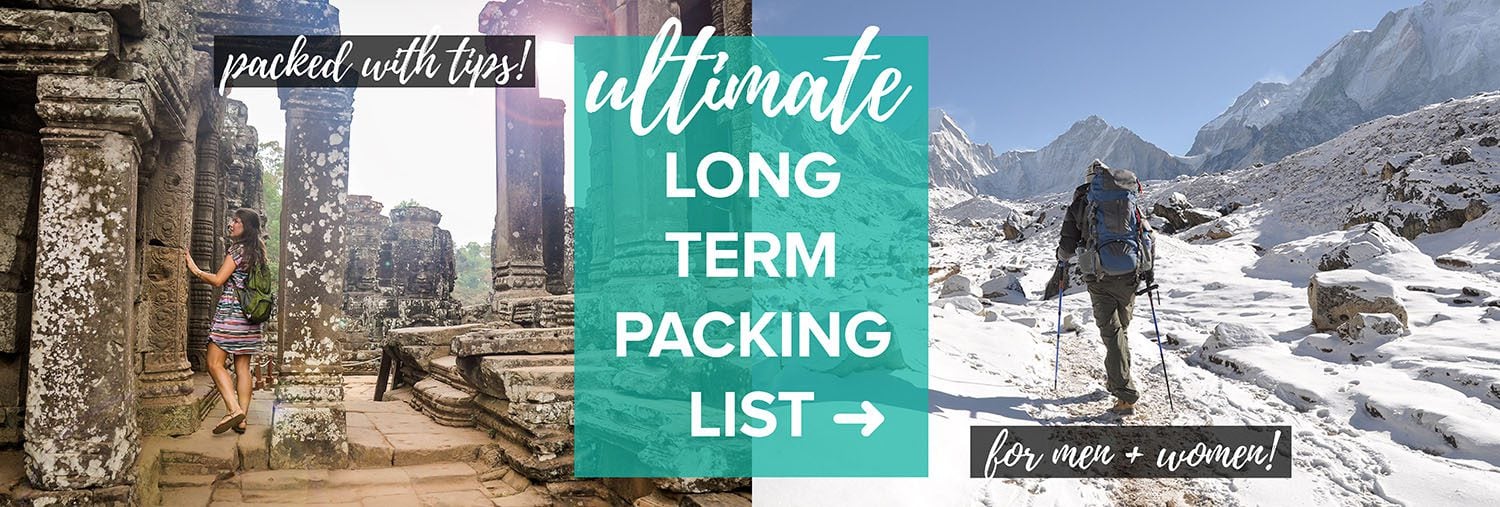
South Korea Articles
To help you plan your dream vacation to South Korea, here are some of our articles to guide you. From fun things to do to detailed itineraries, we’ve got it all!
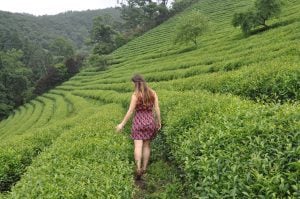
22 Fun Things To Do in South Korea
If you are living in South Korea - or even just visiting for a short...
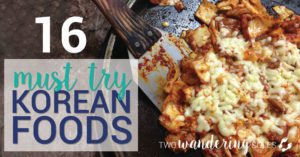
16 Must Try Korean Foods
Ever since we left Korea, the cravings for one of our favorite cuisines has grown...

How to Save $22,000 in One Year Teaching English in South Korea
How can you save $22,000 teaching in South Korea too? This is a breakdown of...
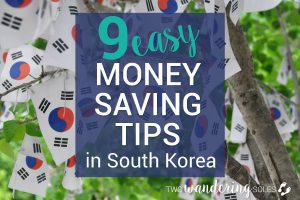
9 Easy Money Saving Tips in South Korea
We managed to save even more money than we expected while teaching English for a...
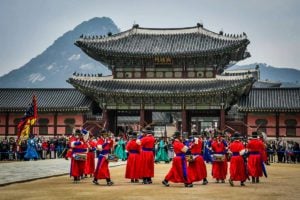
18 Unique & Fun Things to Do in Seoul
Seoul, South Korea is not like any other big city, with so many unique and...

Visiting Dokdo and Stunning Ulleungdo, South Korea
When we were offered the chance to visit these hard-to-get-to islands through a trip entirely...
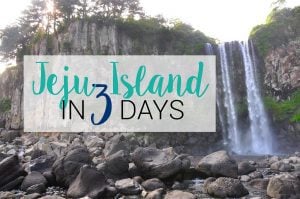
Jeju Island in 3 Days
Follow our journey around Korea's famous Jeju island as we explore waterfalls, volcanic caves, and...
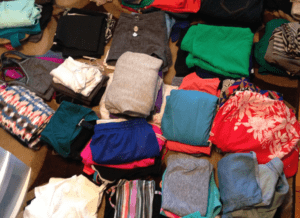
Moving to Korea: The Ultimate Packing List
If you're moving to South Korea to teach English, you're likely wondering what to pack...
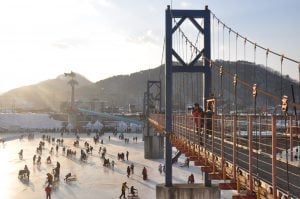
Hwacheon Ice Fishing Festival
I have a confession. Until last weekend, I had never gone ice fishing in my...
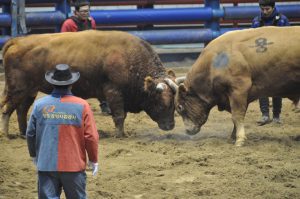
Korean Bullfighting & Persimmon Wine
Think bullfighting happens just in Spain? Think again. Korea has it's own version of this...

A Naked Christmas
Yes, I mean "naked" in the literal sense. No clothes. Nude. Au naturel. Call it...
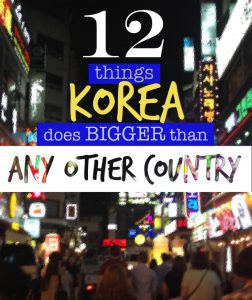
12 Things Korea Does Bigger Than Any Other Country
From super fast shipping to theme cafes, there are just some things that South Korea...
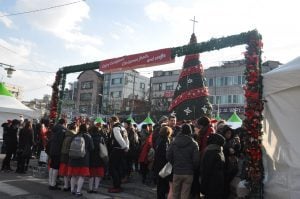
Seoul Christmas Markets & Craft Beer
One of my most magical holiday memories is visiting the Christmas markets in Austria. So...
EPIK Life Video Contest Winner
I am beyond excited and truly honored to share that I was chosen as the...
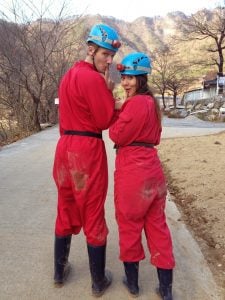
Adventure Korea: Caving & Bare-Handed Fishing
I have been craving one last weekend spent outdoors before it gets too cold to...
Korean Apartment Tour
When we finally opened the door to the place we would be calling "home" for...
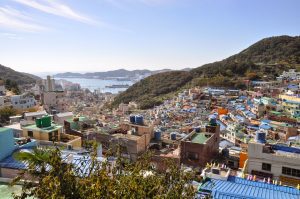
2 Days in Busan, Korea: Best Things To Do
Known for beaches, temples, markets and nightlife, Busan is well worth a stop during your...

Take Me Out to the (Korean) Ball Game
We’d heard from our co-teachers and friends that Korean baseball games are an experience not...
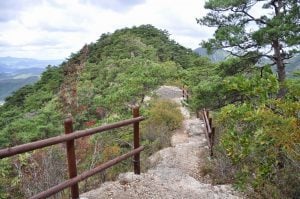
Camping… Korean Style
We’ve been extremely lucky to find a group of friends here in Korea that has...
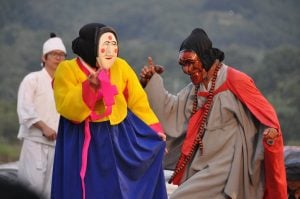
Andong Mask Dance Festival
It is rumored that in 1999, Queen Elizabeth asked to be taken to the “most...
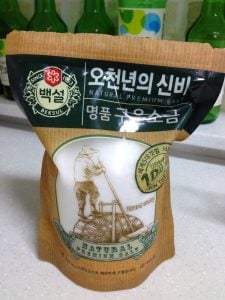
Korean Struggle
Though we are beginning to feel settled in, there are many parts of our daily...
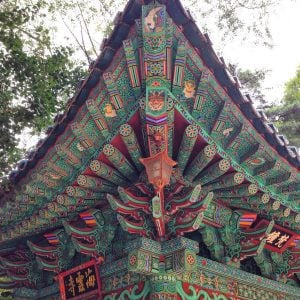
Korean Surprise!
One of the more insightful lecturers warned us about a phenomenon she amusingly referred to...

A lot of people have asked us, Why Korea? Our answer is complicated.

Save this page on Pinterest for later!
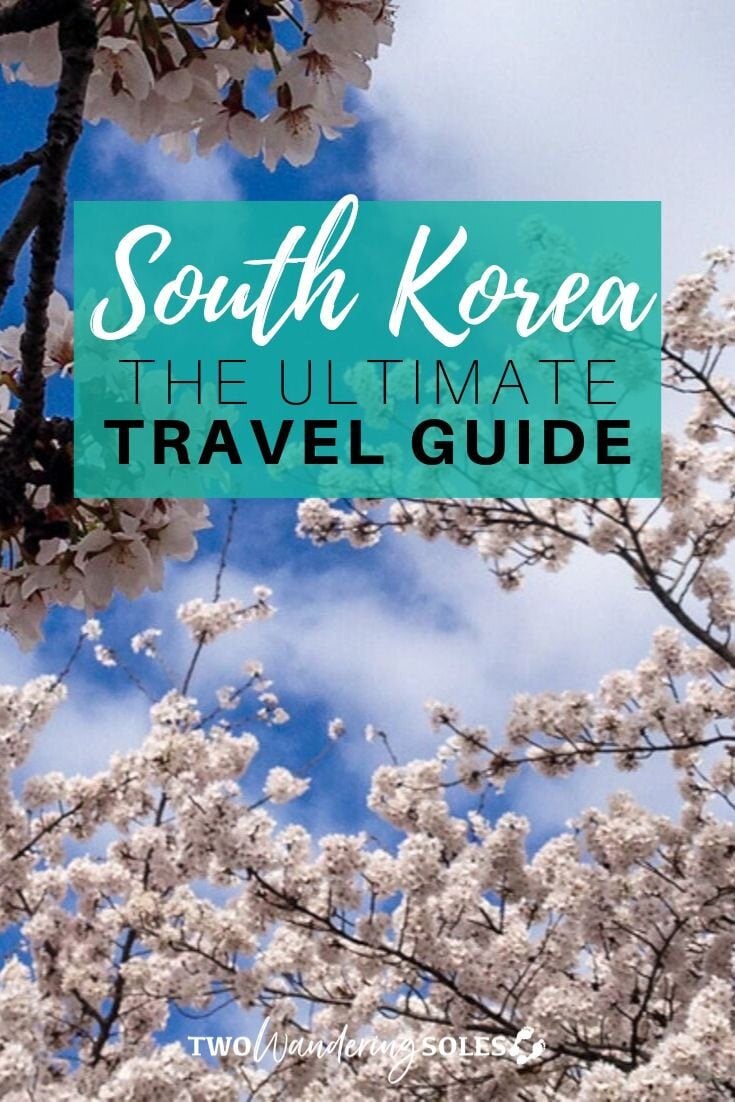
Book Your Trip Now

One Week in South Korea: The Ultimate Itinerary
There’s a lot more to South Korea than Seoul. Despite the country’s compact size (it’s roughly the same size as Indiana or Portugal), this vibrant East Asian nation is brimming with genteel Buddhist temples, mist-capped mountains, and buzzing cities. Although one could easily spend a week in Seoul alone, a seven-day itinerary encompassing the entire country is entirely doable, and will give you a thorough overview of Korea’s natural beauty and cultural treasures.
South Korea is well known for its vast and easy-to-use public transportation system; a seamless network of subways, trains, buses, flights, ferries, and (relatively inexpensive) taxis that can take you almost anywhere in the country. The backbone of north-south travel is the KTX, a high-speed train that can reach top speeds of 190 mph, and travels from Seoul to the southern port city of Busan in approximately three hours. Domestic flights are also offered to many larger cities around the country, and mainly depart from Seoul’s Gimpo International Airport; about 21 miles away from Incheon International Airport , the city’s main international hub, buses run every 15 to 25 minutes between the two airports, and cost 7,500 won.
For those who prefer autonomy, car rentals are possible but require an International Driving Permit in addition to a valid driver’s license issued in your home country. (FYI, an IDP must be obtained in the same country your driver’s license was issued in.) Another consideration before you get behind the wheel is that Korea’s main routes are toll roads, so plan accordingly.
Patrick Foto/Getty Images
Most foreign visitors to South Korea will arrive at Incheon International Airport just west of Seoul, making the capital a perfect starting point on your itinerary. Take either a limousine bus or the AREX Airport Express train to downtown Seoul to get your trip started. Once you’ve stashed your bags at one of the city’s numerous hotels, motels, or guesthouses, it’s time to hit the streets.
In the geographical center of Seoul lies Namsan Mountain, topped with the spindly N Seoul Tower . This futuristic landmark is visible from many areas of Seoul, and makes a good point of reference as you navigate your way around the capital. Starting your tour from the observation deck at the top of the tower will help you get your bearings on the layout of the sprawling city. Enjoy lunch at the tower’s rotating N Grill , a chic restaurant that offers customers 360-degree views of Seoul while they dine on fine French delicacies and wines.
Next, take a bus or subway to the 14 th -century Gyeongbokgung Palace , the largest of Seoul’s five royal palaces from the Joseon dynasty. The grand entrance gate is an impressive work of architecture guarded by traditionally clad performers who reenact historically accurate Royal Guard Changing Ceremonies daily.
To get a big picture perspective of the nation, a visit to the National Museum of Korea is in order. The majestic, striking building houses approximately 15,000 items dating from prehistory to the modern era, and is Korea’s largest and most impressive museum.
For more essential travel tips, including how to navigate the city's public transportation, where to stay, and what to pack, check out our complete guide to Seoul .
ericfoltz/Getty Images
History buffs, political aficionados, and curiosity lovers alike will revel in a bizarre day trip to one of the world’s most notorious borders. The Korean Demilitarized Zone (DMZ) is the 160-mile long border that divides the Korean Peninsula into the North and South, and lies only 31 miles from central Seoul.
Various tour options take visitors by bus from Seoul to the DMZ’s most popular sites, including the Bridge of Freedom, the 3rd Infiltration Tunnel, and Dora Observatory with views over North Korea. Plus, you can see the iconic blue buildings in the Joint Security Area, which is guarded by fierce-looking soldiers from both sides.
Many sights of the DMZ can also be reached via a special roundtrip “ Peace Train ” that departs from Seoul Station. Upon reaching Dorasan Station, the last stop before reaching North Korea, the tour continues via bus. (The DMZ Peace Train tour doesn’t include a visit to the Joint Security Area, which can only be accessed via specific tour companies, such as DMZ Tours .)
Bukhansan National Park
KR_nightview / Imazins/Getty Images
Seoul is one of the only cities in the world that has a national park within its borders. This easy access has made Bukhansan National Park a favorite among Seoulites, and has won a spot in the Guinness Book of World Records as having the highest number of visitors per square foot of any national park on the planet.
Filled with jagged rock formations, miles of hiking trails, and sweeping views of the capital, Bukhansan is well worth a day trip. Buses from Seoul Station take approximately 40 minutes to reach Bukhansan National Park Jeongneung Visitor Center, which lies just outside one of the park’s entrances.
Across from the visitor’s center is a 7-11, where you can pack your rucksack with hiking snacks like dried squid or kimbap (Korea’s version of sushi) before hitting the trails.
Aside from the natural beauty of the rock formations, 1,300 species of animal and plant life (the latter of which is especially lovely and photogenic during the colorful spring and fall seasons) and over 100 Buddhist temples can be found within Bukhansan’s borders. Hwagyesa Temple is renowned for its graceful 17 th -century architecture and its popular temple stay program, where visitors can learn what it’s like to live as a Buddhist monk.
Akanit Laveewan / EyeEm/Getty Images
Time to board the KTX train and head south to Daegu, South Korea’s fourth largest city.
Sports fans may recall that the city played host to the 2002 FIFA World Cup and the IAAF 2011 World Championships in Athletics, where superstars such as Usain Bolt and the now-infamous Oscar Pistorius wowed crowds.
Whether you’re a sports enthusiast or not, make your first stop a visit to Daegu Stadium . In addition to the stadium itself—which is surrounded by landscaped parks, mountains, and hiking trails—check out memorabilia at Daegu Sports Museum or stock up on K-Beauty products at Color Square , a shopping and entertainment complex.
Afterwards, take a cable car to the top of Palgong Mountain for lunch at a restaurant that may serve simple food, but features some of the best views of the city. Then hike down to Dongwhasa Temple and the famed Gatbawi Buddha, a 7 th- century stone statue that's said to grant one wish to each visitor who prays here.
Round out your day with a stop at Seomun Night Market , which features traditional and surprising street food from over 65 vendors, making it South Korea’s largest night market.
Insung Jeon/Getty Images
Catch an intercity bus for about 5,000 won, and an hour later you’ll find yourself in Gyeongju, the capital of Korea during the ancient Silla kingdom that reigned from 57 BC to 935 AD.
Marvel at the exquisite architectural details of Bulguksa Temple ; originally built in 528 BC, the current temple is a restored version since between then and now it was destroyed many times by fires, theft, and war. After your visit, hike to the nearby UNESCO World Heritage Site of Seokguram , a temple built inside a grotto of granite and graced with a carved seated Buddha.
Gyeongju National Museum is a must-see for insights into the Silla dynasty, and features numerous exhibits on culture and daily life of times past. But to get really up close and personal with history, head down the road to the Daereungwon Tomb Complex , where the otherworldly burial mounds conceal the underground chambers of ancient kings and queens.
Hop on a train or intercity bus to reach Busan in about 1.5 to two hours. As Korea’s second largest city and the country’s largest seaport, Busan is always bustling with things to do.
Start with a hot soak and a skin-tingling body scrub at Spa Land Centum City , a contemporary take on the traditional Korean bathhouse. There are 22 different indoor and outdoor spring water soaking pools of various temperatures, as well as 13 different types of saunas ranging from Finnish to Turkish.
No visit to Busan would be complete without a stroll along Haeundae Beach , South Korea’s equivalent to the world-famous Waikiki. The golden sand remains largely vacant in winter, but come summer it’s awash with bright beach towels and parasols. The street lining the shores houses a wide array of bars, restaurants, and hotels, as well as an aquarium and a coastline hiking trail.
Adventurous eaters can catch dinner at the Jalgachi Fish Market , Korea’s largest seafood market, which sells both live and dried fish. Options range from crab and abalone to the more exotic grilled eel and raw octopus.
Natthawut Utsawachaichot / 500px/Getty Images
The semi-tropical volcanic island of Jeju is 181 miles south of Busan, and while it merits a multiple-day visit of its own, a whirlwind tour can be done by the determined in just one.
After landing at Jeju International Airport (or taking an overnight ferry from Busan if you have more time), make use of the extremely efficient bus system that connects the most popular tourist sites.
Jeju’s most iconic destination is Seongsan IlchulBong Peak , a tuff cone crater that formed 100,000 years ago during a submarine volcanic eruption. Take a walk along the rim for some seriously sensational views of the sunrise and the surrounding sea and countryside.
Hike the network of trails through Hallasan National Park to the 6,397-foot Halla, a volcanic peak that’s the tallest mountain in South Korea. Home to 1,800 plants and 4,000 different species of animals and insects, this UNESCO World Heritage is known for its unique vertical ecosystem resulting from the varying temperatures at each elevation.
Another UNESCO site worth admiring is the Manjanggul Lava Tube . At 59 feet wide and 75 feet high, it’s one of the largest lava tubes in the world, and stretches nearly 5 miles into the subterranean darkness.
The Top 18 Things to Do in South Korea
Getting Around Busan: Guide to Public Transportation
The Top 10 Destinations in South Korea
The Top 15 Things to Do in Daegu
The 12 Best Day Trips From Seoul
The 9 Best Day Trips From Busan
Getting Around Seoul: Guide to Public Transportation
The 12 Best National Parks in South Korea
The Top 12 Things to Do in Busan, South Korea
One Week in Argentina: The Ultimate Itinerary
Where to Go in 2022: The Most Exciting Destinations to Explore This Year
One Week in France: The Ultimate Itinerary
Bukhansan National Park: The Complete Guide
The Top 7 Temples in Busan
Seoul Guide: Planning Your Trip
The Best Time to Visit South Korea
Nomadic Matt's Travel Site
Travel Better, Cheaper, Longer
South Korea Travel Guide
Last Updated: July 17, 2023
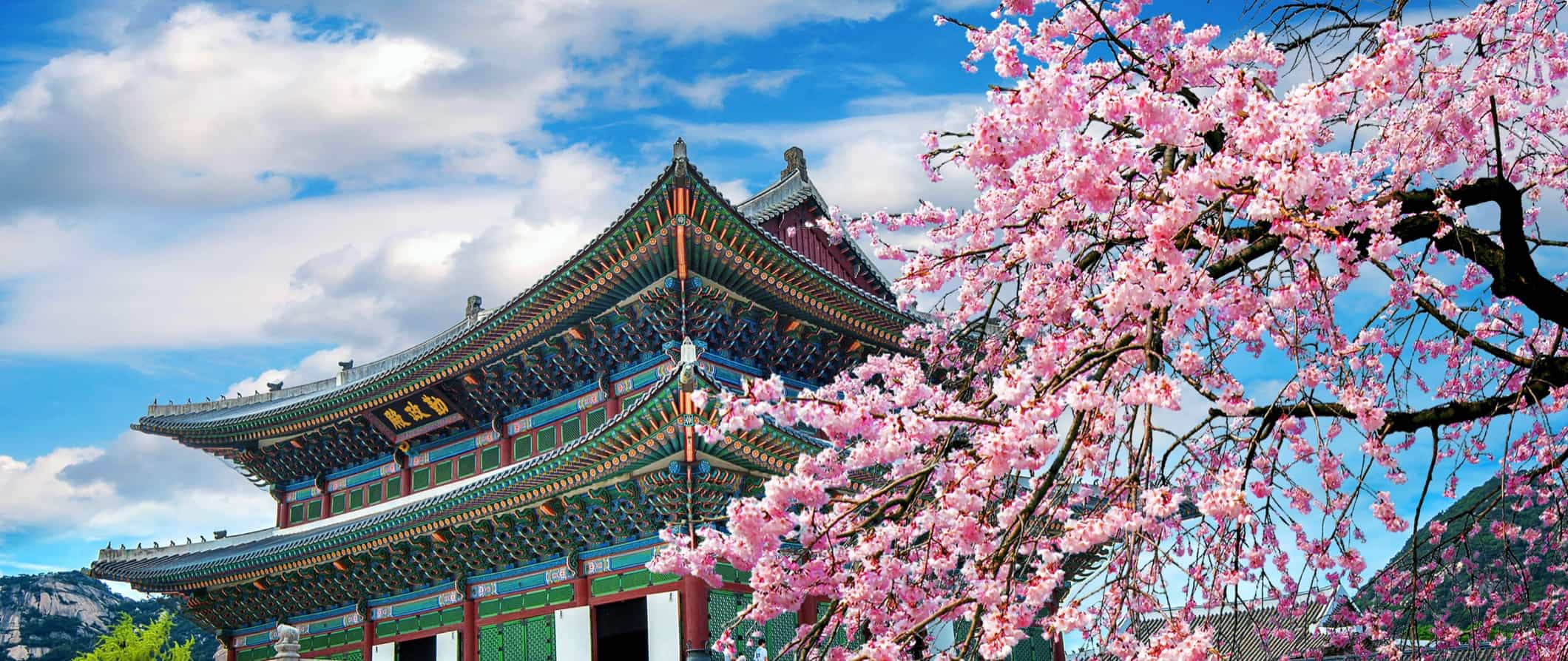
Though South Korea is small (about the size of the US state of Indiana), it punches well above its weight in terms of things to see and do. Boasting a vibrant culture, incredible history, natural beauty, delicious food, and a wild nightlife, it’s home to both major cities and untouched nature, offering something for every traveler.
Seoul, the capital city and fourth-largest metropolitan area in the world (over half the country’s population of 50 million is concentrated here), is a lively hub for food lovers and partying. But while it gets all the attention, there is much more to explore, including 22 national parks, lush Jeju Island, and the infamous Demilitarized Zone (DMZ) bordering North Korea.
Best of all, since South Korea is a manageable size, you can see a good portion of it in a limited amount of time. The transportation here is modern, clean, and efficient, so it’s easy to get around quickly.
The country is also a foodie’s paradise, with cheap street food and delicious dishes like bibimbap, kimchi, and the famed Korean barbecue.
It’s one of my favorite countries in the world and one that I think is super under the radar and often overlooked by travelers. You never see the tourist crowds found in other Asian countries.
This travel guide to South Korea can help you plan your trip, save money, and make the most of your visit.
Table of Contents
- Things to See and Do
- Typical Costs
- Suggested Budget
- Money-Saving Tips
- Where to Stay
- How to Get Around
- How to Stay Safe
- Best Places to Book Your Trip
- Related Blogs on South Korea
Top 5 Things to See and Do in South Korea
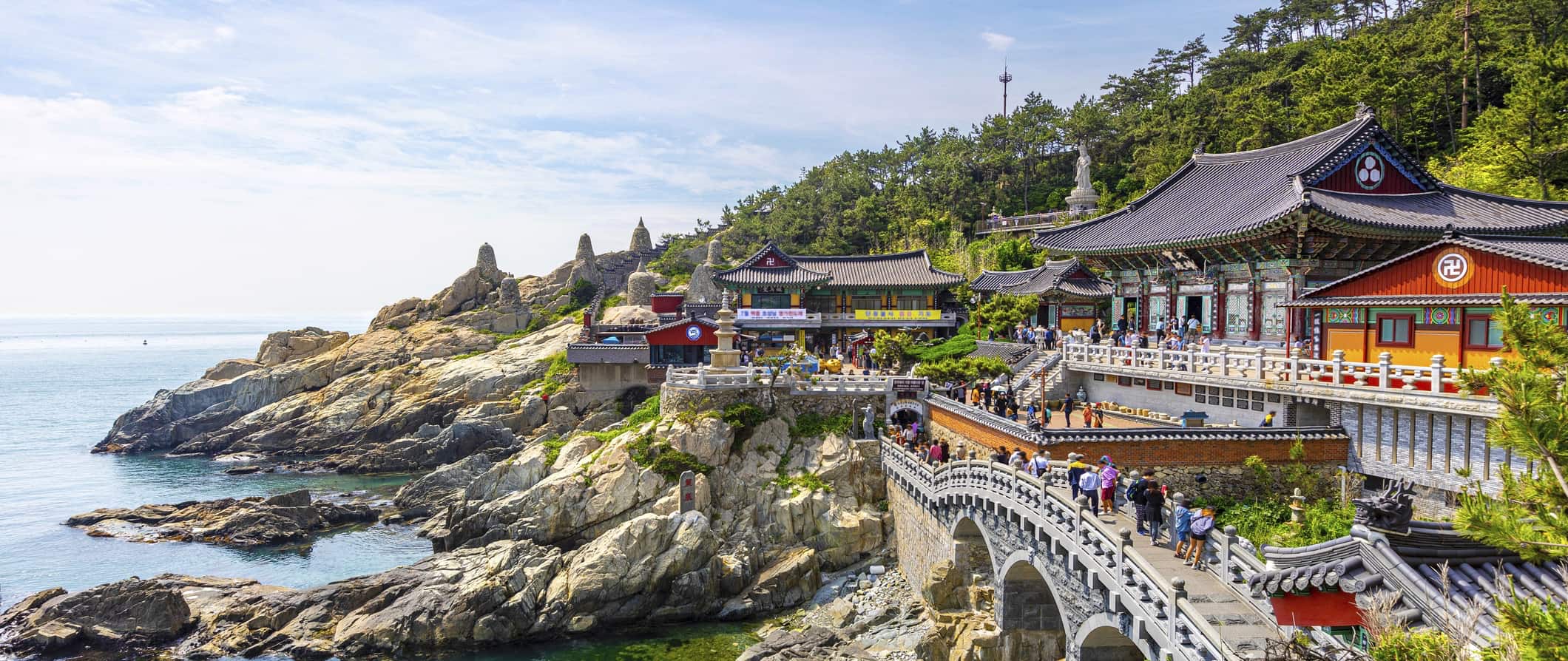
1. Explore Seoul
Korea’s capital has a little bit of everything. It’s a bustling metropolis and global technology hub, with sleek and modern neighborhoods like Gangnam and iconic sights like the Lotte World Tower, the sixth-tallest building in the world. Yet there is a lot of history here too, including many museums, palaces, and temples, among them five UNESCO World Heritage Sites. When you’re done exploring for the day, Seoul has a robust street food scene, countless trendy restaurants, and fast-paced, soju-driven nightlife. You could easily spend weeks here and never get bored.
2. Tour the DMZ
The Demilitarized Zone (DMZ) separates North and South Korea and, despite the name, is the most militarized border in the world. You can only visit the Joint Security Area (JSA), which has military personnel from both sides, on a guided tour, but it’s a unique experience and an important way to learn about this ongoing conflict (the war started in 1950 and has not officially ended). On the tour, you’ll be able to actually stand in North Korea, visit the Third Tunnel of Aggression (which North Korea dug to sneak soldiers across the border), see the Freedom Bridge, and catch glimpses of North Korea from the Unification Observatory. Guided tours of the DMZ start from 80,000 KRW.
3. Visit Jeju Island
This volcanic, semitropical island is a popular domestic vacation spot. It’s accessible via cheap daily flights from Seoul that take just one hour. Known as “the Hawaii of Korea,” it’s a natural paradise, home to the tallest mountain in Korea (Mount Hallasan), lava tubes, beautiful beaches, and countless hiking and walking trails. Other attractions include visiting mythic Jeju Stone Park, wandering the Yeomiji Botanical Gardens, and watching the haenyeo divers — women who dive without any protective equipment to gather underwater treasures like shellfish and seaweed, which they then sell on the beaches. You can visit the Jeju Haenyeo Museum as well to learn more about this cultural practice that dates back centuries.
4. Sing karaoke
Known as noraebang , this is a cultural phenomenon and something worth experiencing at least once while visiting Korea. While the karaoke machine was originally invented in Japan, Koreans have adopted the pastime and made it their own. Here, you rent out a private room with a group of friends (instead of singing in a public bar, as is often the case in Western countries). Pricing is determined by the hour, with rates varying wildly depending on the number of people, time of day, day of the week, and whether snacks and drinks are included. Average group karaoke rates range from 5,000 to 15,000 KRW.
5. Step back in time at a hanok village
Other things to see and do in south korea, 1. visit changdeokgung palace.
One of the Joseon dynasty’s Five Grand Palaces, this 15th-century complex in Seoul was built in harmony with the natural environment at the foot of Bugaksan Mountain. Changdeokgung, or “Palace of Prospering Virtue,” was the main royal residence for 13 kings over the course of three centuries. The complex sprawls over 110 acres, 60% of which is taken up by the beautiful Huwon Secret Garden, home to over a hundred species of trees, flowers, and other plants (some of the trees here are over 300 years old!). The main draw is wandering around the exterior, with its restored buildings and gates, though you can also go inside Injeongjeon Hall, the palace’s throne room. Admission to the complex is 3,000 KRW; the Secret Garden is an additional 5,000 KRW. There are guided tours in English as well.
2. Explore Busan
Korea’s second-largest city is located just two hours from Seoul on the KTX high-speed bullet train. A coastal city, Busan boasts great beaches, such as Haeundae Beach, with its miles of sand, and Gwangalli Beach, known for its sunsets. Gamcheon Culture Village, the “mural village of Korea,” is a hillside neighborhood rich in street art and covered in murals, and nearly all the houses are painted bright colors. It’s a great place to wander around for a few hours, popping into the unique shops, cafés, and restaurants.
3. See the National Museum of Korea
If you visit only one museum in Korea, make it this one. Located in Seoul, it covers all aspects of Korean culture, art, and history, from prehistory to the early modern era. It also contains many national treasures and artifacts that have been designated as having special importance and value in Korean culture and history. Some of the most important ones include the sixth-century inscribed Bukhansan Monument, detailing military expansions; sixth-century gilt-bronze Buddhist statues; and the 10-story Gyeongcheonsa Pagoda, which dates to the 14th century. Don’t miss the exterior gardens, which feature indigenous plants, reflecting pools, and traditional Korean sculptures and lanterns. Admission to the main exhibitions and children’s museum is free.
4. Take a food tour
As a foodie, learning about a culture through its food is one of my favorite things to do while traveling. Korea has an incredible variety of amazing dishes to try, as well as a bustling (and delicious) street food scene. Taking a food tour with an experienced guide is one of the best ways to gain a deeper understanding of Korean cuisine. O’ngo Food offers a variety of tours in Seoul, Busan, Jeonju, and Jeju, with prices starting from 70,000 KRW per person.
5. Visit Gyeongbokgung Palace
Originally built in the 14th century by the kings of the Joseon dynasty, this palace in Seoul served as the seat of the government for two hundred years until it was destroyed by a fire and abandoned for centuries. Since the 19th century (and still today), it has been undergoing renovations to restore the complex to its former glory. It is considered the most stunning of all five royal palaces in Seoul, featuring grand gates, open courtyards, and terracotta-topped buildings set against the backdrop of Mount Bugak. In addition to wandering through the complex, you can also go into the many administrative halls and residential chambers set up to resemble the palace’s heyday. You can watch the changing-of-the-guard ceremony as well, every day except Monday. The National Palace Museum and the National Folk Museum are also located in the complex. Admission is 3,000 KRW.
6. See the cherry blossoms
While cherry blossoms are often associated with Japan, festivities surrounding the blooms are incredibly popular in Korea as well. Here, the season runs from late March to late April, with many festivals throughout the country. Just be prepared for crowds at the more popular ones, like the Yeouido Cherry Blossom Festival in Seoul.
7. Try taekwondo
Korean’s native martial art, taekwondo, is characterized by high kicks and punches and, like all such disciplines, emphasizes mental training. An Olympic event since 2000, taekwondo has only grown in popularity in recent years and is a point of pride in Korean culture. Kang’s Global Taekwondo in Seoul offers classes to adults and foreigners that cost around 43,000 KRW for one hour.
8. Learn to cook classic Korean foods
If you’d like to take your knowledge of Korean food one step further, take a cooking class, where you’ll learn to prepare classics like bibimbap, kimchi, bulgogi, and Korean pancakes. Hello K Cooking in Seoul offers a class where you’ll learn how to cook three main dishes and one stew — recipes and skills that you can bring home with you. Classes are 107,000 KRW.
9. Go hiking
Korea is an incredibly mountainous country, so hiking is a favorite pastime for locals. Be sure to immerse yourself in nature while visiting this lush land. There are even hiking spots near the bigger cities if you don’t have enough time or don’t want to venture too far afield. Bukhansan National Park, just outside Seoul, is a popular place to go hiking, offering panoramic views over the capital (expect crowds due to its proximity to the city, though). Yet with 22 national parks spread across the country, there are plenty of opportunities to escape the crowds (including lots of guided hikes if you don’t want to organize one yourself). For a multiday hike, the Jirisan Ridge Trek in Jirisan National Park is one of the most famous — a four-day walk from mountain shelter to mountain shelter.
10. Wander around Seoul Olympic Park
In 1988, Seoul hosted the Summer Olympics, which was only the second time the summer games had been held in Asia (the first was in Tokyo in 1964). Today, you can visit the massive park where the games were staged, and while Olympic Park does have many sports facilities, there’s much more to explore here as well. The park is divided into four sections, focusing on the arts, history, nature, and sports. In the arts section, you’ll find the SOMA Museum of Art and a park with over 200 sculptures, while in the history section, you can see the third-century defensive Mongchontoseong Earthen Fortifications, excavated dugout huts and storage pits left in the state in which they were uncovered. You can easily spend an entire afternoon here. Admission to the park is free.
11. Discover Jirisan National Park
Located in the southern part of the country (Namwon is the nearest city), this park is named after Jirisan (Mt. Jiri for short), the tallest mountain on mainland Korea. As it’s South Korea’s first national park (as well as its largest), hiking trails and cultural sites abound. You can visit seven major Buddhist temples and see several of Korea’s national treasures of ancient carved stonework from the seventh to the tenth centuries. One of the most important sites here is Samseonggung, or Three Sages Palace, a mountainside shrine dedicated to the legendary founders of Korea. Admission to the park is 1,600 KRW.
South Korea Travel Costs
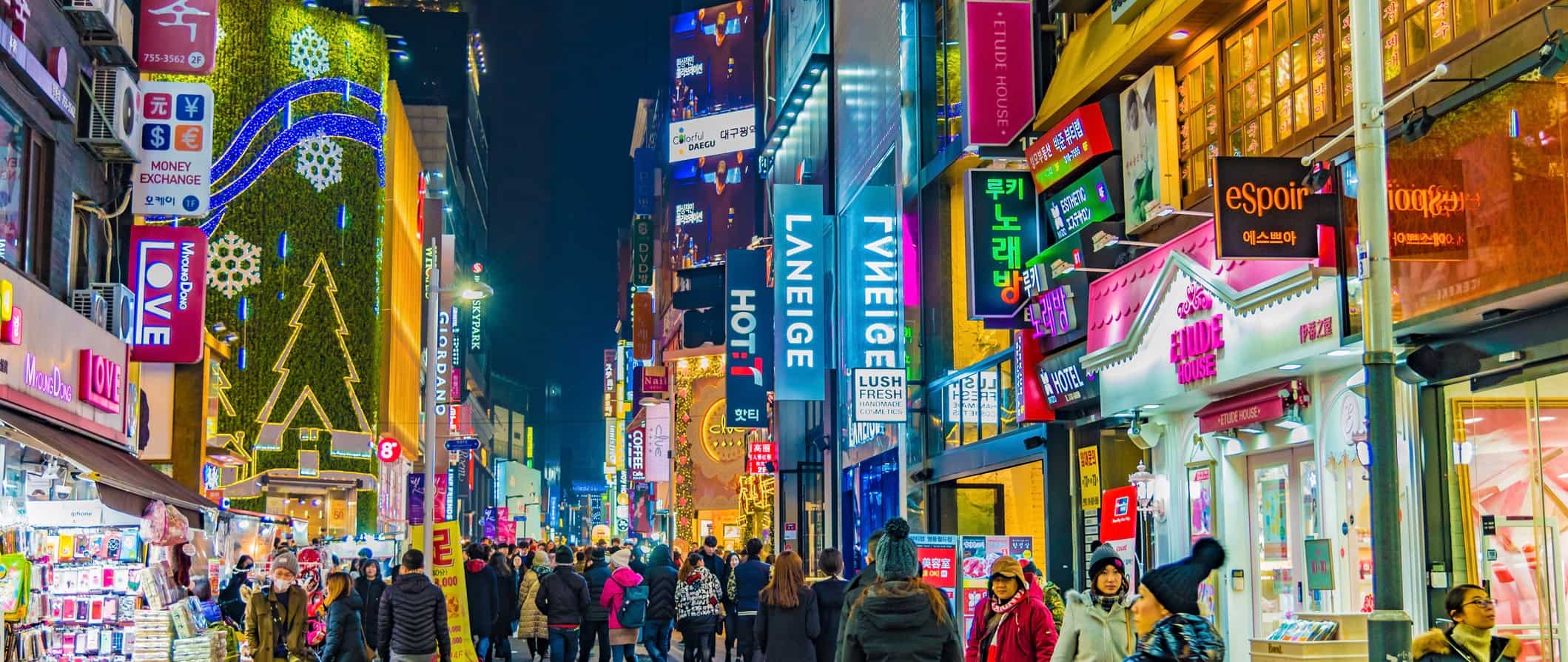
Cheap hotel rooms start at 28,000 KRW for a room that sleeps one, while a double room generally costs at least 40,000 KRW. Expect basic amenities like Wi-Fi, a TV, air conditioning, and an electric teapot. Breakfast is usually not included at budget hotels.
Airbnb is available around the country, with private rooms starting at 25,000-30,000 KRW. For an entire home or apartment, expect to pay at least 50,000-70,000 KRW per night.
While wild camping is illegal in Korea, there are plenty of campgrounds should you want to pitch a tent. Expect to pay 7,000-20,000 KRW for a plot with access to bathroom and shower facilities, and usually even Wi-Fi.
Food – Korean cuisine has developed its own traditions and flavors over the centuries, with a unique emphasis on using uncooked, fermented, and pickled vegetables. Traditional Korean meals are often composed of a variety of side dishes, eaten with short-grain rice. A meal isn’t considered complete unless there’s kimchi on the table.
Common dishes include bulgogi (marinated, grilled beef), samgye-tang (chicken and ginseng soup), bibimbap (a mixed rice bowl), chap chae (a glass noodle dish), and many other noodle and rice dishes. Popular street foods include hotteok (a sweet, filled pancake), tteokbokki (spicy cylindrical rice cakes), and bungeo-ppang (a fish-shaped pastry filled with red bean paste).
Dining out in South Korea is relatively inexpensive. A meal at a casual restaurant serving traditional Korean food is around 9,000-15,000 KRW, while a three-course meal at a mid-range restaurant is around 25,000-30,000 KRW. Expect higher prices in larger cities.
Western food is more expensive. Expect to pay at least 20,000 KRW for a pasta dish at an Italian restaurant.
In terms of fast food, a combo meal (think McDonald’s) is around 7,000 KRW, while a burger is around 4,500 KRW. A typical Korean street food dish is 1,500-3,000 KRW.
A pint of beer is 4,000-5,000 KRW, a glass of wine is 6,000 KRW and up, and a cocktail is 7,000 KRW and up. A latte or cappuccino is 5,000 KRW.
If you cook your own food, expect to pay 50,000-70,000 KRW per week for basic staples like rice, pasta, vegetables, and some meat. Shopping at local markets is the best way to get great fresh produce for cheap.
Backpacking South Korea: Suggested Budgets
On a backpacking budget of 75,000 KRW per day, you can stay in a hostel dorm, cook all your meals, use public transportation and intercity buses to get around, skip the alcohol, and do mostly free activities like walking tours and hiking.
On a mid-range budget of 135,000 KRW per day, you can stay in a private Airbnb or cheap hotel, eat out for most meals at casual restaurants, enjoy a few drinks, take the occasional taxi as well as trains between cities, and do more paid activities like museum visits and food tours.
On a “luxury” budget of 255,000 KRW or more per day, you can stay in a nicer hotel or entire Airbnb apartment, eat out pretty much anywhere you want, drink at the bar, get a high-speed rail pass, and do as many guided tours and activities as you want. This is just the ground floor for luxury, though. The sky is the limit!
You can use the chart below to get an idea of how much you need to budget daily. Keep in mind these are daily averages — some days you’ll spend more, some days less (you might spend less every day). We just want to give you a general idea of how to make your budget. Prices are in KRW.
South Korea Travel Guide: Money-Saving Tips
I find South Korea to be one of the best value countries out there. It’s a really affordable place to visit. Accommodation can add up but food and drinks are generally cheap. Here are some ways to save money when you travel around South Korea:
- Visit the free attractions – With countless museums, shrines, temples, historic neighborhoods, and parks, Korea is filled with opportunities to become immersed in its culture. Many of the nation’s museums and cultural attractions are free, so don’t pass them up!
- Purchase a KORAIL Pass – If you want to travel by train, getting a rail pass is the most economical way to do so. You’ll get unlimited train travel for the time period you choose (2-5-day increments). Prices start at 121,000 KRW.
- Get a transit pass – Most major cities in Korea offer a day pass for public transit, which means great savings if you plan to hop around using buses and subways. Seoul’s day pass costs 15,000 KRW, though the longer you stay, the more you’ll save (a seven-day pass is 64,500 KRW).
- Buy a city pass – If you plan on visiting a lot of attractions, buy a city pass . Seoul and Busan both offer ones that include admission to popular sights, a transit pass, and discounts to restaurants and other attractions. A one-day pass starts at 33,000 KRW.
- Eat from the convenience stores – Convenience stores in Korea offer not only snacks and drinks but prepared boxed meals and cheap alcohol. If you’re on a tight budget, shop in those.
- Take the bus – While the trains are fun, the cheapest way to get around Korea is by bus. They take longer but are much cheaper, so if you have the time, opt for long-distance buses. Just show up at the bus station to reserve your tickets in advance, as most websites and apps are in Korean.
- Stay with a local – Couchsurfing lets you stay with a local for free, cutting your accommodation costs drastically. You’ll get to spend time with someone who can share their tips and advice in exchange for your own travel stories and culture. You can also use the app to meet people for activities (coffee, museum visits, etc.) if you don’t feel comfortable staying with a stranger.
- Drink like the locals – Soju, the national alcohol of Korea, is incredibly cheap, as is domestic beer. Just be careful to not let it sneak up on you — both monetarily and physically. Korea’s drinking culture is infamous!
- Stay in capsule hotels – If you don’t want to Couchsurf or stay in hostels but still want to save money, capsule or pod hotels are great options. These offer just what you need to sleep (a small, basic pod) yet can be surprisingly comfy and much more affordable than a traditional hotel. Prices start as low as 45,000 KRW per night.
- Bring a water bottle – The tap water here is safe to drink, so bring a reusable water bottle to save money and reduce your plastic use. LifeStraw is my go-to brand, as its bottles have built-in filters to ensure that your water is always clean and safe.
Where to Stay in South Korea
South Korea has plenty of budget-friendly hostels and guesthouses. Here are some of my recommended places to stay when you visit:
- Time Travelers Relax Guesthouse (Seoul)
- Zzzip Guesthouse (Seoul)
- Time Travelers party Hostel (Seoul)
- INSIDE Busan (Busan)
- Jeju Hiking Inn (Jeju)
- Backpacker’s Home (Jeju)
How to Get Around South Korea
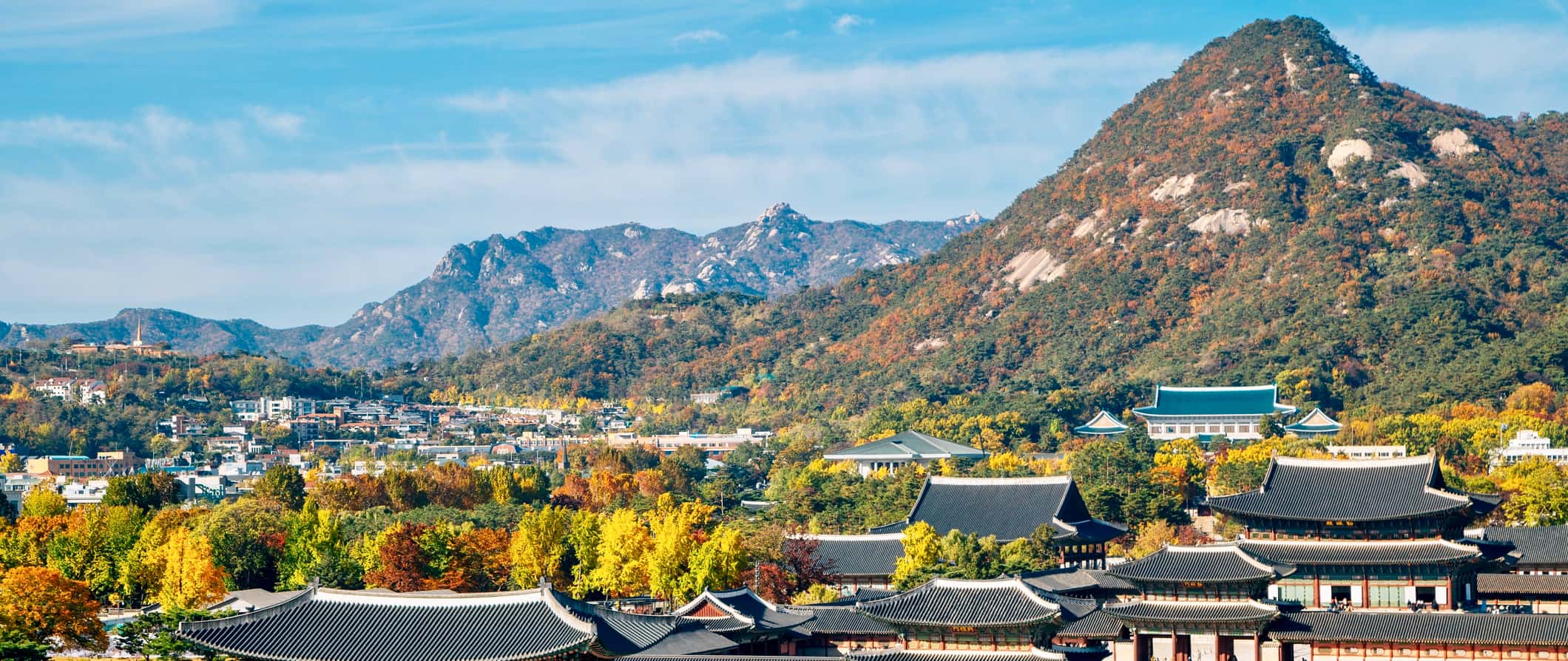
Bus – Taking a long-distance bus is the cheapest and most popular way to get around the country. There are two types: express (which makes few to no stops) and intercity (which travels between smaller destinations and makes more stops).
Your best bet for reserving tickets in advance is to go directly to the bus terminal, as most bus websites and booking apps are in Korean and only accept Korean credit or debit cards.
Pricing depends on what class ticket you choose: standard, luxury, or premium. The four-hour bus ride from Seoul to Busan costs around 36,000 KRW for a standard ticket, Incheon to Busan takes just over four hours and costs 38,000 KRW, and Seoul to Daegu is 29,000 KRW and takes just under four hours.
Train – South Korea has a robust train system that can take you all over the country. Korean Train Express (KTX) is the country’s bullet train, regularly running at speeds up to 305 kilometers (190 miles) per hour. However, these only go between major cities, have limited schedules, and are more expensive, so KTX may not always be the most convenient choice.
KORAIL (the national railway service) operates slower-speed, intercity trains that offer a wider range of schedules and destination choices. You can also get the unlimited KORAIL Pass, which is offered exclusively to international tourists. A two-day adult pass is 121,000 KRW; a five-day adult pass is 210,000 KRW.
As a comparison of the two train types: the journey from Seoul to Busan on a KRX train costs around 90,000 KRW and takes 2.5 hours, while on a regular intercity train, it takes 5.5 hours and costs 47,500 KRW.
The further out you book, the cheaper KTX train prices get, while intercity prices stay about the same. You can book up to a year in advance.
Flying – South Korea is so small that flying around the country doesn’t really make sense. Trains can get you anywhere pretty quickly. However, if you’re very pressed for time and have cash to burn, there are a few budget airlines offering domestic flights between major cities. Most are around one hour long.
The flight from Seoul to Busan is around 30,500 KRW, Seoul to Jeju is 55,000 KRW, and Busan to Jeju is 22,000 KRW. However, you can find flights even cheaper when you book further in advance.
Low-cost airlines in South Korea include the following:
Car rental – Renting a car isn’t incredibly cheap in South Korea. However, it is one of the best ways to explore all the natural wonders that the country has to offer, many of which are inaccessible by public transportation. Expect to pay around 50,000-55,000 KRW per day on a multiday rental. Drivers need to be at least 21 years old.
When to Go to South Korea
Generally, the best times to visit South Korea are March-May and September-November. During these periods, the weather is mild, with temperatures of 10-24°C (50-75°F); prices for accommodation and transportation are lower; and there are fewer crowds.
In the spring, the cherry blossoms are in bloom all over the country, while the fall brings the beautiful colors of the changing leaves. Also, if you plan on doing a lot of hiking, the fall is the best time to visit.
The summer starts with monsoon season, from June through mid-July, and the rest of the summer is hot and humid in the cities (though it cools down in the mountains and along the coasts). Prices for accommodation are also very high during this time.
Winters in South Korea get very cold, with temperatures dipping as low as -6°C (21°F), so unless you plan on skiing, visiting from December through February might not be the best option (though the temples and landscapes look beautiful covered in snow).
How to Stay Safe in South Korea
South Korea is an incredibly safe place to backpack and travel around. Petty crime is rare here, though it never hurts to be cautious on public transportation and around popular tourist landmarks. Always keep your wallet and valuables secure and out of reach, just in case. Violent crime is even more rare.
Solo female travelers should feel safe here. However, the standard safety precautions apply as always. For specific tips, consult one of the many solo female travel blogs on the web.
While scams are super rare in South Korea, to avoid getting ripped off, you can check out this list of common travel scams to avoid .
When hiking, always bring water and sunscreen. Be sure to check the weather before you depart and dress accordingly.
Earthquakes occur regularly in the region, so it’s best to be prepared and download the Emergency Ready app, which the Korean government developed to provide information in English to foreign residents and tourists. It has all kinds of advice and tips for natural disasters, shows you where nearby emergency shelters are, and sends out warnings and notifications should a disaster occur.
If you do experience an emergency, dial 112 for assistance.
Always trust your gut instinct. Make copies of your personal documents, including your passport and ID, and forward your itinerary along to loved ones so they’ll know where you are.
South Korea Travel Guide: The Best Booking Resources
These are my favorite companies to use when I travel. They consistently have the best deals, offer world-class customer service and great value, and overall, are better than their competitors. They are the companies I use the most and are always the starting point in my search for travel deals.
- Skyscanner – Skyscanner is my favorite flight search engine. They search small websites and budget airlines that larger search sites tend to miss. They are hands down the number one place to start.
- Hostelworld – This is the best hostel accommodation site out there with the largest inventory, best search interface, and widest availability.
- Booking.com – The best all around booking site that constantly provides the cheapest and lowest rates. They have the widest selection of budget accommodation. In all my tests, they’ve always had the cheapest rates out of all the booking websites.
- Get Your Guide – Get Your Guide is a huge online marketplace for tours and excursions. They have tons of tour options available in cities all around the world, including everything from cooking classes, walking tours, street art lessons, and more!
- SafetyWing – Safety Wing offers convenient and affordable plans tailored to digital nomads and long-term travelers. They have cheap monthly plans, great customer service, and an easy-to-use claims process that makes it perfect for those on the road.
- LifeStraw – My go-to company for reusable water bottles with built-in filters so you can ensure your drinking water is always clean and safe.
- Unbound Merino – They make lightweight, durable, easy-to-clean travel clothing.
- Top Travel Credit Cards – Points are the best way to cut down travel expenses. Here’s my favorite point earning credit cards so you can get free travel!
South Korea Travel Guide: Related Articles
Want more info? Check out all the articles I’ve written on Asia travel and continue planning your trip:
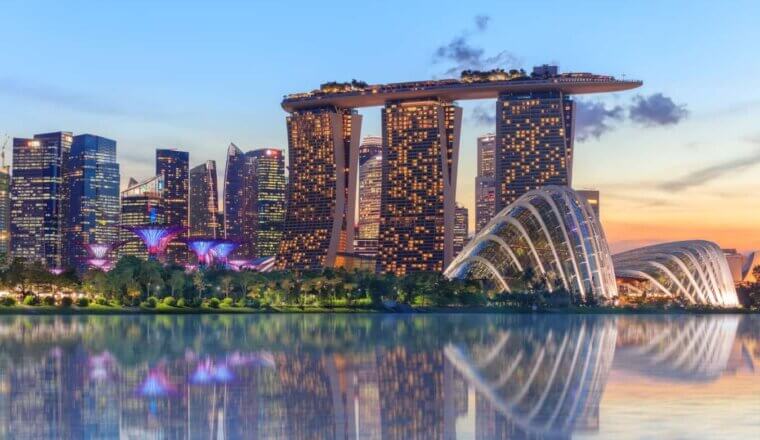
The 5 Best Hotels in Singapore
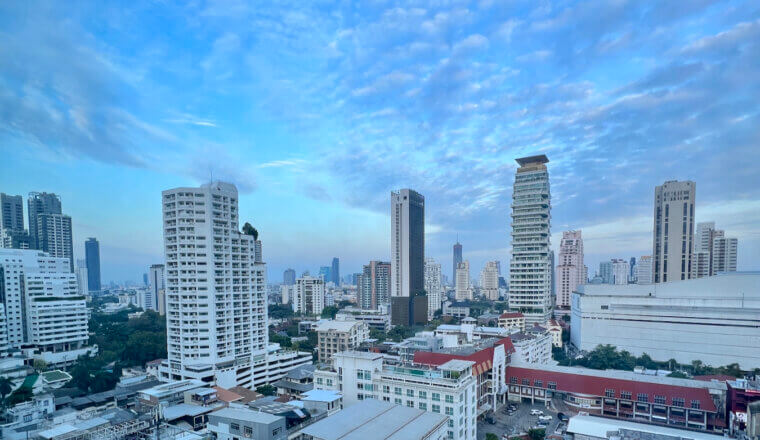
The 7 Best Hotels in Bangkok

The 4 Best Hostels in Singapore
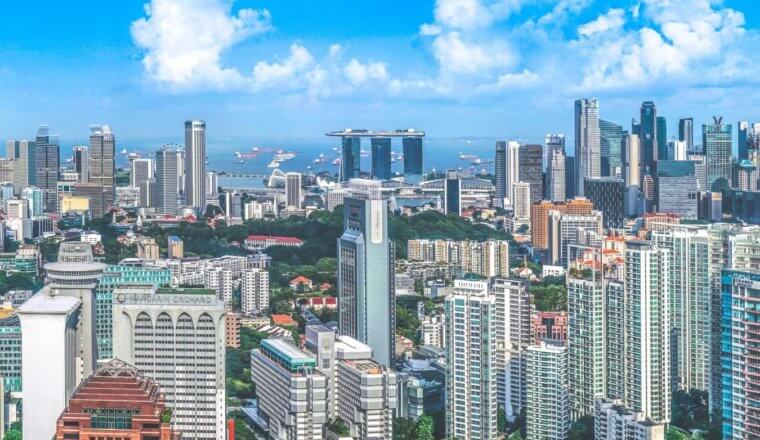
Where to Stay in Singapore: The Best Neighborhoods for Your Visit
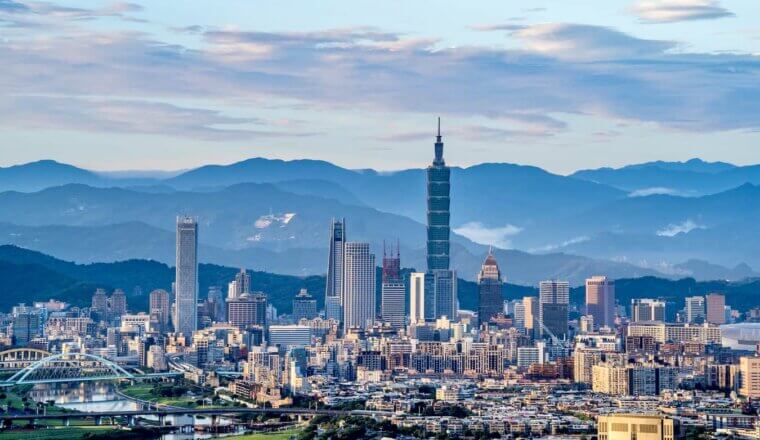
The 13 Best Things to See and Do in Taipei
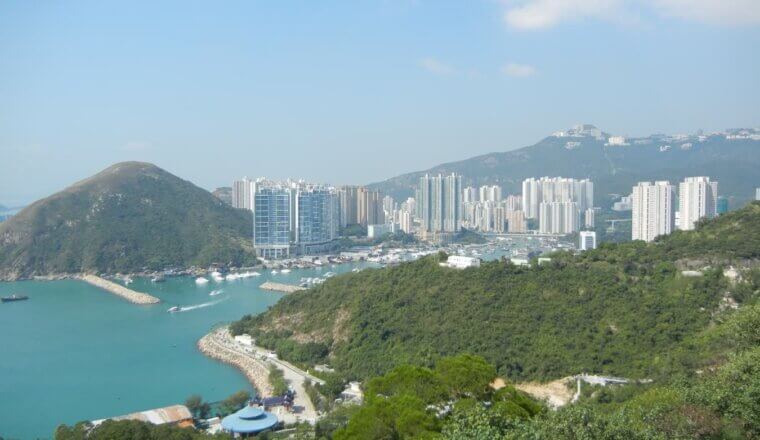
The 23 Best Things to Do in Hong Kong
Get my best stuff sent straight to you, pin it on pinterest.
- Where To Stay
- Transportation
- Booking Resources
- Related Blogs
APRIL SALE Extended: Book now for up to 60% off!
South Korea Tour Companies
Looking for an unforgettable South Korea tour? Book a fully-organized trip with the best tour companies in South Korea and let the tour operator take care of everything for you. Check out the tour details and read 63167 reviews from our customers to help you choose the perfect tour for you.
List of South Korea travel companies & tour operators with 63167 reviews

G Adventures
- Excellent - 19,111 reviews for South Korea tours
Michael, our tour guide, was patient, friendly, and flexible with different age travelers and physical abilities by adjusting the activities for them. The Best of Korea tour's itinerary was very full. I think many of us enjoyed the itinerary and the experiences we had. I, particularly, enjoyed the various transportation methods which added to the experience. The War Memorial Hall of Korea museum is a big museum and had very important history. Most of us needed more time. I think this activity could of come at the beginning of the tour for us to have better knowledge of Korean history. On the tour's last day, after the museum, most of us thought there was going to be a group dinner. The tours I have been in the past had end of the tour dinner to say good bye and show our appreciation to the tour guide. It's nice to have a closure after spending a week together. We were disappointed that the day just ended after returning to the hotel. After the DMZ visit, we had a very nice lunch at a well known restaurant. This time could of have been a good opportunity to say good bye but I think due to limited time, food came out late, we didn't linger.
Our tour guide Tommy Lee was awesome—highly recommended!!

Scenic Luxury Cruises & Tou…
- Excellent - 35 reviews for South Korea tours
- This operator has no South Korea reviews

HanaTour ITC
- Excellent - 170 reviews for South Korea tours
Our tour guide Jay made sure we were never hungry (and the food was great too)! (๑˃̵ᴗ˂̵) a great tour that gives you a general overview of the whole country, with a nice mix of cultural landmarks and tourist-y spots, as well as some unique experiences off the beaten path like paper making. My personal favorite was the Hahoe Mask Theatre performance. We usually arrived at the hotel with enough time to go out at night and get a taste of the night life for each city, if that's your thing. Some days are heavier on walking than other days, so be sure to check the itinerary and plan accordingly. Overall great tour, i really recommend!
I took the tour trip with Jay. He was a wonderful host and guide. He is a very passionate and enthusiastic. And the food was amazing!

Europamundo
- Good - 3,018 reviews for South Korea tours
Wasting so much time for bilingual translations for the last 2 weeks. Tour guides and busses keep changes every 2-3 days with no reason even all buses goes the same direction. Not sure about Spanish side, but English was awful from all 4 guides we had throughout those 2 weeks. You better pick other companies who would provide a single bus with a single tour guide and ONLY with your language. You’re getting what you're paying for, 100%.
Horrible, tour guide doesnt even speak proper english, never again!

The Dragon Trip
- Excellent - 319 reviews for South Korea tours
It was a great itinerary that let us catch quite a few of the highlights of South Korea and Japan. The tour takes us to more of the significant destinations in each country than other comparable tours. We had the opportunity to do some fun add-ons like taking a K-pop class, doing an overnight at a temple, and having a calligraphy class. I loved that it was an active tour, so we got to do some hikes in the mountains as well as cycling. Specific items are included as part of the tour, but the tour also gives you a lot of free time where you can choose your own adventure. The advantage is that you can have the experience you want. The disadvantage for me is that I had to spend a lot more time than expected researching what there was to do in an area and how to fit it all together. It is a budget tour, so expect to spend a lot more on food and your free time activities that are over and above the base tour price. This tour is not an educational tour - I didn't learn as much from the tour as I would have liked. The tour uses hostels - getting a good night's sleep can be difficult. I opted for an upgrade to a single room and am really glad I did so. The rooms were all perfectly adequate. Dragon Trips administrative team was very responsive and organized. I had two tour guides - I really liked one and didn't think the other one did a great job. That can affect the experience of the tour. Overall, I give the tour a thumbs up and would recommend them.
If you are looking to travel South Korea on a budget, this tour is ideal. You will get to experience a wide variety of South Korea’s secrets. The tour takes care of all travel and accommodation arrangements and provides plenty of meal and socialising recommendations for you and your tour group. I would especially recommend the tour for group activities, whether it is dressing up in traditional clothes or taking a K-pop dance class, having a large group makes the experience so much better. Aaron, thank you for a fabulous experience!

Intrepid Travel
- Excellent - 11,712 reviews for South Korea tours
Fantastic introduction to Korean food and culture. This trip had a great mix of walking, eating and chillin. If you’re an expert in Korean food, this may not be the best tour since it’s an intro with slightly more western tastes in mind, but we did try exotic things like murder hornet soju! Haha everything was good and the group was awesome. Everyone got along well, and the guide Michelle made the tour go very smoothly. Some days were >20k steps so def being comfortable walking shoes. One thing to remember is that the dmz visit is not a part of the tour, and in general the dmz is not available on Mondays… so if adding on, you’d have to stay until Tuesday or do it Sunday before tour starts.
I have way to many positive things to mention about this trip. First of all Jacob our tour guide went beyond being an amazing leader. The first few days by myself in in Seoul were overwhelming but having Jacob who knew what he was doing in the city made it feel like our group was part of the city, and we felt safe and comfortable walking the streets Jacob's amount of knowledge about the food , history and hidden gems made the days fly by. All accommodations and restaurants were fantastic. I absolutely recommend this tour. The only problem with the tour was that it ended too early. Because of this tour I am absolutely coming back to South Korea and hope Jacob can be my tour guide. Thanks for an amazing trip.

Culture Trip
- Excellent - 241 reviews for South Korea tours
It was a great trip! We kept busy the entire time while also having some free time, had a lot of really great traditional Korean food at spots you would probably never find otherwise. And did a lot of activities! A lot of tours tend to be less focused on food/activity and more on museums/things to see. So it was nice to get one to keep me active! Everything was nicely planned and alternatives were always ready should there be bad weather.
We had a wonderful time on an excellent culture trip with a wonderful group,- really like a family. Our local tour guide Sam showed us a lot of cultural and historical sights with background information. He looked for the group like a father and showed us a really southful South Korea with a lot of heart and soul. Thank you, Sam. It was an amazing, unforgetable time for us and we will keep it in good memories. It was a pleasure to travel with all of you.

Agate Travel
- Excellent - 282 reviews for South Korea tours

- Excellent - 42 reviews for South Korea tours
Well organised, excellent communication from our tour guide.
As mentioned by other review, I planned my flight to Taiwan (day 8) in the evening (19:45 PM) and would recommend this to others. It important to have the time so that no matter what happens you have time to get to the airport even if something like in my case a large protest is being held. Both the Korea tour and Taiwan tour where great, everything was well arranged and the tour guides where very good. Due to the earthquake in Haulien the itinerary was changed to a route taking us to Tainan and Lukang instead of the east coast. This was well communicated, the alternative route was fine and cosidering we felt the afterschocks while we stayed at Sun Moon Lake it understable that the east-coast will be off-limits for a while.

Intrepid Premium
- Excellent - 320 reviews for South Korea tours

Bamba Travel
- Good - 1,690 reviews for South Korea tours
I really hate giving a bad review and liked Frank Shinn. He tried to do his best but his English was lacking. He did not explain much or give any information or interesting stories about places we were going or while on the way to. It seemed we were on our own and not led to the more interesting spots that were in the tour. The bus driver was excellent and felt very safe with his driving. Of the four hotels, the Commodore was the worst, bad food, and hot rooms.
Frank Shin was such a nice man but his English was not proficient enough to lead an English speaking tour. He worked very hard and went out of his way to be helpful, however, there was very little information given about each site we visited. The tour was quite disappointing because we were pretty much left on our own to navigate each stop. While he tried to give us information, it was all so basic and uninteresting. I was envious of other tours that had better guides who directed their guests to the best spots to see or take photos. We actually had a Spanish speaking tour guide, Cathy, who lead a family of five on our bus, and she was often directing them to the best places to go. I feel like we wasted a lot of time trying to figure out where to go. We’ve been on many other tours in Europe, Japan, and the US, in which we were very entertained with unusual or unknown anecdotes about the places we visited. I hate to leave a negative review, because I truly liked Frank as a person, but I would not recommend this tour to others. He was truly so sweet. Another thing about the tour that was unfortunate, was that on two occasions we were taken to lunch and had to pay out of pocket. We didn’t mind the added expense, but we did not have a choice of where or what to eat. We all had to go, and it was a set meal. I think they could have just added that to the price of the tour since there wasn’t an alternative. It was a hassle to have to wait to pay. Also, the timing of the trip was strange. We had a lot of time in some uninteresting places and had very brief times in fascinating places. Meaning we were often either bored or rushing around. The timing was just really off. Perhaps tour company is trying out new route? The last two nights of the tour, we got to the hotels so late at night that we had no choice but to just eat at the hotel instead of venturing into town to experience the local flavors. The hotel dinners were meh. For the most part, the hotel rooms and breakfasts were fine. However, do not expect to adjust temperature in your room. It is set, so we had some warm-ish nights. The Yeosu Ramada was the best. Newest, most comfortable. The worst was the Commodore Gyeongju, and it was pretty bad. Old. Worst breakfast. All in all, it wasn’t horrible, but I wouldn't book a Bamba/Tour Radar tour again. I am sorry to write such a critical review, but I hope this helps the tour company to improve. We spent a week in Seoul on our own, and I think we will travel independently the next time we visit South Korea.

- Excellent - 325 reviews for South Korea tours
When it comes to travel, we all know there’s so many different options, tho we were so lucky to come across Odynovo, it was the BEST choice as we were planning a Japan & South Korea Tour Lynn, Senior advisor at Odynovo was always super helpful and profesional providing the best itinerary options for our needs, giving different alternatives and giving details on each one so we could make the best out of our trip, she really delivered personalised service to fit our preferences as customers Everything worked perfectly from day 1 an until last day, from airport pick up, to hotels & tours, with very helpful drivers and also tour guides, everything was on time and wonderful As for the tour guides, in Tokyo we had Lyn who was great, super knowledgeable about the tours topics and also very helpful overall, even taking great pictures And for Seoul, we also had an amazing tour guide: Jones, who was the BEST !, he was very patient explaining all, super flexible if we had a request and super helpful, he truly was AMAZING ! He would always make sure we were ok and enjoying the tour ! So in summary, we had an unforgettable trip to both Tokyo & Seoul and if we travel in the future, I will definitely use Odynovo again ! Thank you !
Overall planning was great ( flights, hotel, pick up from the airport, guide). Few areas for improvement would be knowledgeable updates on tourist visa information, distance between locations were widely miscalculated and generally took an hour or more to get to our destinations between cities, the number of stops between drives was too frequent also causing delays, location of hotels wasn’t in the best locations (generally out of the way) and it would have been helpful to let us know we would be responsible for our tour guides lunch and snacks and that we would be taking lunch with them for all our lunches.

US Travel Korea
- Average - 1 review for South Korea tours
Most of this tour’s destination were just ok, only 2 locations were better and the duration of stay per location can use some improvements. For example, they gave us over 2 hours at one temple and not enough time at the national park. Most of our lunch times were pressed short, everything is in Korean so we have to google translate after waiting in lines after we find which place we want to order from. And it went on like that throughout our week. I read the itinerary when I signed up but their details were not very clear. We take at least 1 multi day tour if not more during our vacations and this tour did not compare at all. After this tour ended, we had a few extra days left and trained back to Busan, bought a day tour in Busan and it had so much more to see. The good parts of this tour was that we got to visit all the different villages and learned some of their history.

One Life Adventures
- Excellent - 7,978 reviews for South Korea tours
This was a good combo of free time and planned activities! Get ready to walk a lot and eat good food!
Ab-Seoul-lutely amazing guide. Kim knows what he's talking about, has great knowledge, has tips for all the local secret spots and is a good laugh, making us all feel comfortable. The itinerary was good, leaning a bit more towards culture over activities.

Tweet World Travel
- Excellent - 88 reviews for South Korea tours
It was great. Guide took us to number and variety of local Korean restaurants. They took us to many historical places and many temples and National parks. We felt that we were truly immersed in Korean History and came away with a much better understanding of that history.
The whole trip was extremely well organised from start to finish. Could not fault anything with regards to the guides we had, cars were very comfortable and clean. Hotel standard and location in Seoul was great. The hotel in Jeju was in a great location as well but the interior was a bit dated to be rated as a four star accommodation. The guides were great in introducing us to different foods of the regions and we classified this trip as a sightseeing and culinary tour. We would highly recommend anyone to do this private tour for two.
List your company on TourRadar
Popular tour operators in:.
- Far East (257)

Seoul Itinerary: Ultimate DIY Travel Guide for South Korea for 5 Days (More or Less)
by Aileen Adalid Itineraries , South Korea 134 comments
- GIVEAWAY: Win a Trip to New Zealand with Singapore Airlines!
- Historic Hotels Ghent: The Best Accommodations in the City
- 5 Things to Know First Before You Quit Your Job and Travel the World
- The BEST Things to Do in Kota Kinabalu, Malaysia (Top Tips & Travel Guide)
- All About YOU: Letters from My Readers / Volume 2
- Best Hotels in Delhi, India: From Cheap to Luxury Accommodations and Places to Stay
- Eating Insects in Thailand, Chiang Mai (Facts, Tips & How-To)
- Best Hotels in Boracay, Philippines: From Cheap to Luxury Accommodations and Places to Stay
- 20 Best Spots for Autumn in Japan: Top Places for Fall Foliage Viewing
- Best Hotels in Osaka, Japan: From Cheap to Luxury Accommodations and Places to Stay
One of my recent adventures was to the dynamic metropolis of Seoul in South Korea — a bustling city that not only holds a strong presence in Asia but also in the rest of the world. To date, this influence is largely due to Seoul’s cutting-edge technology, a strong economy, and vibrant culture (I’m sure that a majority of you have encountered K-pop , K-dramas, Korean cosmetics, and Korean food among many others at least once in your life!) (Seoul Itinerary)
TRIVIA : Seoul has 25 districts ( gu ) that are further subdivided into 522 sub-districts ( dong ), and with the Han River that runs through the middle of the city, there are distinct 2 sections: Gangbuk (the northern area that’s more traditional) and Gangnam (southern area that’s more modern). But… asking for the “center” of this whole metropolitan area is a difficult thing to answer because Seoul’s districts can somehow each function like a city center itself.
It actually baffles me that I didn’t go to Seoul sooner; nevertheless, the important thing is, I’ve finally seen this city for myself, and well… I just LOVED it! I am totally smitten about how it is constantly brimming with incredible things-to-do of sorts — all of which are enough to satisfy any kind of traveler out there.
Where to Stay in Seoul?
Come and check out my list of the ‘ Best Hotels in Seoul ‘ which features the top recommended choices for cheap to luxurious accommodation choices PER district.
Clearly, the days I spent there were not enough and I would have absolutely loved to stay longer. And now, as I recall the vast array of activities and sights that could be done and seen, I’ve decided to whip up this comprehensive Seoul itinerary travel guide that spans 5 days/nights to help travelers (like you) to plan a trip with ease and speed.
Rest assured, the Seoul itinerary below is totally customizable to fit any number of days that you might be spending — but first, here are some important tips for your travel to South Korea!
Table of Contents
South Korea Travel Guide
» quick travel planning.
- Top tours & experiences
- Find flights to Korea
- Visa requirements
- Best hotels & hostels
- Travel insurance (5% discount)
- Stay connected
– – –
» Best Time to Visit
I suggest coming during autumn to see the amazing fall foliage , but of course, if you want to witness cherry blossom season then spring is a considerable option too.
- Spring : The city becomes a hit with all the flora that start to bloom and bud. And of course, much like Japan, the city has cherry blossoms which tourists often seek. Given this demand, there tends to be a slight increase in costs, but the weather and season are quite desirable.
- Summer : This is arguably the peak season in the city so things get busier and costlier. It doesn’t help either that this is the vacation month of schools and Korean companies so everyone is out and about. That’s why if I were you, you should avoid these months — also because the weather can get quite humid with occasional downpours.
- ★ Autumn : (This is the best time to visit Seoul because the weather is pleasant, prices are more affordable, and crowds are thinner. Not to mention the number of great destination must-sees for viewing vibrant leaves of autumn in South Korea . However, do take note to avoid Chuseok or Korea’s autumn harvest festival.
- Winter : As the temperatures drop, prices and airfare also drop. Take note though that it can get very chilly; but, supposing you’re not that sensitive to the cold, this can be a fun time given all the amazing ski resorts and festive atmosphere.
Other South Korean blooms to watch out for?
See this list of the most popular spring flowers in Korea — when to see them and where to go!
ADDITIONAL TIP: Arrive and start your Seoul itinerary before the weekend. For example, if you’re visiting for 5 nights, make sure to come from Wednesday to Sunday. I say this because most places, museums, and shops close on Mondays and Tuesdays. Moreover, a lot of cosmetic stores hold sales starting on Thursdays and up to the weekend .
- WINTER: Dec to Feb
- SPRING: March to May
- SUMMER: June to Aug
- AUTUMN: Sept to Nov
» Getting in to South Korea
International visitors typically arrive at the main airport called Incheon International Airport (ICN) . To get here, I recommend browsing through Skyscanner to find the best flight deals from your point of origin. If you’re from the Philippines like me, Skyscanner also scans through budget airlines such as Air Asia and Cebu Pacific in order to find which of the 2 has the cheapest rate on the dates you choose.
From ICN, below are the following modes of transportation to get to Seoul…
By train. AREX (Airport Railroad Express) or ‘airport train’ connects ICN to Seoul station and Gimpo Airport, operating from 5:20AM to 12:00AM (midnight). There are 2 types of AREX, namely ‘express’ and ‘all-stop’. As the name suggests, ‘express’ is fast as it goes directly to Seoul Station (43 minutes) whereas ‘all-stop’ will arrive at 12 stations before finally arriving at Seoul Station (53 minutes). ‘Express’ tickets typically cost ₩8,000 but if you purchase online , you can get it at a discount for about ₩6,500~ only — and if you use code AILEEN5OFF , you’ll get an additional 5% off! Contrarily, in case you hold a Discover Seoul Pass , you can avail of one (1) FREE one-way ride.
By private transfers . If you want the utmost convenience and ease, especially without having to drag your luggage around, I recommend booking a private transfer to your hotel for only $63~ (or Php 3,300~ / ₩67,000~). This works best if you’re coming together with other people so that you can share the cost and save more. Otherwise, there are taxis at the airport that charge around ₩60,000 to ₩90,000 depending on your destination (take note that if the taxi passes by a road toll, you’ll have to pay for it).
By airport limousine/bus or shared transfers. There are limousine buses that travel directly to major areas and big hotels in Seoul and are a great option when you’re traveling with a lot of luggage. To get a discounted rate on this at about ₩14,000~ only, book with KAL or via shared transfer .
» Visa for South Korea
If you’re NOT a citizen of any of South Korea’s exempted countries , you are then required to avail of a visa beforehand. (If you’re from the Philippines, you can read my guide on how to get a South Korea visa in Manila here .)
- Check full visa requirements here as per your nationality.
» Where to Stay (South Korea Accommodations)
To search for the best hotel accommodation in South Korea at the best prices, I suggest cross-checking hotel prices between Agoda and Booking.com . But if you’re rather interested in renting comfortable houses or apartments, you should search through AirBnB .
Otherwise, if you’re interested in seeing the top picks per district in Seoul, see here .
» South Korea Currency
South Korean Won (KRW / ₩) wherein KRW 1,000 is equal to about USD $0.9~, €0.7~ or Php 49.00~ (this is as of May 2021). In the event that you want to exchange your money for KRW, I highly advise that you do NOT exchange your money at the airport since the rates there are not competitive.
- How to best exchange your currency? Either exchange your money at a bank or at a money exchanger in your home country or in Seoul’s city center. Better yet, just withdraw from an ATM with your debit/credit card (do one big withdrawal to minimize fees with your bank) . Speaking of cards, a lot of Seoul’s establishments accept credit cards but it’s always advisable to have cash on hand.
» Cost of Travel in Korea
While the cost of living in South Korea is far from being cheap, your trip doesn’t have to break the bank! To give you an idea, you should expect to travel in South Korea with an average daily cost of about USD $35~ per person on a budget, or at least $100~ if you want to experience more comfort on activities, tours, hotels, and more. (Values below show low budget to medium budget ranges).
- Hotels: $20 to $100 USD / day
- Food: $10 to $30 USD / day
- Fun: $10 to $25 USD / day
- Transport: About US$1 per subway ride*
*Buy a T-Money card that saves you ₩100 on all trips.
» How to Get Around Seoul
I would recommend using Naver Map ( iOs / Android ) for researching your day-to-day route on your Seoul itinerary because it will show in detail the fastest connections you can do (by walking, by car, by bus, and by subway). To make this work, get your own pocket WiFi or SIM Card .
You might be wondering why I am not recommending Google Maps which is the app that I typically use in my travels. Well… this is because Google Maps’ driving and walking directions don’t work in South Korea. This is mainly due to the country’s old security laws that were set after the Korean War (I guess, as a way to protect their detailed topography from North Korea).
By subway . Seoul’s metro is impressive, well-connected, and cheap. To save time and make the most of the fares during your stay, it’s best to buy a T-Money card which is basically a stored value smart card that you can recharge and use between buses, trains, and subways while saving you ₩100 on all trips. You can buy this online beforehand at a cheaper rate — otherwise, it can be purchased at most of Seoul’s subway stations, newspaper kiosks, and convenience stores.
Take note that a T-money card is applicable to other locations as well in South Korea such as Gyeonggi-do, Incheon, Busan , Daegu, Daejeon, and Gwangju buses — plus Incheon, Busan, Daegu, Daejeon, and Gwangju Metropolitan Subway networks.
However, if I may give you a tip, you can actually avoid paying the cost of acquiring this card (₩3,000) if you have a Discover Seoul Pass (which I will discuss in the next section below).
NOTE : Single-ride cards cost about ₩1,200~ and they can be purchased on vending machines which accept coins and bills only. Reloading your T-Money Card can also only be done with cash. Meanwhile, remember that the last train usually departs by midnight (the subway does NOT operate for 24 hours).
By bus. The city also has an extensive and well-connected bus service that similarly makes use of the T-Money card. Just always remember to tap your card before exiting the bus or else you’ll be charged the maximum fare possible on that bus’ route. If you’re rather looking for an unlimited hop-on-hop-off bus to the city’s major spots, you can check this out.
By foot . Seoul technically isn’t too huge of a place and most of the city highlights can be reached by foot.
By taxi. There are various taxi types in Seoul and in order to learn more about them and their corresponding fares, read here . (It’s also possible to book an Uber car) .
» Money-Saving Tips in Seoul
I advise that you purchase a Discover Seoul Pass for your Seoul itinerary because it is an amazing cost-effective card that is offered only to foreigners. To illustrate, below are the range of benefits that you can get from this pass:
- Gyeongbokgung Palace
- Deoksugung Palace
- Changgyeonggung Palace
- Changdeokgung Palace
- Jongmyo (Royal Shrine)
- N Seoul Tower Observatory
- Seoul City Tour Double-Decker Bus
- COEX Aquarium
- TrickEye & Ice Museum
- Hello Kitty Island in N Seoul Tower
- PooPoo Land
- Lotte World Adventure
- Eland Cruise
- LOTTE Duty Free
- NO WORRIES! Using your Discover Seoul Pass as a T-Money card for public transportation does NOT activate it. The Discover Seoul Pass will only activate when you first use it on its listed attraction s.
To get the best rate for a Discover Seoul Pass, you can purchase it online (it’s available in 24H and 48H options), and then pick it up either at Incheon International Airport or at Myeongdong’s Tourist Information Center.
- TIP : The last Wednesday of each month has been designated as a “Culture Day” in Korea since 2014. During this day, participating museums, galleries, and other cultural facilities will offer FREE or discounted admissions. Examples are the royal palaces, Jongmyo Shrine, National Museum of Korea, Korean National Ballet etc.
» Staying Connected in South Korea
South Korea is said to have the fastest internet in the world (and yep, it’s true!) so you’ll be assured of great connection wherever you go. To add, most places even offer FREE WiFi — but in order to consistently stay connected online during your Seoul trip, I recommend getting your own pocket WiFi or SIM Card ; otherwise, consider getting an eSIM for a hassle-free experience.
» Safety in South Korea
The Republic of Korea or South Korea remains to be one of the safest countries in the world — and also one of the safest countries for solo female travelers . Petty theft may happen but they are quite rare; so, just practice common sense at all times and you’ll be fine!
- HOW TO: Find the right travel insurance for you
» Helpful Korean Phrases
English is not widely spoken in South Korea even if it is taught in a lot of schools, but you’ll have better luck in the capital of Seoul where a lot of people put time, effort and money in learning English. Nevertheless, it doesn’t hurt to learn a bit of the local language!
- RELATED READ: Best translation apps for travel
Hello (formal): Annyeong haseyo Hello (informal): Annyeong Thank you: Gamsahamnida You’re welcome: Cheonmanyeyo Yes: Ye/Ne No: Aniyo Goodbye (to person leaving): Annyeonghi gaseyo Goodbye (to person staying): Annyeonghi gyeseyo Goodbye (informal): Annyeong
Excuse me (getting attention): Sillyehamnida I’m sorry: Joesonghamnida Is there someone here who speaks English?: Yeogi-e yeong-eoreul hasineun bun gyesimnikka? Help!: Dowajusipsio! Cheers!: Geonbae!
Other F.A.Q.
It is not customary in South Korea to tip, and sometimes, much like in Japan, they consider it as an insult so tipping is not recommended at all. In hotels and some restaurants though, you will sometimes see a 10% service charge on your bill.
South Korea typically uses type F (two round pins). The country operates on a 220V voltage and a frequency of 60Hz.
Please check their latest travel advisories page for more details.
All visitors to South Korea must have a passport that is valid for at least 6 months after the period of their intended stay (as well as have 2 blank pages).
There is and you can easily claim a tax refund for being a tourist; simply read this page for more info.
It is legal to fly a drone in the country but one of the top restrictions is to NOT fly above 150 meters and if your drone is more than 250 grams, it needs to be registered. For more info, see here .
Seoul Itinerary Guide
Take note that the 5-day Seoul itinerary below does not take into account your arrival day in Seoul — at any rate, if you’re staying longer in the city, you can make use of the last tab called ‘ Extra Days ‘ to see the other activities or trips you can do for filling up the rest of your vacation days.
TIP: It’s best to arrive and start your Seoul itinerary trip before the weekend. So for example, if you have 5 whole days, make sure to arrive on Tuesday and then start your whole tour from Wednesday to Sunday . I say this because most places, museums, and shops close on Mondays and Tuesdays. Moreover, a lot of cosmetic stores hold sales starting on Thursdays and up to the weekend so it would be a good idea to take advantage of that.
NOTE: The following section is in a tabbed format; so, in order to see the next day’s contents, just click the headings below.
DAY 1: Explore and enjoy Korean culture in a hanbok!

Photo by: Shutterstock
◘◘ Rent a hanbok and explore some of Seoul’s cultural highlights
(Nearest subway station: Gyeongbokgung Station, Exit #4) You must never leave the city without trying on the elegant Korean traditional clothing called ‘ hanbok’! Much like how Japan has kimono rental shops, South Korea has hanbok rental shops for tourists. Through these places, you can borrow and wear hanbok for a day (or more ) whilst you venture out to the cultural spots in Seoul to snap wonderful photos.
This is certainly a MUST-do activity in your Seoul itinerary because aside from the fact that you can have the chance to feel as though you’ve been transported back to the Joseon period or to a set of an old K-drama, the experience itself is also supported by the Koreans as a part of promoting their history (so yes, it’s one way of immersing yourself with their vibrant culture too). And if those reasons are not enough, wearing a hanbok grants you FREE entry to the palaces in the city!
TRIVIA : The term ‘hanbok’ literally means “Korean clothing” but it just basically refers to the traditional clothing for both men and women from the Joseon period.
There are a LOT of hanbok rental shops in Seoul but if you want the best, I highly recommend renting with Seohwa Hanbok . Apart from its prime location, it has more intricately-designed hanbok garments that are set at an affordable price! For a more comprehensive guide on this, read my ‘ Hanbok Rental ‘ post here .
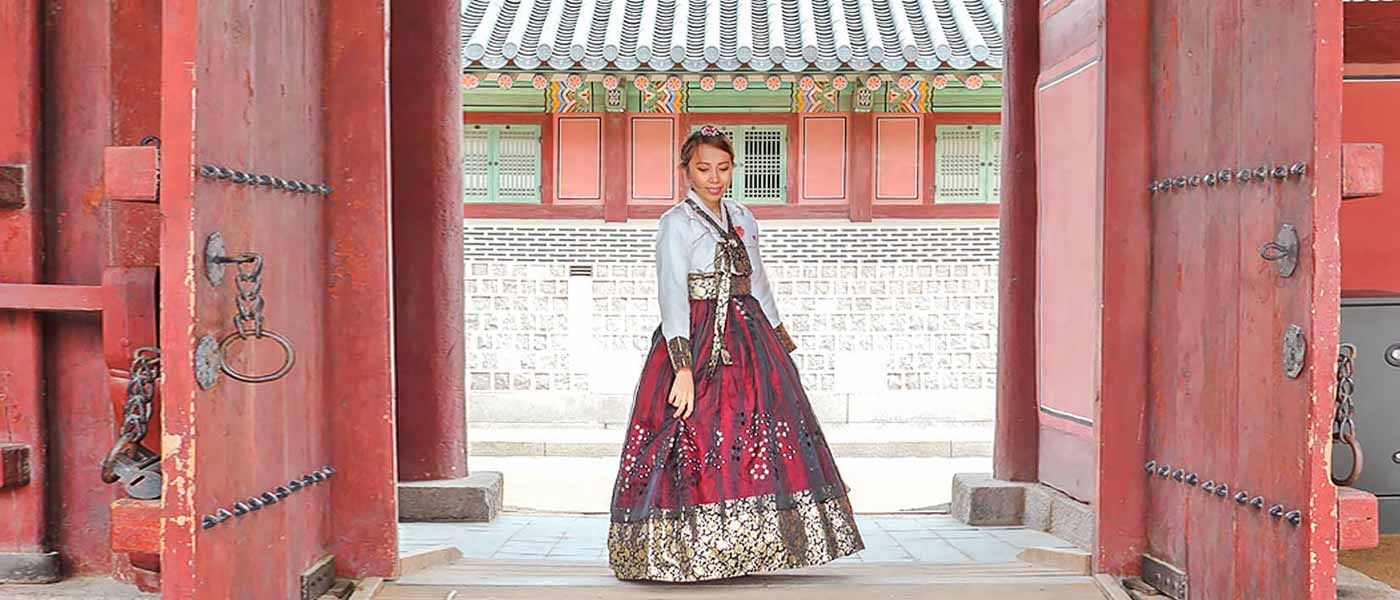
As you would see on the online booking platform , Seohwa Hanbok has 3 rental options: 4 hours, 1 day, or 2 days .
NOTE: If you have purchased the Discover Seoul Pass (no matter if it’s the 24H or 48H option), it’s preferable that you do NOT activate it on this day because you’ll already be given FREE entry to 4 of the ‘Five Grand Palaces’ if you’re wearing a hanbok. Not to mention that this whole hanbok activity will already likely fill up your whole day, so it’s best to activate the pass the next day. . Unless of course, you plan to avail the FREE hanbok rental use instead that’s under the Discover Seoul Pass’ perks. Personally, I think it’s best that you avail a hanbok rental separately for longer hours because the free hanbok rental under the pass is only for 90 minutes).
Once you are clad in a hanbok of your own choosing, I recommend doing the following route:
- The Changing of the Royal Guard ( Sumunjang ) ceremony is held for FREE daily, except Tuesdays, at 10:00AM and 2:00PM in front of Gwanghwamun or the main gate of Gyeongbokgung. If you can’t make it to these time slots, you can also witness a Guard-on-Duty Performance at Gwanghwamun gate at 11:00AM and 1:00PM or a Sumungun (Gatekeeper) Military Training in Hyeopsaengmun Gate at 09:35AM and 1:35PM.
- If you’ve got time, you can check out the huge golden King Sejong Statue at the nearby Gwanghwamun Square. (King Sejong is best remembered as the inventor of ‘Hangeul’ or the Korean alphabet.)
- ★ Changdeokgung: This was the 2nd palace that was built after Gyeongbokgung and it has since been recognized as a World Cultural Heritage site by UNESCO in 1997. An interesting feature of this place is its ‘Secret Garden’ because there are only a limited number of admission slots per day that are given out. If you’re lucky, you can get the chance to go in if you want to!
- Deoksugung: This palace is famous for its picturesque stone-walled road (which is often featured in K-dramas like Goblin). And much like Gyeongbokgung, Deoksugung Palace has a Changing of the Royal Guards Ceremony and it is held at 11:00AM, 2:00PM, and 3:30PM daily, except on Mondays.
- Changgyeonggung: This used to be the residential quarters for queens and concubines of the king, and it later became a park with a zoo and a botanical garden during the Japanese colonial rule (today though, the zoo and garden are relocated to Seoul Land ).
- Gyeonghuigung: Located near Deoksugung Palace, this site served as the secondary palace for the king in the latter half of the Joseon period. For a time, Gyeonghuigung was of considerable size but most of its major structures have long been disassembled and moved to other parts of Seoul. .
- To get here, look for Bukchon-ro street. It will be hard to miss because the tourism board had recently appointed staff there in red clothing to help tourists and distribute maps. Basically, there are 8 major viewpoints to see in Bukchon Hanok Village and those that you must NOT miss are the Gaehoe-dong areas that are typically appointed as Views #3 to #7. If you’re coming with elderly companions, take note that there are a few uphill climbs in this area.
- Unlike other hanok villages (like Namsangol Hanok Village), Bukchon was not built for tourists as it is rather a residential village inhabited by Seoulites. Therefore, make sure to keep quiet so as not to disturb the locals.
- As you leave Bukchon, drop by the nearby neighborhood of Ikseon-dong . Much like Bukchon, it’s one of the oldest hanok villages in Seoul; but in case you want to escape the crowds, it would be a great idea to explore this hidden gem! .
- Lunch: You can either have it at Bukchon Hanok Village or at Insa-dong. There are a lot of cafes and restaurants in these areas so you won’t have a difficult time picking a place; though if I may put in my two cents, do check out Jokagbo at Bukchon (across the street near the entrance to the village) or Gogung at Insa-dong for their bibimbap (mixed rice bowl). For other food or restaurant options, click the “Extra Days” tab on top of this section — or go to this link to see a list of restaurants that you can book online at special deals. .
- Drop by Insa-dong: (Nearest subway station: Anguk Station, Exit #6) As you make your way to the last stop of this route, you must not skip on the neighborhood of Insa-dong in the Jongno-gu district of Seoul. After all, its streets are one of the best places in Seoul when it comes to culture and crafts (perfect for souvenirs!). If I may also share another tip, try to stop by Ssamziegil which is a unique building wherein each of its levels is connected in the form of a spiraling walkway! .
- (OPTIONAL) Visit Namsangol Hanok Village: (Nearest subway station: Chungmuro Station, Exit #3) Located at the foot of Namsan, this village was built to feature 5 traditional houses of different social classes from the Joseon era, all relocated to this spot from different locations in Seoul in order for guests to understand the daily lives of its past people. Of all these 5 houses or hanok, only one is open to the public which is the house of Yoon-ssi of Okin-dong. It has been transformed into ‘Yoon’s Tearoom’ where visitors can learn about Korea’s tea culture. If you’re interested, you could join the tea ceremony program for only ₩7,000. (For a list of other activities in this village, see this link ).
Is it possible to just try on a hanbok for FREE? Yes. If you hold a Discover Seoul Pass , you can wear a hanbok of your choice outdoors for 90 minutes via HANBOKNAM, or take photos with a hanbok in the indoor studio of Namsan Seoul Tower Hanbok Experience Center . However, if you do not have a Discover Seoul Pass, Korea Tourism Office’s Main HQ allows you to wear simple hanbok and take shots of yourself in it indoors. . Is there a service where I can just rent a hanbok indoors and have a professional photographer take photos of me? Of course! You can book this kind of experience online for just ₩15,000~ (or USD$14~ / Php 730~). It even has the option of doing outdoor shots.
◘◘ Visit the awe-inspiring structure of Dongdaemun Design Plaza
(Nearest subway station: Dongdaemun History & Culture Park Station, Exit #2)
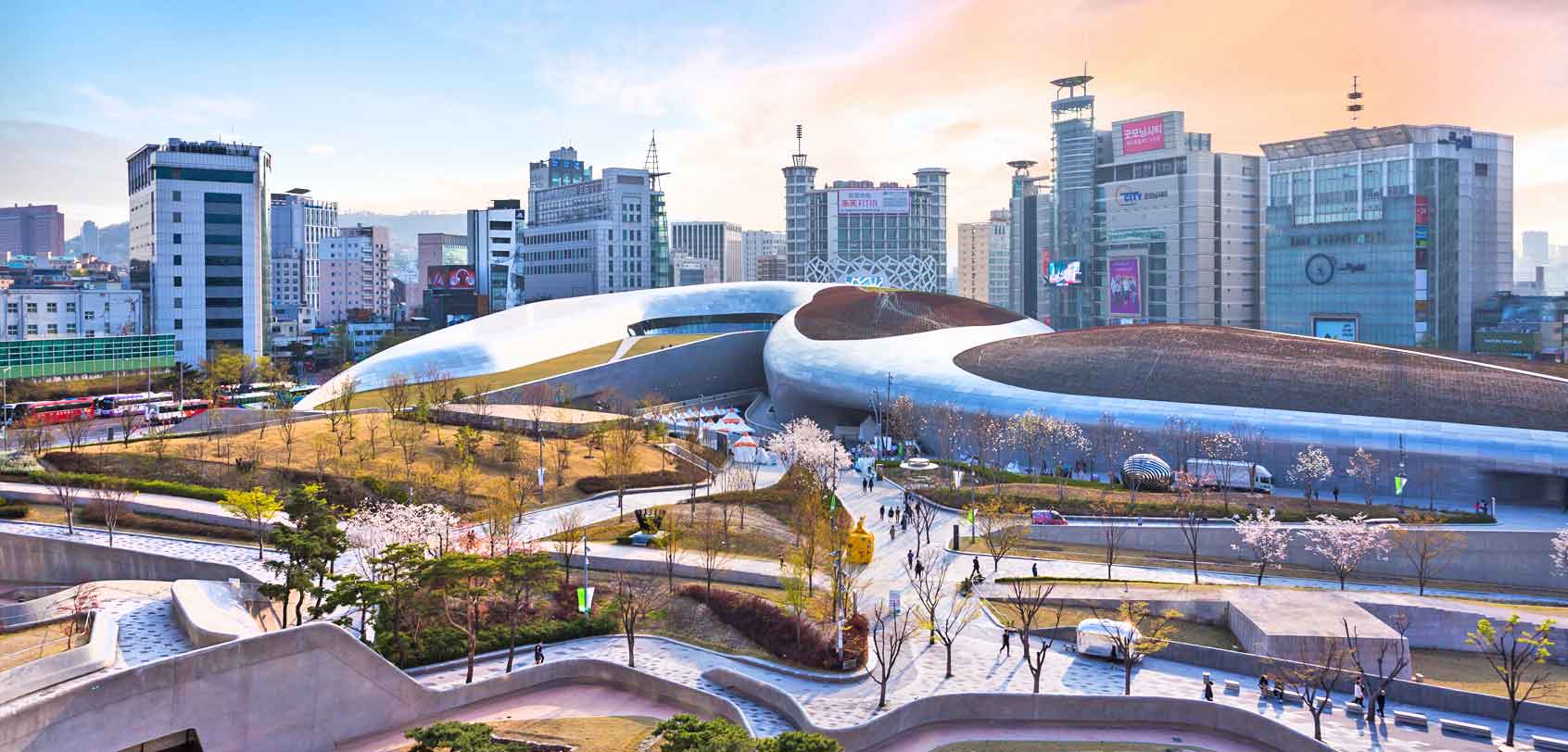
Also called “DDP”, this structure is a new major urban landmark in the heart of Seoul which has a distinctly futuristic design made by world-renowned architect, Zaha Hadid. As such, it’s not strange that it is one of the most Instagrammed locations in Korea.
Other than enjoying its grand outer architecture for your Seoul itinerary, you can also stroll through DDP’s huge 5 halls namely, Art Hall, Museum, Design Lab, Design Market, and Dongdaemun History and Culture Park — places where you can shop and watch various exhibitions, fashion shows, and performances among many others.
- From late May to late October every year, Seoul Bamdokkaebi (Goblin) Night Market will open in DDP from 6:00PM to 11:00PM, so don’t forget to make a stop here to not only buy a variety of food and goods but to also enjoy the various performances made available during this event.
- TRIVIA : This display was first put up on National Liberation Day in 2015 which is in celebration of Korea’s 70th year of independence. Hence, the number of 25,550 comes from 365 days multiplied by 70.
BONUS: If you still have some time, drop by Ihwa Mural Village, a picturesque neighborhood in Seoul that is famous for its amazing murals — as well as for its fascinating cafes and shops. It’s no wonder that a lot of K-dramas and movies have started to do their filming here. You can basically find this near Naksan Park (which also yet another hidden gem that provides great views of the cityscape).
◘◘ Eat and shop through any of Seoul’s night markets
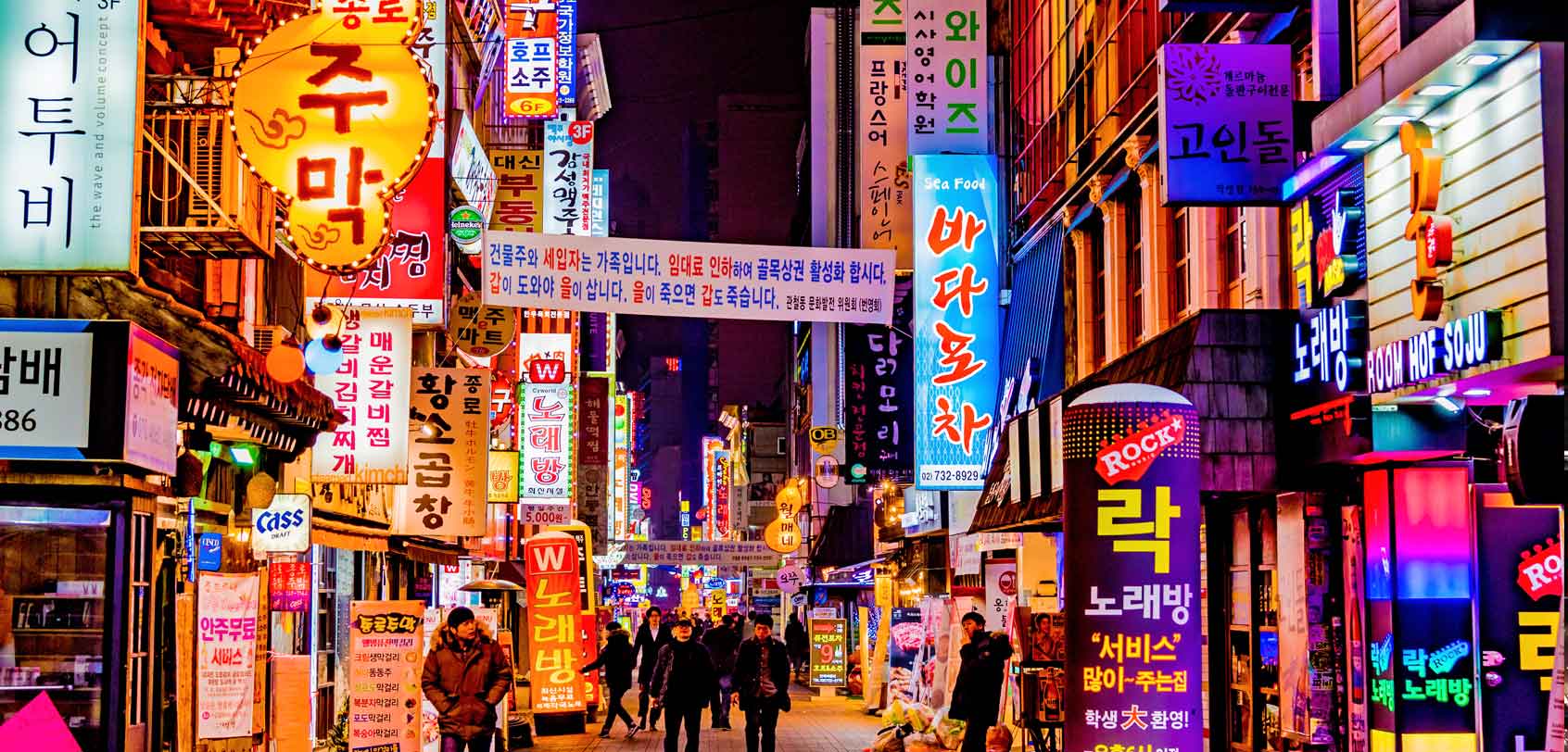
Like the rest of Asia, Seoul has no shortage of vibrant night markets, so for dinner, go and drop by any of the following spots ( it’s best to choose only one! )
- Bamdokkaebi (Goblin) Night Market: (Nearest subway station: *various spots*) Like I’ve written above, this night market opens from May to October. It originally opened in Yeouido (Yeouinaru Station, Exit #3) but has since expanded to several locations such as DDP. The other remaining places would be Cheonggyecheon Stream (Jongno5(0)ga Station, Exit #7) and Banpo Hangang Park (Express Bus Terminal Station). .
- Dongdaemun Night Market: (Nearest subway station: Dongdaemun History & Culture Park Station, Exit #4) Take note that this is different from the night market found in DDP. Apart from the retail haven found in this vicinity, you will also find the ‘Open market’ with its bright yellow tents, all selling various apparel, souvenirs, and items at affordable prices starting from 10:00PM up to 5:00AM. If you’re rather looking for delicious Korean eats during your Seoul itinerary, drop by Mukja Golmok (“Let’s Eat Alley” at exit #8 of Dongdaemun Station) to feast on snacks like tteokbokki (rice rolls). .
- ★ Myeongdong Night Market: (Nearest subway station: Myeongdong Station, Exit #7) Even if this is not one of those ‘traditional’ night markets, it remains to be a popular destination for travelers as it is set in the bustling shopping district of Myeongdong that holds some of the biggest stores like Lotte and Shinsegae as well as cosmetic brands of all kinds. Starting from 5:00PM and onwards, you will start to see food stalls filling up the main street with fares like gyerangbbang (Korean egg bread), dak-galbi (spicy stir-fried chicken), etc. .
- ★ Namdaemun Night Market: (Nearest subway station: Hoehyeon Station, Exit #5) Open from 11:00PM till 4:00AM, this traditional night market is the largest in Seoul and it holds every possible thing that you can think of — from food to clothing, they have it all! .
- Gwangjang Market: (Nearest subway station: Jongno 5(o)-ga Station, Exit #8) If Namdaemun is the largest, then Gwangjang would be the oldest in Seoul, making it a common go-to place for many Korean shoppers. You can actually find this close by Dongdaemun and DDP so it’s possible to check off several of those night markets in the same night if you will it so! (TIP: This place is best if you’re looking to buy a hanbok for yourself). .
- ★ Noryangjin Fish Market: (Nearest subway station: Noryangjin Station, Exit #1) Operating 24 hours a day, this place is more than just a night market. If you come in the early morning, you can witness a bustling fish auction (reminiscent of Japan’s Tsukiji Fish Market). Anyhow, the fun part about this place is that you can buy some fresh seafood and then have it cooked by a restaurant located on the 2nd floor — and if you’re brave enough, maybe you can try the infamous Korean activity of eating a LIVE octopus?
TIP : Want a hassle-free foodie experience? With the help of a local guide, you can join a Korean Food Walking Tour or a Korean Night Dining Tour .
◘◘ Watch the famous Nanta Show
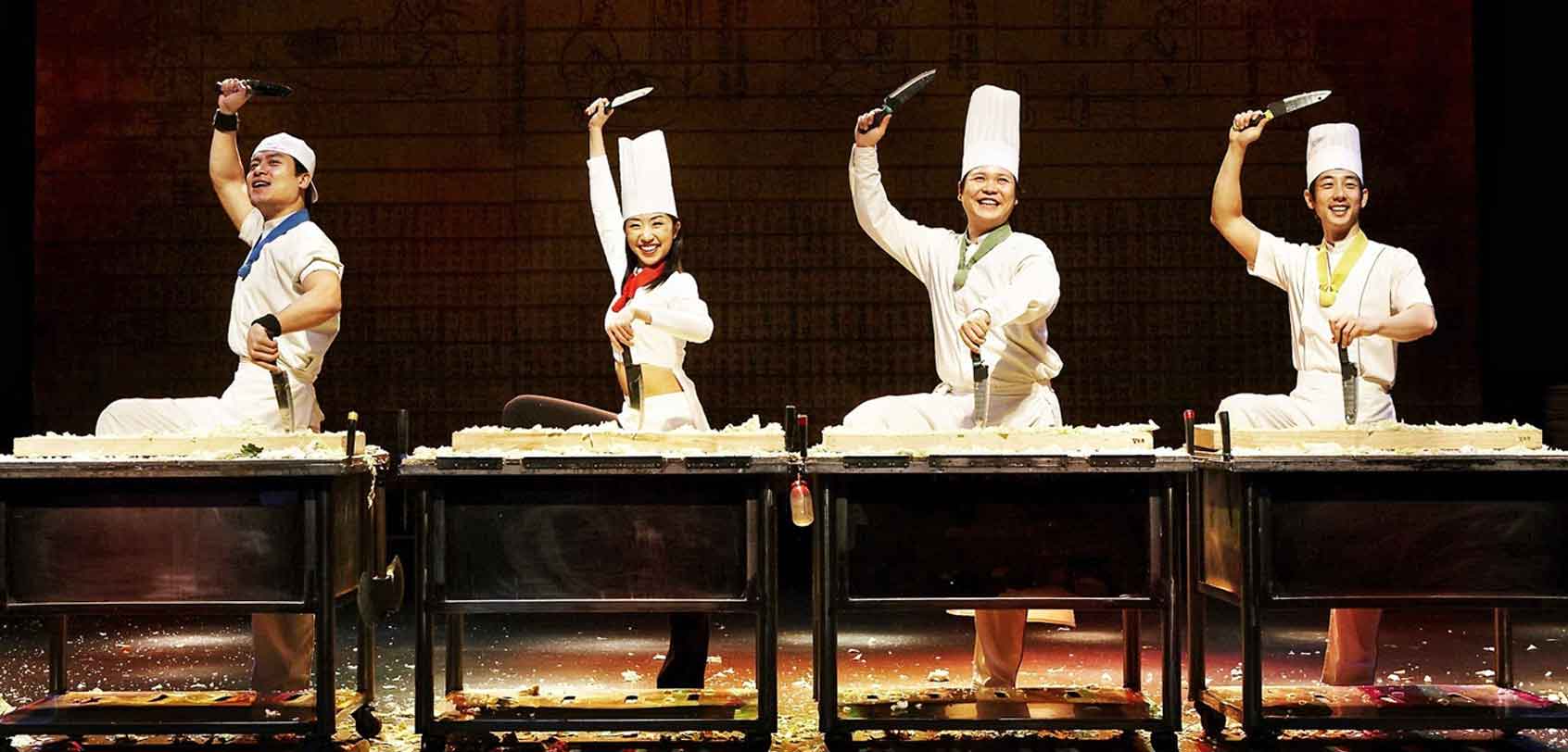
If there’s one show that you should NOT miss for your Seoul itinerary, it will be witnessing the award-winning long-running NANTA Show at Myeongdong Theatre. This is basically a non-verbal comedy show (so it’s fine even if you don’t know Korean) that incorporates traditional ‘ samul nori ‘ rhythm (which is a genre of percussion music distinct to Korea) as they do a slapstick play that mimes the story of cooks who are preparing for a wedding.
I’ve seen this show myself and it was quite entertaining as I saw knives fly and fire blasting from pots — but don’t worry, it’s all safe! But I must say that it did have a distinct sense of humor that may or may not work for you. Either way, it’s an energetic performance that has garnered distinctions and awards from Edinburg Fringe Festival and on New York’s Broadway, so I say: give it a try!
NEAREST SUBWAY: Myeongdong Station, Exit #7 BOOK: Online to get 30% off on tickets
DAY 2: “Discover” more of Seoul!
NOTE: If you have purchased the Discover Seoul Pass (no matter if it’s the 24H or 48H option), this would be a good day to start its activation.
◘◘ Explore and shop in Myeongdong and Hongdae

Myeongdong: (Nearest subway station: Myeongdong Station) This is is arguably the shopping mecca of Seoul and its 2 main streets meet in the center — the first spanning from Myeongdong Subway Station and the second from Lotte Department Store at Euljiro.
For the shopaholics, there is a wide range of branded shops and department stores that line Myeongdong’s streets and alleys (e.g. Lotte Department Store, Shinsegae Department Store, Noon Square, etc.), and they are often set relatively cheaper than the other shopping areas in the city like Cheongdam-dong.
Of course, let’s not forget that Myeongdong is a beauty lover’s dream too given the number of Korean cosmetic stores that regularly hold insane sales for their high-quality products.
As an example, I went here to shop for face masks and one piece averaged at only USD$0.40~ or Php 20~! Some of the top stores you need to check are: Innisfree, Nature Republic, Holika Holika, Tony Moly, Nature Republic, and Laneige. (If you have heard of the Instagram-famous place called as Style Nanda Pink Hotel , you can find it here in this neighborhood or ‘dong’).
TIP : Try to NOT buy from the first shop that you set foot into because most of the time, they will hand out free samples and masks, which could be quite a treat! In fact, I know that some people would hop from store to store just to collect samples, haha. Anyhow, in case you want to check out other places because you’ve got some time, shops in Hyehwa and Sincheon neighborhoods can have cheaper cosmetic products too. And oh, of course, do NOT ever forget claiming your tax refund!
Hongdae: (Nearest subway station: Hongik University Station, Exit #9) It’s no surprise that this area is often compared to Japan’s Harajuku because of its hip and youthful ambiance — with a dash of unique cafes and indie fashion shops here and there. Aside from strolling through ‘ Hongdae Walking Street’, ‘ Picasso’s Street ‘ and ‘ Club Street’ , below are some of the places in and around Hongdae that you should consider stopping by for your Seoul itinerary:
- Hongdae Free Market: Open on Saturdays from March to November at Hongik Children’s Park. You will find here an array of local artist works.
- Trickeye and Ice Museum: TrickEye museum is an interactive 3D space that gives off impressive optical illusions; whereas Ice Museum, as the name implies, is a space where you can enjoy a cool icy environment (e.g. a living room with a TV and couch made of ice and more). Entering these places is free if you hold a Discover Seoul Pass , but if you don’t have the pass, you can reserve your tickets online .
- If you’re looking to spend some time in cute cafes, go to ‘ Chuu ‘ or ‘ Zapangi’ .
BONUS: Ewha Woman’s University is an educational institute with picturesque grounds, but more than this, it’s actually smacked in a shopping area that sells a variety of affordable and stylish clothes for young people; therefore, this is also a good place to shop.
◘◘ Get lunch
It’s time to feast on a delicious Korean BBQ meal! While you’re already in Hongdae, try out either of these places: Gogigo or Old House Charcoal Meat Restaurant .
For other food or restaurant options, click the “Extra Days” tab on top of this section — or go to this link to see a list of restaurants that you can book online at special deals.
◘◘ Make full use of your Discover Seoul Pass
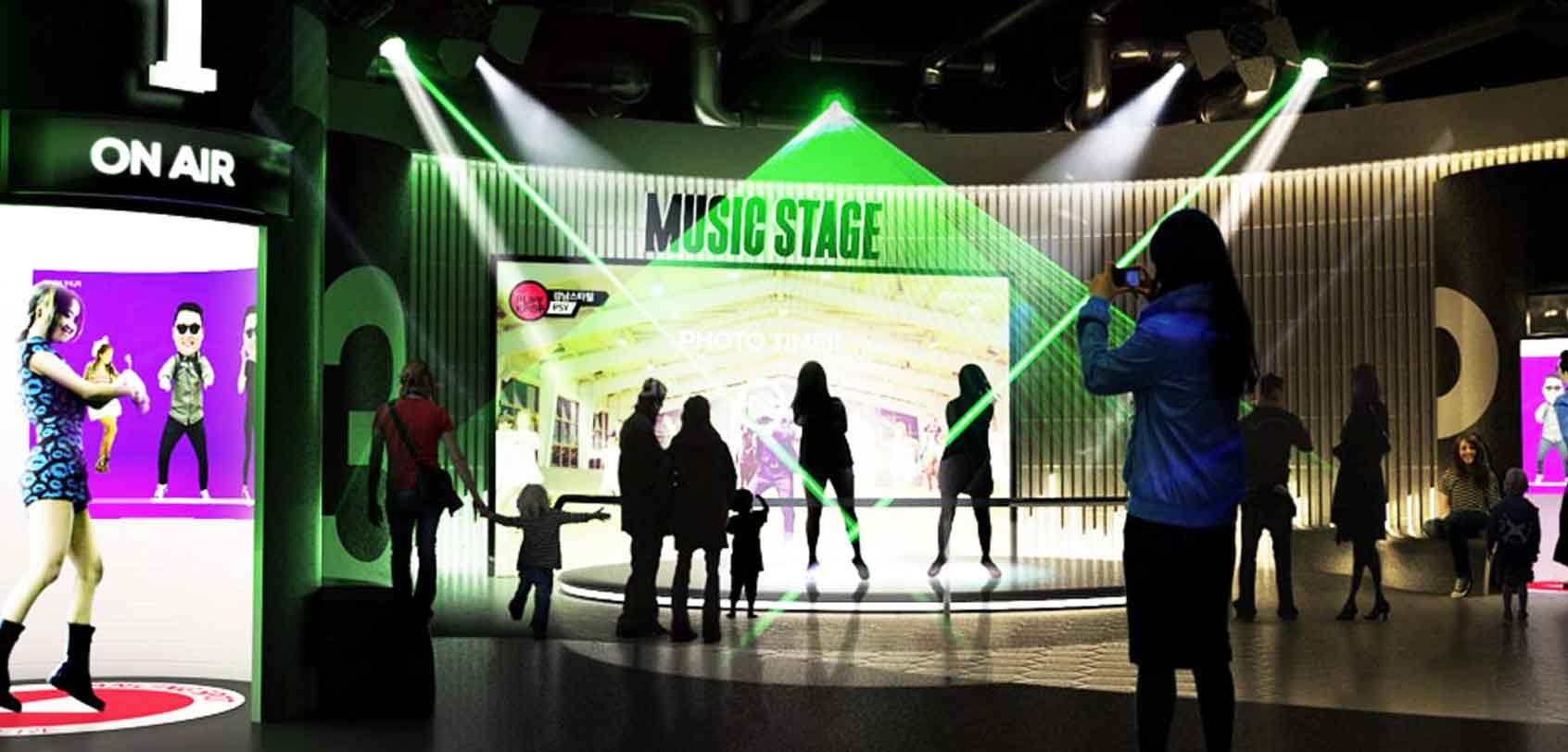
If you’ve followed my advice and got yourself a Discover Seoul Pass , you can enter any of the establishments below for FREE during your Seoul itinerary! Take your pick from any of the following to fill up the rest of your day ( best to pick 2 at most ).
For a complete list of FREE admissions under the Discover Seoul Pass, you can also visit this page .
- MBC World: (Nearest subway station: Digital Media City Station, Exit #9) Are you a fan of K-pop, K-dramas, or Korean stars — or just ‘ hallyu ‘ (Korean Wave) in general? Then MBC World is a great destination for your Seoul itinerary, as it will give you the chance to experience hologram K-pop concerts, virtual reality drama sets, and more. (If you don’t have the Discover Seoul Pass and want to separately book a ticket, go here ) . .
- SM Town Museum: (Nearest subway station: Samseong Station, Exit #6) Still in line with the ‘hallyu’ fever, this place is dedicated to famous K-pop artists under the powerhouse of SM Entertainment in South Korea. Avid fans can tour through their training rooms, recording rooms, and so much more. (If you don’t have the pass and want to separately book a ticket for this, go here ) . .
- Grévin Museum: (Nearest subway station: Euljiro 1-ga Station, Exit #1) This is like Korea’s version of Madam Tussauds. You can find about 80 wax figures of Korean and international celebrities, as well as several thematic interactive experiences. (If you don’t have the pass and want to separately book a ticket, go here ) . .
- 63 Square: (Nearest subway station: Yeouinaru Station, Exit #4) Other than gaining access to panoramic views of Seoul, you can also enter in 63 Square the first aquarium in Korea called Aqua Planet 63. If you’re a K-drama fan, this is actually the aquarium used in ‘Legend of the Blue Sea’ and where a Mermaid Show is regularly held. (If you don’t have the pass and want to separately book a ticket, go here for combination tickets or here for the aquarium only. .
- COEX Aquarium: (Nearest subway station: Bongeunsa Station, Exit #7) This place has the largest collection of marine life in Korea and you can watch feeding shows and interactive exhibits here too. (If you don’t have the pass and want to separately book a ticket, go here ). .
- Seoul City Tour Double-Decker Bus: Go on a hop-on-hop-off bus tour through the center of Seoul to get a glimpse of all of its past and present glory. (If you don’t have the pass and want to separately book a ticket, go here ). .
- Alive Museum: (Nearest subway station: Euljiro 3(sam) Station, Exit #1) This place is similar to TrickEye Museum but it is arguably larger with several other exhibits such as the ‘Dynamic Maze’ (where participants must work together to overcome challenges) and the ‘Black Wonderland’ (where fairy tales like Alice in Wonderland, Frozen, Cinderella and Aladdin can be experienced in the dark ). If you don’t have the pass and want to separately book a ticket, go here . .
- Seoul Zoo and Skylift: (Nearest subway station: Seoul Grand Park Station, Exit #2) Seoul Zoo is South Korea’s largest zoo with over 330 species of animals, inclusive of a botanical garden and a forest park. The icing on the cake? You can even ride the Sky Lift which can transport you to several places such as the Seoul Land theme park and more. (If you don’t have the pass and want to separately book a ticket for your Seoul itinerary, go here ). .
- Running Man: (Nearest subway station: Euljiro 1-ga Station, Exit #3) Do you want to be a part of Korea’s popular variety show, Running Man? Well with this thematic experience, you can do so! This will surely be a hilarious and fun adventure for you and your travel companions as you make your way through 6 zones, including Maze Battle. (If you don’t have the pass and want to separately book a ticket, go here ). .
◘◘ Visit Namsan Park and N Seoul Tower
(Take Namsan Shuttle Bus, Circulation Bus No. 2, 3, or 5)

Mt. Namsan’s Namsan Park is a symbolic place in the center of Seoul. To get up here, you can ride a cable car, a bus, or just simply walk up its stairway path. Most visitors come to this place to enjoy nature, to see the city skyline, or to do some of the hiking trails — but a majority makes a stop at the famous N Seoul Tower which is the first tower-type tourism spot in South Korea.
Rising at almost 480m above sea level, it is certainly one of the tallest towers in Asia. Once you set foot on its premises during your Seoul itinerary, you can explore its other attractions such as the LED tunnel, Hello Kitty Island, Ssentoy Museum & Showroom, and more.
- BOOK: Online to get a discounted ticket to the tower’s observatory as well as grab great combo deals.
- TIP : Other than N Seoul Tower, you can also find Palgakjeong Pavillion (octagonal hall) and Bonghwadae (beacon mounds that were used to signal incoming enemy invasions in the past).
◘◘ Grab dinner
I have two options for you, depending on what you fancy:
- A traditional royal Korean cuisine dinner: Feast on fresh and high-quality Korean cuisine set in a traditionally-styled restaurant called Myongdongjeong . What’s more? You can also rent their hanbok for free while eating to really feel as though you’ve been transported to a royal palace. .
- A cruise buffet dinner through Hangang River: Hangang or Han River is a major river in South Korea, and it is best enjoyed during the night with Eland Cruise as you glide through the waters and taste a delectable food buffet. Before the end of your cruise, you can even witness a firework show and a front-row view on the colorful Banpo Bridge Rainbow Fountain Show. To reserve your spot, go here .
For other food or restaurant options, click the “Extra Days” tab on top of this section — or go to this link to see a list of restaurants that you can book online at special deals for your Seoul itinerary.
◘◘ Walk through Cheonggyecheon Stream
(Nearest subway station: Jongno5(0)ga Station, Exit #7 )
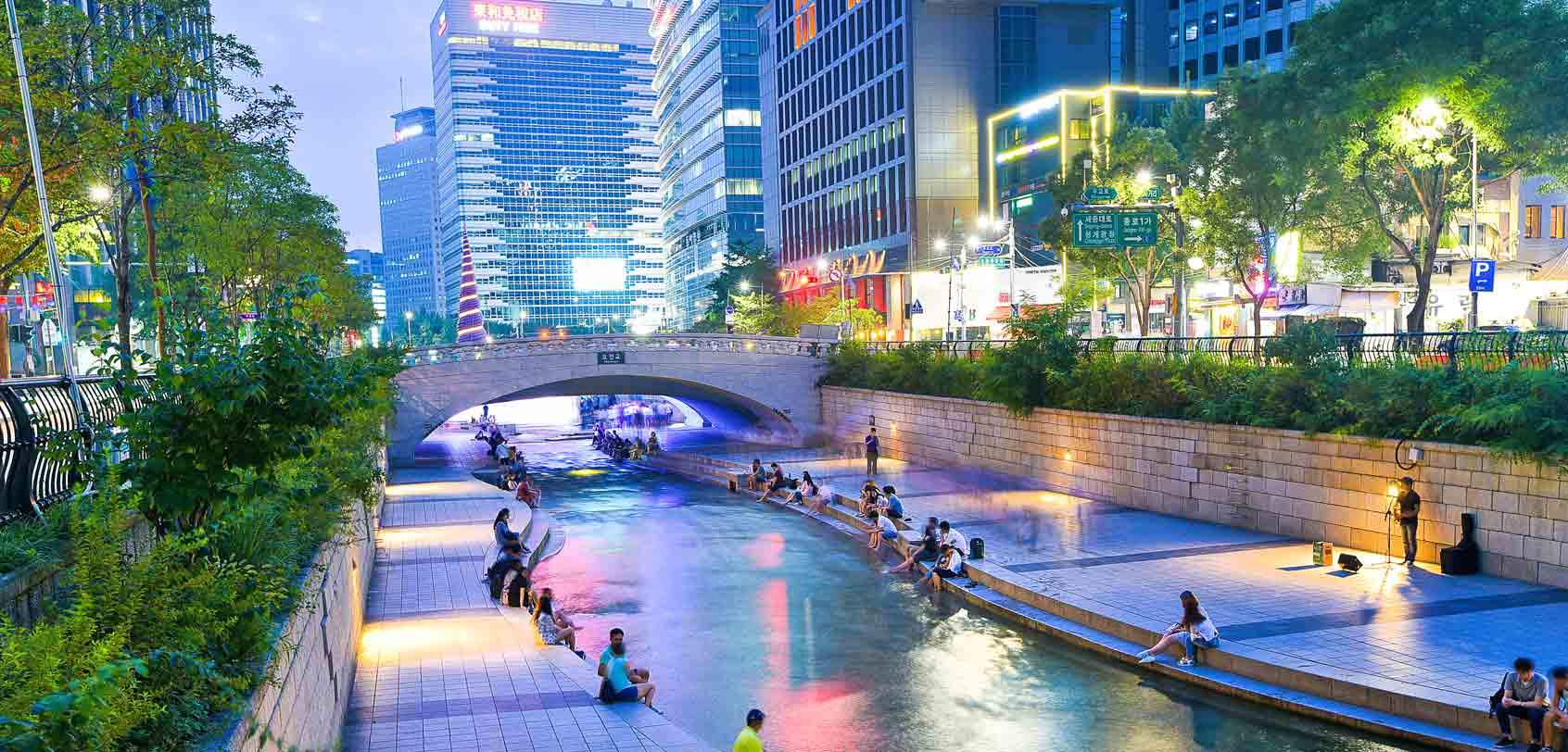
Cheonggyecheon is a picturesque 11 km-long modern stream that runs through a total of 22 bridges before flowing into the Hangang or Han River. Some examples of the beautiful bridges that it has are the Narae Bridge (which represents a butterfly) and Gwanggyo Bridge (depicting the harmony of the past and the future).
A lot of Seoulites wind down to this spot to chill and bask under the city lights, the lush ambiance, and the surrounding man-made waterfalls, if not partake in the Bamdokkaebi (Goblin) Night Market from May to October — so why not do the same during your Seoul itinerary?
DAY 3: A chill kind of day
◘◘ Do a “ Discover Seoul Pass ” or “Extra Days” activity
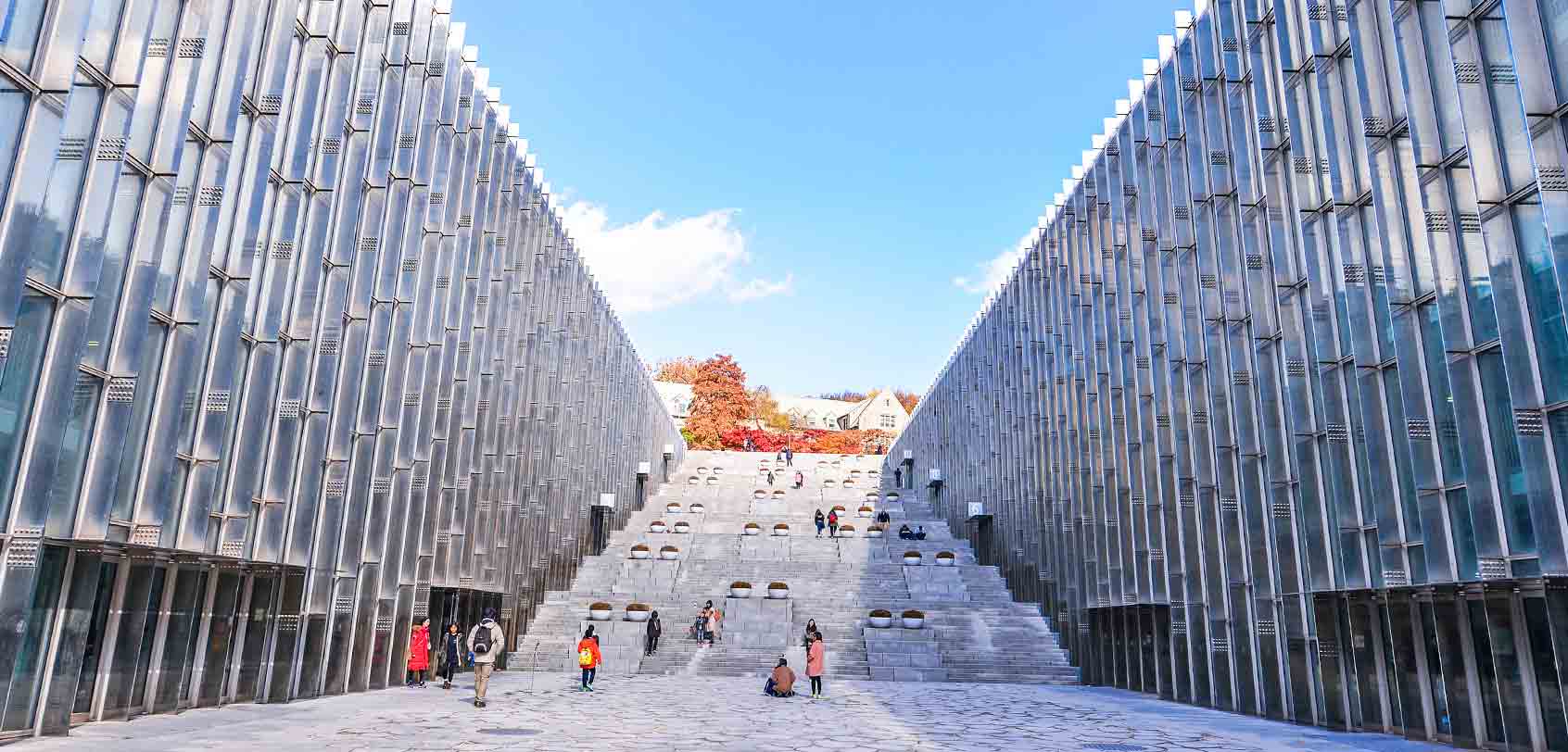
I recommend that you pick up an activity that you prefer from any of the previously listed things to do that I’ve written under Day #2’s ‘Discover Seoul Pass’ options of this Seoul itinerary. If not, you can also browse through the “Extra Days” tab above.
If you ask me, doing a cooking class , a kimchi class or a K-pop dance class will be a LOT of fun! (Read more about my Kpop dance class experience here ).
Did you ever want to try spending a day with a Korean ‘oppa’ (older brother)? Join this walking tour that’s led by a local guide!
◘◘ Grab lunch
- Hangaram: (Nearest subway station: Express Bus Terminal Station) Hangaram is a great choice if you want to taste some of the beloved Korean staples like bibimbap (mixed rice bowl), bulgogi (stir-fried beef), japchae (stir-fried glass noodles), kimchi (fermented vegetables) , etc. .
- Tosokchon Samgyetang: (Nearest subway station: Gyeongbokgung Station, Exit #2) Another Korean dish that you need to taste is samgyetang or ginseng chicken soup, and this restaurant is often lauded as the BEST place to eat in.
For other food or restaurant options, click the “Extra Days” tab on top of this section — or go to this link to see a list of restaurants that you can book online at special deals for your Seoul itinerary .
◘◘ Shop for highly discounted Korean food and snacks at Lotte Mart!
(Nearest subway station: Seoul Station, Exit #4 ). Naturally, going through any of the night markets I’ve listed under Day #1 will already grant you access to the cheapest food and snacks possible. However, other than those, I think that you should also go on a crazy chow shopping spree at Lotte Mart’s Seoul Station Branch! Why so? Well… as one of the leading discount store chains in South Korea, they sell ridiculously low-priced goods.
I swear to you, I bought only USD$20-worth of snacks here, yet it was enough to gift them to more than 20 people! (On top of the discounted items, you can get at most an 8% tax refund, and more to that, they also provide a free self-packing station so that you can pack all your purchased items in sealed boxes).
- For the must-buy snacks? It would be tteokbokki junk food, Binggrae banana-flavored milk, choco pies, yogurt jelly, honey butter chips, fire noodles (called also Buldak Bokkeum Myeon ), Lotte stick biscuits, and honey butter almond among many others!
- TIP: While you’re here, don’t miss dropping by the nearby newly-opened sky garden walkway called Seoullo 7017!
◘◘ Walk around Gangnam
(Nearest subway station: Gangnam Station)

There’s probably not a soul in this world who hasn’t heard of ‘Gangnam’ (and we have PSY to thank for that) .
For your info, Gangnam is Seoul’s upscale modern center that is home to high skyscrapers, designer brands, high-end restaurants, and pulsating nightclubs — so yes, it’s the home to many wealthy Koreans. In fact, you can think of it as the ‘Beverly Hills’ of Seoul. To make the most of your visit here during your Seoul itinerary, stop by the following ( it’s best to pick 3 at most ).
- Gangnam Terminal Underground Shopping Centre: You’ll find this from the moment that you step foot in Gangnam Station’s subway. With an array of accessories, clothing, cosmetics, and shoes, I have found a lot of sweet bargains here myself! .
- Gangnam Square: Right outside Gangnam Station’s Exit #5 is the spacious Gangnam Square which has a small section built as a tribute to PSY’s ‘Gangnam Style’ hit song, as well as the Gangnam-daero Road that’s speckled with various shops. .
- Apgujeong Rodeo Street and Cheongdam Fashion Street: (Nearest subway station: Apgujeong Rodeo Station, Exit #1 and Exit #3 respectively.) If you haven’t had enough of shopping but are looking for more upmarket shops. .
- Hallyu K-Star Road: K-pop fans must not skip this! Found between Apgujeong Rodeo Station and Cheongdam Station are adorable GangnamDols that are each autographed by K-pop groups like EXO, BTS, Super Junior, and more. For a detailed list, you can check here . .
- Garosu-gil Road: (Nearest subway station: Sinsa Station, Exit #8) This Gingko tree-lined street is a popular, trendy street in the city of Seoul and it is even often called an ‘artists street’ due to the number of quaint cafes and designer stores. Some charming cafes that you can choose from are Gingko Avenue, Line Friends Cafe, Cafe de Paris, and IKOVOX . .
- Starfield COEX Mall: (Nearest subway station: Bongeunsa Station, Exit #7) This mall is a shopping mecca, but more than this, it has interesting amenities too that are not limited to the COEX Aquarium and the Starfield Library. The latter is the newest built facility on the premises and it features 50,000 books and magazines in a grand yet relaxed setting. .
- SM Town Museum: (Nearest subway station: Samseong Station, Exit #6) This place is dedicated to famous K-pop artists under the powerhouse of SM Entertainment in South Korea. Avid fans can tour through their training rooms, recording rooms, and so much more. (If you don’t have the pass and want to separately book a ticket, go here ) . .
- Lotte World: (Nearest subway station: Jamsil Station) As Seoul’s largest indoor and outdoor amusement theme park, you will actually need a full day to enjoy this place — but I still felt like including this here, just so you know that it’s located in this Gangnam area. So if you have a spare day in your Seoul itinerary, it would be great to visit Lotte World. Another theme park choice would be Everland , but if you want other options, check the “Extra Days” tab above.
◘◘ Go up to Lotte World Tower
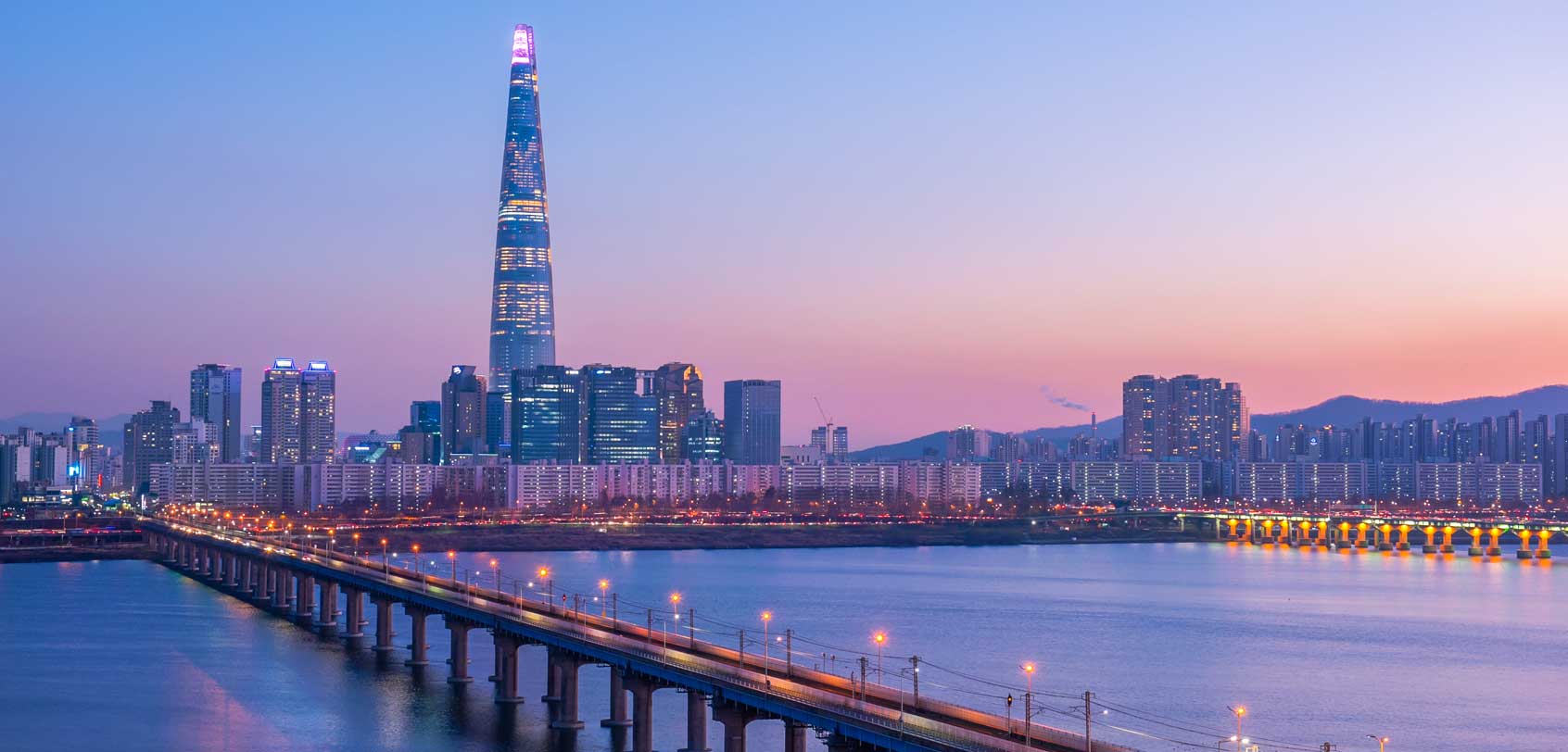
Towering at 554 meters, this new 123-floor skyscraper just opened last 2017 and it is currently the tallest building in Seoul and the 5th tallest in the world. It contains several cafes, galleries, a luxury hotel, a skywalk, and an observation deck.
Obviously, this is the best place for viewing panoramic views of the cityscape and I highly suggest that you go up to the observatory not only to enjoy the view with a cup of coffee but to also experience its glass floors! Though it was nerve-wracking at first, it was really cool to feel as though I was floating up in the air like that! (Another thing you can enjoy nearby is Lotte World Mall).
NEAREST SUBWAY: Jamsil Station, Exit #2 BOOK: ₩27,000 for adults and ₩24,000 for children (Pay less if you book online ).
BONUS : From April to October, head over to the Han River’s Banpodaegyo Bridge by 8PM (plays every 20 minutes until 9PM) to watch their famous Moonlight Rainbow Fountain show.
I think it’s time to have a meal with the guidance of a local during your Seoul itinerary, so why not try a Seoul street food tour for instance? If you’re not game for that, you can find other food or restaurant options under the “Extra Days” tab on top of this section — or go to this link to see a list of restaurants that you can book online at special deals for your Seoul itinerary.
DAY 4: All About JSA
◘◘ Visit the Korean Demilitarized Zone (DMZ)
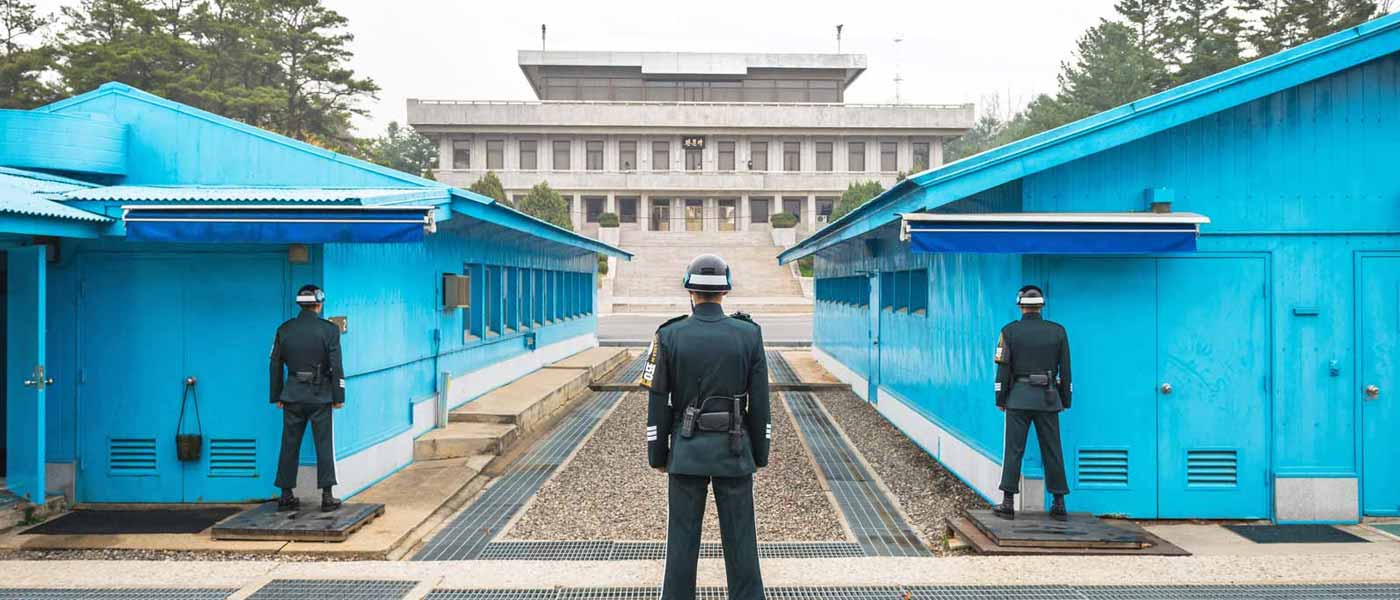
It’s no news that the Korean peninsula has long been divided into two countries: North Korea and South Korea. Unfortunately, it was not at all a peaceful separation given the infamous 250km-long buffer zone of the Demilitarized Zone ( DMZ ) that separates the two since 1953.
Today, it is referred to as the most heavily guarded area in the world with battle-ready armies, fences, landmines, and fences on both sides — it’s absolutely one of the scariest places in the world! …And yet, it continues to be a popular major tourist attraction in South Korea that attracts a lot of history buffs and curious folks worldwide who are seeking to witness this surreal land for themselves (people like me).
The available tours currently being held are as follows:
- Panmunjom Joint Security Area (JSA) Tour: This is the most sought-after tour by travelers to South Korea’s DMZ because this is the closest place to North Korean soil that anyone can step into without getting arrested or shot. A tour to JSA will only be possible through an organized tour that is approved by the government and it will basically take the guests to the iconic blue UN building that is smacked on the border — with both North and South Korean soldiers facing one another (as if they’re on a staring showdown). .
- North Korea Center of Unification Board: Shows over a hundred photos and documents showing the stark reality of North Korea.
- Mangbaedan Alter: The spot where Koreans separated from their families in the North. Koreans typically visit this place on New Year’s Day and Chuseok (Korean Thanksgiving) to perform ancestral rites to their home and relatives in the North.
- Bridge of Freedom: Where South Koreans crossed when they were released from North Korea. You will witness a lot of ribbons tied to the fences that each contain messages of hope, peace, and love.
- Dora Observatory: From here, visitors can look closer into North Korea with binoculars as they witness things like the North Korean propaganda village, Kaesong city, and others.
- Dorasan Station: This is the northernmost train stop on South Korea’s railway line and locals hope that it would one day connect North and South Korea when peace finally prevails.
It is possible to combine the two tours above for a whole-day experience during your Seoul itinerary (see here ).
BOOKING LINKS (use promo code AILEEN5OFF to get a 5% discount ) :
- Panmunjom Joint Security Area Tour (JSA) only = ₩85,000~
- Third Tunnel of Aggression only = ₩63,800~
- Panmunjom Joint Security Area Tour (JSA) & Third Tunnel of Aggression combo = ₩130,000~
◘◘ Visit a spa or a jjimjilbang
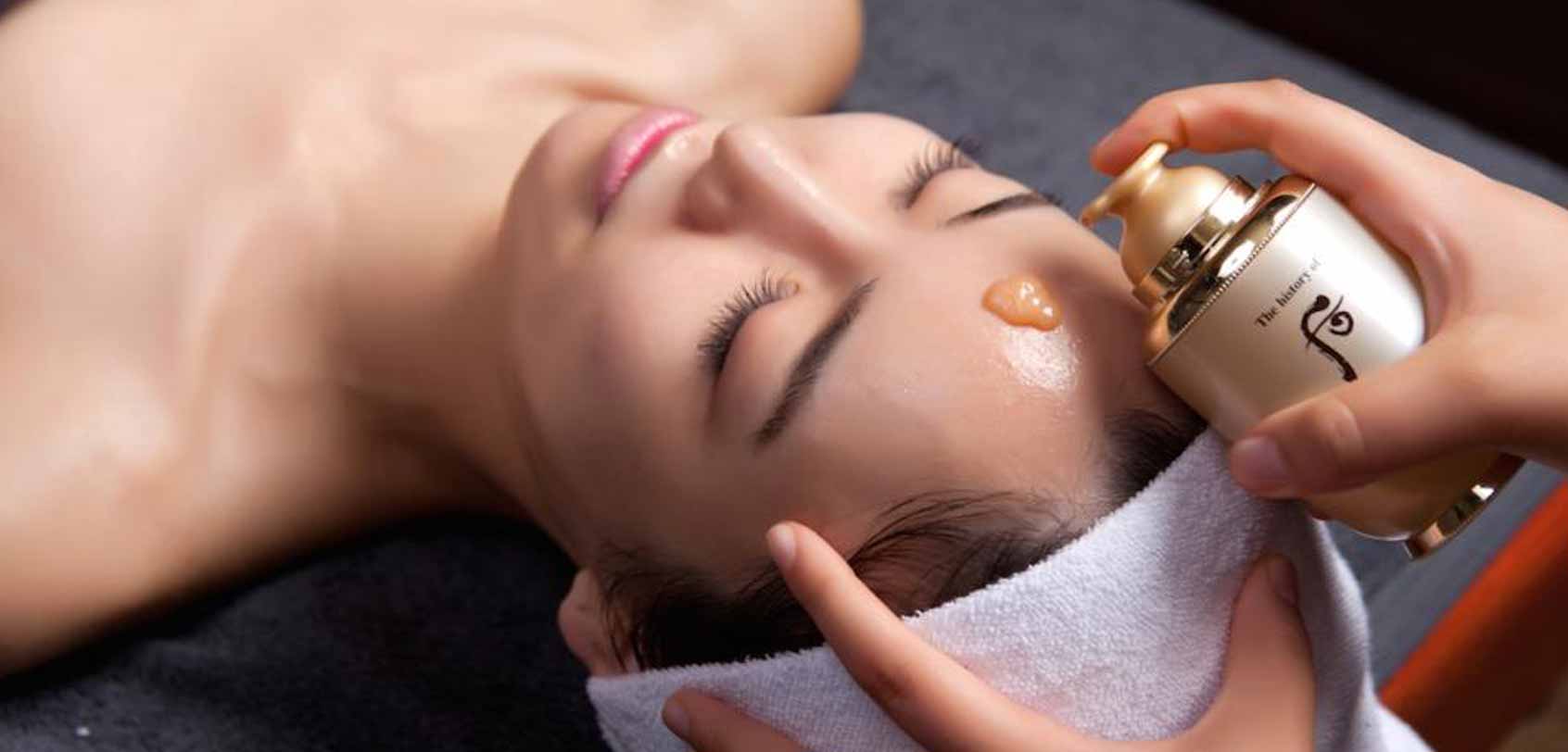
After your tense morning tour to DMZ, how about you relax and pamper yourself with Korea’s well-liked spa services? Apart from getting a Korean massage , I urge you to experience jjimjilbang or a large gender-segregated public bathhouse complete with hot tubs, showers, traditional Korean kiln saunas, and massage tables.
If you’re a fan of K-dramas, you will probably be familiar with this because it’s a common place that Koreans frequent for spa services. For this, you can visit Dragon Hill Spa (or if you hold a Discover Seoul Pass , it gives you free admission to Sealala jjimjilbang).
NEAREST SUBWAY STATION: Itaewon Station, Exit #3 BOOK: Go to this link to get a discounted rate
ALTERNATIVE : If you rather want to relax in nature during your Seoul itinerary, go over to the World Cup Park, a humongous space that used to be a landfill but has now been turned into a park with 5 different sections: Pyeonghwa (Peace) Park, Haneul (Sky) Park, Noeul (Sunset) Park, Nanjicheon Park, and Nanji Hangang Park. A crowd favorite would be Haneul Park as it’s the highest elevation of the five parks.
I have two options for you for your Seoul itinerary, depending on what you prefer:
- Buffet: Taste all kinds of gourmet food at Tavolo 24 .
- Korean gopchang: Taste the popular stir-fried Korean dish made up of small intestines from cattle or pork (often best paired with soju ) at Aunt’s Grilled Intestines Restaurant .
TIP : You can also check this link to see a list of restaurants that you can book online at special deals.
DAY 5: Day tour to Gapyeong County
◘◘ Explore Gapyeong County’s wonders

It’s time to venture out of Seoul’s busy metropolis to get some fresh air and tranquility. For this, a day trip to Gapyeong County’s top attractions is recommended for your Seoul itinerary!
READ: My detailed guide on this tour by clicking [ here ].
- Petite France: This is a charming place that serves as both a cultural village and a youth training facility with over 16 French-styled buildings. Petite France is also recognized as a top filming location for Korean dramas like ‘Secret Garden’ and ‘My Love from the Star’. With its European ambiance, it is also somewhat of a tribute to Saint-Exupery, the author of the famous French Novel: ‘Le Petit France’. ~Entrance fee: ₩10,000 adults / ₩5,000 children .
- Nami Island: A half-moon-shaped island nestling inside an artificial lake known for being the filming grounds of the well-known K-drama ‘Winter Sonata’. Nami Island is home to rows of majestic trees, roaming animals, and art exhibits, making it a sought-after destination in every season! I highly recommend that you rent a bike when you’re here; otherwise, there are other activities you can do such as water sports, trying on the roller skating rink, going to the shooting range, and more. ~Entrance fee: ₩13,000 .
- Garden of Morning Calm: This grand 30,000 sqm garden is open all year round and it is regarded as the oldest private garden in Korea with an artistic space that’s sure to leave anyone in awe. The Garden of Morning Calm becomes even more magical during winter (December to March) when they set up hundreds of multi-colored lights to create themed gardens, so make sure that this is on your Seoul itinerary! ~Entrance fee: ₩9,500 adults / ₩6,000 children .
- Gangchon Rail Bike: Built on a discontinued trail line, Gangchon Rail Bike is a fun attraction where you can pedal through old railroad tracks while taking in the amazing Bukhangang River scenery. Rest assured, it doesn’t require much effort to pedal the makeshift carts because the rail lines are slightly sloping downhill. ~Entrance fee: ₩30,000 for a two-seater .
- Edelweiss Park: Edelweiss Park is similar to Petite France, but instead, it focuses more on being a Swiss-based cultural village, so it’s filled with Swiss architecture, establishments, and sceneries. ~Entrance fee: ₩10,000 .
For a hassle-free experience on your Seoul itinerary, it would be advisable to go on a guided tour. Nowadays, there are different packages so feel free to take your pick from any of the combinations below (they often already include a delectable dak-galbi lunch, but there is also a halal option ; don’t forget to use promo code AILEEN5OFF to get a 5% discount ):
- (2 stops) Nami Island + Alpaca World
- (2 stops) Nami Island + Petite France
- (2 stops) Nami Island + The Garden of Morning Calm
- (3 stops) Nami Island + Alpaca World + The Garden of Morning Calm
- (3 stops) Nami Island + The Garden of Morning Calm + Gangchon Rail Bike
- (3 stops) Nami Island + Petite France + The Garden of Morning Calm
- (3 stops) Nami Island + Petite France + Gangchon Rail Bike
- (3 stops) PRIVATE TOUR: Nami Island + Petite France + Gangchon Rail Bike
- (4 stops) Nami Island + Petite France + The Garden of Morning Calm + Gangchon Rail Bike
If not, you can take the ‘Gapyeong Tourist Bus’ which can bring you to all of these locations for only ₩6,000 — the downside though is that the buses run only once every hour, and with the crowds that go to all of these places, it’s likely that the spots get filled quickly. (This is why I suggest going on a guided tour instead.)
I have two options for you, depending on what you prefer:
- Samgyeopsal : Taste this hearty grilled pork belly dish at Palsaik which is very popular with locals.
- Jokbal: Try this Korean dish consisting of soft pig’s trotters cooked in soy sauce and spices at Manjok Ohyang Jokbal .
TIP : You can also check this link to see a list of restaurants that you can book online at special deals for your Seoul itinerary. (Use promo code AILEEN5OFF to get a 5% discount).
Explore other TOP destinations in South Korea
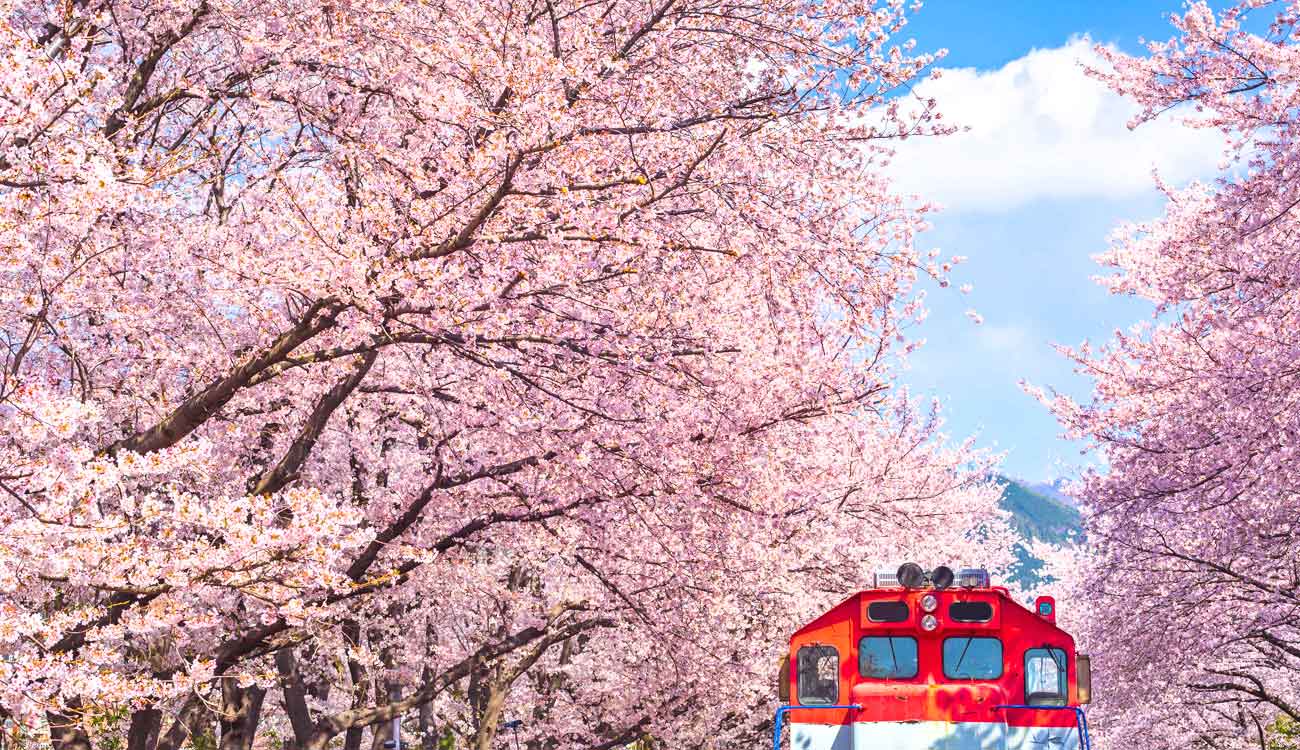
BUSAN Known for its colorful houses, mountains, and the largest fish market in Korea!
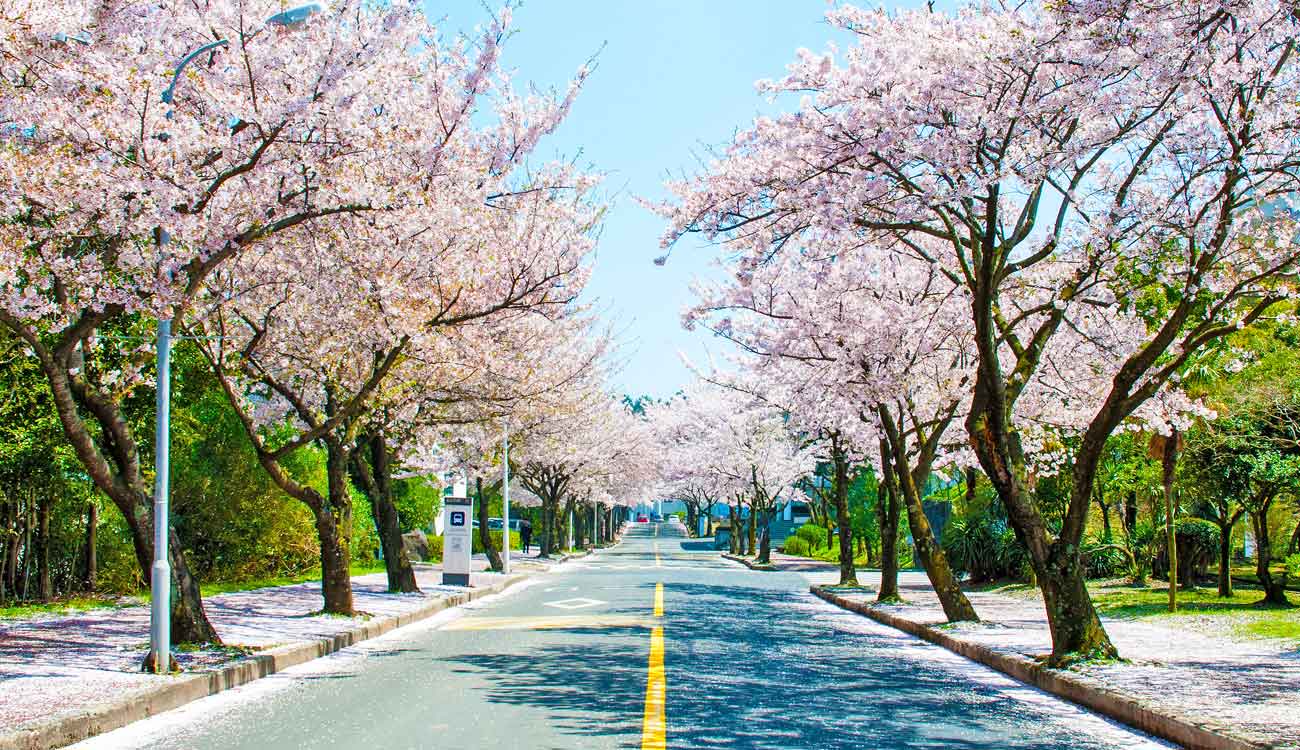
JEJU ISLAND South Korea’s top island destination beloved by tourists and locals alike.
TIP : Check out all of the top Instagram spots in Busan to fill up your feed and Seoul itinerary!
◘◘ Family Fun ◘◘
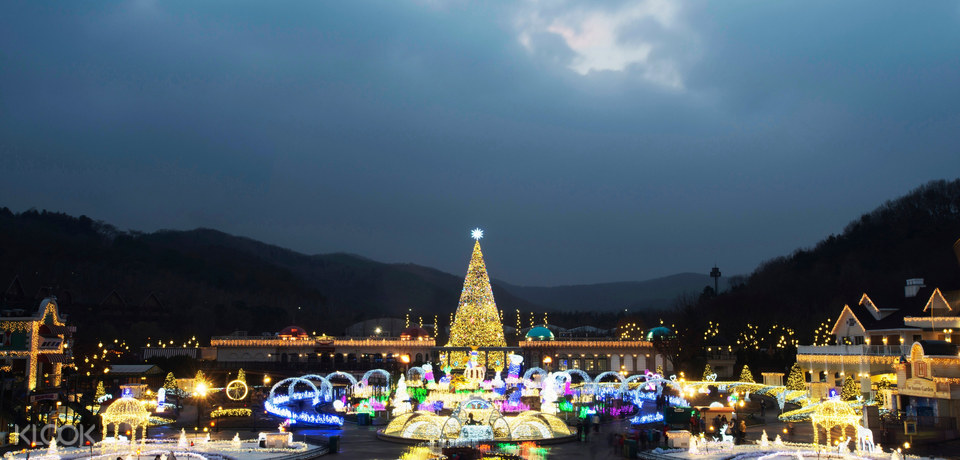
Everland Park South Korea’s largest attraction park.
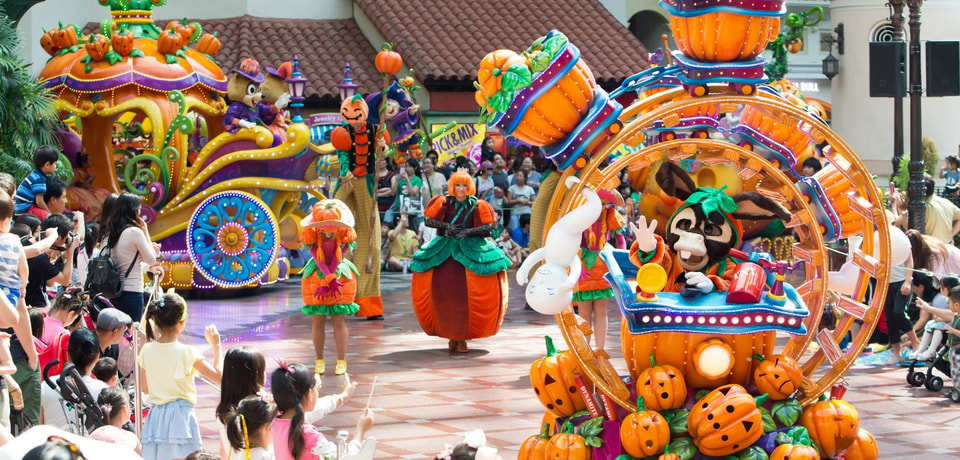
Lotte World Large indoor and outdoor theme park.
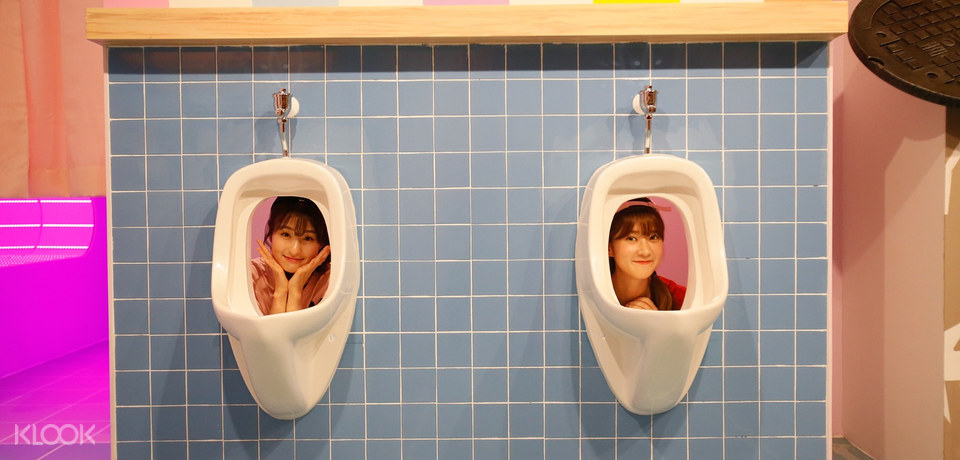
Poo Poo Land Unique and fun place for photo-ops and learning.
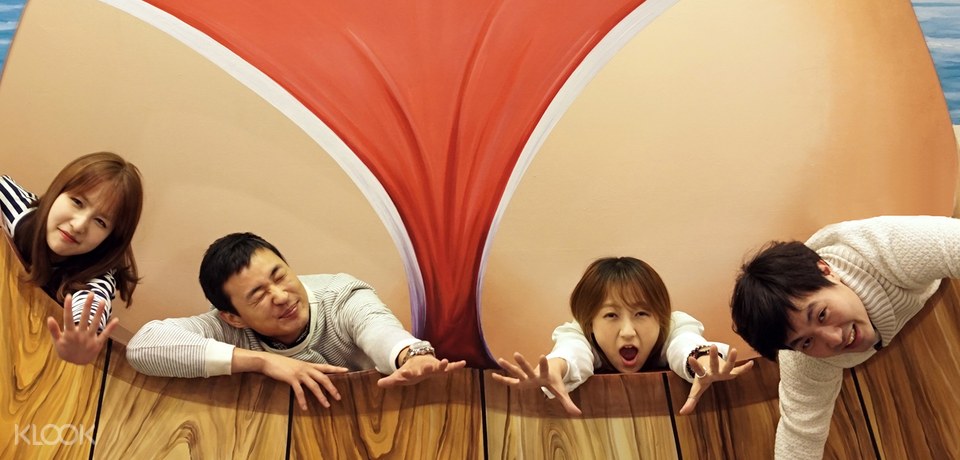
Love Museum Seoul’s first and only museum for adults!
◘◘ K-Drama & K-Pop ◘◘
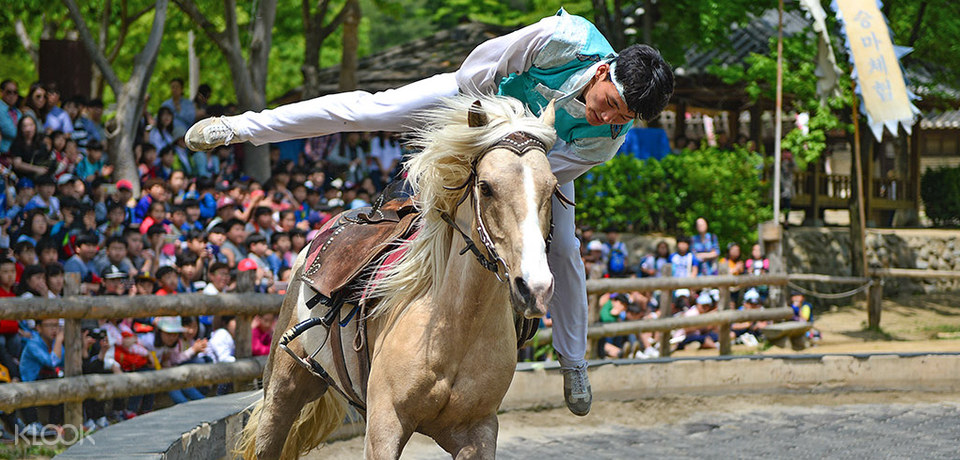
MBC Dae Jang Geum Park Tour Largest historical drama open set in Korea.
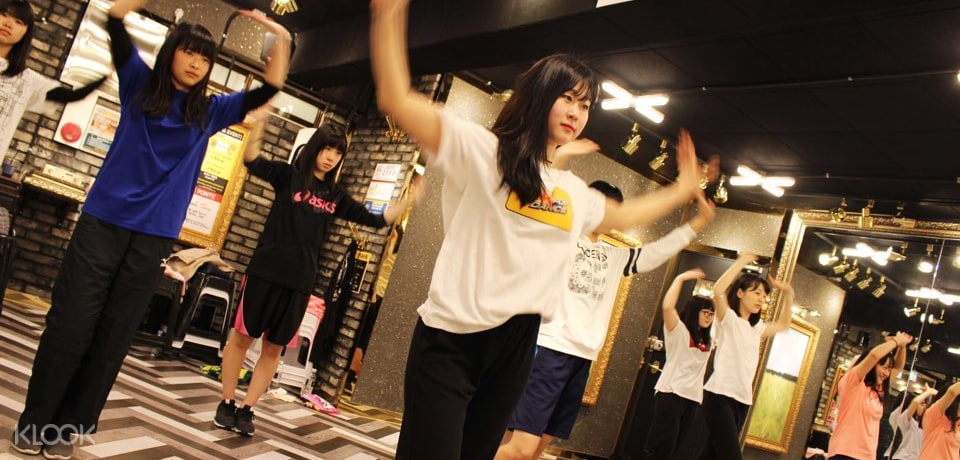
K-pop Dance Studio Class Learn popular K-pop dances and choreography.
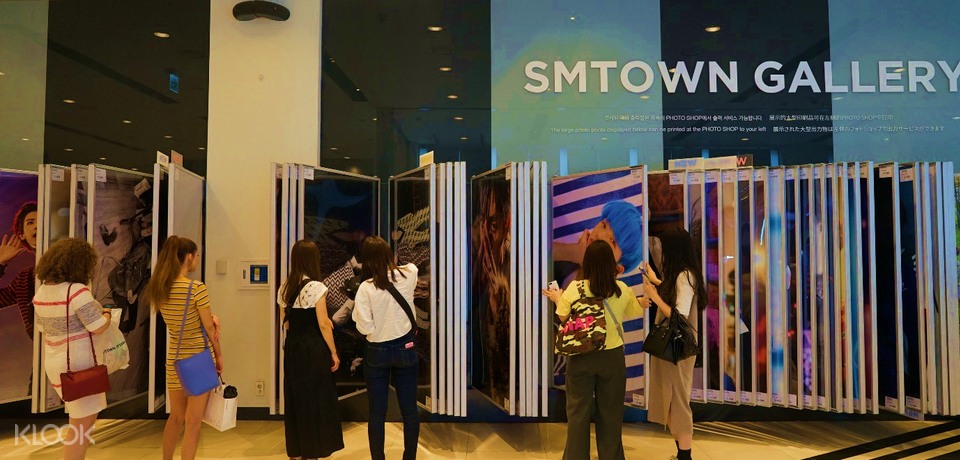
Seoul Hallyu Kpop Tour Ultimate KPop experience for your Seoul itinerary!
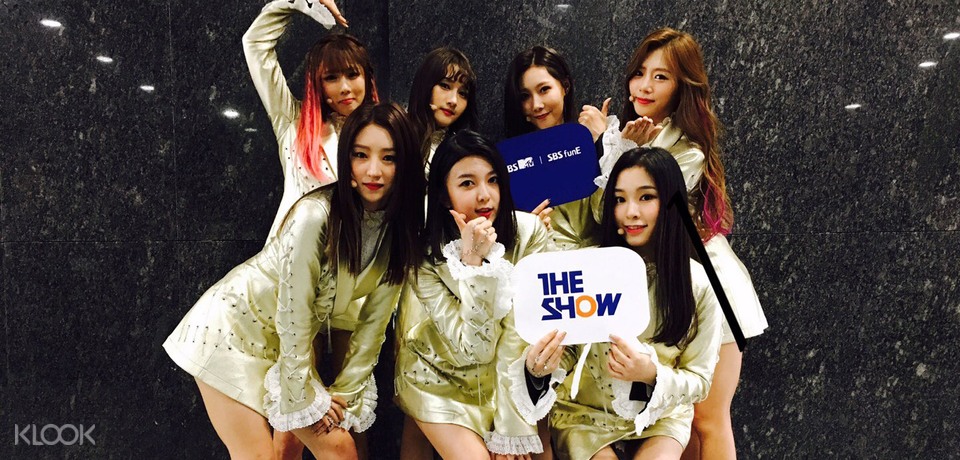
SBS MTV “The Show” Package Backstage access to live sets and broadcasts.
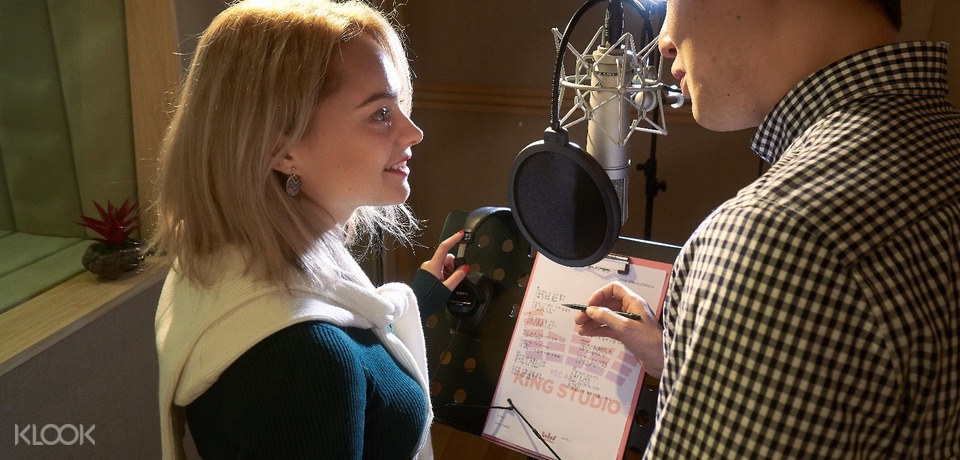
Everland Park Record your own K-Pop song at King Studio.
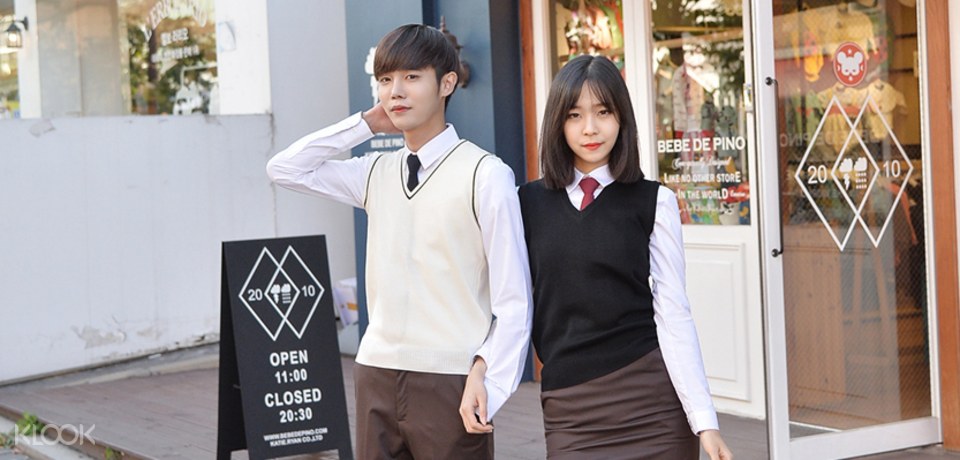
Korean School Uniform Rental Day rental of a Korean school uniform.

“Oppa” Tour Tour Seoul with an attractive “oppa”!
◘◘ Korean Performances ◘◘
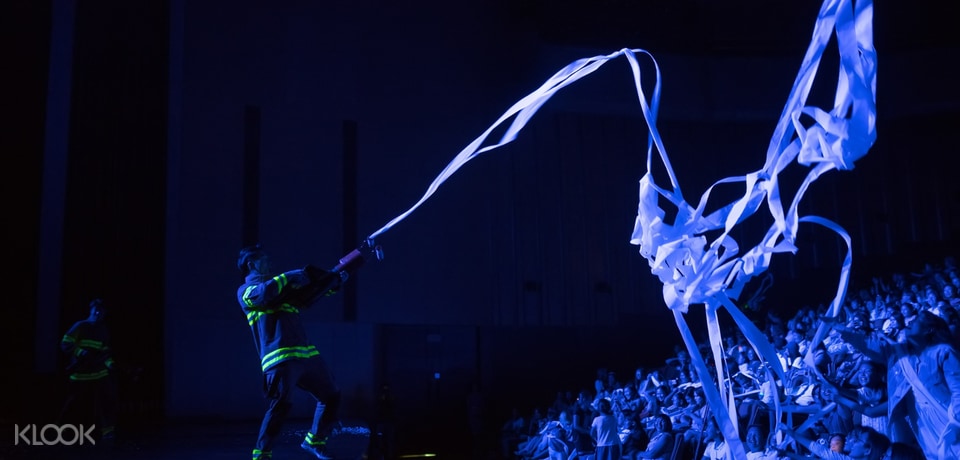
Fireman Show Action-comedy show full of stunts.
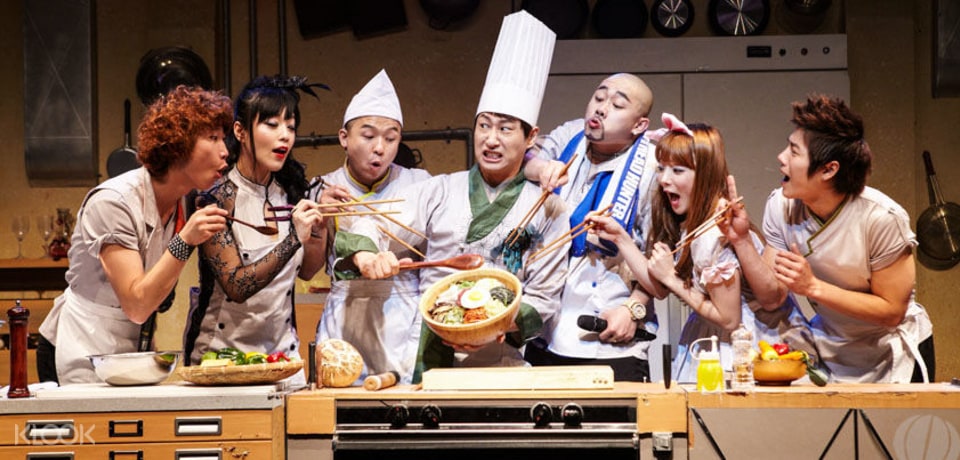
CHEF: Bibap Show One of the best Korean musical shows..
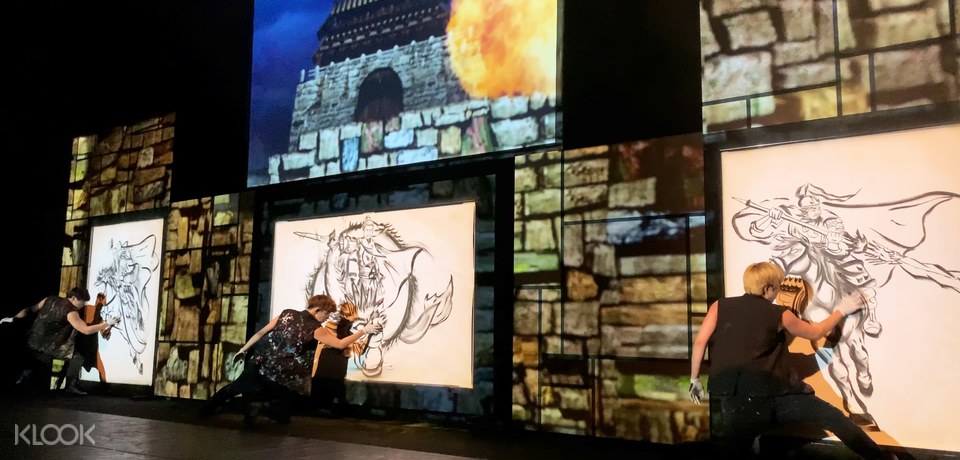
The Painters HERO Famous live painting non-verbal performance.
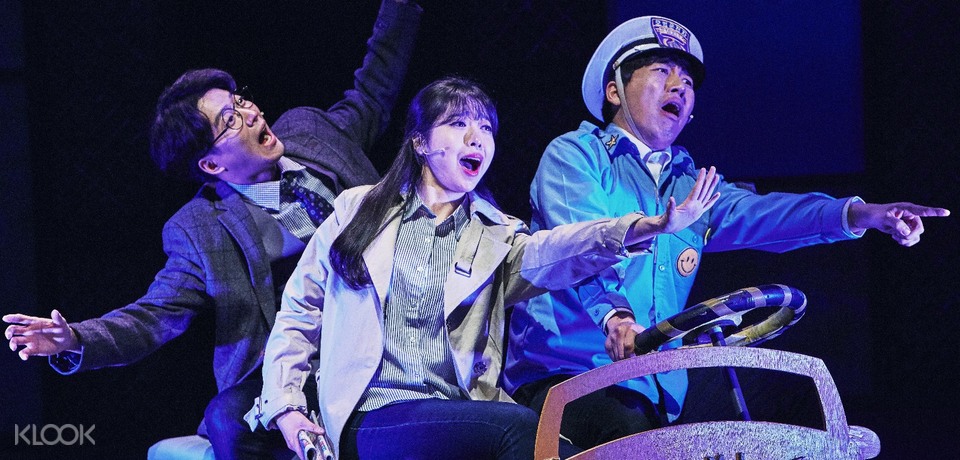
Finding Mr. Destiny Korean musical with subtitles.
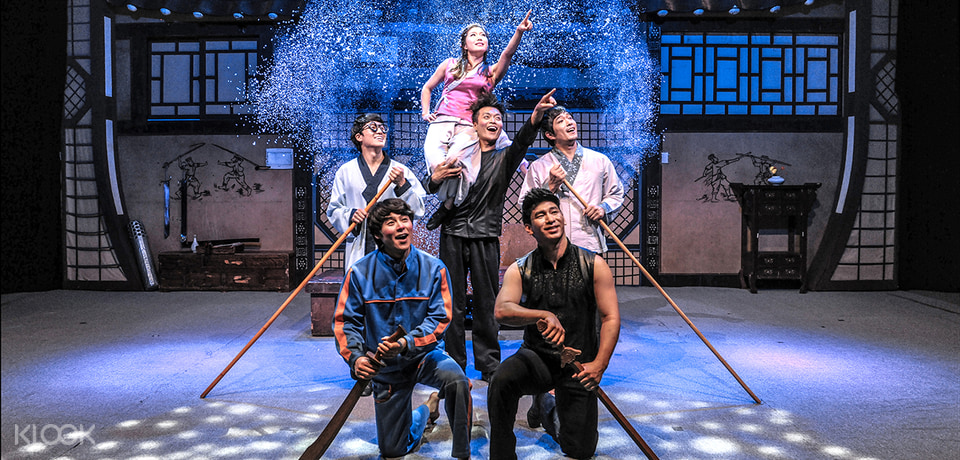
Jump – Martial Arts Show Seoul’s favorite martial arts theatre show.
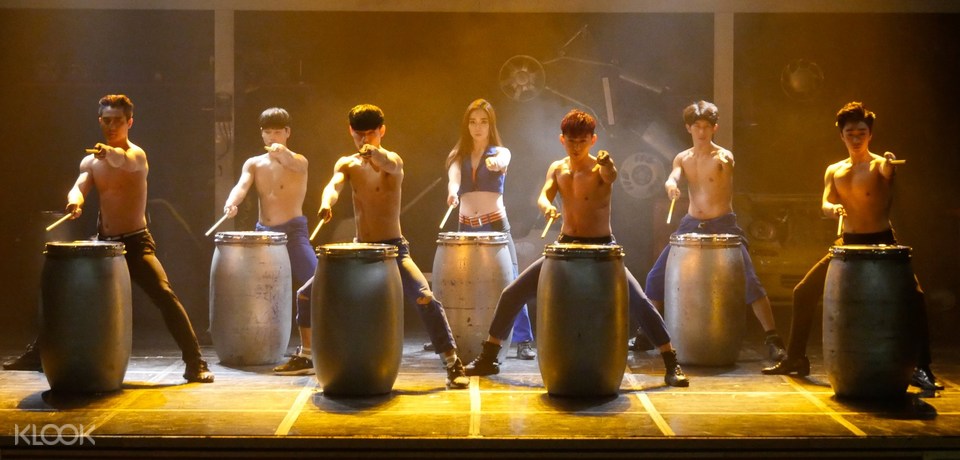
Fanta Stick Show Powerful percussion show.
◘◘ Beauty ◘◘

KPop Shoot & Makeover Full makeover at a famous studio.

Pre-nup Photoshoot Pre-nup shoot with makeup, hair, and clothes.

Korean ID Shoot ID shoot in Korean style makeup and hairstyle.
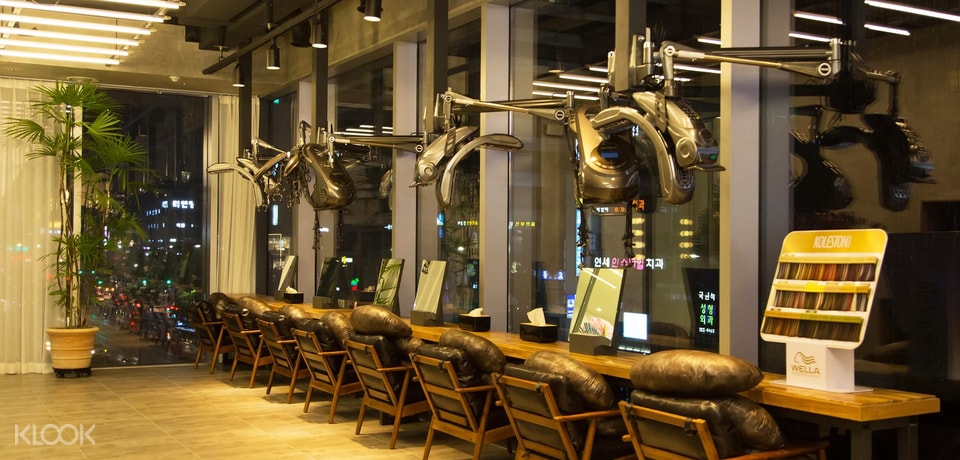
Korean Salon Service Style your hair in Gangnam’s top salon.
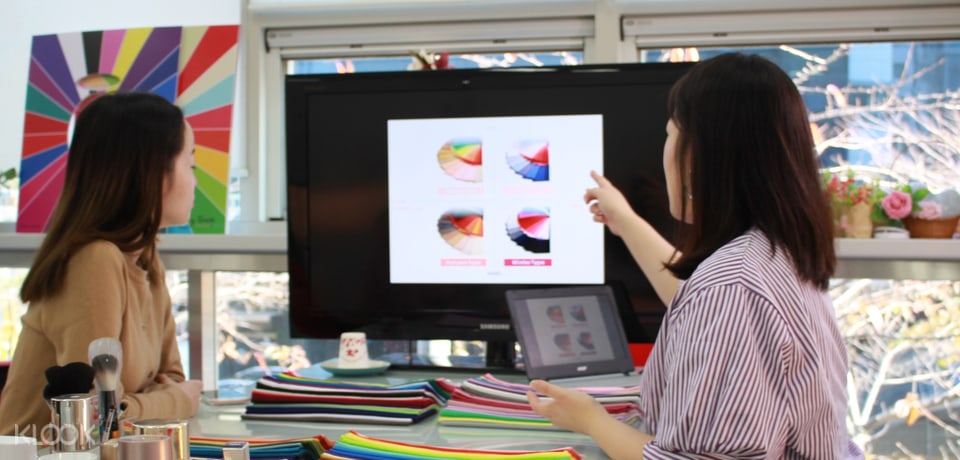
Professional Korean-Style Beauty Consultation Learn about your own personal color based on your skin, etc.
◘◘ Workshops ◘◘
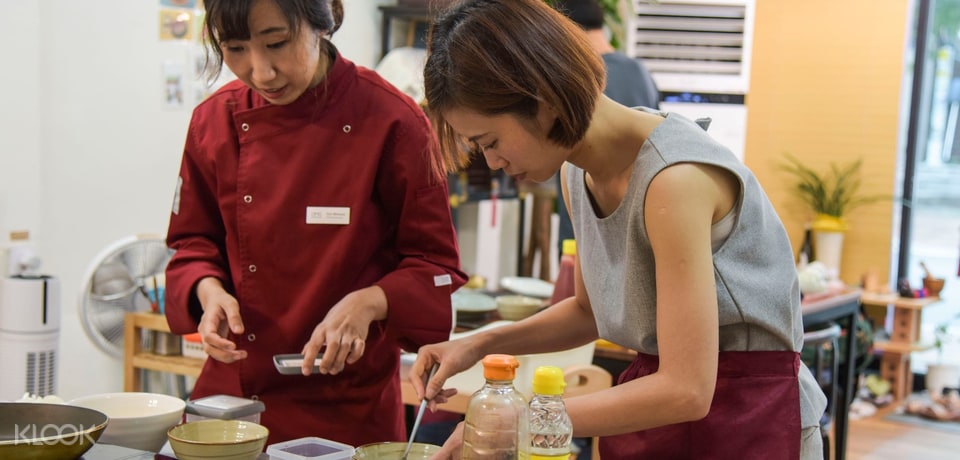
Cooking Class Cook authentic Korean dishes with a local.
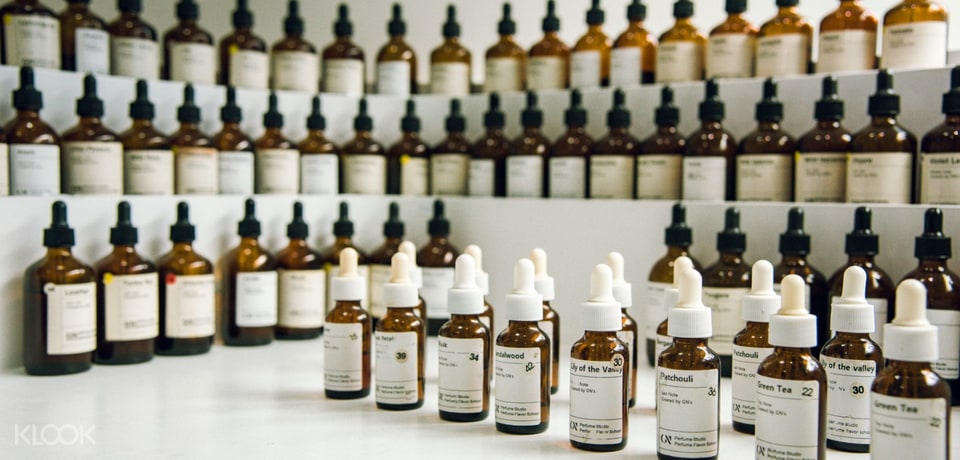
Perfume-Making Class Create your own signature scent.
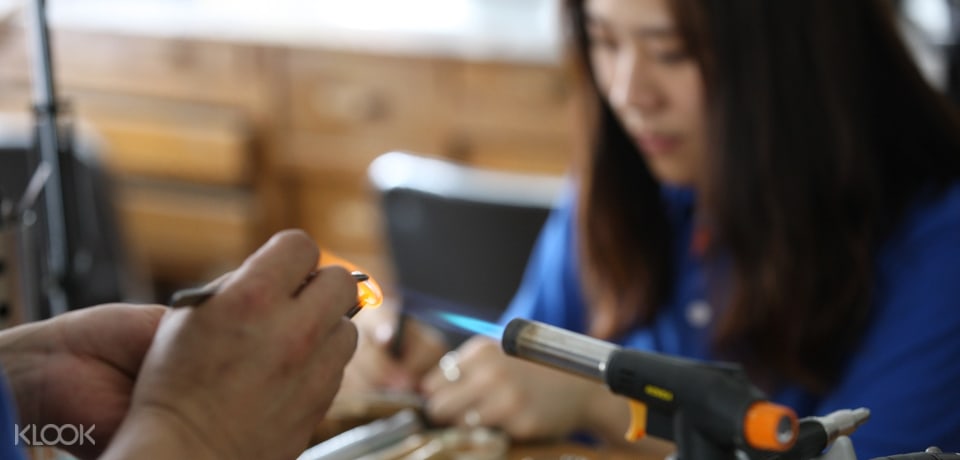
Ring-making Workshop Create your own unique accessories!
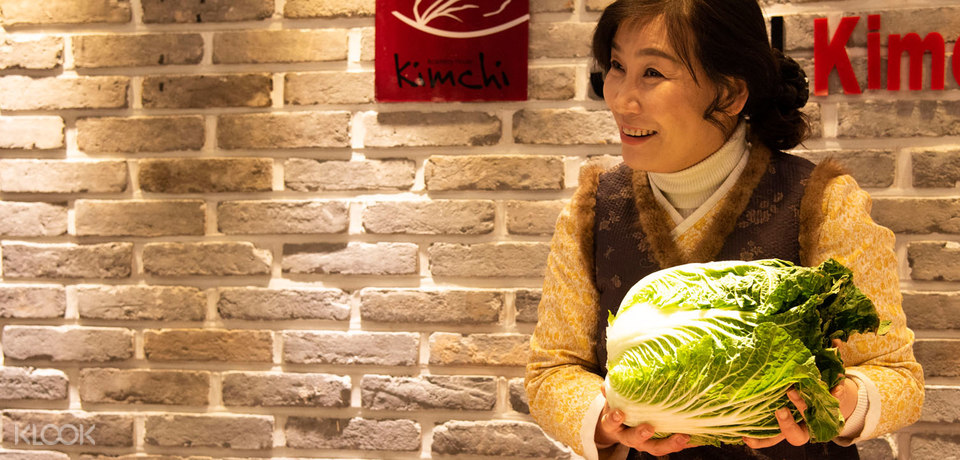
Kimchi Class Learn how to make kimchi and topokki!
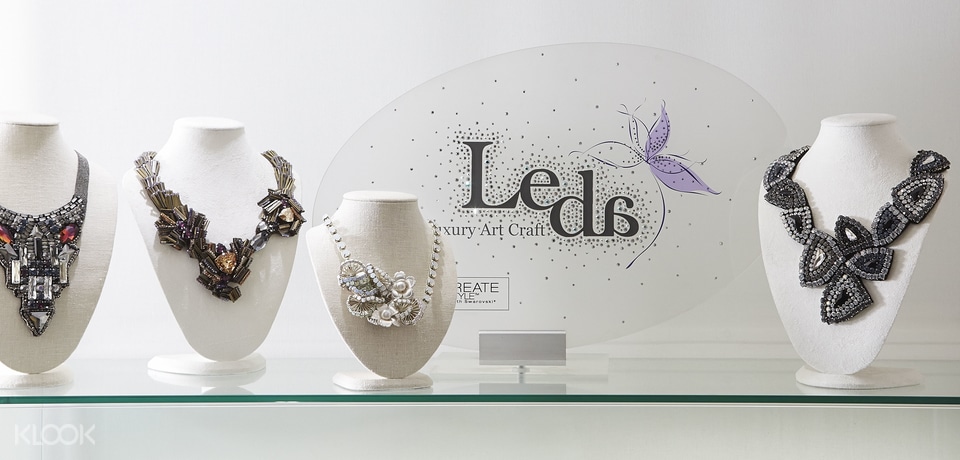
Handmade Jewelry Experience Learn hands-on exquisite art of jewelry making.
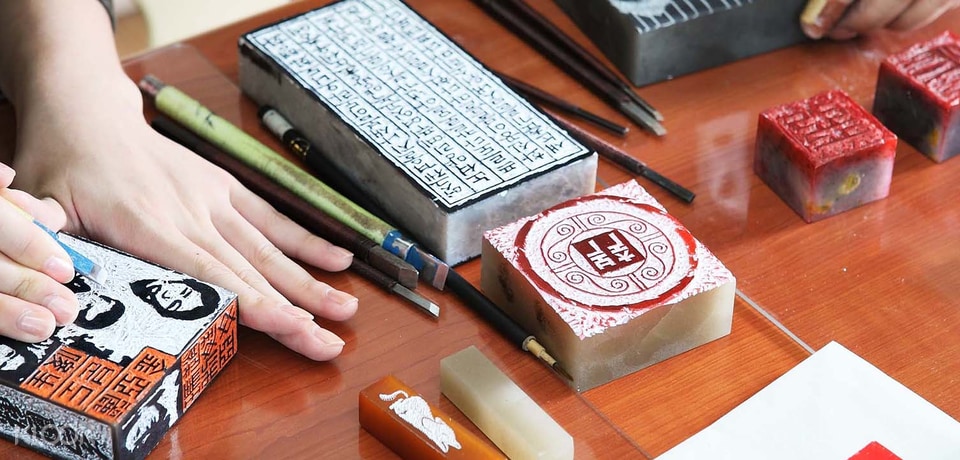
Handmade Stamp Engraving Create your own Korean-style hand engraved seal.
◘◘ Food & Restaurants ◘◘
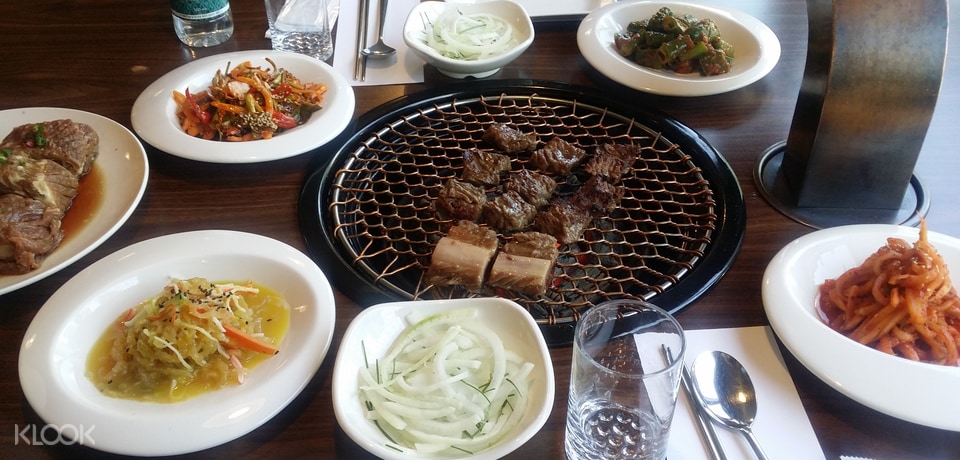
Assorted Grilled Beef Enjoy a Korean BBQ meal
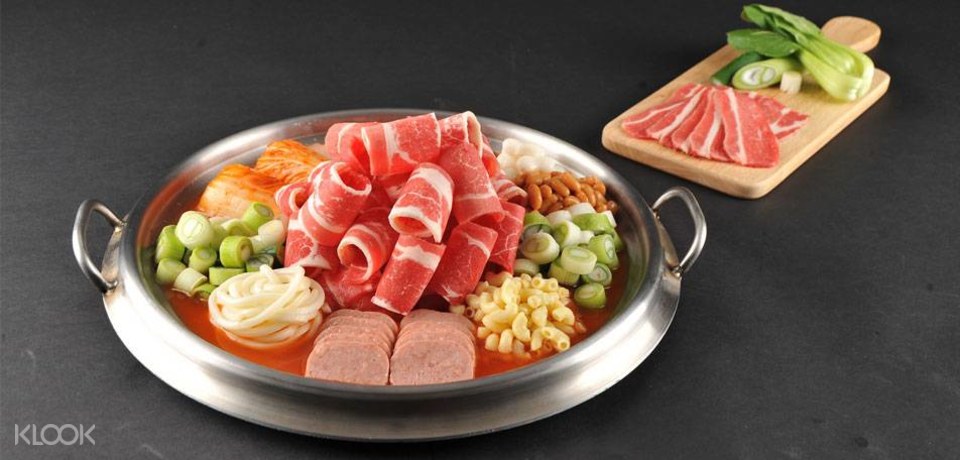
Budae Jjigae Try budae jjigae, the iconic Korean ‘Army Stew’.
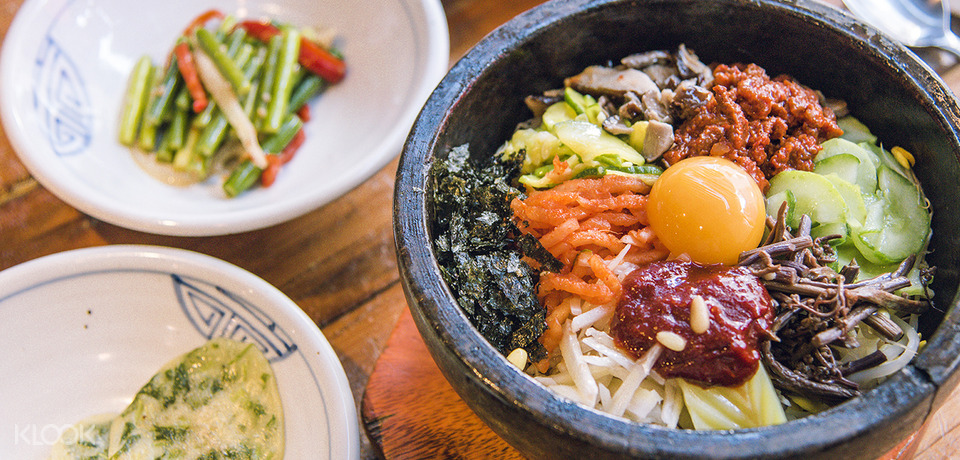
Gogung Bibimbap Specializes in authentic Bibimbap dishes!
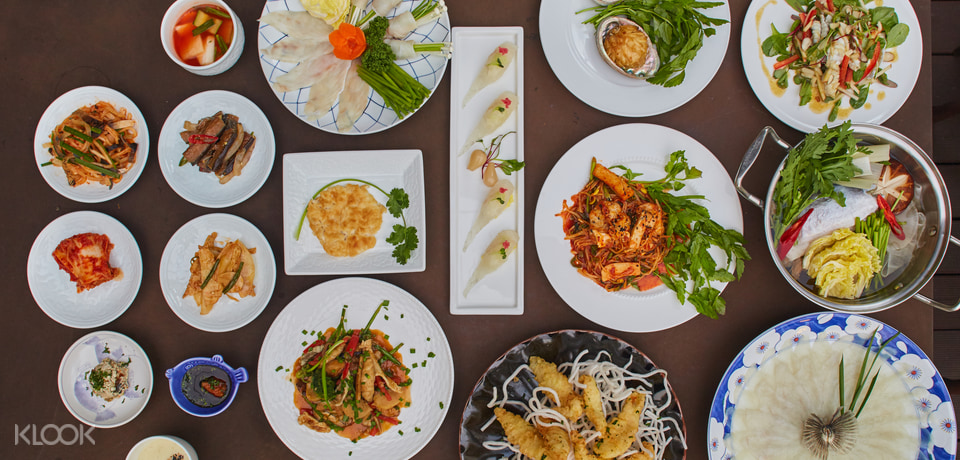
Puffer Fish Set The first puffer fish restaurant in Seoul.
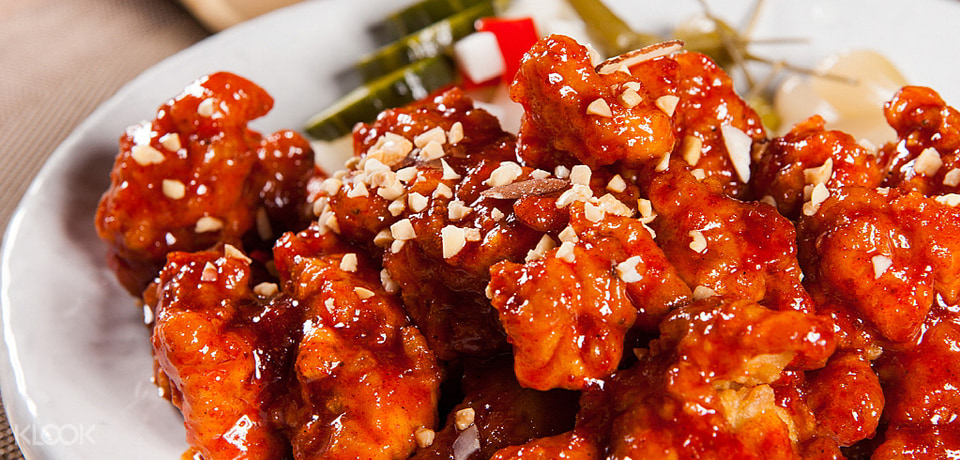
Korean Street Food Experience Korean eating and drinking culture!
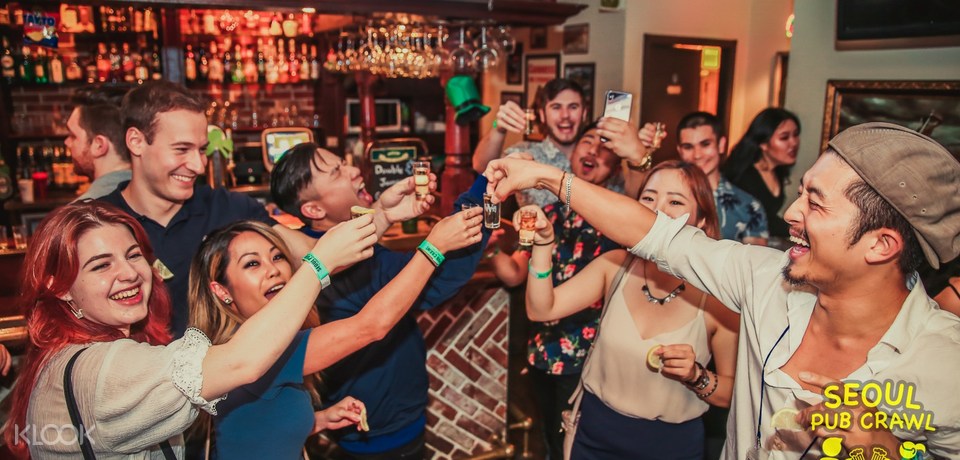
VIP Seoul Pub Crawl Experience Seoul’s vibrant nightlife!
◘◘ Day Trips from Seoul ◘◘
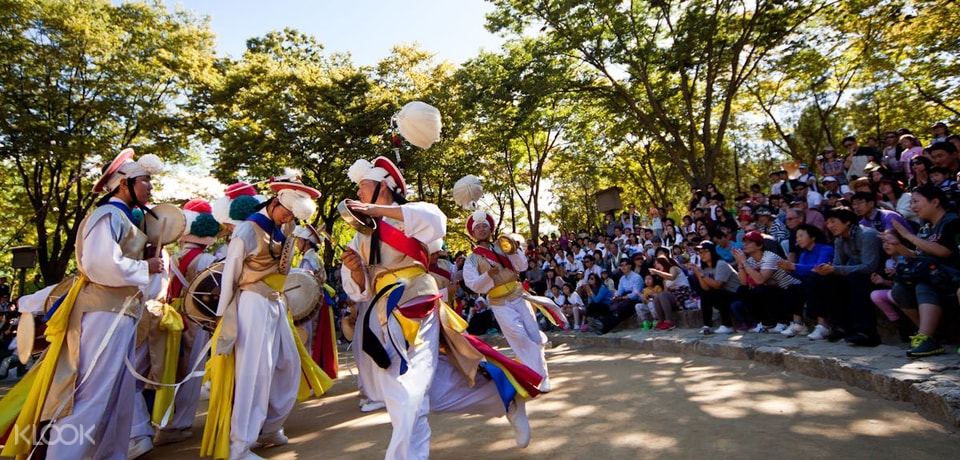
Minsok Korean Folk Village + Gwangmyeong Cave & Uiwang Rail Bike Day Trip.
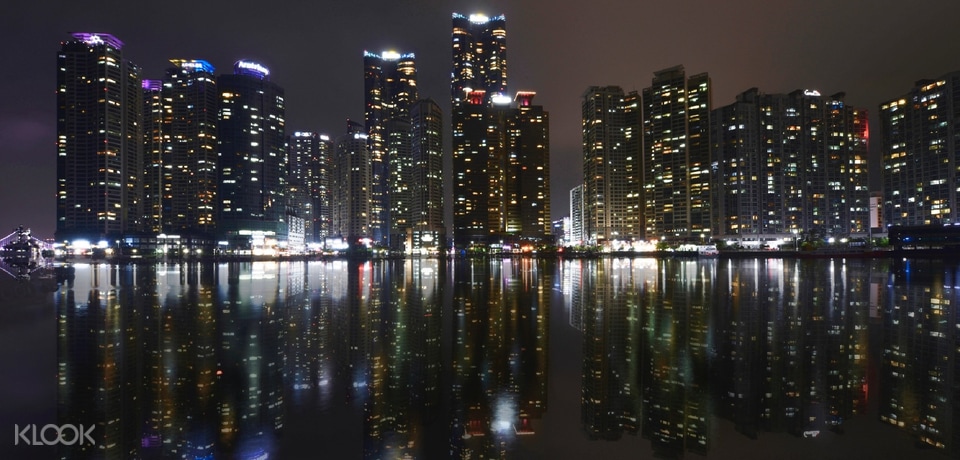
Busan Experience the best of Busan.
Booking Essentials

TIP: It’s a good idea to crosscheck the prices with other popular travel insurance providers like World Nomads and HeyMondo (as my reader, you get 5% off)! . However, take note that a travel insurance’s affordability typically means lesser coverage; so please always ensure that you read the fine print in order to decipher which travel insurance company is the right fit for you and your trip!
The Best Tours in South Korea?
Come and check out this list of the top things to do in South Korea which features the best activities and tours to do in Seoul, Busan, Jeju and more!
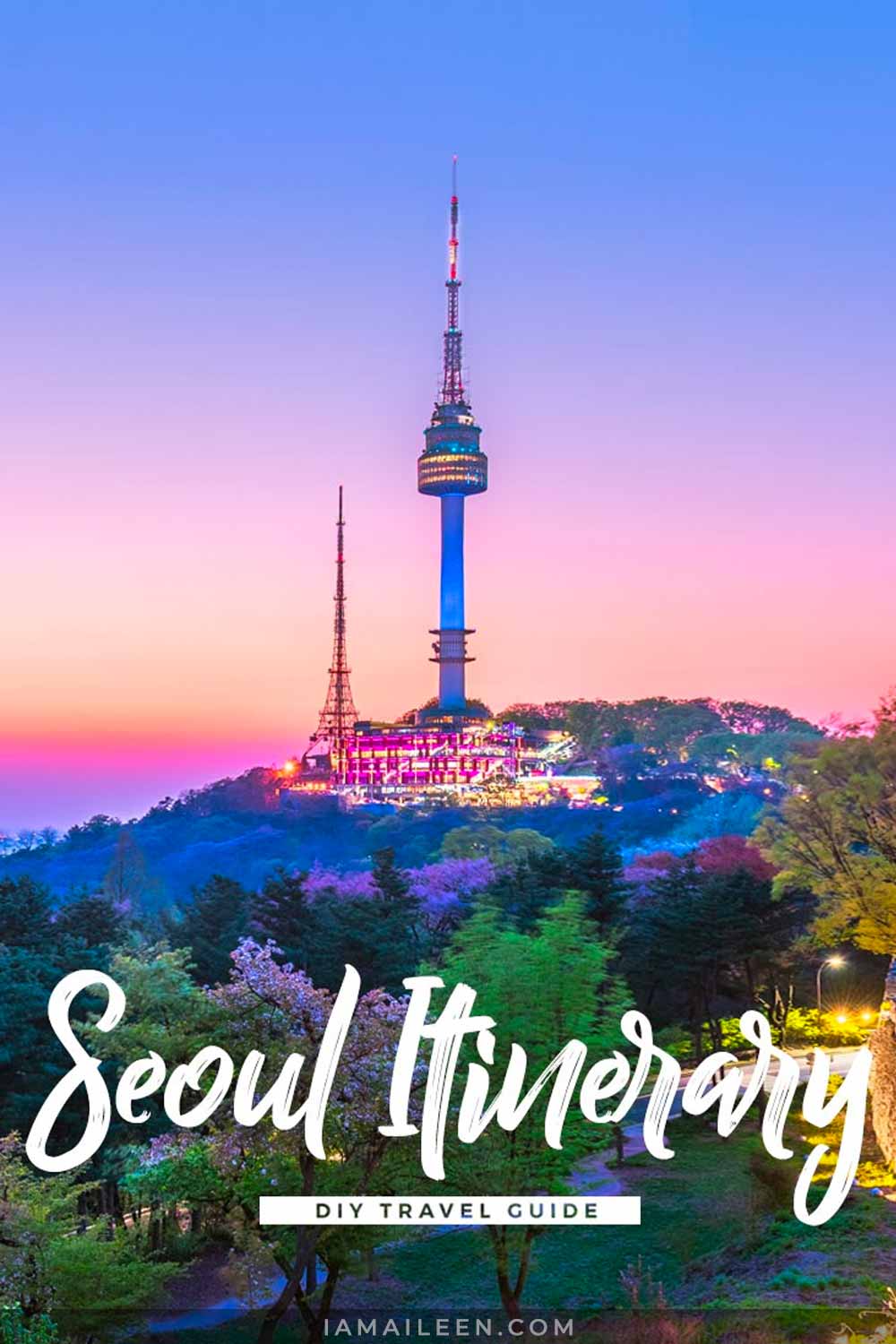
There’s still so much to see in Seoul! …But I believe that my Seoul itinerary travel guide here is already a good start.
Please feel free to tweak this itinerary and make full use of my extra activity suggestions in order to make your trip shorter or longer and better fitting for your travel style. Enjoy and do let me know how your trip goes!
Have you seen my latest vlog?

Hey there! I am Aileen Adalid. At 21, I quit my corporate job in the Philippines to pursue my dreams. Today, I am a successful digital nomad (online entrepreneur, travel writer, & vlogger) living a sustainable travel lifestyle.
My mission? To show you how it is absolutely possible to create a life of travel no matter the odds — and I will help you achieve that through my detailed travel hacks, guides, resources, tips, and MORE!
Follow Along
CURRENTLY BASED IN: The Philippines
- 100k Followers
- 51k Followers
- 80k Followers
- 10k Followers
- 23.1k Followers
Join over 1 million readers worldwide and get my FREE packing checklist, gain exclusive access to travel giveaways and more!
Success! Next, please check your email to confirm your subscription.
GET FREE PRINTABLE NOW!
Trending Now
Korean visa application requirements for filipino tourists in manila, philippines (single / multiple entry).
Make your South Korea travel dreams come true and get a single or multiple South Korean visa in Manila, Philippines!
Top 10 Things to Do on a Trip to South America
South America is one of the most diverse continents — full of natural wonders and fascinating cultures. Join us as we explore the top 10 things to do.
Top 10 Things to Do for Your First Tibet Travel
Make the most of your Tibet travel with these top 10 must-do activities, from exploring ancient monasteries to trekking mountains!
Geisha of Japan: Understanding the Facts, History & Myths
Japan’s geisha are cloaked in mystery & secrecy resulting in a number of false ideas about them — so let’s get the facts straight!
Maximizing Your Miles: Unlock Budget-Friendly Travel Hacks & Tips
Start traveling smart! Take note of these travel hacks that will help you in maximizing your miles or do points hacking.
Latest Posts
Learn Today
How to start a successful blog, 134 comments.
Your Seoul itinerary guide is a dream come true for wanderers like me! Planning a trip can be overwhelming, but your detailed 5-day plan simplifies everything. From activities to sights, you’ve covered it all. Seoul, here I come—thanks to your fantastic guide! ❤❤❤❤
Going to Paju would be another great option for a day trip from Seoul, especially during the week. It is close, easily reached by bus, and offers amazing landscapes no matter the season.
Seoul is one of my favorite cities in the world! I’m dying to return and explore it more.
If I was given a chance, I would love to go to Seoul. Seoul is one of my dream places to go in the near future and your blog really helps and encourages me to never stop dreaming. Thank you for this :))
Submit a Comment Cancel reply
Your email address will not be published. Required fields are marked *
Be notified of follow-up comments by email
Be notified of new posts by email
Submit Comment
Pin It on Pinterest

Explore the world with tourHQ
- Destinations
- I am a Guide
- I am a Traveller
- Online Experiences
- Currency (USD)
South korea
A land of mist-topped mountains and sparkling beaches, pristine skyscrapers and the sprawling megalopolis of Seoul, South Korea is a bucket lister for sure. Get a tourHQ guide to show you around.
Search Cities in South korea
South korea Tour Guides

Yeongok Kim
Hi! my potential customer!!My name is Yeongok Kim in Korean, and Alice.Alice is more easy to call ...
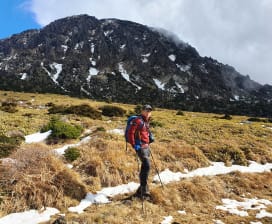
An officially certified and experienced English tour guide as well as a mount expert ...

Justin Choi
I was born in Seoul, Korea and lived 5 years in Pitt Meadows, BC, Canada. There I learnt ...

Matthew Yun Debrecen
(Not available at the moment sorry)Hello, My name is Matthew and I'm 21 years old. I am not a ...

I am a native of South Korea with over 10 years experience as a professional guide. I am fluent in ...
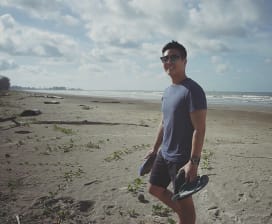
Always on the lookout for various stress relievers, I found love in food, cycling & at times ...

Moisés Redondo Ortega
Hello, my name is Moisés, I am from Córdoba, a city in the south of Spain. I am a passionate ...

Hyosang(Chris) Lee
My name is Hyosang or Chris Lee and I am a Licensed tour guide since 1992.Sometimes being in a ...
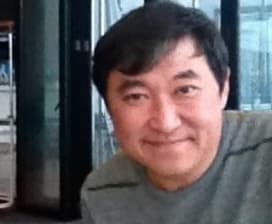
Suyang Chang
Hello, I'm Suyang, since I am a native who has lived in Busan for decades, I know better than ...

Shawn Morrissey

Welcome to Korea. I am a tour guide. If you want to talk about Korea, please contact me. We can ...

An old Korean proverb says, “even if you have to crawl on your knees, get yourself to Seoul!”; though the 600-year old megacity has undergone a constant flow of changes, this maxim remains true. South Korea's capital of almost 12 million is regularly likened to a phoenix, risen from the ashes of the Korean War as a cultural, economic and political leader of the Far East. And though this ultra-modern megalopolis may feel infinite, it’s easy to get up close and personal. Since most travel guides to South Korea are quick to point out its country’s historic sights are reproductions, it’s a destination known for the new: sleek skyscrapers, miles of endless neon signs, and vast shopping districts reflecting a population preoccupied with the finer things in life. It continues to be one of the safest cities in the world, with a low crime rate and a highly educated citizenry. Consistently topping itself with infrastructure projects in the works, South Korea seems to always be looking into the future, and it looks incredible.
Tell us your destination, date, and group size.
Our team of travel experts and guides will design a tailored itinerary just for you., enjoy your trip with peace of mind knowing everything is taken care of..
Say Goodbye to Travel Stress
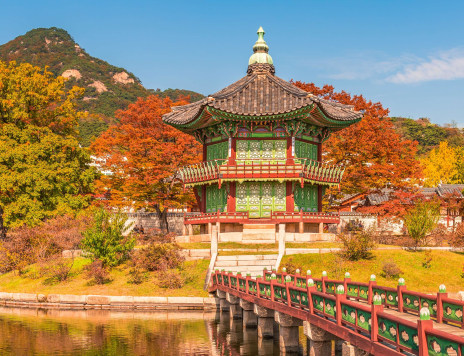
Choose Currency Close modal
- USD US, dollar
- GBP British Pounds
Cookie icon We use cookies!
We, and third parties, use cookies for technical and analytical purposes, for marketing purposes and for integration with social media. For more information, refer to our Privacy Policy and Terms of Consent.
By clicking on 'I agree', you consent to the use of these cookies.
1. Find your Tour
Select from our amazing list of private tours & experiences or KoreanTourGuides.
2. Message your Guide
Customize your private tour or experience with your KoreanTourGuide or keep it as is.
Discuss available times and customize your tour with your guide before booking.
3. Enjoy your Time!
Confirm a time and place to meet, then sit back, relax and enjoy your time in Korea!
Top Tours & Experiences
Try one of our signature tours of south korea and see the highlights or a local escapade to immerse yourself within the culture and society. meditate in a state of zen or take a cooking class to learn about korean fermented foods..

Seoul in a Day: Private Van + Guide
Are you planning to visit Seoul for the first time? I can customize the tour so you can maximize your time while you're in Seoul and see the locals, feel the culture, and taste the local food within a day! The itinerary is 100% up to you and I can recommend you many interesting places to explore in Seoul! A friendly driver with a van will bring you anywhere you like within Seoul and a professional licensed tour guide will accompany you to show you this lovely city with countless things to discover culturally and historically!

The All New DMZ Tour
Rumor has it that the JSA (Joint Security Area) part of the DMZ will be opening soon. As soon as we find out, we will be the first ones to tell you. But, no matter what any other tour agency tells you now, JSA of the DMZ is currently closed. So we've discovered an alternate course off the beaten path for people who really want to see the DMZ. It's definitely becoming more and more one of the hottest places to see in Korea. It's been in hot demand ever since presidential summits taking place there. But since the JSA area is shut down there for renovation (or was that reunification?), we are introducing new place to see in replacement of that. The DMZ is always a fascinating place to see as it consistently transforms itself as a symbol of the Korean War to a beacon for peace and hope. The DMZ, or the Demiliarized Zone is a 247 KM (150 mile) border that divides the Korean peninsula into North and South Korea. That being said, where one section of the DMZ closes, another part is open for viewing into North Korea. We will trek all along the DMZ until we find an opening, so doing the tour one day could be totally different from then next. We will try to start out by going through the Military Checkpoint and go up to the Dorasan Observatory to look into the city of Kaesong in North Korea. Kaesong is also the ancient capital of Korea before Seoul during the Goryeo Dynasty from 918AD to 1392AD. We will also go underneath the DMZ through a tunnel that was dug up by the North Koreans during the height of the tensions. It would have been used to plot another surprise attack on the South Korean had it not been told to us by a North Korean defector. When we discovered them, the North Koreans retreated and painted the walls black, saying they were looking for coal. The itinerary is subject to change due to actions taking place on the ground and with the United Nations. Should JSA open up, you will be sure that will be the first place we try.

Understanding the Life of a Korean Tour
First we will dress up like a Korean in Korean traditional costumes. The we will talk about the birth of a Korean, the life & death of a Korean and even go so far as to talk about the afterlife of a Korean. From start to finish, we start with when babies are born to the pinnacles of their careers. We explore how they lived, through the culture & heritage sites of Seoul. 2 half day courses, mix and match, or combine them for a full day tour of the city! This is one of our more popular tours. By the end, you will be an expert on the Korean people, traditional architecture and the history of Korea. Book now to get a feel for the Koreans lived during the dyanstical period of the Joseon Kingdom (1392AD - 1910AD).

Seoul Shopping Tour
Showing around the most famous shopping area of Seoul. Best shopping places and will guide you to find anything you want to buy and to help in the right price and place by introducing unique local stores. I will take you to Myeongdong, Hongdae, Dongdaemun or wherever else you'd like to visit.

Nami Island & Petite France Tour
After a hotel pickup from your hotel, you will travel to Nami Island. It is situated 63km from Seoul in the middle of the Han River. Nami Island is a place for rest and relaxation. Human beings, animals and trees share peace, love and harmony far away from crowds and civilization. You can have a wide variety of different cuisines and dining experiences in this island. After Lunch, we then continue to travel to Petite France, a French Culture Village. Also you can mix and match Petite France with other tour sites in the area like Jade Garden, Garden of the Morning Calm or Gangchon Railbike.
Want to offer a tour?
We are always looking for exciting new tours and experiences to offer our beloved travelers. If you’d like to list something with us, feel free to sign up with us today!
Private Virtual Tours
Introducing private virtual tours by yours truly. the best time to go for a true south korean experience is now travel and find happiness within yourself right from your own home., introducing private virtual tours, private virtual tour.
We will take you through the palaces and talk about Korean traditional architecture as well as walk through the modern sides of Seoul!
Take a Tour Virtually Anywhere in Korea
Ok so that was a play on words, but still we can go anywhere on the peninsula to provide you with a virtual tour anywhere in the nation!
Let's Window Shop in the Myeongdong District!
One of our KoreanTourGuides, Jin Lee talking about getting tattooed eye brows in Korea. Is she going to go through with it??
Top Tour Guides
Our team of koreantourguides are highly professional, licensed and go through a serious vetting process. they offer their own tours of south korea, but you can always ask them to customize it to your own interests. feel free to book them directly here by the hour..

I am a Korean-Canadian professional English-speaking tour guide with a certified license. Happiness, Fun, Laughter, Joy, Delightful - These are the words that come to my mind when I think of my tours and my guests. What's your favorite thing to do when you travel? Do you want to experience fun and dynamic Korean culture and history with a positive, bright, and loving local professional tour guide? Then, let's travel Korea with Pam! I was born and raised in Korea until I was 15 years old, then I resided in Canada for 17 years. I decided to become a tour guide in Korea after I traveled around the world because I realized that I love Korean food, history, culture, and people! I have conducted more than 400 professional tours with over 2, 000 travelers from 65 different countries for the past 3 years. I speak native level Korean and English and I can also bring both the Eastern and the Western cultures together and keep you interested while we explore this amazing country. Let's have some fun and experience the authentic Korean culture and local food! Pam's Private Tour Guiding Experiences (South Korea) * Ministry of Foreign Affairs - President of Inter-American Development Bank (IDB): VIP JSA Tour, Counsellor & Deputy Chief of Embassy of The Arab Republic of Egypt: Seoul City Tour, Governor of Iowa from the United States: VIP JSA Tour * World Bank - Vice President and Country Director of East Asia and Pacific Region: VIP JSA Tour * United Nations - Head EDP and DPKO: Seoul Vicinity Tour * Korean Air - Former minister of the Ministry of Culture of France: Seoul & Jeju Island Tour * CHANEL - Seoul Chanel Walk Fashion Show VIP actress Kristen Stewart and liaison from France: Seoul City Tour * ADNEC Group - Managing Director of Abu Dhabi National Exhibitions Company: Seoul City Tour * Samsung Engineering - The State Oil Company of Azerbaijan Republic (SOCAR), Vice Presidents: DMZ Tour * Sun Hydraulics - Board of directors from Europe and North America: Seoul City Tour * Hotel VIP Guest Tours - Park Hyatt, Grand Intercontinental, Conrad, JW Marriott, Grand Hyatt, Ritz Carlton, Four Seasons, etc.

Always be Happy and wish God bless you! Hi, I am a tour guide in S.Korea, call me Bella which means Beauty from Italy. If I say about me, Love traveling by my own, enjoying beautiful my life, make people laughing with warm-hearted, like to eat local healthy food, try to do what I haven’t do, kind and considerate, no worry to meet strangers, someone say to me looks just healing, have diverse life experiances, have at least over 8years of work experience as a local tour guide in S.Korea so it would be suitable one to do as a tour guide for you. As like what I mentioned of me, it’s very important that meet a tour guide while you are on the tour, will make it worthy or terrible. I will for sure say if you join with me, never regret ever, you’d have a great memory only. You will have a good luck with me! Let's go~ Brief profiles - Native in Korean, fluent in English, 流利汉语 - Professional English tour guide with a license - Professional Certificate in TESOL, TYC-Diploma, Canada - 5 years Researcher of Internet-Broadcast-Division - M.A. degree of Visual Communication -Instagram, Bella Park [All in good time with me]

Sung-Hyuk Kwon
6 years experienced freelance English walking tour guide in South Korea I am planning and leading customized, package, and incentive tours (on old/new Korea, K-pop, shopping, pretty towns, nature, B2B/B2C meetings, etc). I also guided Korean travelers in 20+ countries in Europe, Africa, Philippine, and Canada for 3 years while managing event guest itineraries & escorting in the United Nations and NGOs. Clients have truly appreciated my efficient tour routes, unique storytelling skills, and deep knowledge of local spots. They have valued me as a colorful, flexible, and pleasant guide who naturally makes fun time, handles any situations, and always maximizes clients’ satisfaction. - Propose customized tours. - Itinerary change, (price will change relatively) time schedule, and number of clients are flexible. - Give Korea travel tips.

Hello ! I am a licensed tour guide with fluent English and great knowledge about Korean culture and history. I obtained this license in 1998 and since then, I have worked on and off as a part-time and a full-time tour guide for travel agencies and Korean governmental agencies. I majored in English and literature in university and a graduate school and also studied in Australia. I chose to become a tour guide as I love being with people and I am a great people person. I am also a non-stop chatterbox who tells you about Korean culture and history that is not written in the travelers' guide book. You will be all ears when I tell you behind-the-scenes stories of Korean history. Magical things can happen when you are with me as I will do my best to make your wishes to come true just like Genie in a bottle in the story of Aladdin. (^-^) Traveling all over the places with my valuable clients is the biggest happiness to me. I think I am a born traveler and a tour guide. I never get tired from any type of tours. As a licensed tour guide, I design tours for foreigners who want to visit Korea. I offer tour guiding service anywhere in Korea for a number of days on request. I am also available for medical tours and plant tours around Korea. I have been to many places all over Korea as a tour guide for foreigners and all over the world as a tour leader for Korean tourists. I have traveled about 50 countries so far including 10 countries in Africa, America, Canada, England, Germany, Denmark, Belgium, Turkey, France, Spain, Sweden, Netherlands, Portugal, Monaco, Czech, Austria, Swiss,Hungry, Armenia, Azerbaijan, Georgia, Australia, New Zealand, Peru, Bolivia, Argentina, Brazil, Thailand, Cambodia, Indonesia, Malaysia, Philippine, Laos, Vietnam, China and Japan. So I have lots of interesting tour episodes to share with you. I am very lucky because my job does not keep me in one place. As for my previous career, I worked as an English teacher for 9 years and worked as an interpreter for 7 years for an American auto parts manufacturing company that supplied to Hyundai and Kia Motors. I still work as an English interpreter for international events whenever chances are given. I would like to have the great luck to see you walking beside me with a face full of curiosity about Korea. * Some of the Outstanding Experience as a Tour Guide & Interpreter for International events May 2018 = Interpreter and a tour guide for graduate school students of Oxford university April 2018 = Tour guide for vice-ministers of national defense of 17 different countries June 2017 = Tour guide for international congress of lawyers Feb. 2016 = Tour guide for a group of visiting IVY league professors from USA Sept. 2015 = Interpreter and a tour guide for the International Medical Exposition April 2015 = The 7th World Water Forum : Sightseeing tours for VIP guests in Busan and Kyungju April 2012 = Volunteer interpreter for Seoul International Wheelchair Marathon Competition Sept. 2010 = Interpreter and a tour guide for IAPMA Congress for 10 days (International Association of Hand Papermakers and Paper Artist) * Other Work Experience 2012 ~ 2018 = Enthusiastic tour guide for international tourists in Korea 2004 ~ 2011 = Interpreter for a global American company named Gibbs- Diecasting that supplied its products to Hyundae and Kia Motors. 1995 ~ 2003 = English teacher * Training Programs that I completed. March 2016 - Intensive Premium Tour Guide Training program organized by Korea Tourism Organization Sept. 2015 - Premium Tour Guide Training Program Specializing in Tours for Muslims ★★★ Some comments I got from my beloved clients from all over the world. At the tend of the tour I always see my clients put their thumbs up for me which is the sign of being satisfied with my tour. ★★★ ★ Best tour guide ever. We are a group with children (15, 11 and even 1 year old baby). Jinny manage to find something interesting for every one of us. Her devotion and qualified explanation made our Seoul tour a beautiful experience. We had a profound touch of what Korean spirit means. Thank you very, very much. Highly recommended guide!!! = Written by Dana Ivan from Romania ★ Jinny Kim is a great tour guide! One of the best decisions I've made during my trip to Seoul! Not only was she prompt with our schedule and able to squeeze in EVERYTHING that we asked to see but she was also very kind, generous, and funny. She stayed with us past the time we were scheduled and made sure we got home to our original stop. She really does love spending time with people and you can tell she really enjoys being a tour guide. I definitely recommend her to be your choice in Seoul! = Written by Leilani Allen from America ★ I cannot praise Jinny enough! We booked a private tour of Seoul by van and got to see many of the highlights and also hidden gems. Her explanations and personal insights made all the difference. Her English is superb and she is just so much fun to be with! She even worked overtime to make sure we got to see everything we wanted to see and didn't even charge us the full amount she was entitled to for all her extra time We really feel like we have a friend in Seoul and hope to see her again! = Written by Carol noonan from America ★ I am happy to say that Jinny Kim was outstanding. She was prompt and had worked out several options to meet my preferred interests of Seoul. Jinny is a fun person and is so committed to ensuring she achieves her clients tour wishes. I cannot recommend her highly enough. A sincere big thank you. =Written by Ian King from England ★ In spite of her funny soul and smiley face, Jinny Is a very professional guide with the area and place she knows. She took me to many places and during that also she is looking for something new. She has many photos of the places she visited before. As for me I highly recommend her for any group like to enjoy and visit nice, historical, shopping and entertainment places, also I wish I can meet her again in my new trip. = Written by Saher Hanosh from Israel

Hi! My name is Jin lee and I'm working as an English tour guide in South Korea! I deal with every tours in every places! It's almost over 5 years that I've started to work as a tour guide in Korea and It's still super amazing! If you are looking for a fun and joyful tour guide, please don't hesitate to choose me :) I'm definitely gonna make your day so awesome and beautiful! Thanks and See you soon! Bio 2014.11~2015.11 : City tour guide in Cosmojin (private & package) 2015.11~2016.03 : City tour guide in VIP (private & package) 2016.03~ : working as a freelanced tour guide (Samsung, KIA, Keumho, Chanel, Givenchy, etc)

Andrew Chung
Hi, I'm Andrew Chung, a private driving guide in Korea! I've guided travelers from all over the world for many years. I have strong passion about showing around my amazing motherland to the world. What would you like to do in Korea? Where would you like to go? Gangnam Street? Grand Palaces? Traditional houses? Or mountains and seaside? Rice wine pub? You name it. We'll be right there. I like to explore Korea's local hidden gems and I can confidently say that I know Korea's inside and out. I've been a member of a mountain climbing club, driving club (Grand-Starex Club), and a hiking club for several years. I love to discover less known places that have great food and know many places that only native Koreans go. The real 'it' places are not in the guidebook if you know what I mean! Also, I have an in-depth knowledge about the Asian philosophy which deeply influenced Korea in ancient times. So I have many interesting stories to share, that are behind certain paintings and architecture. Locations of palaces or temples were selected based on the Asian philosophy and most of paintings on the architectures are all symbolic. For example, you will be intrigued to hear what symbolic significance the number of dragon's fingers on the ceiling of a palace. I will carefully match your interest with what Korea has to offer. Also, I'll suggest most time-efficient tour schedule, but will be also flexible enough to change it to accommodate your needs in the course of the tour. I hope you have the best time in Korea and make great memories to take home with and let me make that happen for you!

Travel & Photos.......Hello! I am Thomas, a driving tour guide. Before being a tour guide, I had worked at the Human Resource Department and the Public Relation Department for almost 30 years. I had learned how to communicate with others from those experiences. Now as a tour guide, I am trying to do my best for tourist's safe, comfortable, enjoyable and memorable tour. I am also ready to show all of you the real beauty of Korea. In addition, I give a free photo service to tourists. I am a good friend of yours.
Wanna be a KoreanTourGuide?
We at KoreanTourGuide are always looking for great professional tour guides to show our travelers around South Korea. Apply to join a great team with great benefits!
Top Local Experts
Local experts are masters of their trade and have a story to tell. these guys are war veterans, chefs, gamers, entrepreneurs, refugees, teachers, farmers, you name it it’s truly an honor to see them in their element., wanna be a local expert.
Do you have unique knowledge, skills or access to something interesting? Are you an artisan in your trade and can give classes? Join our growing network of Local Experts and make money by doing what you love!
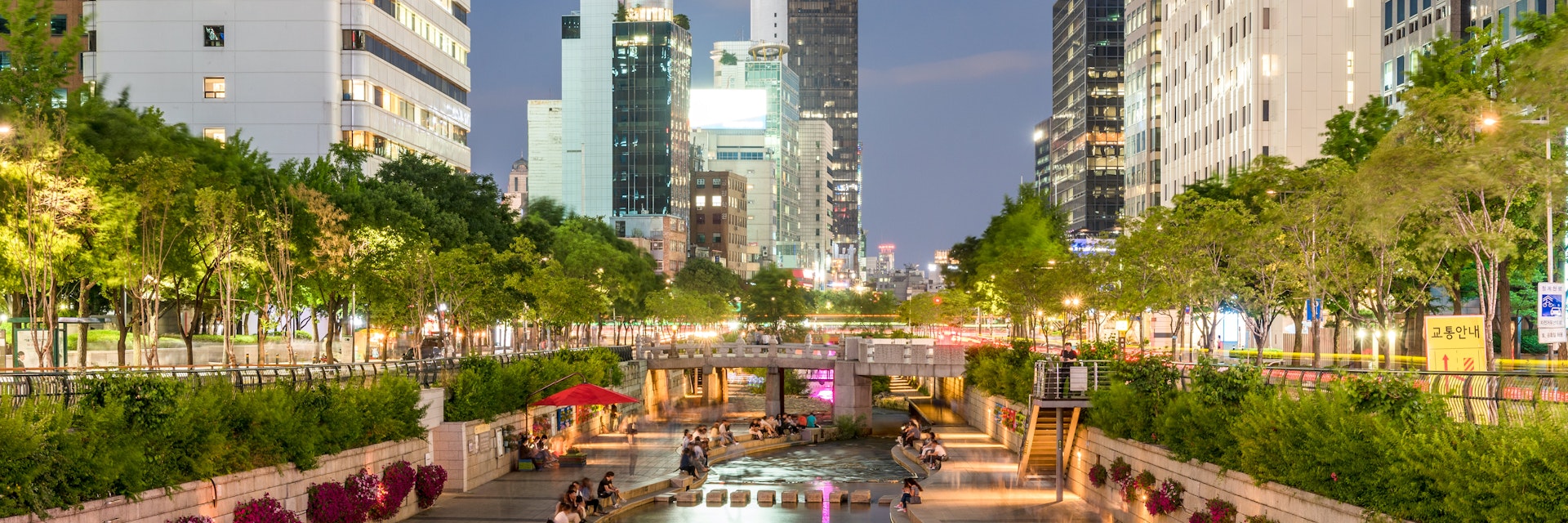
Getty Images
Fashion- and technology-forward but also deeply traditional, this dynamic city mashes up palaces, temples, cutting-edge design and mountain trails, all to a nonstop K-Pop beat.
Best Time to Visit
Best things to do, attractions, must-see attractions.
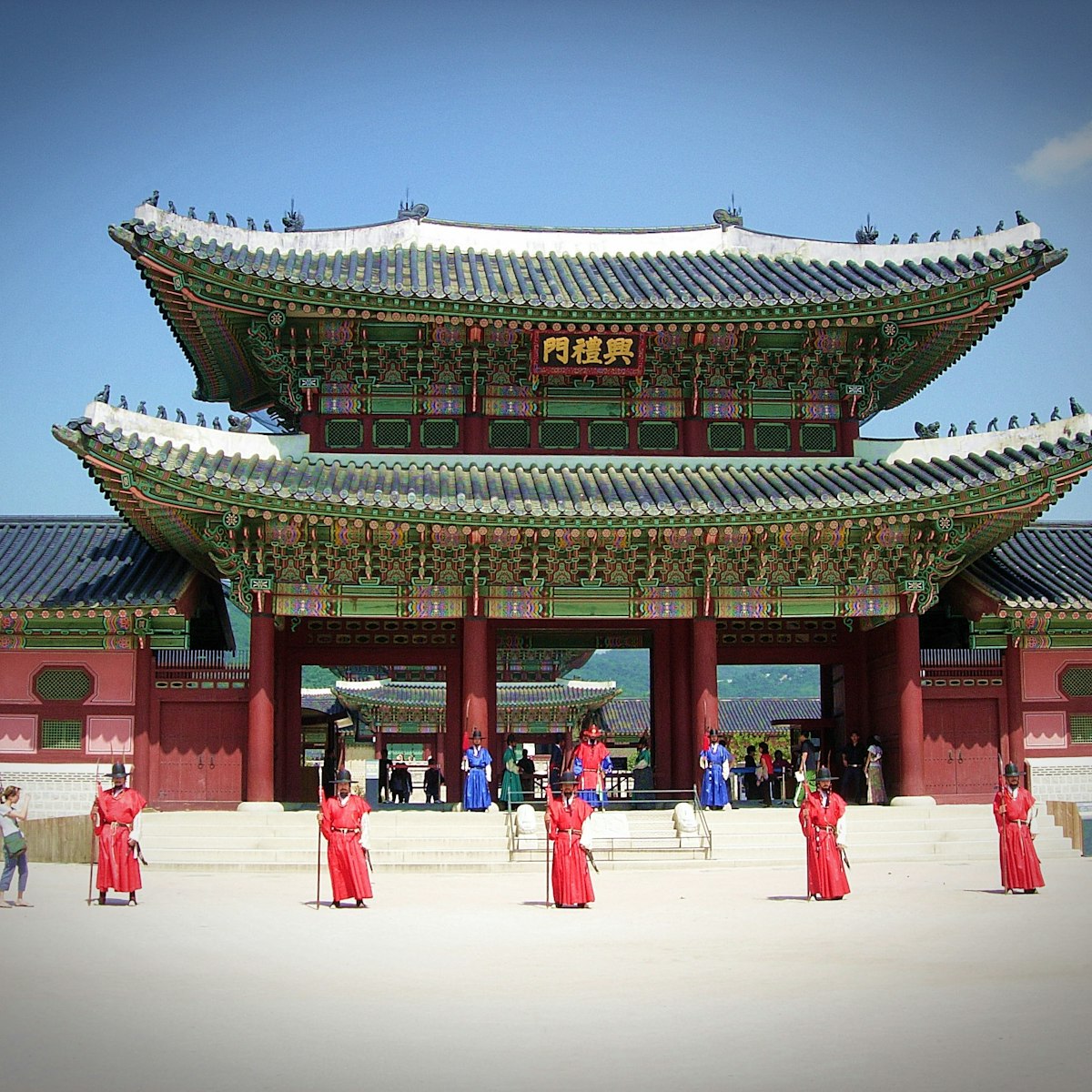
Gyeongbokgung
Gwanghwamun & Jongno-gu
Like a phoenix, Seoul’s premier palace has risen several times from the ashes of destruction. Hordes of tourists have replaced the thousands of government…
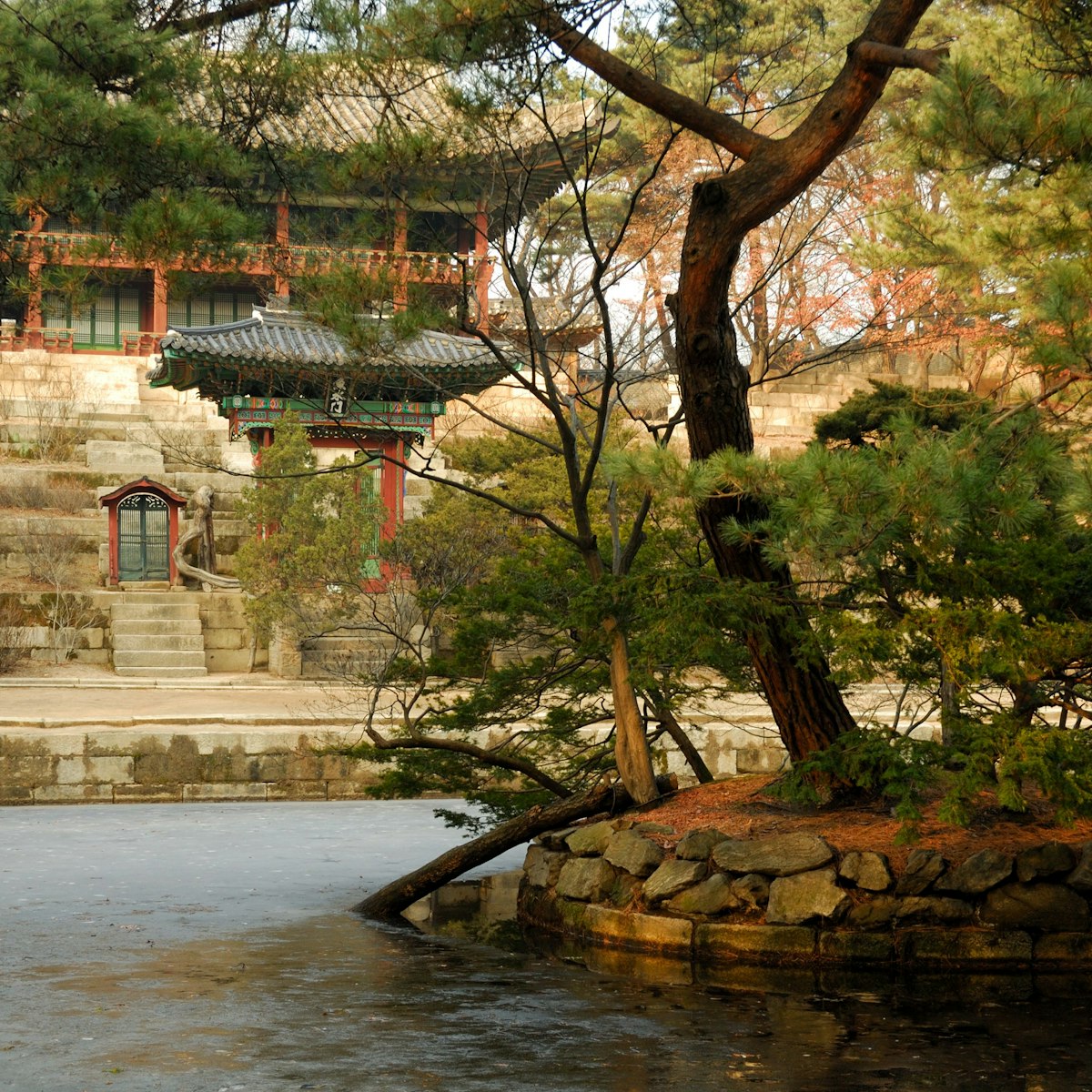
Changdeokgung
The World Heritage–listed Changdeokgung is the most beautiful of Seoul's five main palaces. You must join a one-hour guided tour to look around. English…

Leeum Samsung Museum of Art
Itaewon & Yongsan-gu
Amid the celebrity-owned apartments on the leafy southern slope of Namsan is Korea's premier art gallery. Beautifully designed and laid-out, it balances…
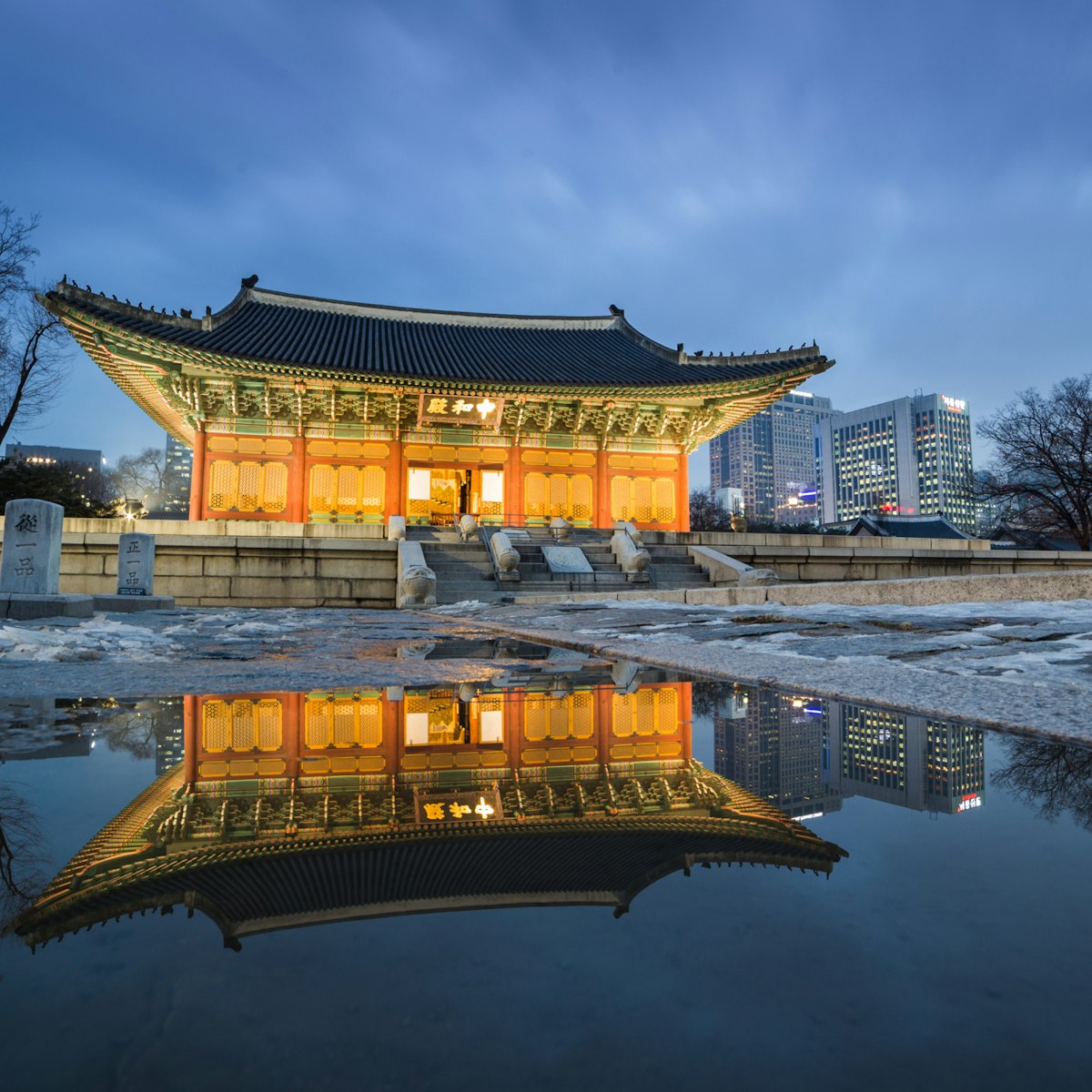
Myeong-dong & Jung-gu
One of Seoul's five grand palaces built during the Joseon dynasty, Deoksugung (meaning Palace of Virtuous Longevity) is the only one you can visit in the…
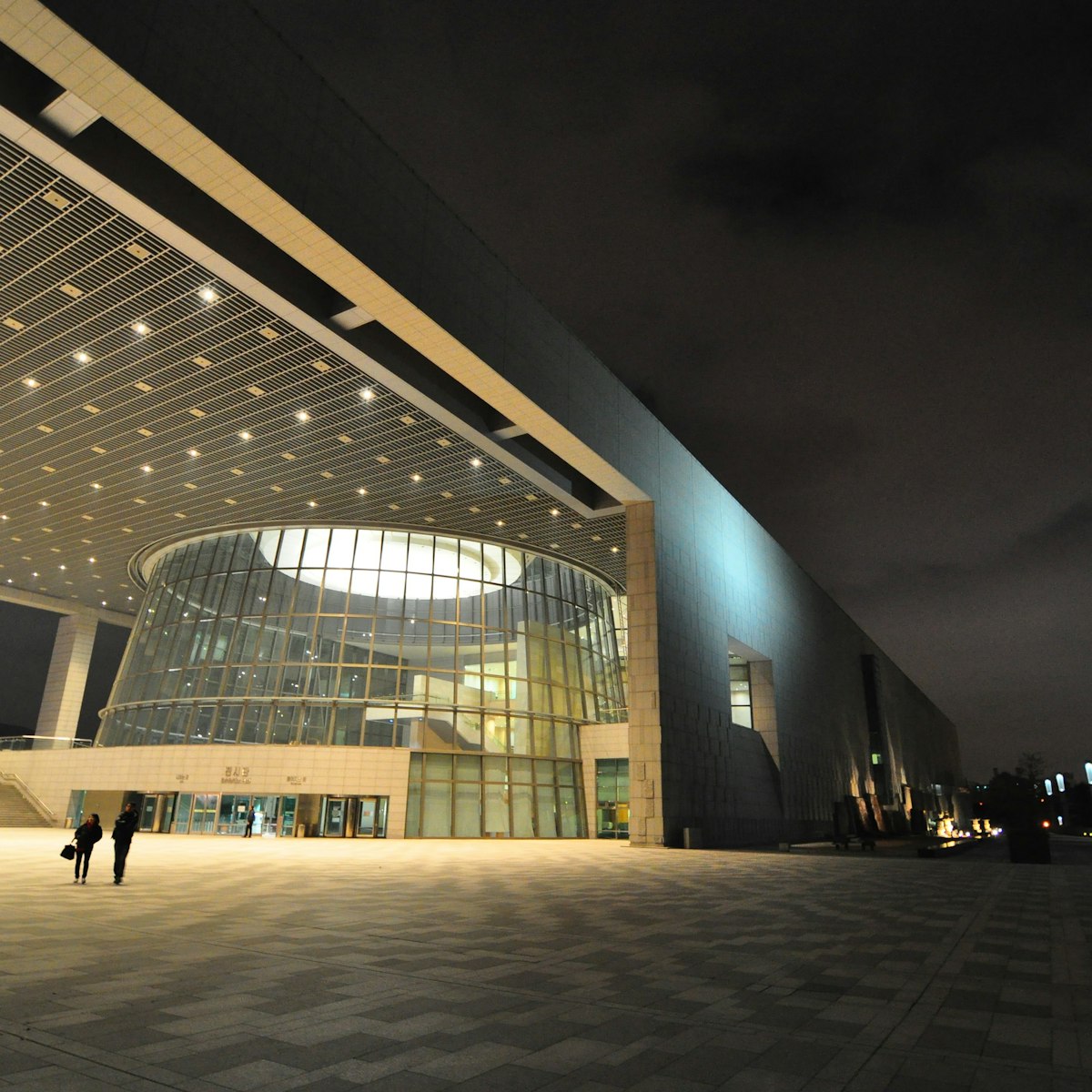
National Museum of Korea
This vast and imposing concrete slab of a museum takes visitors on a fascinating journey through Korea's past from prehistory all the way to the Korean…
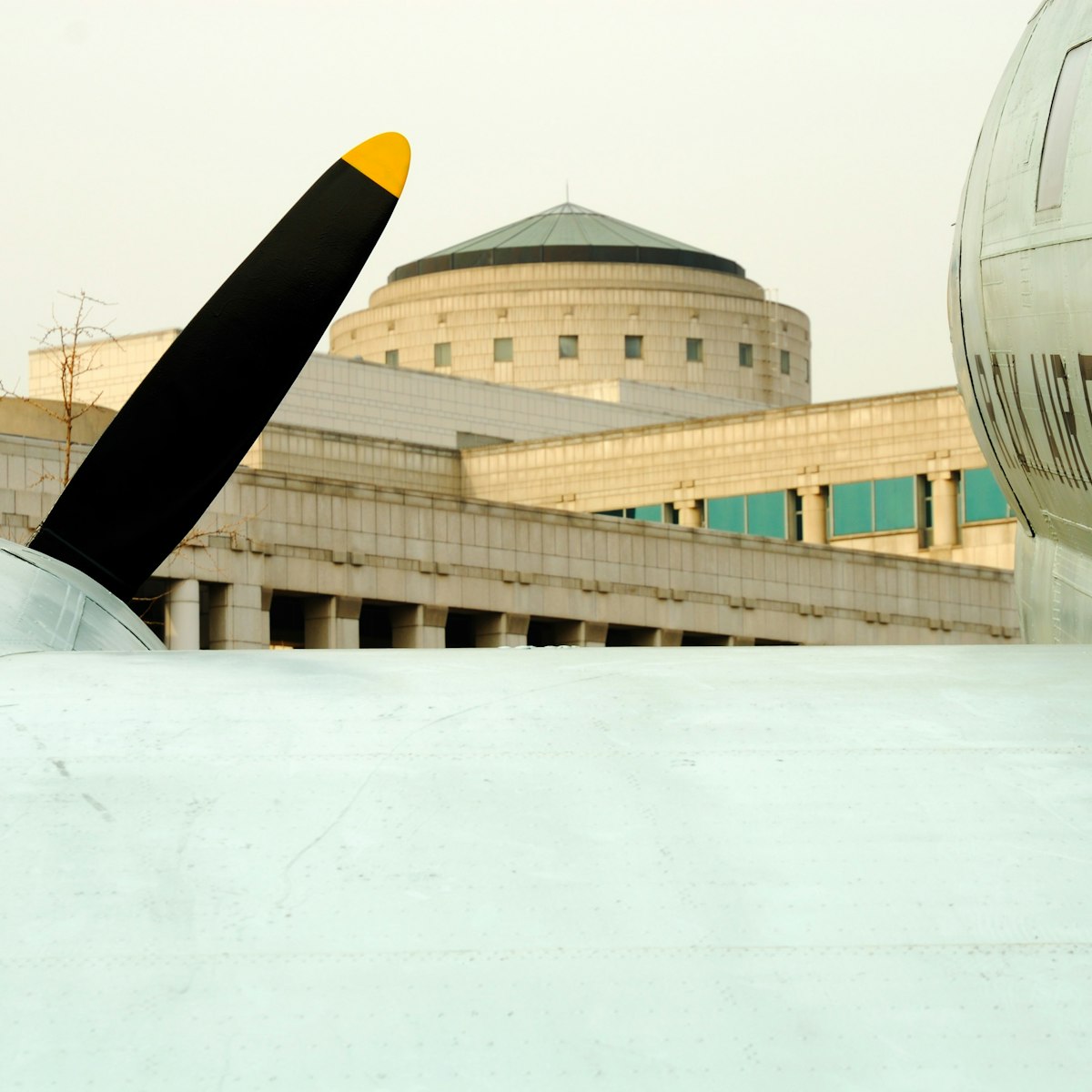
War Memorial of Korea
This huge museum documents the history of the Korean War (1950–53) using multimedia exhibits and black-and-white documentary footage, along with artefacts…
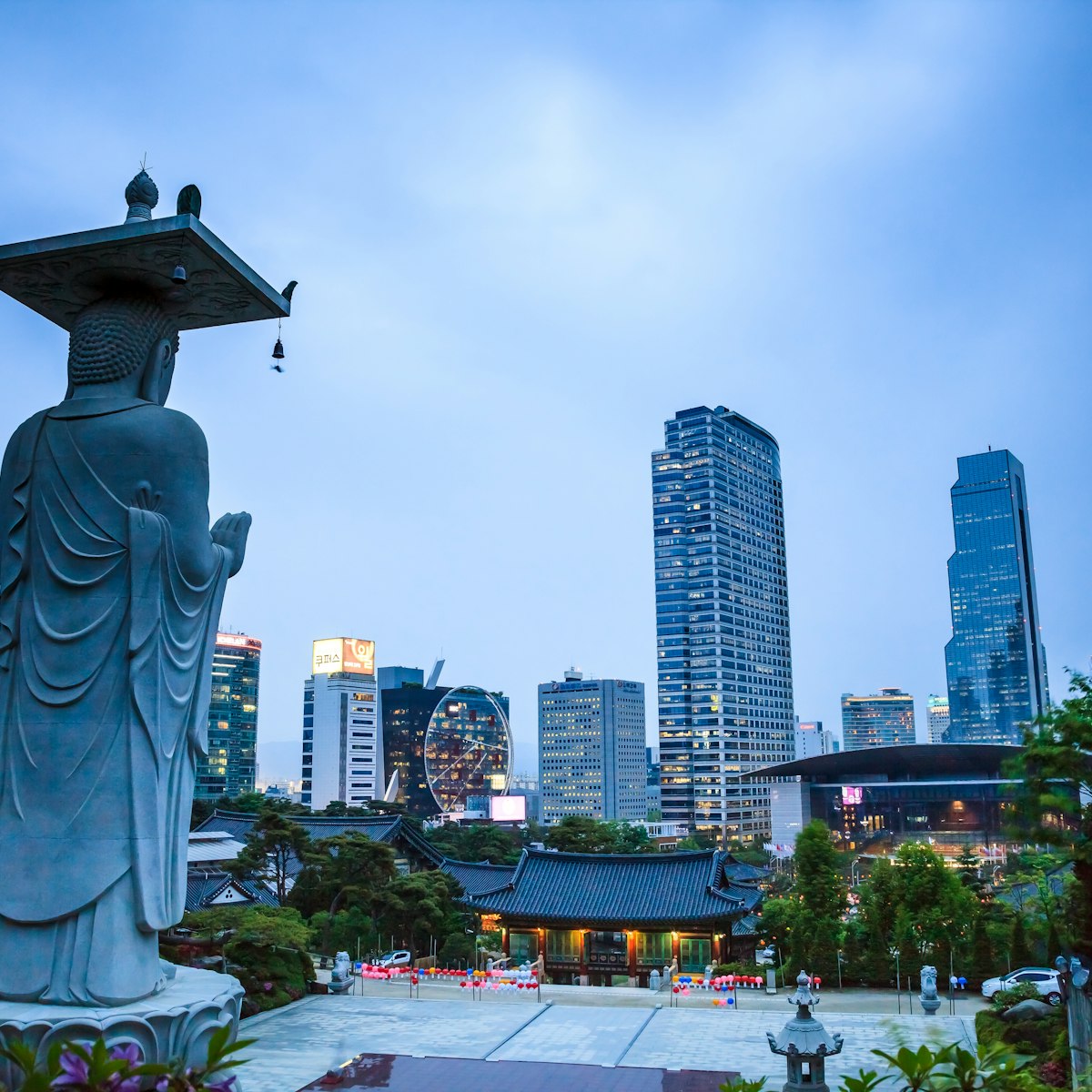
Gangnam & Southern Seoul
Located in the heart of ritzy Gangnam, the shrines and halls of the Buddhist temple Bongeun-sa, with its tree-filled hillside location, stand in direct…
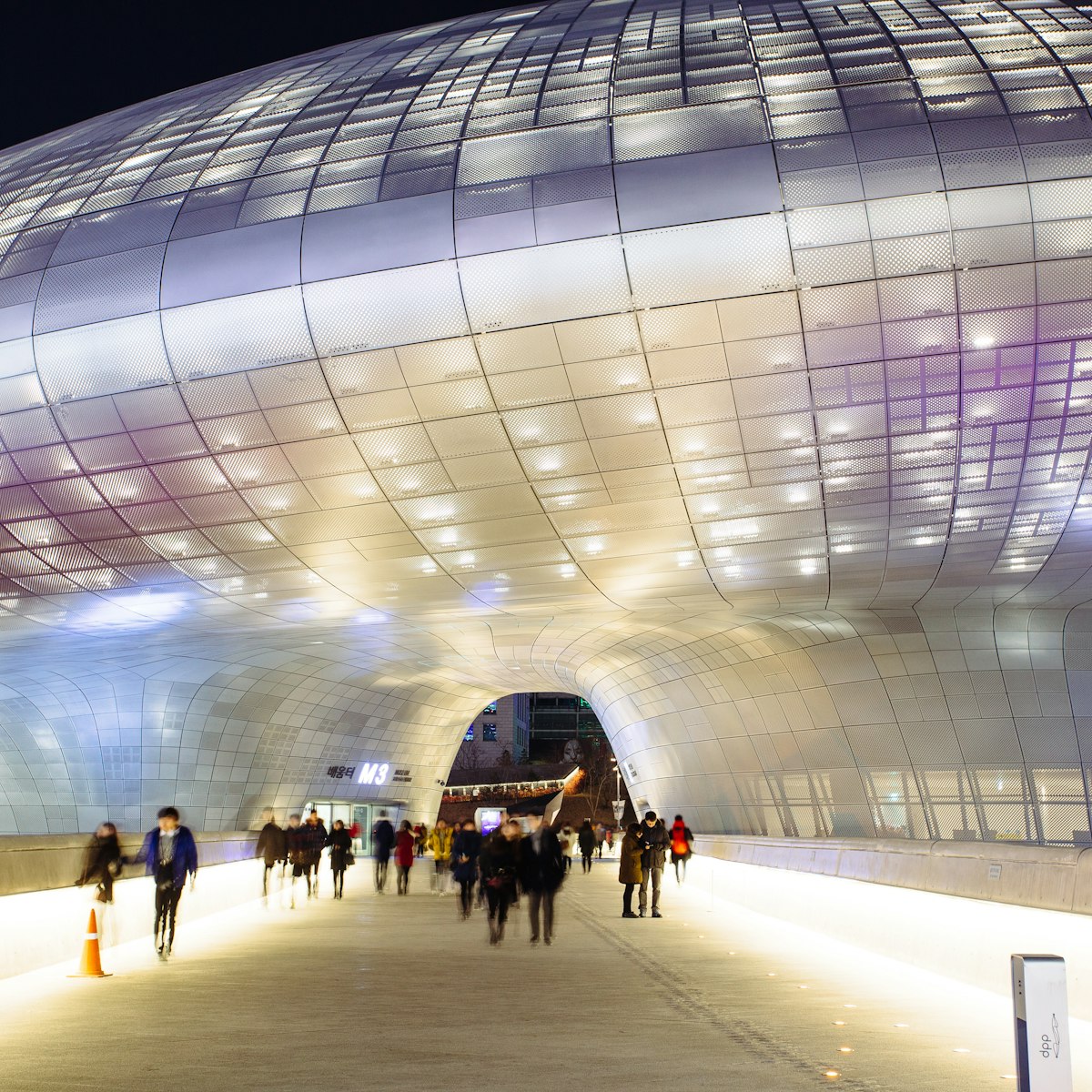
Dongdaemun Design Plaza & Park
Dongdaemun & Eastern Seoul
Designed by the late Zaha Hadid, this neofuturistic cultural complex was commissioned to replace the Dongdaemun Stadium, built during Japanese rule in the…
Top picks from our travel experts
13 of the best things to do in seoul, south korea.
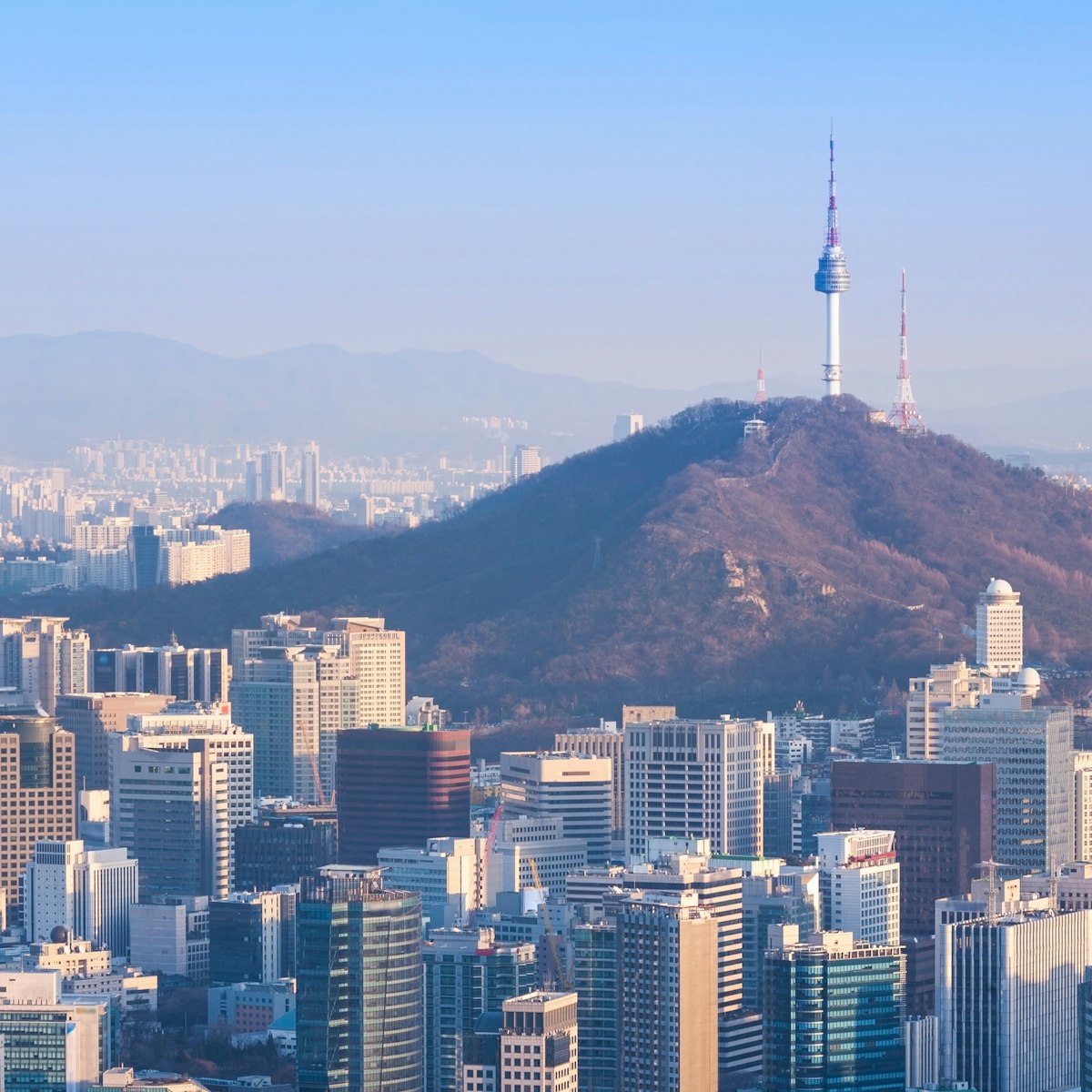
N Seoul Tower & Namsan
The iconic N Seoul tower (236m), atop the city’s guardian mountain Namsan, offers panoramic views of this immense metropolis from its observation deck…

National Folk Museum of Korea
Give yourself at least an hour to do justice to this excellent museum. It has three main exhibition halls, covering the history of the Korean people, the…

Cheong-gye-cheon
With its landscaped walkways, footbridges, waterfalls and a variety of public artworks, such as the enormous pink-and-blue shell entitled Spring in Cheong…

K-Star Road
Gangnam's 'Hallyuwood Walk of Fame' pays homage to K-Pop stars in the form of cutesy bear sculptures dedicated to K-Wave singers and actors.
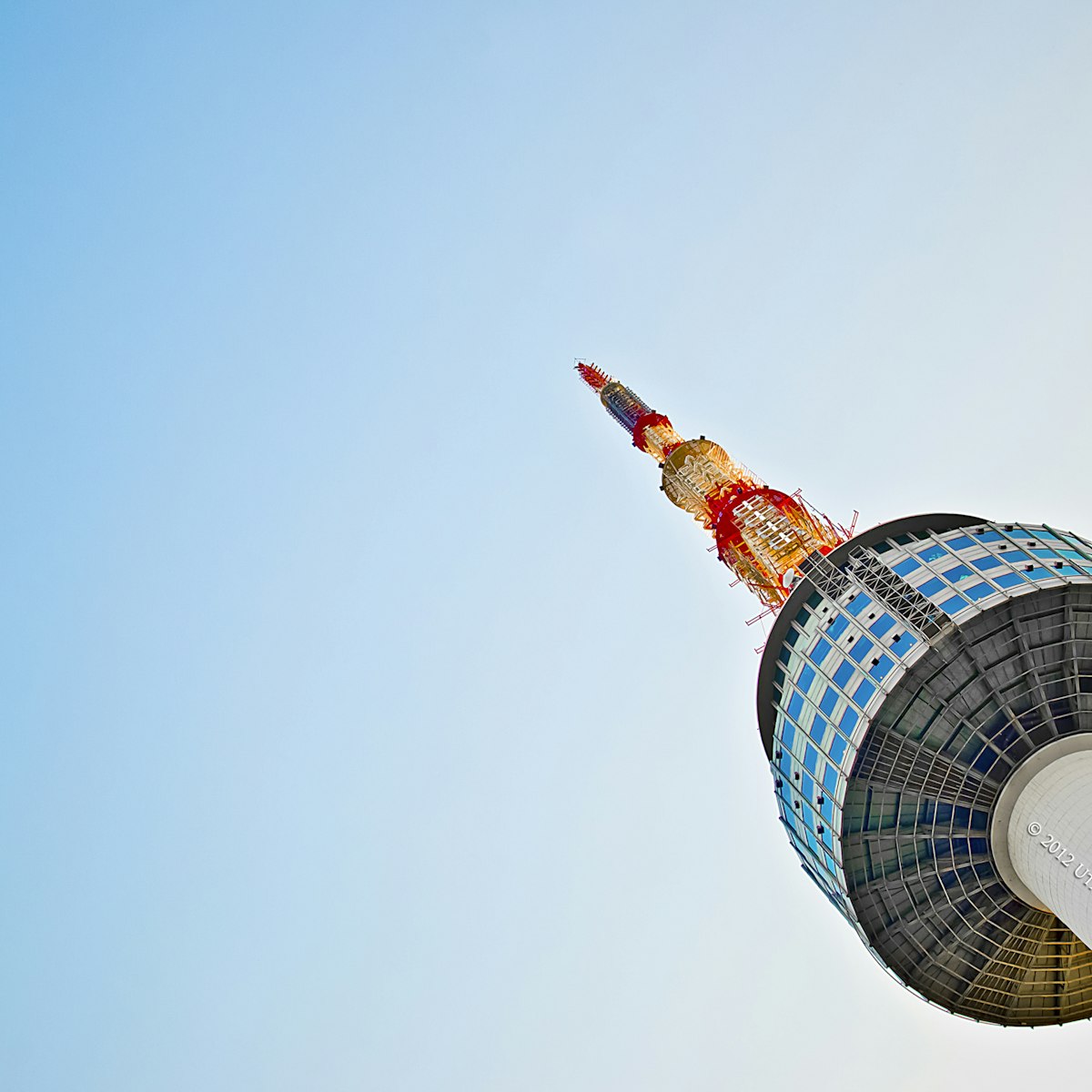
Namsan Park
Beloved by locals as a place for exercise, peaceful contemplation and hanging out with loved ones, Namsan was a sacred shamanistic spot when the Joseon…

Stylenanda Pink Hotel
One of the most popular brands for affordable, young women's casual fashion, Stylenanda's flagship store is especially notable for its pink design. The…

Gwanghwamun
The impressive main gate to Seoul's premier palace is flanked by stone carvings of haechi, mythical lion-like creatures traditionally set to protect the…

Bukchon Hanok Village
Meaning ‘North Village’, Bukchon, between Gyeongbokgung and Changdeokgung, is home to around 900 hanok, Seoul’s largest concentration of these traditional…
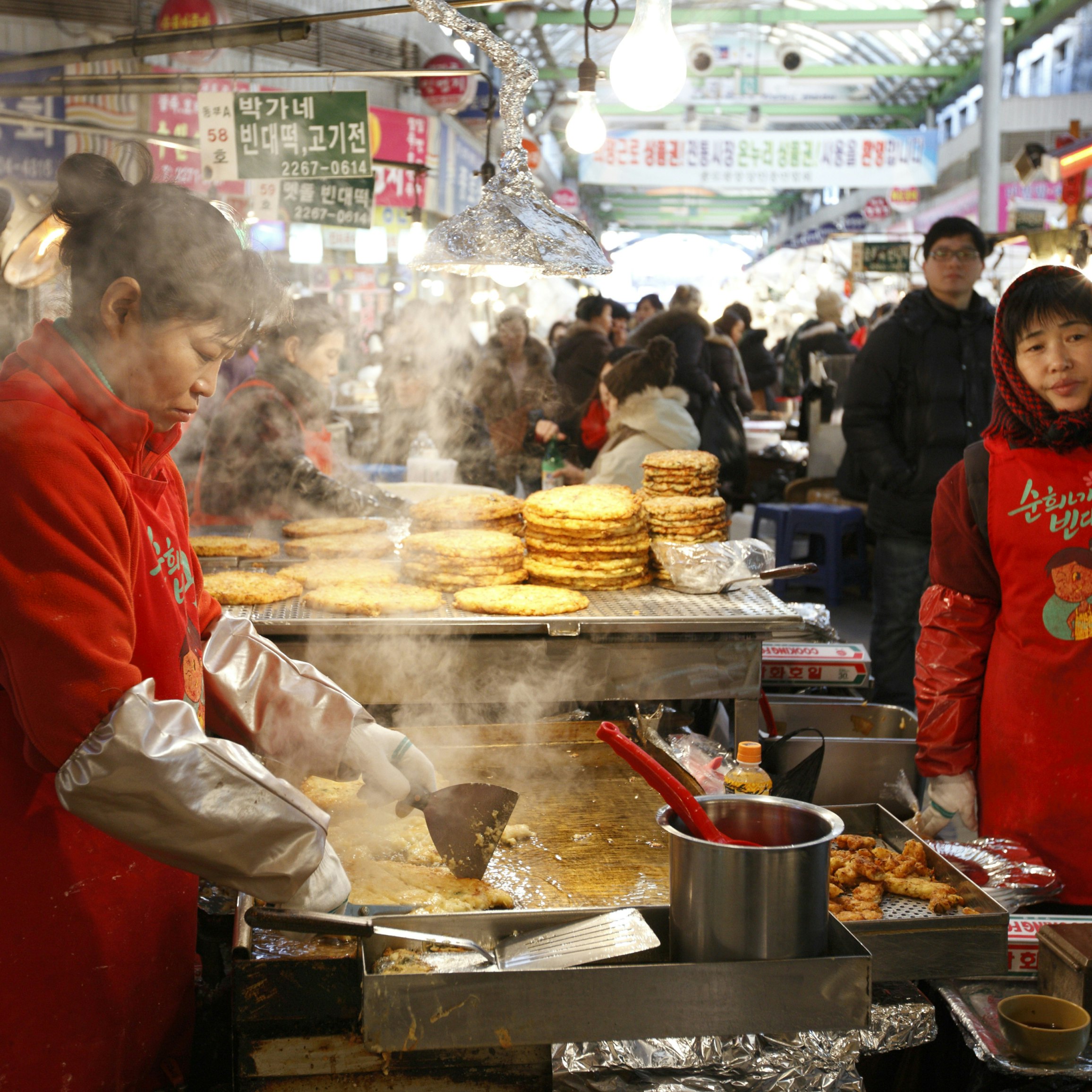
Gwangjang Market
This sprawling fabric market is now best known as Seoul’s busiest meokjagolmok (food alley), thanks to the 200 or so food stalls, kimchi and fresh-seafood…
Free your Seoul: 26 of the best no-cost things to do

Northern Seoul
This modern hillside temple is a pleasure to visit at any time of the year, but particularly in May when the grounds are festooned with lanterns for…

Seoul Museum of History
To gain an appreciation of the total transformation of Seoul down the centuries, visit this fascinating museum, which charts the city's history since the…

Cheong-gye-cheon Museum
To fully comprehend what a mammoth and expensive effort it was to resurrect Cheong-gye-cheon, Seoul’s long buried east–west stream, pay a visit to this…
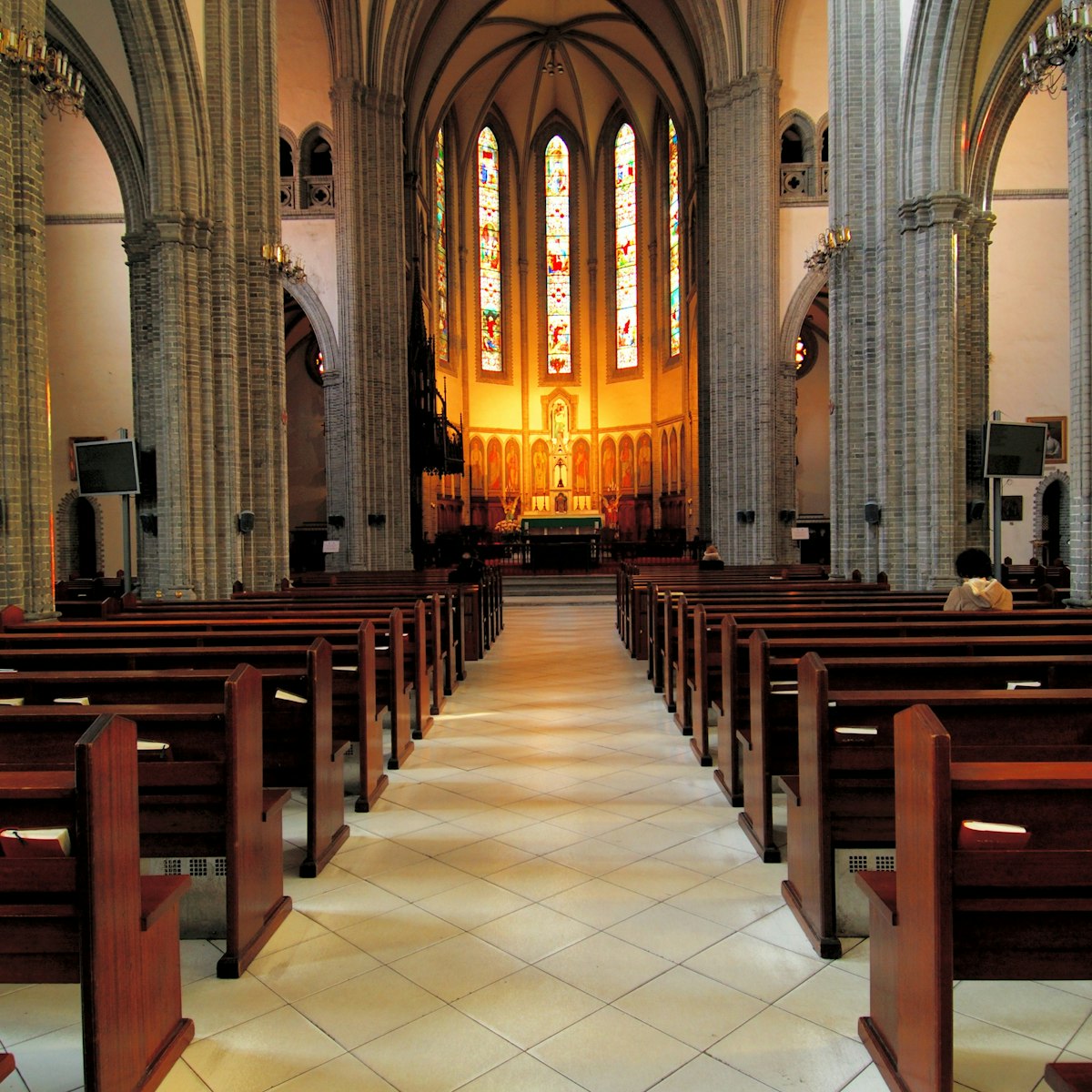
Myeong-dong Catholic Cathedral
Go inside this elegant, red- and grey-brick Gothic-style cathedral, consecrated in 1898, to admire the vaulted ceiling and stained-glass windows. The…

Gyeonghuigung
The Palace of Shining Celebration, completed in 1623, used to consist of a warren of courtyards, buildings, walls and gates spread over a large area. But…

Seoul Museum of Art
Hosting world-class exhibitions that are always worth a visit, SEMA has ultramodern, bright galleries inside the handsome brick-and-stone facade of the…

Ihwa Mural Village
High on the slopes of Naksan is one of the city's old daldongnae (literally ‘moon villages’) where refugees lived in shacks after the Korean War. Sixty…

Gyeongui Line Forest Park
This 6.3km park, named for the former Gyeongui Line (on which it was built), is a narrow, long green space that runs along the discarded railroad tracks…
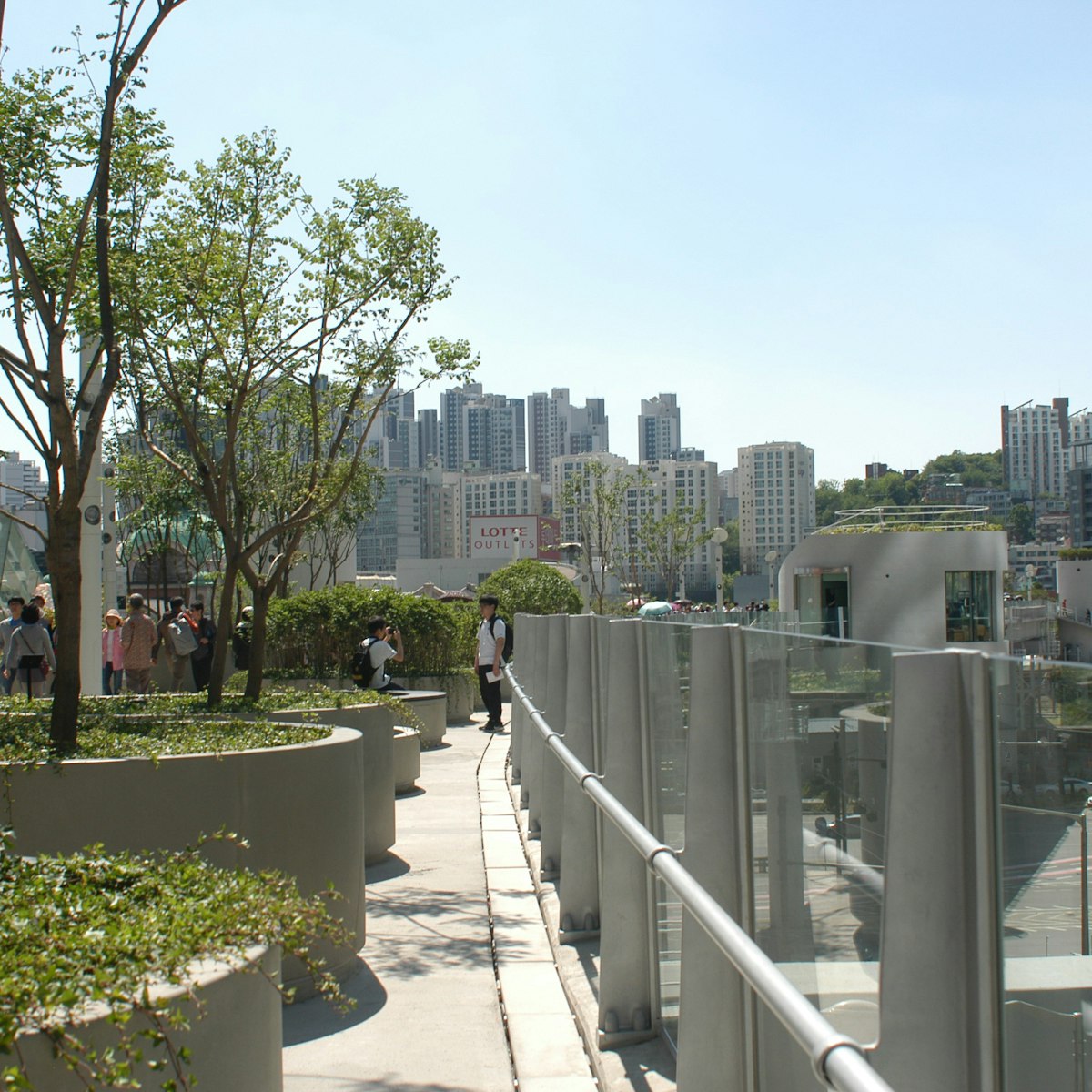
Seoullo 7017
This overpass-turned-park is a green space in the heart of the city. About 24,000 plants are grown here, including various types of flowers and trees, all…

Oil Tank Culture Park
Originally built after Korea’s first oil crisis in 1973 and reopened in 2017, this cultural centre is made up of five abandoned oil tanks. Planted in a…

One of Seoul's premier malls and the world's largest underground mall, the shiny COEX is a vast maze of department stores loaded with shops selling…

Banpo Bridge Rainbow Fountain
Covered with 10,000 lights, the Banpo Bridge Rainbow Fountain's coloured water rains down in messy arcs from the double-decker Banpo Bridge. More…

Naksan Park
The lofty slopes above Daehangno offer fantastic city views and contain an impressive section of the Seoul City Wall, which you can follow in either…
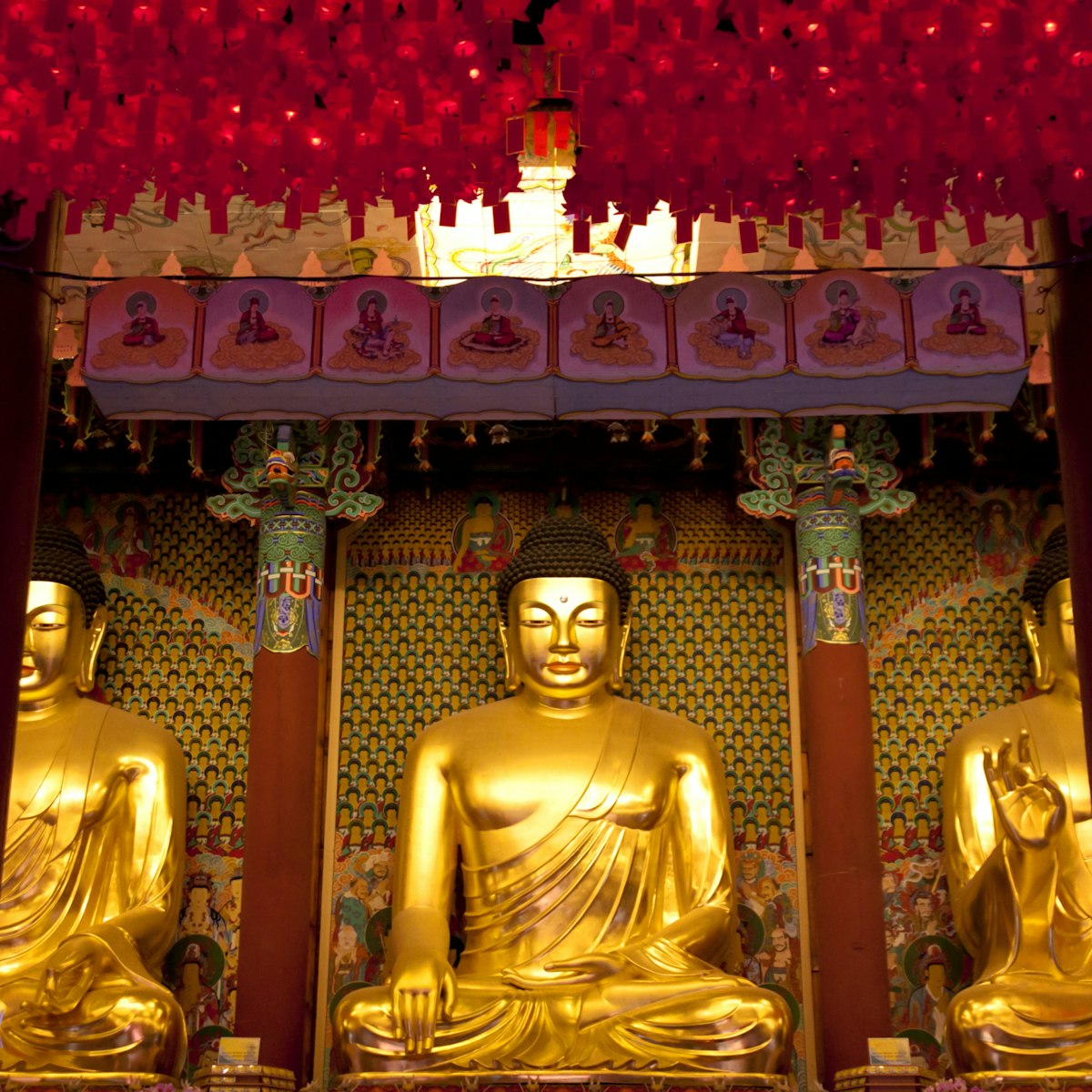
The focus of Jogye-sa is the grand wooden hall Daeungjeon, Seoul's largest Buddhist worship hall and the epicentre of Korean Buddhism. Completed in 1938,…

Jeoldusan Martyrs' Shrine
Jeoldusan means ‘Beheading Hill’ – this is where up to 2000 Korean Catholics were executed in 1866 following a royal decree, most thrown off the high…

Seonyudo Park
A former water-filtration plant on an island in the Han River has been transformed into this award-winning park. The old industrial buildings have been…
Planning Tools
Expert guidance to help you plan your trip.
Things to Know
If you’re planning a trip to Seoul, follow these solid tips to guide you through everything you need to know, from etiquette to transportation.
Best Neighborhoods
Get to know exciting Seoul by exploring the South Korean capital’s neighborhoods, from happening hot spots to quiet backstreets.
So over Seoul? Delve deeper into South Korea's history and culture with these day trips from the capital.
Money and Costs
Stretch your budget in Seoul with these top money-saving tips and a guide to daily costs.
Transportation
Make the most of Seoul's incredible public transport but don't miss out exploring on foot.
Free Things to Do
Visiting Seoul on a budget? These temples, parks and viewpoints offer the best of the South Korean capital – for free.
Latest stories from Seoul
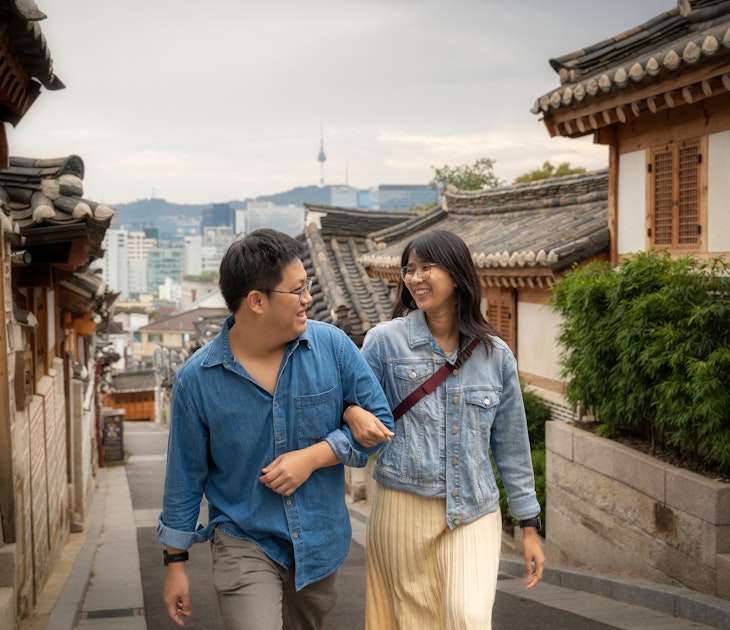
Budget Travel
Feb 17, 2024 • 6 min read
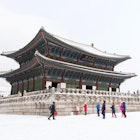
Feb 11, 2024 • 3 min read
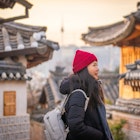
Feb 11, 2024 • 6 min read

Feb 10, 2024 • 10 min read
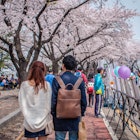
Feb 10, 2024 • 8 min read
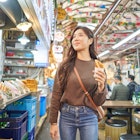
Feb 4, 2024 • 8 min read
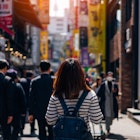
Feb 3, 2024 • 6 min read
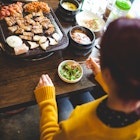
Aug 31, 2022 • 12 min read
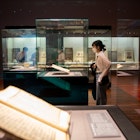
Jun 22, 2022 • 7 min read
in partnership with getyourguide
Book popular activities in Seoul
Purchase our award-winning guidebooks.
Get to the heart of Seoul with one of our in-depth, award-winning guidebooks, covering maps, itineraries, and expert guidance.
Seoul and beyond
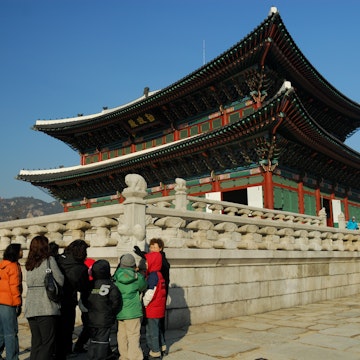
- Things to Do
- Restaurants
- Vacation Rentals
- Travel Stories
- Rental Cars
- Add a Place
- Travel Forum
- Travelers' Choice
- Help Center
Beautiful Busan with amazing tour guide... - Ktourstory
- Asia
- South Korea
- Seoul
- Seoul - Things to Do
Beautiful Busan with amazing tour guide Roy
The tour truly made Busan beautiful! Sky capsule provided lovely views of the ocean. Oryukdo skywalk is so picturesque and during April it was bursting with Azelea. Lunch and coffee at a village overlooking the ocean made it taste even better. Gamcheon village was charming! Above all, it was the knowledgeable, friendly tour guide Roy who made this tour memorable!
Well organized tour, everything was fine, English speaking guide Victoria was great! Highly recommend this trip whether you're traveling solo or as a couple/family.
The tour guide was very nice and the places we went were beautiful! The guide was very patient and told us some interesting facts we didn’t know yet.
The highlights were the sunset by the Yugyo bridge and the evening-view of the Donggung palace /Wolji pond, which explained why we left rather late in the morning from the pick- up station. Our tour guide Ji Won was really engaged, which made the bus-ride and tour in general very pleasant . If you visited the Hanok Village in Seoul, you will really like the well-preserved Hanok houses, in the countryside ,from the Joseon period, the Yandong Village is a neighborhood that has both Nobles and Commoners houses, all currently inhabited. we had the opportunity to enter the garden of a 460 years old house, the owner allowed us to look around,

We went 2md week of April, and Spring is on full swing. Beautiful sceneries and the tour gave us plenty of time to enjoy the 2 places we visited. Highly recommend to do this tour.

Five star rating for Tino, the tour guide Chinese & Korean speaking guy. Kept us entertained. Good job! Took good care of the group.
These RI chefs have tasted the world. How you can join them on a culinary tour.

Food and travel are an intoxicating combination. Imagine how tempting trips planned with local food stars could be on destinations ranging from South Korea to Portugal.
Club Adventures, AAA’s small-group adventure tour operator, has teamed up with Providence and Rhode Island chefs, restaurateurs, and beverage experts to offer curated food tours starting in August and running into next year. The concept is to see the world through a local lens with a guide who knows all the best places to eat and drink.
Of the 13 food and drink trips, some are close to home including New York City and Austin, Texas. Others are to islands including the Azores and Sicily. Mexico, Spain and Germany during Oktoberfest are other destinations. One trip offers a gluten-free and vegan adventure in Italy.
The trips will have an average size of 14 travelers. They range in time from 4 days to 10 days with prices from $1,999 to $7,979.
Bethany Hodge's 15 years in the travel industry have included designing and operating culturally immersive small group trips. Now, as head of product for Club Adventures, she is launching the new tours.
But it was a conversation with Bethany Caliaro, owner/manager of both Oberlin and Gift Horse in Providence , that planted the seed for the program. Hodge was headed to Mexico with her husband Brian and Caliaro had just returned from a trip there. She shared her list of restaurants, bars and specific dishes for the couple to try.
"I’ve been watching the food and hospitality industry in Rhode Island become a national leader in innovation, community, diversity and sustainability – all values that I use when designing Club Adventures tours," she said.
"Every one of her suggestions elevated our travel experience, and I realized that the insight and guidance of a food professional could really turn a fun trip into a memorable adventure," said Hodge.
With consumer interest in culinary travel on the rise, Hodge knew tours that showcased these mutual values could be a hit. She first pitched the idea to Caliaro and Jen Davis, who manages the beverage program at The Eddy and Durk's Bar-B-Q , both in Providence. They connected Hodge to more of the local culinary community.
"Every single establishment that I spoke with was in," said Hodge.
Each chef/bartender/business owner has been involved in curating the itinerary, leading to an exclusive experience that can’t be found anywhere else in the market.
"While chef-led tours are certainly being done in the travel space, I believe this is a first to ever showcase a city’s leaders in the culinary space all at once as a unified portfolio," Hodge said.
"It really speaks to the community and creativity of Providence," she said.
She hopes to create even more trips for 2025 with more leaders in the Rhode Island hospitality scene, she said.
The trips and guides
The cultural exploration and food adventures will be led by an impressive group including James Beard nominated chef Ben Sukle of Oberlin and Gift Horse. He will lead a September tour to Northern Italy, Slovenia, and Croatia.
“I am incredibly excited to join everyone and experience Trieste and its surrounding cities and environs," said Sukle. "All of the nuances of the lifestyles and culture there are behind how I cook and why I love to cook."
Caliaro will lead a fish-to-fork dining adventure in Sicily. Led by Oberlin chef Chris Pfail, the art of making kimchi is on the menu for a South Korea adventure.
Jen Davis leads two trips, one to Austin, Texas, to explore the barbecue and distillery scene and one to New York City to enjoy the city's cocktail scene.
Spain will be part of a Basque Adventure led by The Eddy's Luke Mersfelder and Britt Simons.
Mexico City and Oaxaca will be explored in a trip led by Joaquin Meza of Dolores . Germany’s Oktoberfest will be celebrated with Brendan Kennedy of Proclamation Ale in Warwick.
Robin Dionne & BJ Mansuetti who operate the RI VegFest and GFree Fests will lead the Gluten-Free and Vegan tour of Italy.
Pizza Marvin's Robert Andreozzi is another James Beard nominated chef and he will be on the Portugal & Galicia Food Adventure.
Only one guide is from outside the Rhode Island culinary restaurant world but she is no stranger to locals. Maria Lawton is the host and guide of "Maria's Portuguese Table" which is presented by WSBE Rhode Island PBS. She will lead an Azores Food Adventure and Portugal Wine & Food Adventure.
Visit clubadventures.com/food-tours/ for more information.
- Share full article
For more audio journalism and storytelling, download New York Times Audio , a new iOS app available for news subscribers.

- May 3, 2024 • 25:33 The Protesters and the President
- May 2, 2024 • 29:13 Biden Loosens Up on Weed
- May 1, 2024 • 35:16 The New Abortion Fight Before the Supreme Court
- April 30, 2024 • 27:40 The Secret Push That Could Ban TikTok
- April 29, 2024 • 47:53 Trump 2.0: What a Second Trump Presidency Would Bring
- April 26, 2024 • 21:50 Harvey Weinstein Conviction Thrown Out
- April 25, 2024 • 40:33 The Crackdown on Student Protesters
- April 24, 2024 • 32:18 Is $60 Billion Enough to Save Ukraine?
- April 23, 2024 • 30:30 A Salacious Conspiracy or Just 34 Pieces of Paper?
- April 22, 2024 • 24:30 The Evolving Danger of the New Bird Flu
- April 19, 2024 • 30:42 The Supreme Court Takes Up Homelessness
- April 18, 2024 • 30:07 The Opening Days of Trump’s First Criminal Trial
The Protesters and the President
Over the past week, thousands of students protesting the war in gaza have been arrested..
Hosted by Michael Barbaro
Featuring Jonathan Wolfe and Peter Baker
Produced by Diana Nguyen , Luke Vander Ploeg , Alexandra Leigh Young , Nina Feldman and Carlos Prieto
Edited by Lisa Chow and Michael Benoist
Original music by Dan Powell and Marion Lozano
Engineered by Chris Wood
Listen and follow The Daily Apple Podcasts | Spotify | Amazon Music | YouTube
Warning: this episode contains strong language.
Over the past week, students at dozens of universities held demonstrations, set up encampments and, at times, seized academic buildings. In response, administrators at many of those colleges decided to crack down and called in the local police to detain and arrest demonstrators.
As of Thursday, the police had arrested 2,000 people across more than 40 campuses, a situation so startling that President Biden could no longer ignore it.
Jonathan Wolfe, who has been covering the student protests for The Times, and Peter Baker, the chief White House correspondent, discuss the history-making week.
On today’s episode

Jonathan Wolfe , a senior staff editor on the newsletters team at The New York Times.

Peter Baker , the chief White House correspondent for The New York Times covering President Biden and his administration.

Background reading
As crews cleared the remnants of an encampment at U.C.L.A., students and faculty members wondered how the university could have handled protests over the war in Gaza so badly .
Biden denounced violence on campus , breaking his silence after a rash of arrests.
There are a lot of ways to listen to The Daily. Here’s how.
We aim to make transcripts available the next workday after an episode’s publication. You can find them at the top of the page.
The Daily is made by Rachel Quester, Lynsea Garrison, Clare Toeniskoetter, Paige Cowett, Michael Simon Johnson, Brad Fisher, Chris Wood, Jessica Cheung, Stella Tan, Alexandra Leigh Young, Lisa Chow, Eric Krupke, Marc Georges, Luke Vander Ploeg, M.J. Davis Lin, Dan Powell, Sydney Harper, Mike Benoist, Liz O. Baylen, Asthaa Chaturvedi, Rachelle Bonja, Diana Nguyen, Marion Lozano, Corey Schreppel, Rob Szypko, Elisheba Ittoop, Mooj Zadie, Patricia Willens, Rowan Niemisto, Jody Becker, Rikki Novetsky, John Ketchum, Nina Feldman, Will Reid, Carlos Prieto, Ben Calhoun, Susan Lee, Lexie Diao, Mary Wilson, Alex Stern, Dan Farrell, Sophia Lanman, Shannon Lin, Diane Wong, Devon Taylor, Alyssa Moxley, Summer Thomad, Olivia Natt, Daniel Ramirez and Brendan Klinkenberg.
Our theme music is by Jim Brunberg and Ben Landsverk of Wonderly. Special thanks to Sam Dolnick, Paula Szuchman, Lisa Tobin, Larissa Anderson, Julia Simon, Sofia Milan, Mahima Chablani, Elizabeth Davis-Moorer, Jeffrey Miranda, Renan Borelli, Maddy Masiello, Isabella Anderson and Nina Lassam.
Jonathan Wolfe is a senior staff editor on the newsletters team at The Times. More about Jonathan Wolfe
Peter Baker is the chief White House correspondent for The Times. He has covered the last five presidents and sometimes writes analytical pieces that place presidents and their administrations in a larger context and historical framework. More about Peter Baker
Luke Vander Ploeg is a senior producer on “The Daily” and a reporter for the National Desk covering the Midwest. More about Luke Vander Ploeg
Advertisement

COMMENTS
The Soulful South Korea Tour was excellent. The tour guide Sam was excellent. He always provided background and information at all the sites we visited. This tour hits 4 out of the five provinces in S. Korea. I feel like we got see the majority of the country. There was a fair amount of walking but that helped balance all the wonderful food we ate.
Korean Seasons Guide. The best time to visit South Korea is during the warm spring or fall seasons. The weather is mild and clear, there's a range of festivals and seasonal activities to enjoy, and you can travel to Korea comfortably. The best months to visit are April, May, September, and October.
South Korea Tours & Trips. Marvel at ancient temples beside skyscrapers in Busan, get to know the locals in their thatched houses at Andong or discover your inner K-pop fan in Seoul. From the serene landscapes of Jeju Island to the amazing Gyeongju, a trip to South Korea is filled with colour and contrast. ... Our tour guide Jay made sure we ...
South Korea has emerged from history as a dynamic holiday destination full of spirit and surprises. ... markets brimming with divine handicrafts, and some of the most underrated cuisine in the world - book your tour of South Korea today. My Wishlist My Booking 1 800 970 7299 ... guided by our amazing guide Michelle Review submitted 14 Apr 2024 ...
Cost To Travel In South Korea In 2024. This part of the South Korea travel guide will help you understand some of your expected costs to travel to Korea. The costs to travel to Korea include flights, accommodation, food, drinks, transportation, activities, sim cards, visas, souvenirs, travel insurance, and lots more.
South Korea's rich cultural tapestry and fast-paced way of life makes this Asian nation an exciting place for travelers to explore. Take a private South Korea tour with a local guide and see a fascinating array of the country's popular and lesser-known attractions. Seoul is Korea's 600 year old capital.
South Korea. Asia. From Seoul's glittering nightlife to Seoraksan National Park's vertiginous hikes, South Korea offers the traveler a dazzling range of experiences, beautiful landscapes and 5000 years of culture and history.
The Taegeukki. Winter Sonata. Tailor-made travel itineraries for South Korea, created by local experts. 14 days / from3800 USD. Culture & Island life. Experience the highlights of Korea with a private guide by your side. Fascinating Seoul with a day trip to the DMZ, followed by days in Gyeongju and Busan.
Learn what to expect when you visit South Korea for the first time, from visa requirements to transportation, food, and culture. Find out the best time to visit, the best places to stay, and the best apps to use for your trip.
Plan a Trip to South Korea with Local Tour Guides, and Seoul, Busan and More. 5.00 / 5. View all . 50 reviews. Find your perfect tour guide at GoWithGuide. Relax and cherish unforgettable tours with loved ones. Create personalized tours for a truly memorable trip! Local Guides
How Much to Budget in South Korea Per Day. Budget traveler: If you are on a tight budget, watch your spending closely, $30 - $40 could be a sufficient budget. Mid-range traveler: If you want to have a few splurges and stay in nicer accommodation, plan to budget $50 - $100 per day. Dorm bed = $18-$30.
Staying in a mix of great 3 - 4 star hotels and escorted by expert guides, you will take in the best of Seoul on a guided tour, as well as the Demilitarized Zone, Busan, Gyeongju and Jeju Island. We offer a family tour in South Korea too, designed for parents with children aged 5 and over! Our Essentials tour in Korea is designed to keep costs ...
Patrick Foto/Getty Images. Most foreign visitors to South Korea will arrive at Incheon International Airport just west of Seoul, making the capital a perfect starting point on your itinerary. Take either a limousine bus or the AREX Airport Express train to downtown Seoul to get your trip started. Once you've stashed your bags at one of the city's numerous hotels, motels, or guesthouses, it ...
However for the price this was an extremely good value tour and I enjoyed it very much and would have no hesitation in recommending it. Ancient South Korea - 7 Days. Clare Elliott 24 Jan, 2024. 5. Ultimate Korea: Seoul, Gyeongju & Busan (Private Customize) Melissa Griffin 27 Feb, 2024.
Learn how to plan your trip to South Korea, a small but diverse country with vibrant culture, history, nature, and food. Find out the best things to see and do, typical costs, money-saving tips, and more.
12-day South Korea Tour. South Korea. 12 Days. Seoul to Jeju Island. Explore South Korea's unique history, natural beauty, rich culture and mouth-watering cuisine with our 12-day adventure. From $1,861 $1,582. View Details. UP TO 10% OFF SELECT DATES.
Excellent - 315 reviews for South Korea tours. The Korea aspect of the tour was incredible, I would rate it 5 stars- CheongAn and Julian were amazing tour guides helping us all fall in love with the country. Japan felt very disorganised and fell flat. Average - by Mahi. Was excellent tour guide was the best.
Tour in Seoul, South Korea: "Young was a terrific guide. He is knowledgeable, personable and very diligent. His English is excellent and he had answ,..." Bernie Gropper - Apr, 2024 Tour in Seoul, South Korea: "This was a great tour. Bill is knowledgeable and fun.
Seoul Itinerary Guide. DAY 1: Explore and enjoy Korean culture in a hanbok! DAY 2: "Discover" more of Seoul! DAY 3: A chill kind of day. DAY 4: All About JSA. DAY 5: Day tour to Gapyeong County. Explore other TOP destinations in South Korea.
Our team of travel experts and guides will design a tailored itinerary just for you. Enjoy your trip with peace of mind knowing everything is taken care of. A land of mist-topped mountains and sparkling beaches, pristine skyscrapers and the sprawling megalopolis of Seoul, South Korea is a bucket lister for sure.
6 years experienced freelance English walking tour guide in South Korea I am planning and leading customized, package, and incentive tours (on old/new Korea, K-pop, shopping, pretty towns, nature, B2B/B2C meetings, etc). I also guided Korean travelers in 20+ countries in Europe, Africa, Philippine, and Canada for 3 years while managing event ...
Seoul is better with a local and a private tour guide in Seoul is the perfect opportunity to find all the hidden gems of the city. Make incredible memories you will always cherish by discovering Seoul the best way. The local way. A Seoul tour guide offers tremendous flexibility for your trip based on the exact amount of time you have.
Seoul. South Korea, Asia. Fashion- and technology-forward but also deeply traditional, this dynamic city mashes up palaces, temples, cutting-edge design and mountain trails, all to a nonstop K-Pop beat.
It offers a 12-night/13-day "Best of South Korea" tour that highlights Seoul, Busan and many points in between, including the DMZ, Seoraksan National Park, Gyeongju, Andong and a stay in a ...
Ktourstory: Beautiful Busan with amazing tour guide Roy - See 4,009 traveler reviews, 549 candid photos, and great deals for Seoul, South Korea, at Tripadvisor.
Chan Brothers Travel. 8D6N Korea with Scenic Wolchulsan Hike. Jul to Nov 2024. From S$2,188. Address: 150 South Bridge Road, Fook Hai Building, Singapore 058727. Tel: 6438 8880. Email: [email protected]. 8D6N Yummy Yummy Korea. May to Nov 2024.
If you have concerns,please report at: Feedback and help - TikTok. 14.4K Likes, 101 Comments. TikTok video from pris (@pristyq): "Discover the enchanting beauty and cultural wonders of South Korea with our ultimate travel guide. Plan your unforgettable trip now! #sgtravel #koreatravel".
Imagine how tempting trips planned with local food stars could be on destinations ranging from South Korea to Portugal. Club Adventures, AAA's small-group adventure tour operator, has teamed up ...
With Japanese ramen growing in popularity around the world, overseas visitors to Tokyo join a tour to sample regional versions of the wheat noodle dish and learn about customs and ramen's ...
Warning: this episode contains strong language. Over the past week, students at dozens of universities held demonstrations, set up encampments and, at times, seized academic buildings.